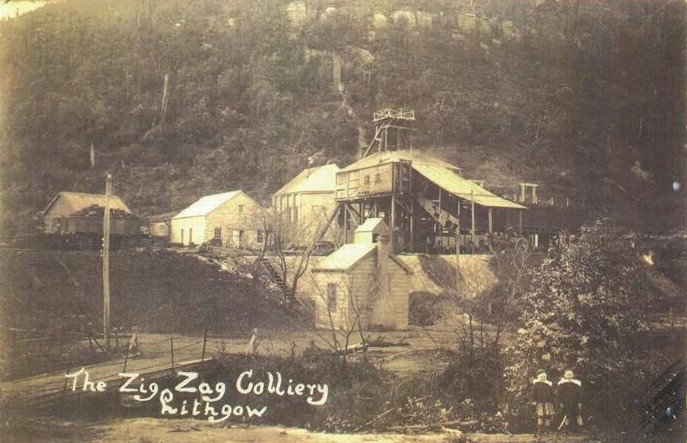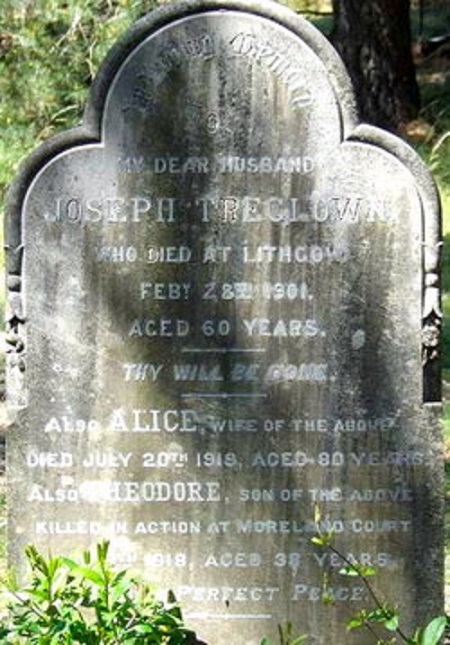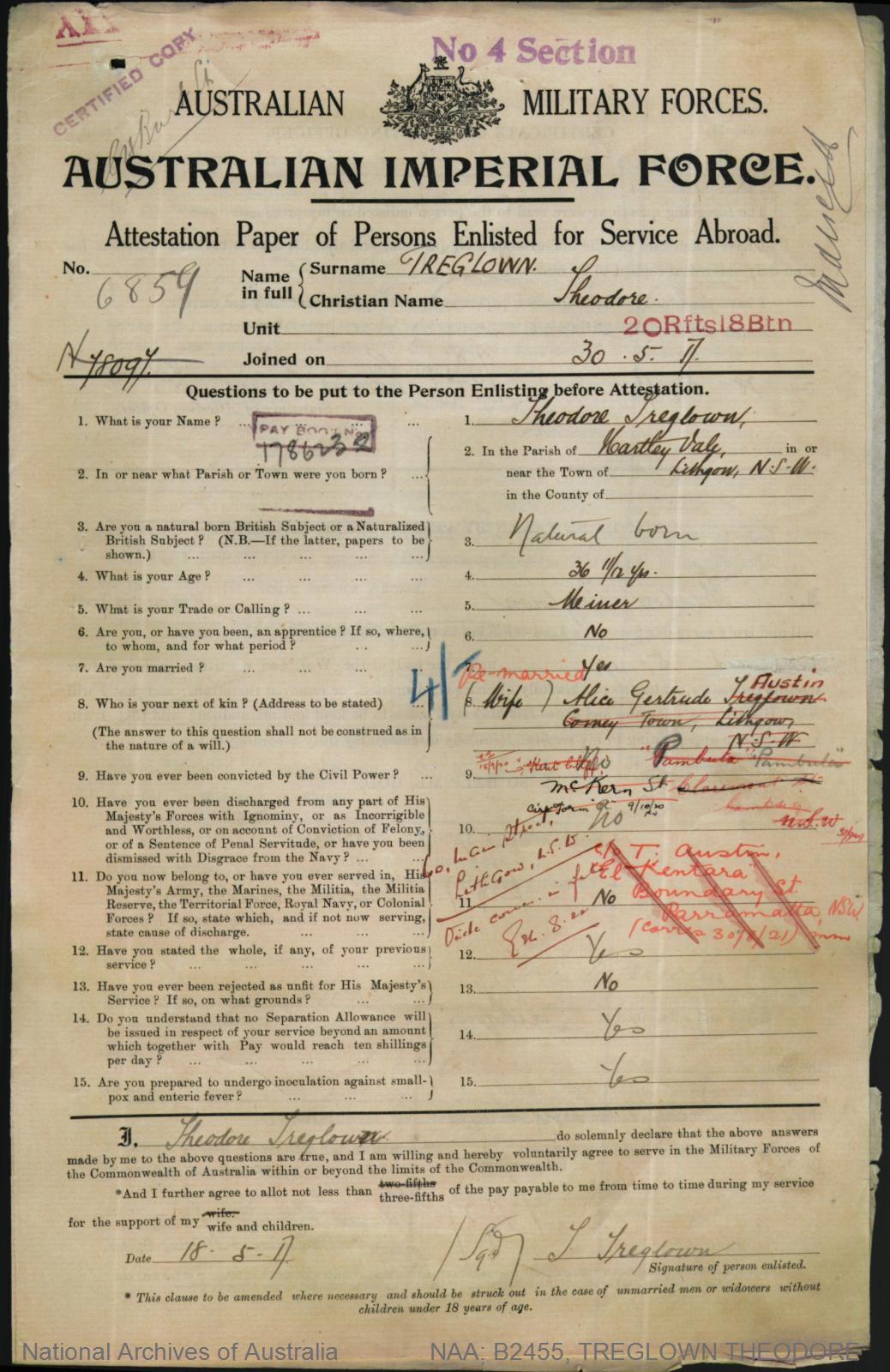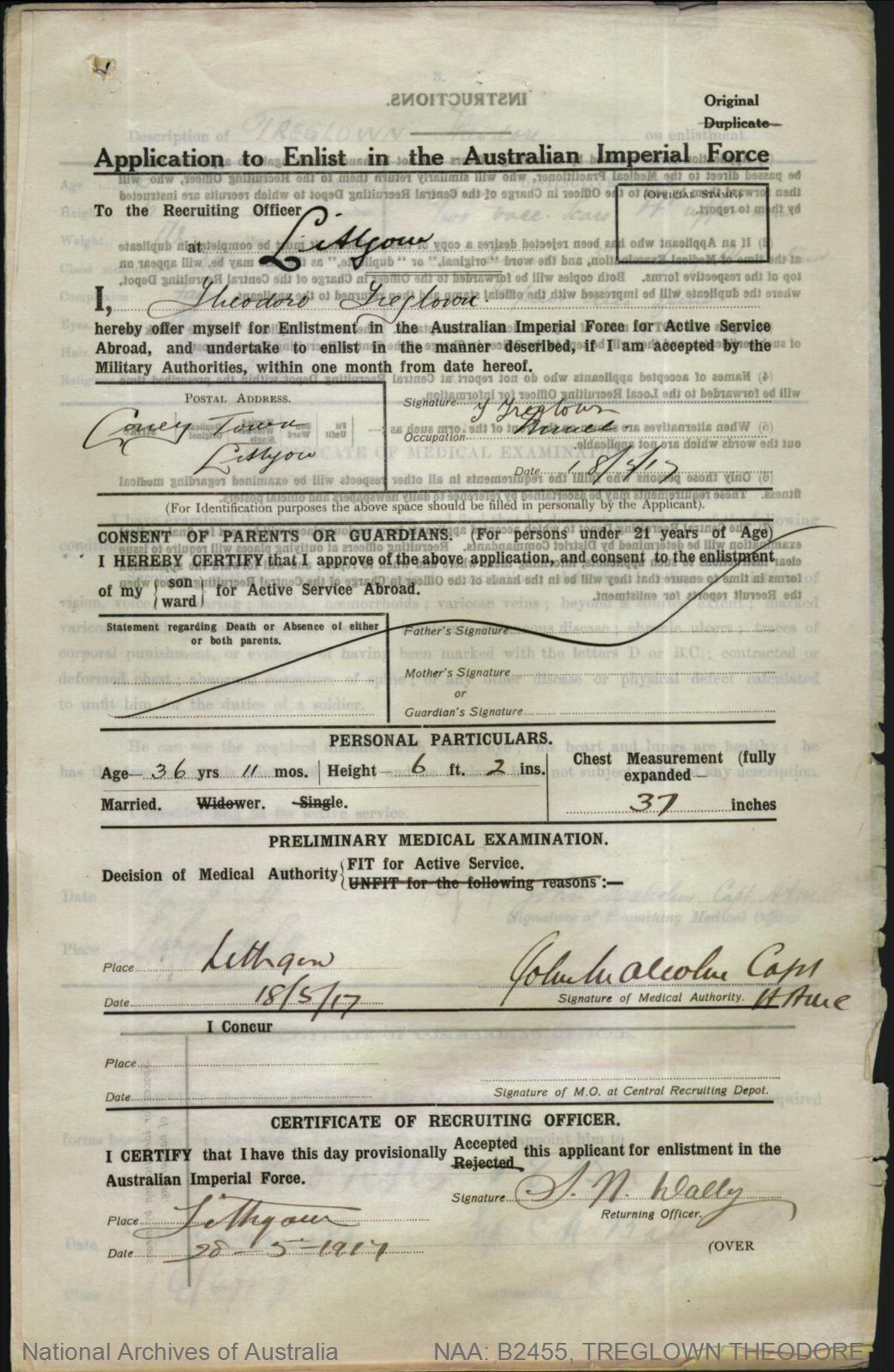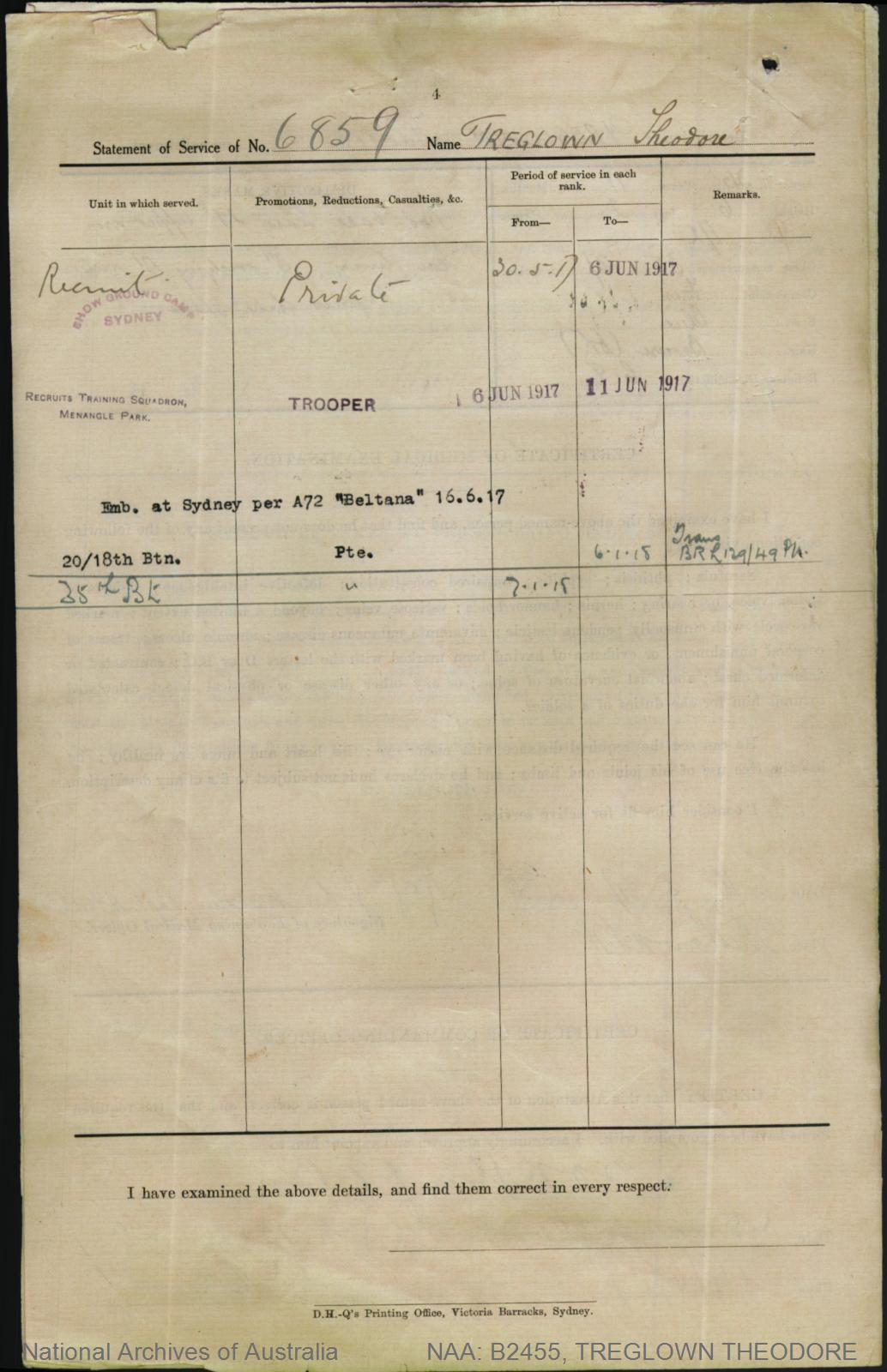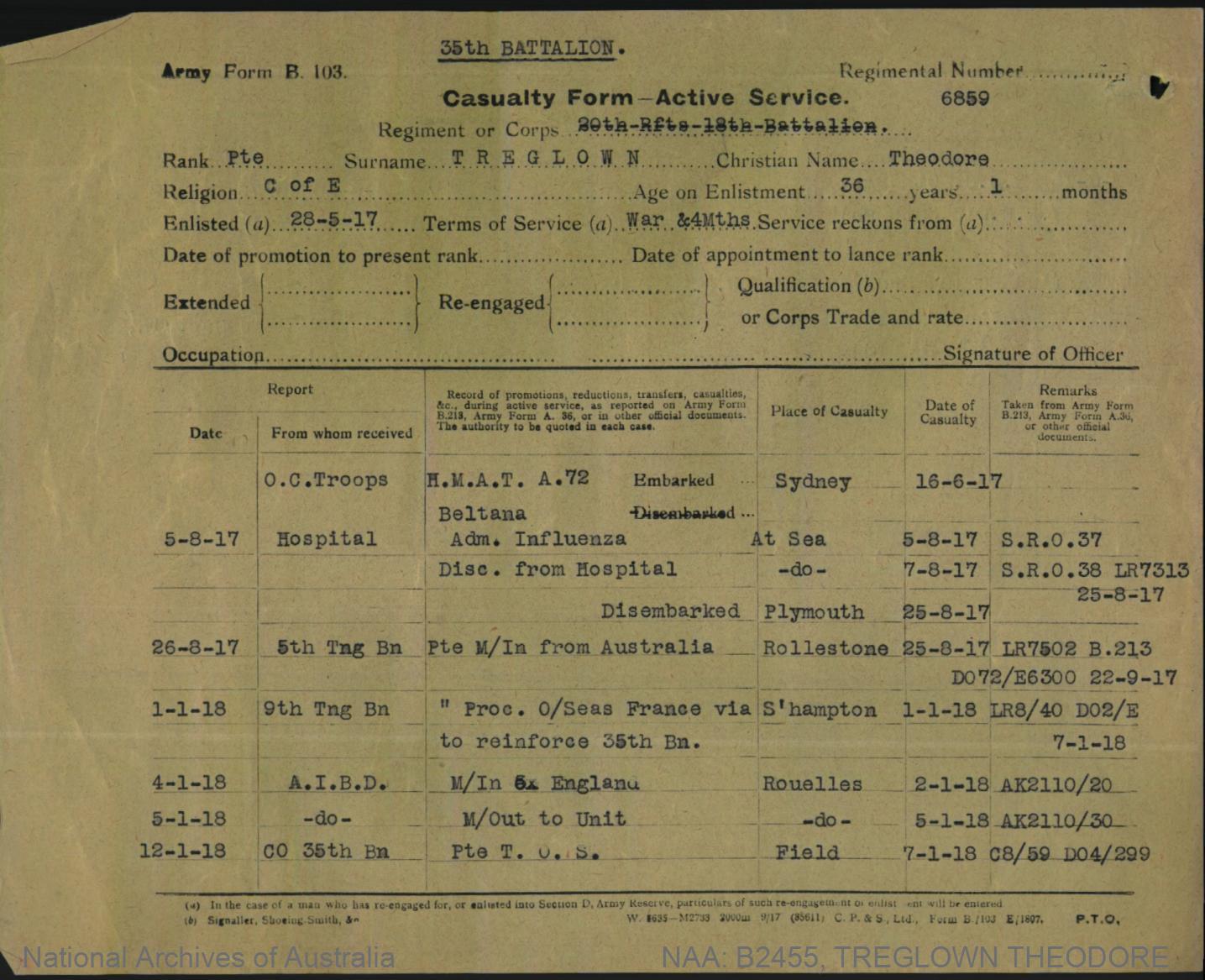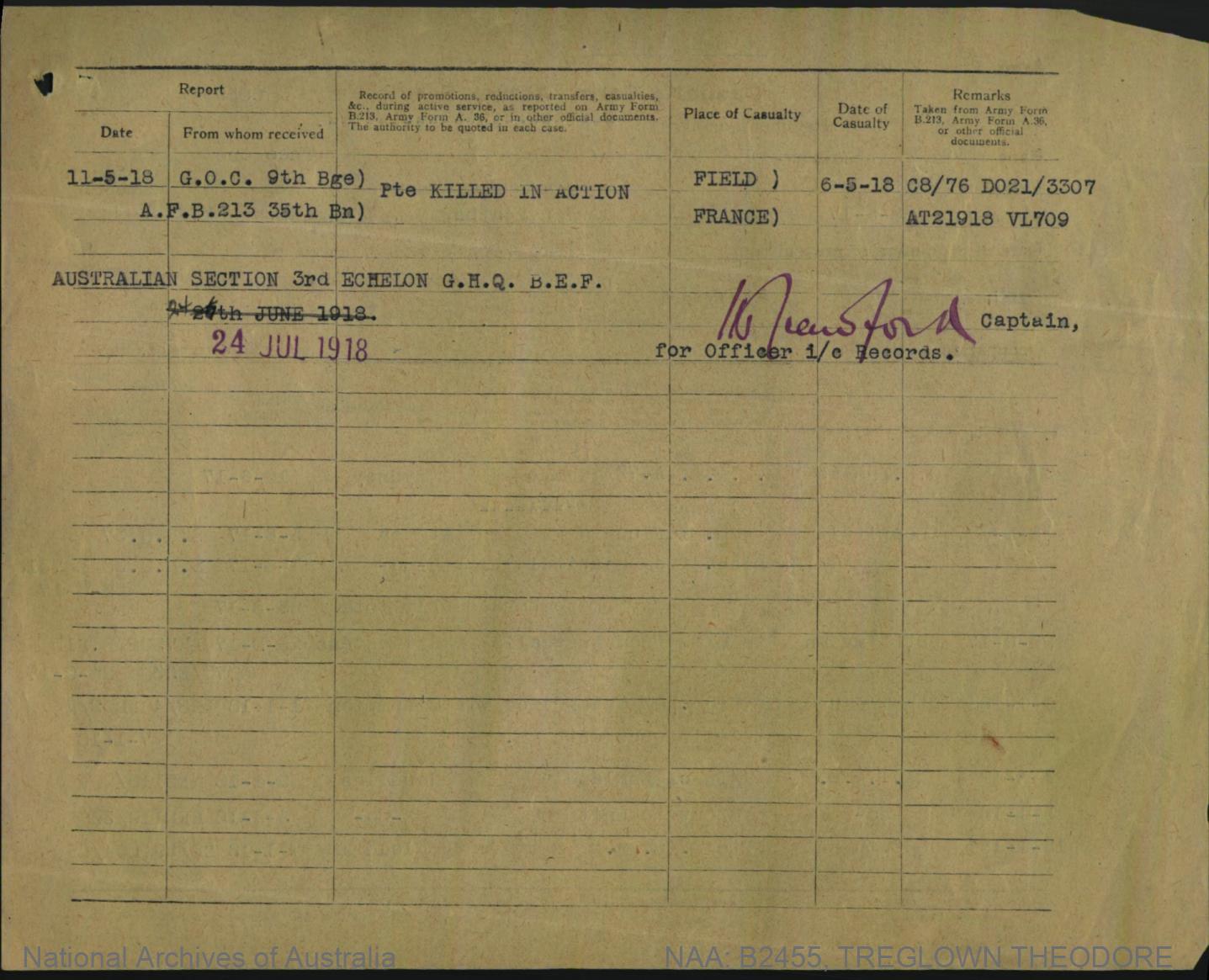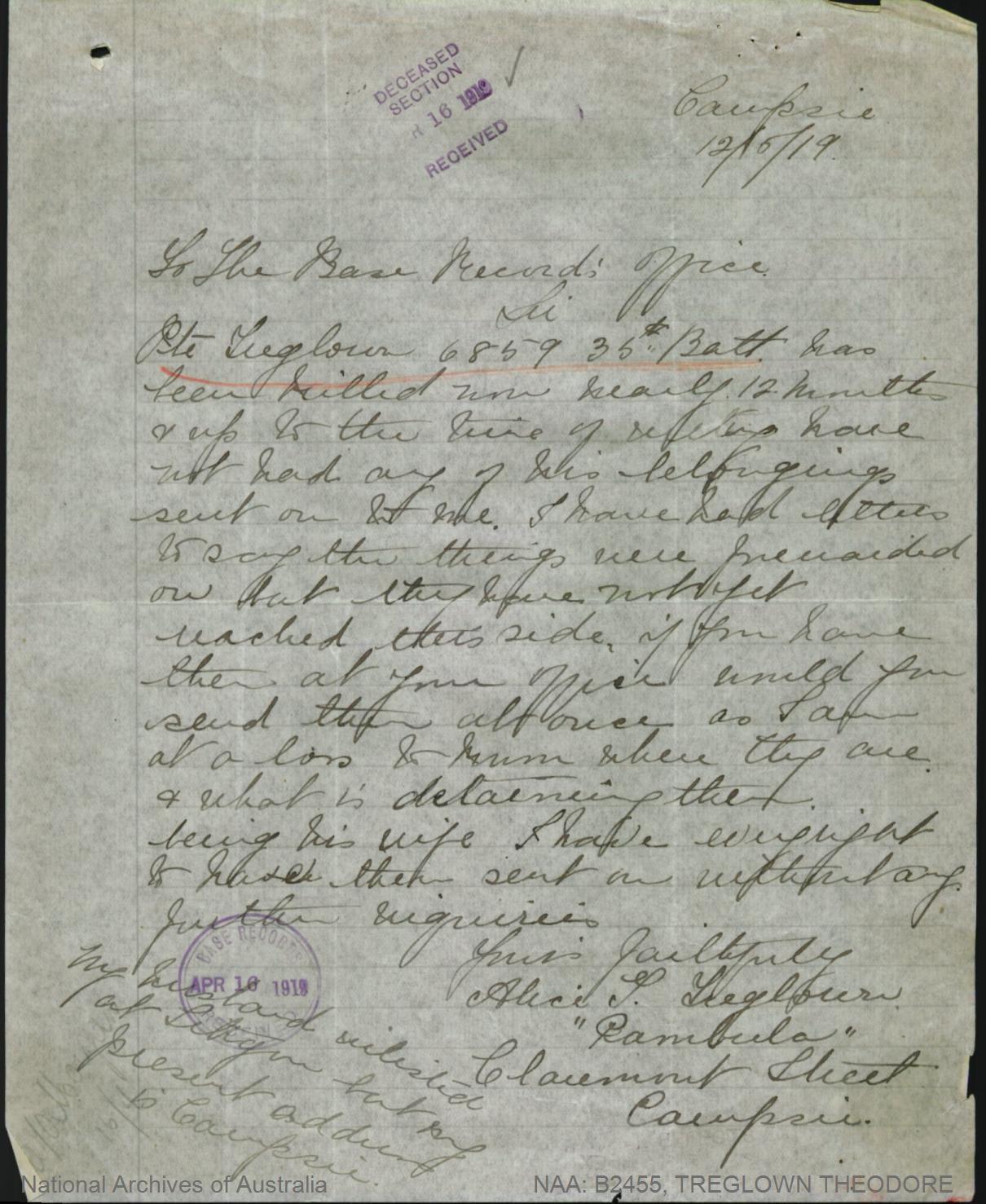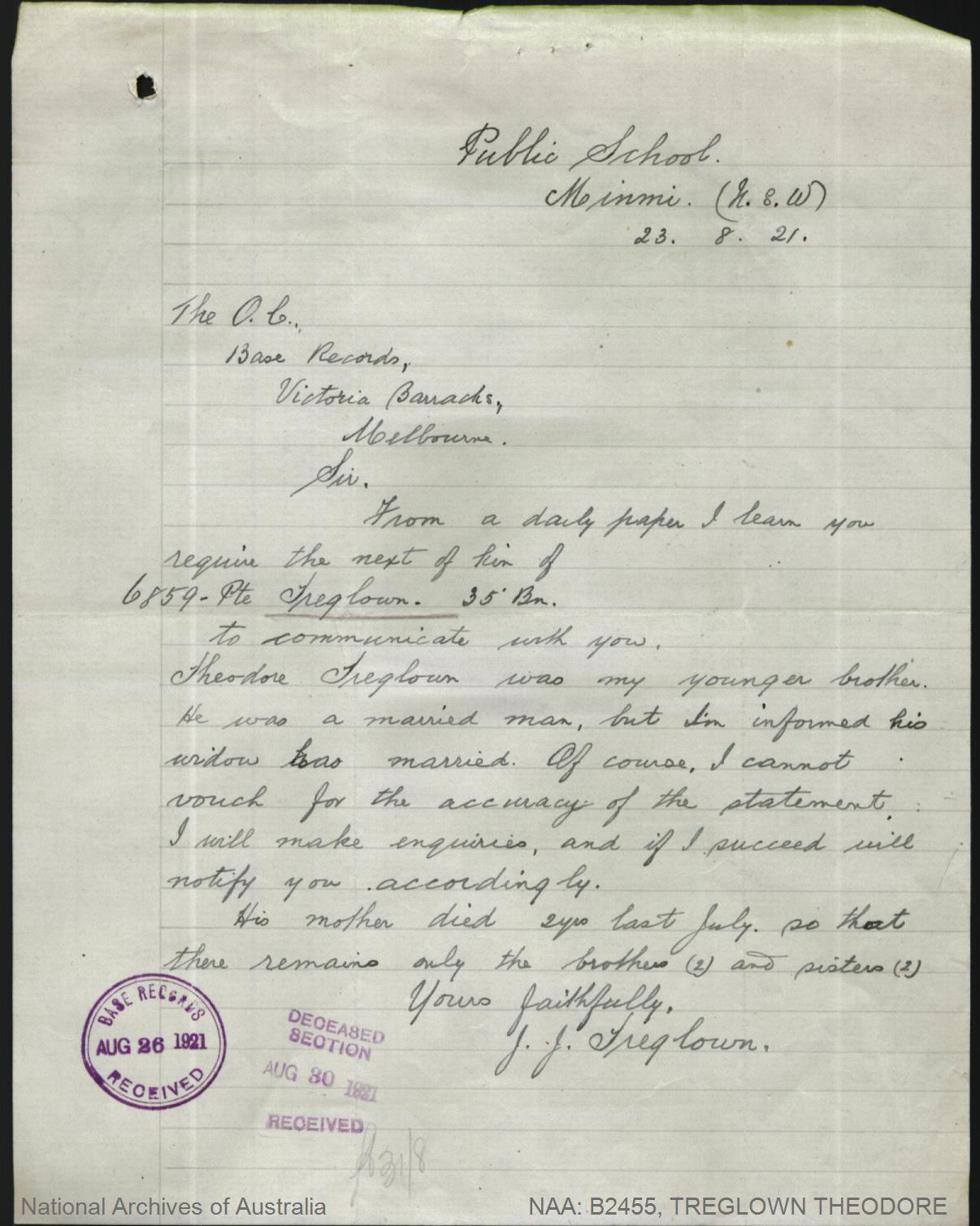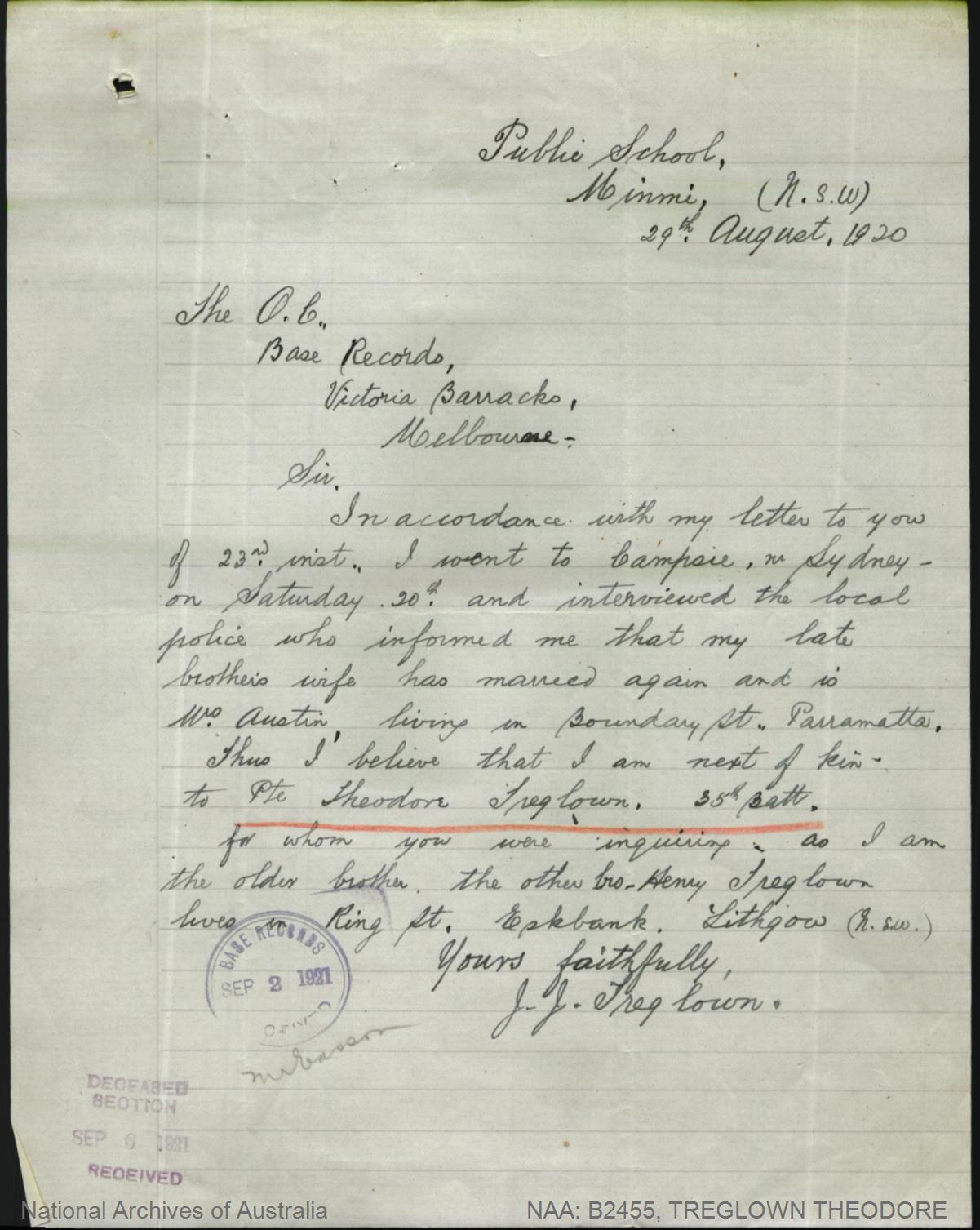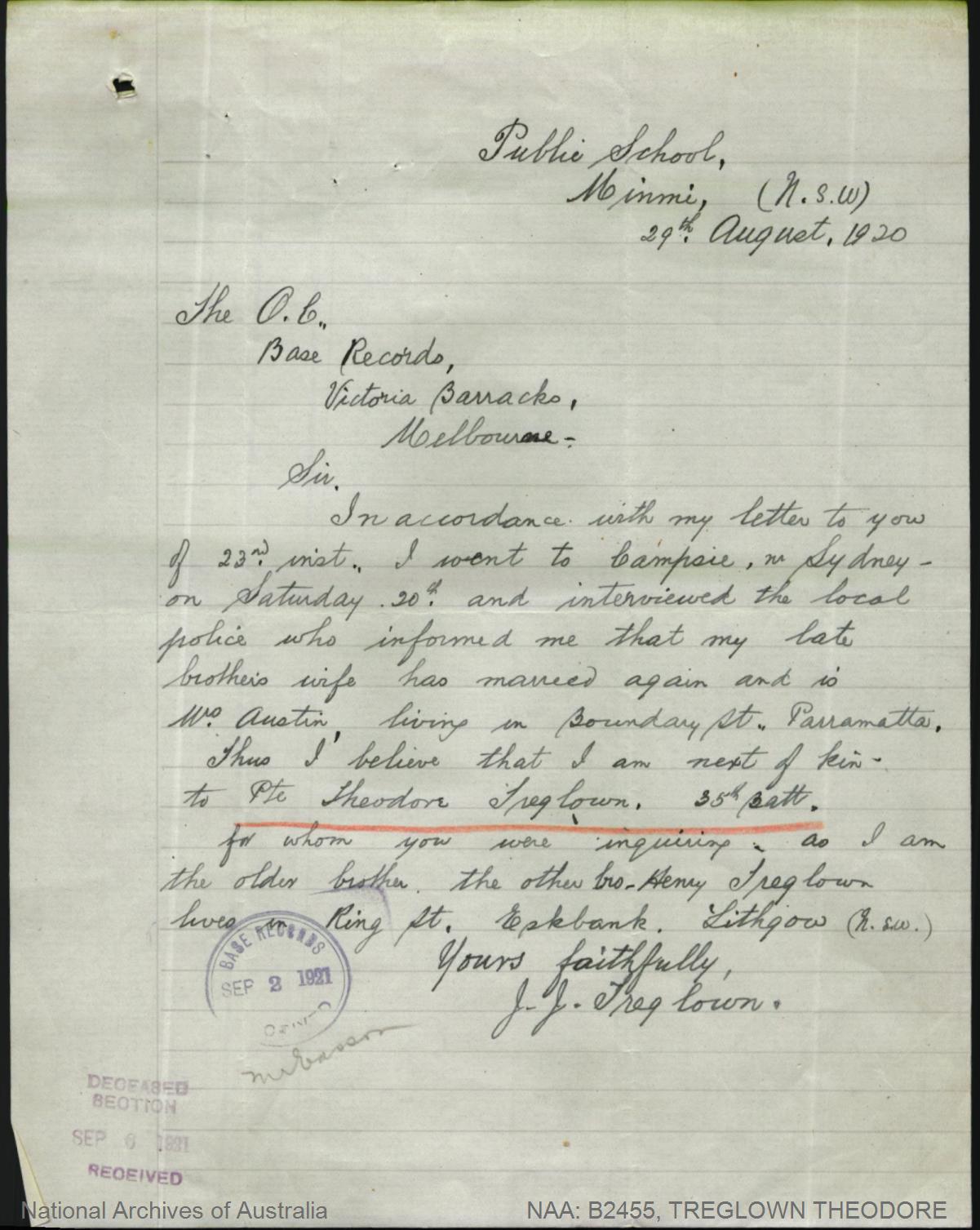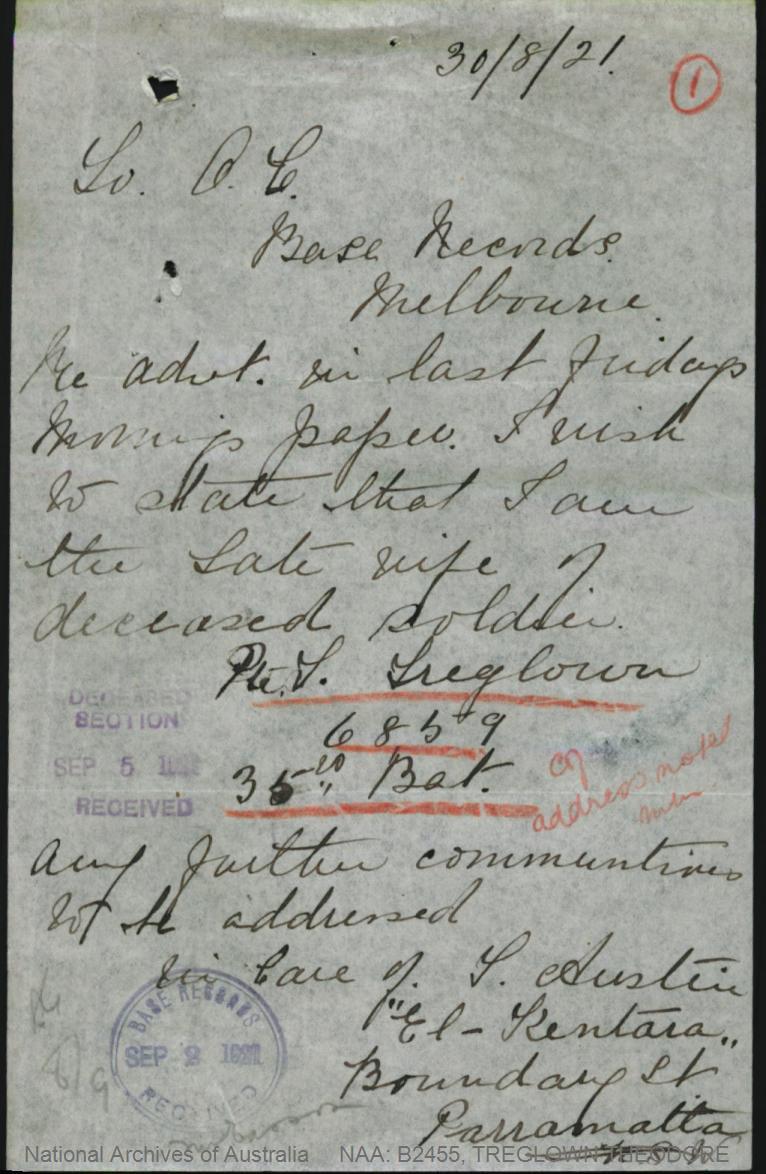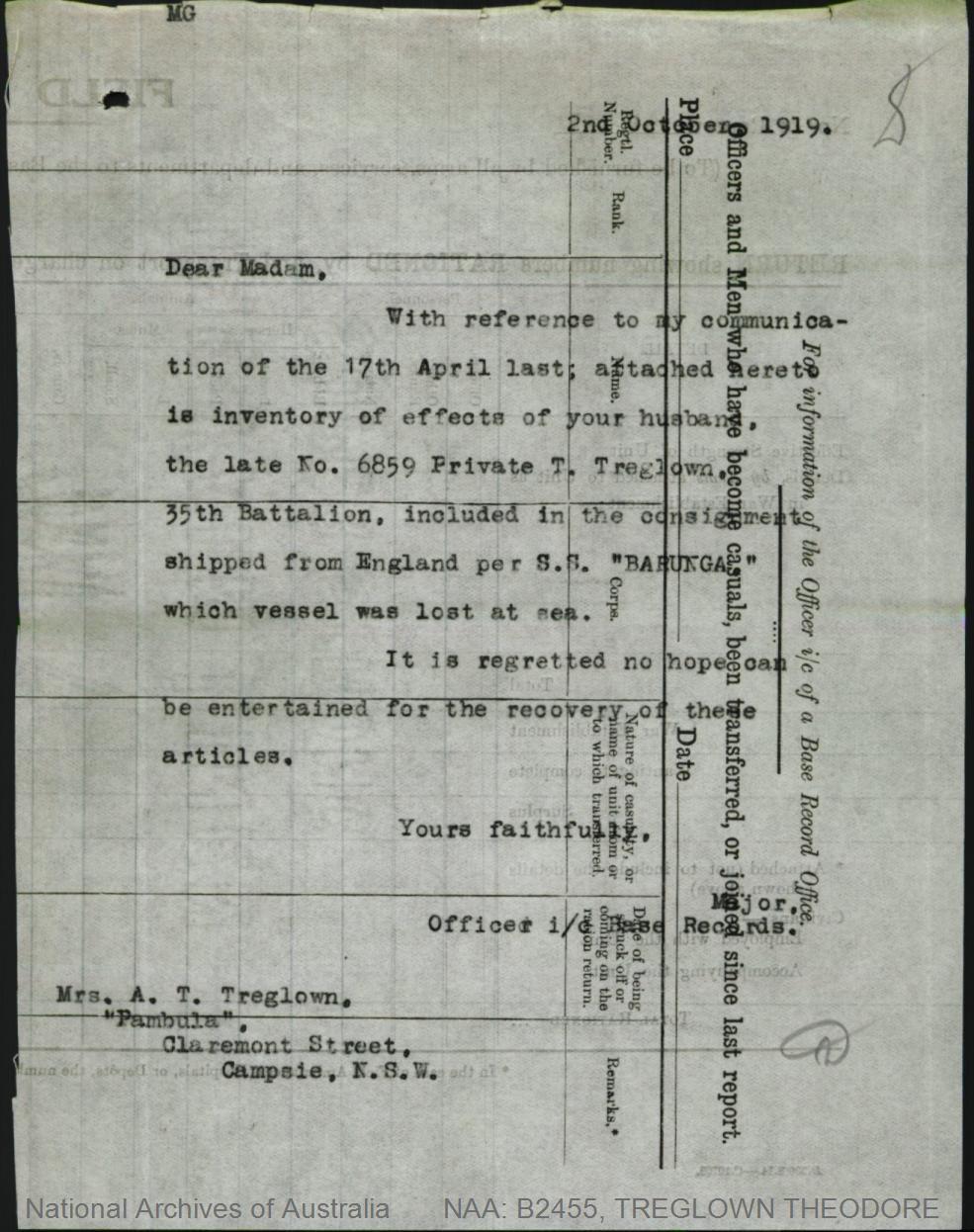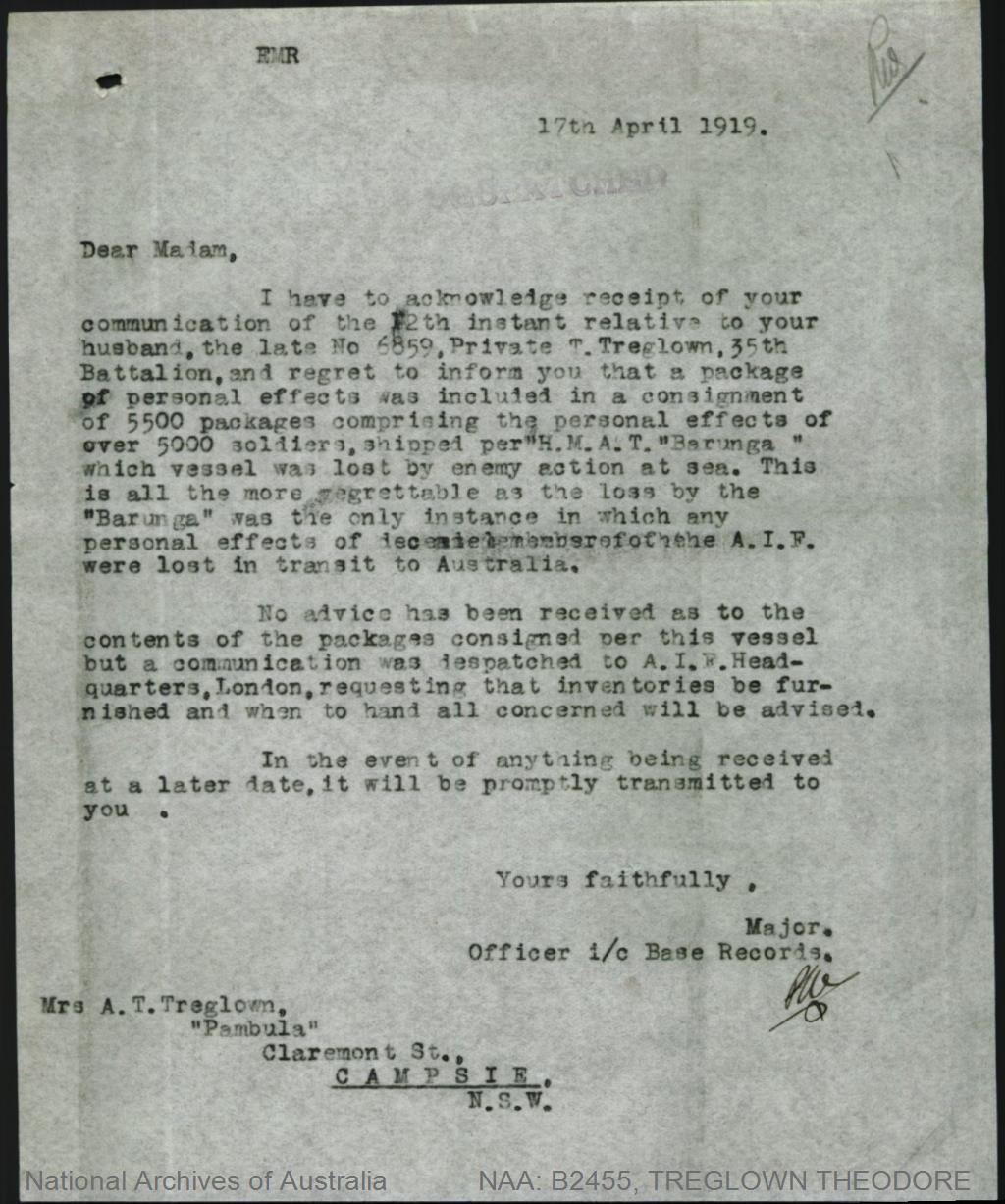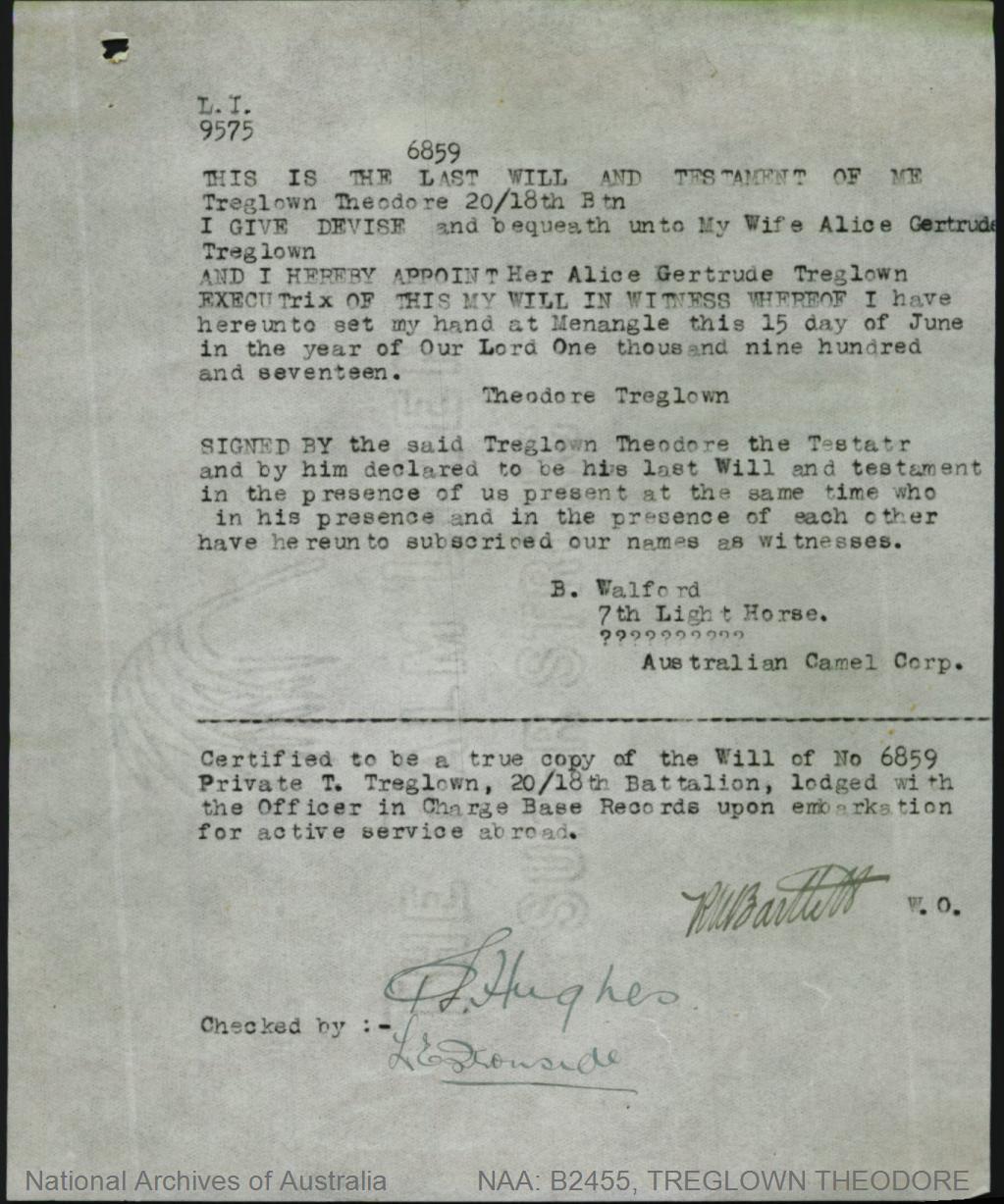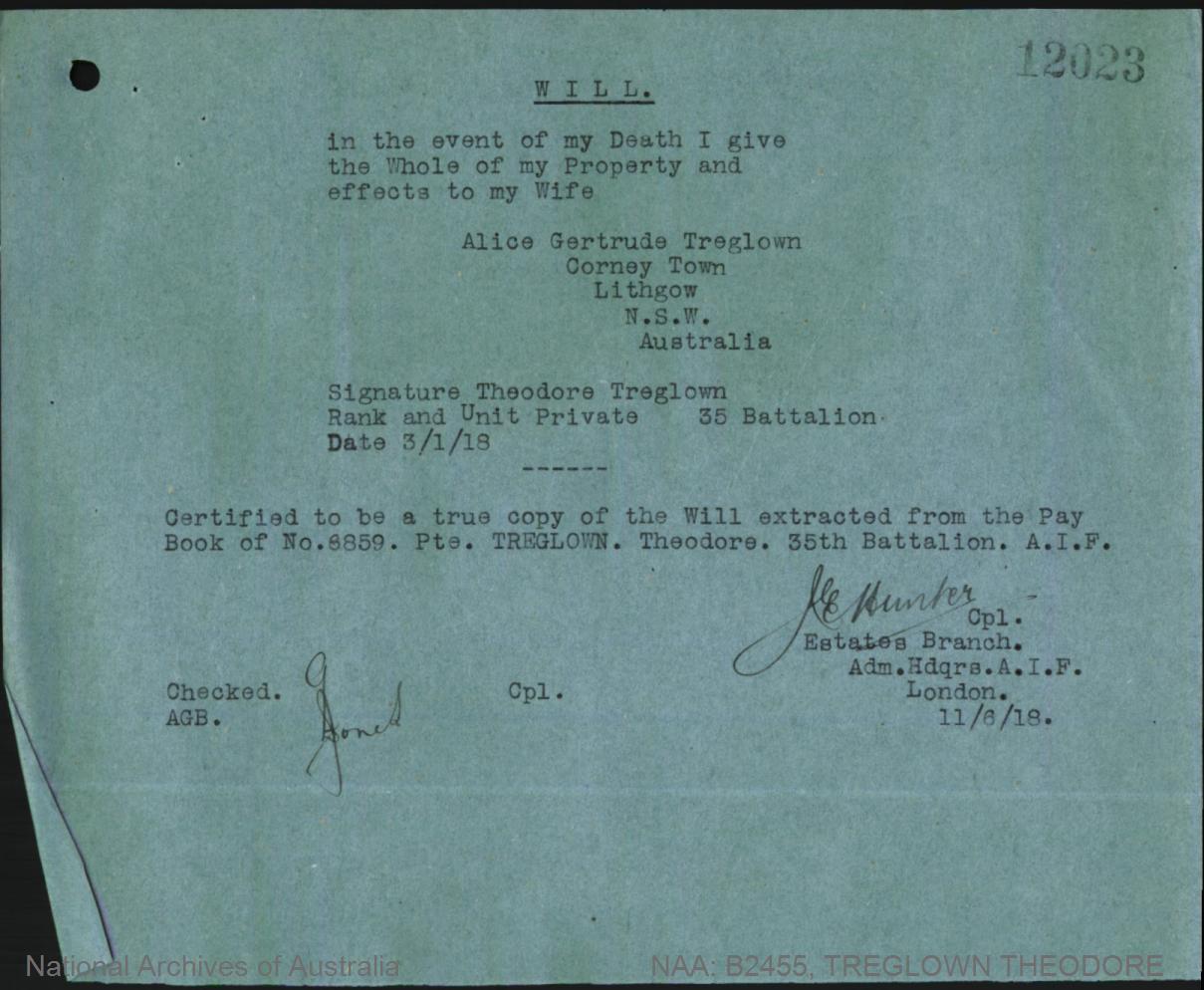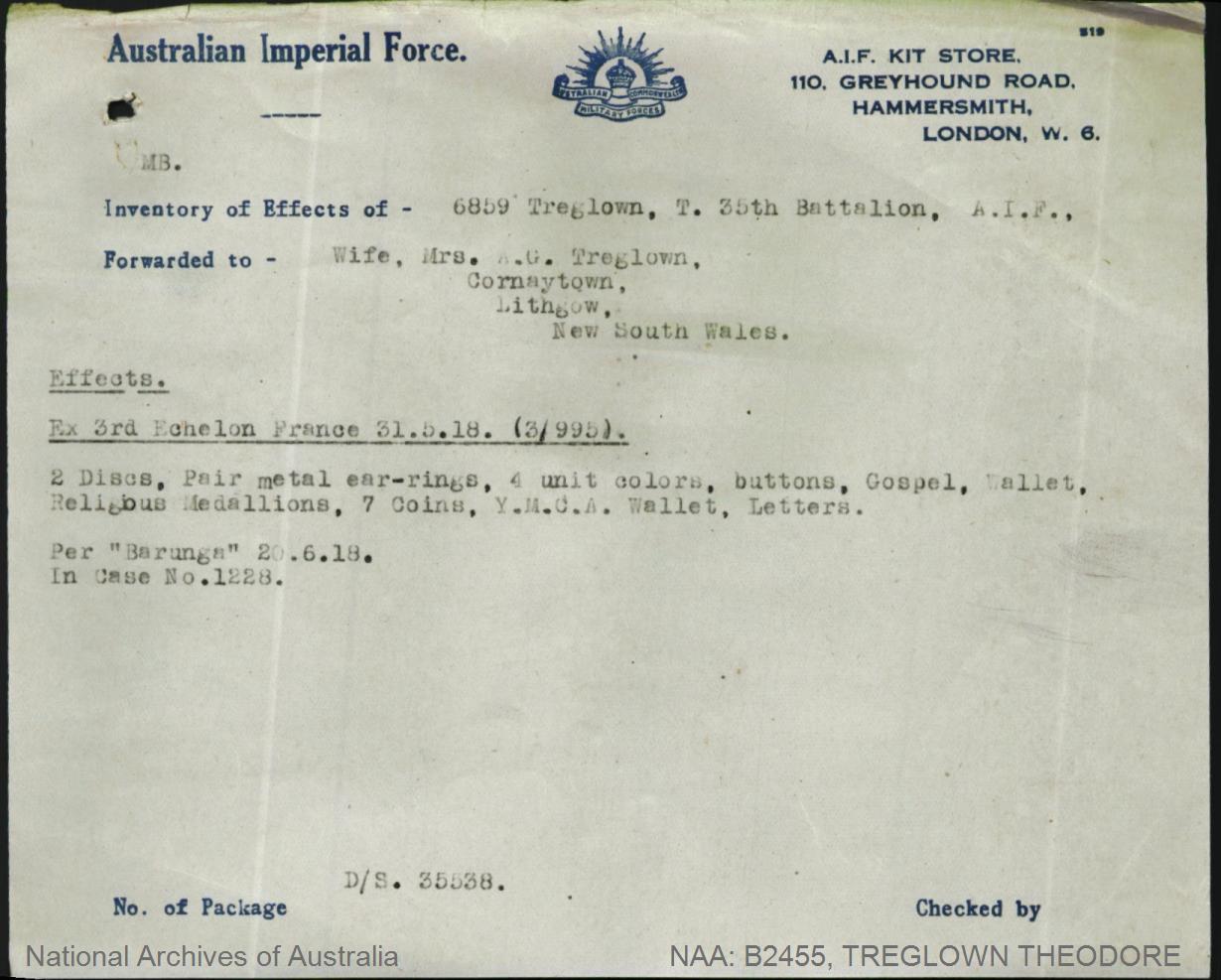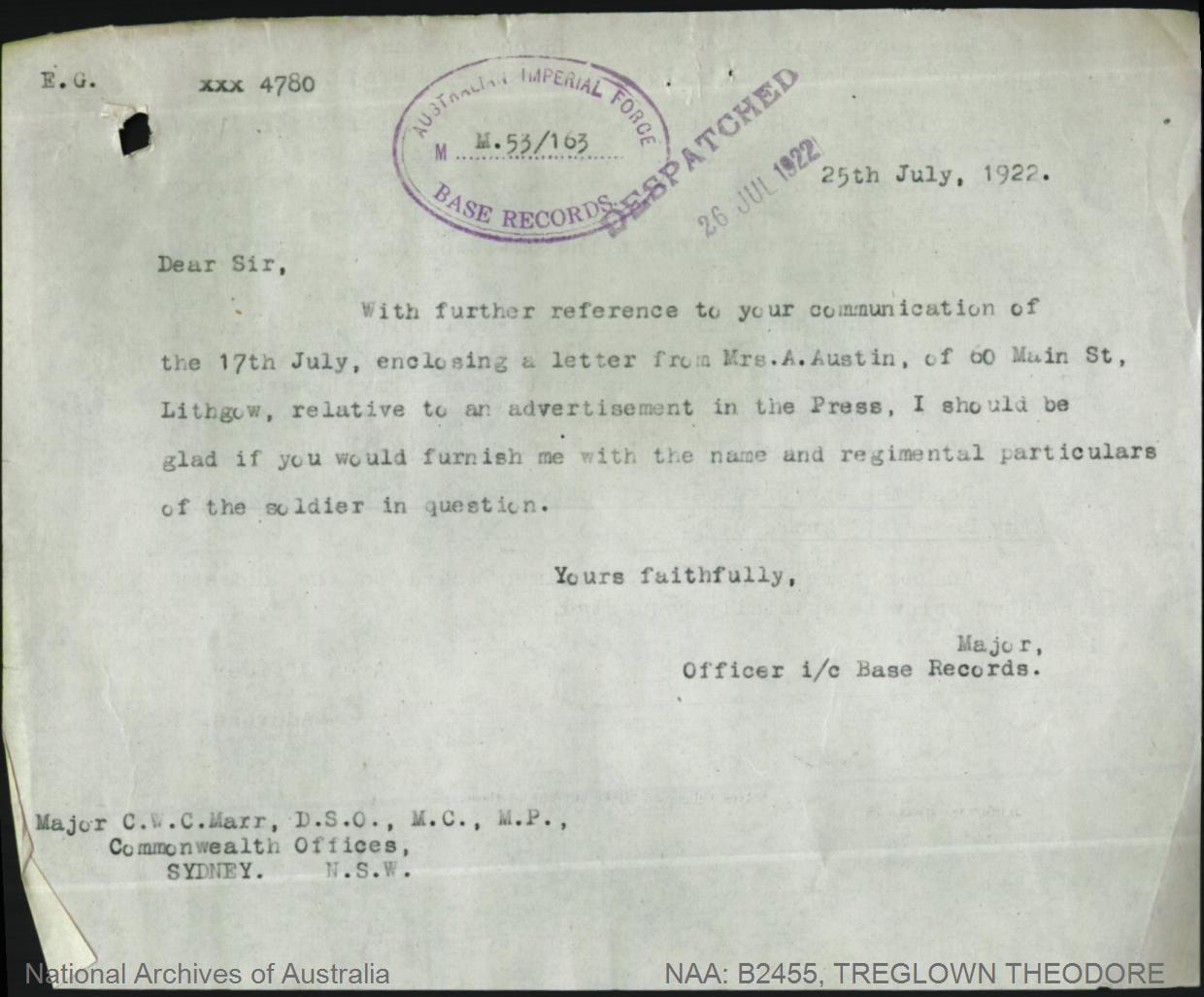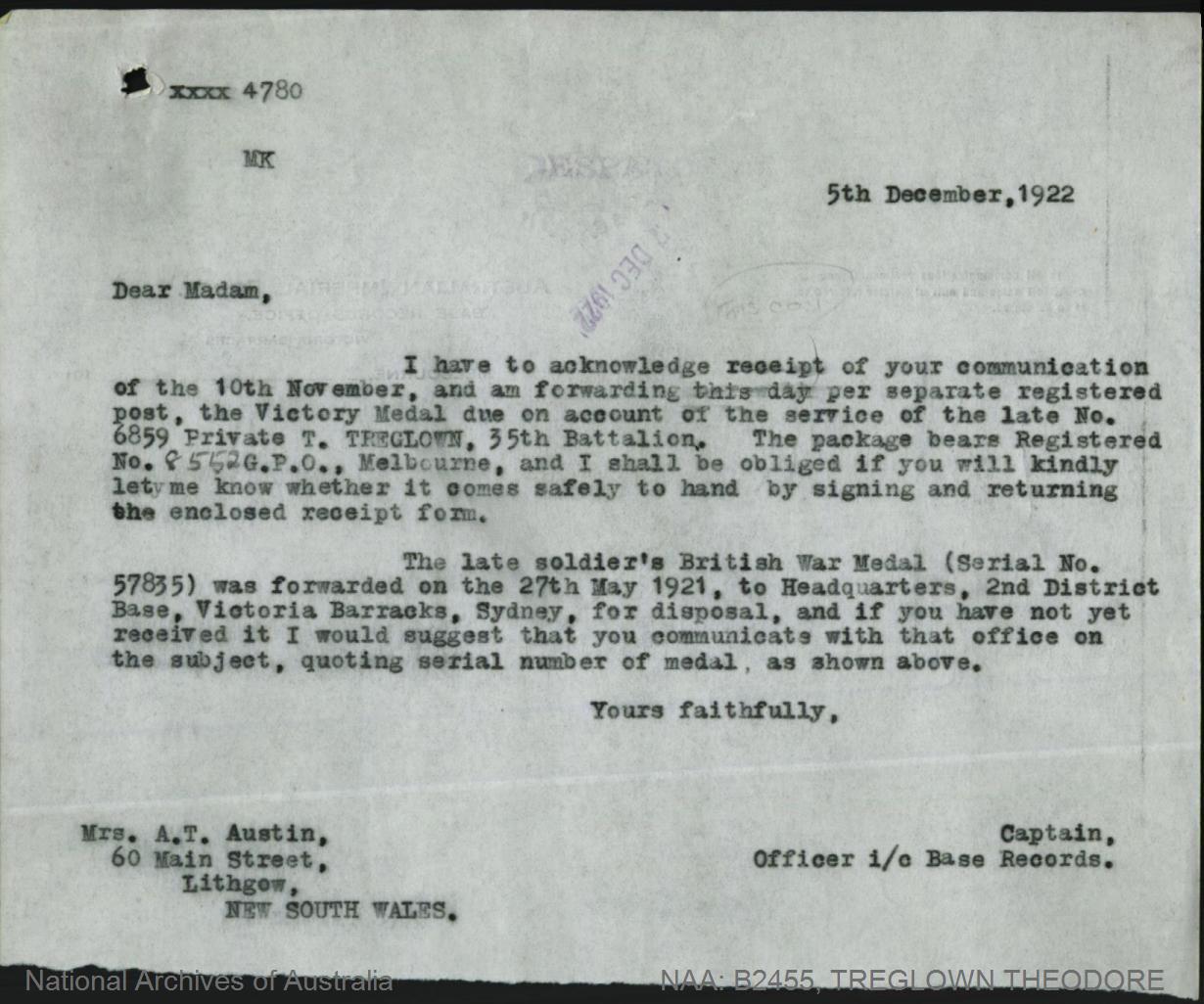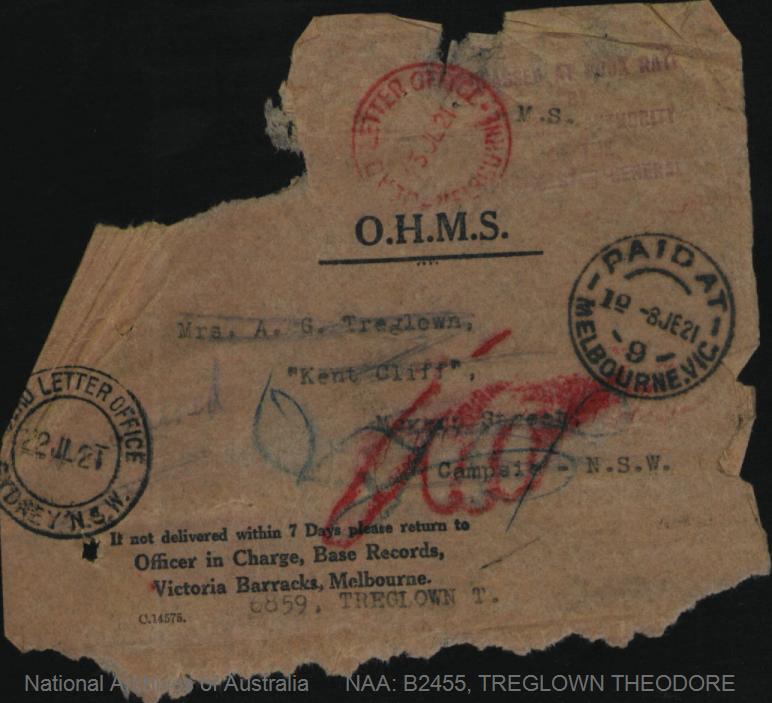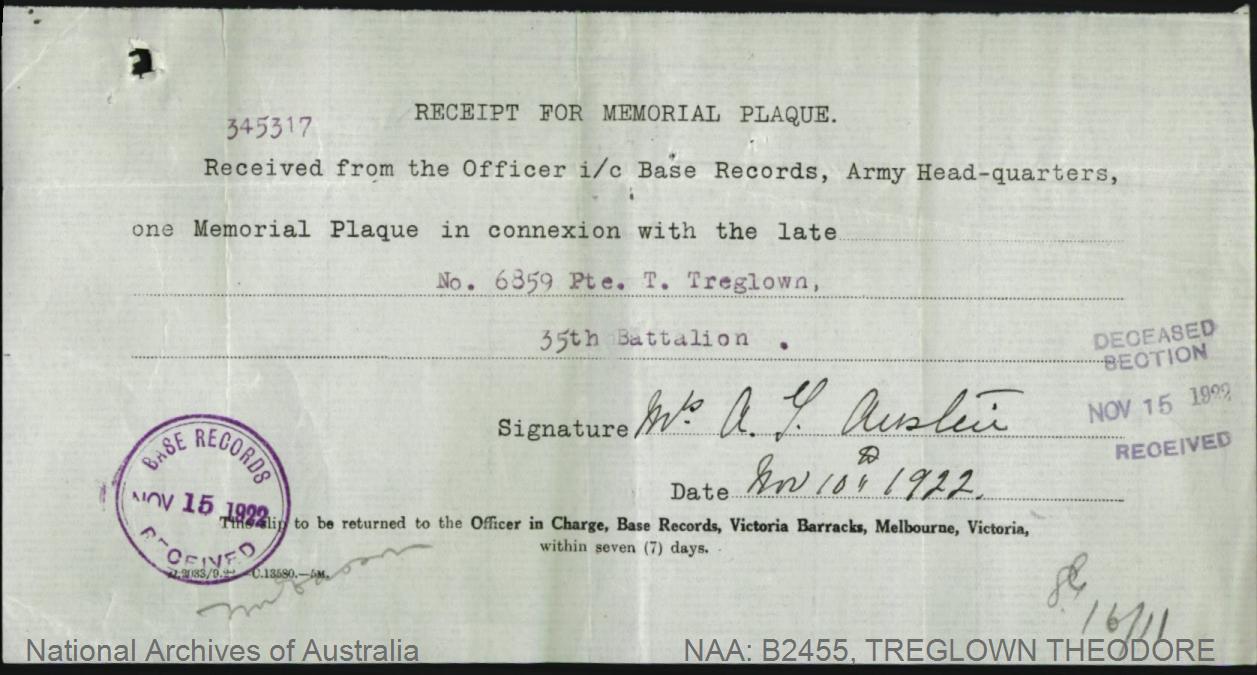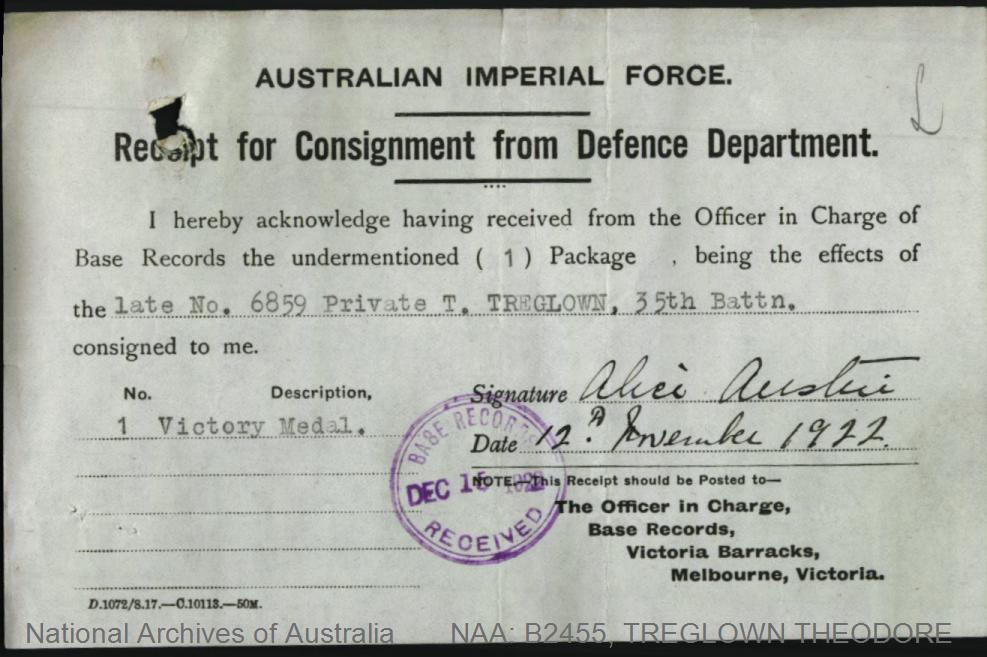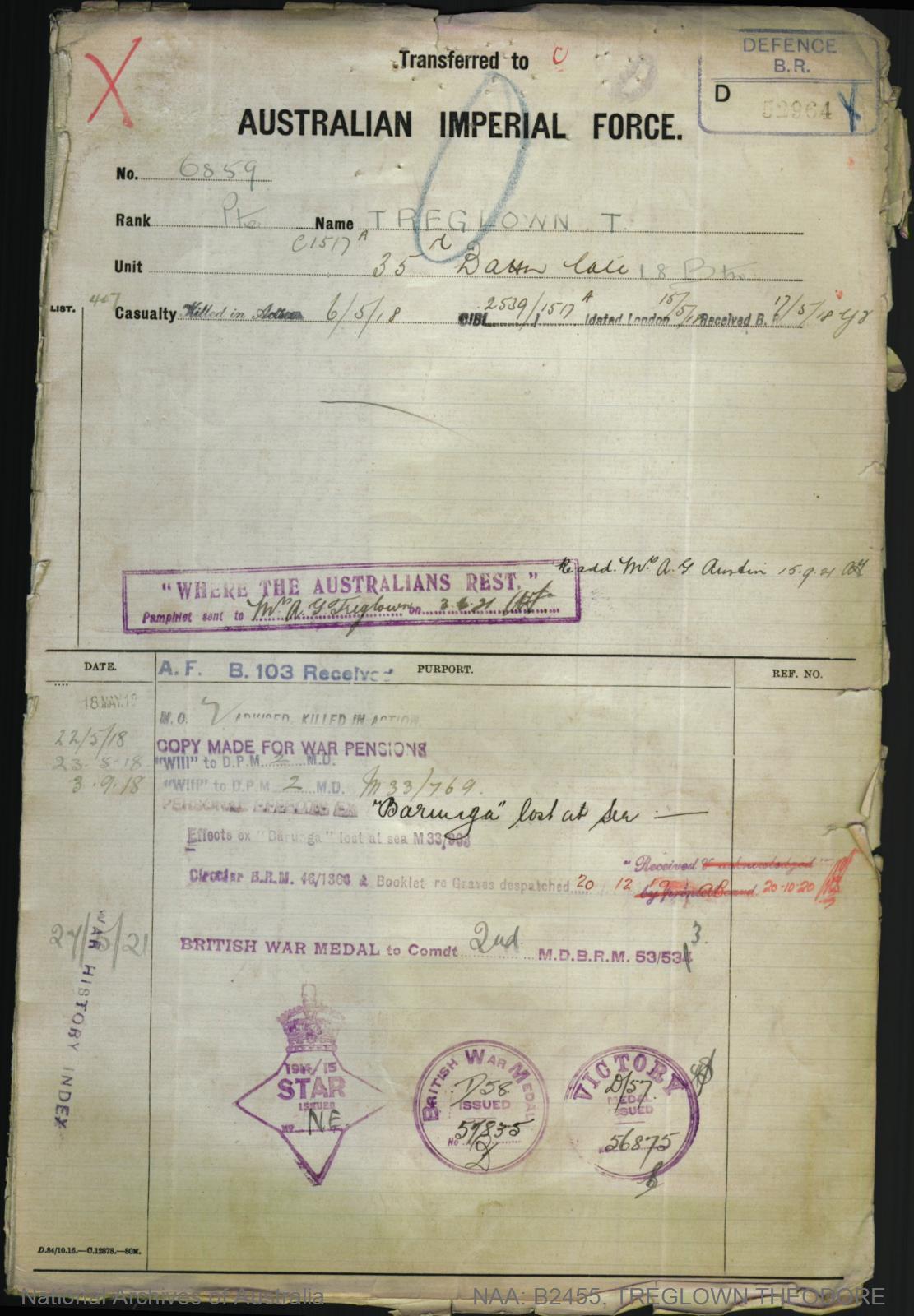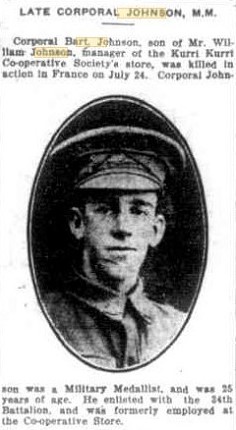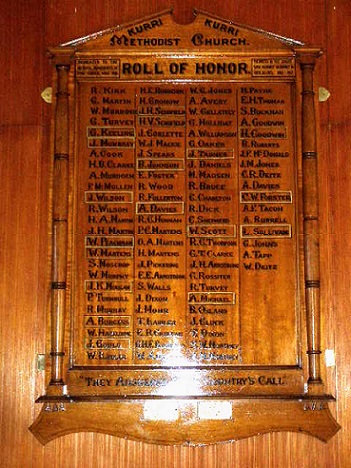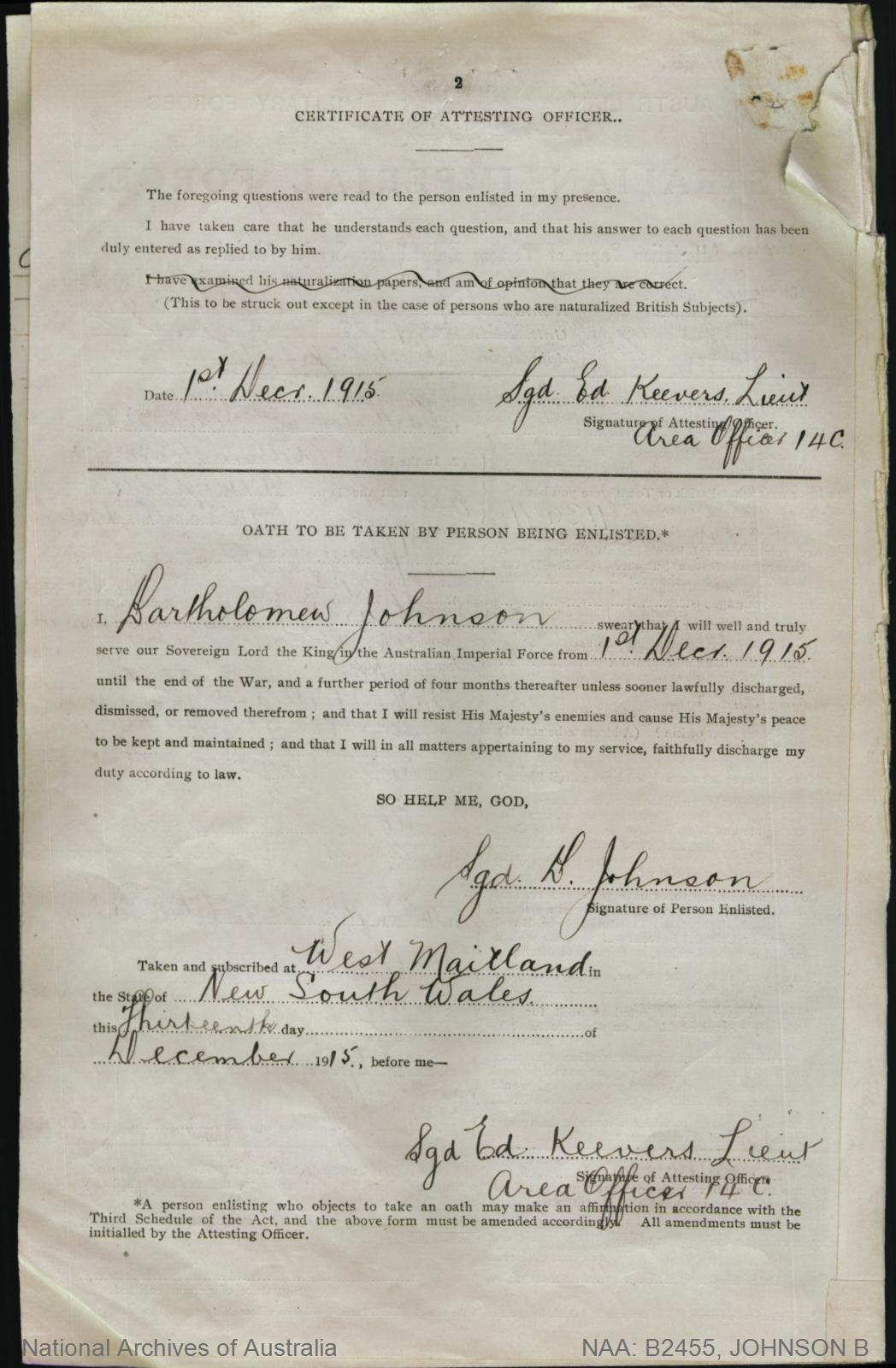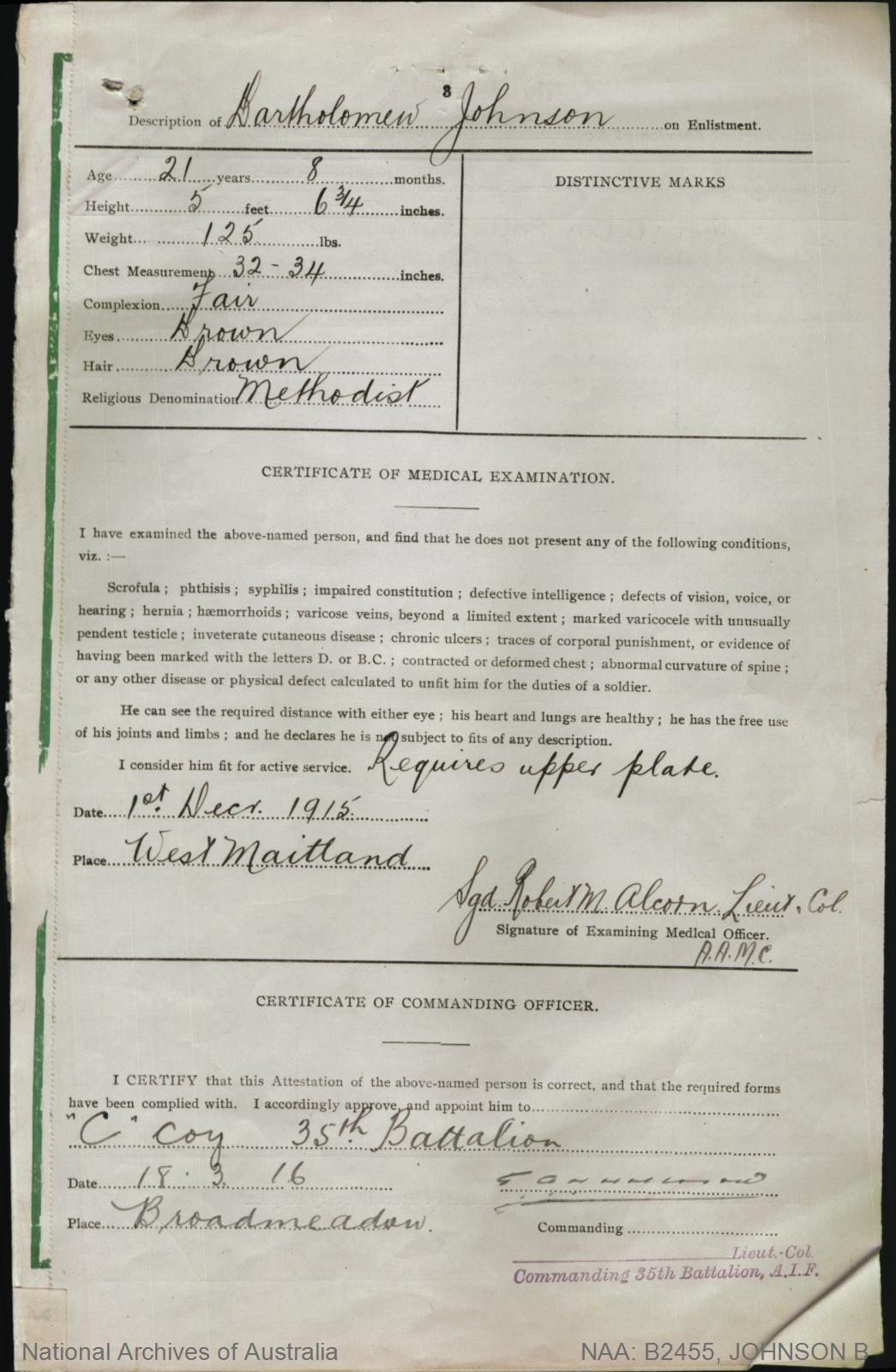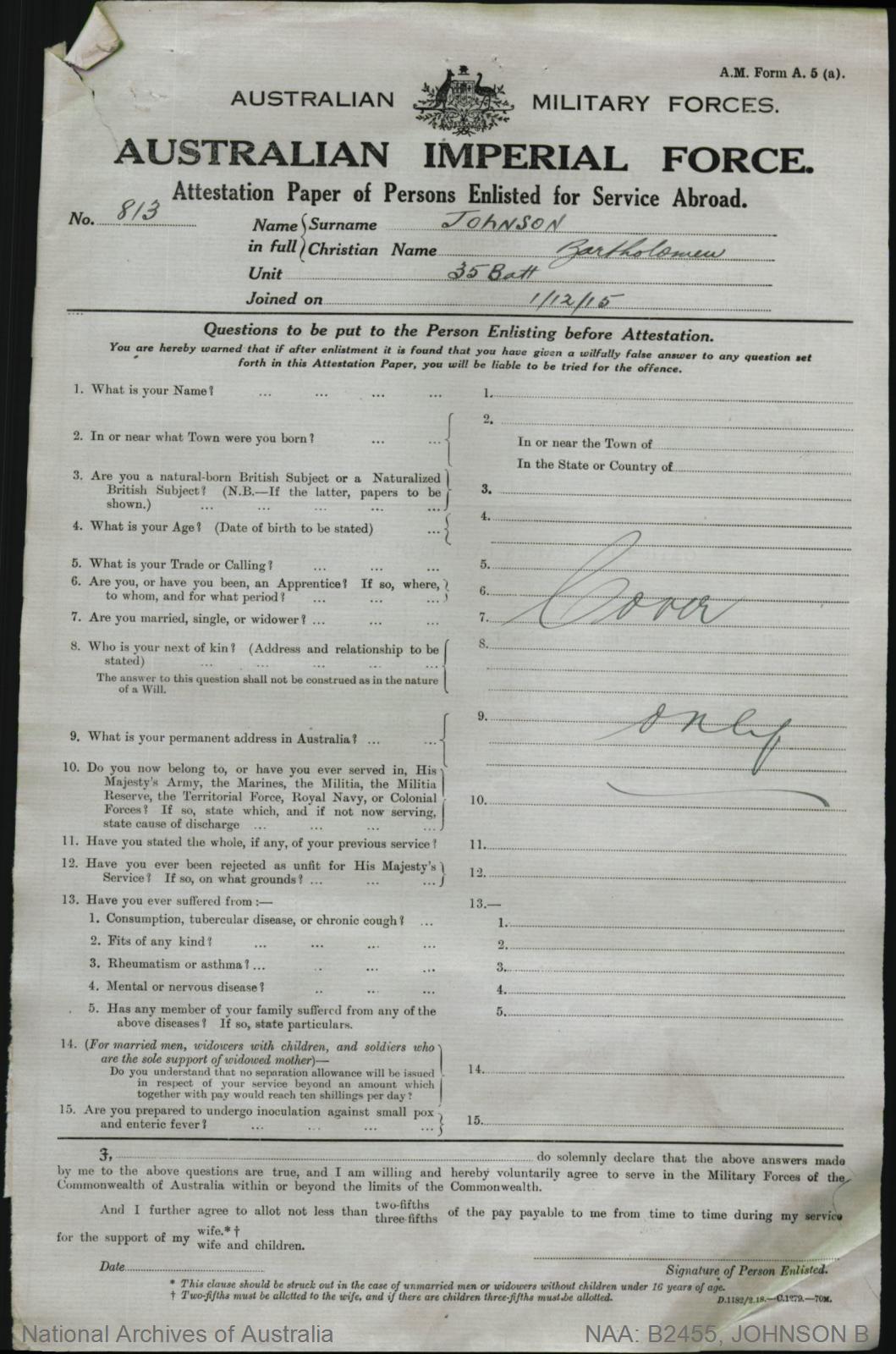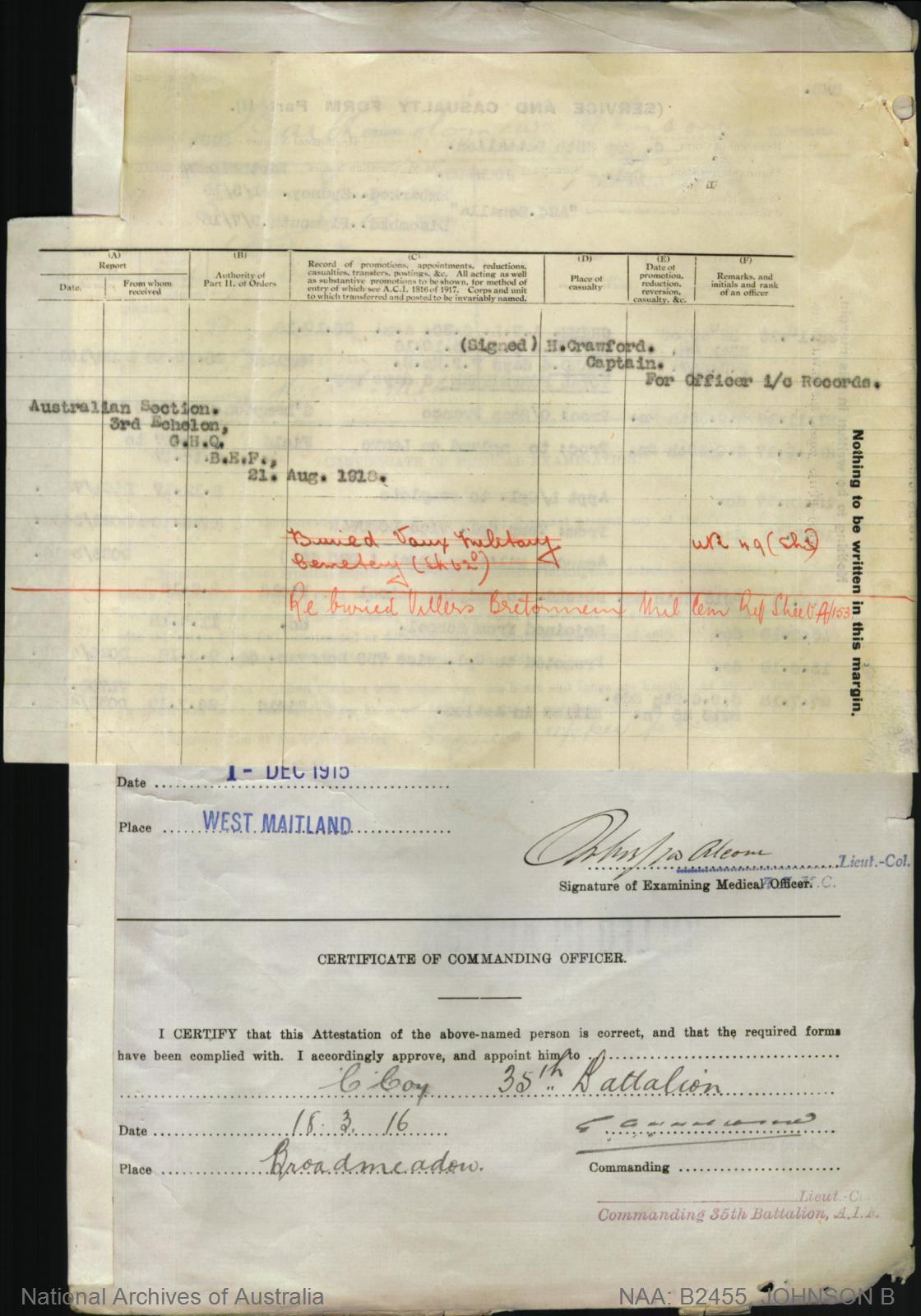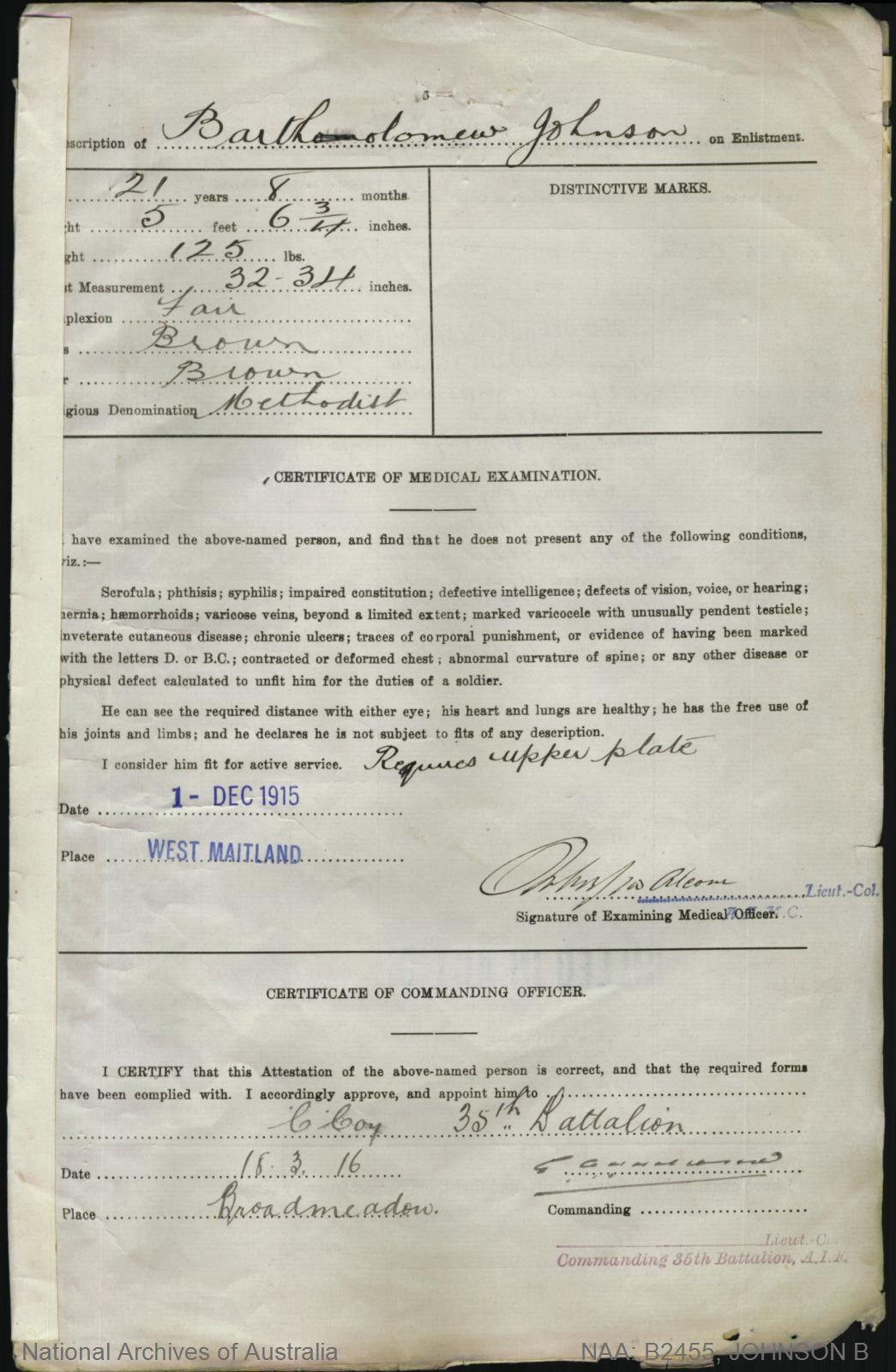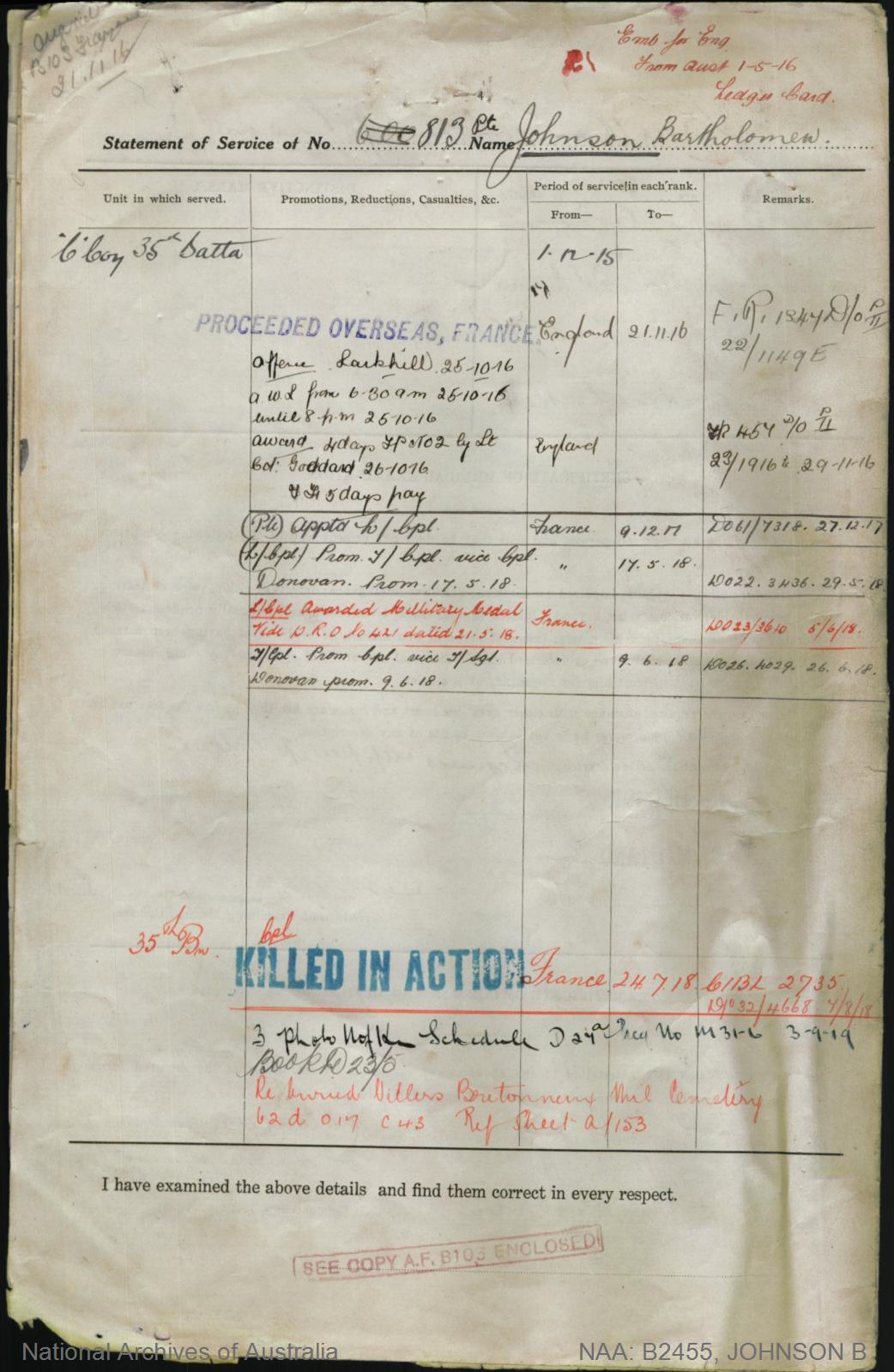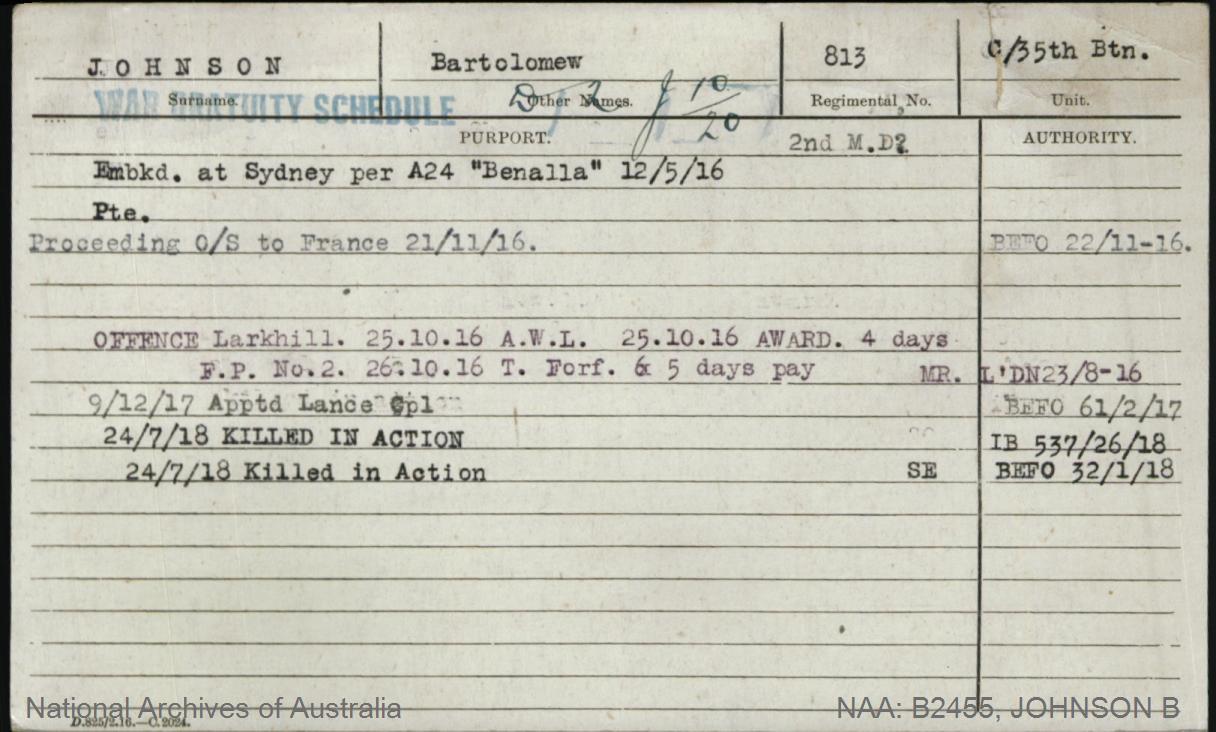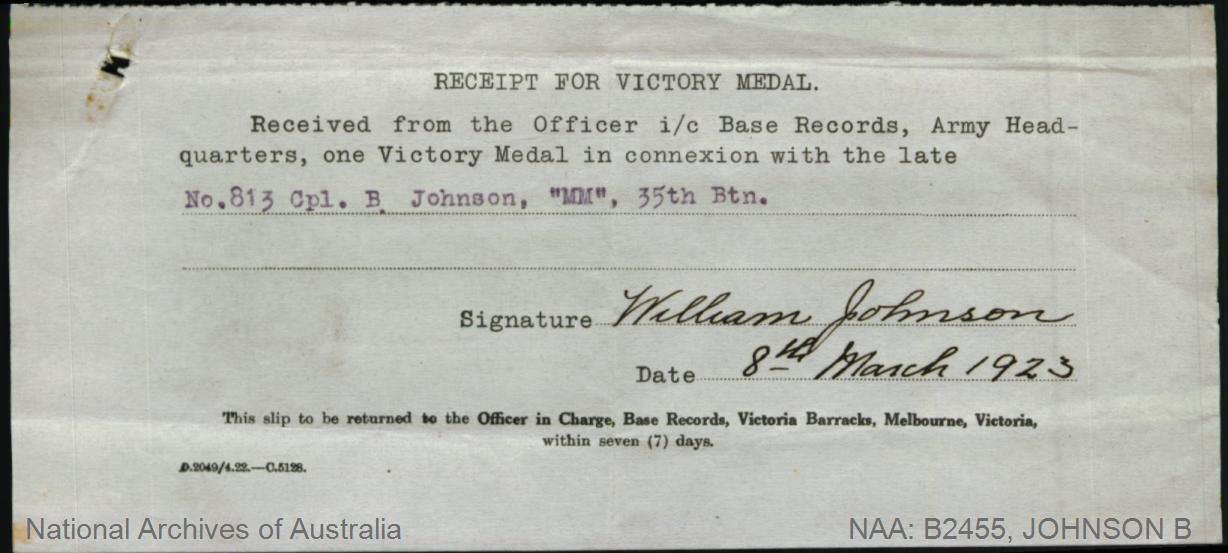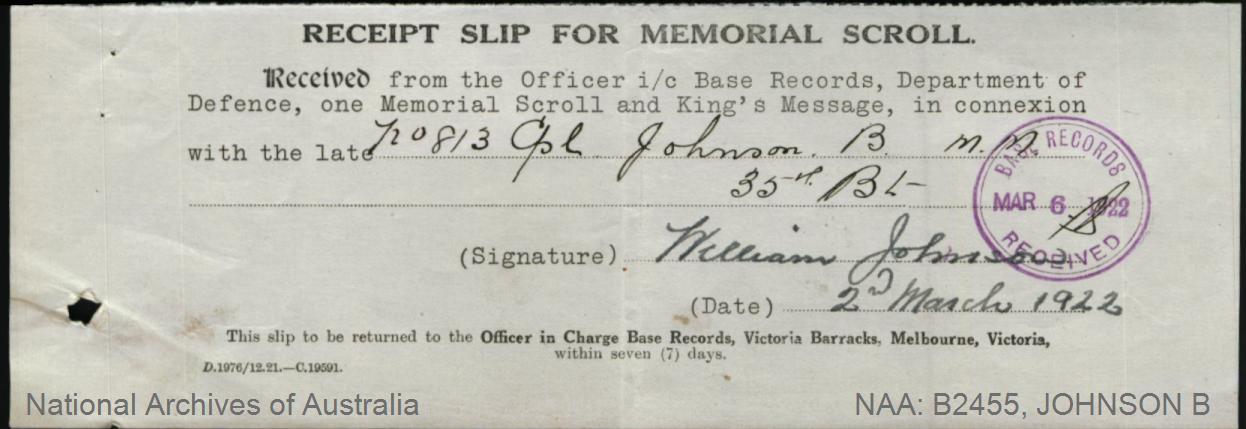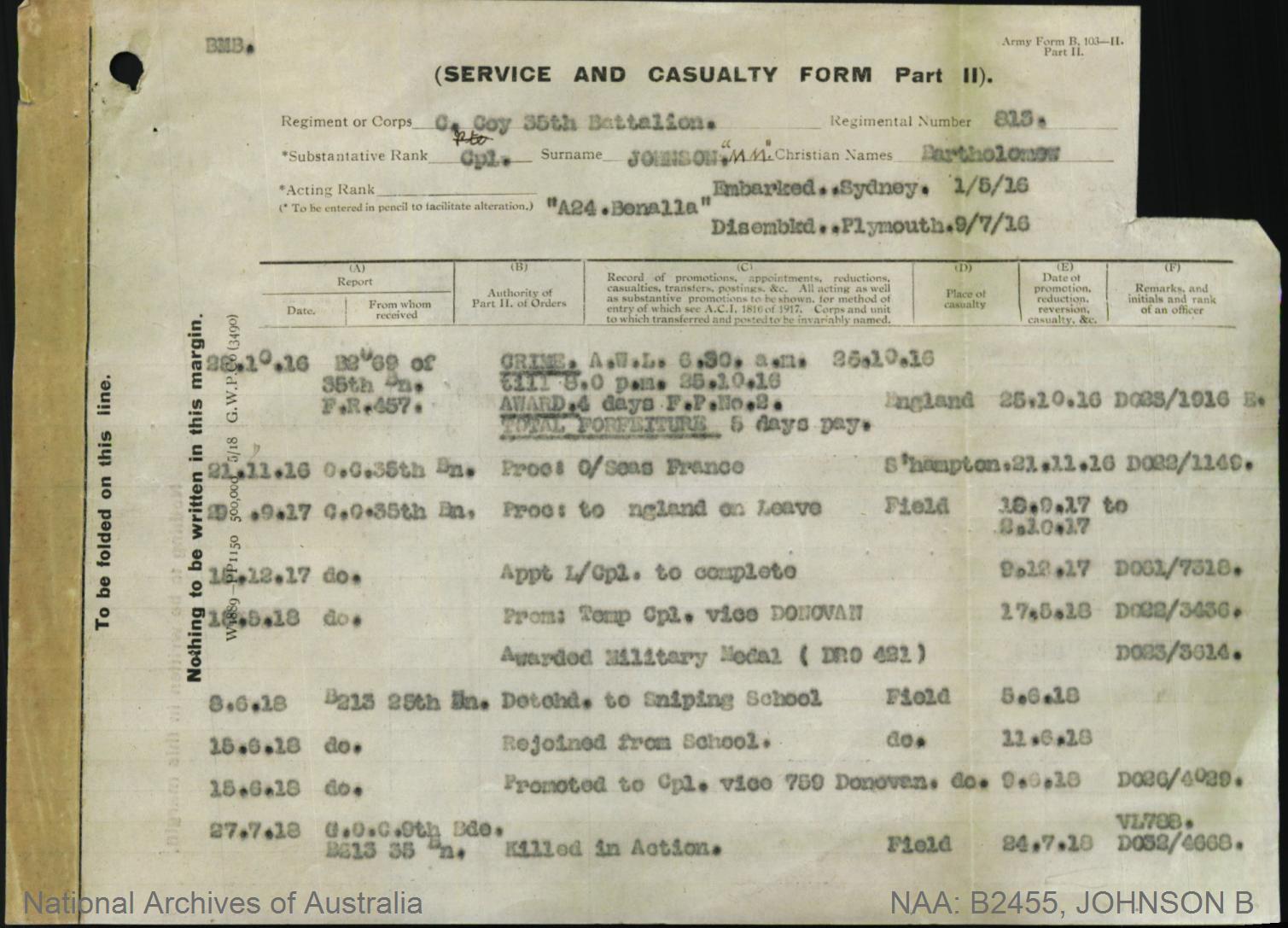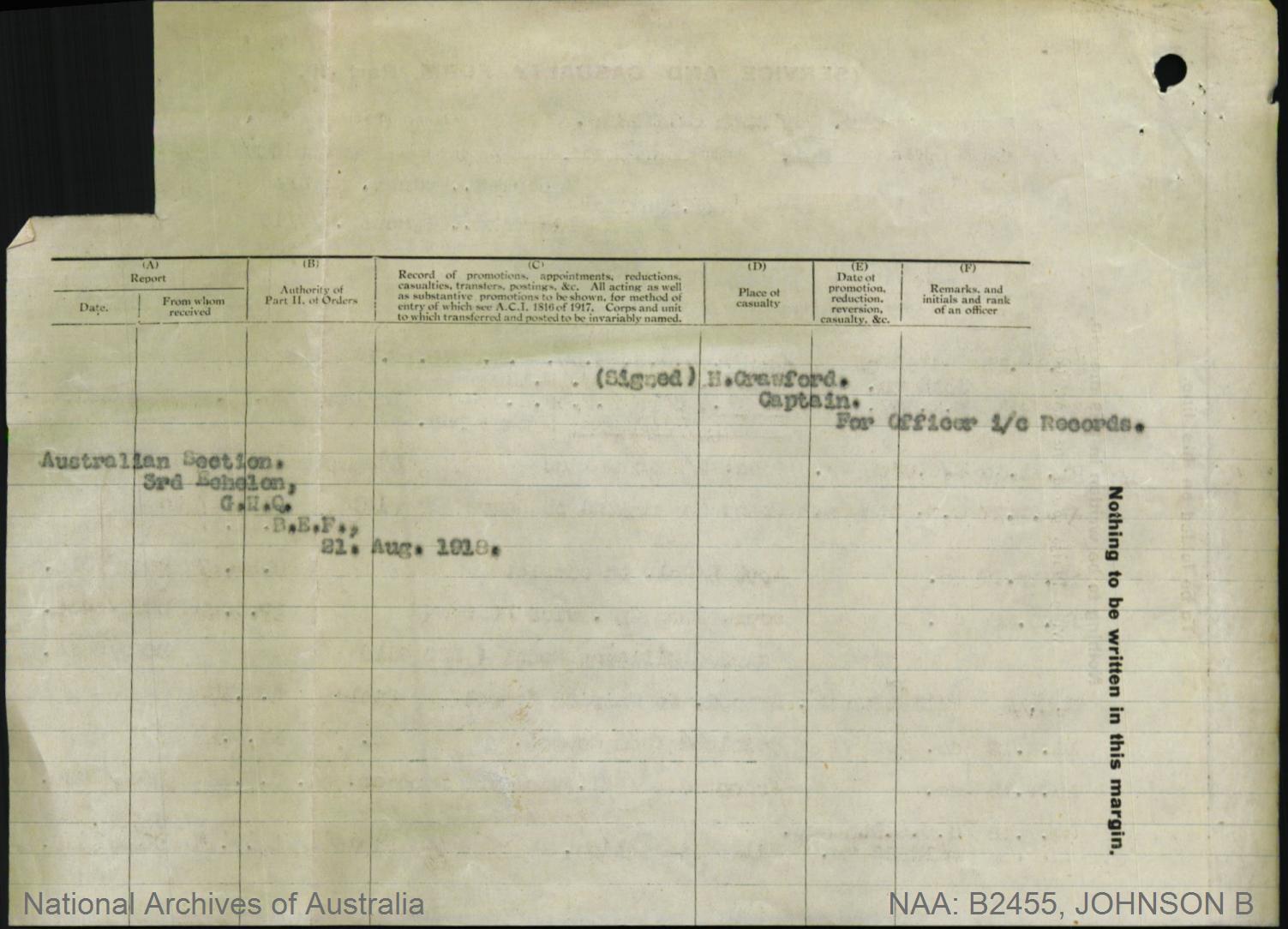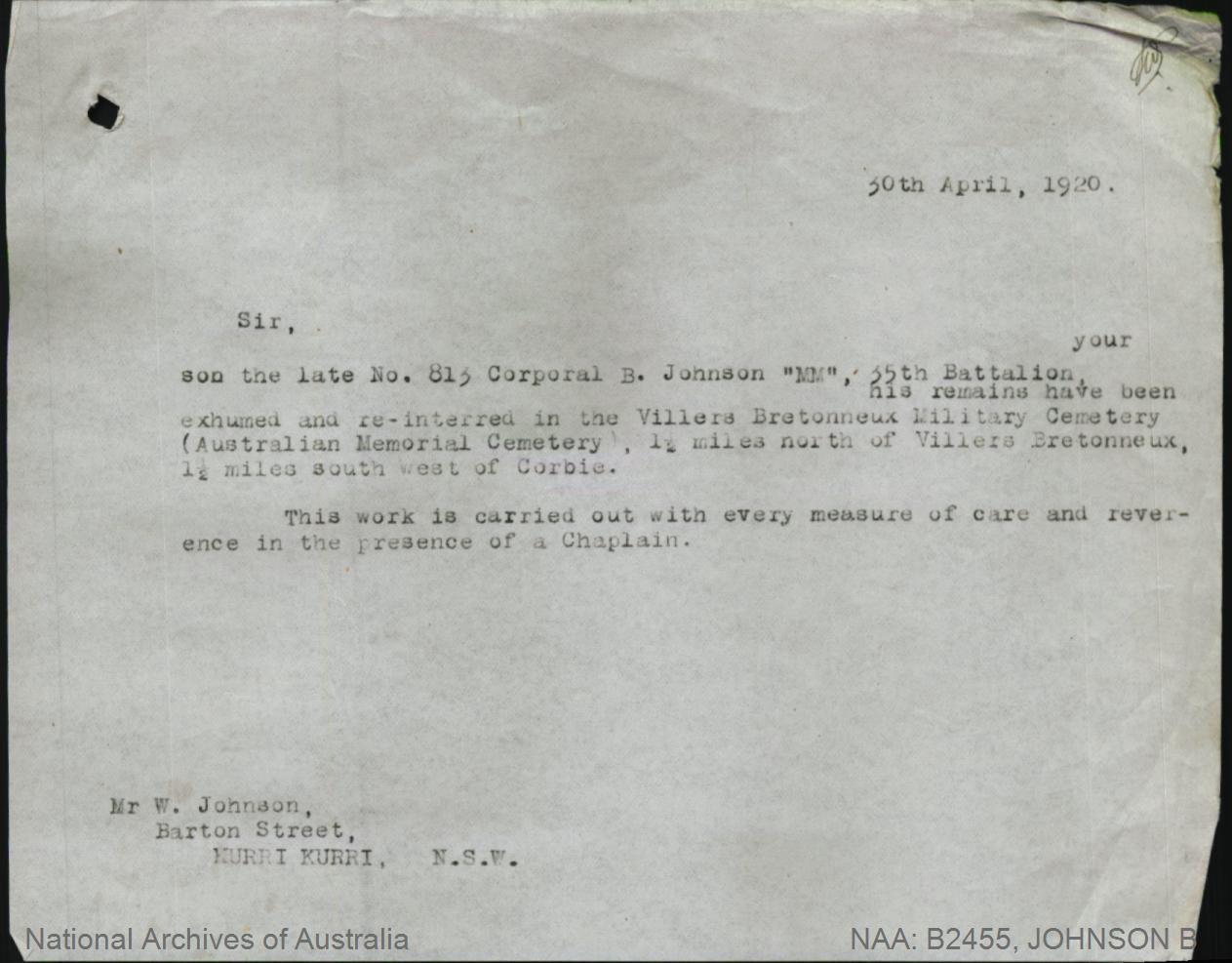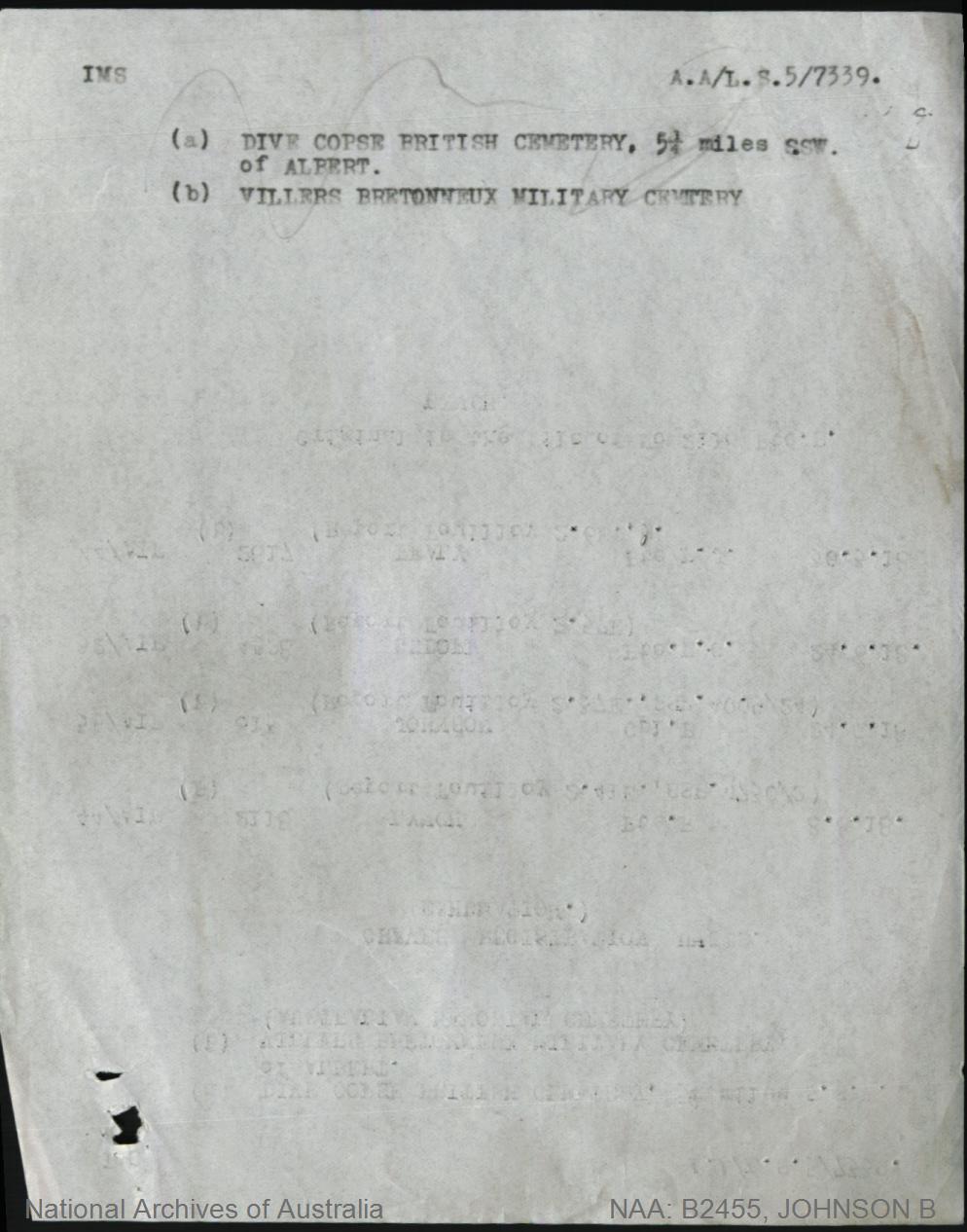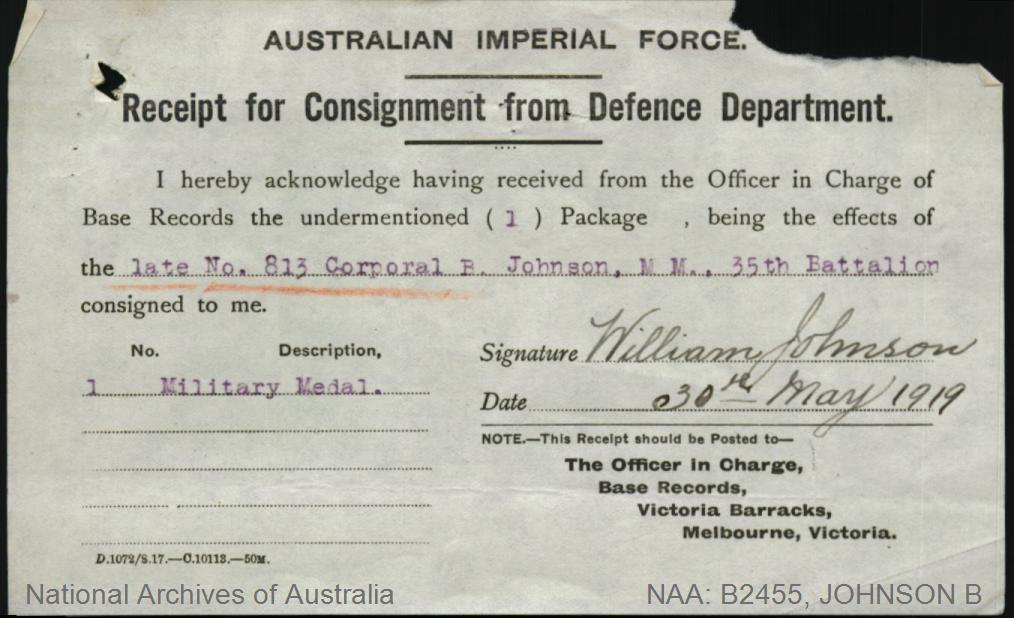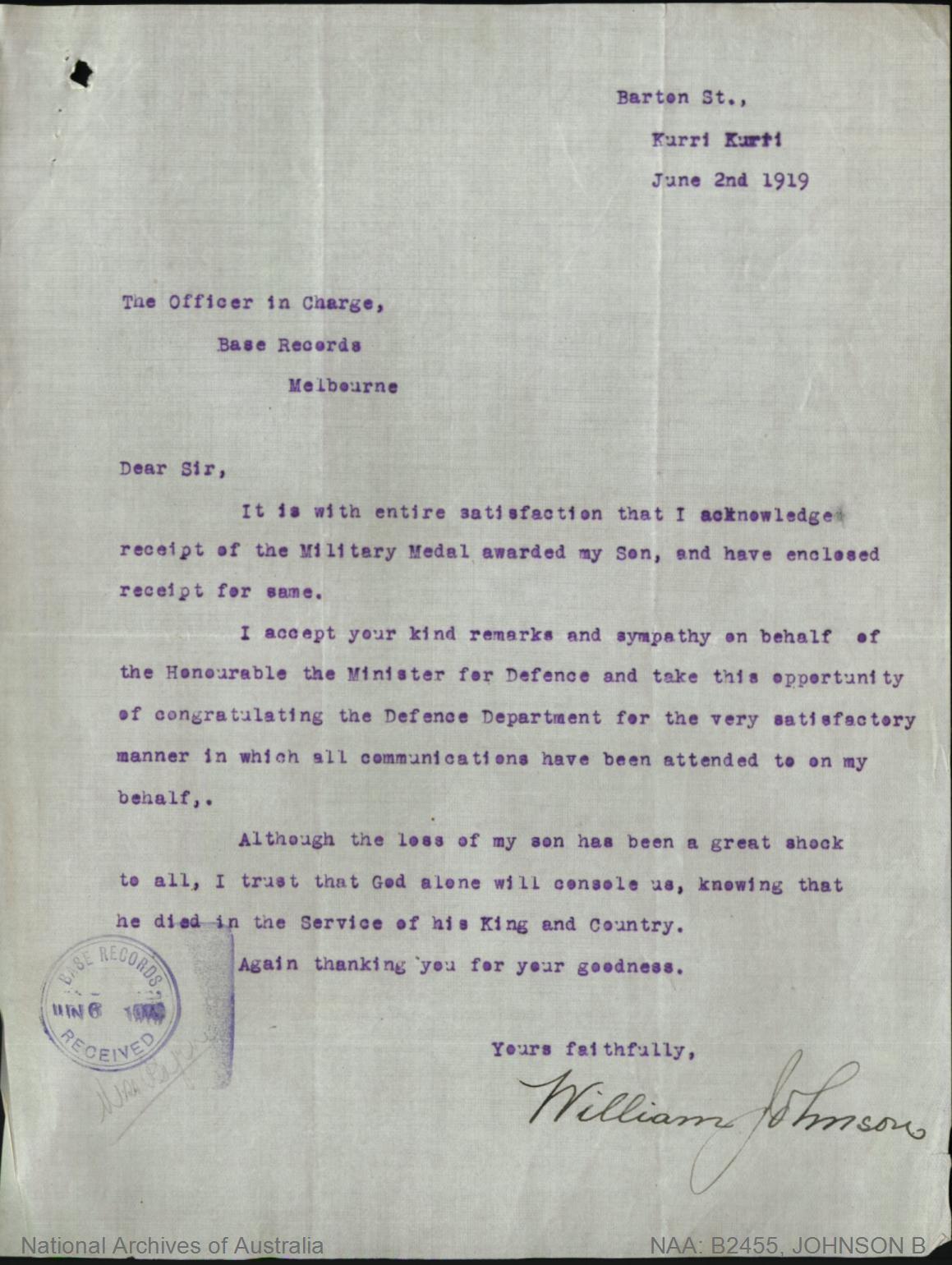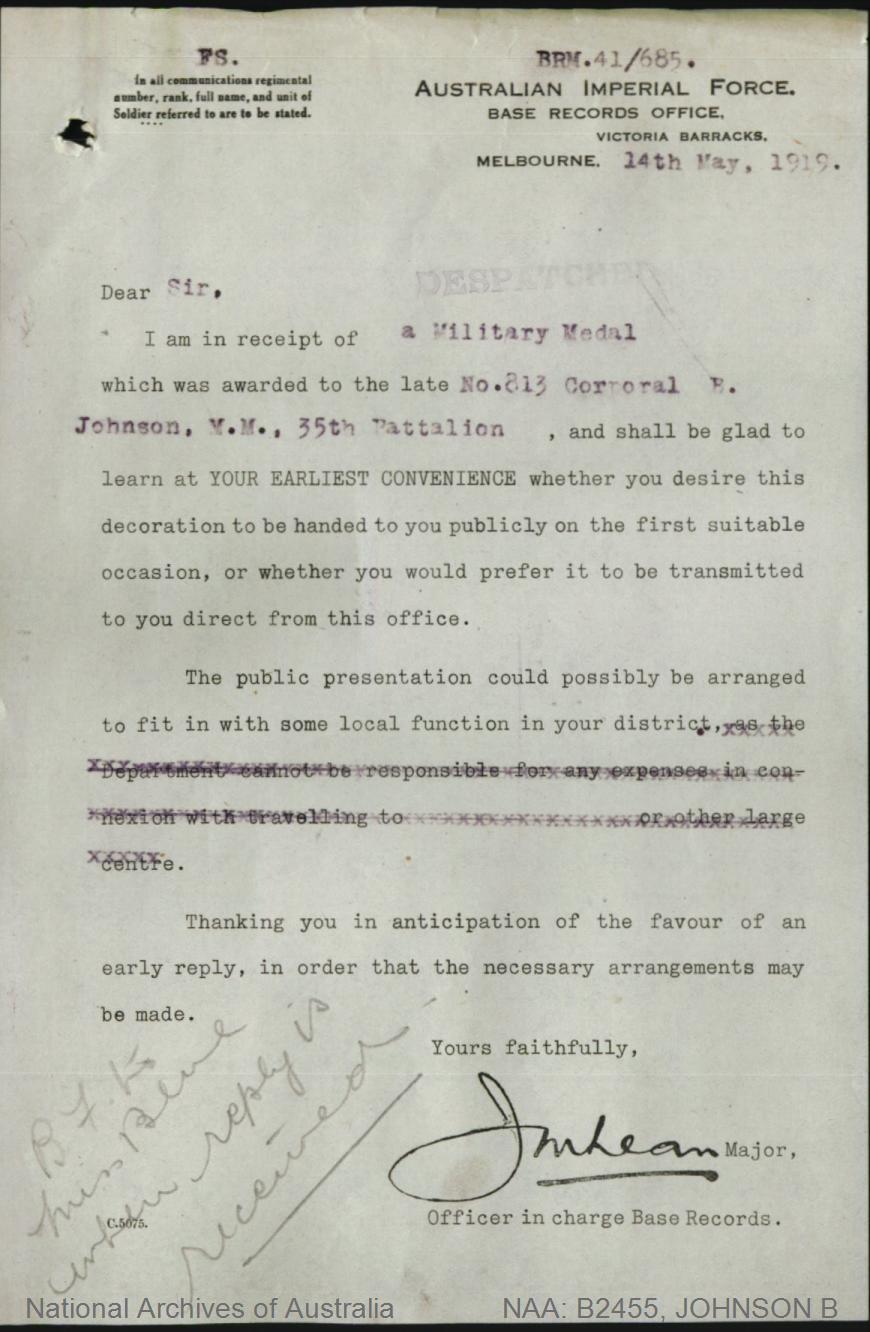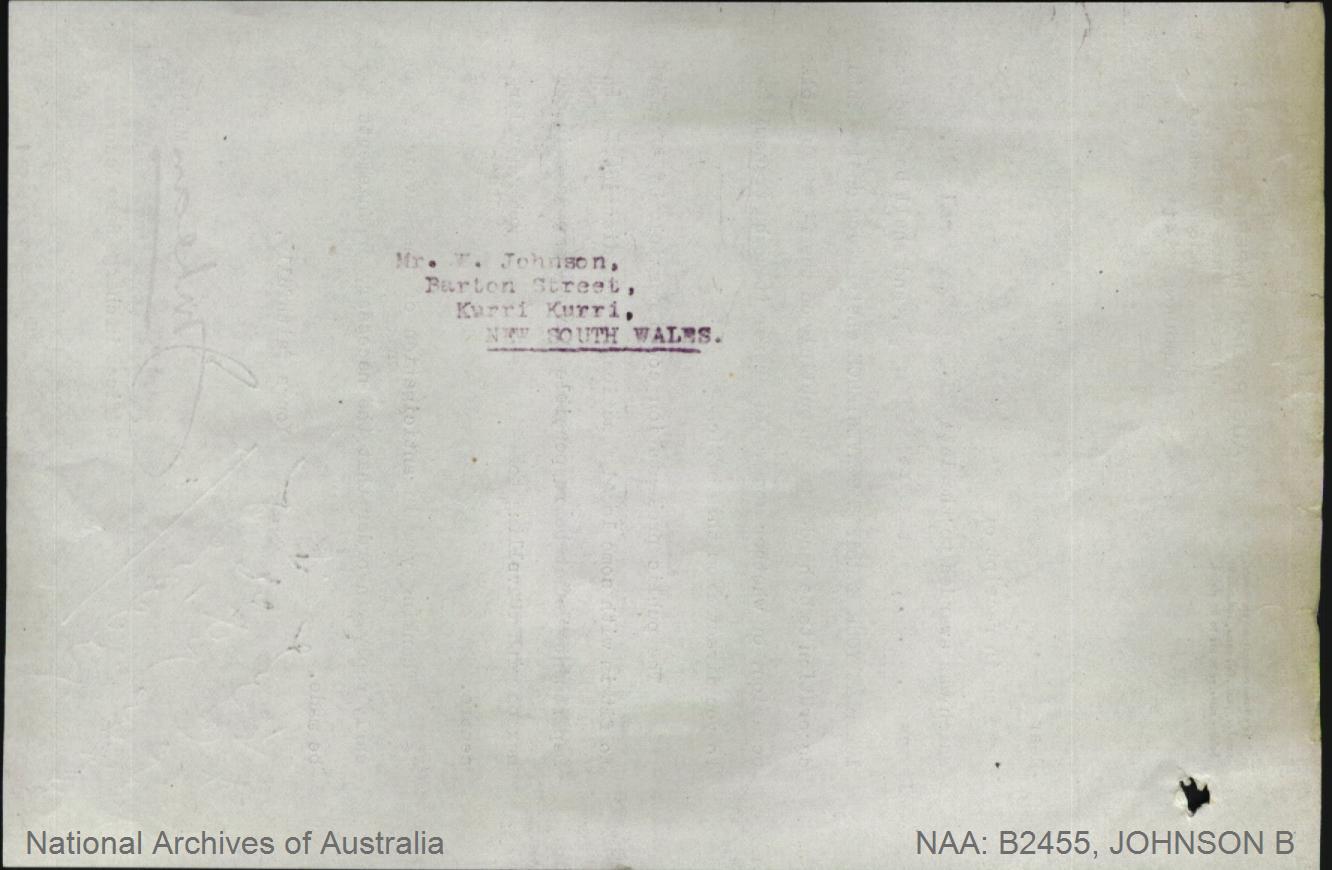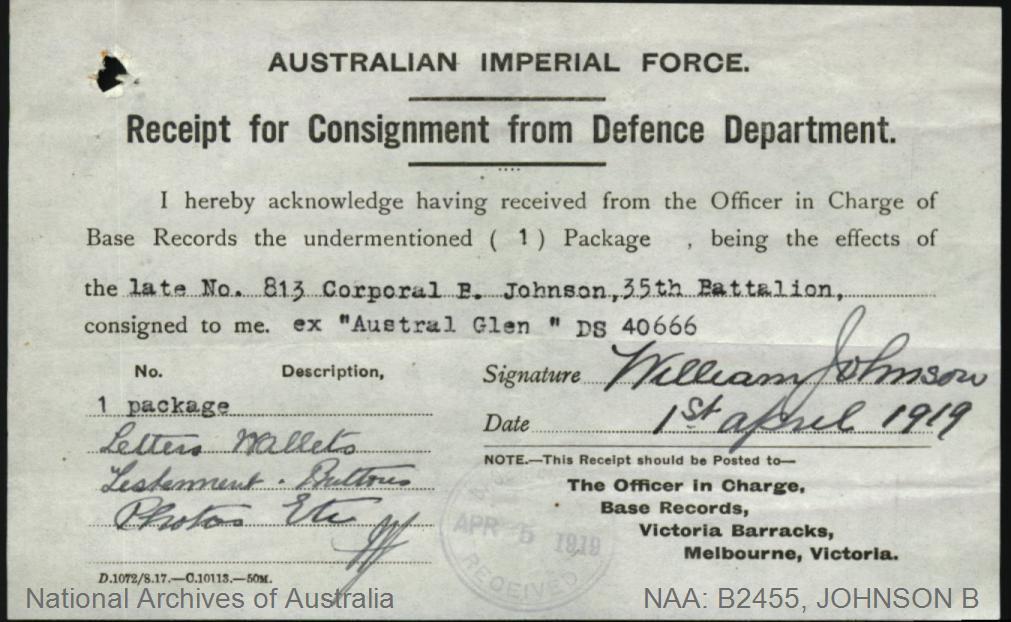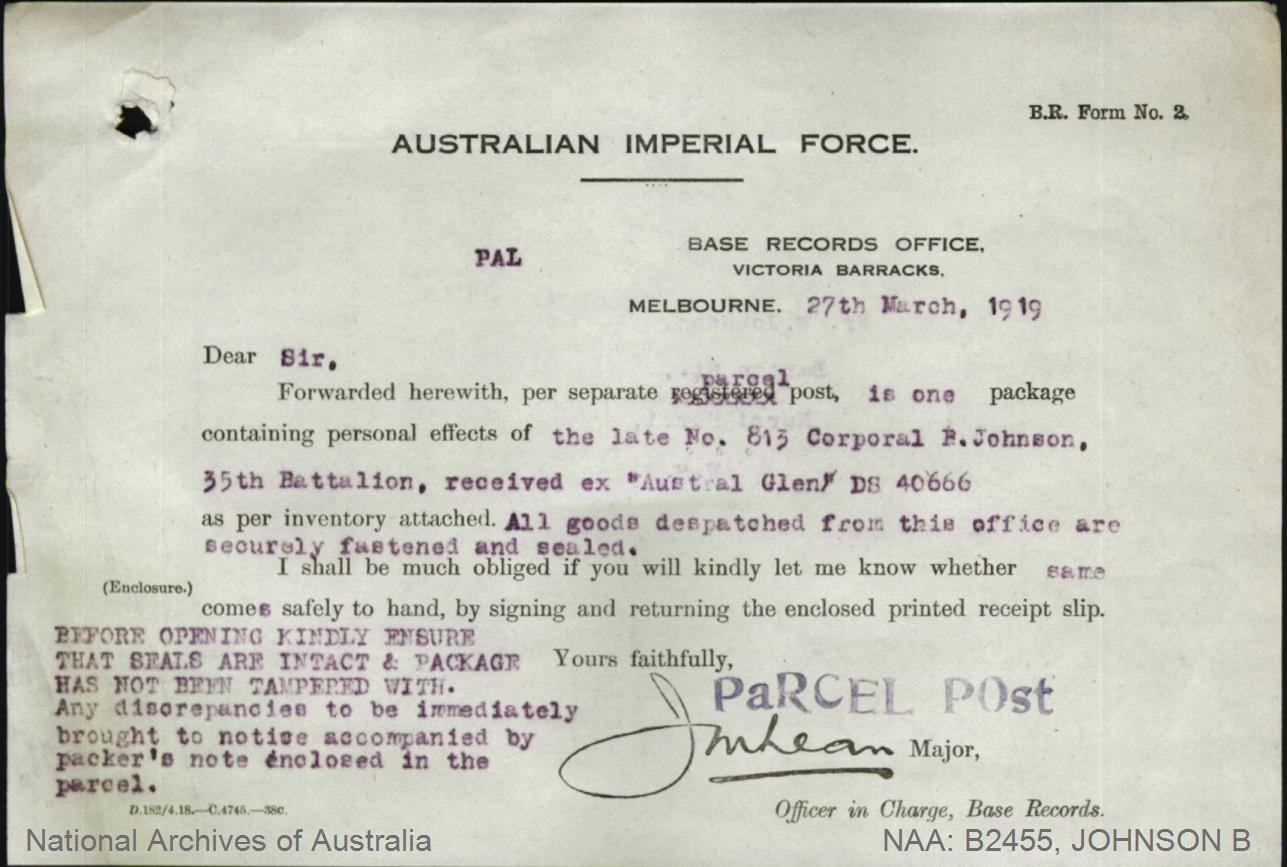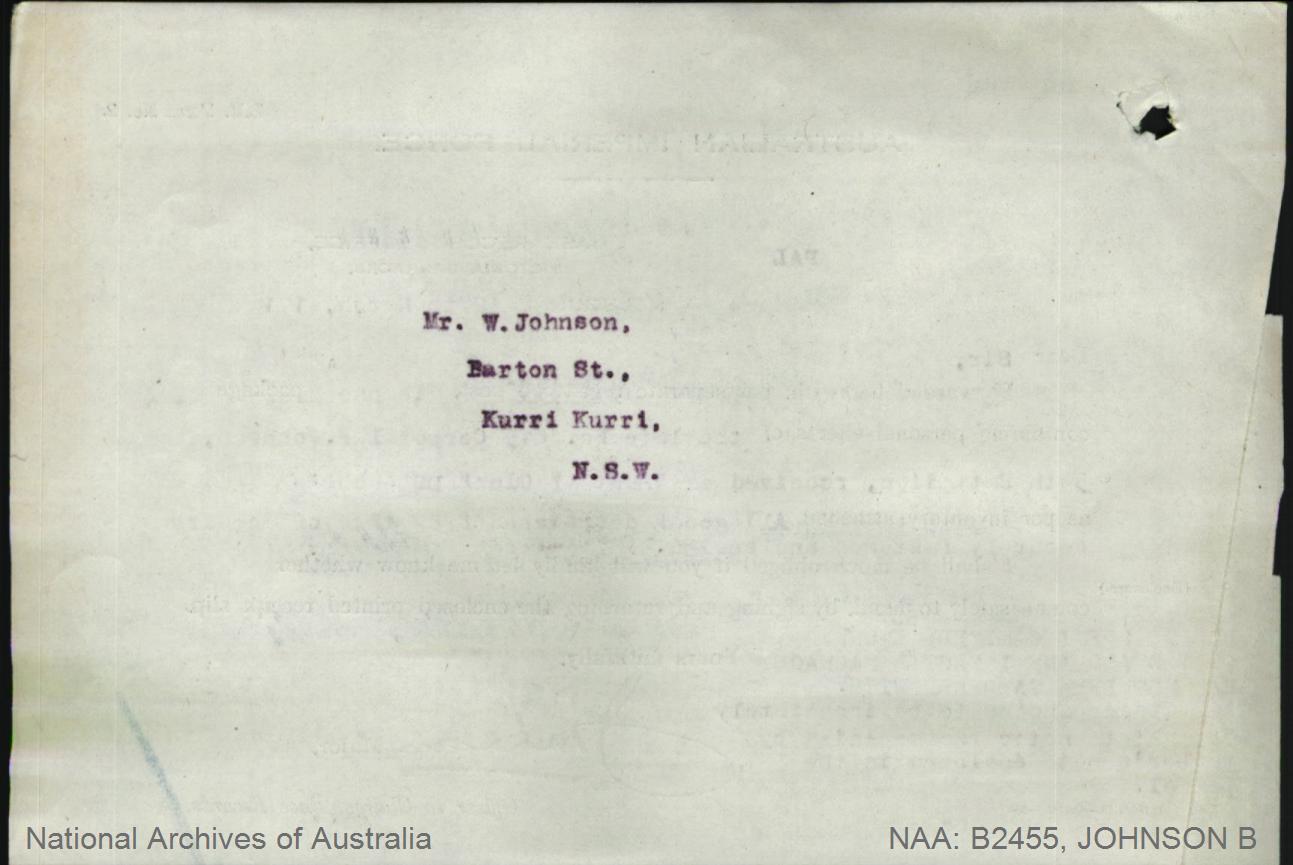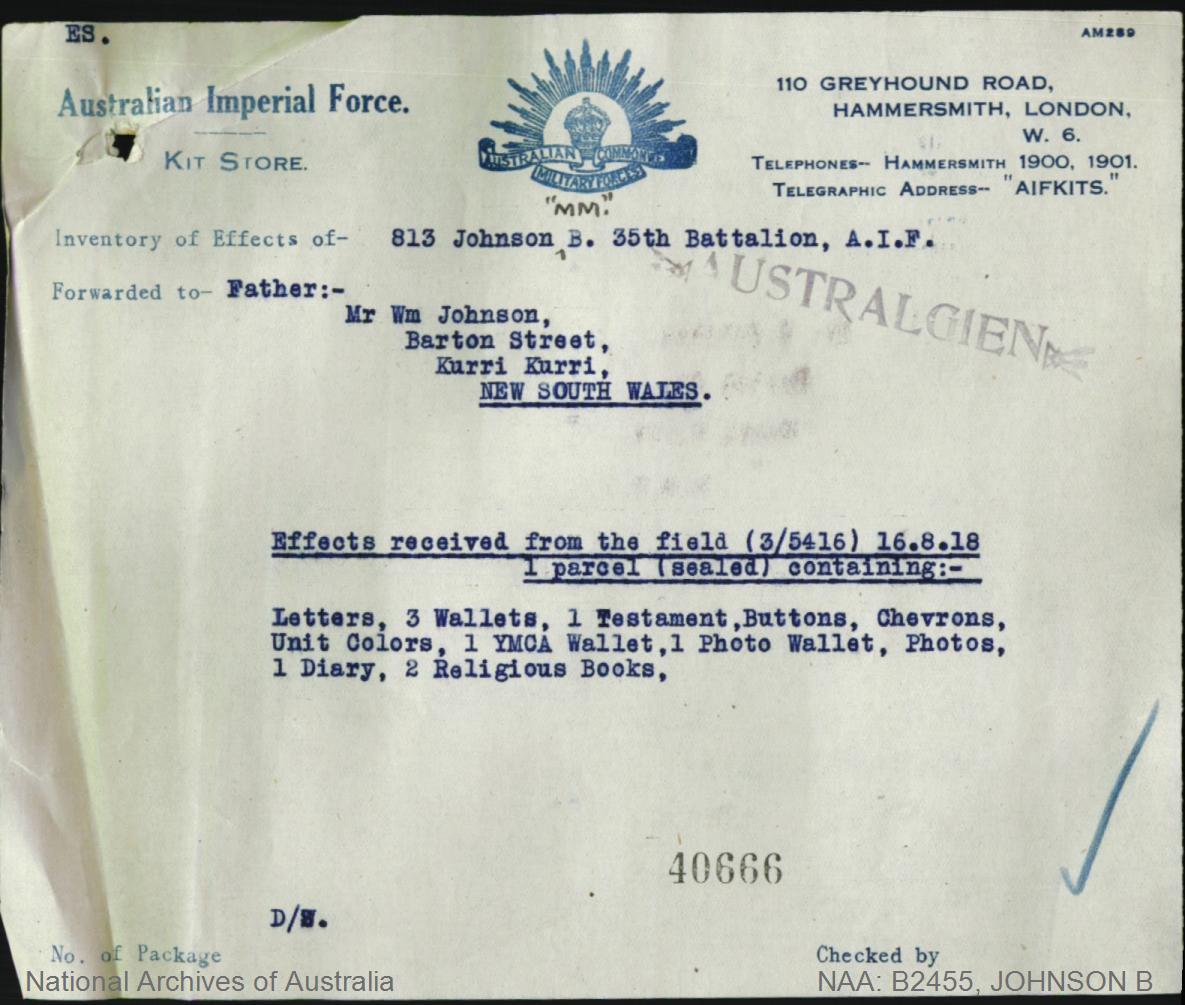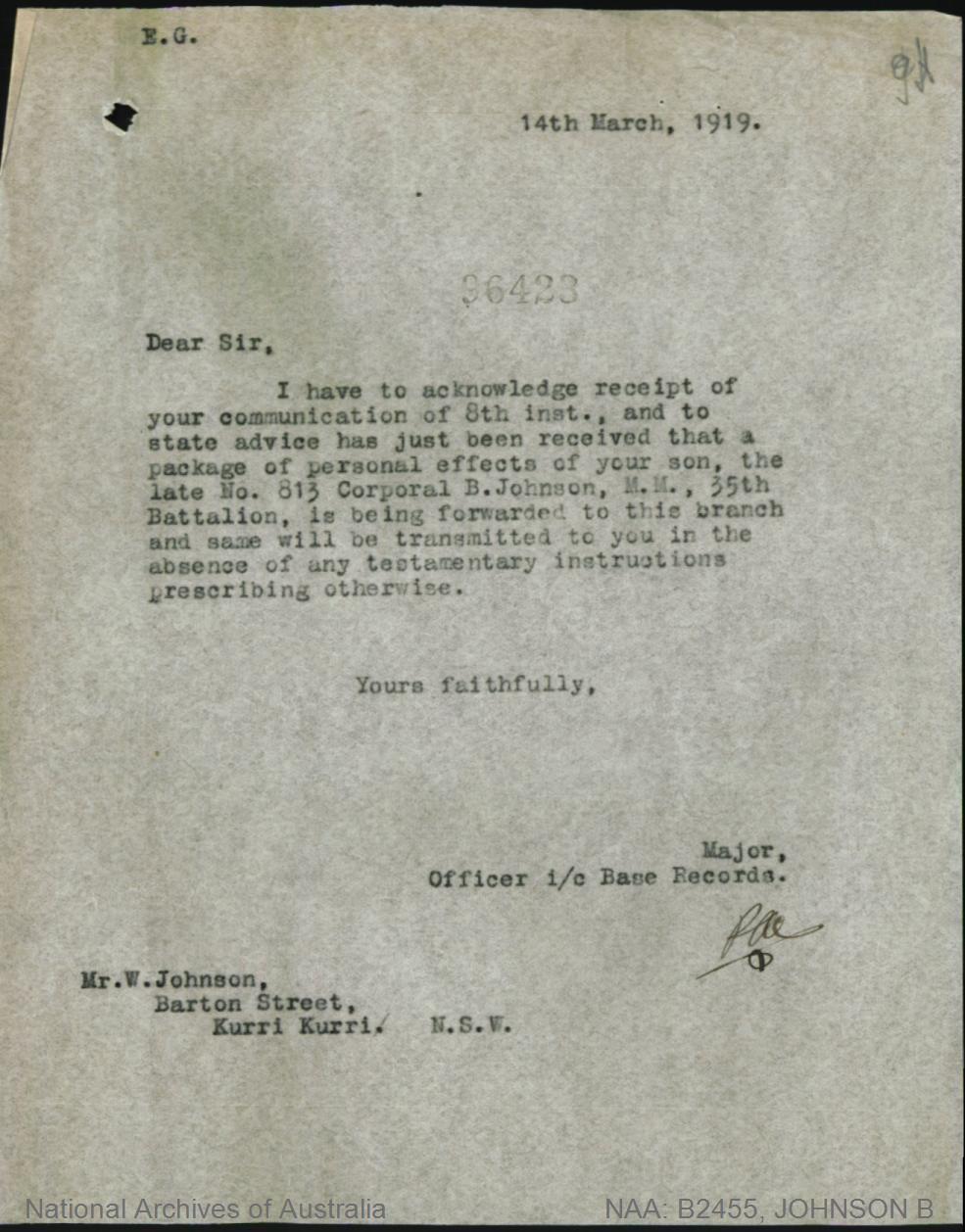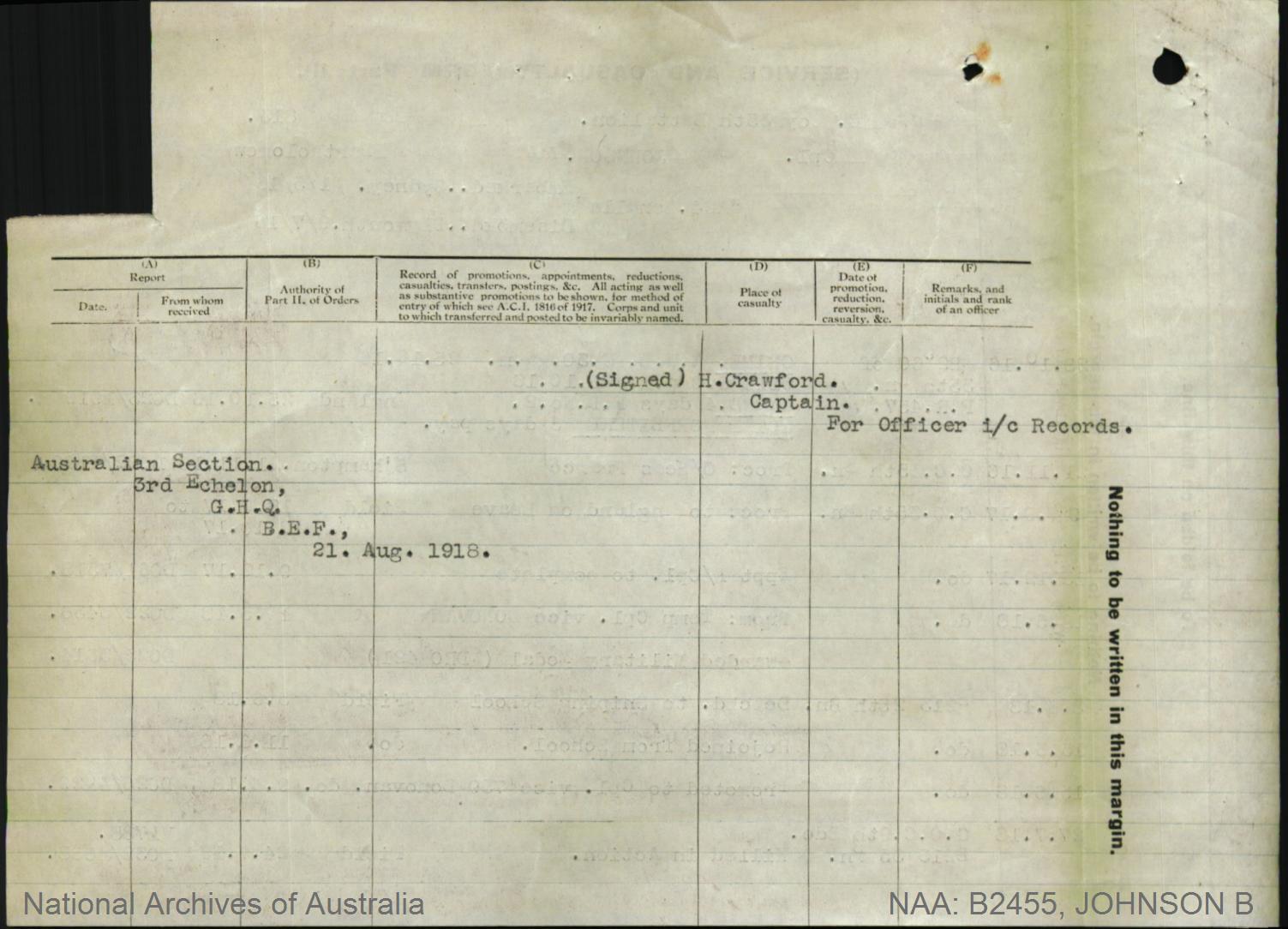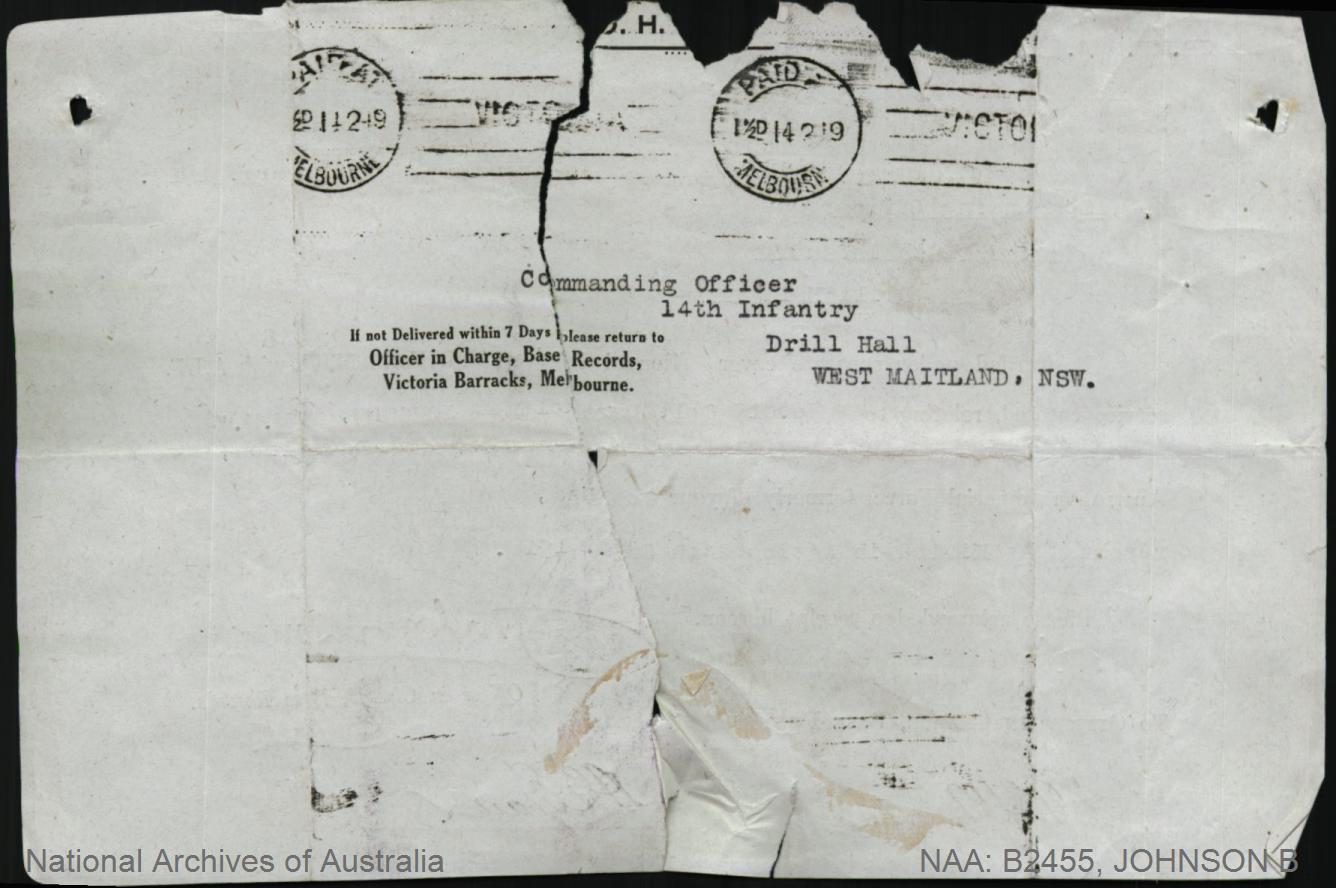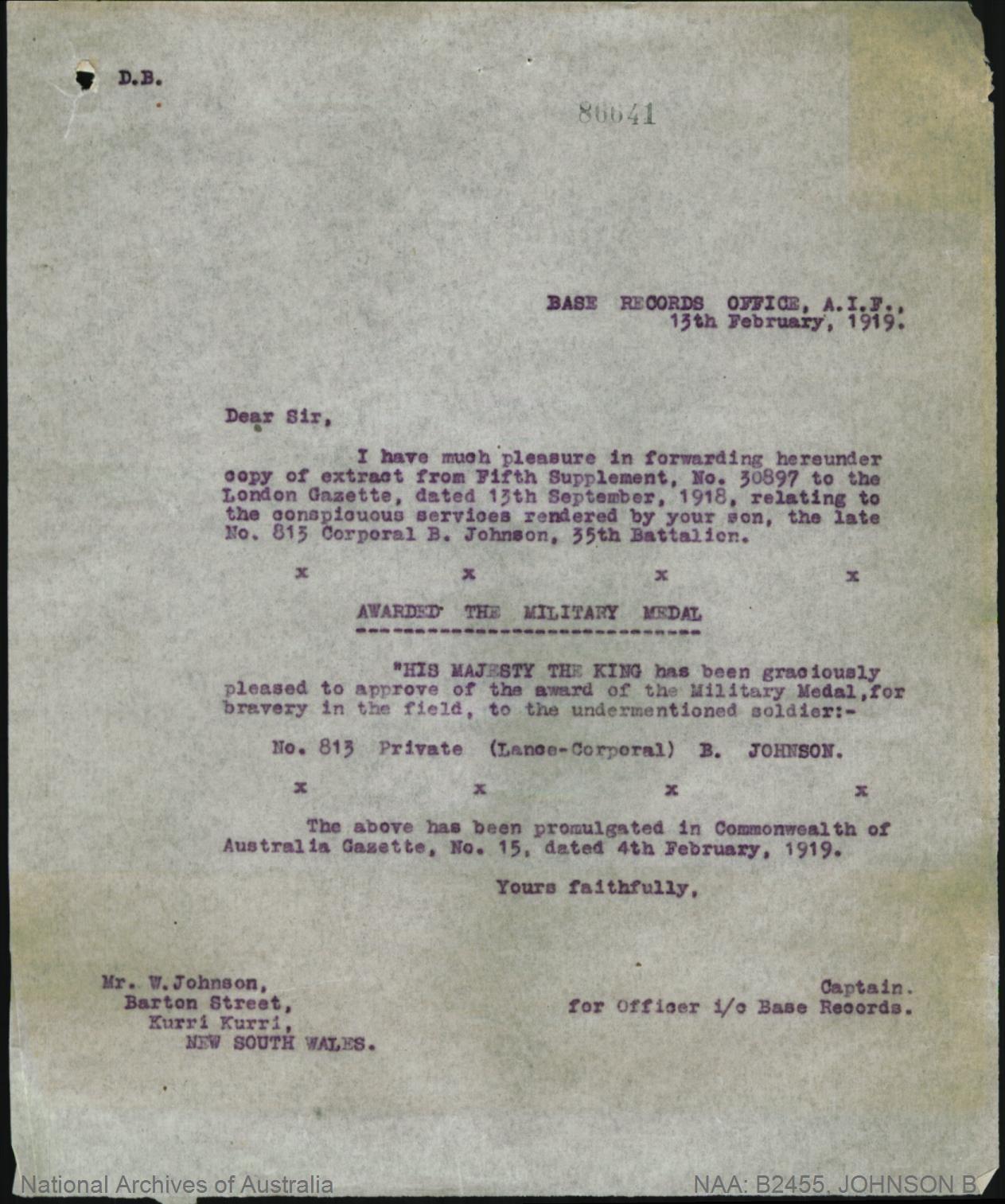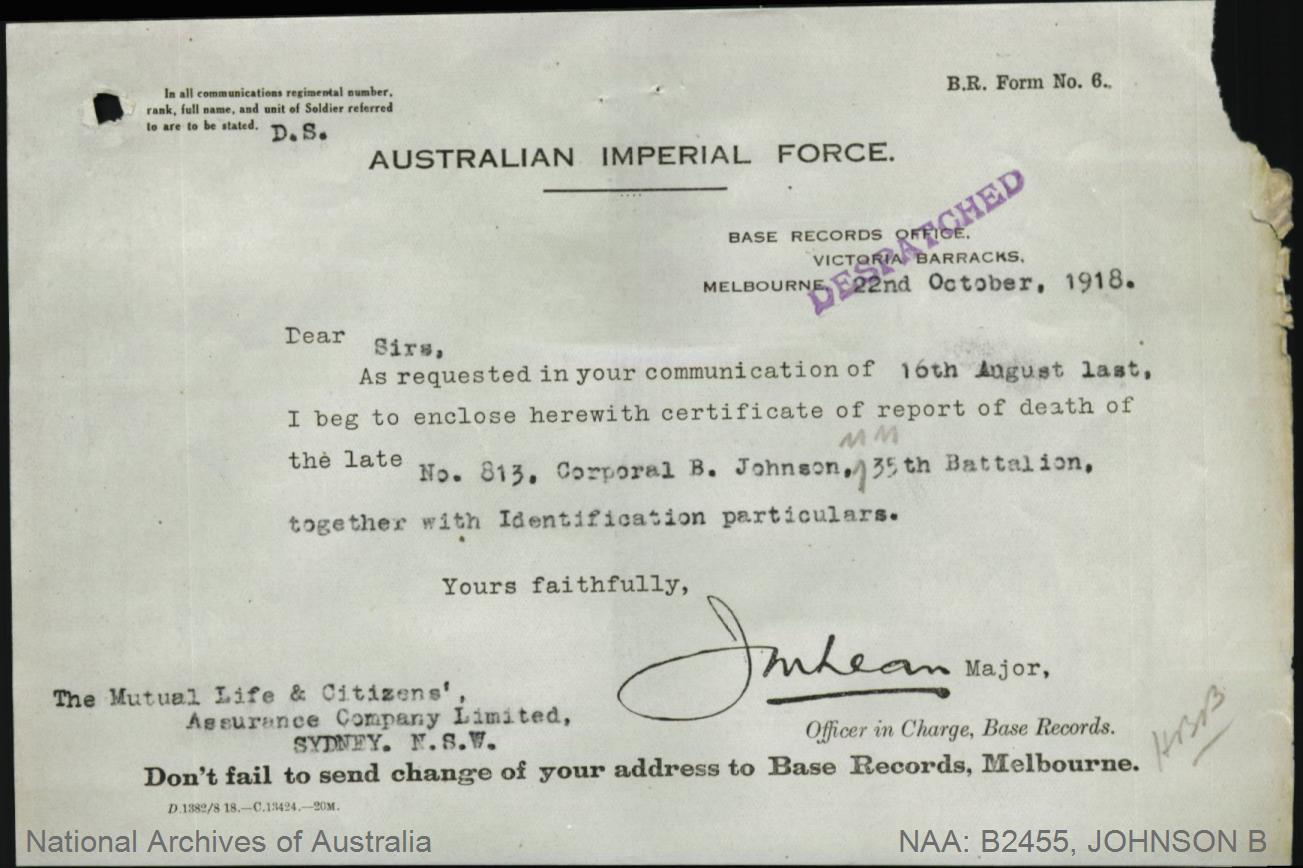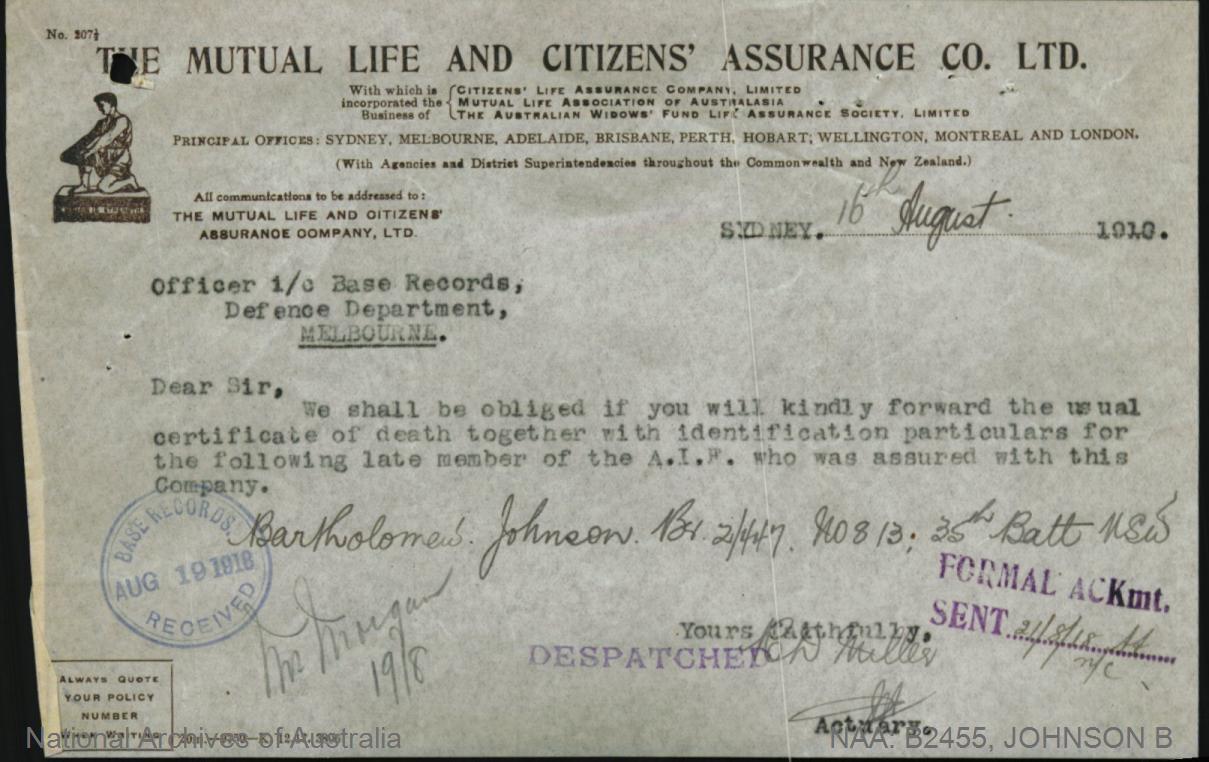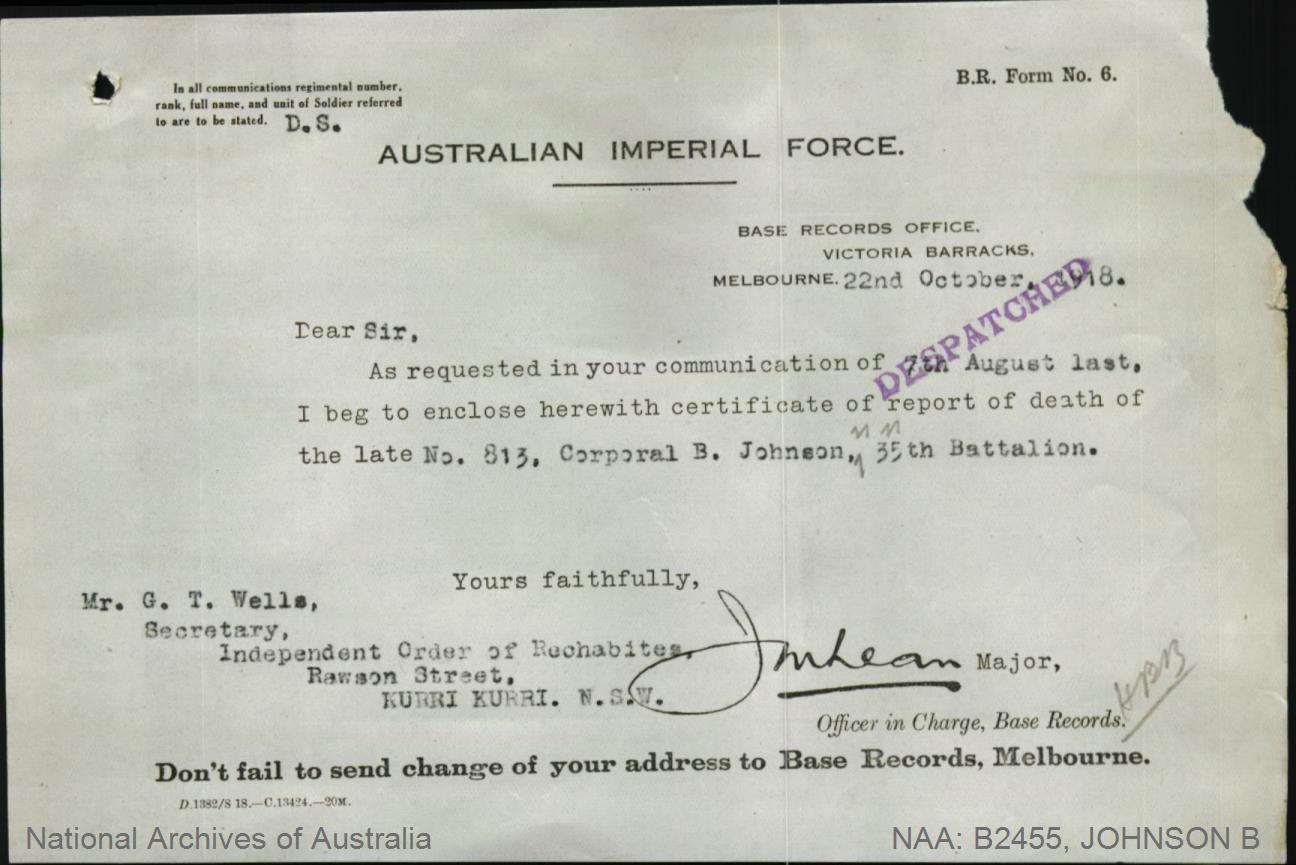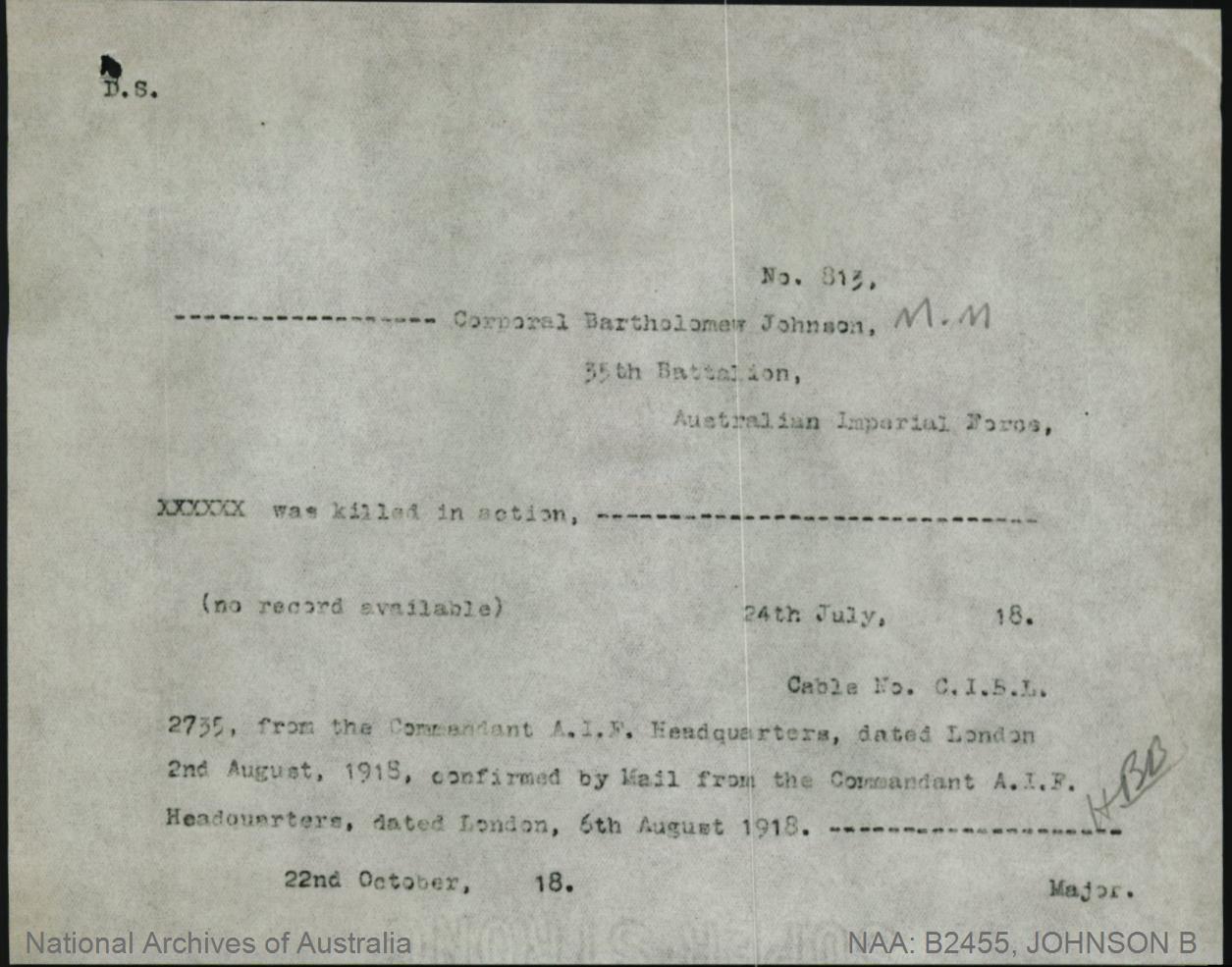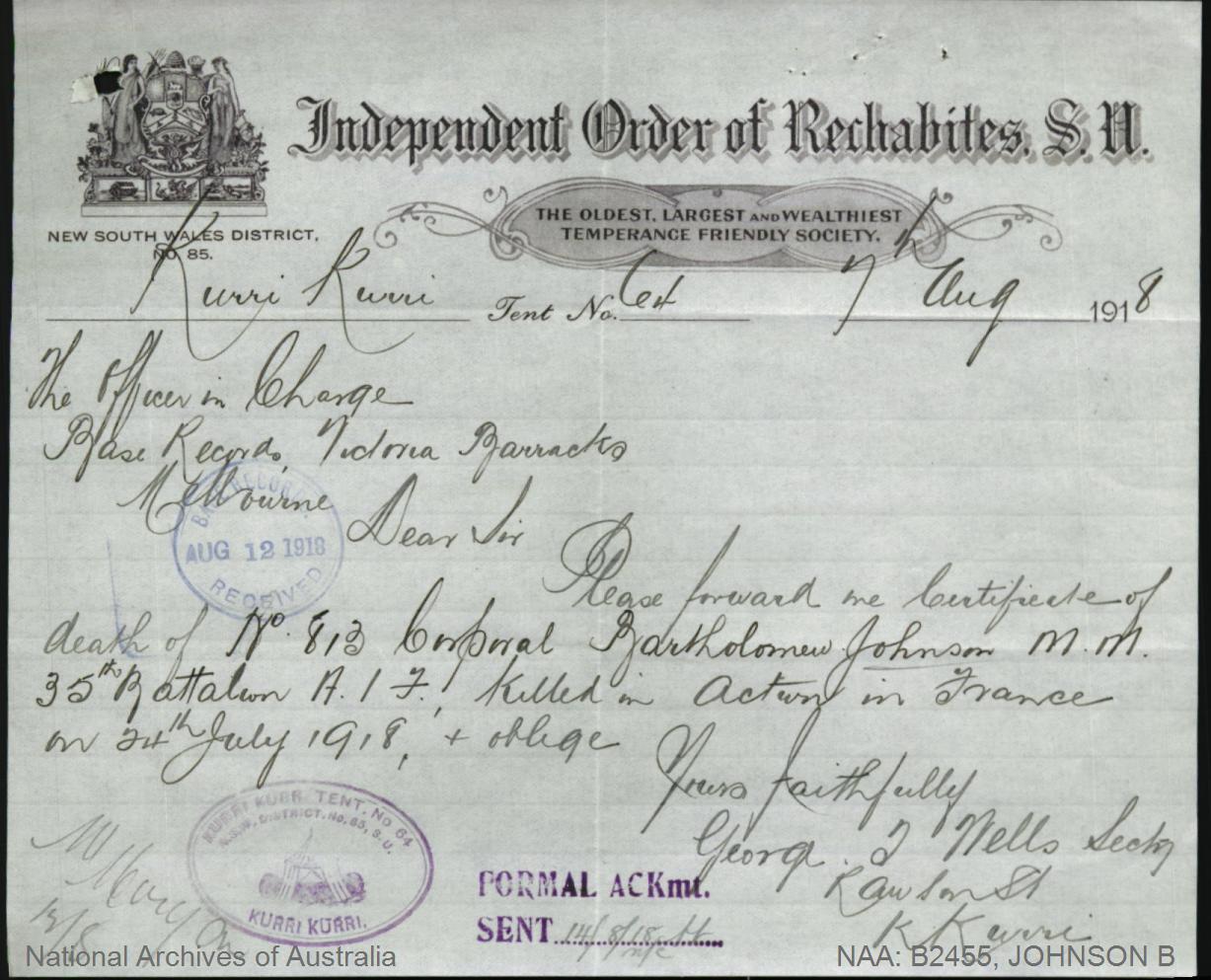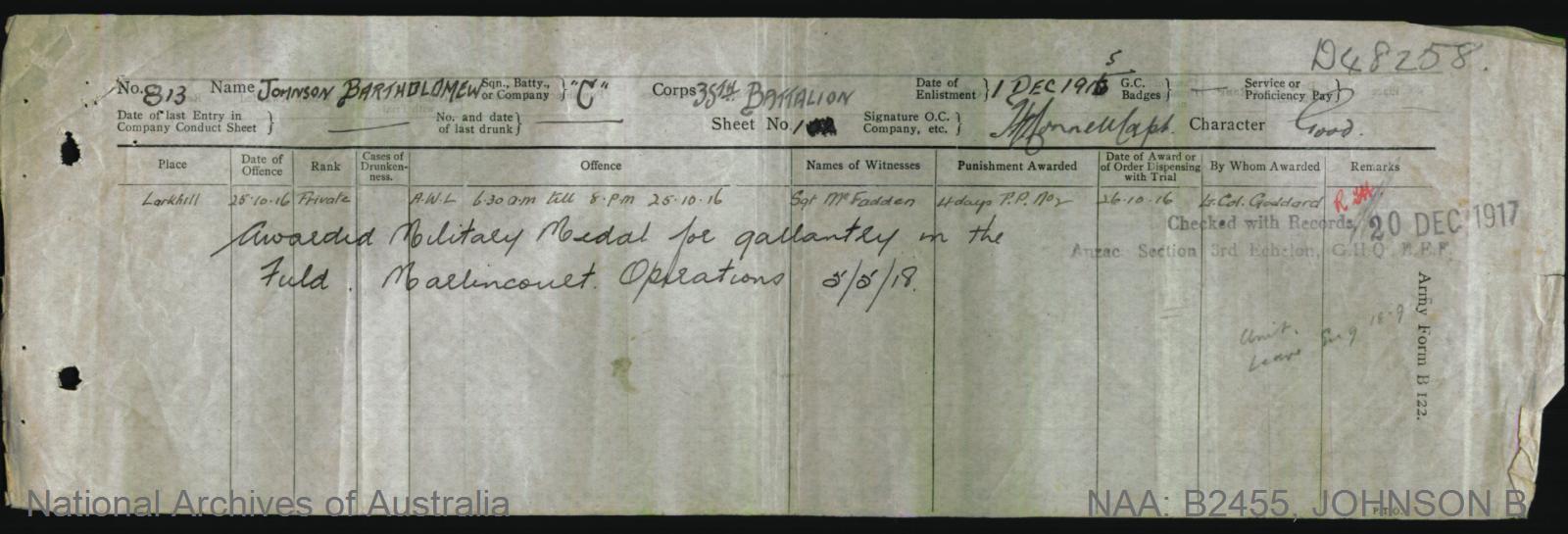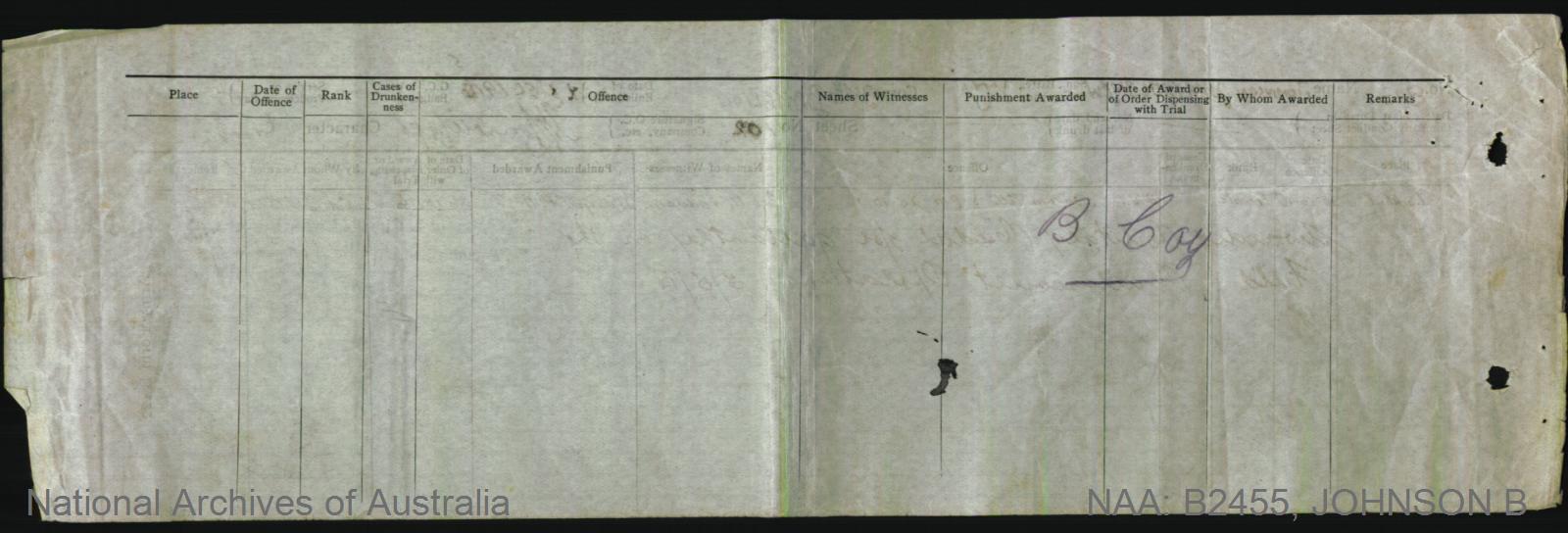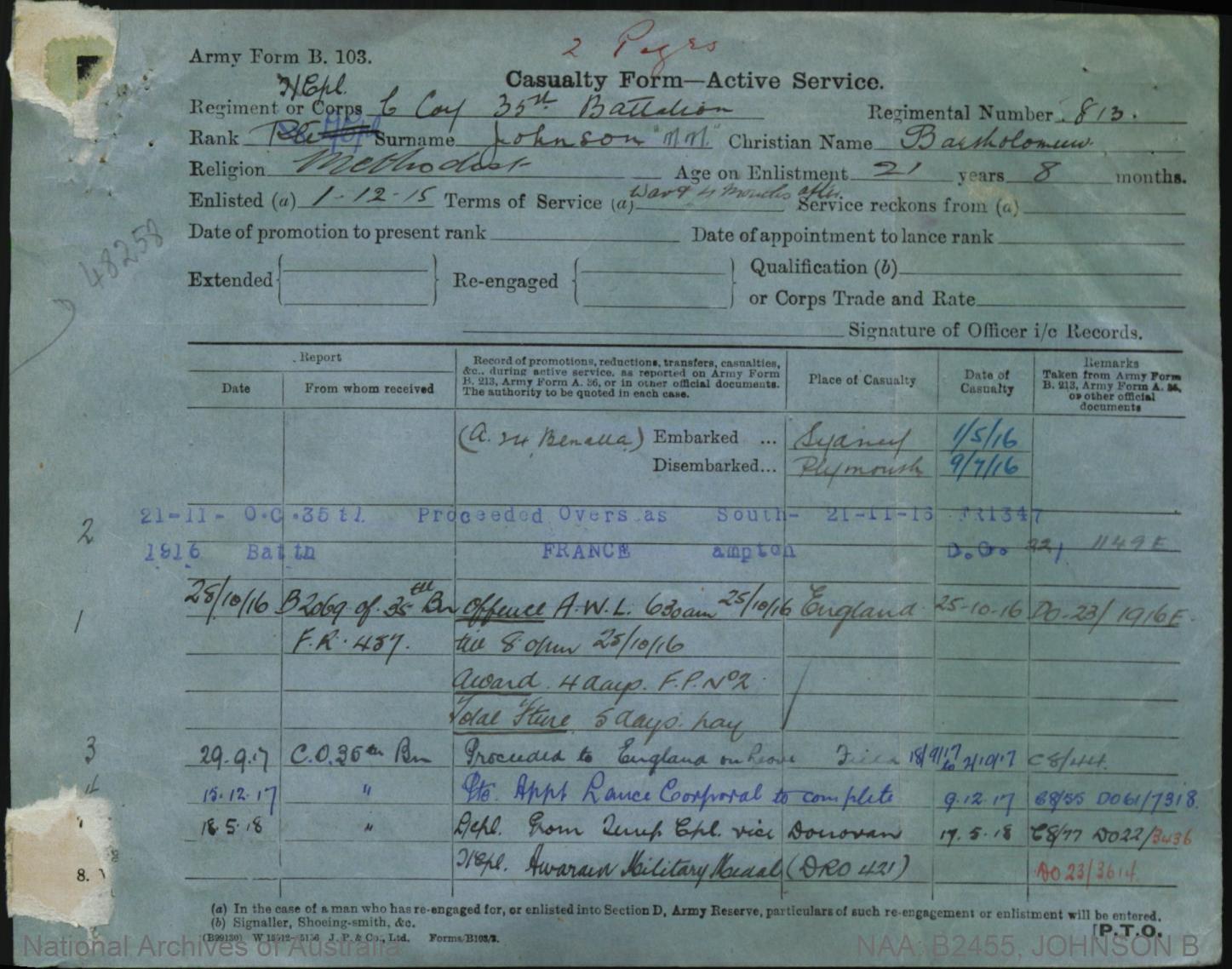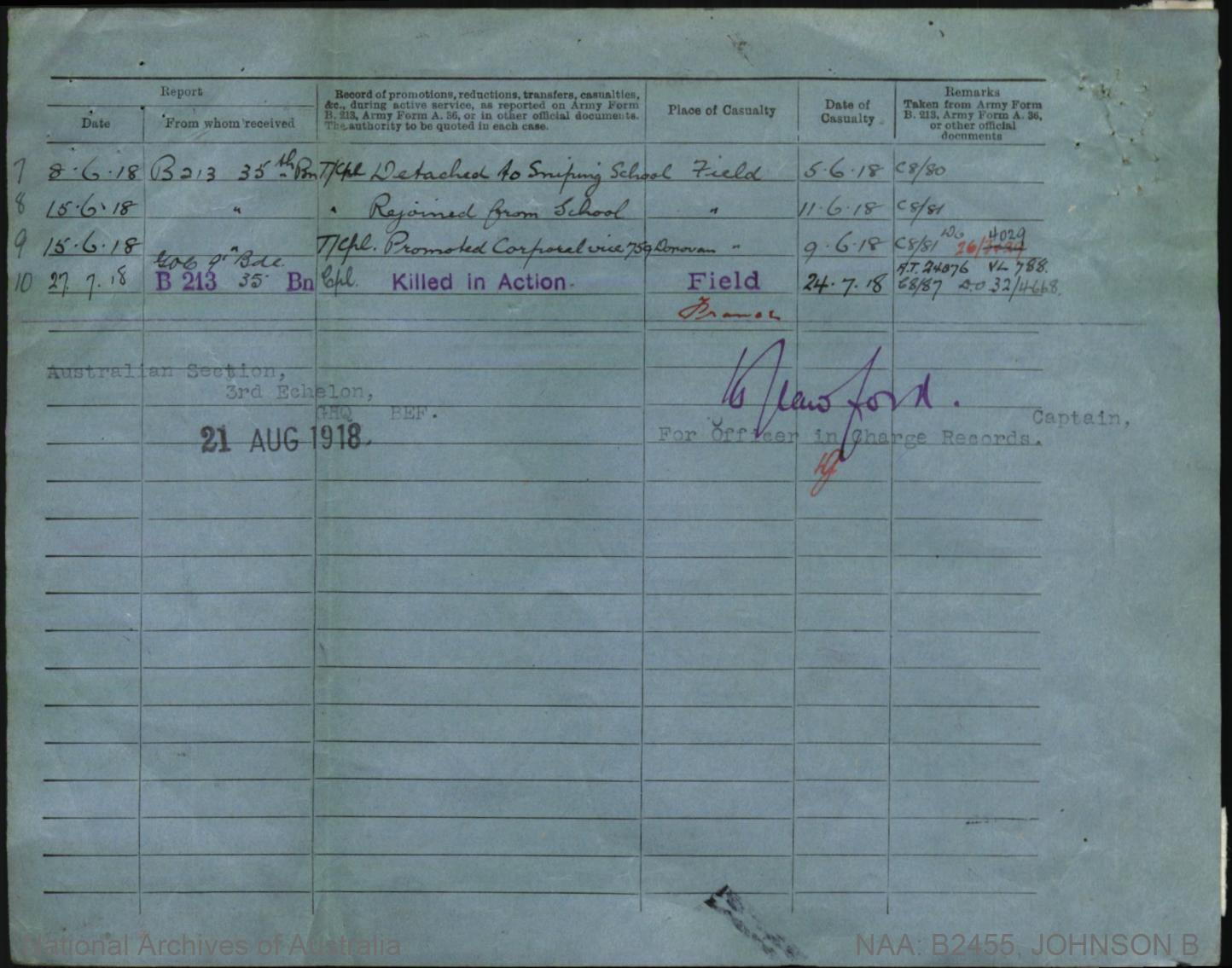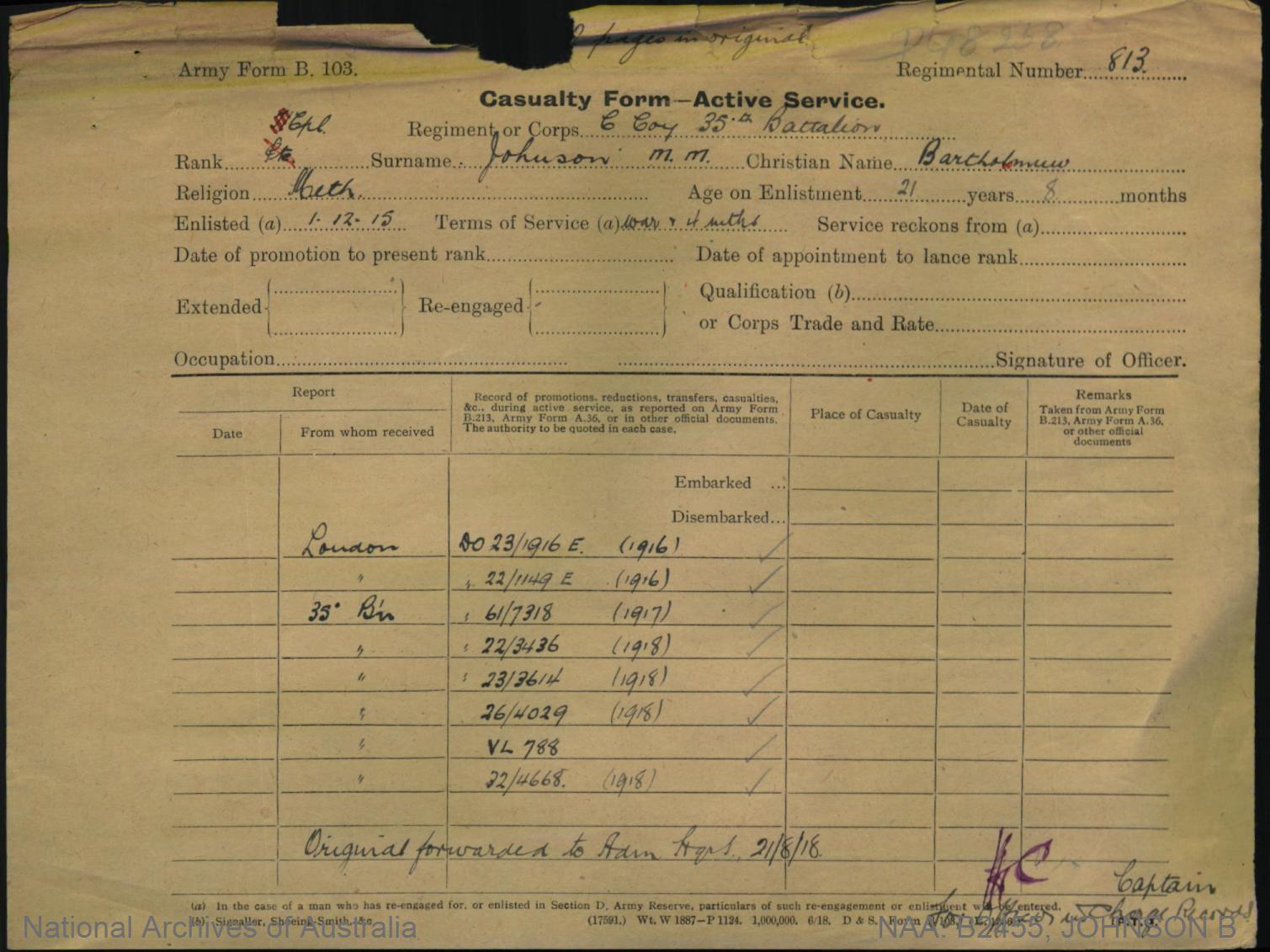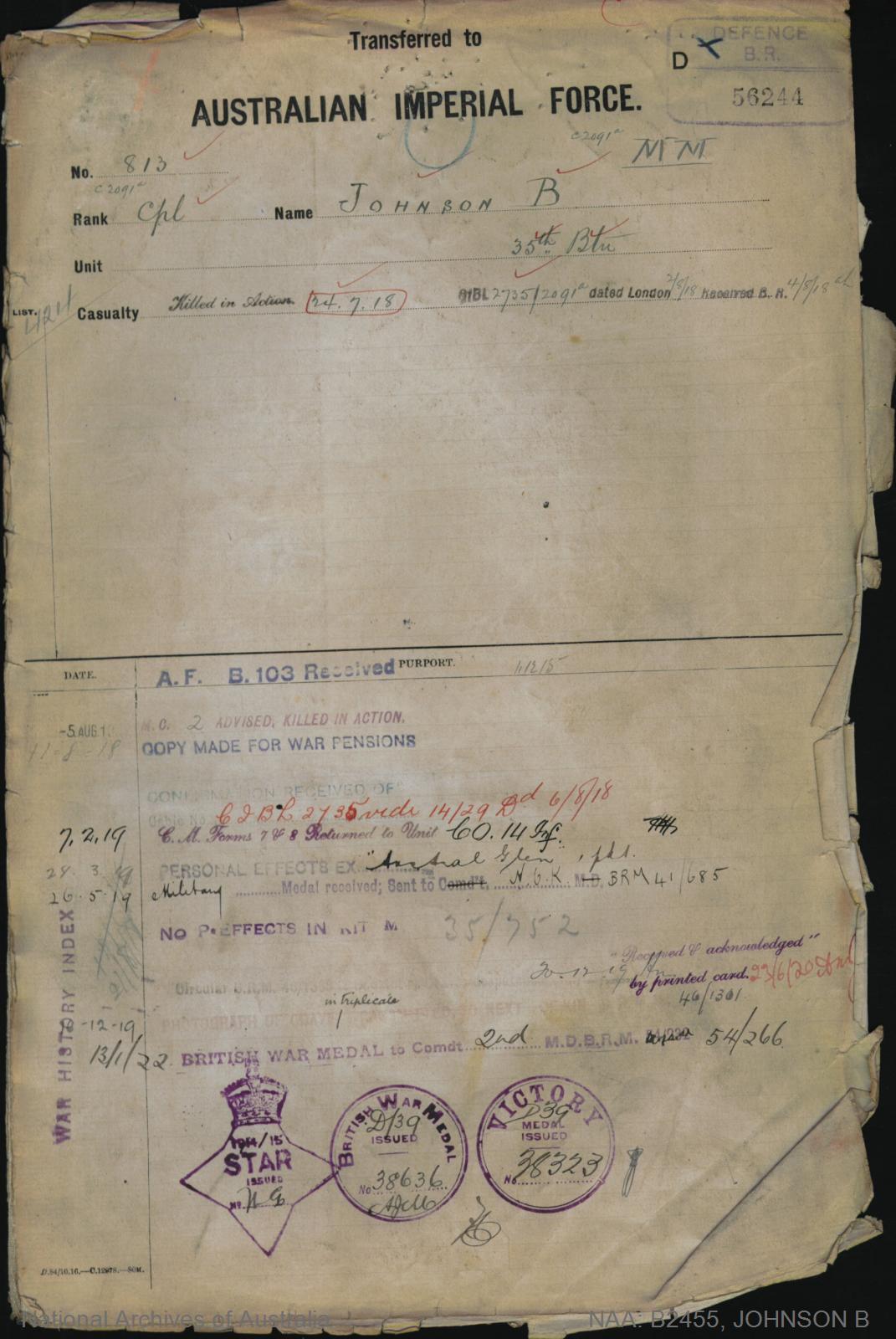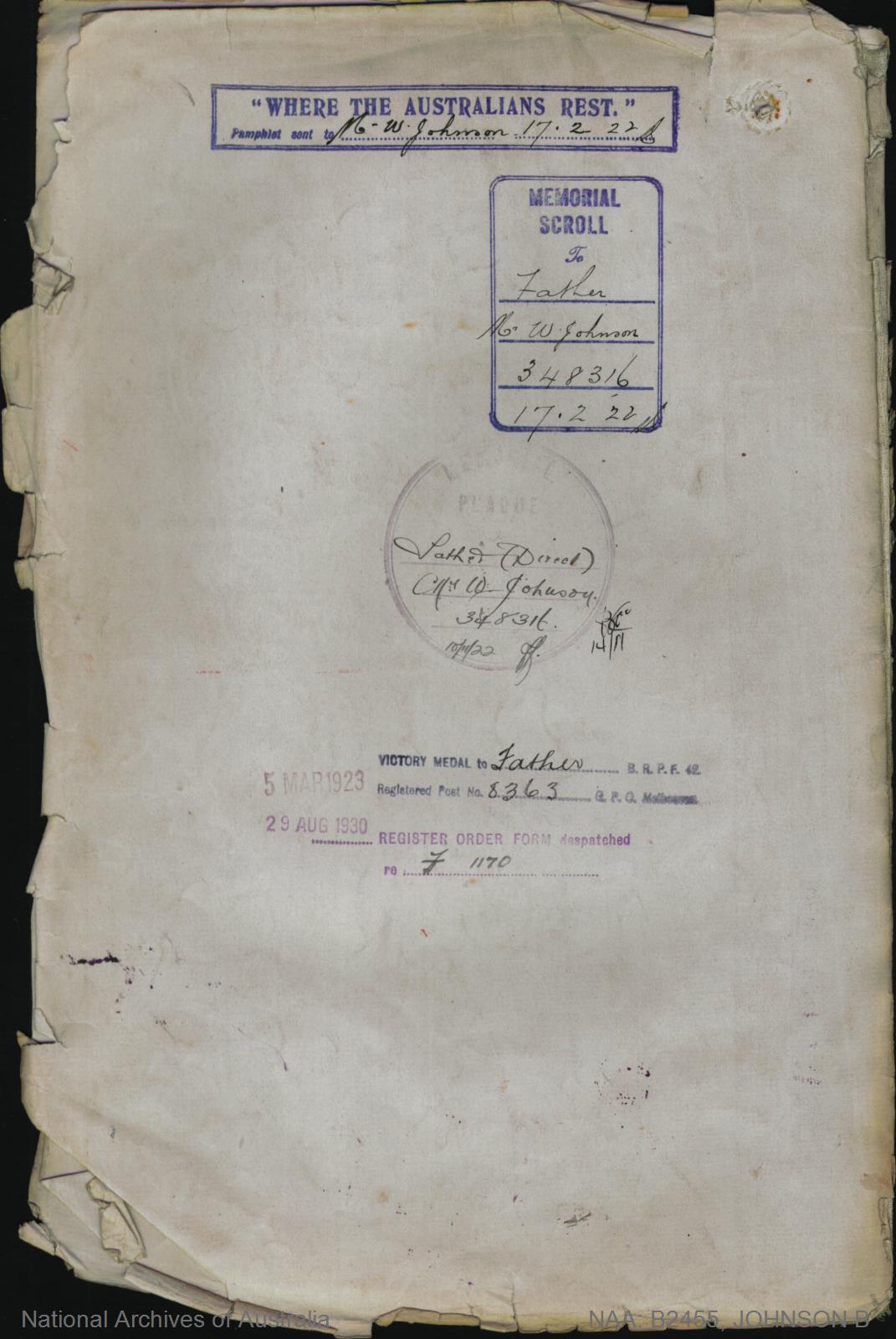
34th BATTALION AIF
Lance Corporal: 806 William Adolphus JOHNSTON. M.M.
Born: 9th February 1894. Wollombi, New South Wales, Australia. Birth Cert:37687/1894.
Married: 23rd August 1919. Wallsend, New South Wales, Australia. Marriage Cert:8182/1919.
Wife: Bessie Rosina Johnston. nee: Hereld. (1897-1962) Died at Taree, New South Wales, Australia. Death Cert:15529/1962.
Died: 5th October 1987. Taree, New South Wales, Australia. Death Cert:108755/1987.
Father: John Johnston. (1864-1931) Born and Buried at Barnsley, N.S.W. Death Cert:3553/1931.
Mother: Ada Matilda Johnston. nee: Bevin. (1865-1919) Died at West Wallsend, N.S.W. Death Cert:16422/1919.
INFORMATION
William Adolphus Johnston enlisted with the AIF on the 17th January 1916 at Newcastle New South Wales before he was marched in at Rutherford Army Camp at West Maitland where he was allocated to C Company 34th Battalion AIF.
The Newcastle Morning Herald and Miner's Advocate.
"Until the 10th of March, early training and formation of the Battalion was in progress. On that day the Battalion marched to the newly pitched camp at Rutherford and was completed with the exception of the Transport. These joined later and came from the Army Service Corps camp near Sydney. Here strenuous training was carried out. The men were very keen and fit, whilst their comfort and health were made a special study. Food was good and ample and sports and recreation were not overlooked".
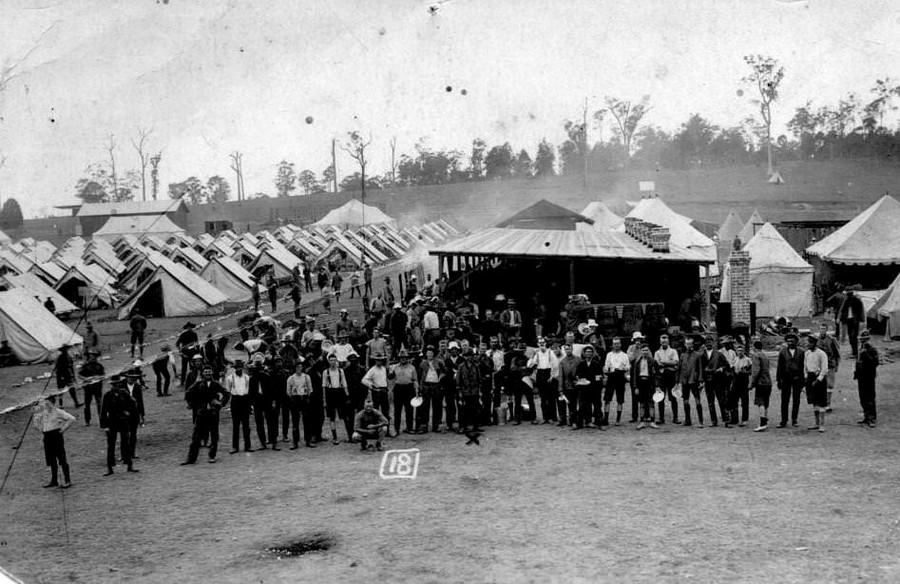
MAITLAND CAMP RUTHERFORD N.S.W. 1916.
A Girl's League was formed to cater for the comforts of the Battalion, under the supervision of Miss Violet MACKAY, who took a keen interest from the beginning, having, with the Mayor of Maitland met the men of the Wallaby March at East Greta and prepared dinner for them on their arrival.
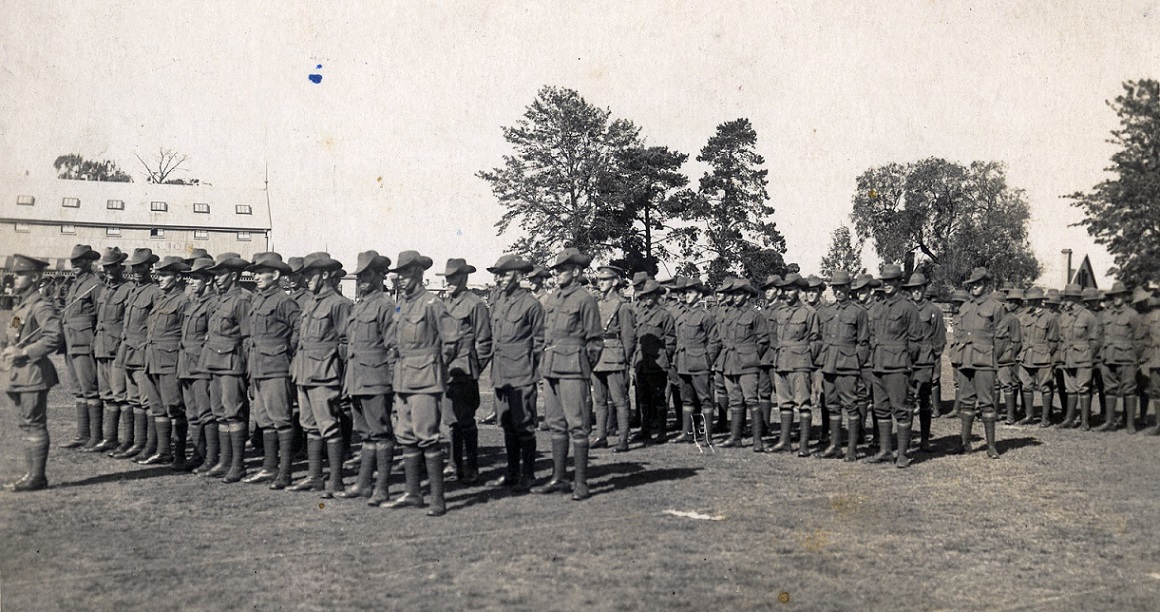
34th BATTALION AIF, MAITLAND SHOWGROUND prior to their departure 1st May 1916
On 1st May 1916, the Battalion left by Train from Farley Station for the Showground in Sydney, equipped with kit bags and necessary clothing, and was reviewed in Moore Park by General: Gustave Mario RAMACCOTTI. On the following morning, 2nd May 1916 the men embarked on the transport HMAT A20 "HORORATA" and sailed at 4:00 pm".
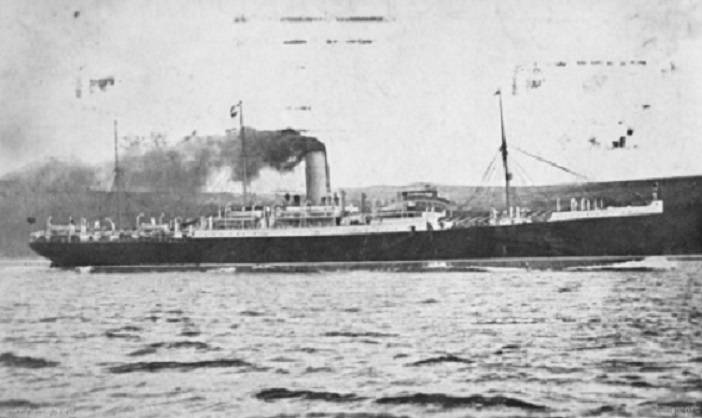
H.M.A.T. A20 "HORORATA
"The voyage to England was without any unusual incidents and a good passage throughout. The first port of call was Albany, where three days were spent. Columbo was reached on Empire Day, 24th May. Here two days were taken up coaling and taking on provisions, etc. During the stay the Battalion carried out a route march through the town. Suez was reached on 8th June, where a party of Light Horse and some details were disembarked. Arriving at Port Said on 9th, the ship coaled and proceeded to Alexandria which was reached on 11th June 1916.
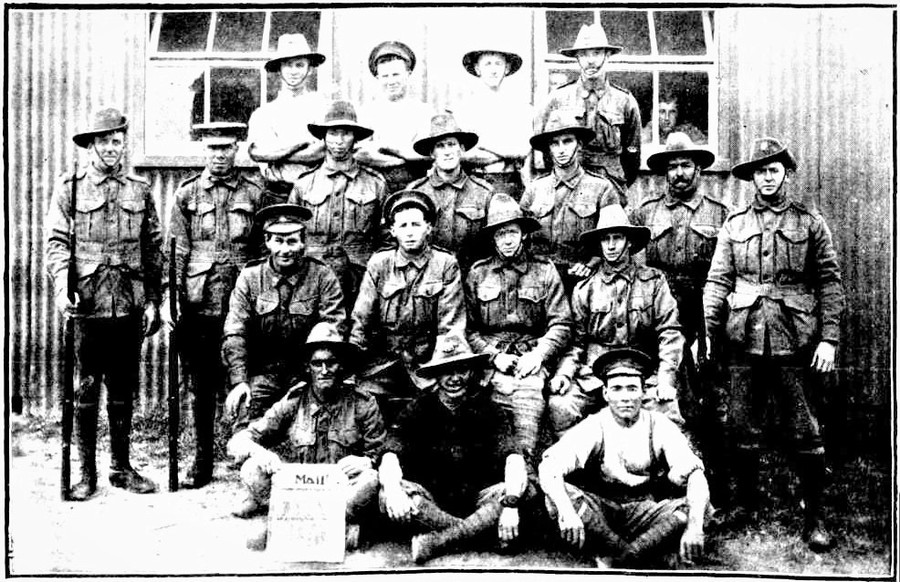
Some of the Original Wallabies – Salisbury Plain, England 1916. Section of C Company – 34th Infantry Battalion AIF.
Back Row Left: Private: 847 Lyle MURRAY; - Private: 903 Frank Dixon THOMAS; - Private: 774 Albert GREENFIELD; - Private: 828 James Muir LECKIE.
Third Row (standing): Private: 902 Christopher THOMAS; - Private: 875 Patrick PORTER; - Private: 751 Lial Edgar EDWARDS; - Private: 845 Robert MURRAY;
Private: 806 William Adolphus JOHNSTON; - Private: 716 Edward Mark BLATCHFORD; - Private: 730 Herbert Robert Duncan CHERRY.
Second Row (seated): Private: 756 Fred ENGLAND; - Private: 920 George Alexander WOODS; - Private: 769 James GRAHAM; - Private: 797 Charles William INGRAM.
Front Row: Private: 838 William David MORGAN; - Corporal: 713 John BELL; - Private: 793 Victor HUDDLESTON.
Trove
The 34th Battalion left Lark hill on the 21st November and en trained at Amesbury for Southampton, embarking on the S.S "Arundel". The transport section left by S.S. "Princess Victoria". The Battalion arrived at Le Harve, France on the 22nd November 1916. Disembarkation commenced at 8:00 am and the Battalion marched to No;1 camp on the Hill, arriving at 2:00 pm. The men carried heavy loads, in some cases amounting to miniature Q.M.' Stores. The march over cobblestones was very tiring, notwithstanding the many route marches which had been carried out at Larkhill. However, after bathing their feet and receiving treatment, as well partaking of a good meal, some spent a comfortable night.
William was detached to Signal School on the 5th June prior to the 34th making its offensive at Messines.
7th June 1917.
THE BATTLE OF MESSINES
The 3rd Australian Divisions first major offensive was at Messines Ridge on the 7th June 1917. The Australian 3rd Division was a part of the II Anzac Corps which was allotted to the first assault. The 25th New Zealand, 3rd Australian Division with the 4th Australian Division in reserve. The 4th Division were battle hardened troops who had fought many major battles. The 3rd Australian Division were having problems getting to the "jump off" point. The day before the 9th and 10th Infantry Brigades were bombarded by German Gas-Shells around Hill 63 and Ploegsteert Wood. Many of the Aussies were not wearing gas masks, but despite this they pressed on even though they received 500 casualties.
They made it to the "jump off" point but only just with some of the men from the 9th and 10th going straight over the top without stopping. The mines went up and the attack commenced behind a protective barrage. The II Anzac Corps were attacking on the right with their objective being the southern shoulder of the ridge which included Messines, the Dover and St Yves areas as far south to the east of Ploegsteert Wood.
Major General Sir John MONASH's 3rd Division had to contend with a tricky 3 mile approach out of Ploegsteert Wood and after the German gas attack, but they were not deterred. The 9th Infantry Brigade under Brigadier General: Alexander JOBSON and the 10th Infantry Brigade under Brigadier General W R NICHOLL had just made the jumping off point but some of the men did not stop, going straight into the assault from the approach march.
Their objective lay between St Yves and the Douve. The mines at Trench 127 and Trench 12 at Factory Farm were laid to aid this task. The explosions erupted a few seconds before zero hour and created craters of 200 feet in diameter, completely obliterating the German defence line as the 9th and 10th Infantry Brigades went over the top. The mine crates forced the 9th and 10th Brigades to veer to the left and right which caused some confusion with the main assault. It is testimony to the quality of training that every man knew the ground, tasks and objectives so well.
Private: 1804 John CARROLL 33rd Battalion, rushed the enemy's trench and bayoneted four of the German occupants. He then noticed a comrade in difficulties and went to his assistance, killing another German. He then attacked single handed a German Machine Gun Team, killing all three of them and capturing the gun. He later rescued two of his comrades who had been buried alive by German Shell Fire, and in spite of heavy shelling and machine gun fire he dug them out alive and saved them from certain death. John was awarded the Victoria Cross.
The German forward zone was completely engulfed and taken by the main assault. The two supporting battalions of each brigade then passed the leading battalion to continue the advance. The men were constantly re-supplied and the ridge was taken. There were many German prisoners taken during the offensive. The 3rd Division was well ahead with the 9th Infantry Brigade pushing on beyond Grey Farm, and on the right the 10th Infantry Brigade were veering left towards Septieme Barn north of Douve.
The German resistance was heavy but was generally brushed aside by tanks and artillery before the infantry had to become too involved. The 4th Bavarian Divisions Artillery had made little impact, but as the day wore on the 3rd Division and later the 4th Australian Division received many casualties from German artillery. (70% of all casualties during WW1 were from artillery).
By 9:00am nearly 6 hours after the assault began the Germans were in disarray, but there was a major problem as the Australians received less casualties as anticipated and when ordered to dig into the ridge they had so many men, that some could not find shelter. the 35th battalion were dug in around Seaforth Farm.
The second phase of the operation was to take the Oosttaverne Line. The 3rd Australian Division would now be in reserve with the 4th Division attacking. The 9th Infantry Brigade (33-34-35-36Bn) were near Thatched Cottage facing Warneton. The river Lys was to their right and the Ploegsteert Wood was now behind them.
Once their objectives were taken the troops consolidated. A barrage to stop and counter attack was shortened and caught three battalions which had to retire. By 9:00 pm this part of the Oosttaverne Line was abandoned. At 10:45 pm General: Alexander John GODLEY ordered the 3rd and 4th Divisions to retake it. This they did by the early hours of the 8th of June.
The Battle for Messines Ridge during May-June 1917 saw 35 officers and 1,631 other ranks loose their lives.
9th Infantry Brigade Casualties.
| 33rd Battalion. AIF |
8 Officers |
382 Other ranks |
| 34th Battalion. AIF |
10 Officers |
378 Other ranks |
| 35th Battalion. AIF |
5 Officers |
431 Other ranks |
| 36th Battalion. AIF |
9 Officers |
421 Other ranks |
| 9th Machine Gun Company. AIF |
2 Officer |
17 Other ranks |
| 9th Light Trench Mortar Battery. |
1 Officer |
2 Other ranks |

FIELD DRESSING STATION, MESSINES 7th June 1917.
After this action at Messines, William was awarded the Military Medal for "bravery in the Field" on 3 Jul 1917, while serving in the 34th Btn AIF, Sig Coy. Gazetted in London on 14 Aug 1917.
William Adolphus Johnston
| Service number |
806 |
| Rank |
Private |
| Unit |
34th Australian Infantry Battalion |
| Service |
Australian Imperial Force |
| Conflict/Operation |
First World War, 1914-1918 |
| Award |
Military Medal |
| Commonwealth of Australia Gazette |
20 December 1917 on page 3377 at position 98 |
| London Gazette |
16 August 1917 on page 8427 at position 99 |
On the 8th July 1917 William was promoted to the rank of Lance Corporal before he was detached to the School of Instruction and re joined the 34th prior to the push at Passchendaele .
12th October 1917
THE BATTLE OF PASSCHENDAELE I
At 1:30 am rain showers began. By 2:30 am it was raining lightly but steadily, by 3:30 fairly heavily. the infantry moved through the pitch dark in single file. In some battalions each man held on to the equipment of the man ahead of him; if touch was broken, those in front had to come back. The news that the line as reported by the 66th division was not held only just reached the incoming troops. Accordingly, in the right brigade (9th) the leading Company Commanders Captain: Clarence Smith JEFFRIES. V.C. and Captain: Telford Graham GILDER M.C. both of the 34th Battalion stopped their men at the entrance to Broodseinde railway cutting, and themselves went to make sure that their column might not run into the enemy.
At Keerselaarhoek Cemetery they found the tape duly laid, and met the officer of the 36th Battalion who had laid it, and by 3:00 am the time set, the 34th battalion was extended on its jumping-off position. But during the previous halt and afterwards, as it lay on the tape, the battalion was persistently shelled and suffered many casualties.
The first shell killed three signallers. Lieutenant: Albert Leslie WATSON. a signal officer of the 34th Battalion, a brave and enterprising leader who also was at the head of the column was severely wounded and all his staff hit. After establishing a forward command post Lieutenant: Thomas Fraser BRUCE 36th Battalion was also killed. Lieutenant Colonel: John Alexander MILNE. 36th Battalion supervising the assembly was knocked down by a shell but continued to command. Captain, Chaplain: Charles MURPHY was also wounded.
(BEAN; History of World war 1 Vol IV p911) Charles Edwin Woodrow BEAN
Only one Australian Division, the 3rd, was wholly employed in the days offensive. but the division was to capture Passchendaele an in spite of the depressing conditions, it was eager to achieve the distinction of doing so. One unit carried the Australian flag, to be planted in Passchendaele, and although officers and men in general were not enthusiastic concerning such "stunts" the Commander-in-Chief had been informed, and had told General: MONASH that, when this flag was planted, the news would be immediately cabled to Australia.
Some keen spirits looked on the operation simply as a dash for Passchendaele. One young company commander of Monash's reserve battalion, the 33rd, in face of a strict prohibition, led on his company as soon as the barrage fell. Starting from a line 350 yards in rear of the general alignment, the 3rd Division was out of touch with its neighbours from the outset. The heavy shelling on the tapes had made orderly disposition there almost impossible, as German Machine-Guns, undisturbed by the barrage now opened immediately, no opportunity offered of restoring proper formation.
The 9th Brigade went forward in the utmost confusion and a terrible mix up as reported by Captain: Robert Derwent DIXON D.S.O 35th Battalion at 6:40 am and "Great Confusion" was the description given by Captain: Henry Vince CARR 35th Battalion. Even on the ridge, the mud was difficult, the hope, if there ever was one, of catching up before the quick barrage finished.
The 9th Infantry Brigade's intended direction lay not along the ridge and the Passchendeale road, but diagonally across them, and parallel to the railway, which most of the brigade could not see. As the jumping-off line was practically at right angles to the ridge, the brigade tendered to advance alone the heights. The Machine-Gun fire at the start came, on the 9th Brigade's right, from the ruined house near Defy Crossing; on its center from, "Hillside Farm"; and on its left from Augustus Wood.
The pillbox opposite the center was supported from the rear by a trench in which were Germans with Machine-Guns, and here occurred a delay which threatened to wreck to whole attack. it was not until an hour after the program time that these places were rushed by the neighbouring portion of the line under Captain: Henry Vince CARR and Captain: Robert Derwent DIXON. D.S.O of the 35th Battalion. The trench contained 35 Germans and 4 Machine-Guns. Part of the line was also held up by a pillbox close to Passchendaele road near the highest point of the ridge.
Here there was practically no shelter from attack, but Captain Clarence Smith JEFFRIES. V.C. of the 34th Battalion managed to organise a party, with Sergeant: 21 James BRUCE and another N.C.O Corporal: 2036 Vere Cummings STEVENSON and a dozen men, and outflanking it, charged the place from the rear, capturing 25 Germans and 2 Machine-Guns. These actions set free the advance. The pillbox captured by Captain Clarence Smith JEFFRIES. V.C. being not far short of the first objective, the 34th Battalion dug in there.
Great loss had been uncured; the 34th Battalion had only three officers left and there were wide gaps in the line. The right flank had swung far away from the railway, along which the 4th Division was attacking, but on the left Captain: Telford Graham GILDER M.C. of the 34th Battalion who had been wounded by a Machine-Gun bullet, but was carrying on found the 10th Brigade digging in slightly to his left under Captain: LATCHFORD, 38th Battalion, and fell back seventy yards to join it.
The Advance to the second objective was to begin at 8:25, the low clouds had opened, and fleecy cirrus with patches of blue were widening overhead and the sun had come out. The 9th Brigade had been so late in reaching the first objective that, while most of the 34th Battalion dug in, the 35th Battalion, allotted for the second phase, moved straight on. Standing on the Passchendaele road, Captain: Henry Vince CARR and Captain: Robert Derwent DIXON. D.S.O of the 35th Battalion endevoured to decide where the barrage then was; at first Carr thought it may be behind them, but finally decided that it was ahead.
The confusion at the start had split the brigade into mixed parties of all battalions and many of the 34th went on with the 35th, the main body of which, about 100 in all, now advanced along the south-eastern side of the ridge in order to catch the barrage. The hour was probably a little before that for the second advance. A German Machine-Gun in the gap between the brigade's right and the railway immediately opened with deadly effect.
Major: John Bruce BUCHANAN 36th Battalion, the senior forward officer was killed. At this critical juncture Captain: Clarence Smith JEFFRIES. V.C. of the 34th Battalion, again accompanied by Sergeant: 21 James BRUCE, led out a few men from the first objective and made for the gun. it was shooting in short bursts, and he was able to work up fairly close. Seizing a moment when it was firing to the north, he and his men rushed at it from the west. It was switched round, killing him, and sending his men to the ground.
But when its fire eased they worked round it, rushed the position, seized 25 Germans and 2 Machine-Guns. This gallant and effective action Captain: Clarence Smith JEFFRIES. V.C. was posthumously awarded the Victoria Cross for removing the chief danger to the advance along the crest, but as soon as the 35th Battalion crossed to the eastern side of the hill it became the target of a number of field and heavy guns which, from the hedges and other cover in various parts of the landscape, fired over open sights.
After passing a corpse on its right, the 35th Battalion settled down on what its officers took to be the second objective, although on the extreme right they were actually short of the first. Captain: Henry Vince CARR, now the senior officer on the spot, reported; 8:35. On objective, with about 100 Captain: Robert Derwent DIXON. DSO and three officers. Casualties 25 or 30 per cent. Captain: Henry Charles Dight CADELL M.C Lieutenant: Charles Teesdale MAIN Lieutenant: Keith Maitland DAY reported killed and Lieutenant: Frank HORNE Lieutenant: Christopher Kyffin MEARS Lieutenant: Charles John HENRY were wounded. Prisoners sent back 400-500. Contact on flanks uncertain, being heavily shelled.
Three posts were established under surviving officers, right Lieutenant: Norman Beade D'ARCY M.C centre Lieutenant: Joseph Francis ADAMS left Lieutenant: Harold Sydney WYNDHAM. In this brigade the battalion for the final objective was the 36th, and a report came along that it had gone through. Actually, it had advanced with the 35th, but, on the left, penetrated to the second objective, which bad been reconnoitered during the previous halt by the commander of the company Captain Robert Austin GOLDRICK. M.C.
He went up the road towards Passchendaele. The barrage, he said afterwards was no hindrance to him, although he left the line lying as close to it as possible "or where he thought it was." He was unable to detect the intensification of the barrage for the second phase, but led his men forward at the proper hour.
As no other battalion was there, he now established the line with its left on the road 600 yards from the church, about the point reached by the 66th Division's troops on October 9th. In front of the position Captain: Robert Austin GOLDRICK. M.C. and Lieutenant E.H FLEITER (39th Battalion) found hidden in a shell hole men of the 66th Division. One had a broken arm, the other trench-feet. They took the Australians at first for Germans. When reassured, "we knew the Australians would come," they said, 'We prayed hard."
From the direction of the church, which lay straight down the highway, no fire came. two Germans ran up the road and surrendered. South-east of the village, along the Moorslede road, were the Germans who seemed "very windy," and near the road two 5.9-inch howitzers began to blaze at the troops digging in.
The 9th Brigade had taken its second objective and the 10th its first, but the position of the officers in charge of these advanced lines was full of anxiety. On the eastern slope Captain: Henry Vince CARR 35th Battalion, the senior officer in this part of the 9th Brigade's front, could see the 4th Division somewhat ahead of its right, and by 10:55 he had discovered that the 36th was on the left, but farther left than the 10th Brigade was far behind on its first objective . The German Guns ahead were sniping with dreadful accuracy. Carr on the western slope, sent back for instructions: "what am I to do?"
Word of the true situation reached headquarters slowly. As on the 9th, the first news was all encouraging. General: MONASH in the Ypres ramparts heard shortly after 7 that both brigades were "well away"; but by 8:26 he had ample evidence that the first objective was taken. At 9:25 the intelligence officer examining prisoners (Lieutenant: Frederick Morley CUTLACK Official War Correspondent) reported having heard from the wounded men that the second objective had been reached.
At 10:28 headquarters was informed of a statement of a wounded man, that the 38th Battalion had gone through. A further report that Australians had been seen at Crest Farm although quickly contradicting but probably true nevertheless. Which confirmed Monash's impression that his division was succeeding. Concerning the New Zealand brigade on his left, however, there was no word until, at 10:50, there arrived the tragic information that the New Zealand Division was stopped by the enemy alone the entire front.
Monash has already heard at 9:55 that the 10th Brigade was held up by fire from Bellevue Spur. Believing that his division was still advancing, he asked that every gun that the New Zealand Division could spare should be turned upon that ridge to suppress the fire. Meanwhile, he would order the reserve (39th) battalion of the 10th Brigade to be ready to assist in holding the ground already won. The reserve battalion the (33rd) of the 9th Brigade he was still keeping back to assist in the capture of Passchendaele.
Shortly after noon news of the true situation arrived. Lieutenant Jackson of the 40th Battalion had established at Waterfields pillbox near the Ravebeek a forward report-centre from which a series of messages, admirably accurate, was flashed by lamp to the headquarters of Lieutenant Colonel Lord of the 40th Battalion. Thus Brigadier General McNicoll of the 10th Brigade was able to inform Monash of the precise position of Giblin's Line. He added that the situation was very serious and the casualties very heave. At the same time from the front line of the 9th Brigade arrived a pigeon message, sent by Captain: Richard GADD of the 36th Battalion.
We are on the Blue Line (second objective) with composite force all three battalions, both flanks in the air.
The New Zealand Division was to make a second attempt at 3:00 pm, and Monash was of the opinion that from the 9th Brigade, well forward on the ridge, patrols might still work northward around Crest Farm. His reserve, the 33rd Battalion (9th Brigade), was accordingly ordered to attempt this at 4:30 pm and the 10th Brigade's forward line being meanwhile reinforced by its own reserve, the 39th Battalion.
These orders went out, but none of them were fulfilled. The New Zealand Division had been defeated by obstacles which no hastily renewed bombardment could have overcome. no infantry in the world could have crossed the Ravebeek mud, penetrated the dense wire, and attacked the crowded pillboxes of Bellview with the assistance of a barrage which did not even screen the advance. No blame can attach to the artillery. Its commander, according to the New Zealand official history, had reported on the previous day that his guns might be unable to give efficient support.
This magnificent division, which lost nearly 3,000 men, had been held up in almost exactly the same position as the 49th three days before-the left brigade penetrating half-way to the first objective, the right stopped almost at the start. The Germans were reinforcing. The New Zealand battalion commanders knew that their men had no chance of succeeding by renewed attack, and the order was eventually cancelled.
As for the Australians, of the two battalions that MONASH had now ordered to participate, the 39th had already to a large extent been involved in the fighting, and the 33rd, endevouring to reach its position of readiness for outflanking Passchendaele, had suffered great loss. No less than 6 of its Officers were killed or mortally wounded. Captain: Wilfred Frank HINTON in command of the forward company, Lieutenant Leonard Rockley BROWNLOW Lieutenant: Thomas Acheson ARMSTRONG Lieutenant: Albert George KILPATRICK Lieutenant William REES-REYNOLDS and Lieutenant: Norman Francis GOBLE.
By the time Lieutenant Colonels Henderson DSO 39th Battalion and MORSHEAD attempted to carry Monash's orders, they found that the attacking force of both brigades was back almost at its starting point. What had happened was as follows.
Neither Major: GIBLIN near the Ravenbeek nor Captain: Henry Vince CARR on the ridge had received their messages sent several hours earlier. The 9th Brigade's line was still being battered by the German Guns. Captain: Richard GADD 36th Battalion, whose troops were being wiped out, informed Captain: Henry Vince CARR 35th Battalion that Lieutenant Colonel: John Alexander MILNE D.S.O 36th Battalion had now come forward to Hillside Farm. CARR accordingly sent Captain: Robert Derwent DIXON. D.S.O with GADD to explain to Milne the desperate nature of their situation. Milne said that he would try to get their troops relieved after dark, but till relieved they must hold on.
(BEAN; History of Word War 1 Vol IV page 921) Charles Edwin Woodrow BEAN
Meanwhile, however, the German artillery was annihilating some parts of their line. All leaders of Carr's three posts were out of action. Lieutenant: Joseph Francis ADAMS was Killed in Action and Lieutenant: Norman Beade D'ARCY M.C and Lieutenant: Harold Sydney WYNDHAM were wounded. Of the remaining officers of the 36th Battalion, Major: John Bruce BUCHANAN and Lieutenant: Fredrick William PUTNEY had been Killed in Action and Captain: Robert Austin GOLDRICK M.C wounded. Farther back Lieutenant: Sydney COOK had been Killed in Action and Lieutenant: William WAND and Lieutenant: Herbert Reginald MAILER were wounded.
At 3 o'clock rain began to fall steadily. at 3:15 pm Captain: Richard GADD 36th Battalion, thought agreeing with Captain: Henry Vince CARR 35th Battalion that to hold on meant annihilation, refused, in view of his Colonel's orders, to retire. Carr consented to wait while Gadd again sent word to Lieutenant Colonel: John Alexander MILNE D.S.O. Carr himself at 12: 30 had sent Captain Robert Derwent DIXON. D.S.O to the headquarters of the 35th Battalion at " Seine", from which no word had been received all day.
At 3:45 pm, no reply having come from Milne, and Dixon not having returned as he had been kept at 35th Battalion headquarters awaiting the arrival of an order from brigade headquarters concerning the projected operation by the reserve battalion, Gadd agreed to withdraw and Carr sent along the line a note: The 35th Battalion will retire.
When visiting Gadd, Carr had warned the troops of the probable order to withdraw, and he now saw that the left had already begun to retire. He told men whom he passed to get back as fast as they could to the 34th Battalion (which he believed to be on the first objective). Captain: William James GORDON M.C 36th Battalion, strongly dissatisfied with the order, went straight to Lieutenant Colonel: John Alexander MILNE D.S.O urged that the forward position was tenable, and with Milne and Major: John Martin HAWKEY M.C rushed out to stop the withdrawal. But it was too late.
The 34th was not, as Captain: Henry Vince Carr 35th Battalion, believed, on the first objective. The Commander of the line, Captain: John William RICHARDSON 34th Battalion, on hearing of the extreme weakness of the force at the second objective, had reinforced it. He and his only remaining officer's Lieutenant: James Clement BURGES Lieutenant: Bruce Gray McKENZIE Lieutenant: John Abbott LONGWORTH had all been Killed in Action while organising on the first objective, and the first objective now lay empty. The retiring troops, being without orders as to the position to be taken up, streamed back past Milne's headquarters.
All that Hawkey, Gordon, Gadd, and others could then do was to lead a fraction of them forward again to the first objective, where they remained during the night. Captain: Robert Derwent DIXON. D.S.O. with Captain: John Grieve PATERSON adjutant of the 35th, went up to organise the 35th there, but could find none of it's men. When eventually re-formed the remnant of the 35th was temporarily attached as a Company to the 33rd Battalion.
9th-12th October 1917 saw the 3rd Division, 9th and 10th Infantry Brigade in action during the Battle of Passchendaele, which saw massive losses and suffering in the Australian ranks. The casualties numbered 3,199 men in 24 hours during the height battle. The 34th Battalion lost every officer that day, either killed or wounded including their Medical Officer, Major: Gother Robert Carlisle CLARKE and some of his staff were killed while dressing the wounded. The spirit of some of the wounded is illustrated by the case of Corporal: 3170 Winsleigh Alexander MURRAY 35th Battalion, (formerly a Methodist Minister from Newcastle) gave up his place in a queue waiting for stretcher bearers and was never heard of again.
The Battle of Passchendaele saw 60 Officers and 1,322 other ranks loose their lives.
9th Infantry Brigade Casualties.
| 33rd Battalion. AIF |
11 Officers |
273 Other ranks |
| 34th Battalion. AIF |
15 Officers |
323 Other ranks |
| 35th Battalion. AIF |
18 Officers |
296 Other ranks |
| 36th Battalion. AIF |
15 Officers |
383 Other ranks |
| 9th Machine Gun Company. AIF |
1 Officer |
36 Other ranks |
| 9th Light Trench Mortar Battery. |
- Officer |
11 Other ranks |
William was again detached to the School of Instruction on the 21st October in France and re joined his unit the next month on the 27th of November 1917. He was granted leave to Paris on the 3rd January 1918 and had some well earned rest and relaxation before he returned top the lines on the 12th of January. The next day he was marched in the the Brigade School of Instruction where he spent the next 3 weeks before he was granted leave to England on the 13th February 1918.
Proceeding overseas back to France on the 26th of February and re joining the 34th Battalion.
4th-5th April 1918
The First VILLERS-BRETONNEUX
The Strength of the 9th Infantry Brigade was about 2,250 but their casualties during the 2 days of fighting numbered 30 Officers and 635 men either killed in action or missing.
9th Infantry Brigade Casualties.4th-5th April 1918
| 33rd Battalion. AIF |
3 Officers |
82 Other ranks |
| 34th Battalion. AIF |
5 Officers |
120 Other ranks |
| 35th Battalion. AIF |
9 Officers |
282 Other ranks (including 44 missing) |
| 36th Battalion. AIF |
12 Officers |
133 Other ranks (including 1 missing) |
| 9th Machine Gun Company. AIF |
1 Officer |
18 Other ranks (including 4 missing) |
8th August 1918.
Report of the Operation Conducted by the Battalion This Day. Headquarters 34th Battalion AIF. 8-8-18 ASSEMBLY. The Assembly March passed without incident and there were no casualties. The Battalion was in position for the assault at 3:25 am.
BARRAGE. The barrage opened at 4:20 am and was accurately placed. The enemy immediately fired single and double Red and Golden Rain Light Signals. The enemy's reply to our barrage was very ineffective but his Machine Gun fire was considerable during the early stages of the advance, but caused very few casualties.
LOCATIONS. Battalion Headquarters was located at P.16.c.1.7 before Zero, after Zero a temporary Headquarters was established at the Quarry at P.16.b.2.8 pending the report and the capture of ACCROCHE WOOD, from the two flank Companies.
THE ADVANCE. Owing to the dense fog observation was impossible and the tanks appeared to have great difficulty in keeping in touch with the direction. Runners were sent forward at 4:45 am to get in touch with the assault parties and at 5:15 am they brought back word from Captain: Albert Edward YATES 35th Battalion that his Company was through the Wood. Battalion Headquarters then moved forward through the wood towards CERISY VALLEY. About 150 stragglers of all Battalions including 3 Lewis Gun Teams were collected during the advance and formed into a Company.
Owing to the density of the fog and the obscurity of the forward position forward I deployed the Company and took them forward as far as GAILLY Line arriving there at 5:45 am. We later met a detachment of prisoners and were told by the escort that CERISY VALLEY was partially mopped up and most of the Units were moving forward to their objective. I than ordered all men of the 33rd and 35th Battalions to go forward to join their respective Units, and organised two posts with the men of the 34th Battalion, placing one in the enemy trench at P.24.b.3.3 (approx) and the other at P.18.d.0.7 (approx).
This latter post shortly afterwards established liaison with the 11th Brigade. The remainder of the Battalion assisted the 33rd and 35th Battalions in capturing and consolidating the GREEN Line. They were released from the GREEN Line between 9:45 am and 10:15 am and proceeded then to consolidate the GAILLY and RESERVE Lines as shown on map forwarded.
BOOTY. Owing to the conditions existing it was impossible to estimate the number of prisoner's captured by the Battalion as prisoners from the 3 Battalions were grouped to reduce the number of men required for escort. So far no estimate has been made of the number of Trench Mortars and Machine guns etc, captured in the area. Salvage operations are in progress and as soon as they are completed a detailed report will be forwarded. In the CERISY VALLEY one 21 cm and eight 7.7 cm guns were captured together with large quantities of ammunition.
Major: Francis George GRANT.
Commanding Officer 34th Battalion AIF. (34th Battalion War Diary)
22nd August 1918.
3:45 am. Evacuated to Reserve Position in K.12.d., k.18.a and b. Enemy started to shell our lines with all calibres. 6:00 am. Three prisoners arrived and stated that the enemy expected out attack and were standing to since midnight. Identifications were normal and forwarded on to Brigade. 7:30 am O.K. received from front line. English troops on the Left Flank. 8:00 am Weather clear and hot. Prisoners 2 Officers and 40 Other Ranks put on stretcher carrying. Enemy artillery fire still very active. All objectives gained and troops on left in position. 9:00 am Artillery slackening and then temporarily ceased. Planes over our lines machine gunning. Men feeling effects of gas, severe abdominal pains.
7:00 pm. Order received from Brigade to move up as Imperial Troops were retiring on our Left Flank. 7:10 pm. Message received from 33rd Battalion asking for assistance and "C" Coy were sent along, "A" and "D" Coy's moved forward to Forward Support Line and got in touch with "B" Coy. The C.O. went forward to original Jumping Off tape but could not get any information. 9:00 pm "B", "C" and "D" Coy's arrived at 33rd. Forward Battalion Headquarters then went forward to reconnoitre, got in touch with the Coy's who had got in position. 10:30 pm Guides went back to Battalion Headquarters and Limbers came up with hot meals. Situation obscure as and retired to first objective. Our Left Flank 500 yards in the air "C" Coy linked up with our Support Coy on Left and Front Line on Right forming a Front Line.
23rd August 1918.
4:45 am Weather fine. Barrage fire on other side of the River. 10:00. Enemy bombarded Road at L.9.a. 11:10 am. Artillery fired on our Left Flank many falling short. 12:30 am. C.O. went to Brigade Headquarters informing Brigade of situation. 4:00 pm. Word received that the Brigade would be relieved that night. 6:30 pm. Colonel: HAMILTON of 39th Battalion, AIF came for particulars of relief. 7:00 pm. Machine Guns very active. 11:30 pm. 39th Battalion arrived, guides supplied but no Lewis Guns to hand.
(34th Battalion War Diary)
William remained with the 34th Battalion until after the Armistice in November 1918.
11th November 1918.
ARMISTICE SIGNED
We could now tell by the news in the papers that the war was practically over although we (The Third Division) was told to hold ourselves in readiness to proceed to the line again – the 1st, 4th, and 5th Australian Divisions being already on their way back to the line. On Monday 11th November 1918 (the day the Armistice was signed) we marched to Alleray for a hot steam bath and on passing through Airaides found all the houses decorated with tri colours and the church bells pealing and the Frenchies running about like madmen. We wondered what was wrong and halted in the main street for a rest. The Captain then told us (he had interviewed the Mayor who had received a telegram saying that the Armistice was to be signed) that the Armistice was to be signed at 11 a.m. that morning – it was then about 10 a.m. We gave three cheers and could scarcely realize that the war was over. When we arrived back at Warlus the news had already reached there and the town was decorated &c. Next day we had a holiday from drill to celebrate Peace. The bells of the old French church chimed day and night for several days. Most of us attended the Victory Mass at the Roman Catholic Church and we also had a great Thanksgiving service out on the parade ground. Some of the men broke camp and went to the neighbouring cities and some got as far as Paris. Many were "pinched" and put in clink (gaol) as they had no leave passes – others were caught and sent back to the Battalion.
William was marched out to England from Harve on the 26th of March and returned to Australia on the 28th June 1919 on board HMAT A30 "Borda" and was discharged from the AIF on the 12th August 1919.
Family Information
William was a single 22 year old Labourer from Barnsley, N.S.W. prior to enlistment with the AIF. William served with the 16th Infantry for 4 years prior to his enlistment.

Johnston family home "Watagan" at Wollombi, New South Wales, about 1915. John and Ada with 4 of their children.

Wedding Portrait. 23rd August 1919. Wallsend, New South Wales, L-R: Dolph & Bessie Johnston, Vince Johnston, unknown woman.

John Johnston. (1864-1931) - Ada Matilda Johnston. nee: Bevin. (1865-1919) Masonic Lodge Apron. 1919
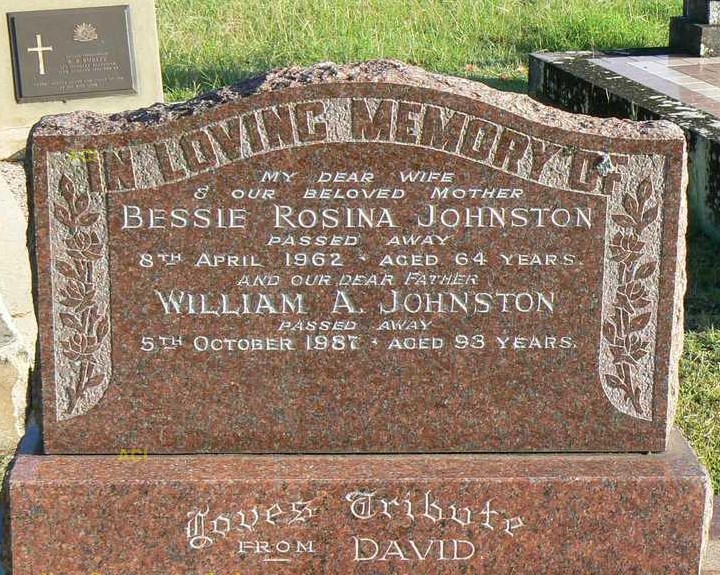
Grave of Bessie Rosina Johnston (1897-1962) - William Adolphus Johnston (1894-1987)
Dawson River Cemetery, Taree, New South Wales.
Military Records
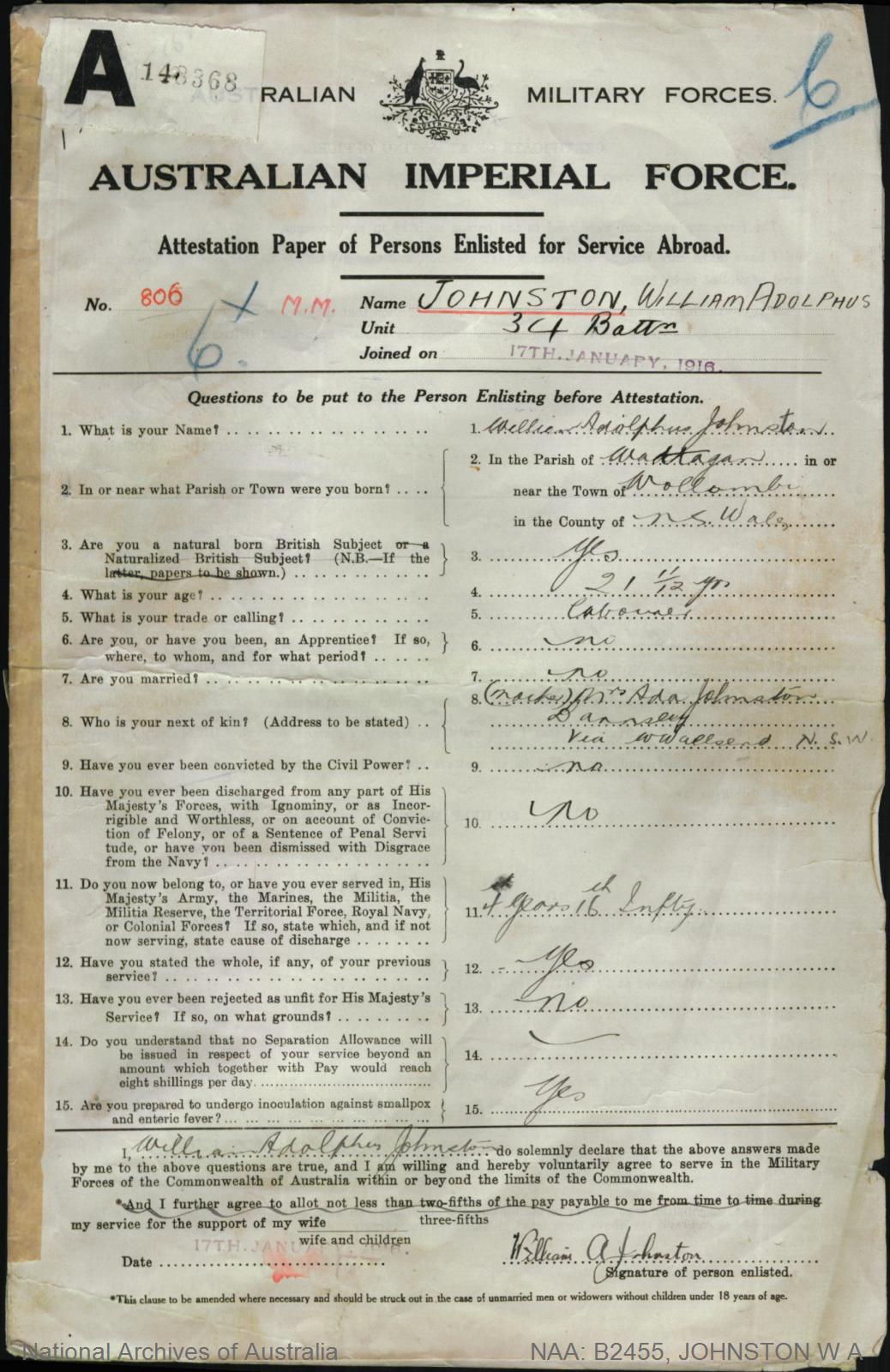
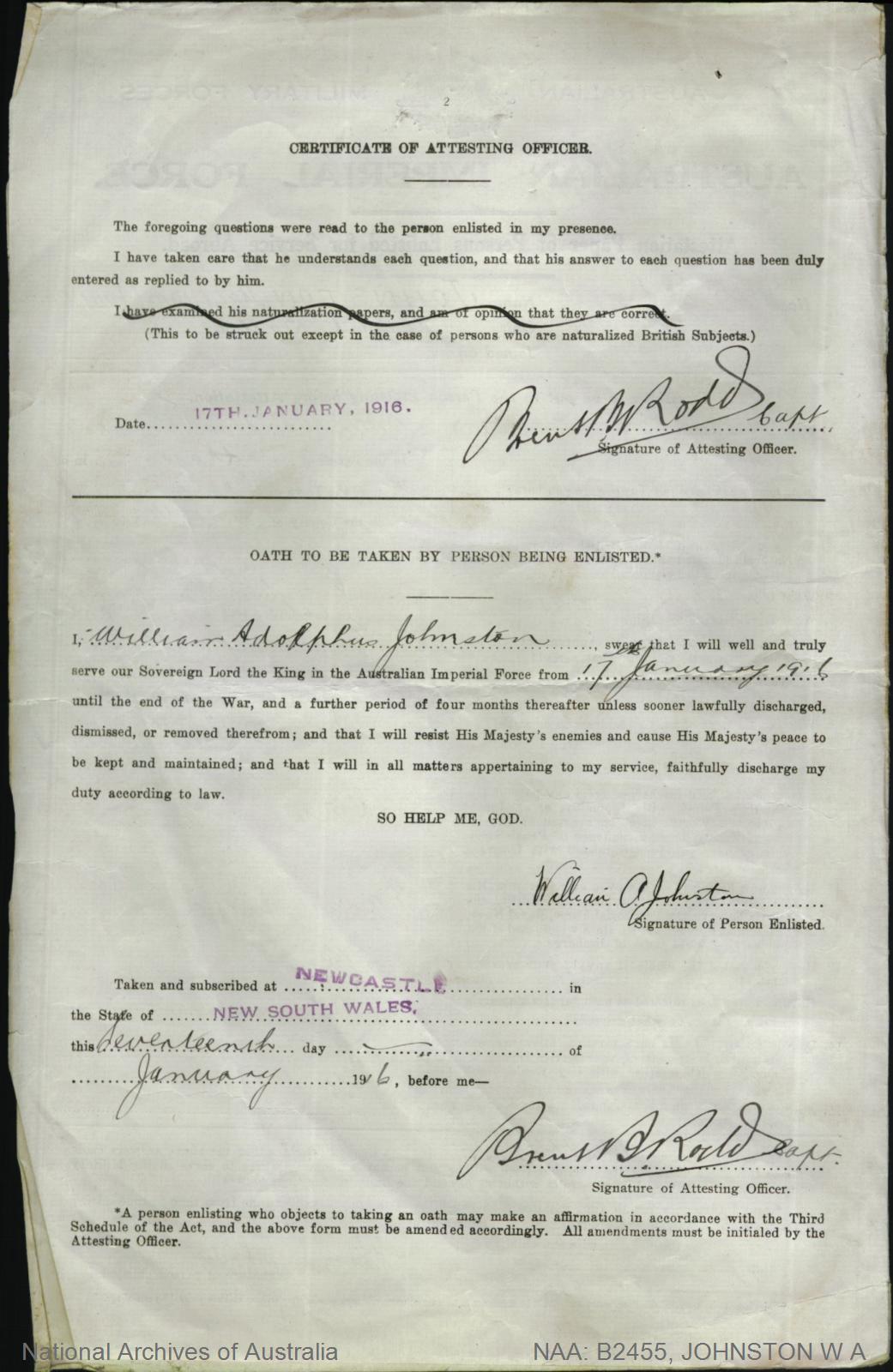
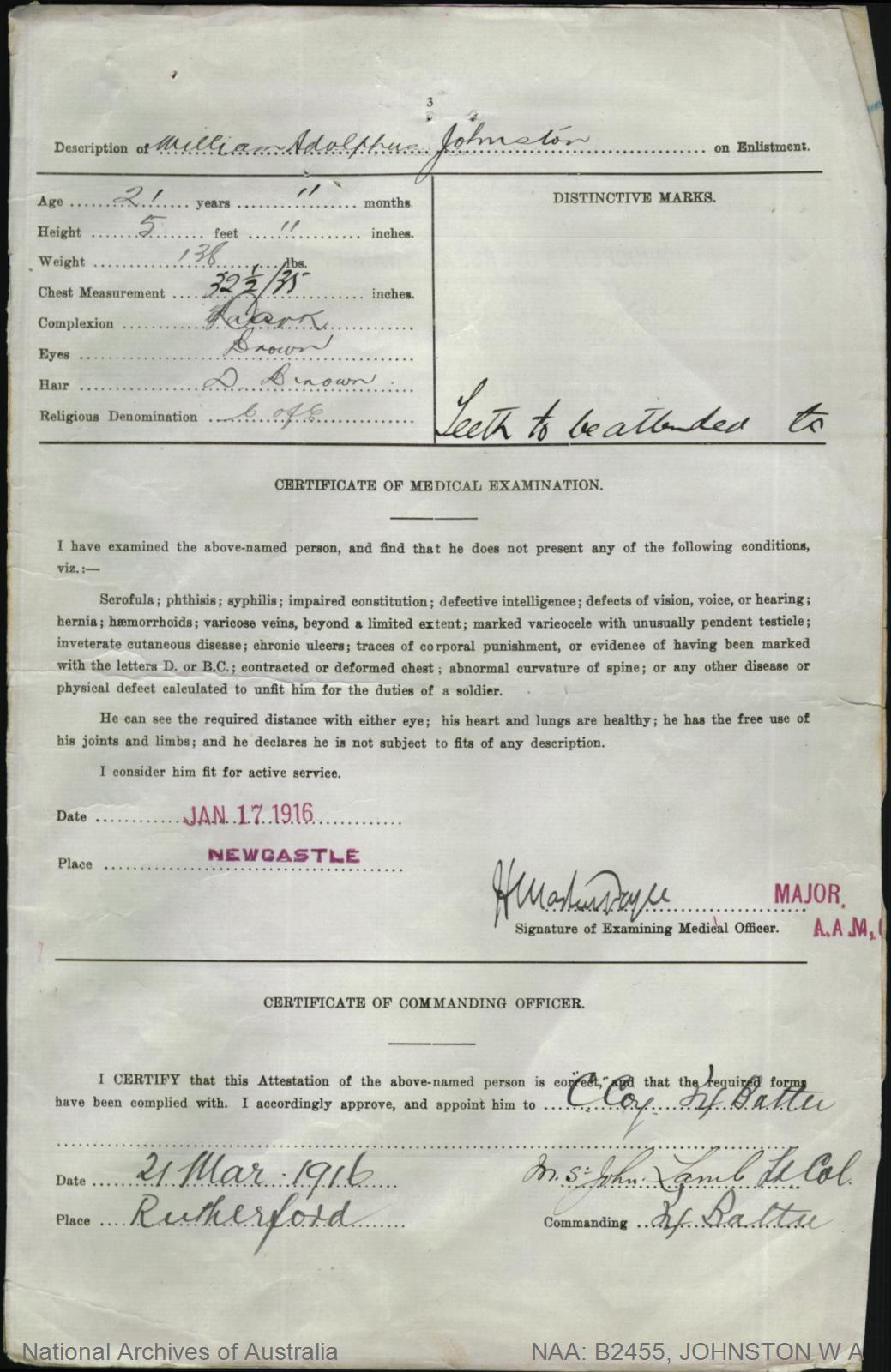
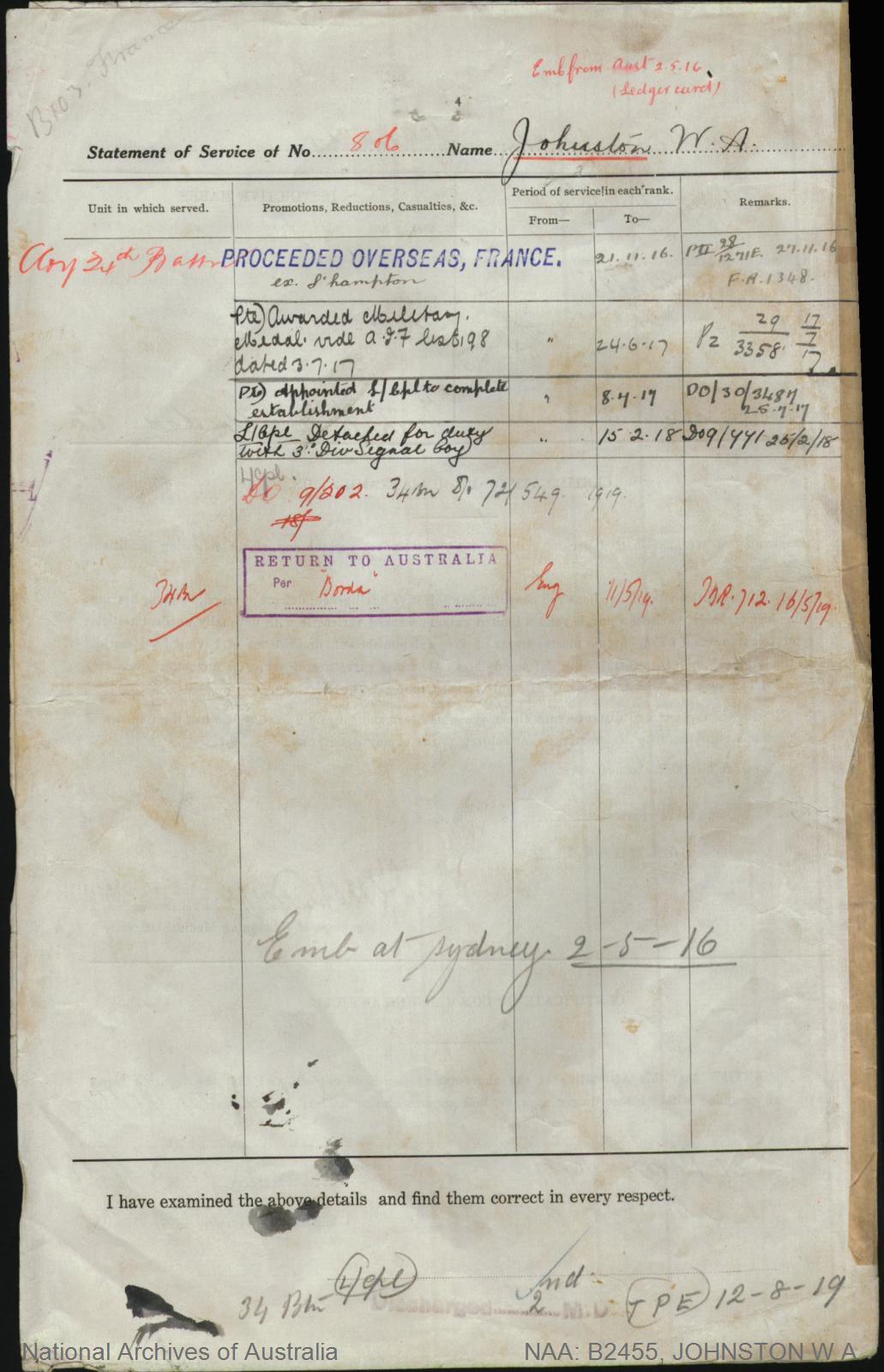
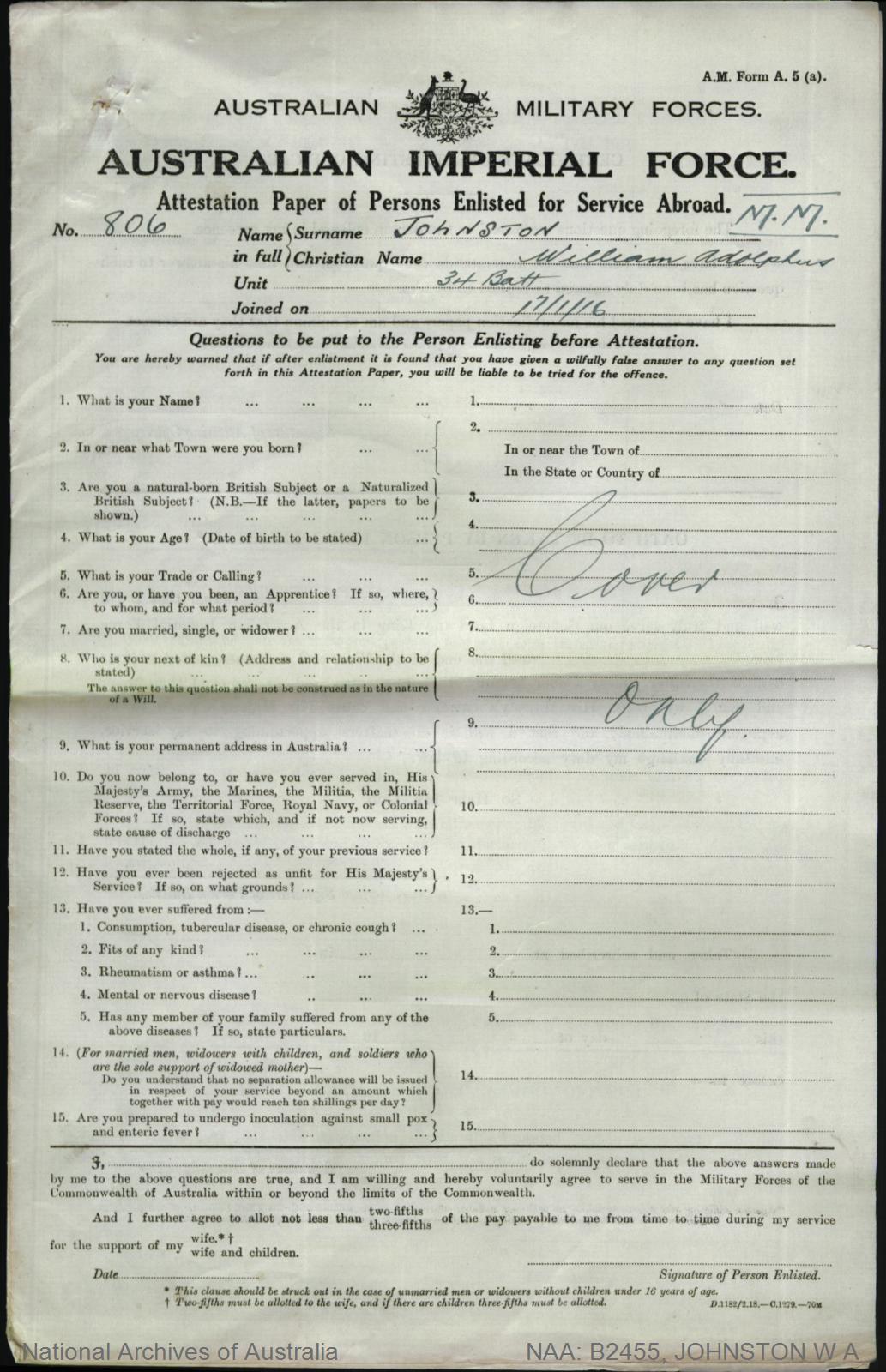
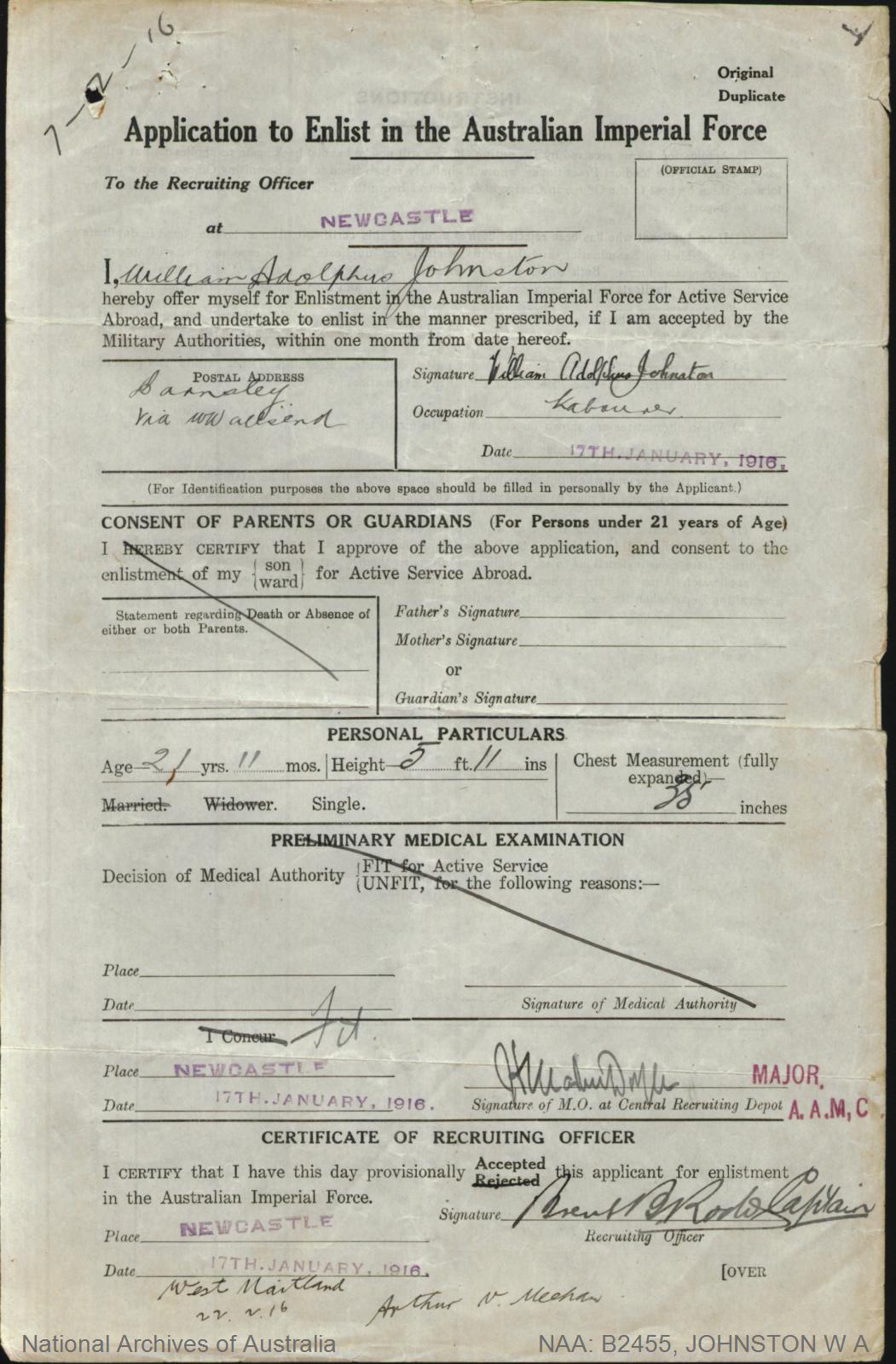
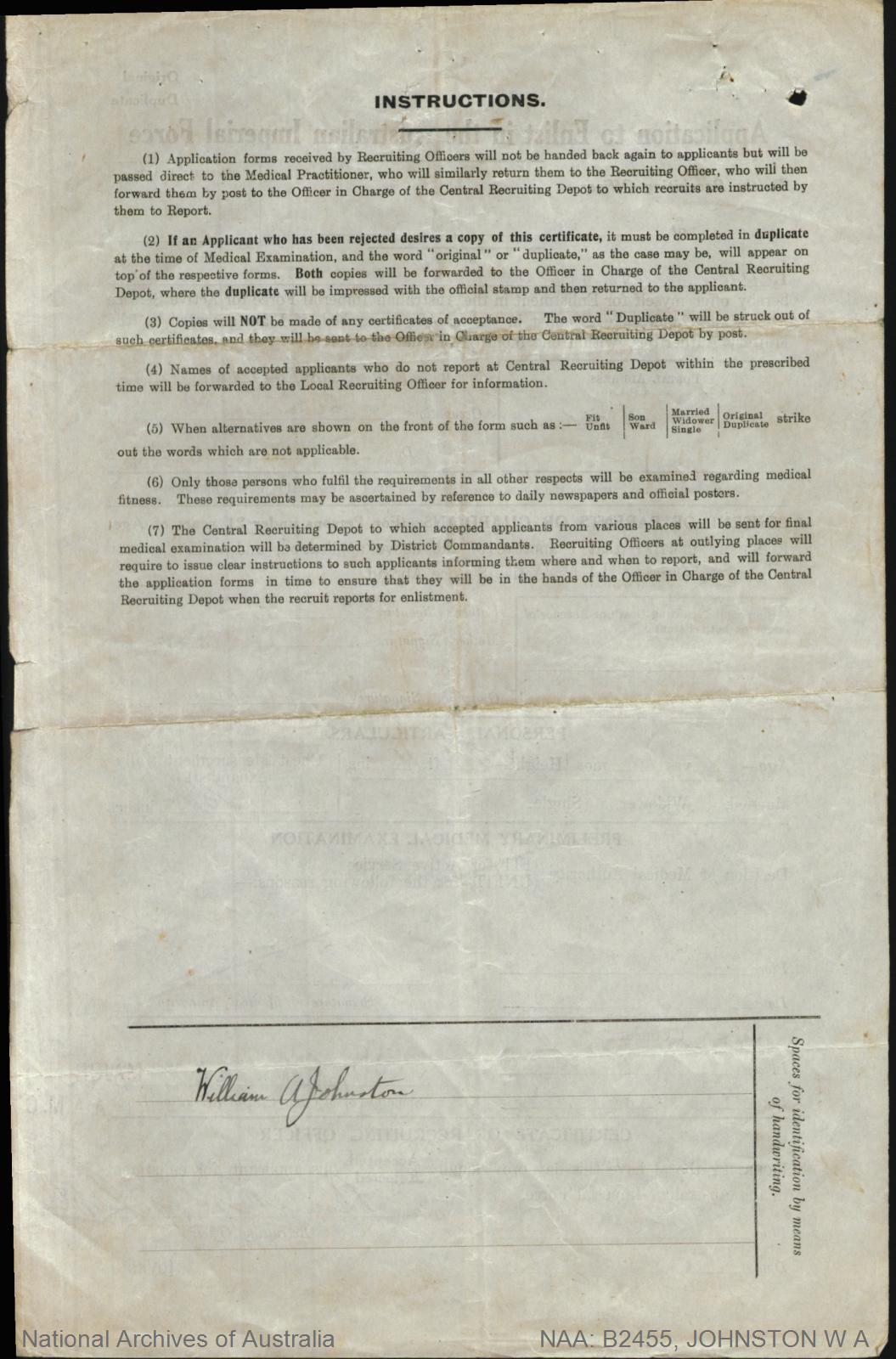
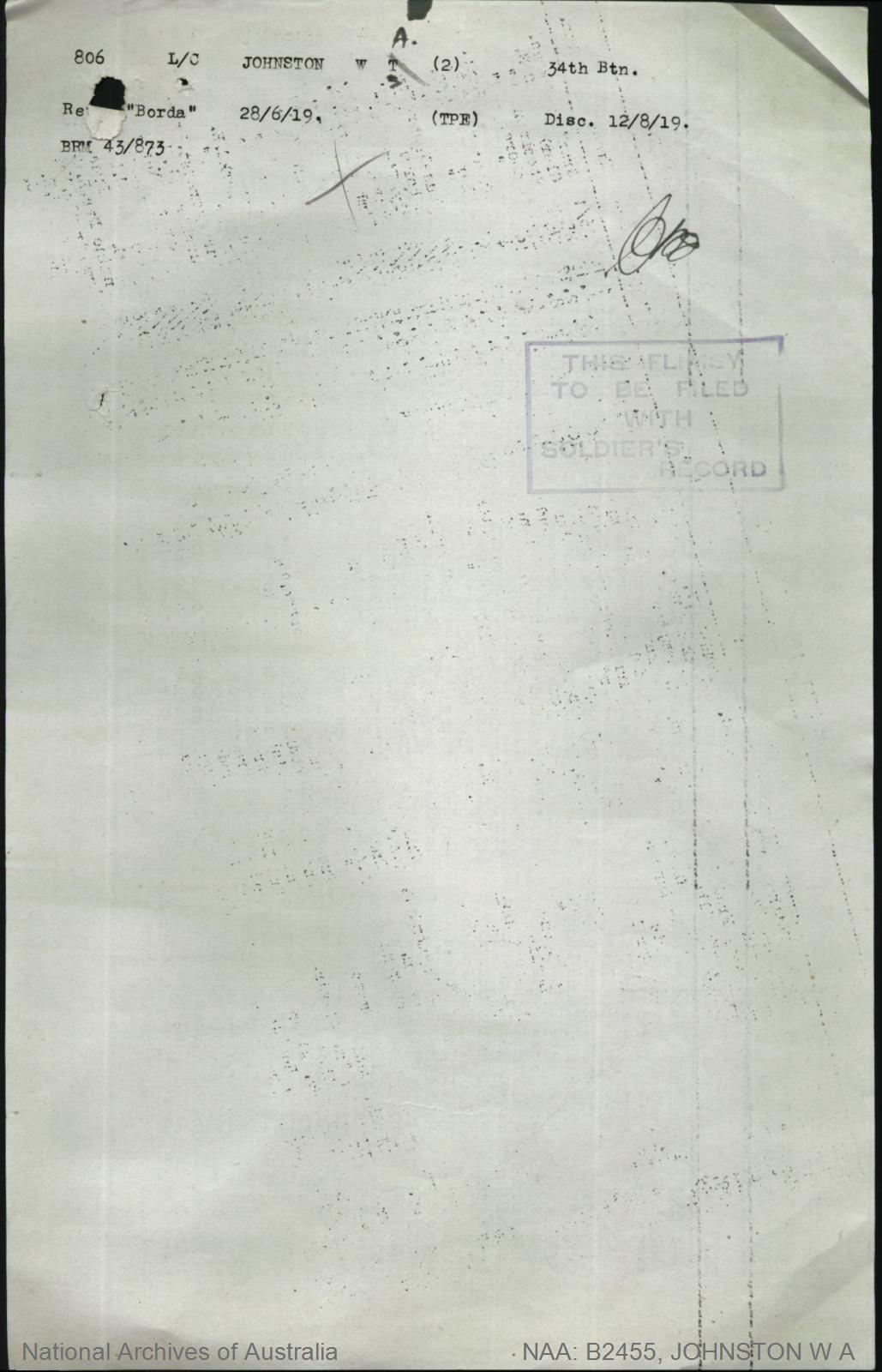
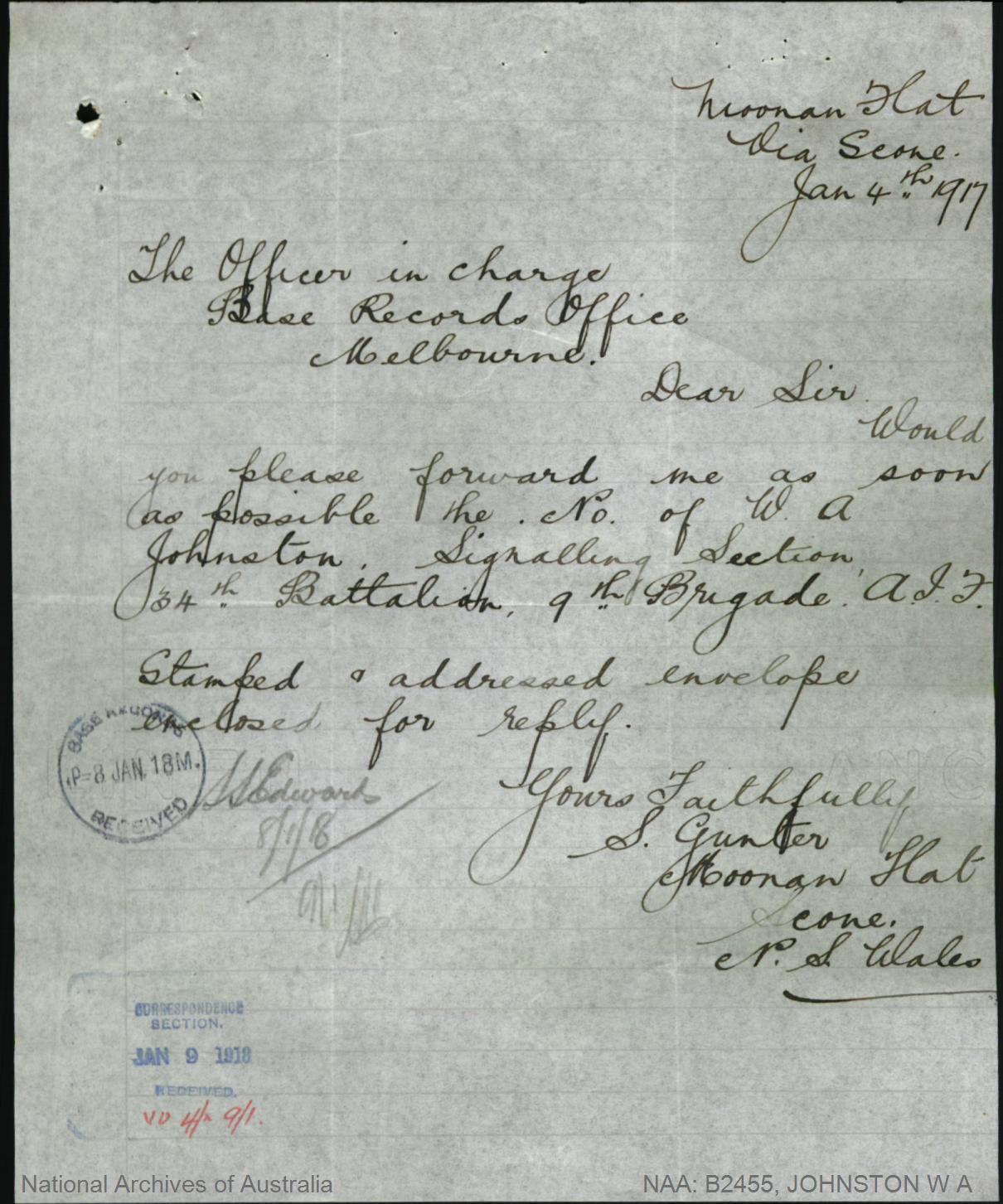
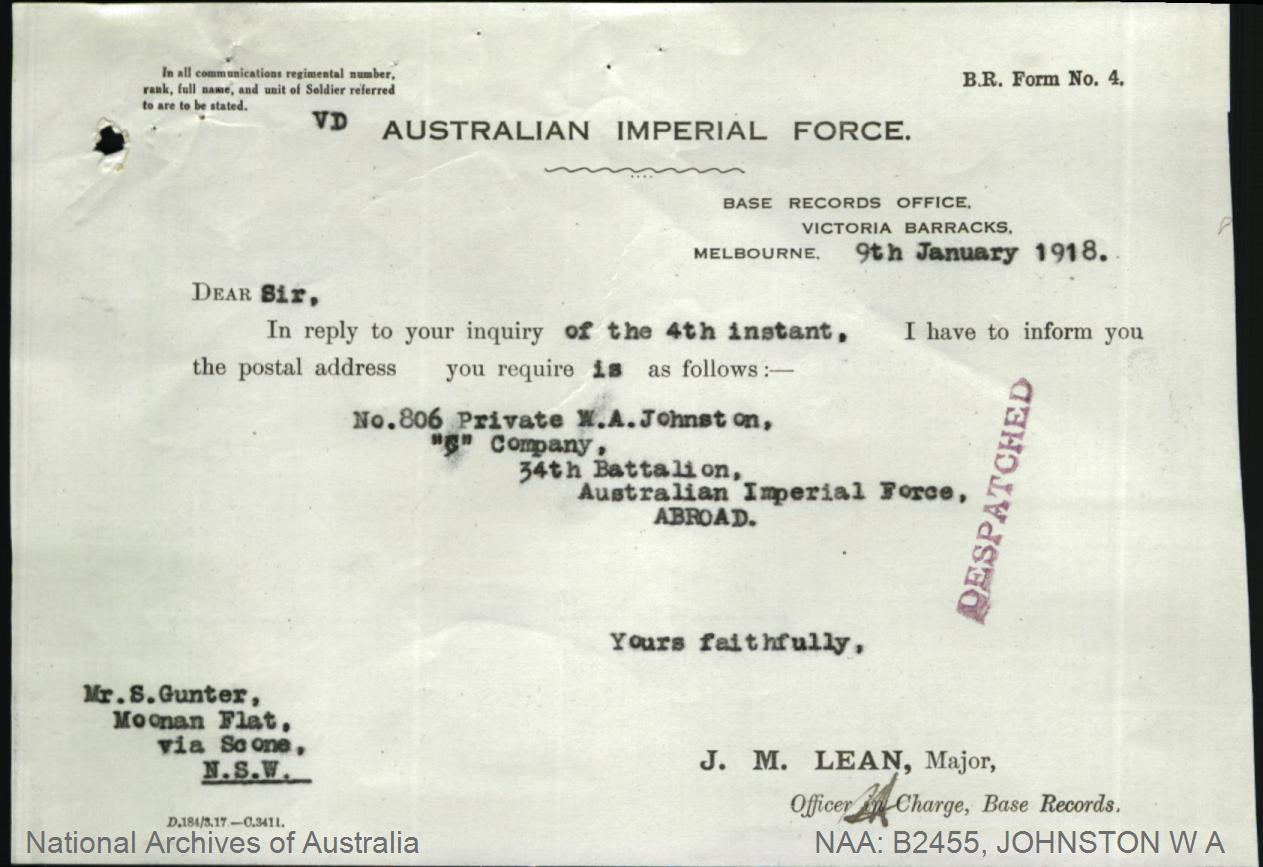
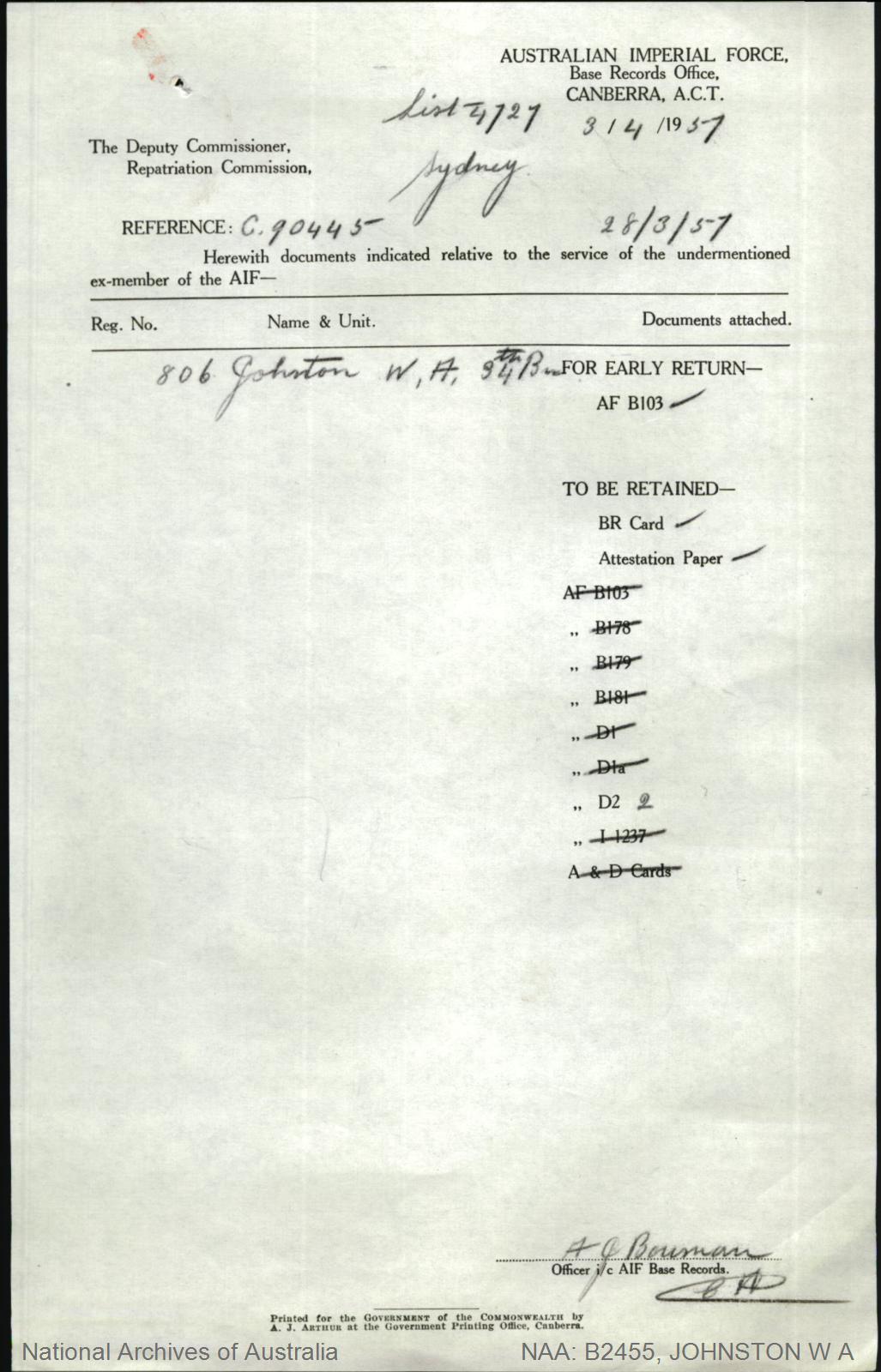
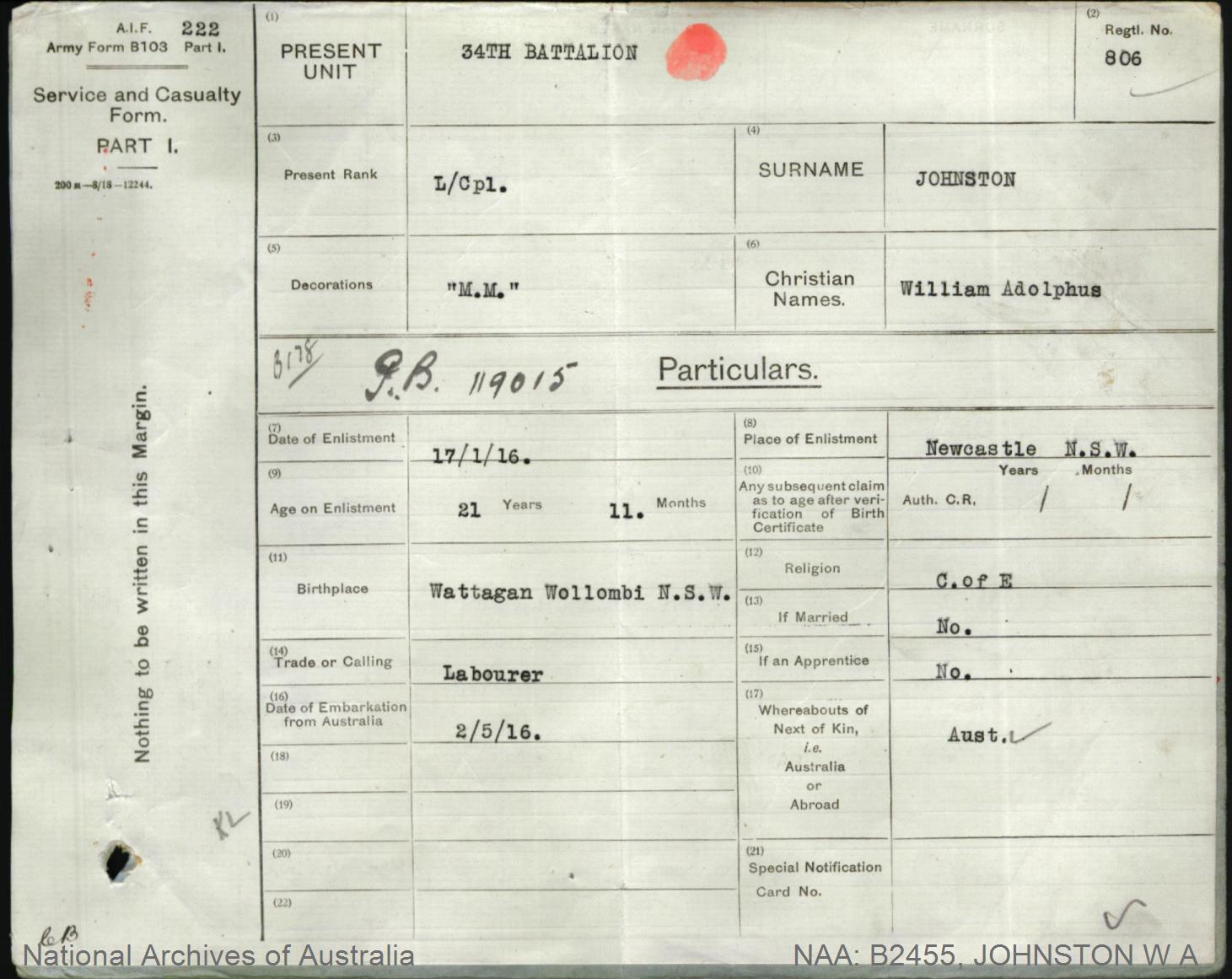
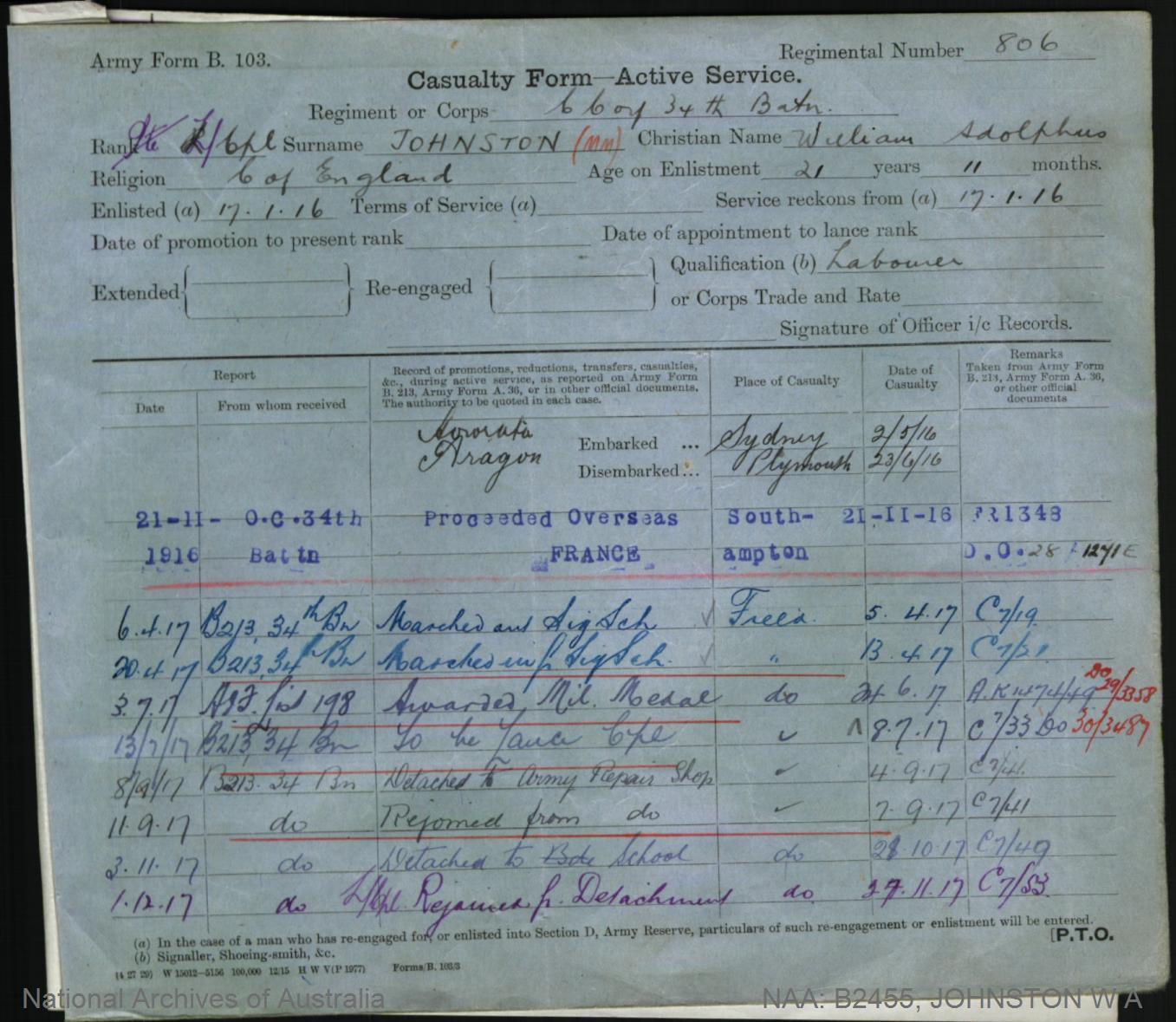
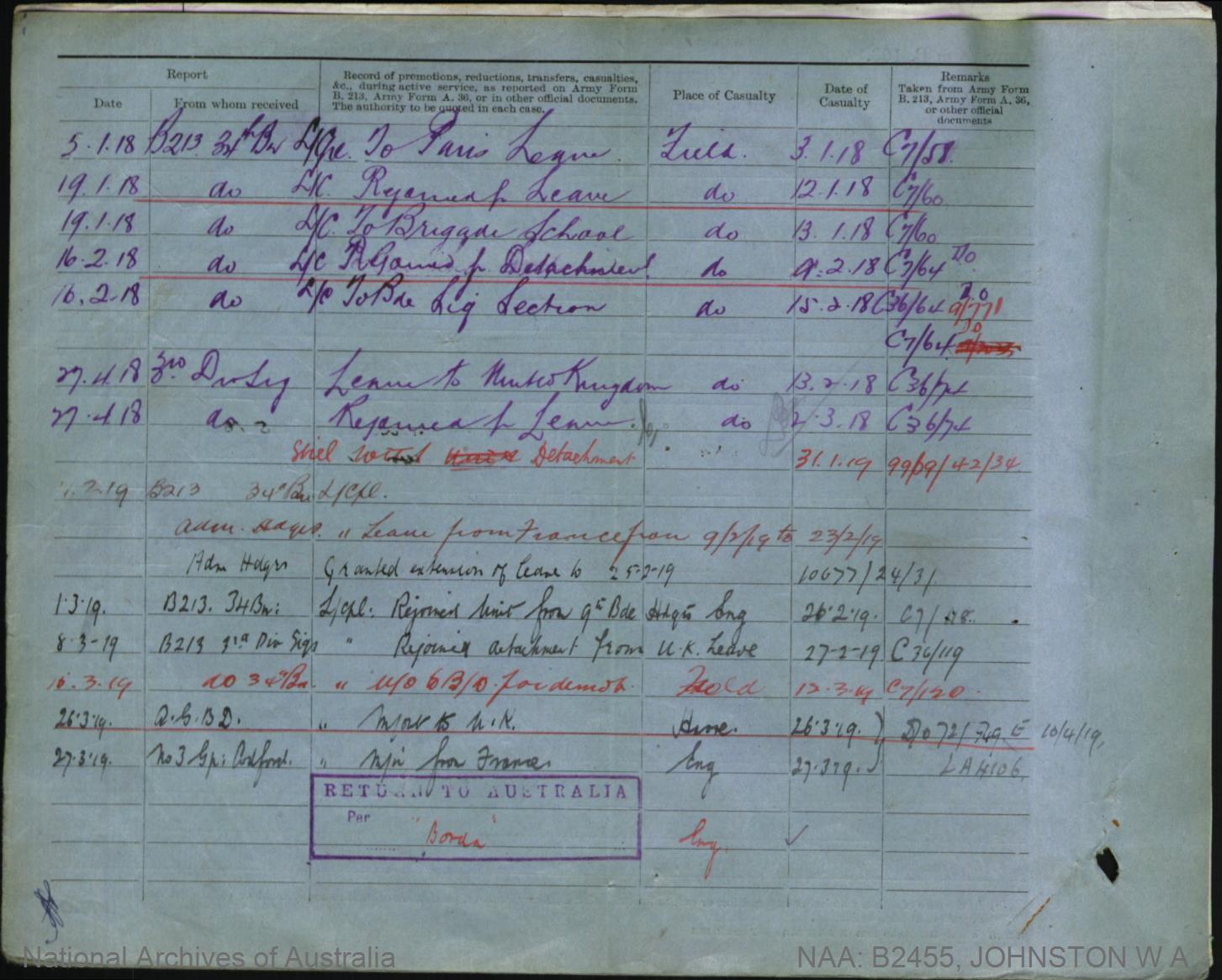

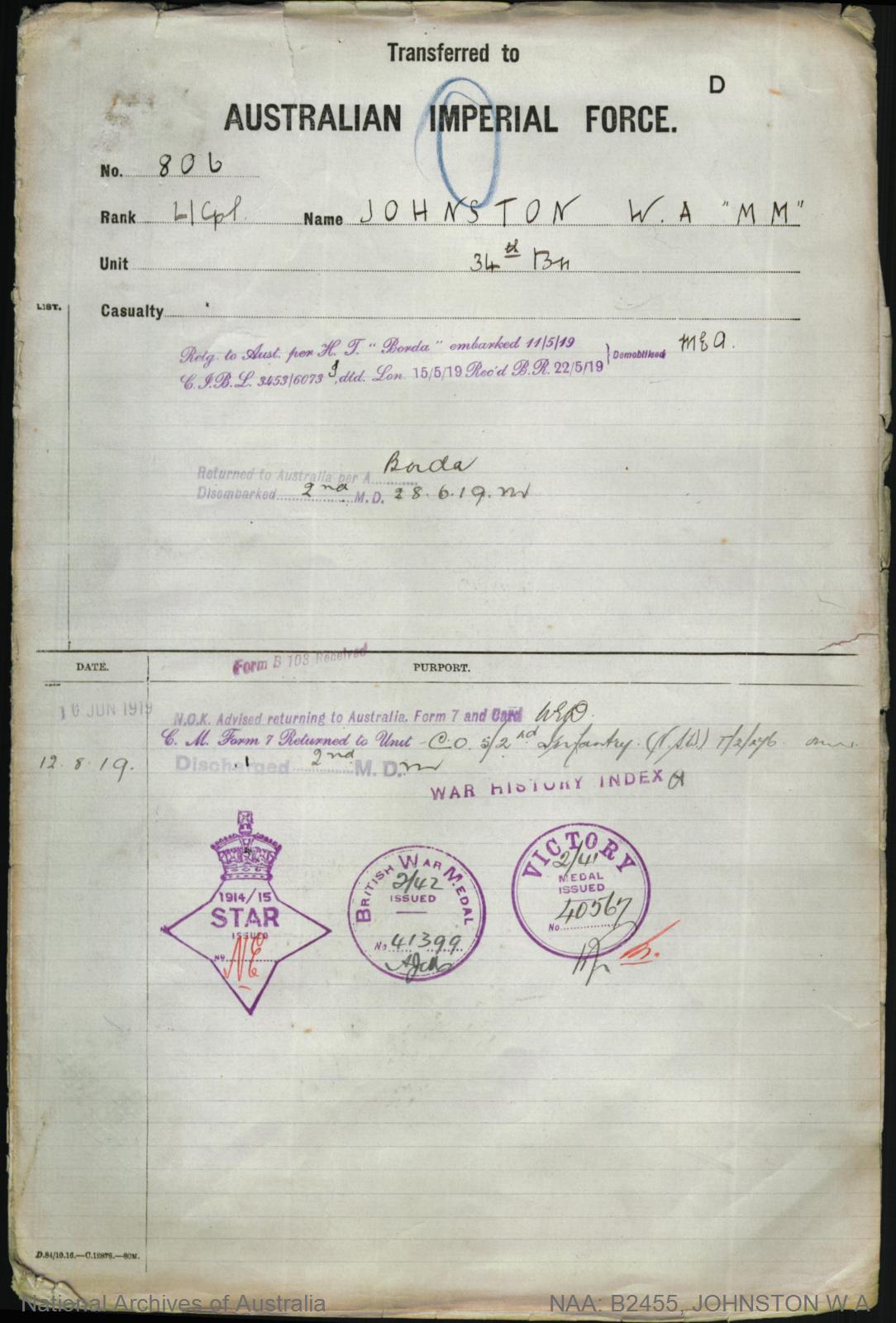
© Commonwealth of Australia (National Archives of Australia)
Under Construction: 31/12/2022-02/01/2023.
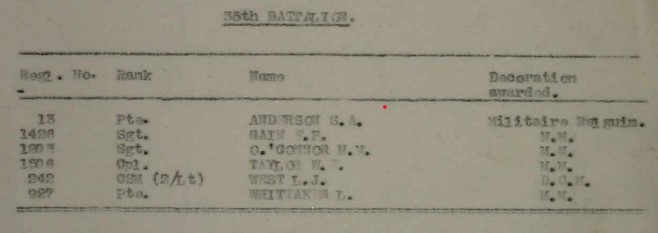
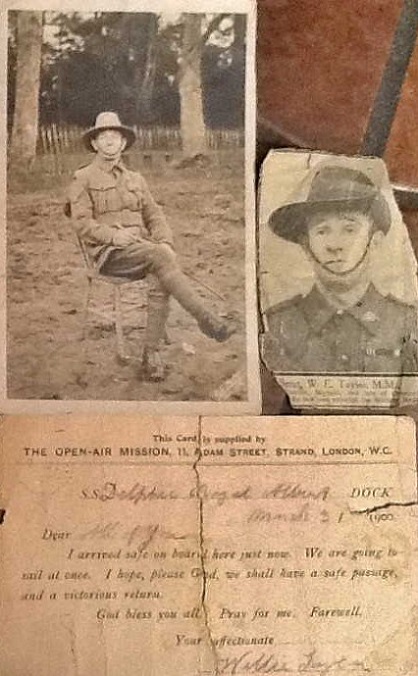
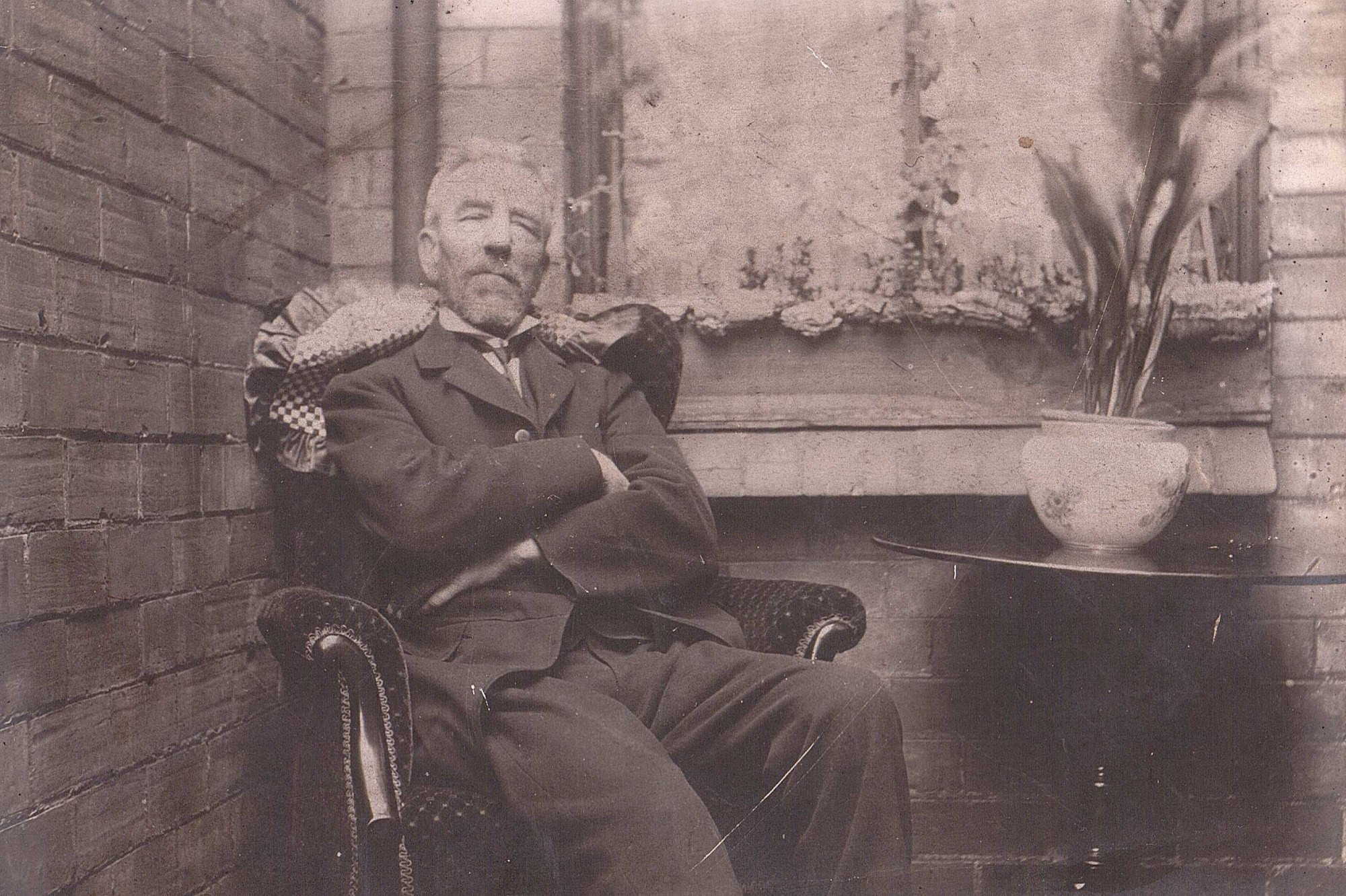


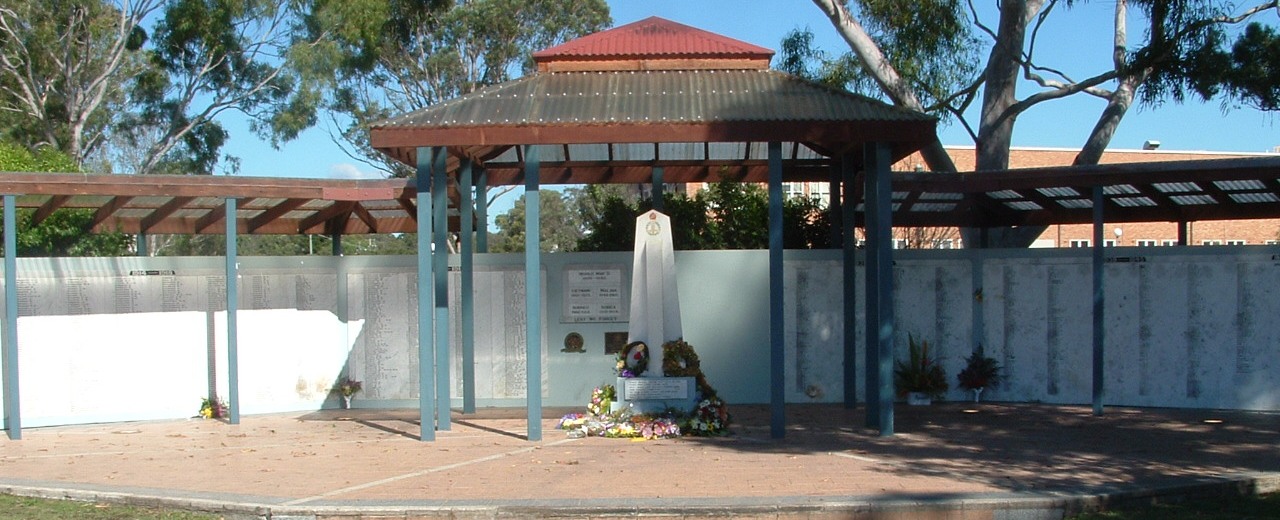

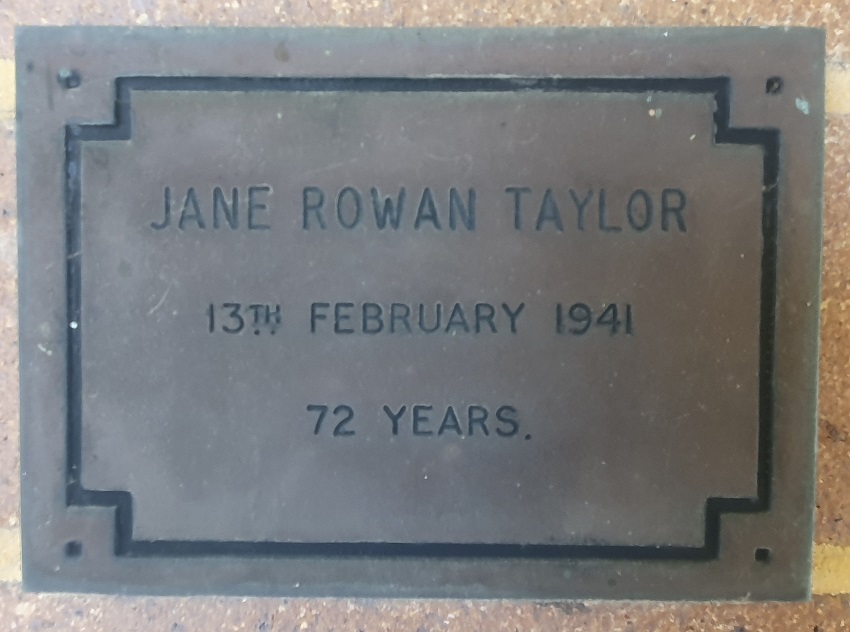
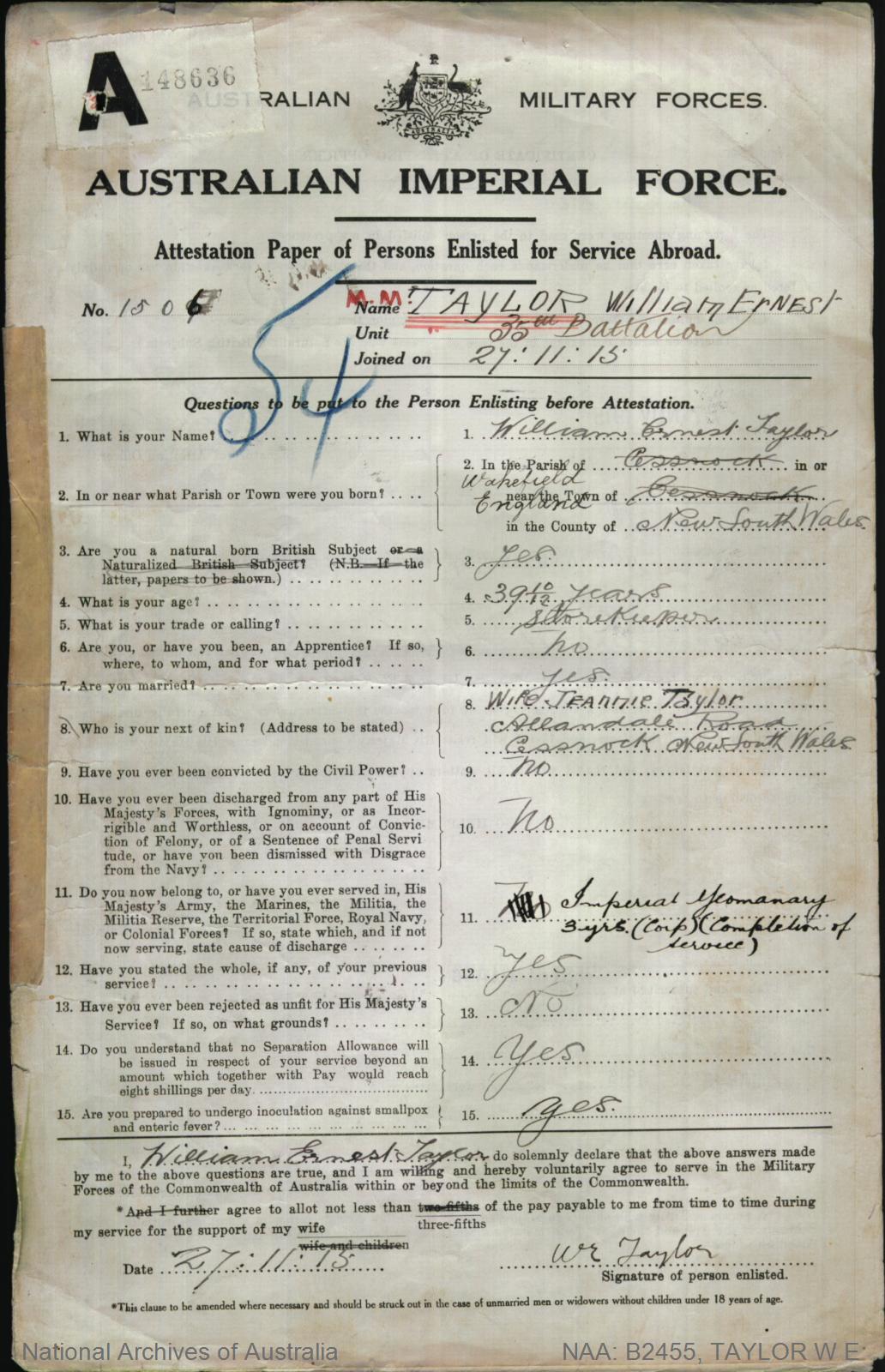
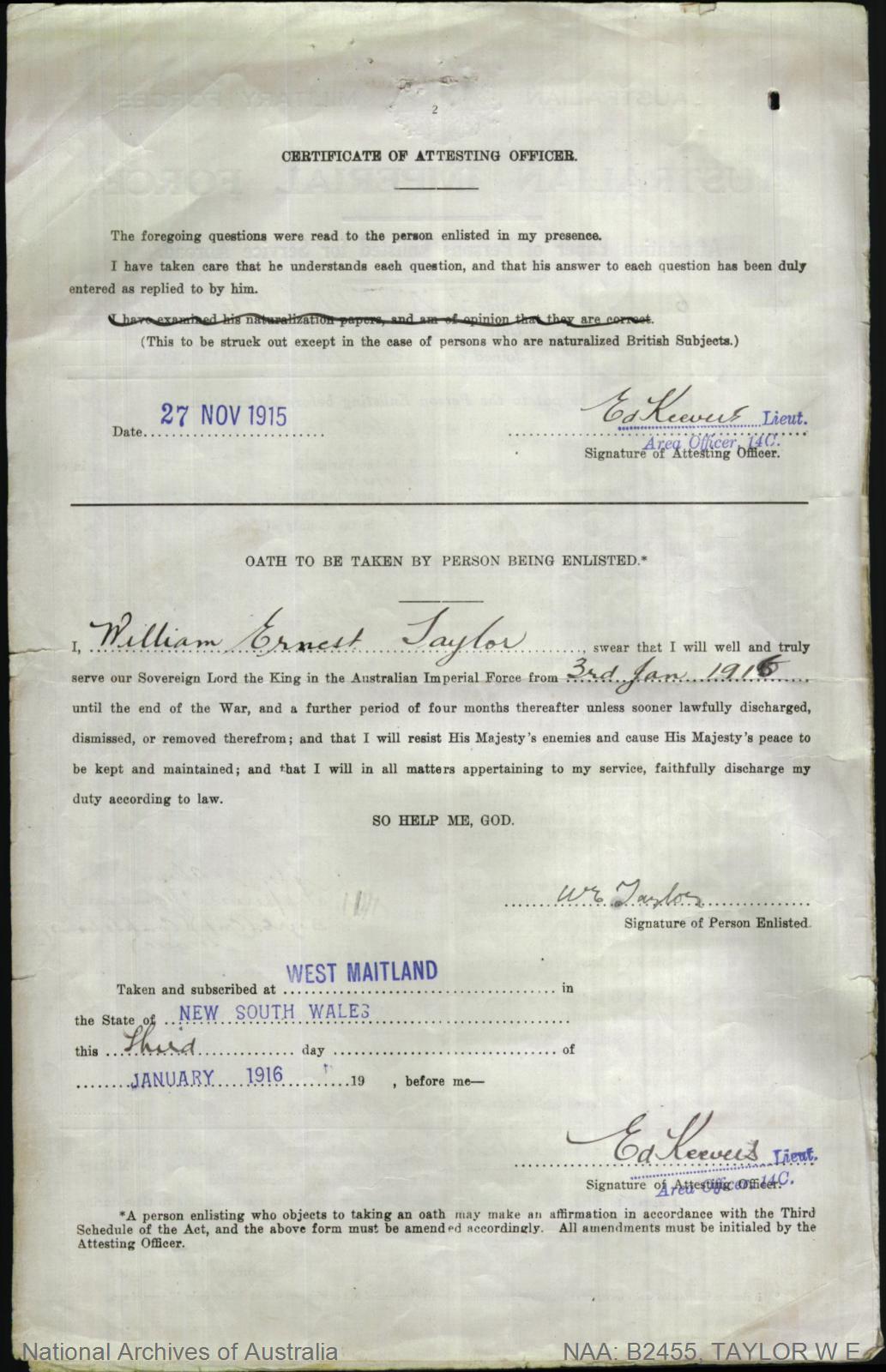
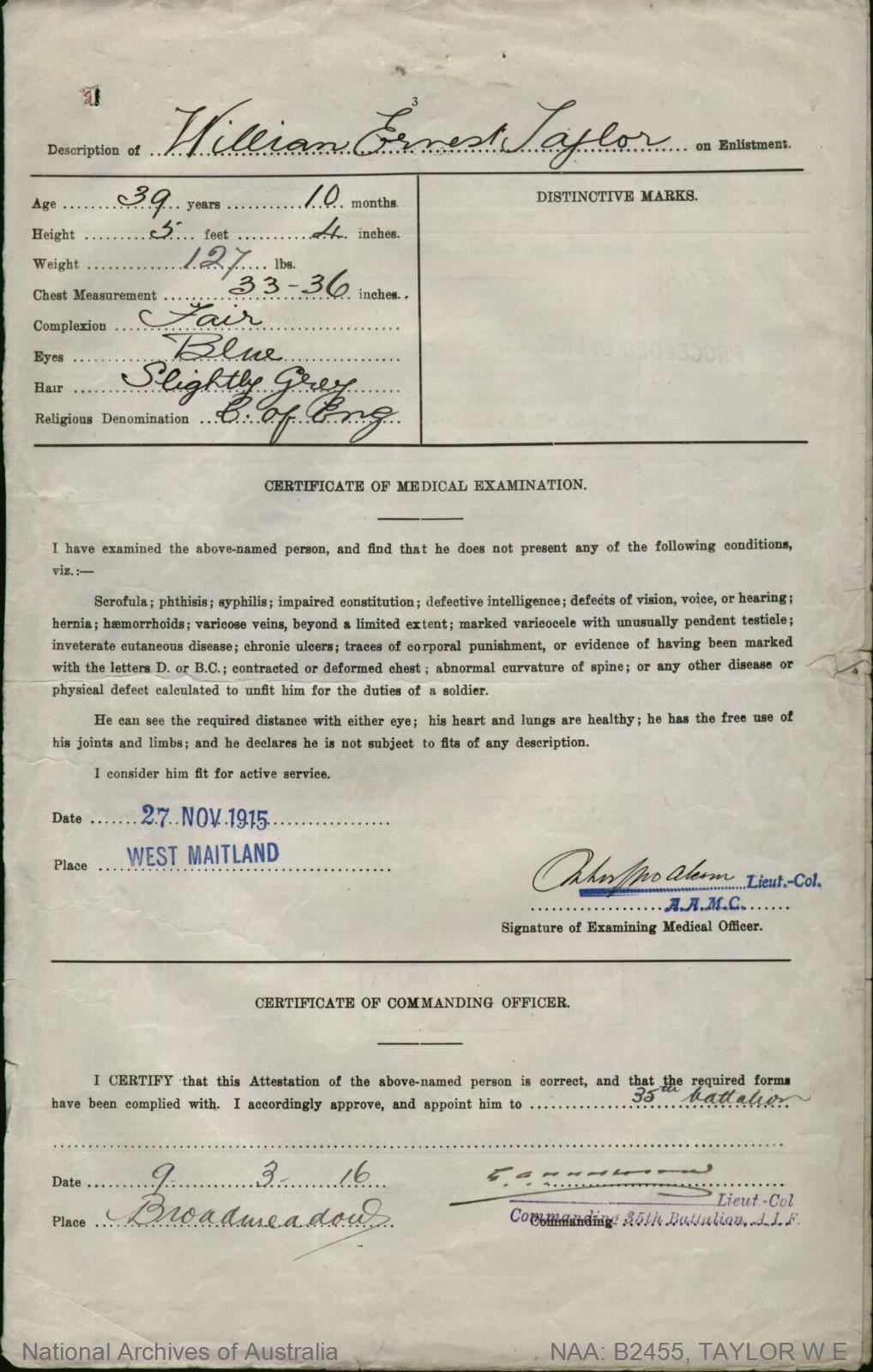

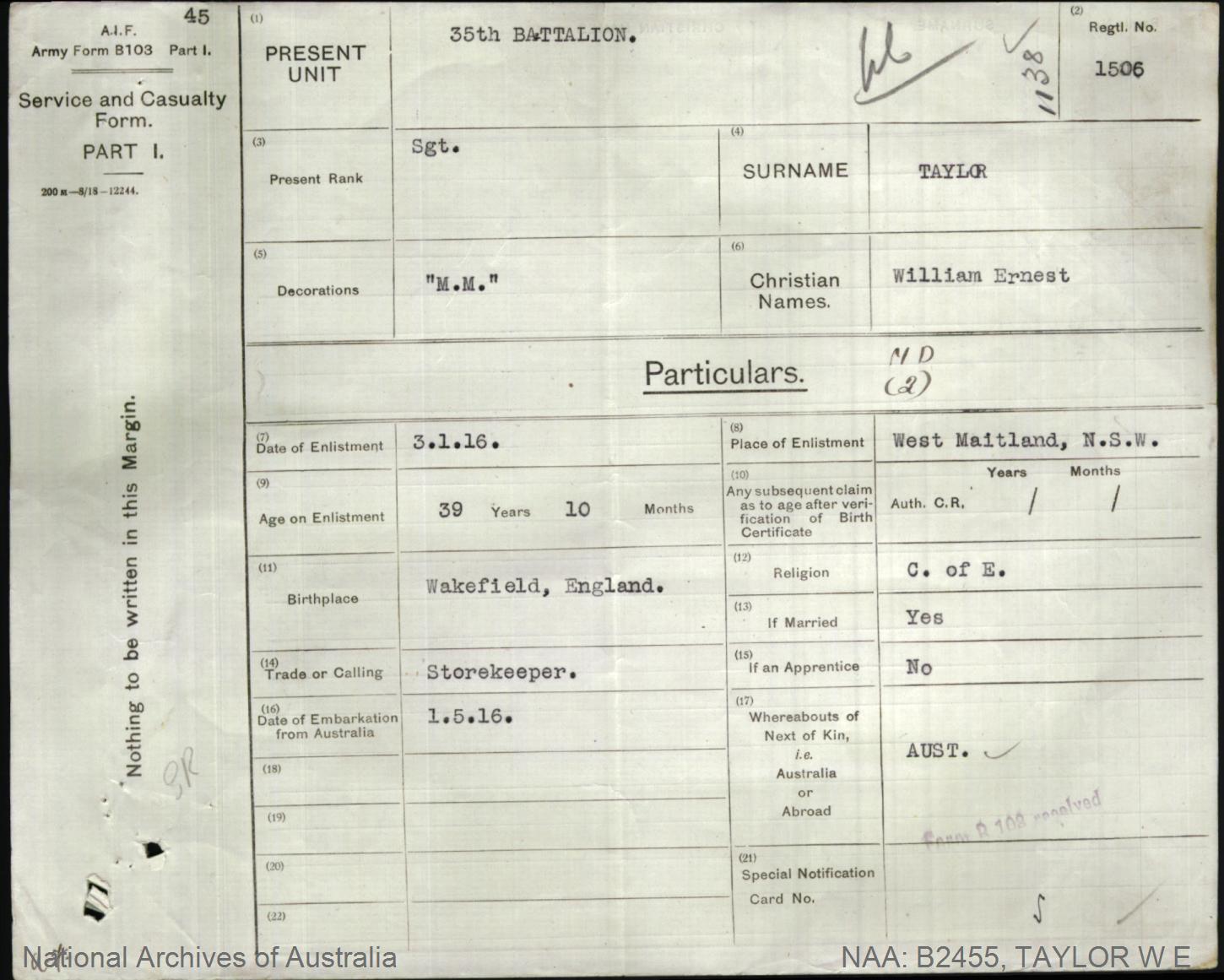
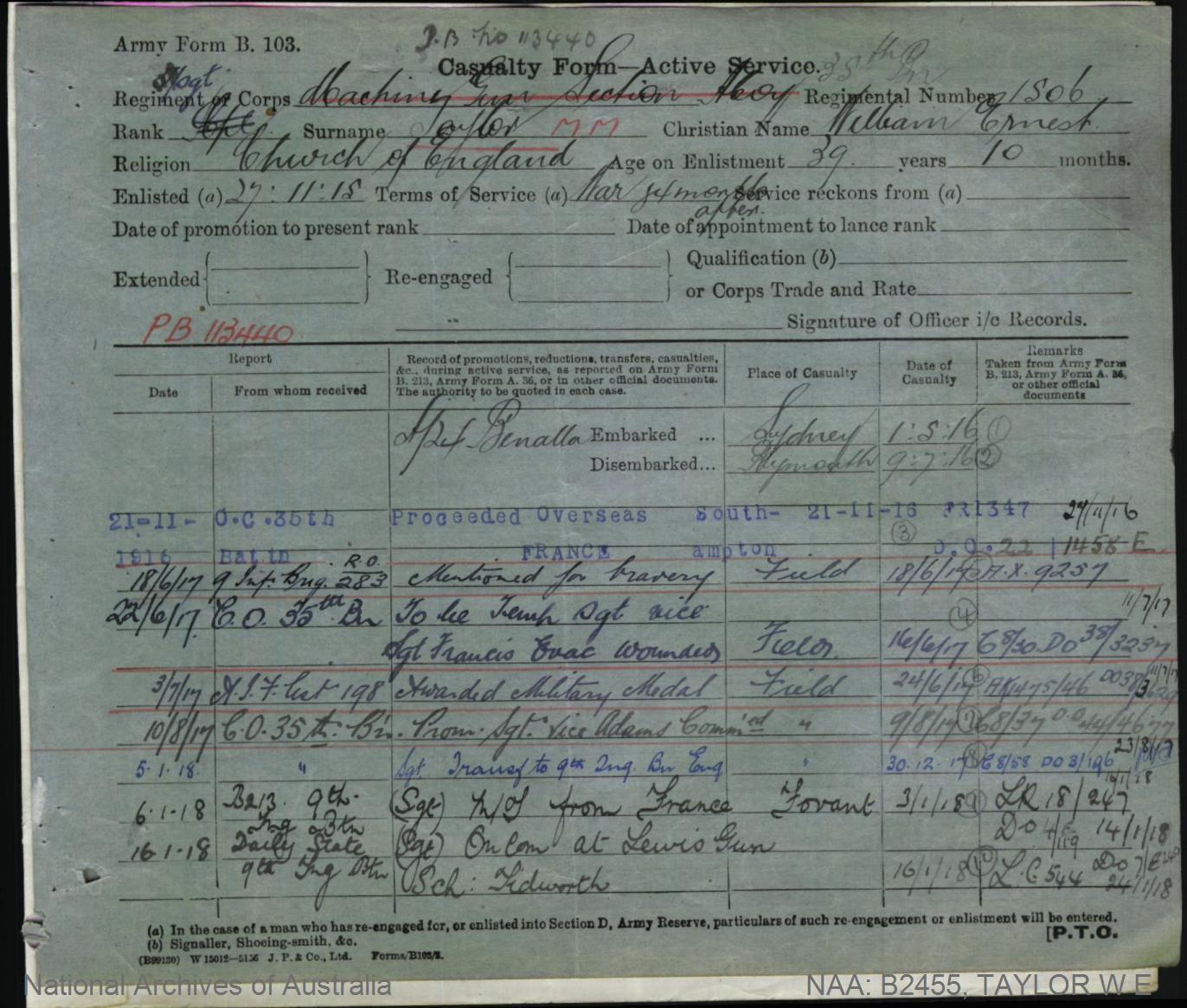
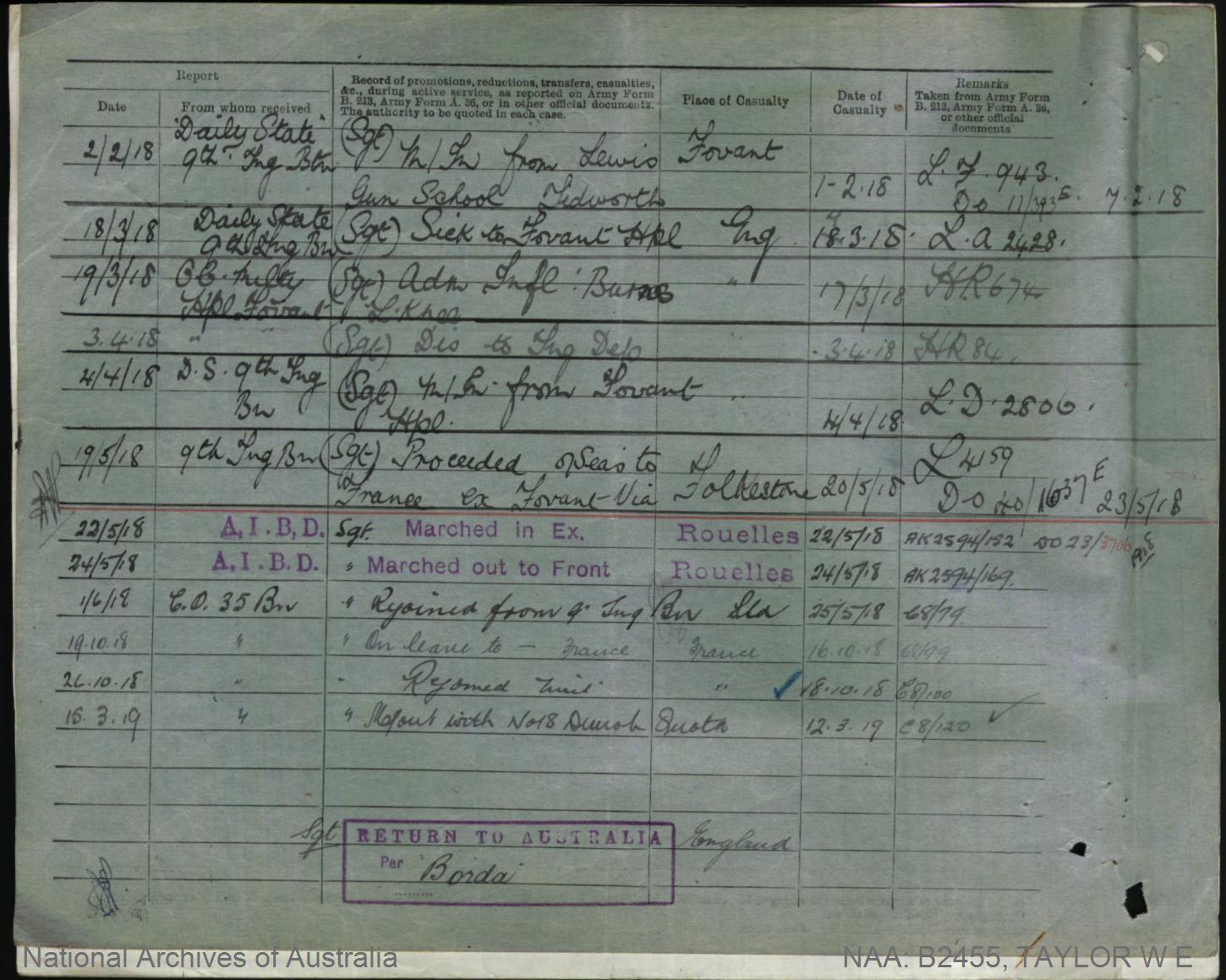
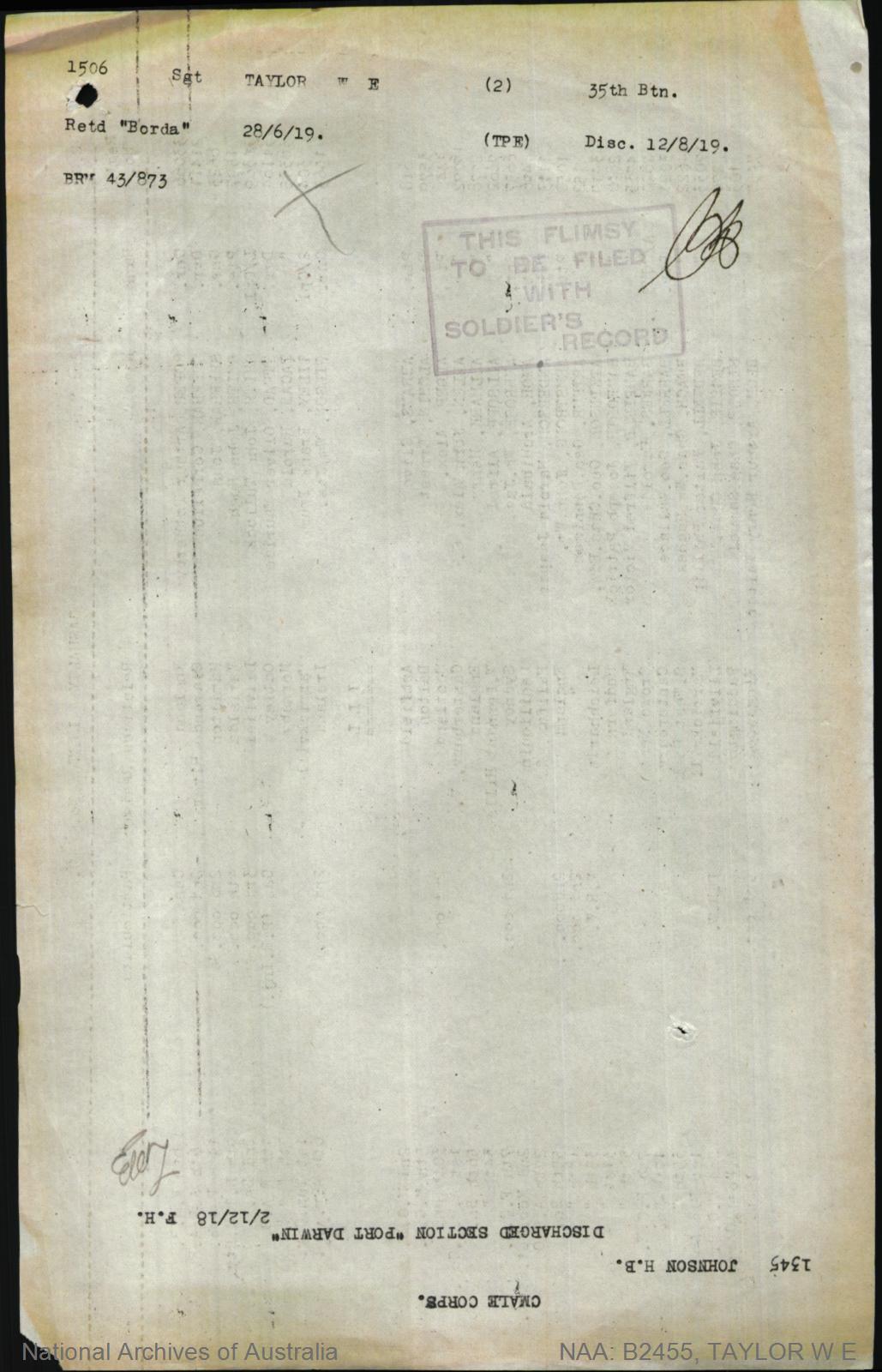
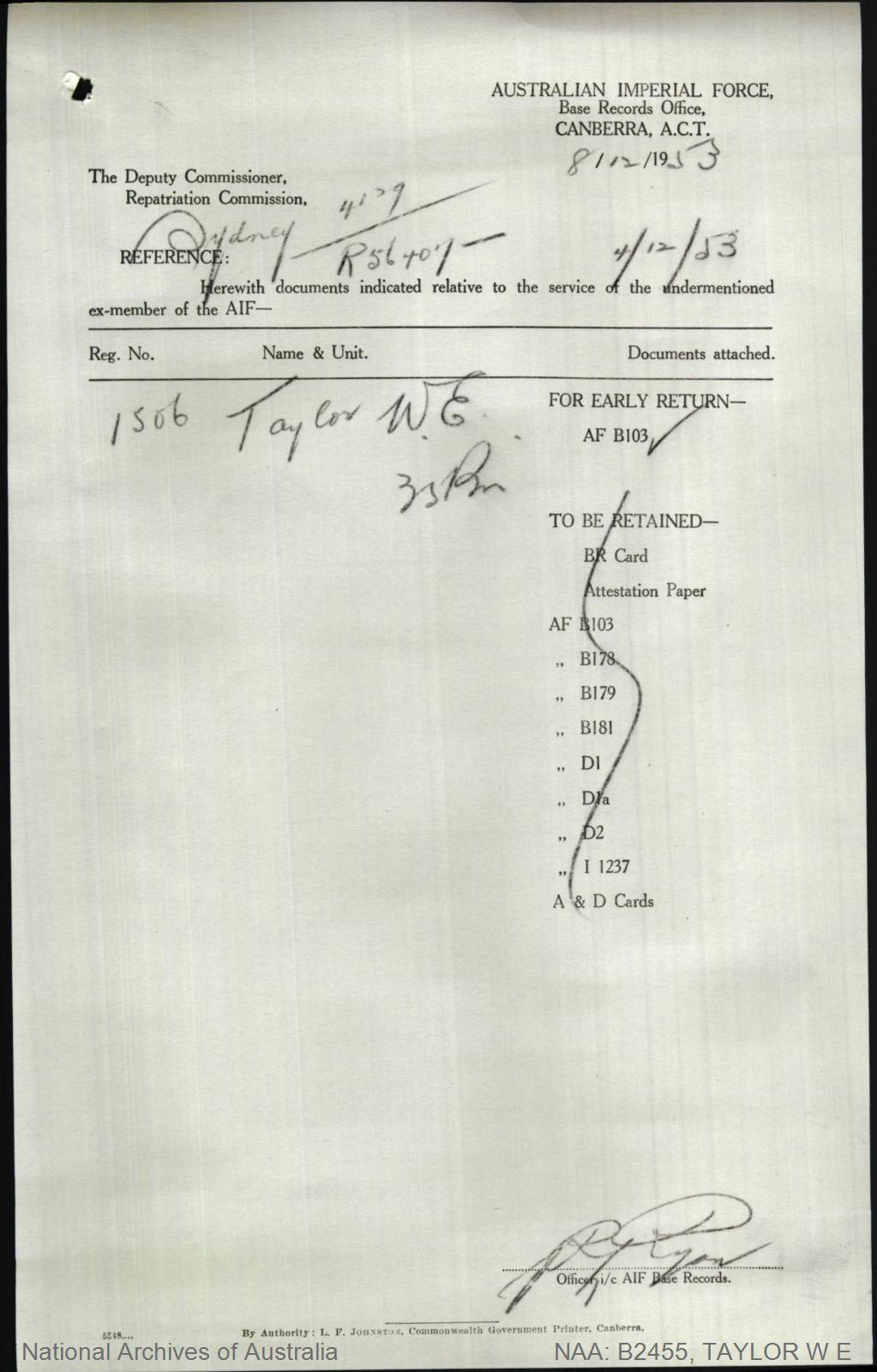
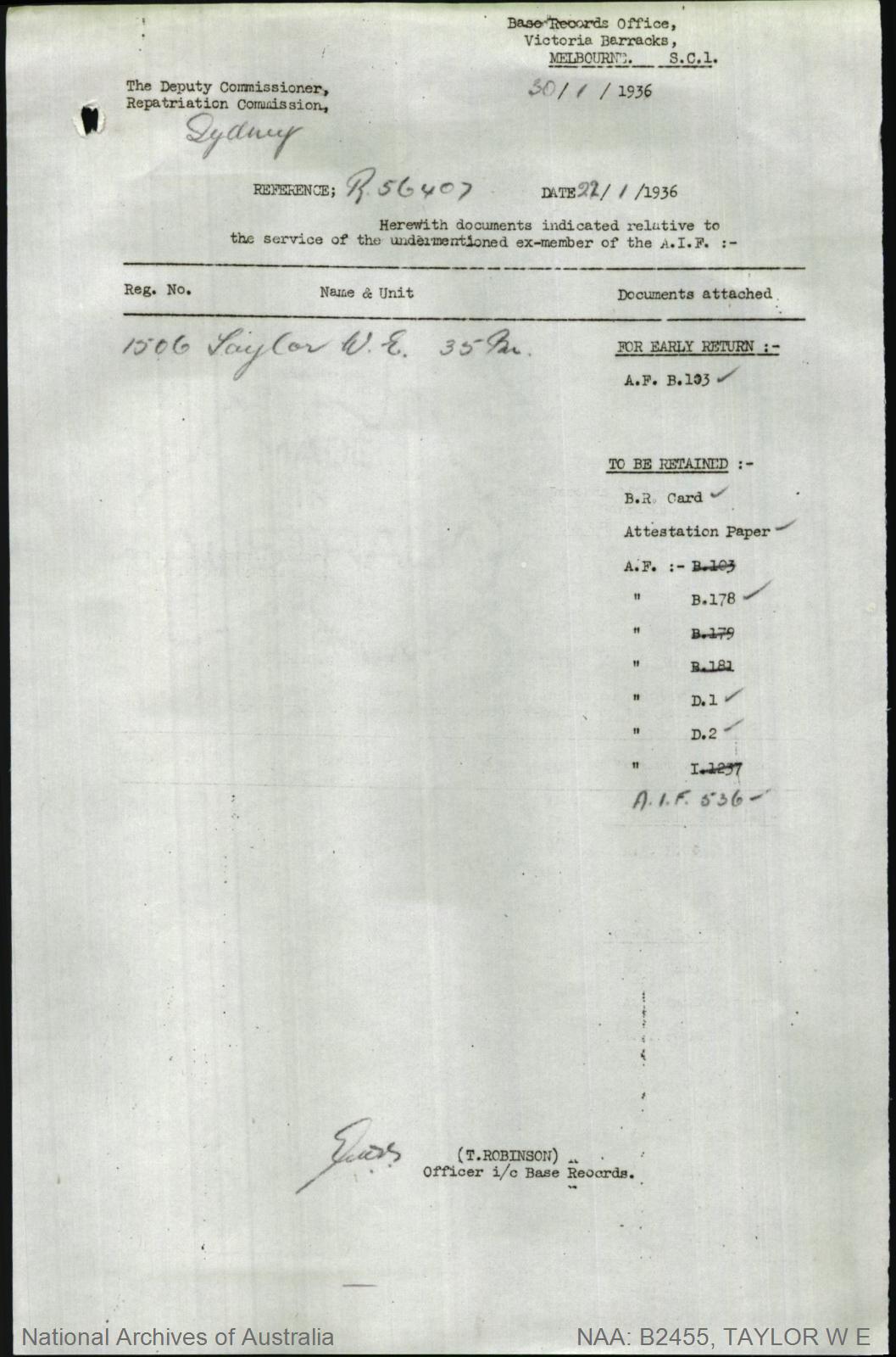
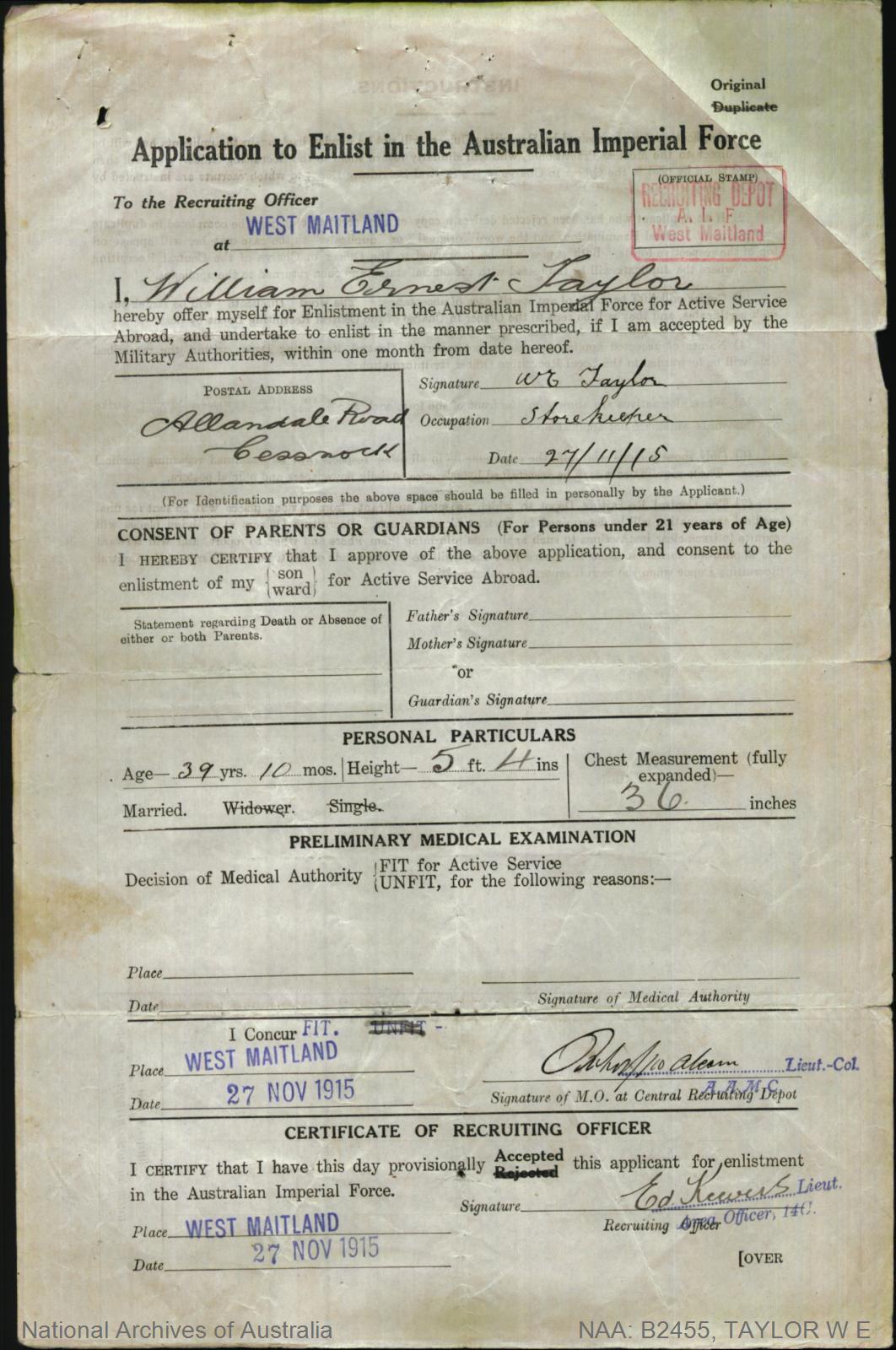


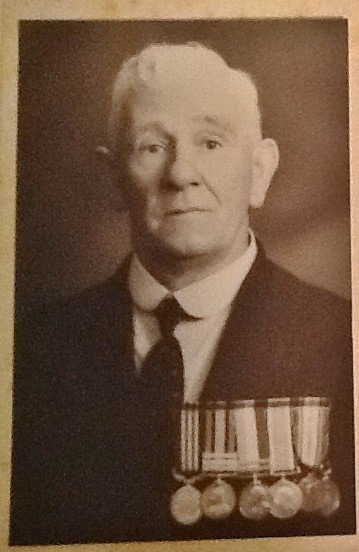
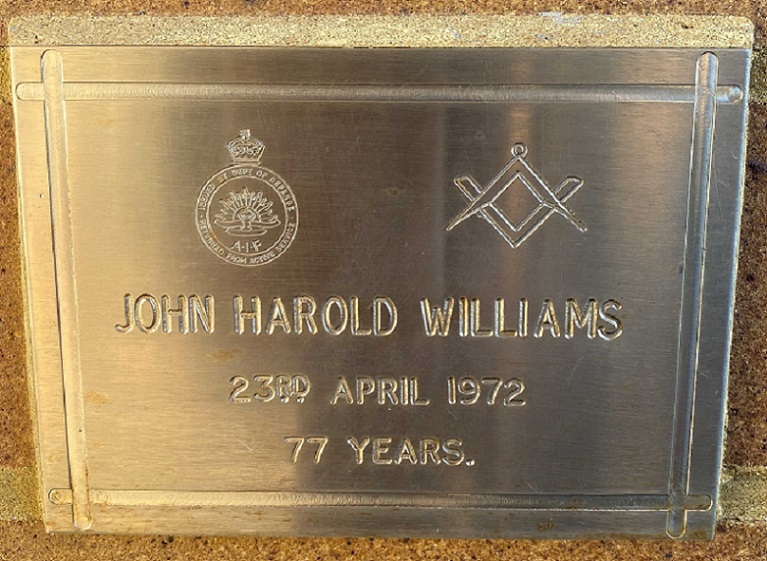
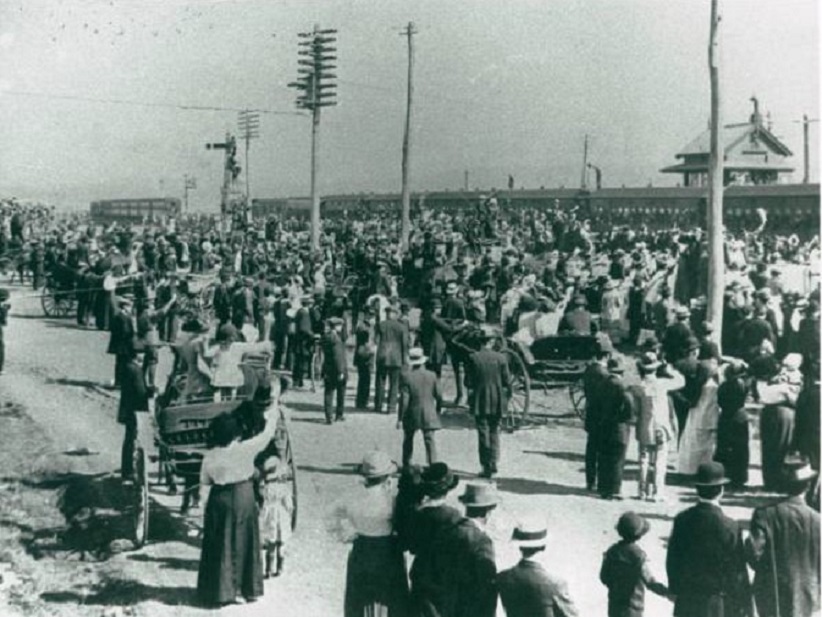
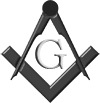
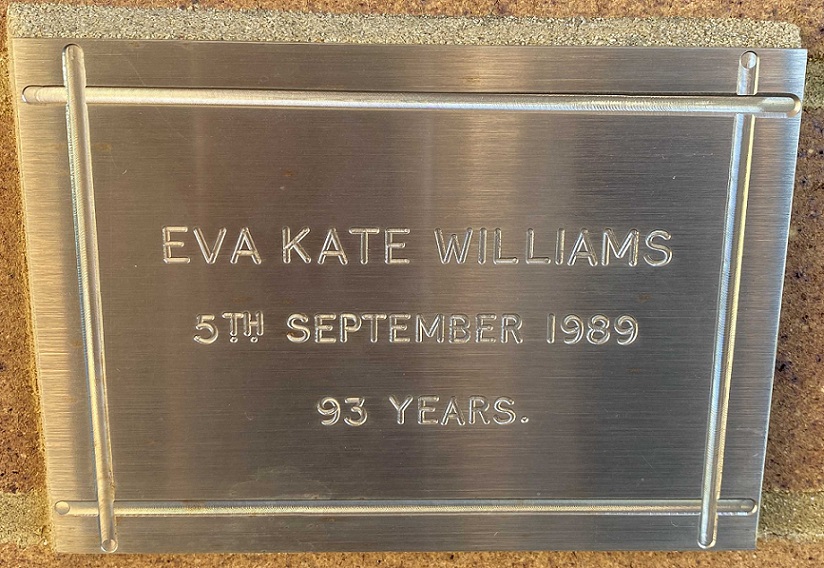
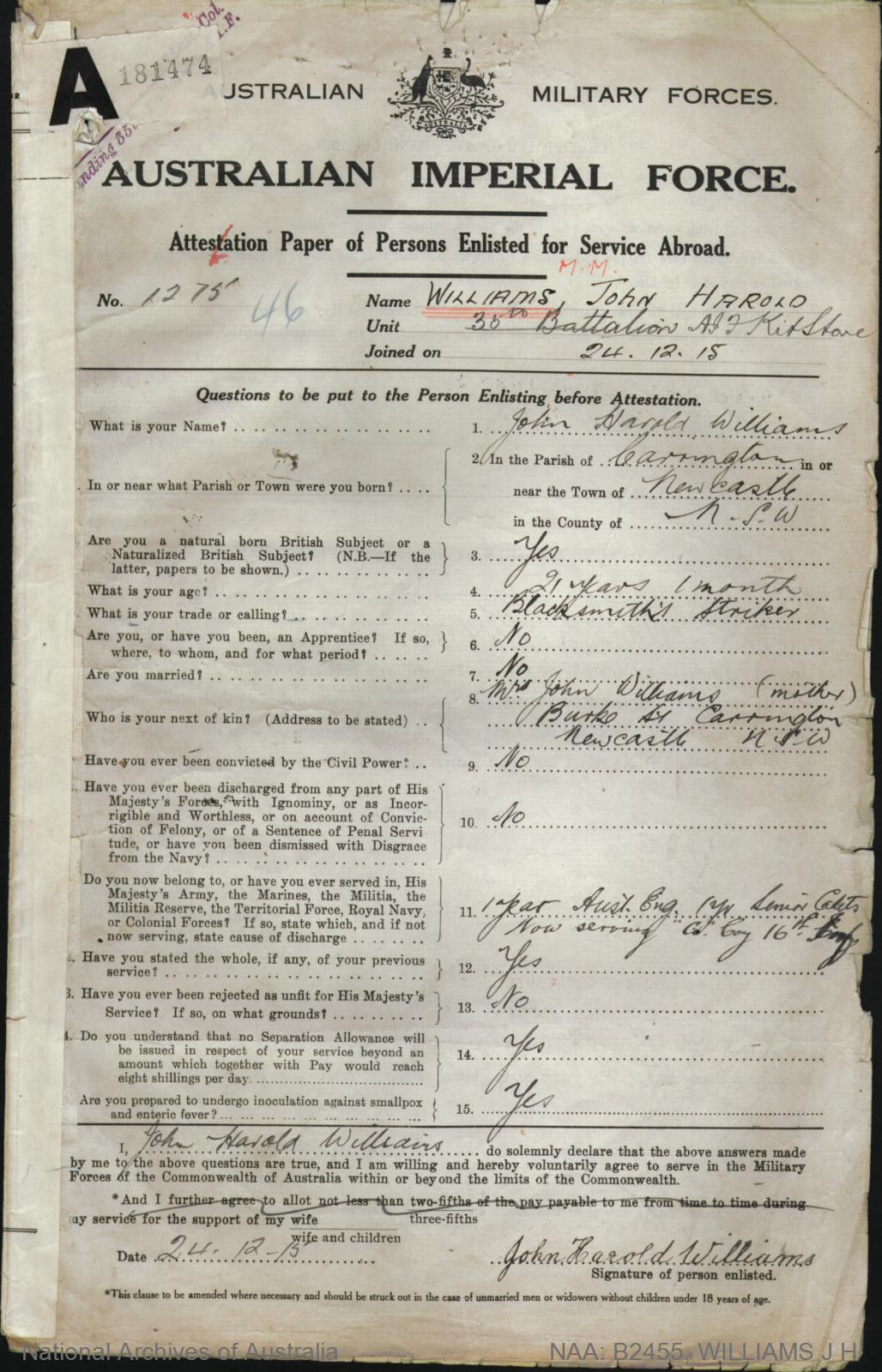

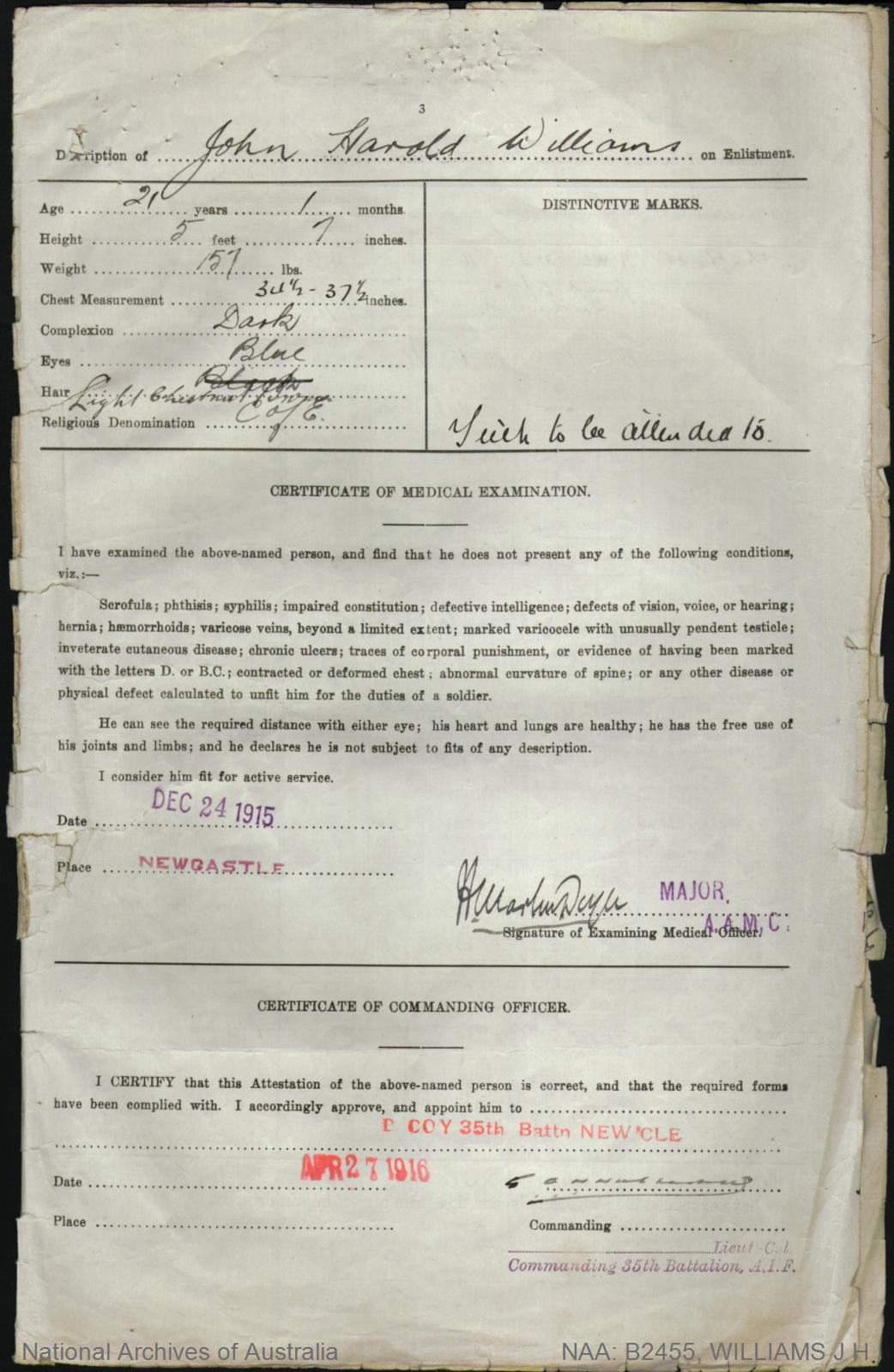
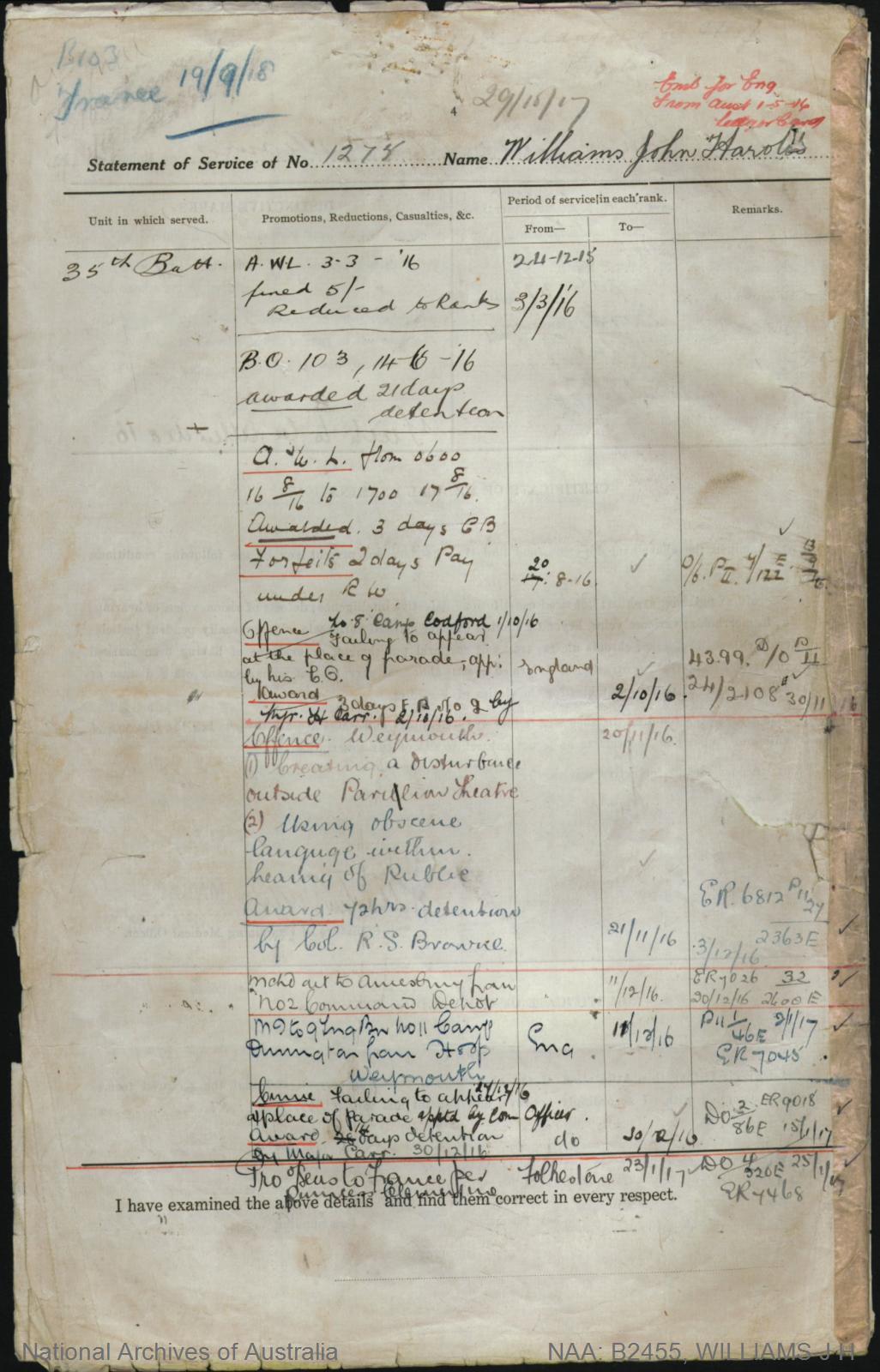
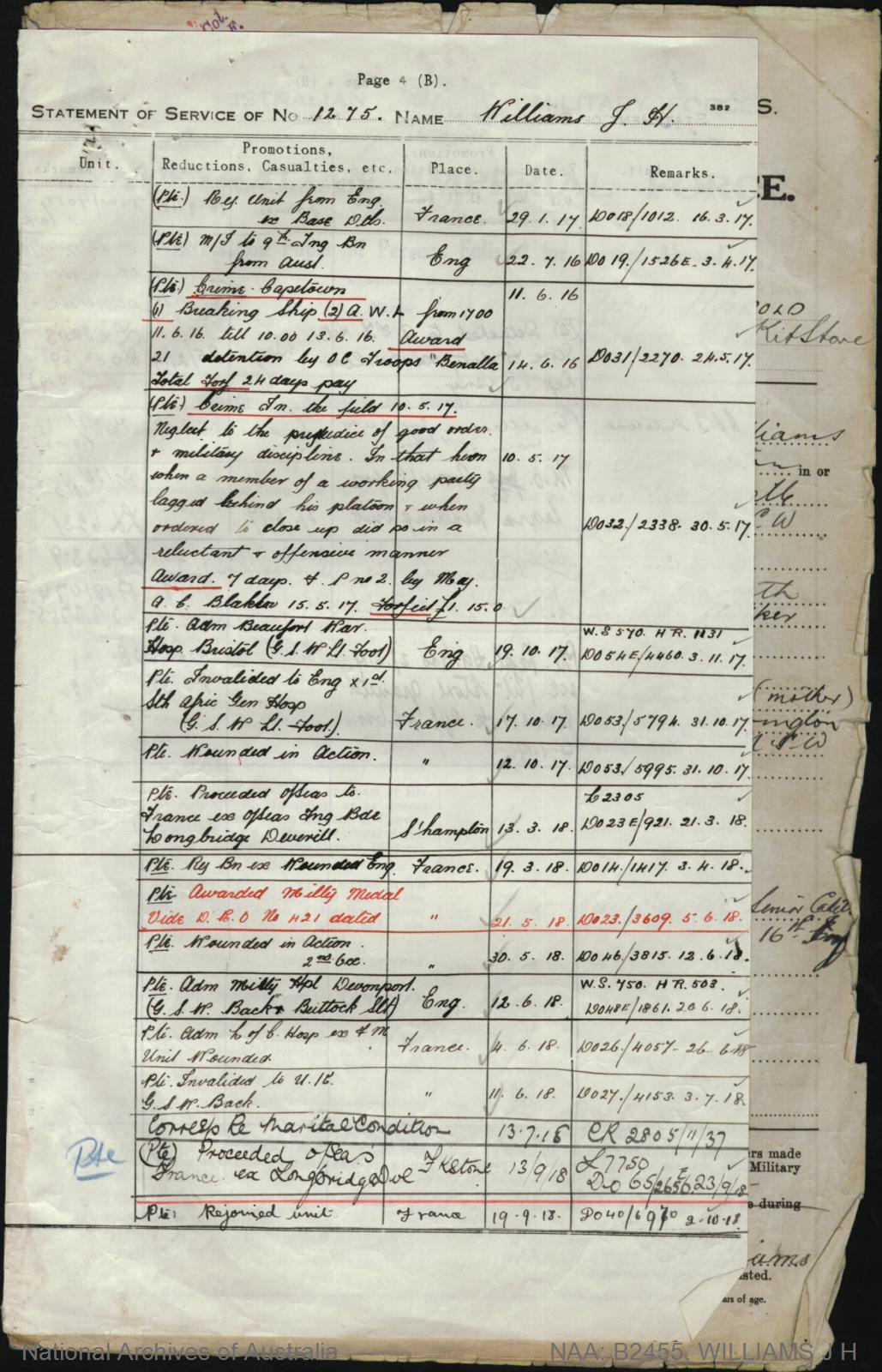
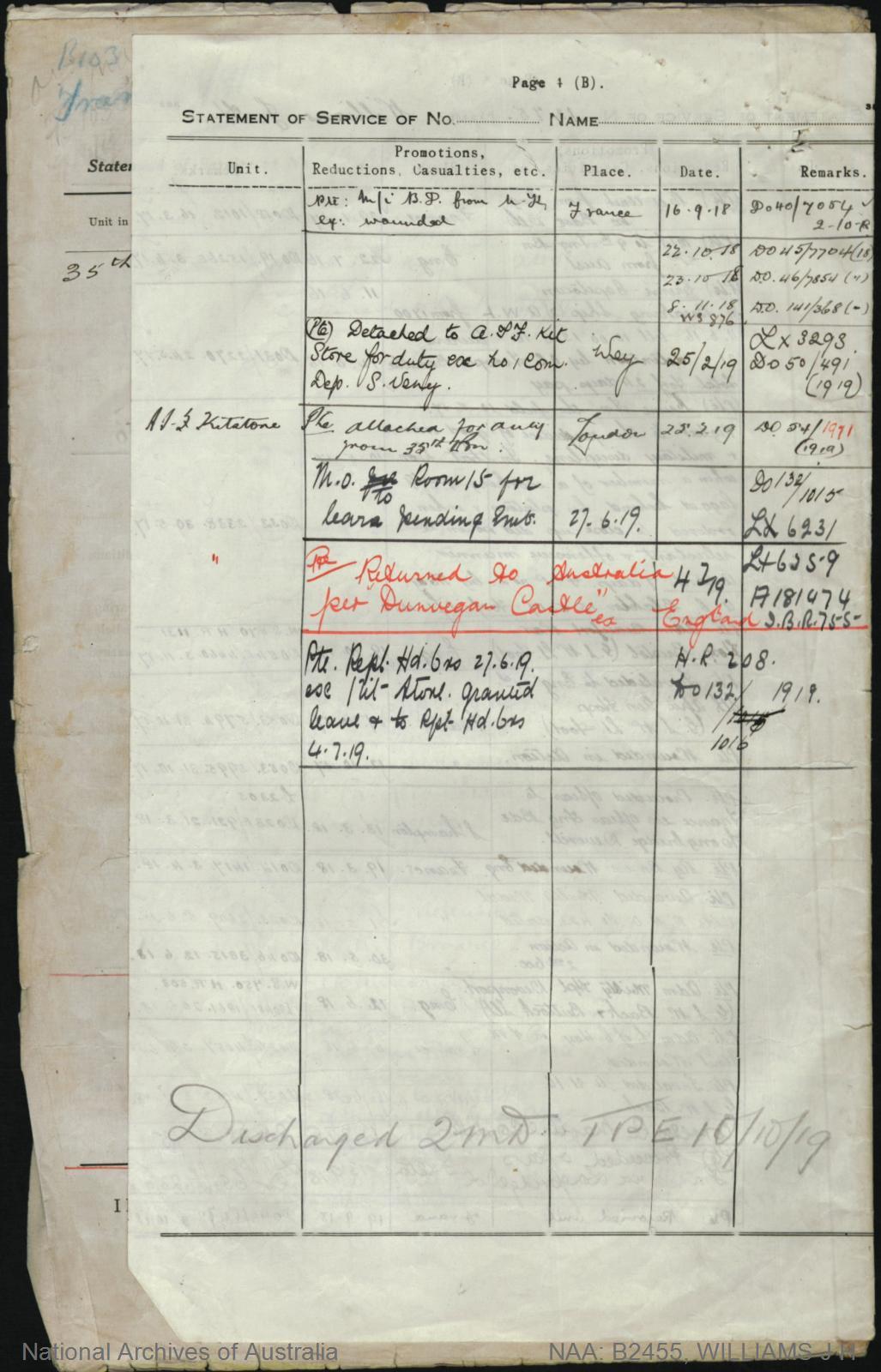
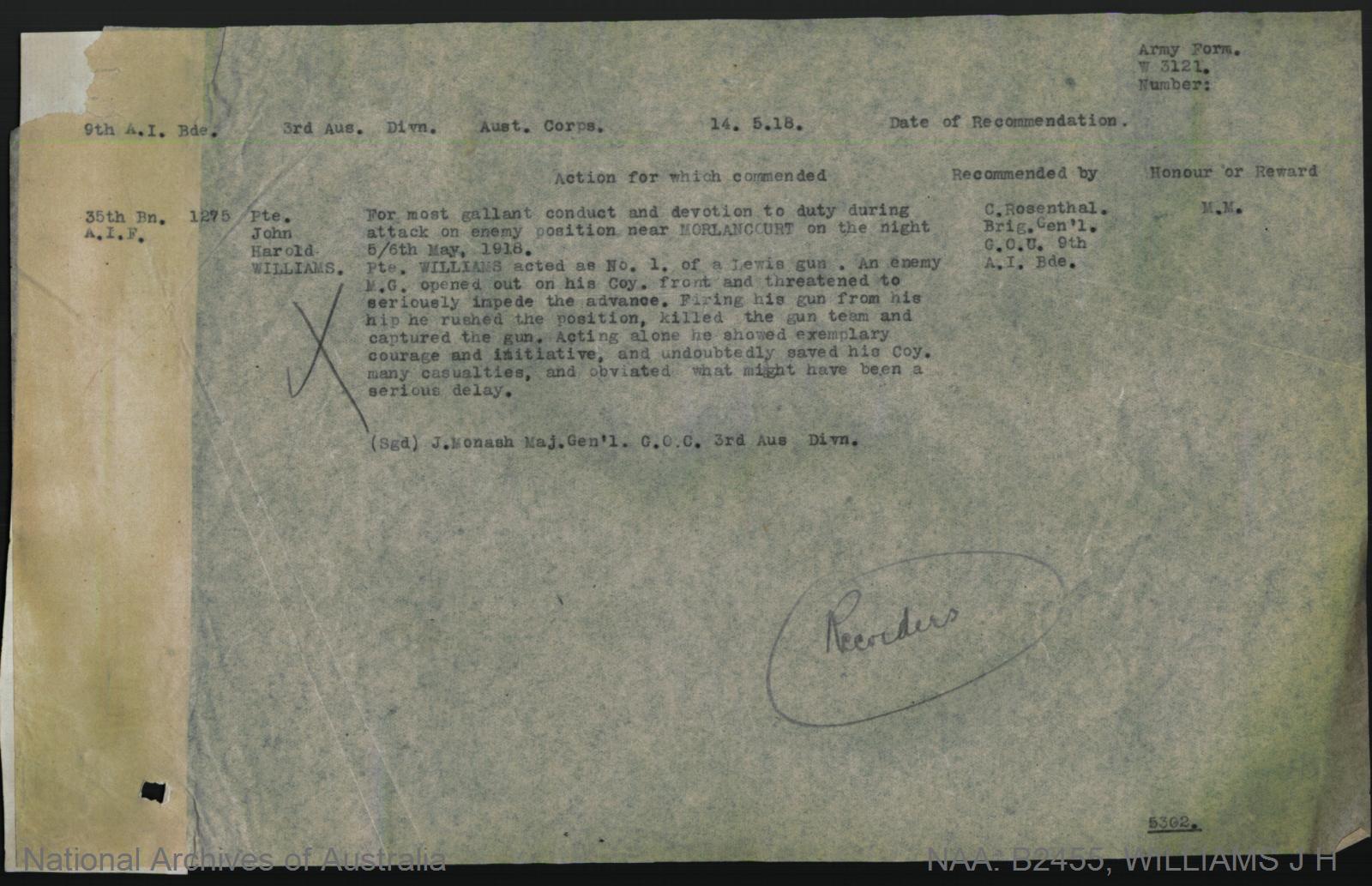
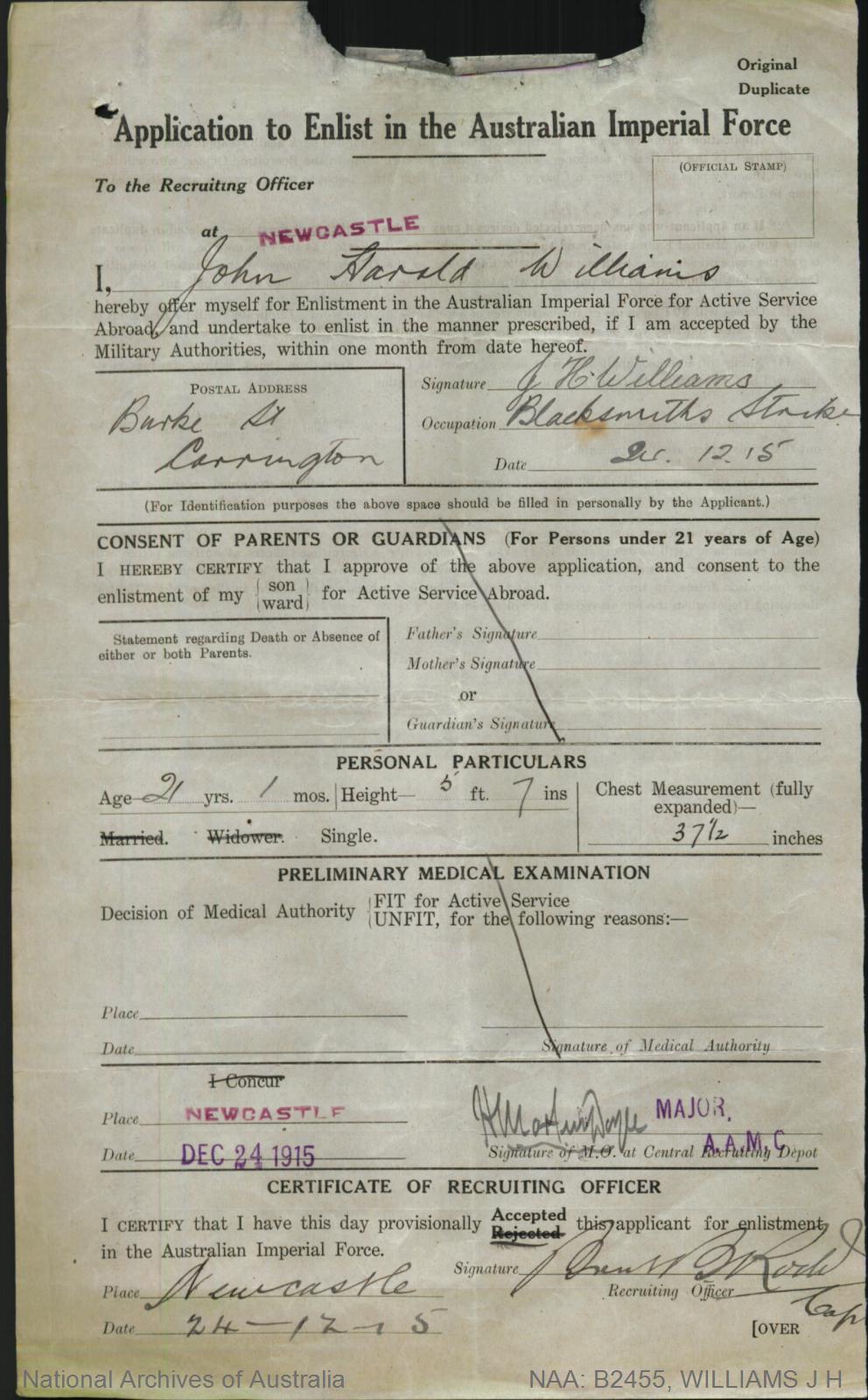
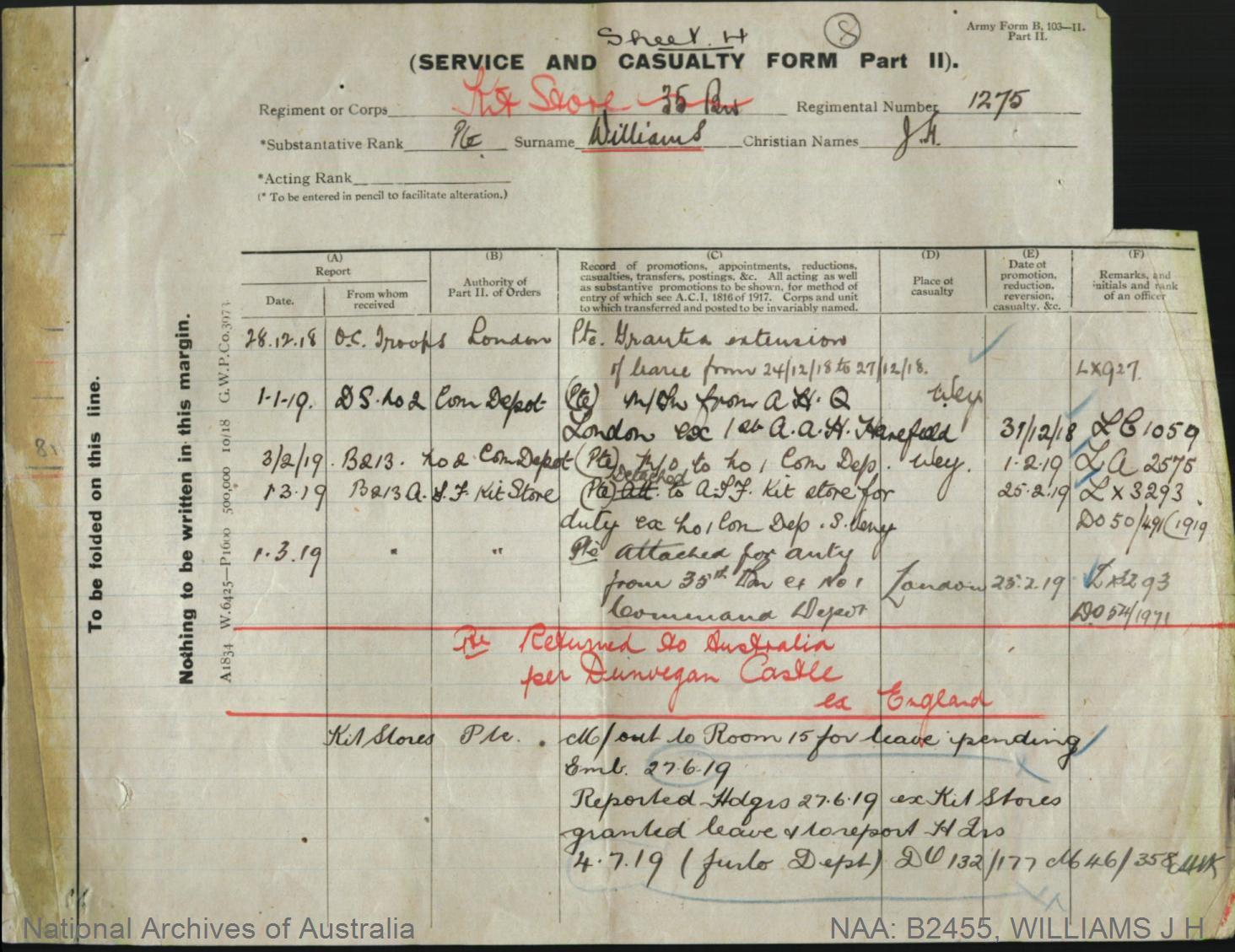
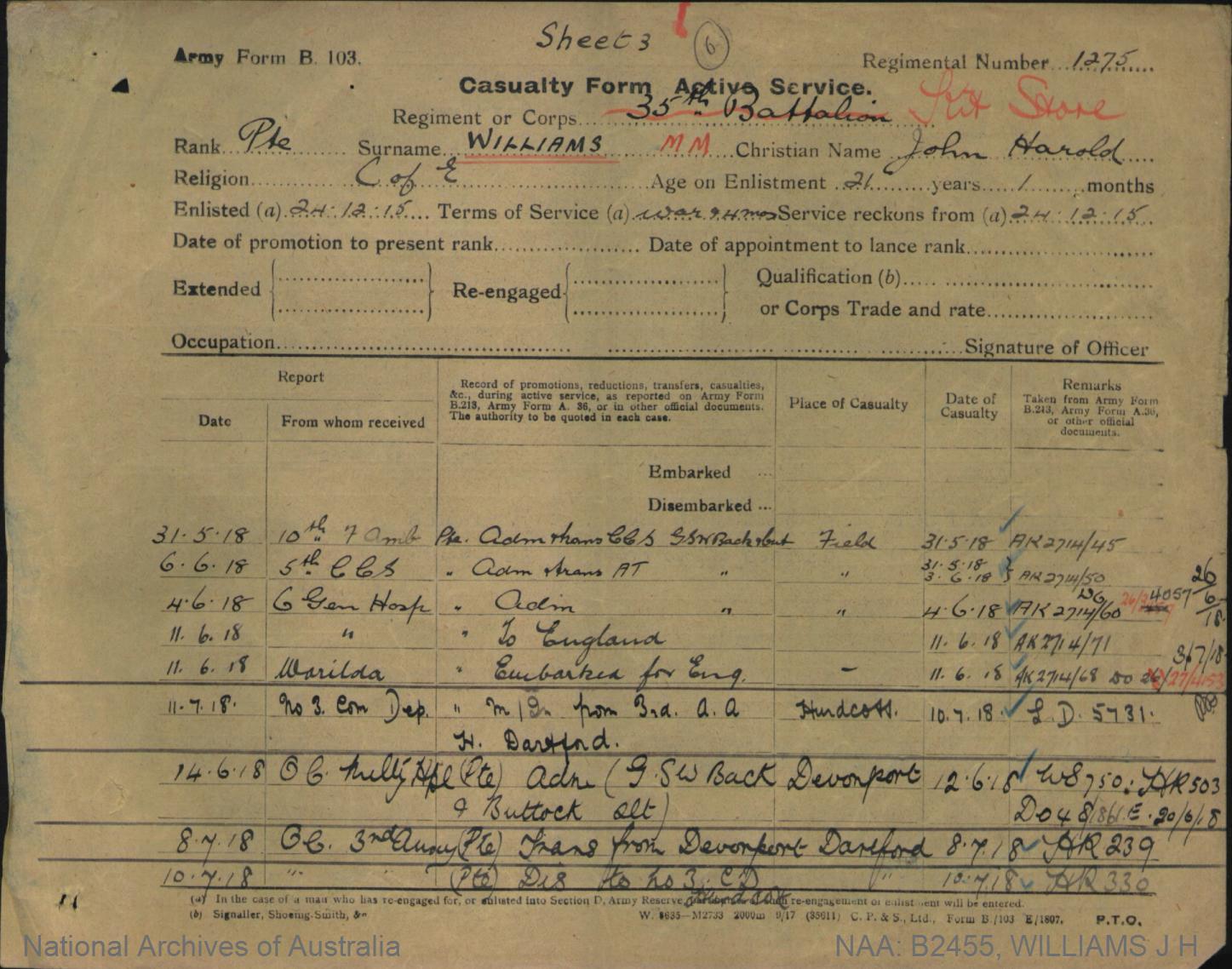
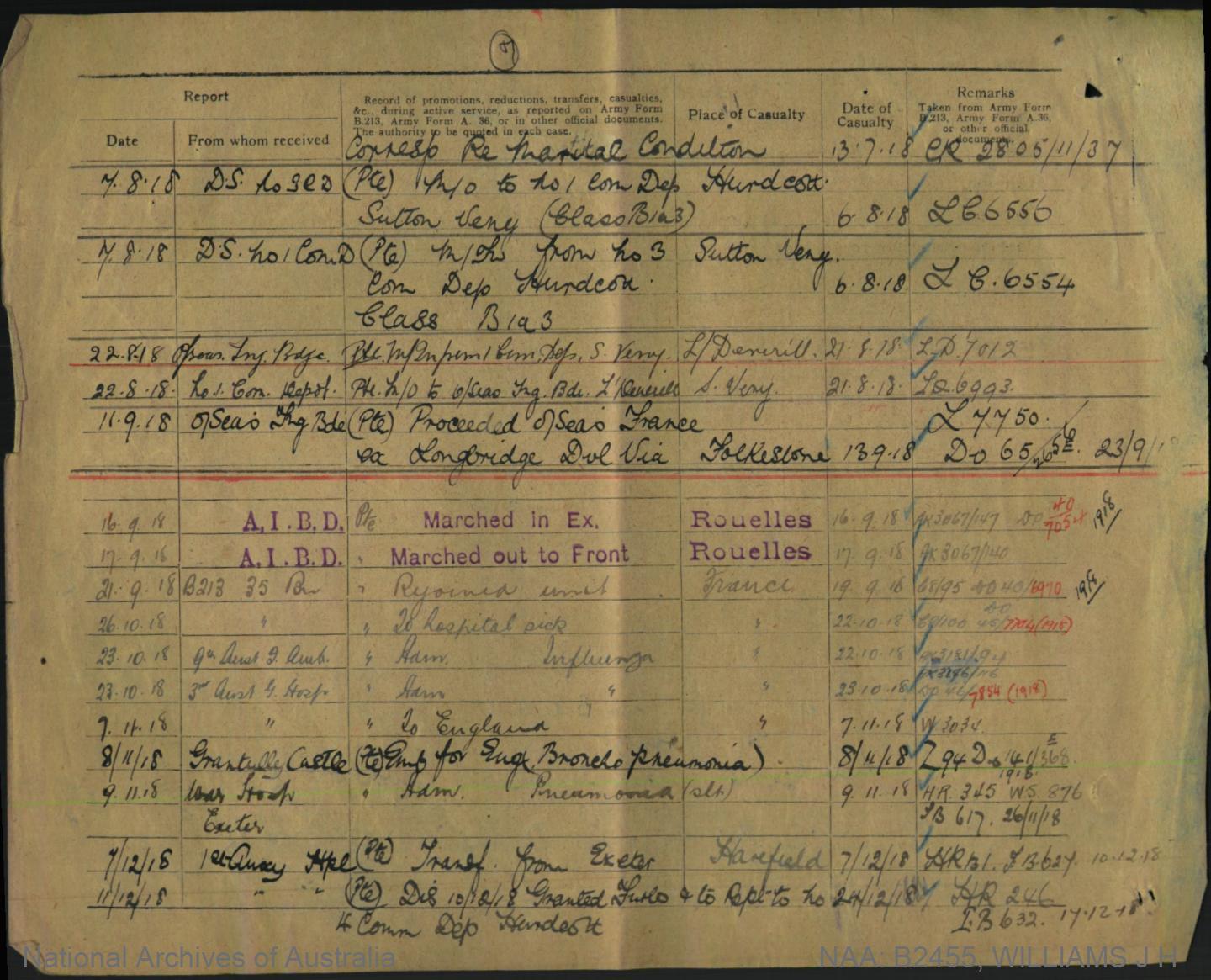

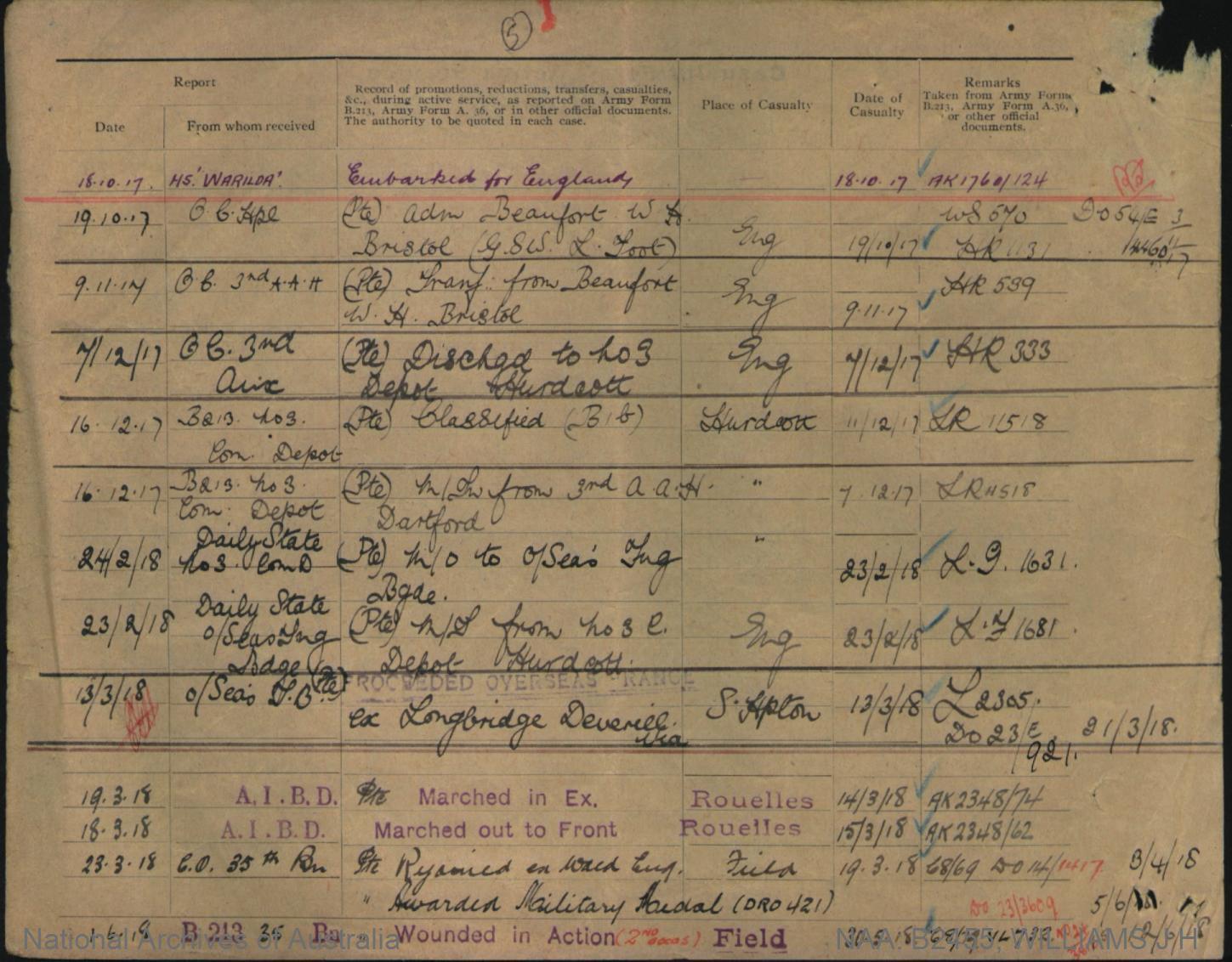
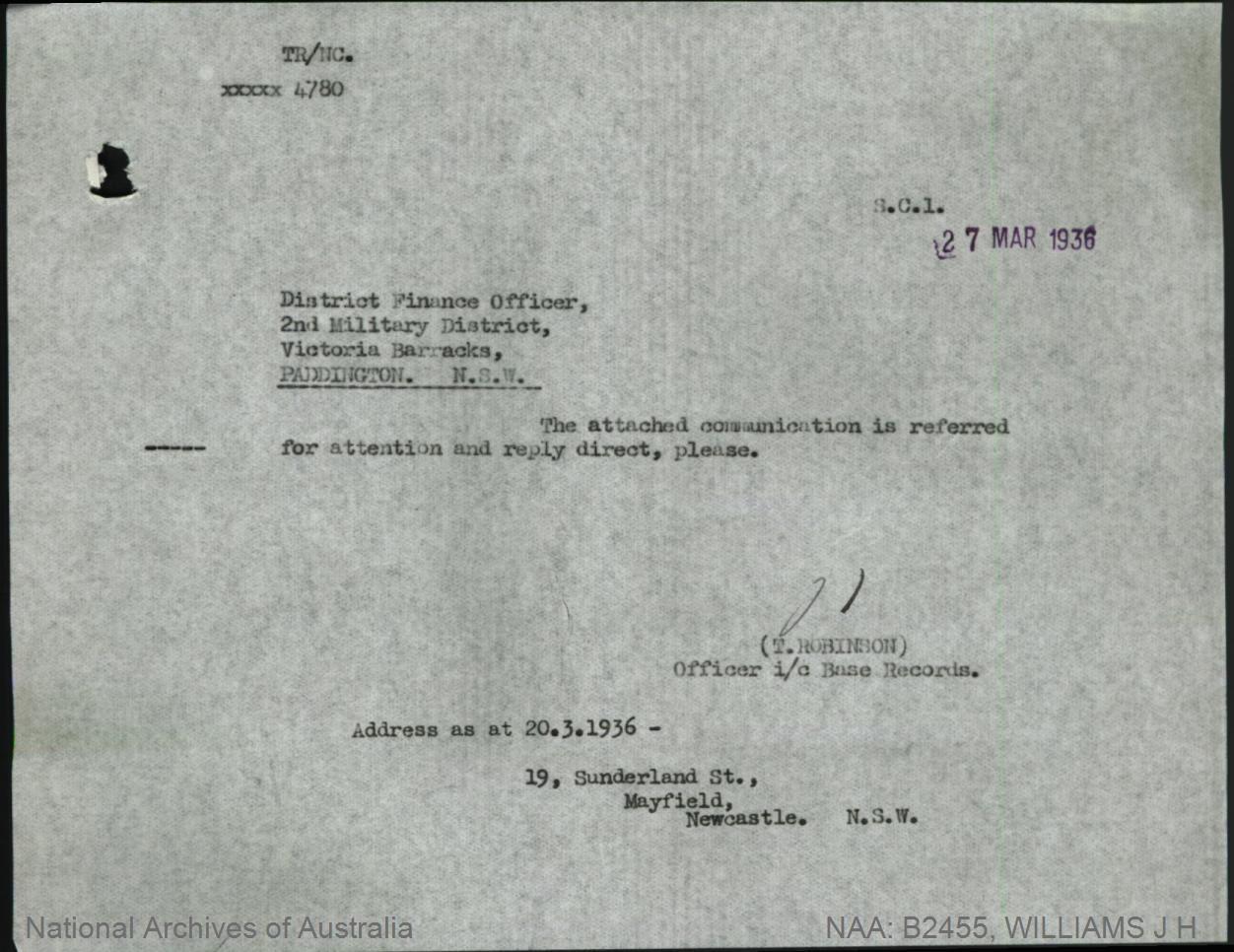
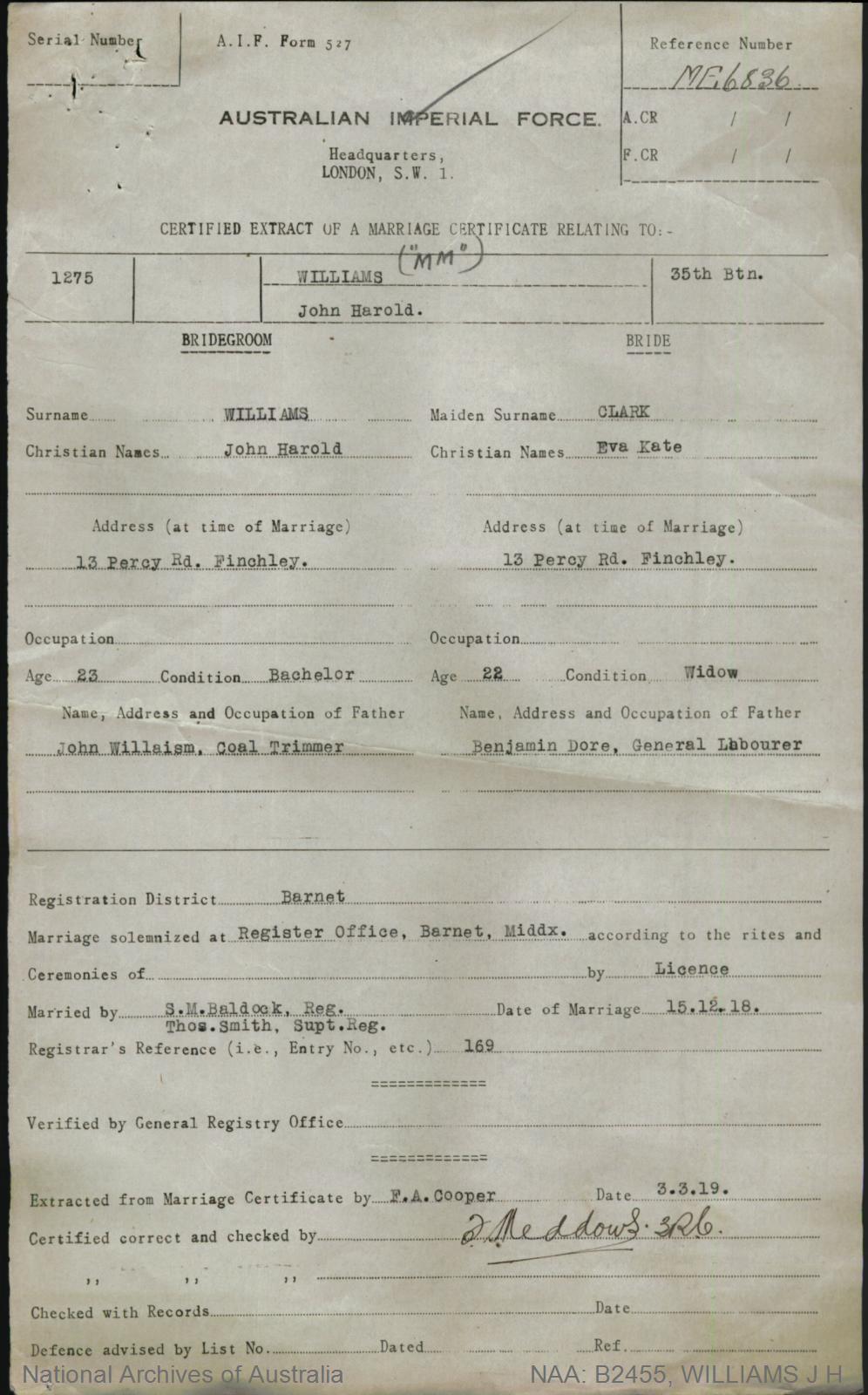
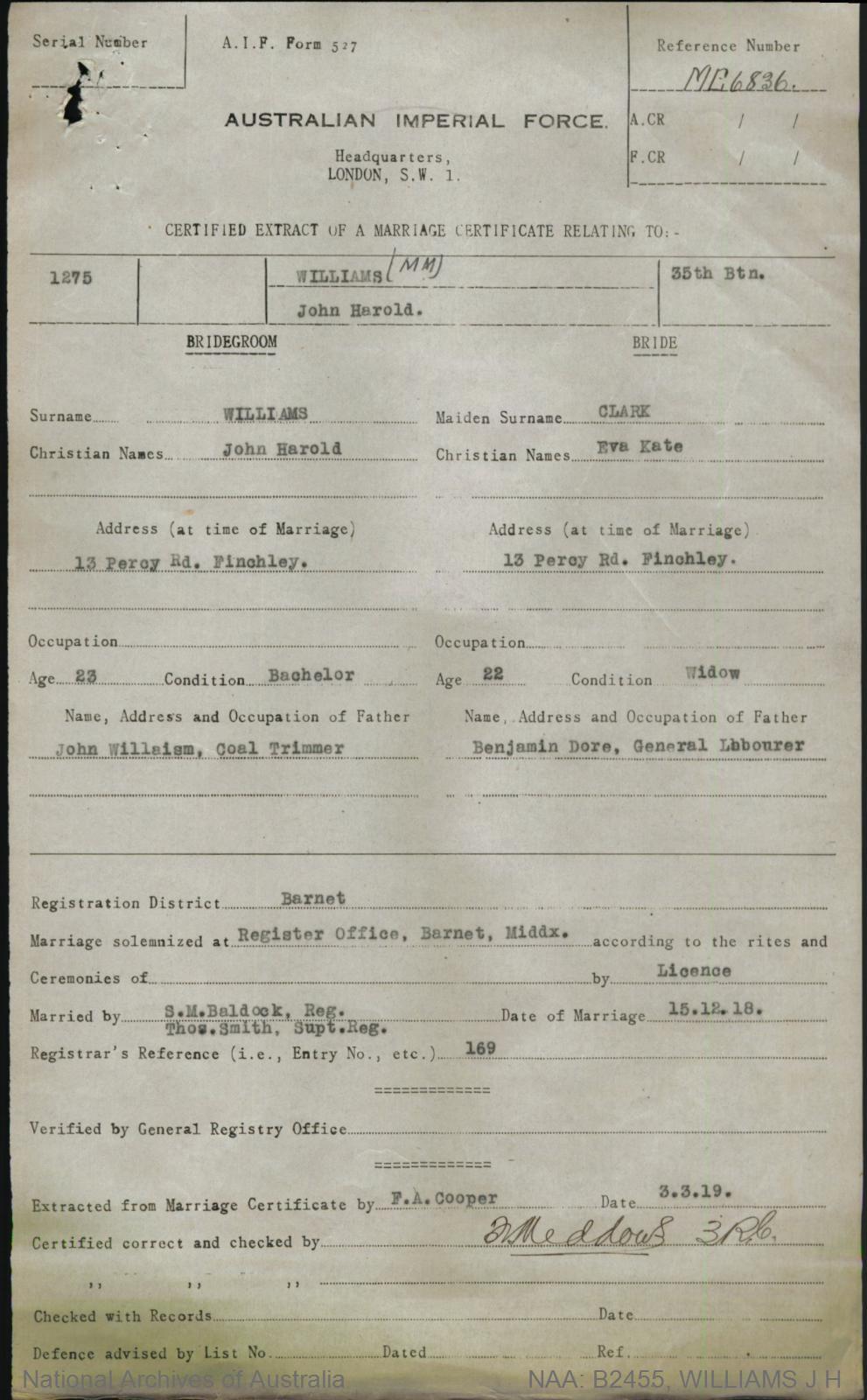
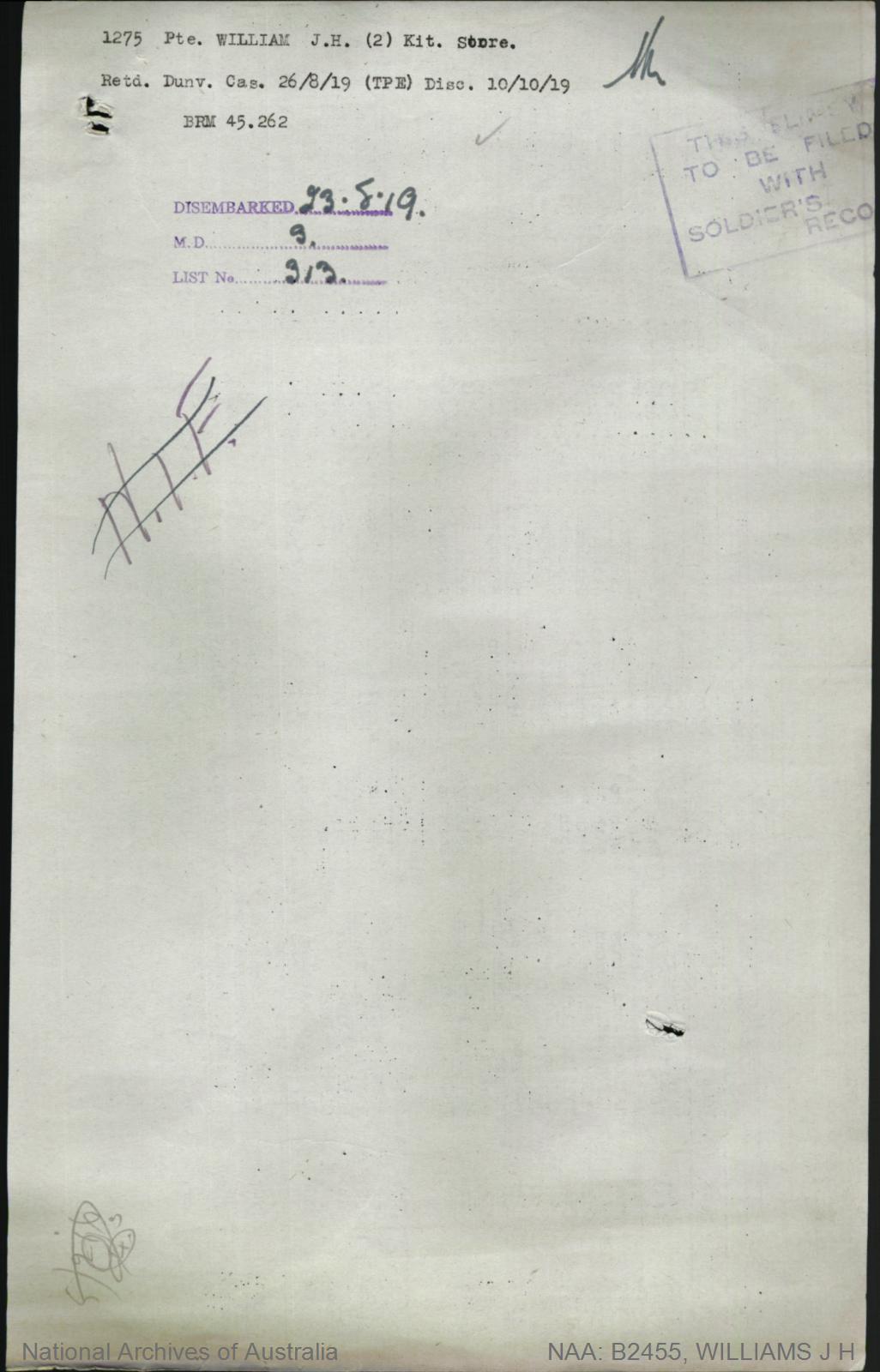


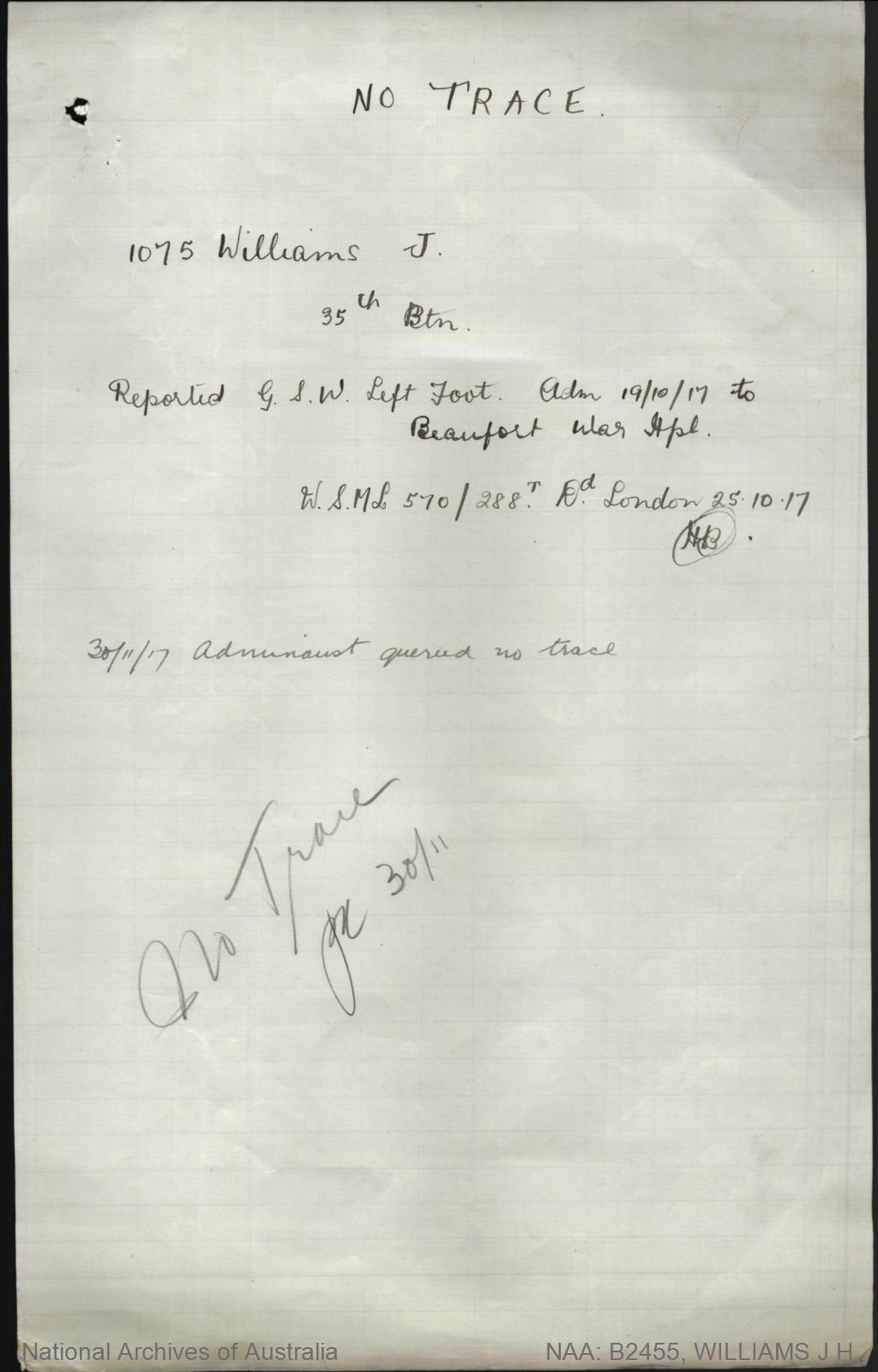
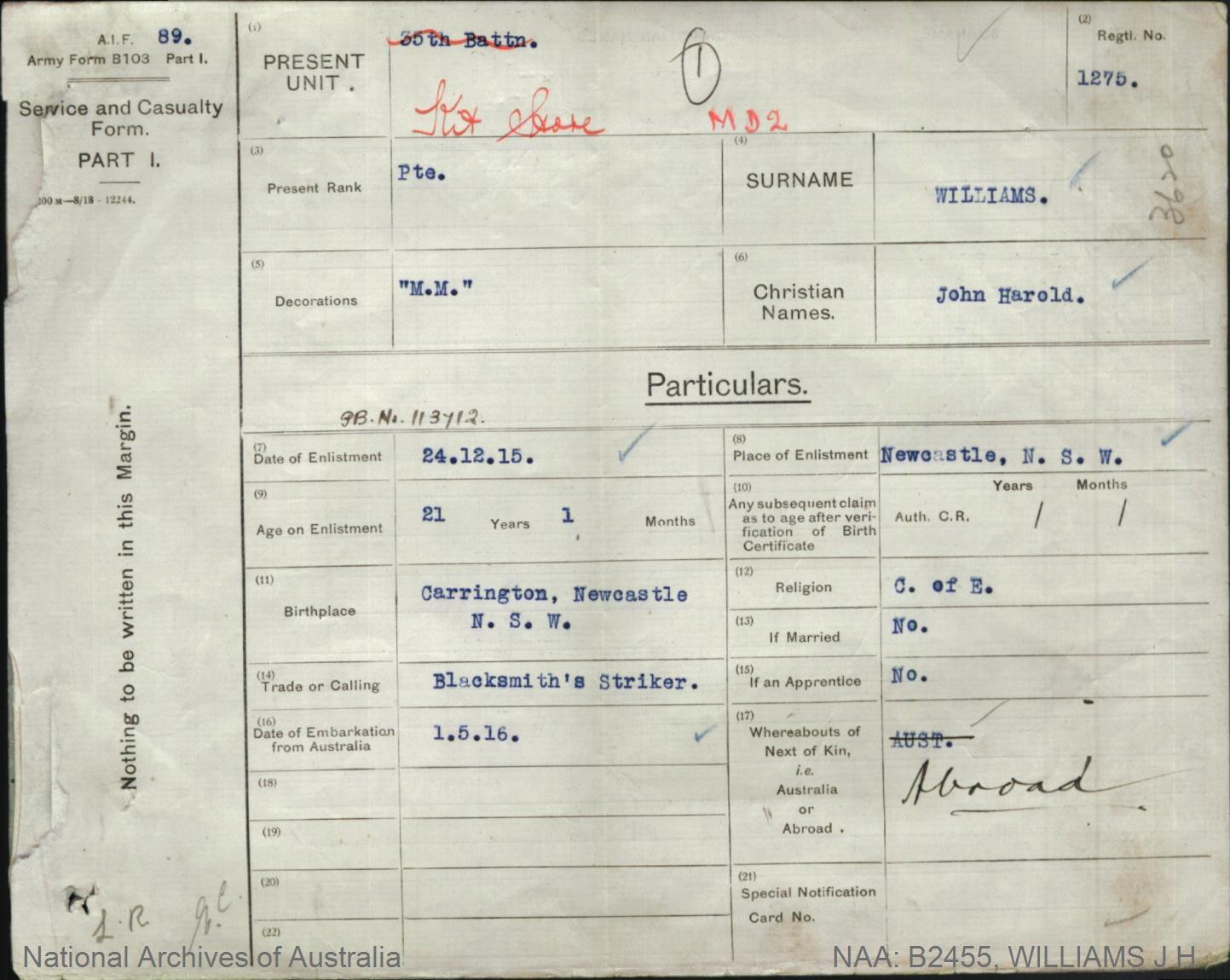
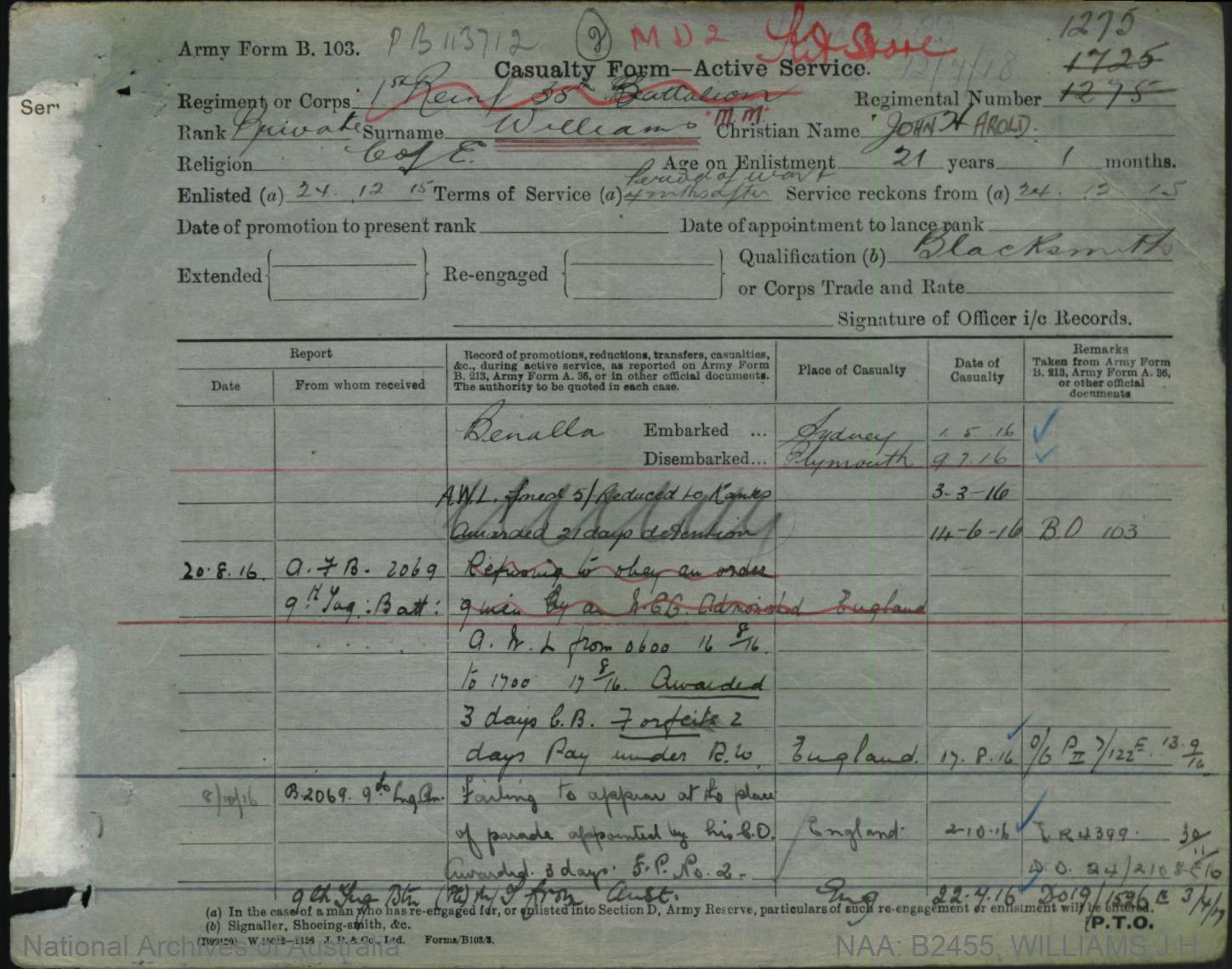
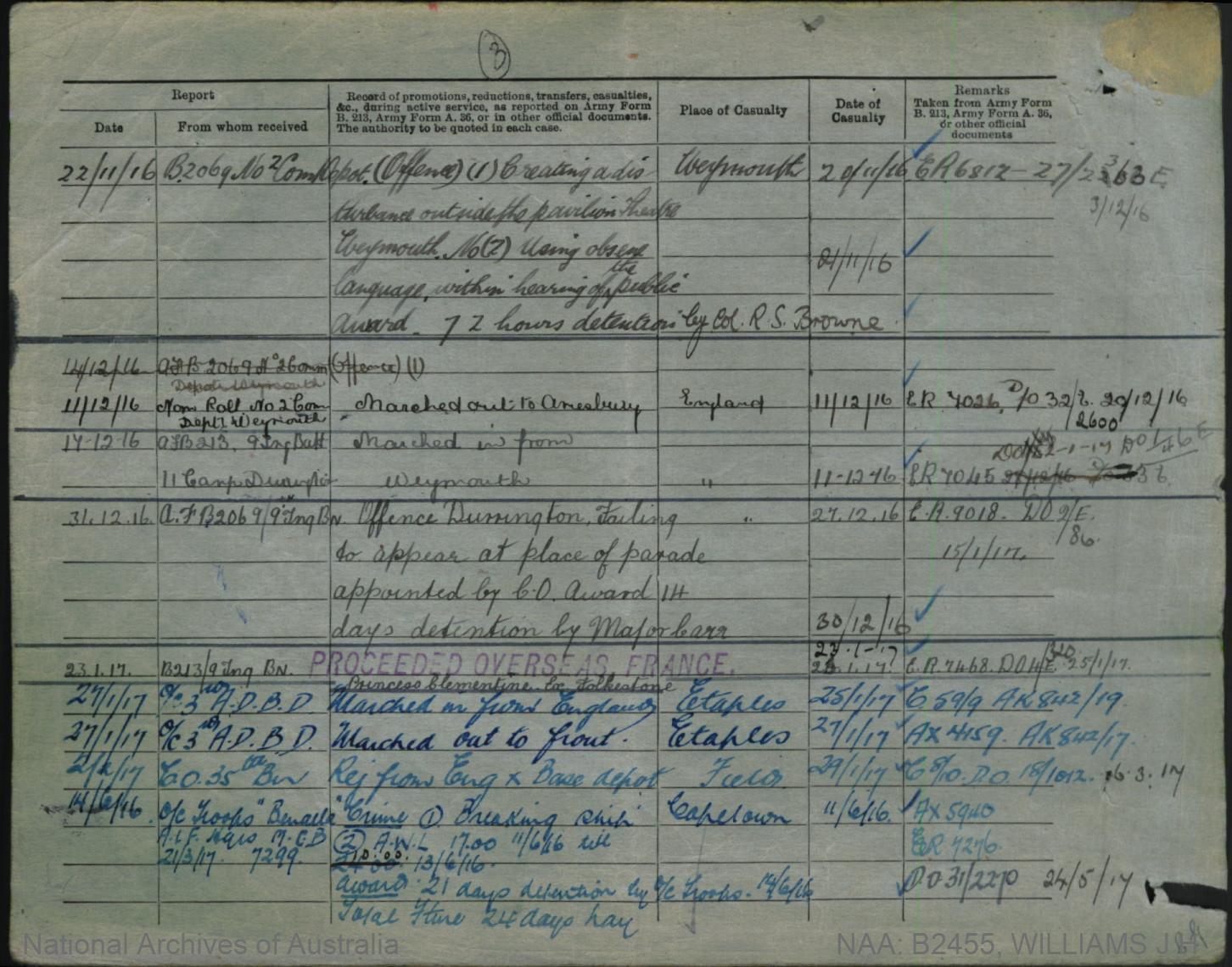


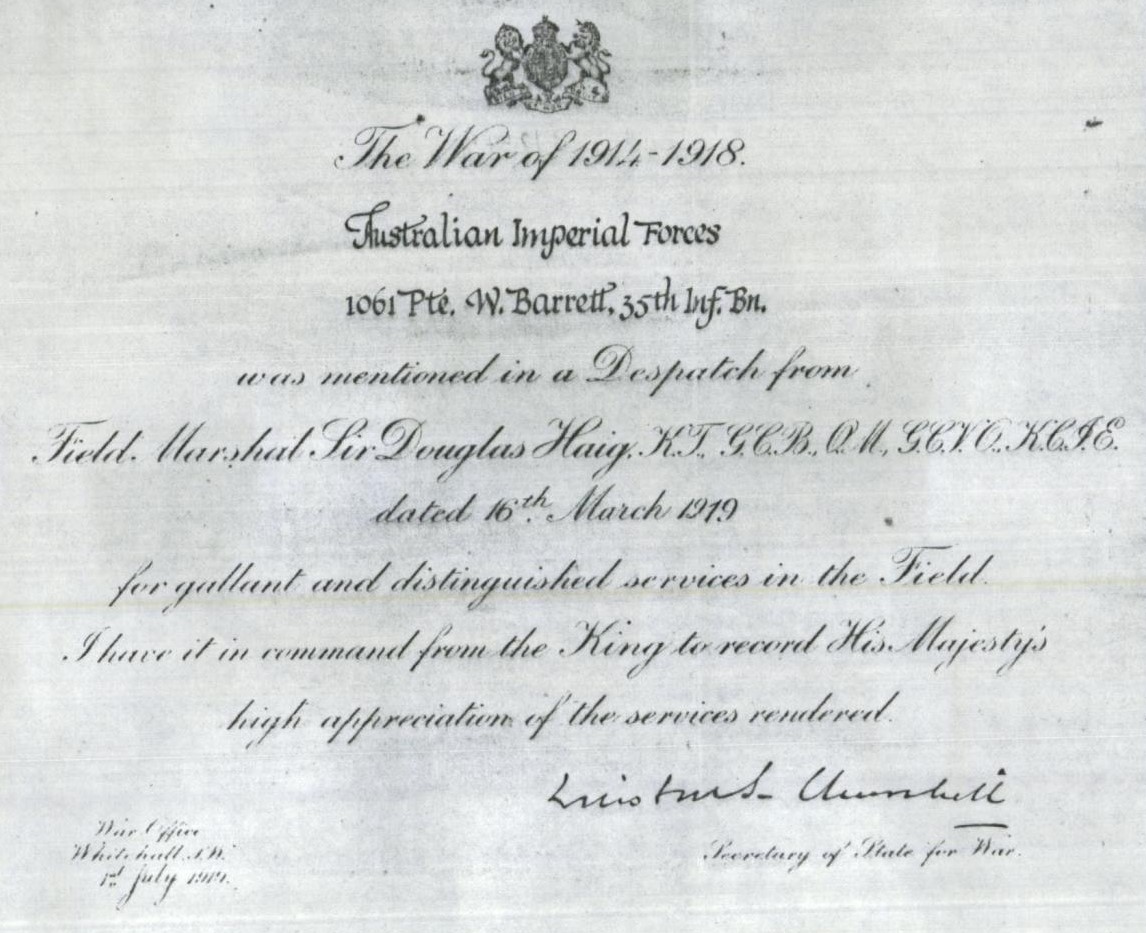
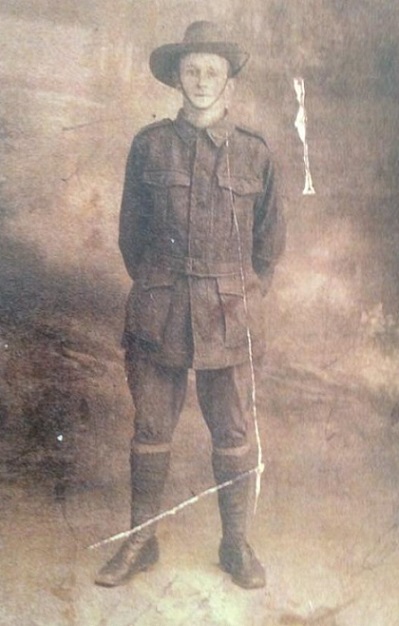
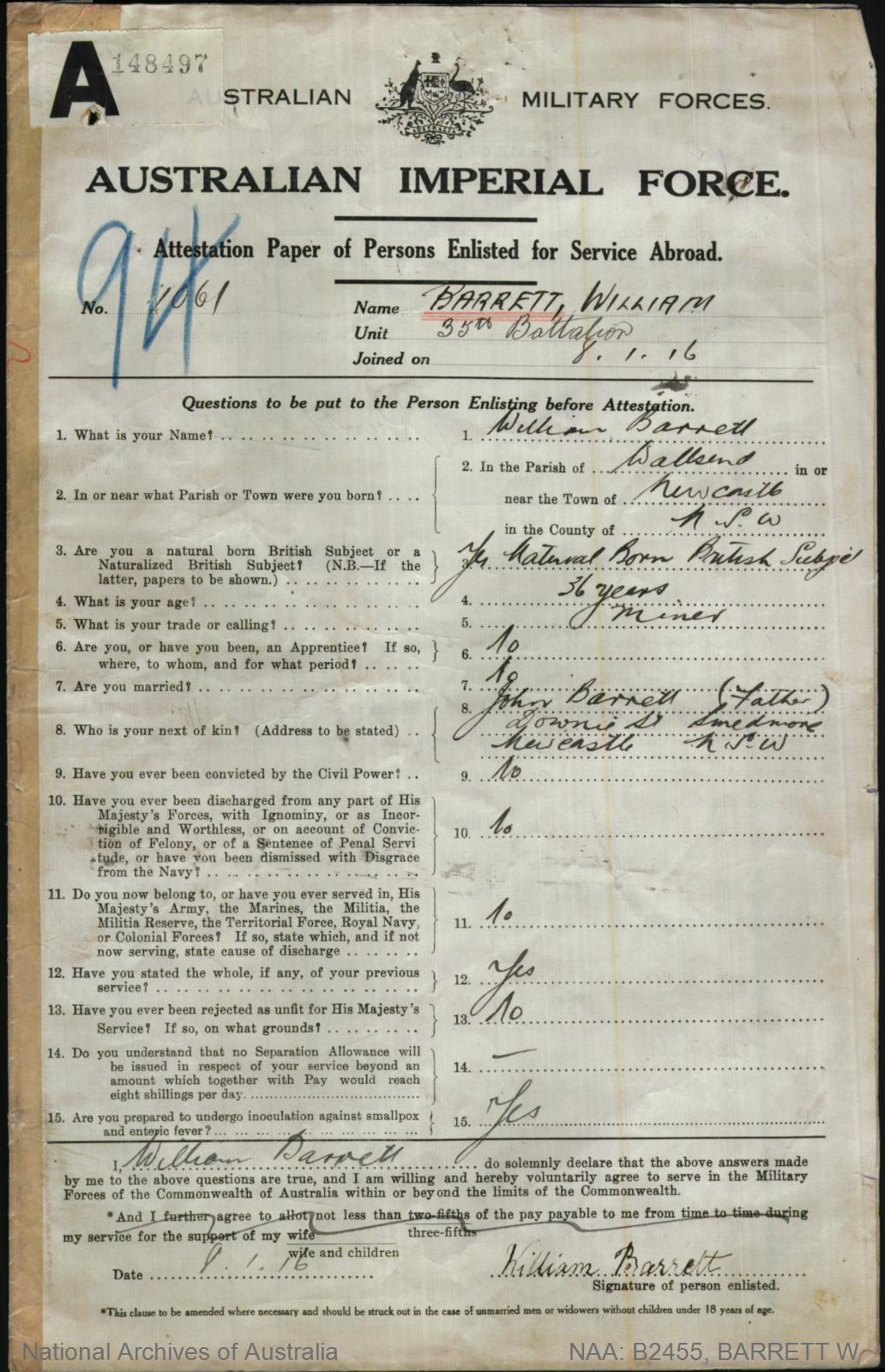

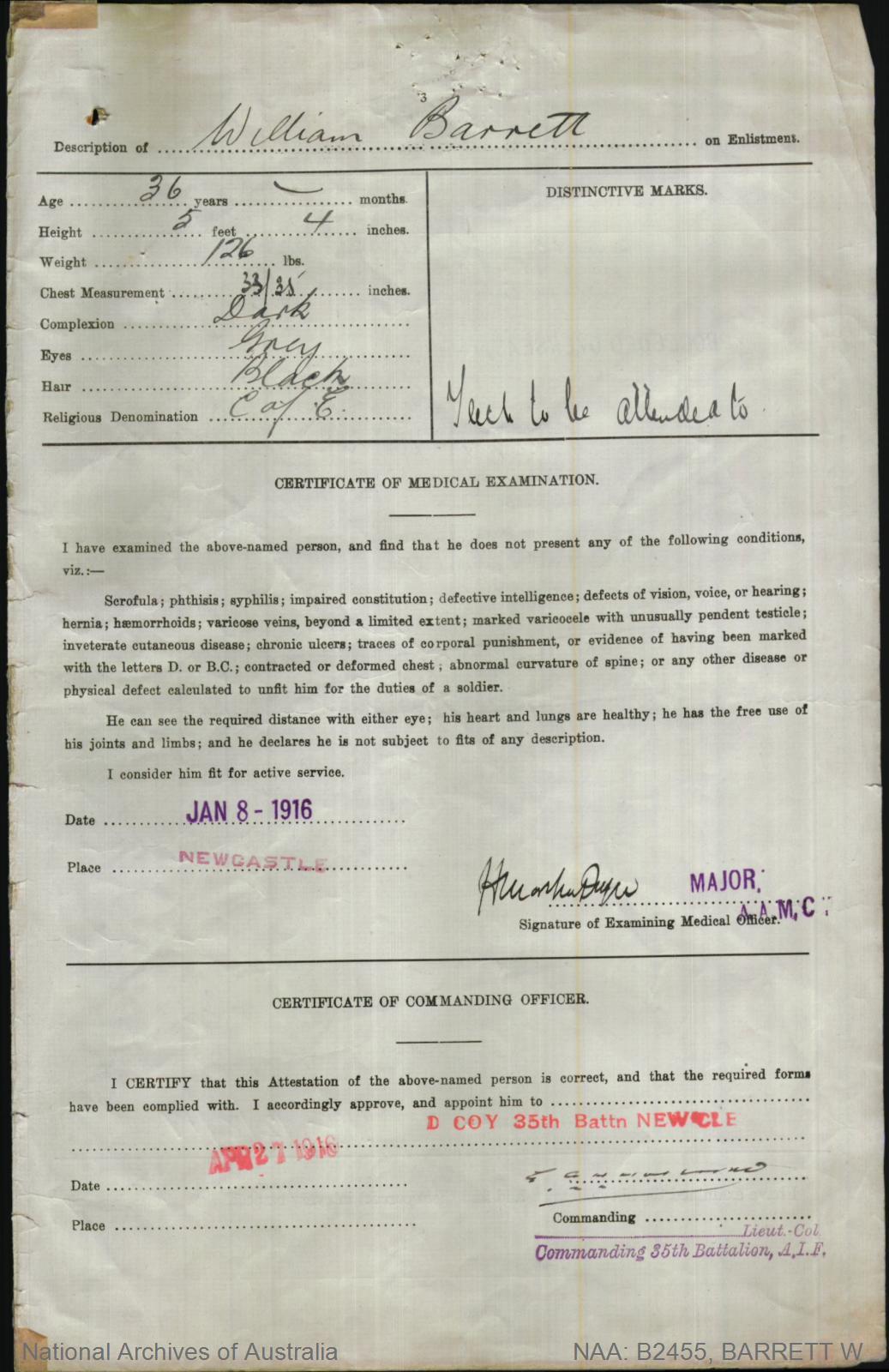
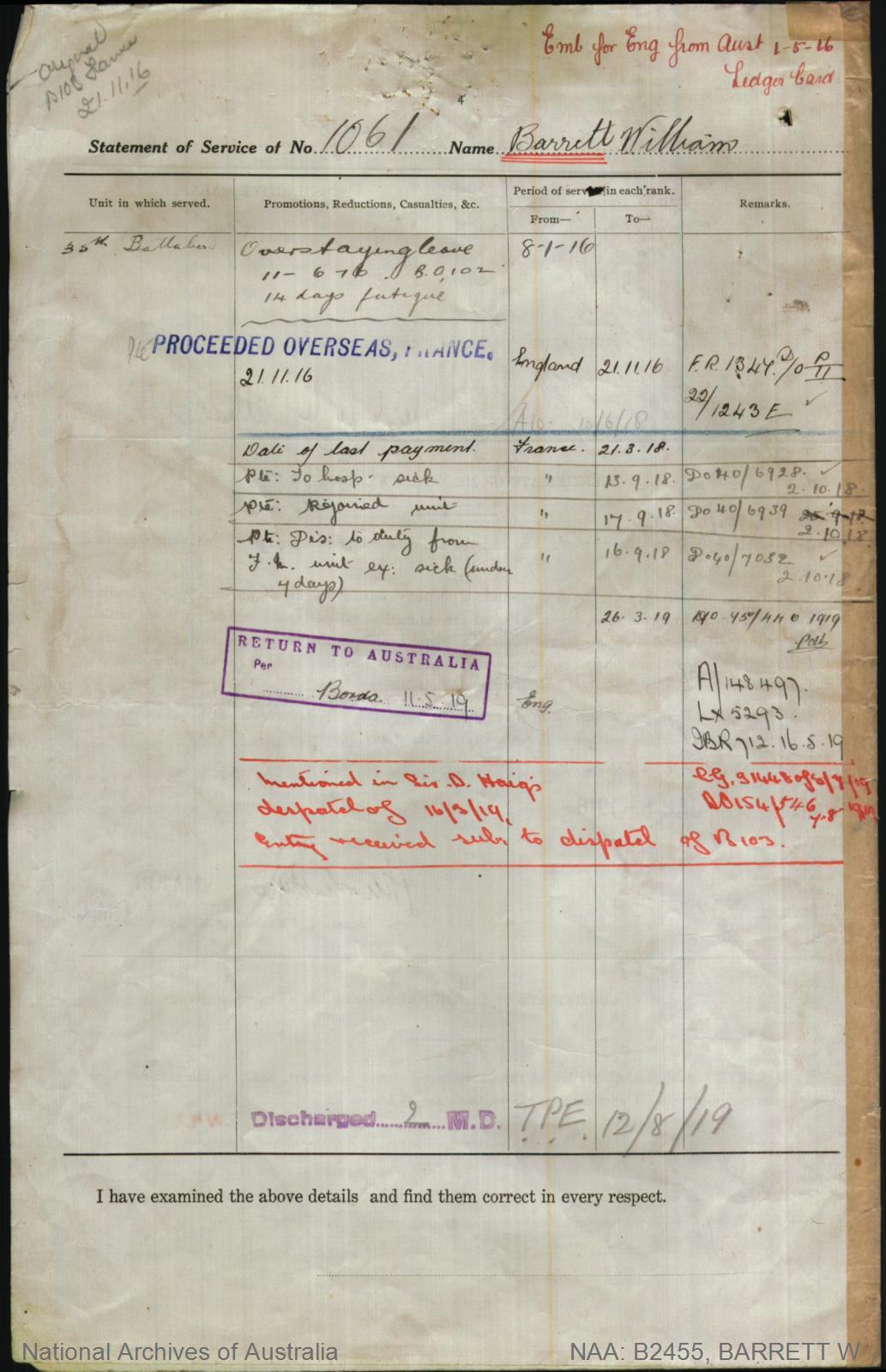
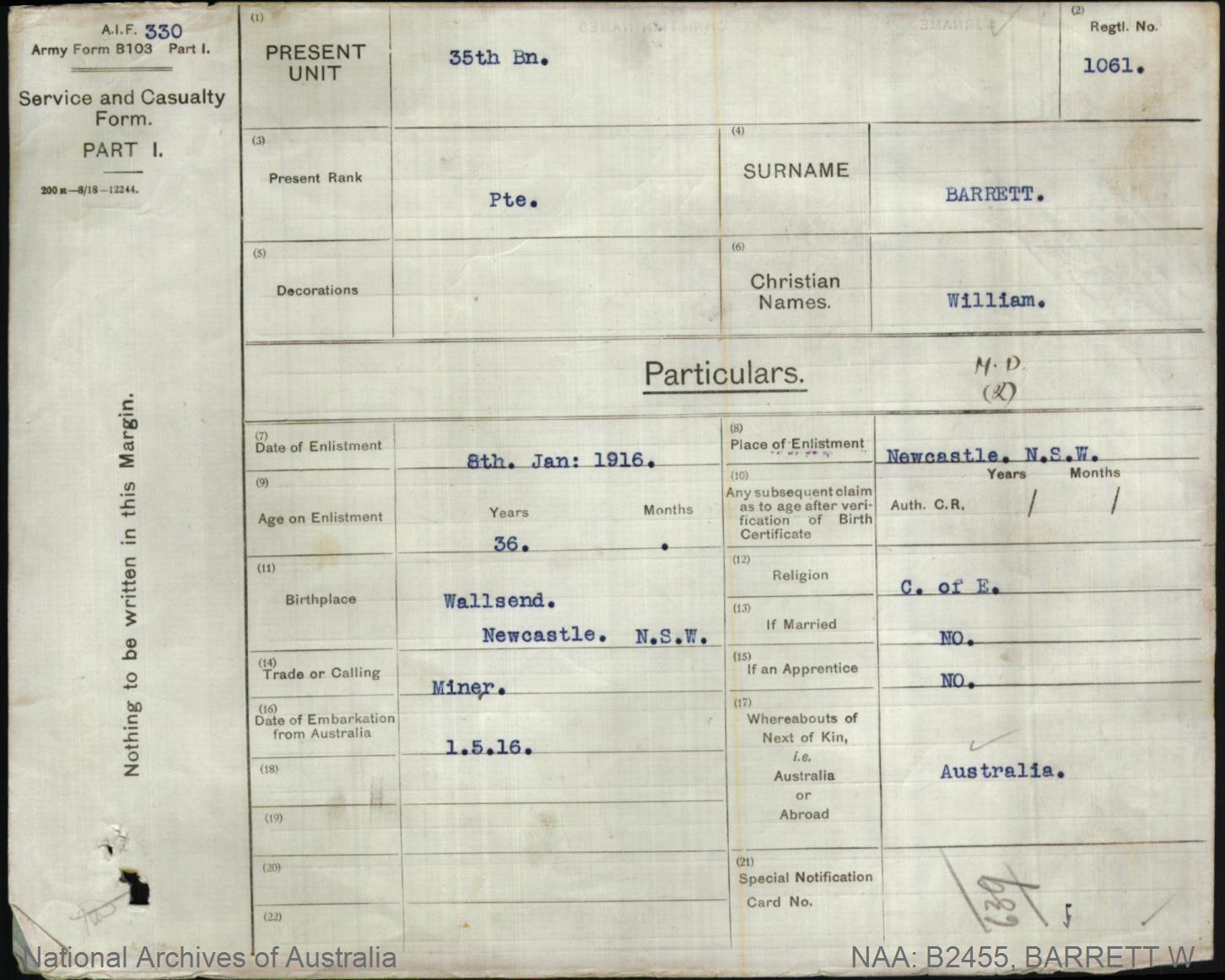
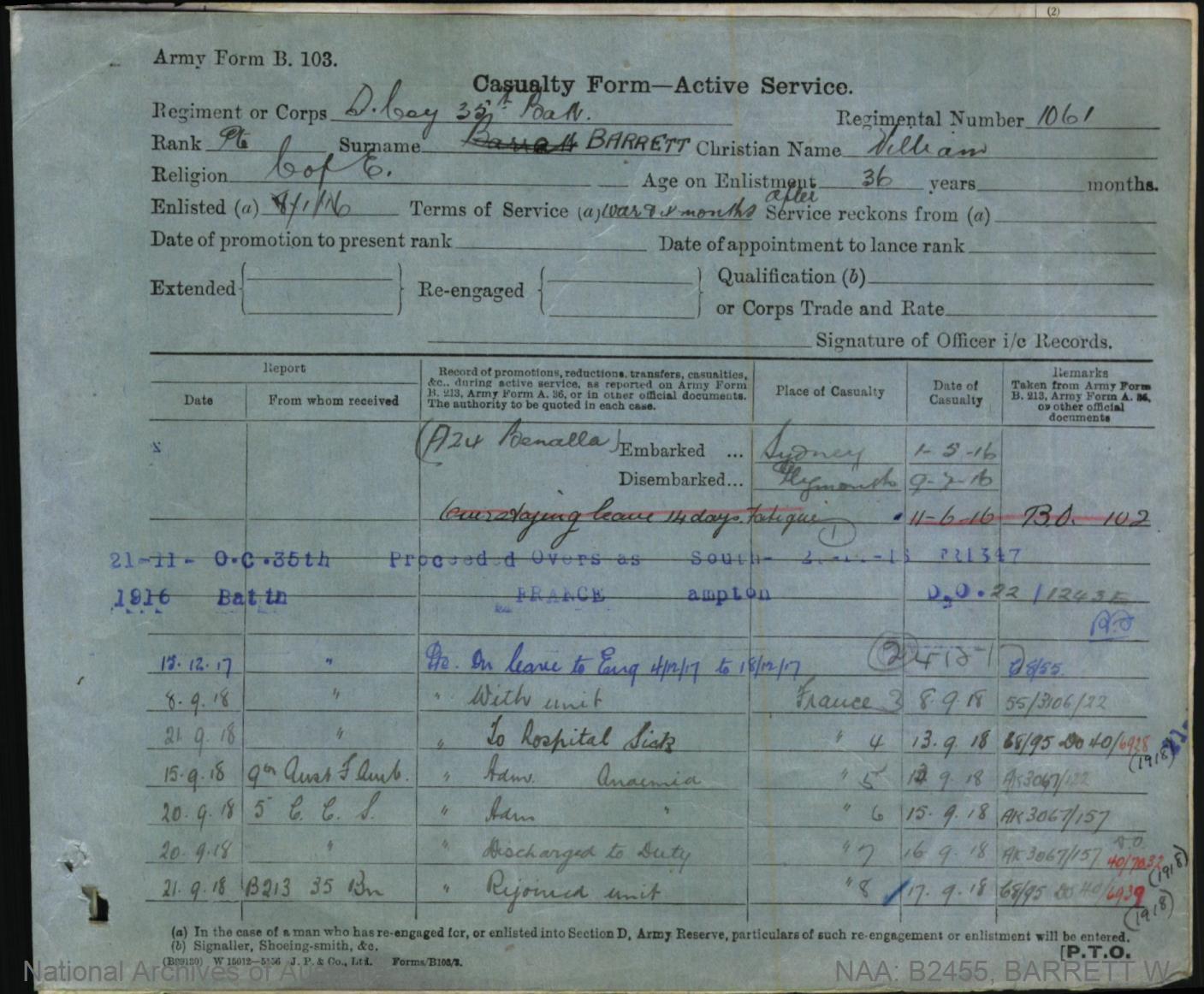
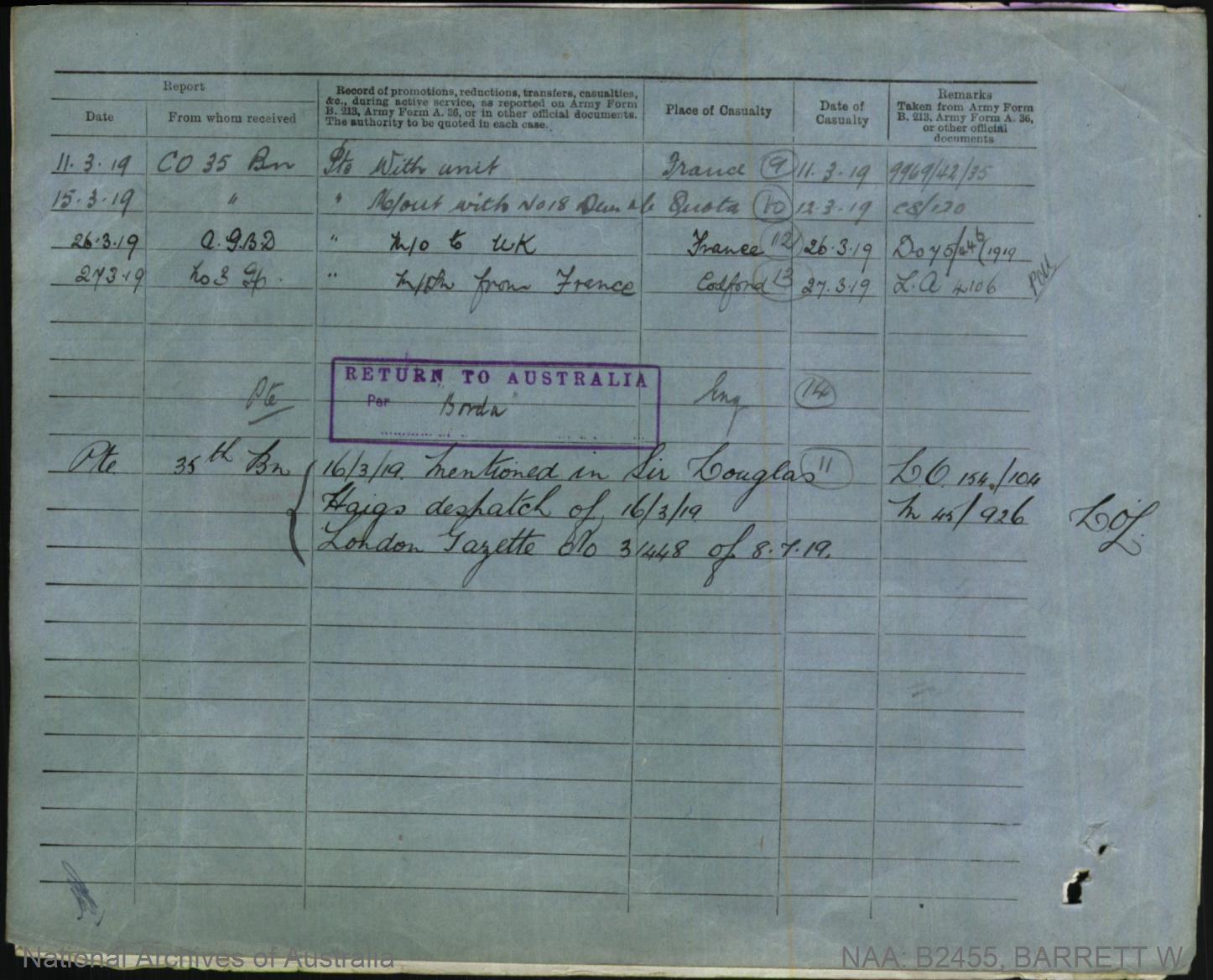

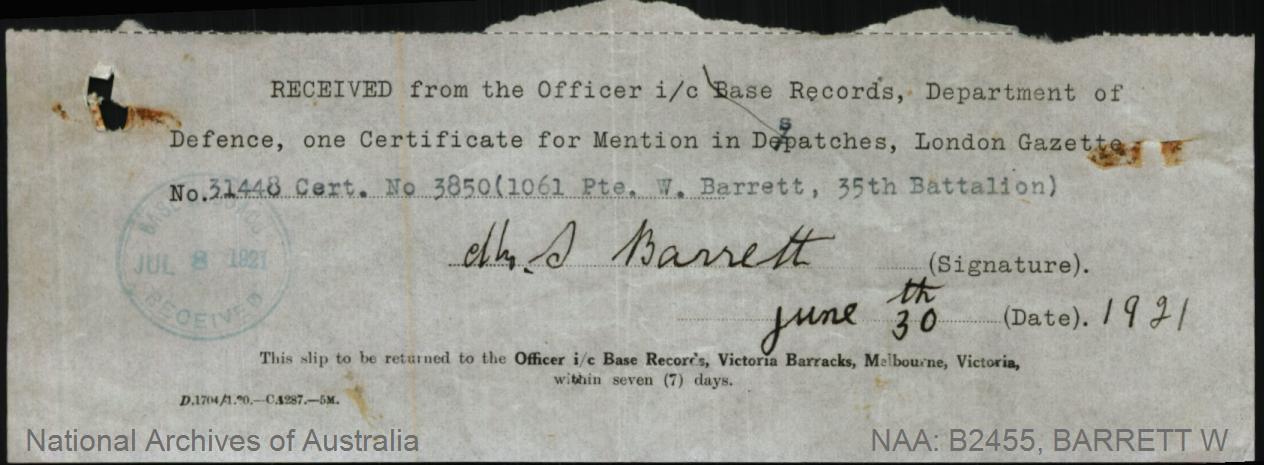

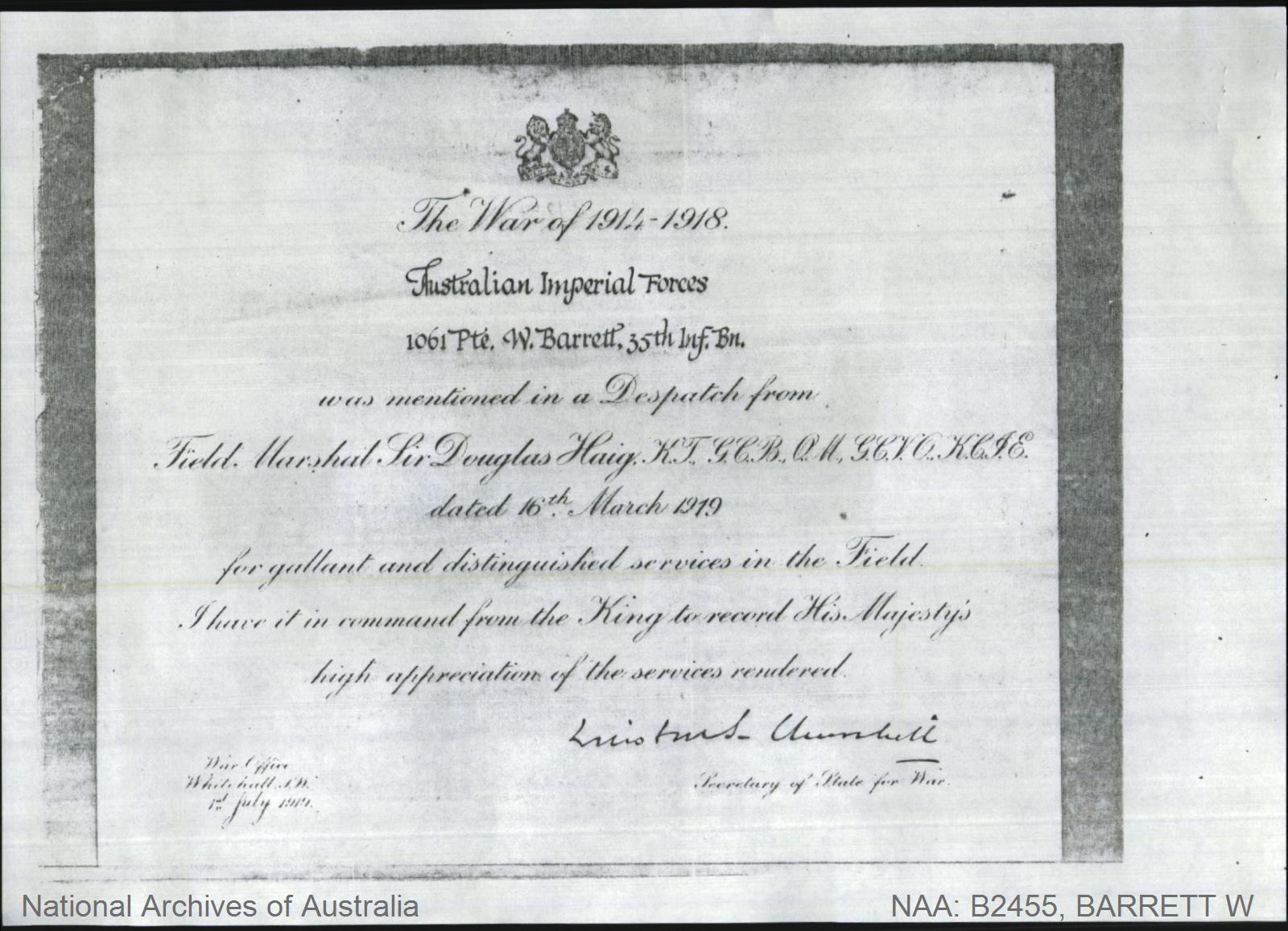
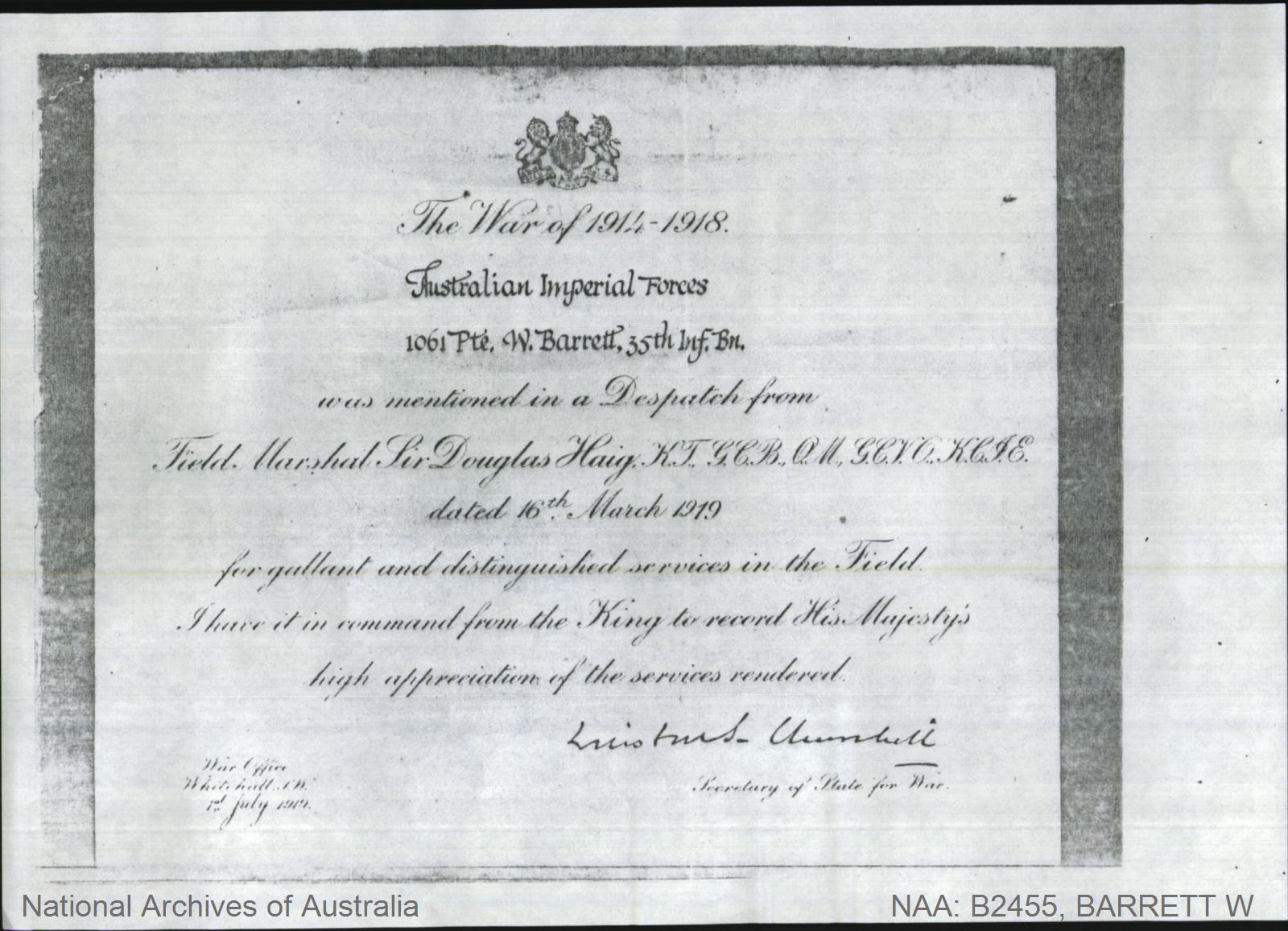

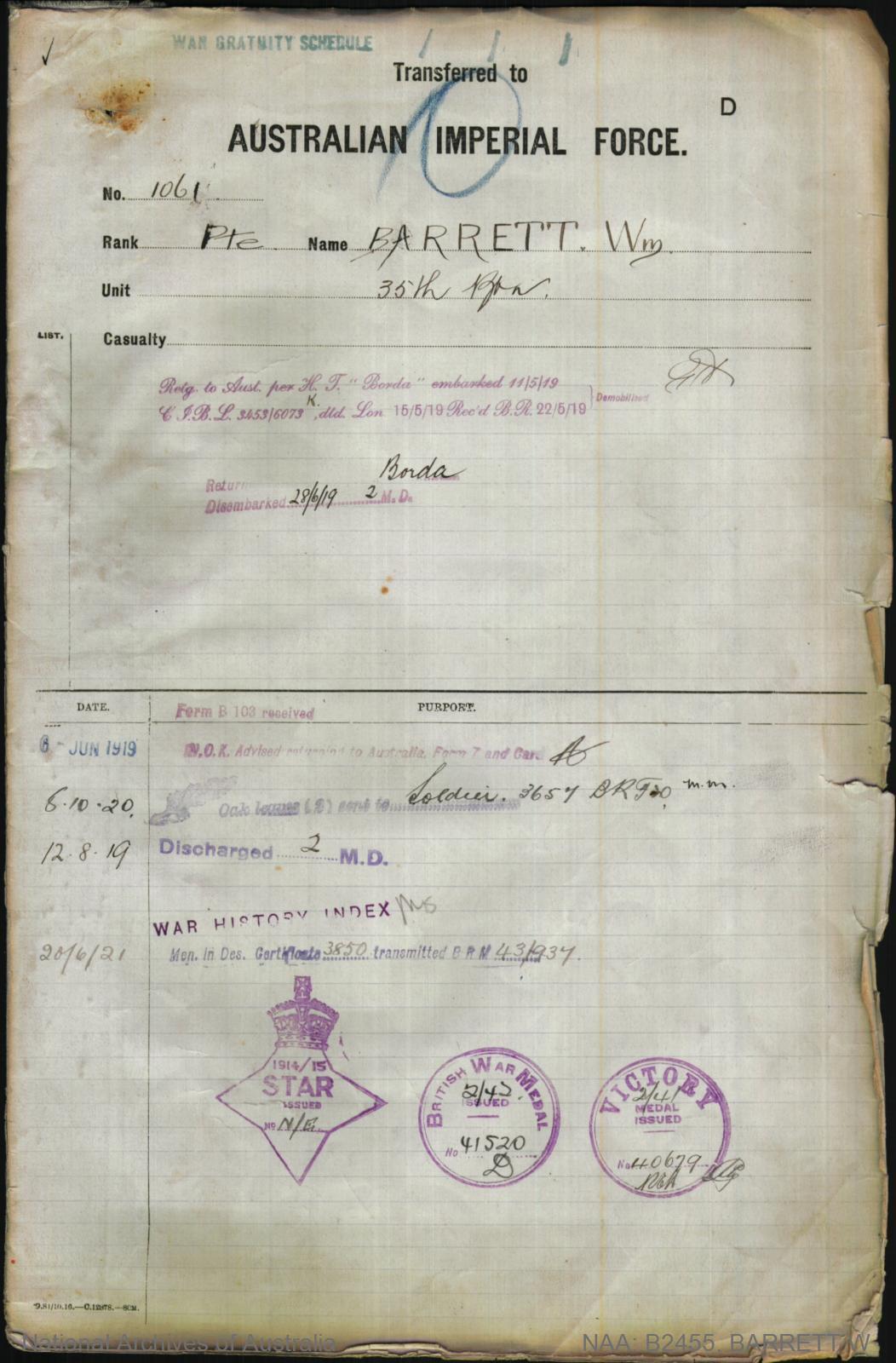
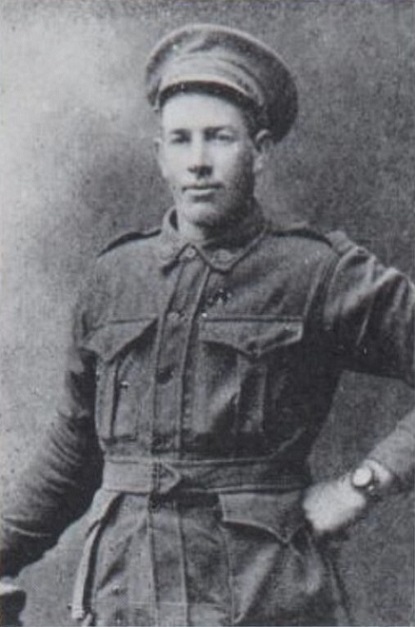

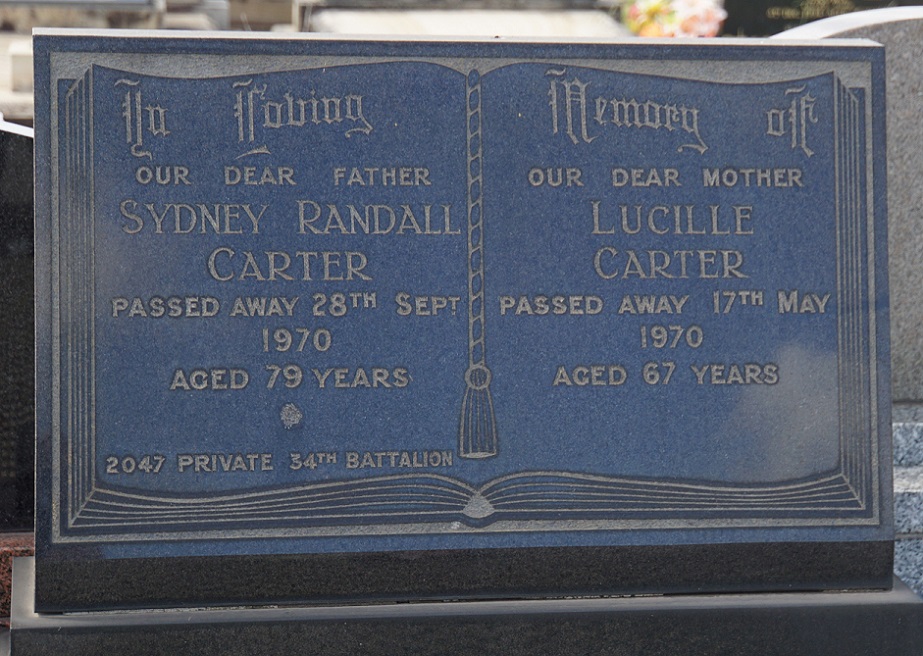
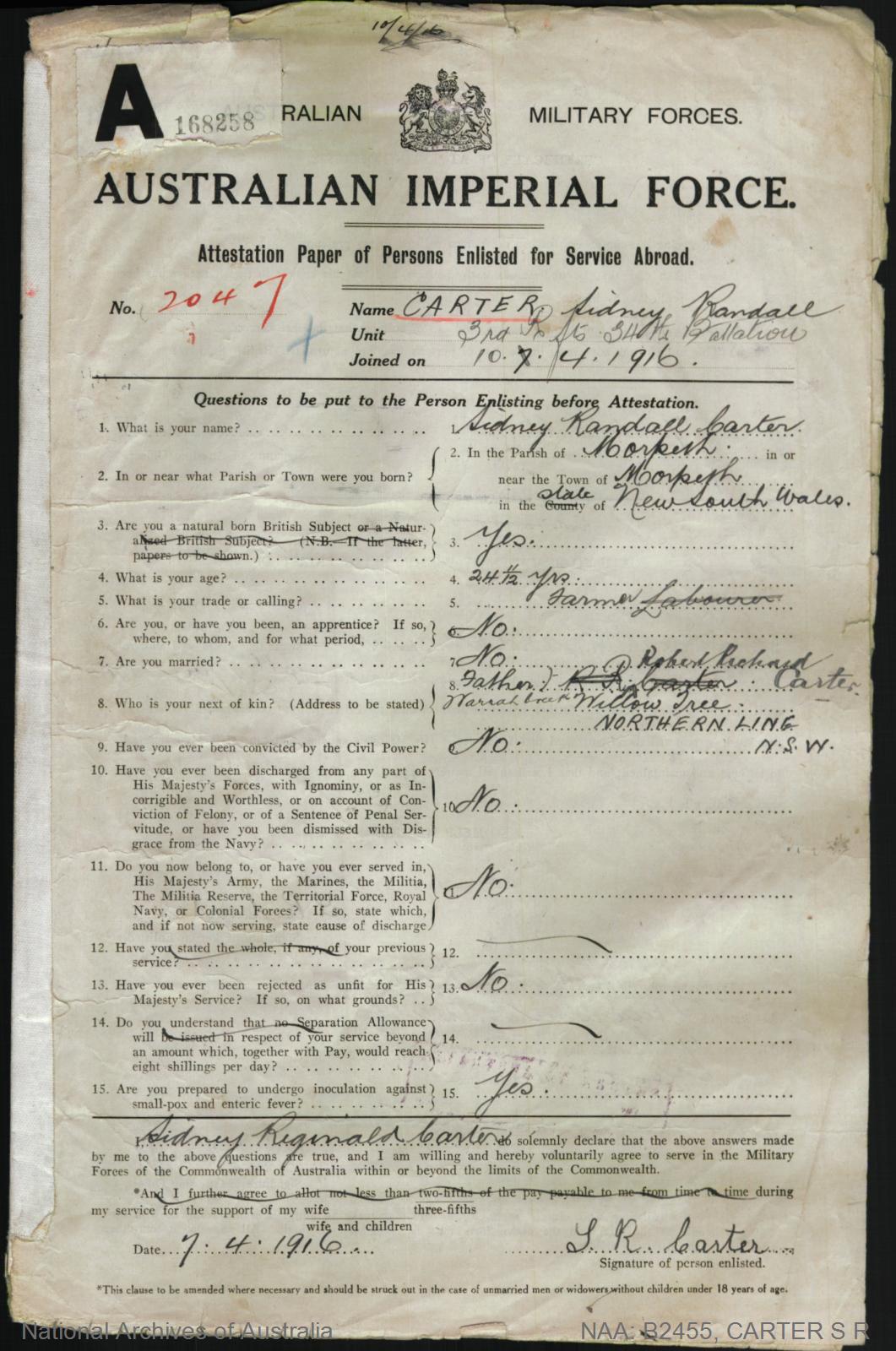
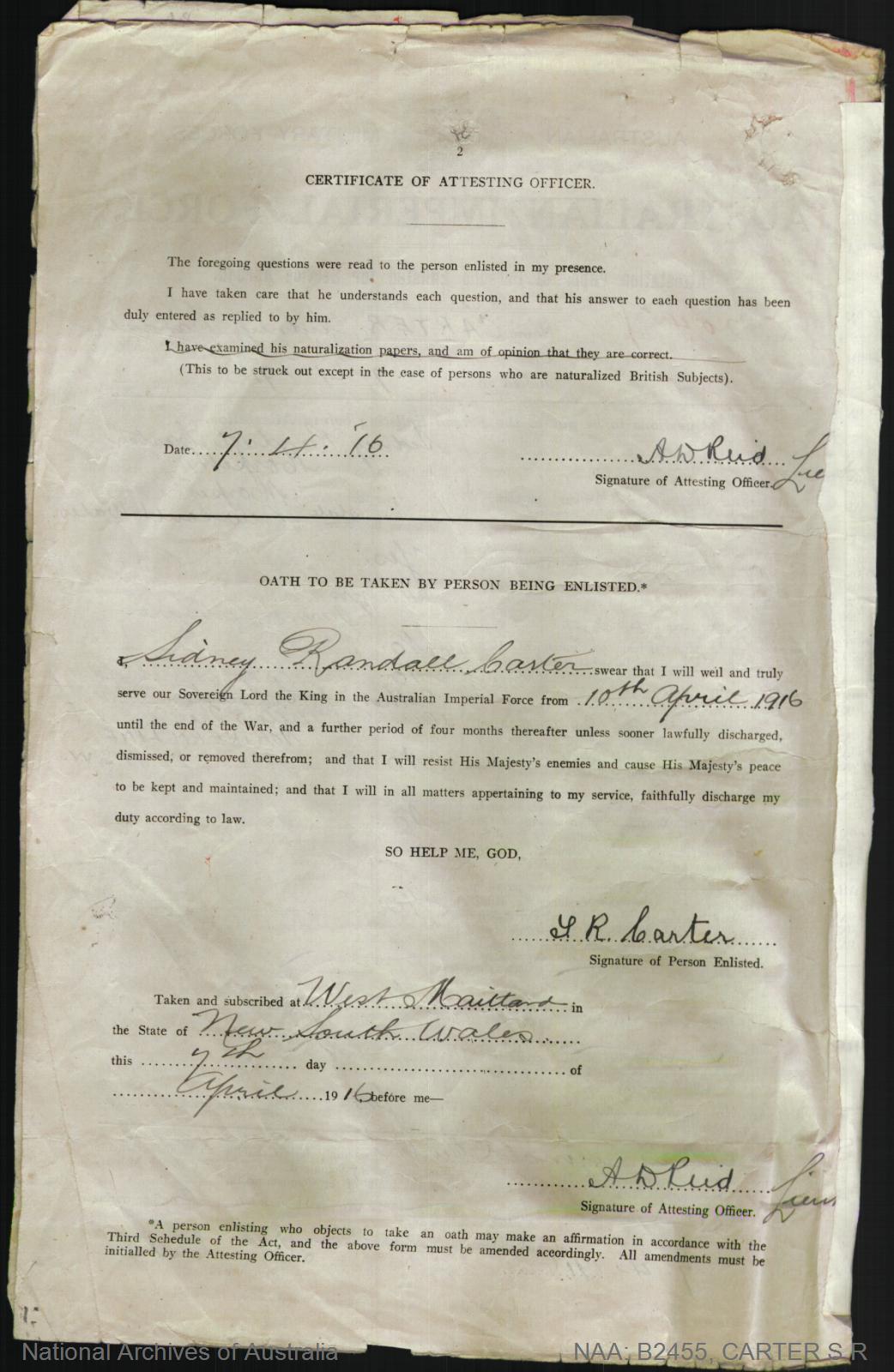
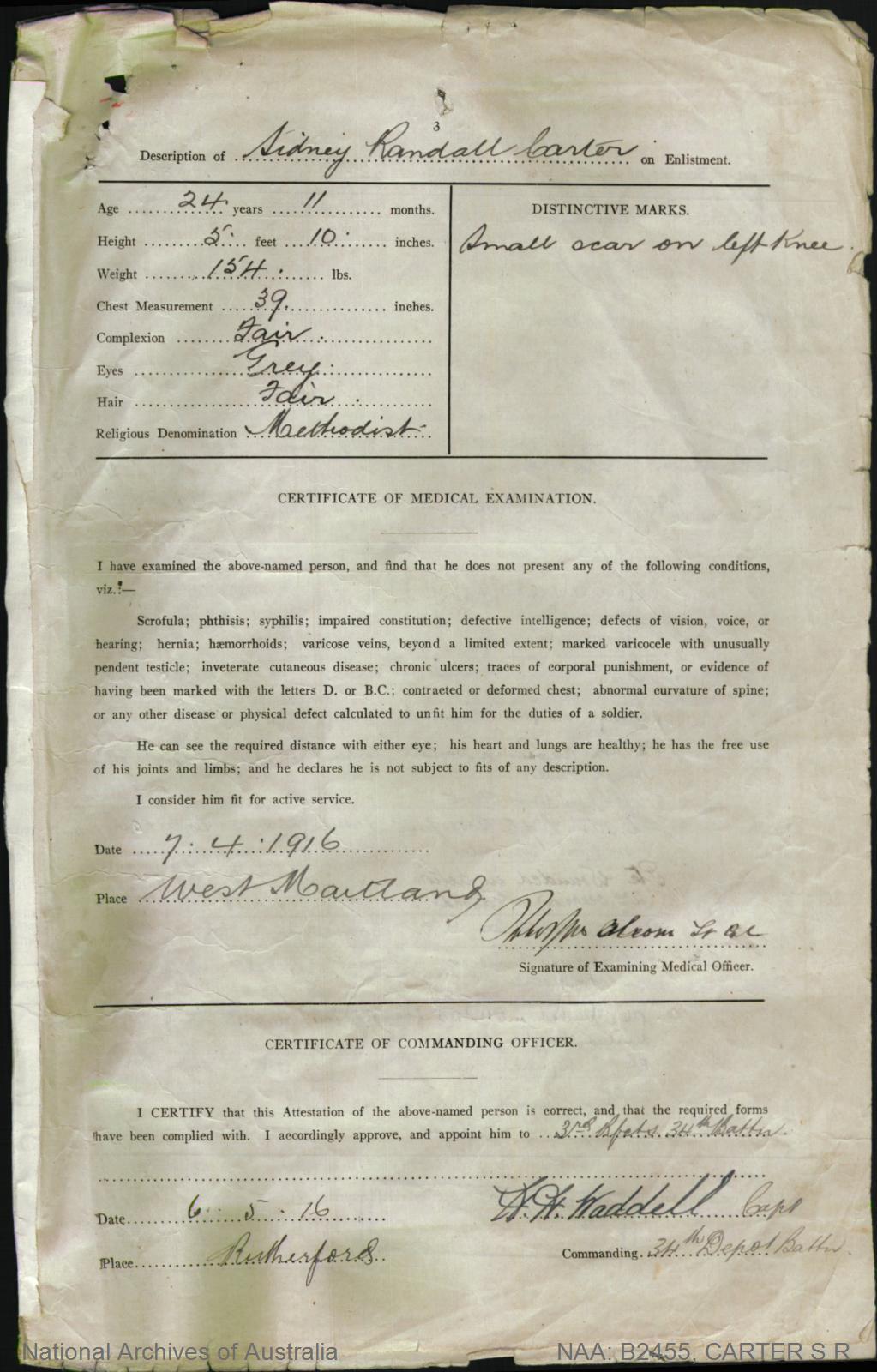
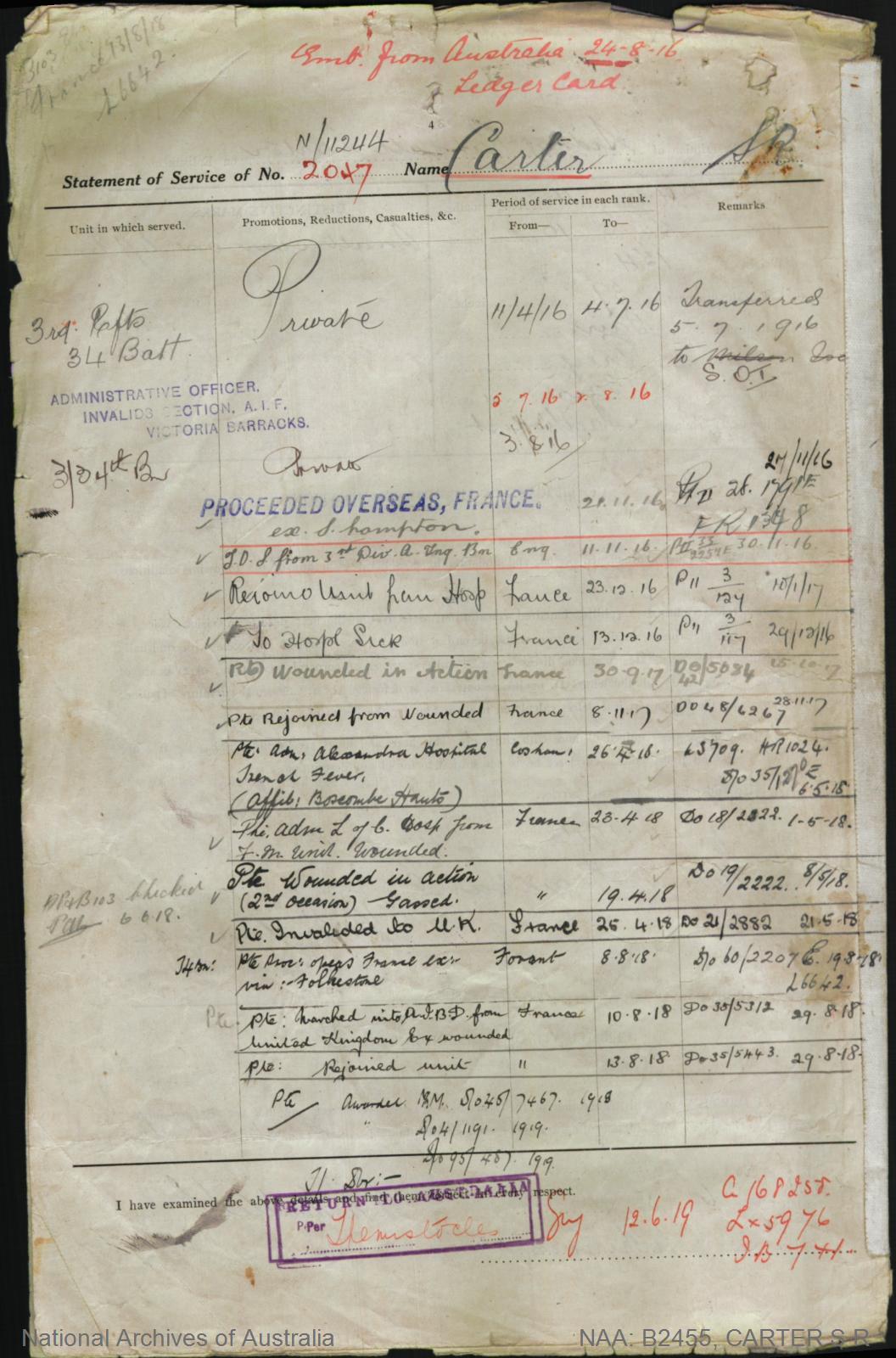
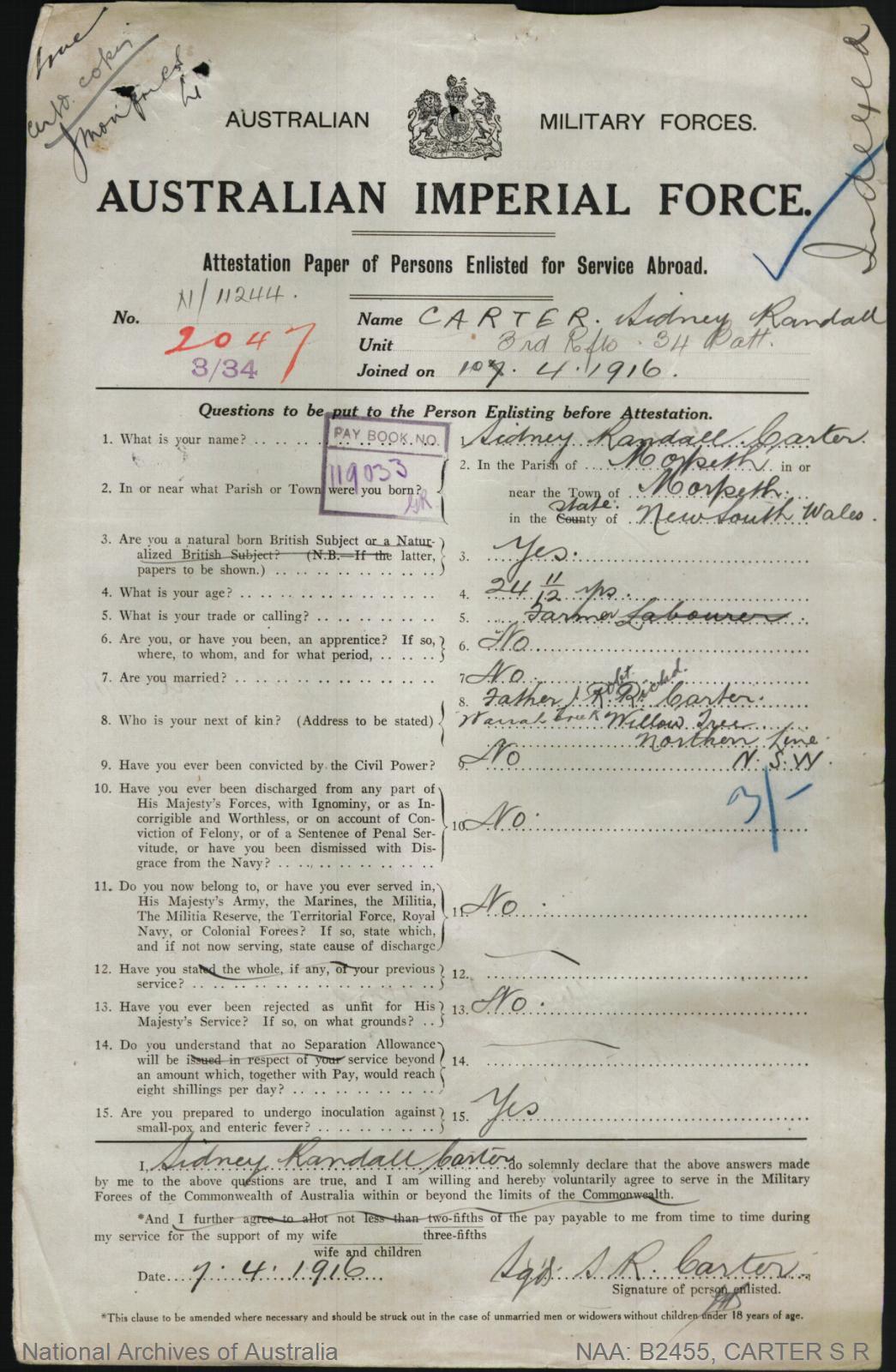

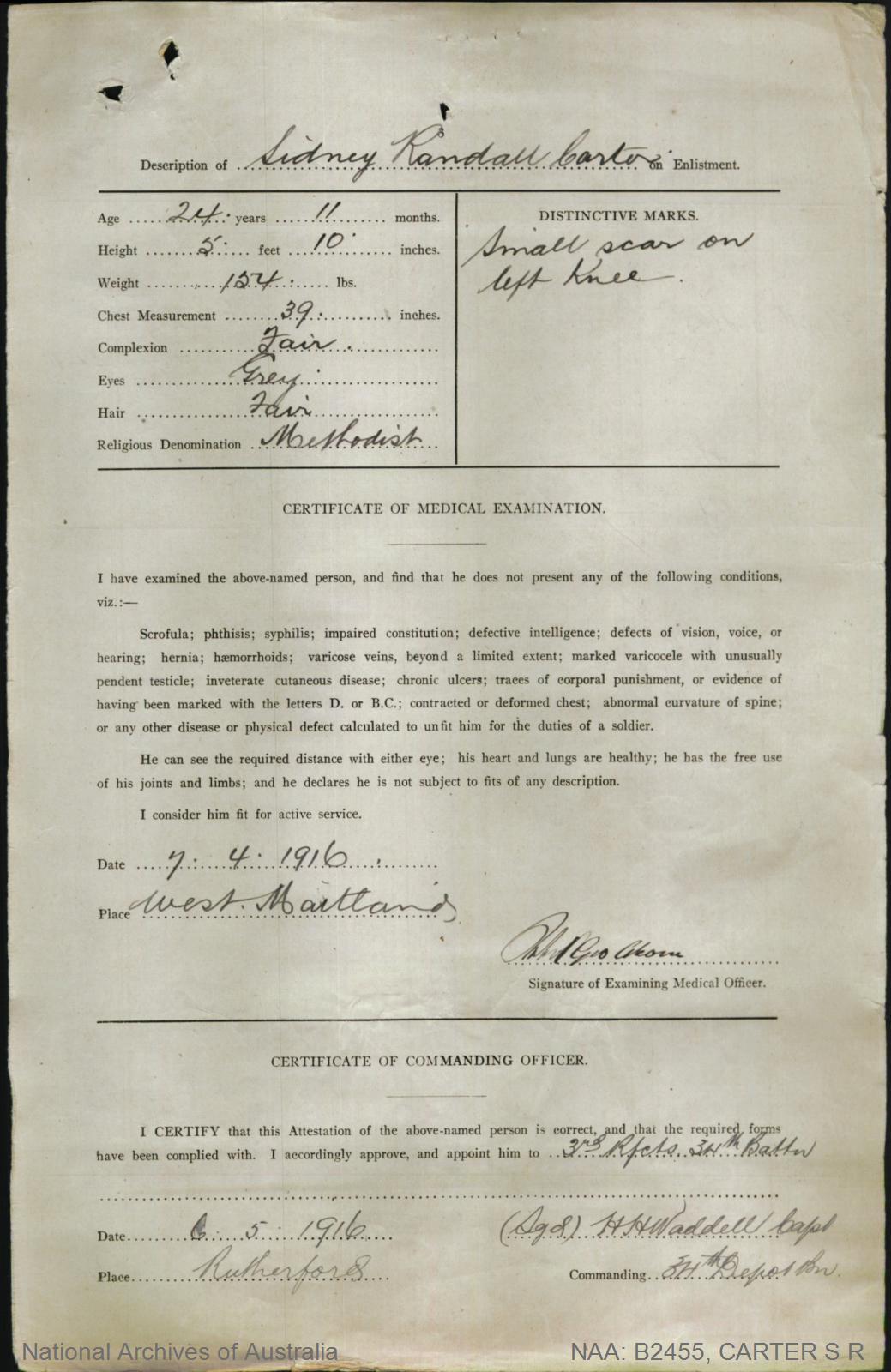
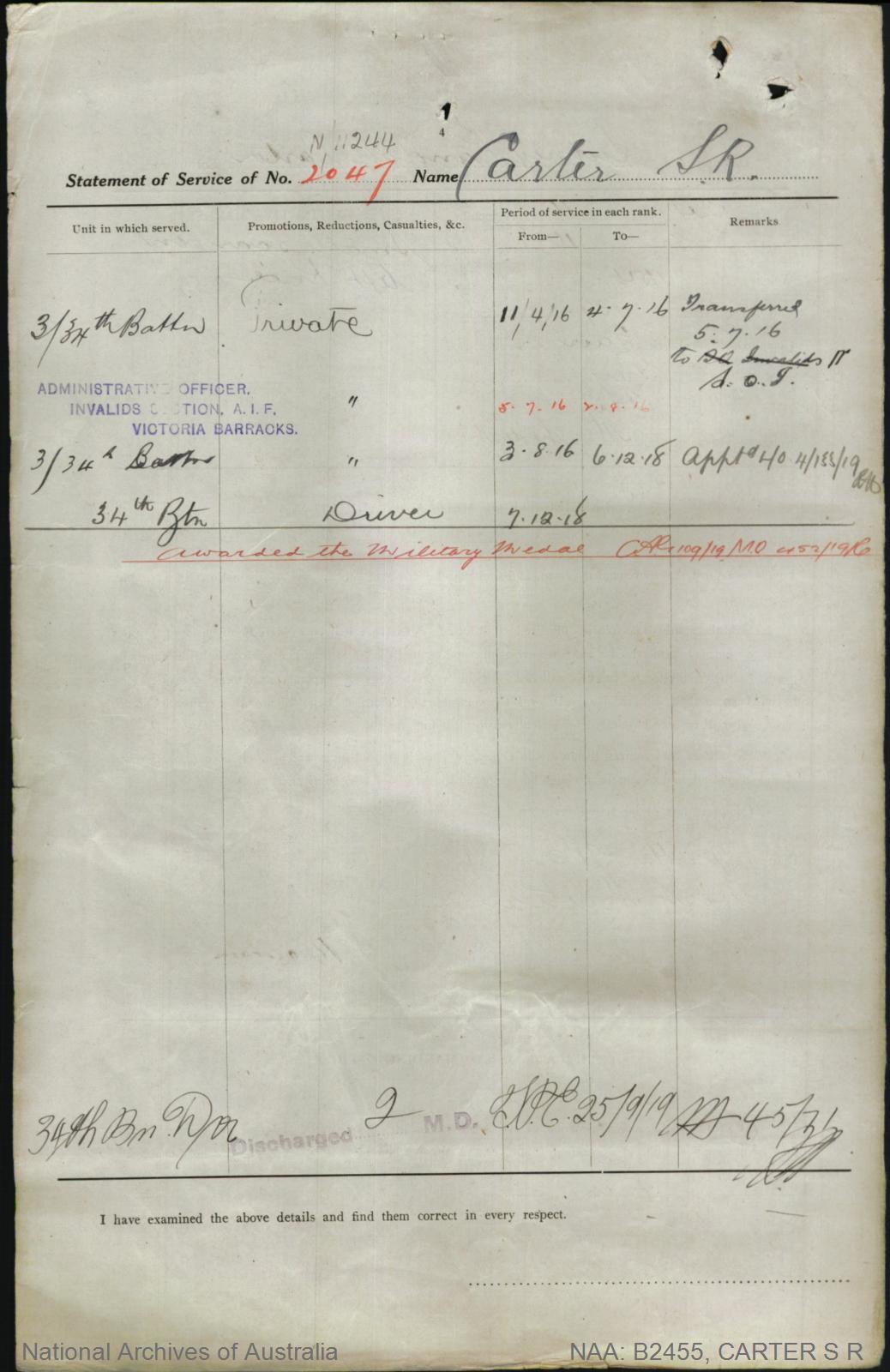
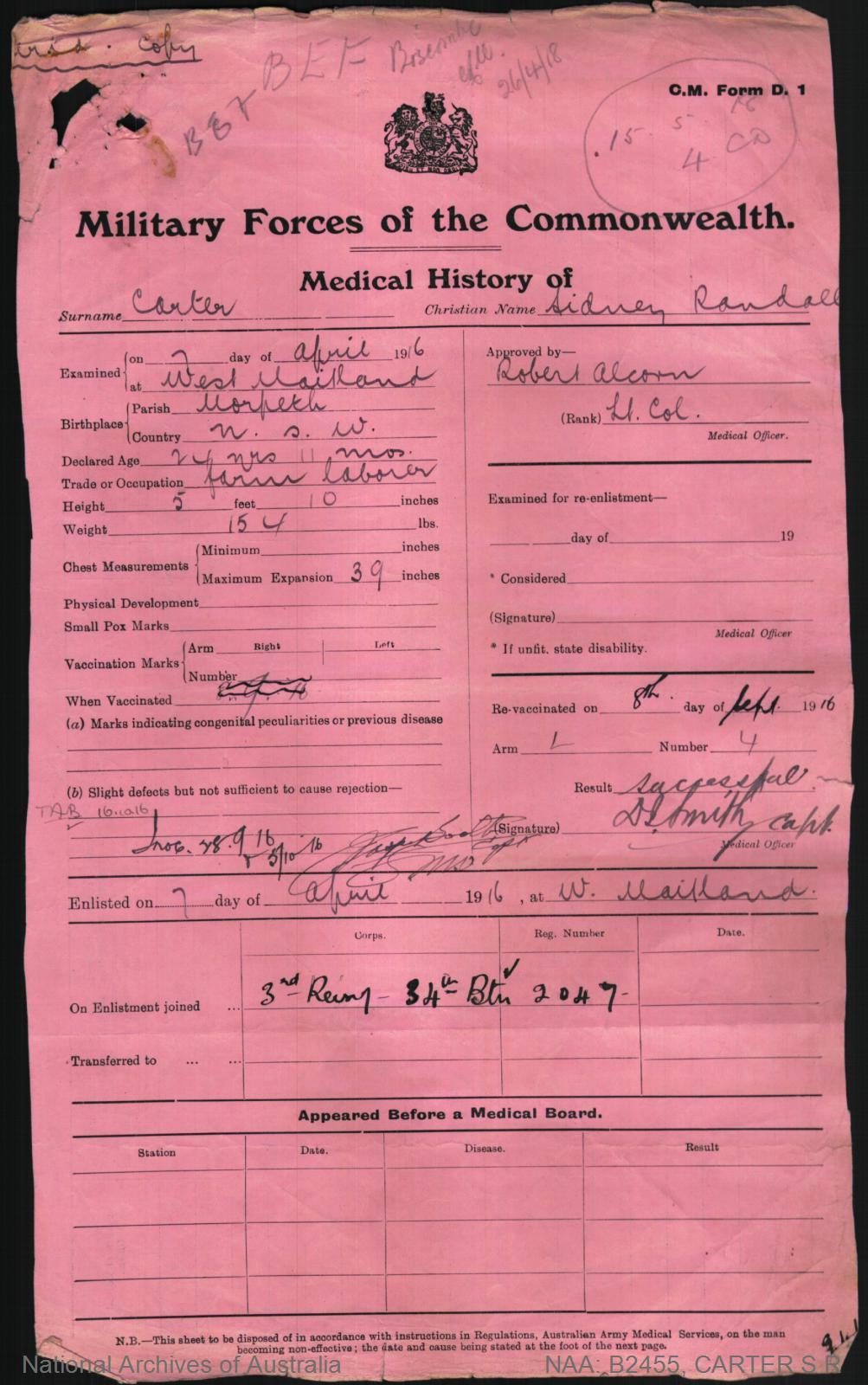
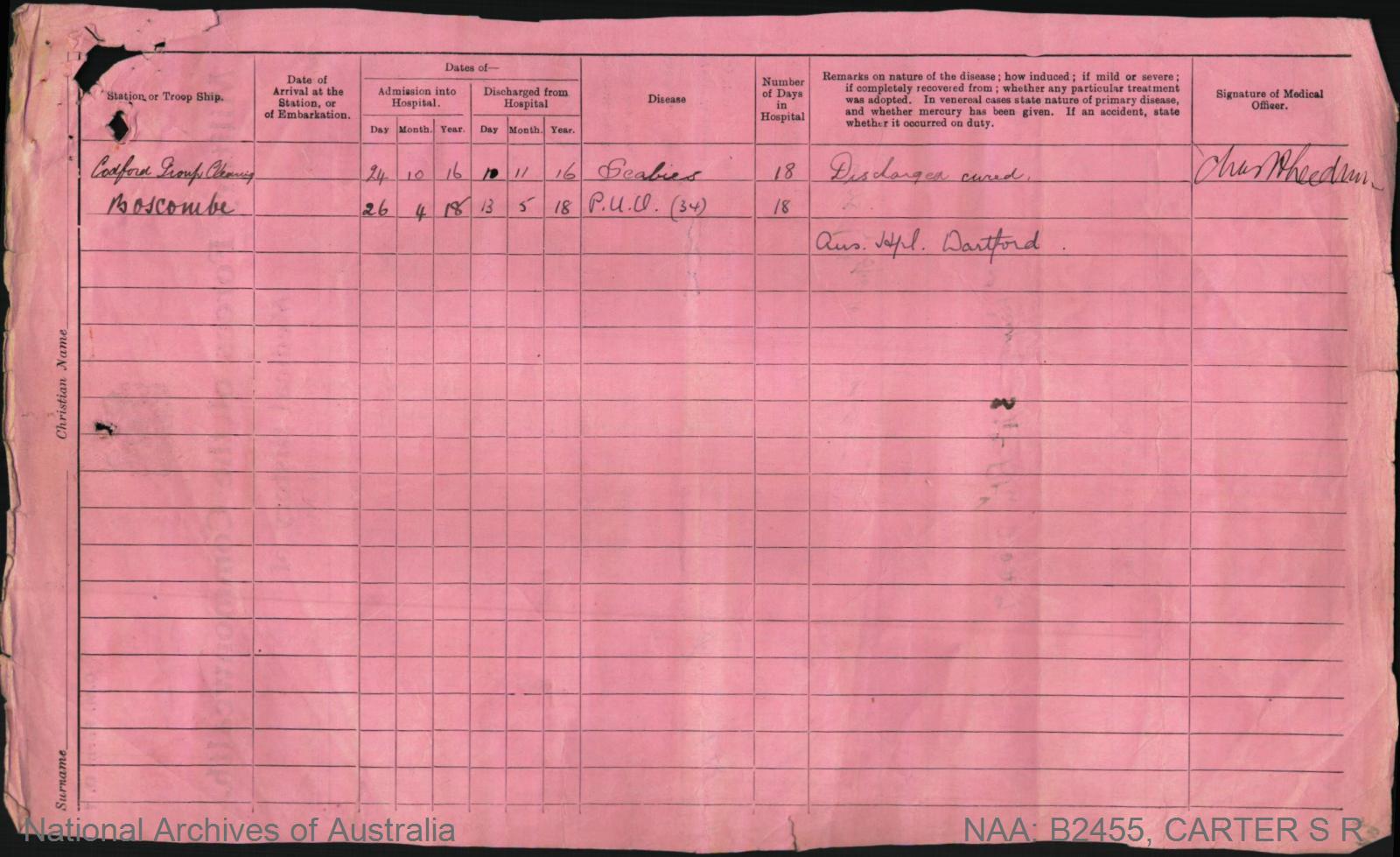
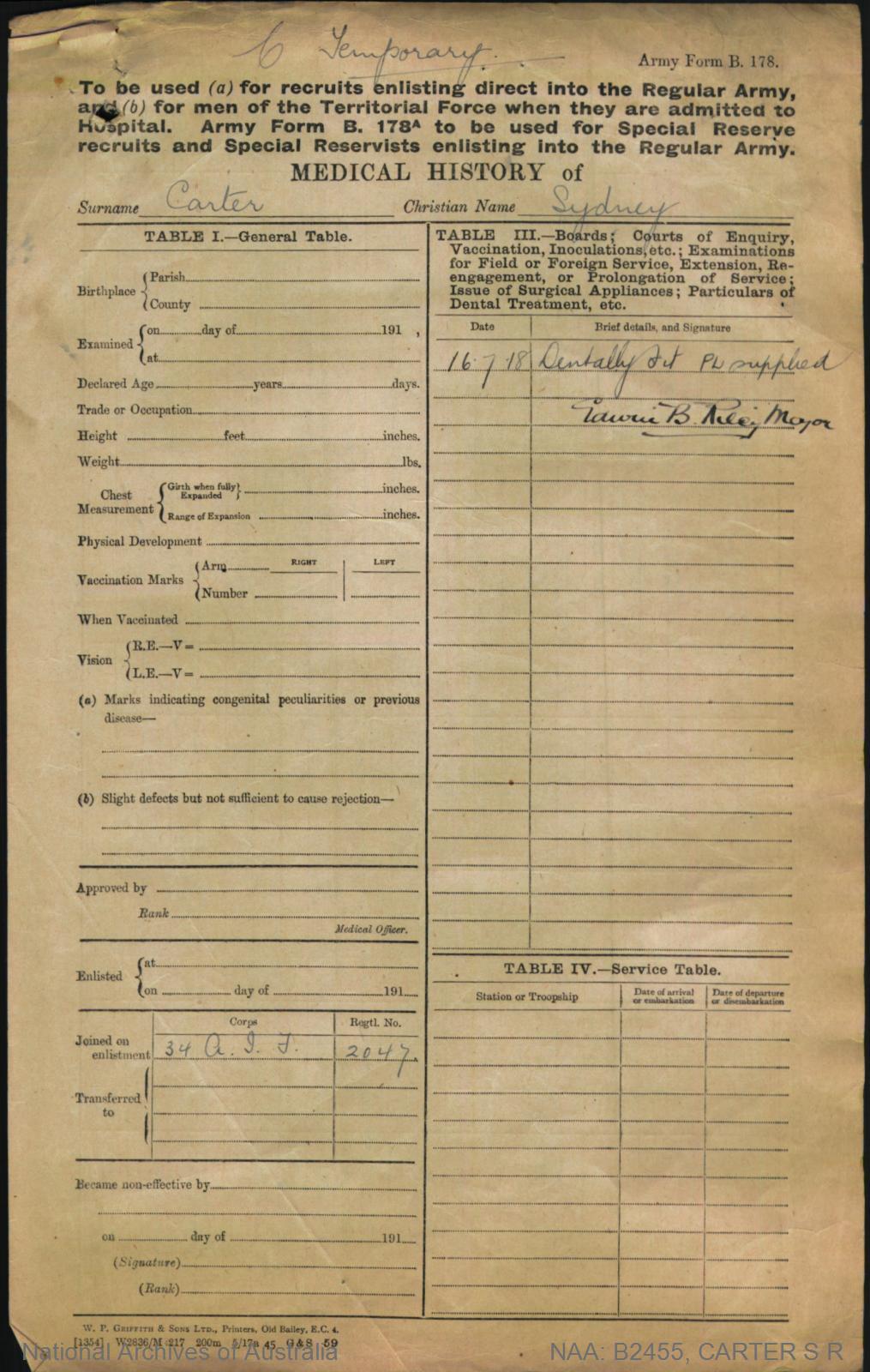
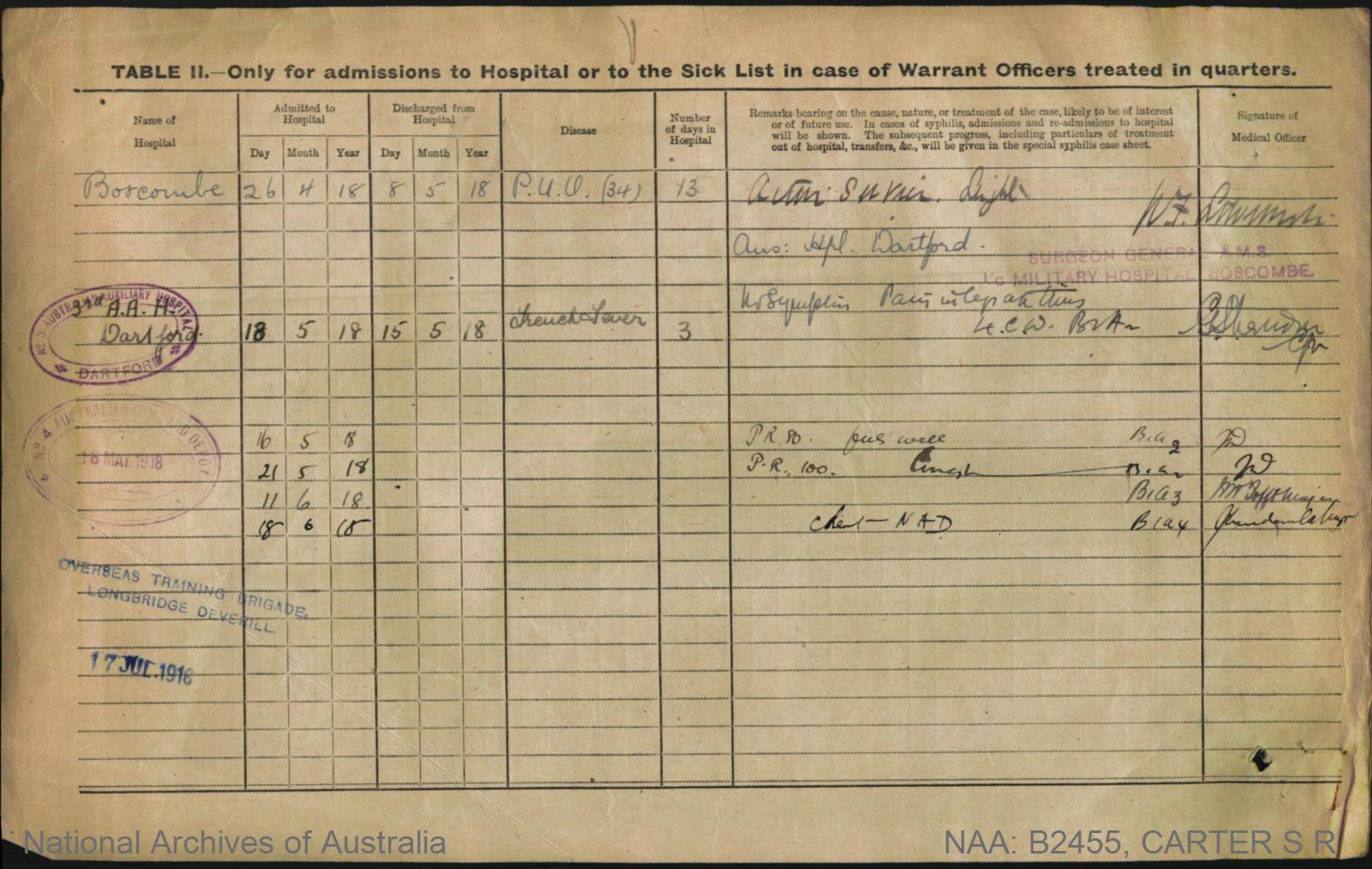
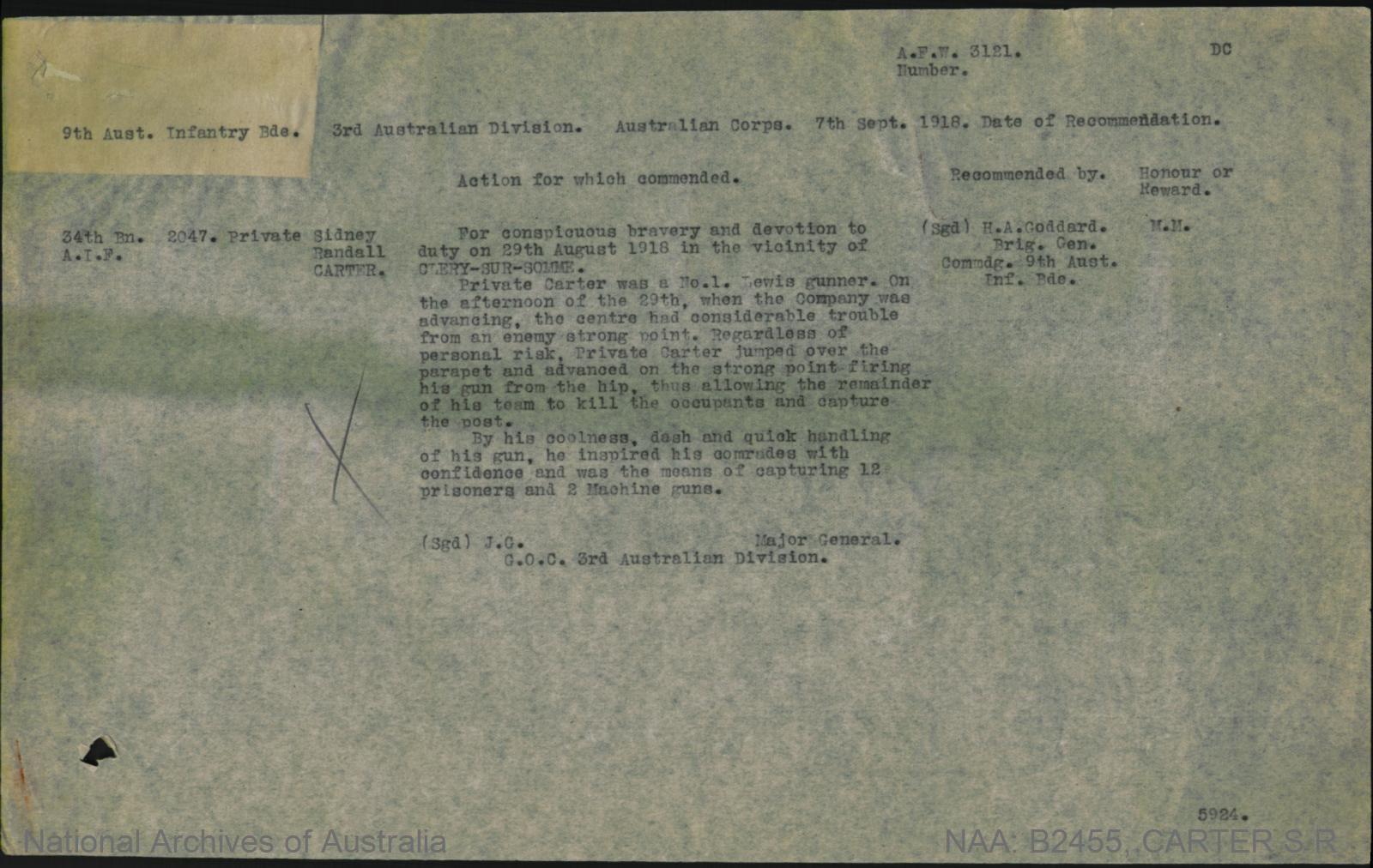
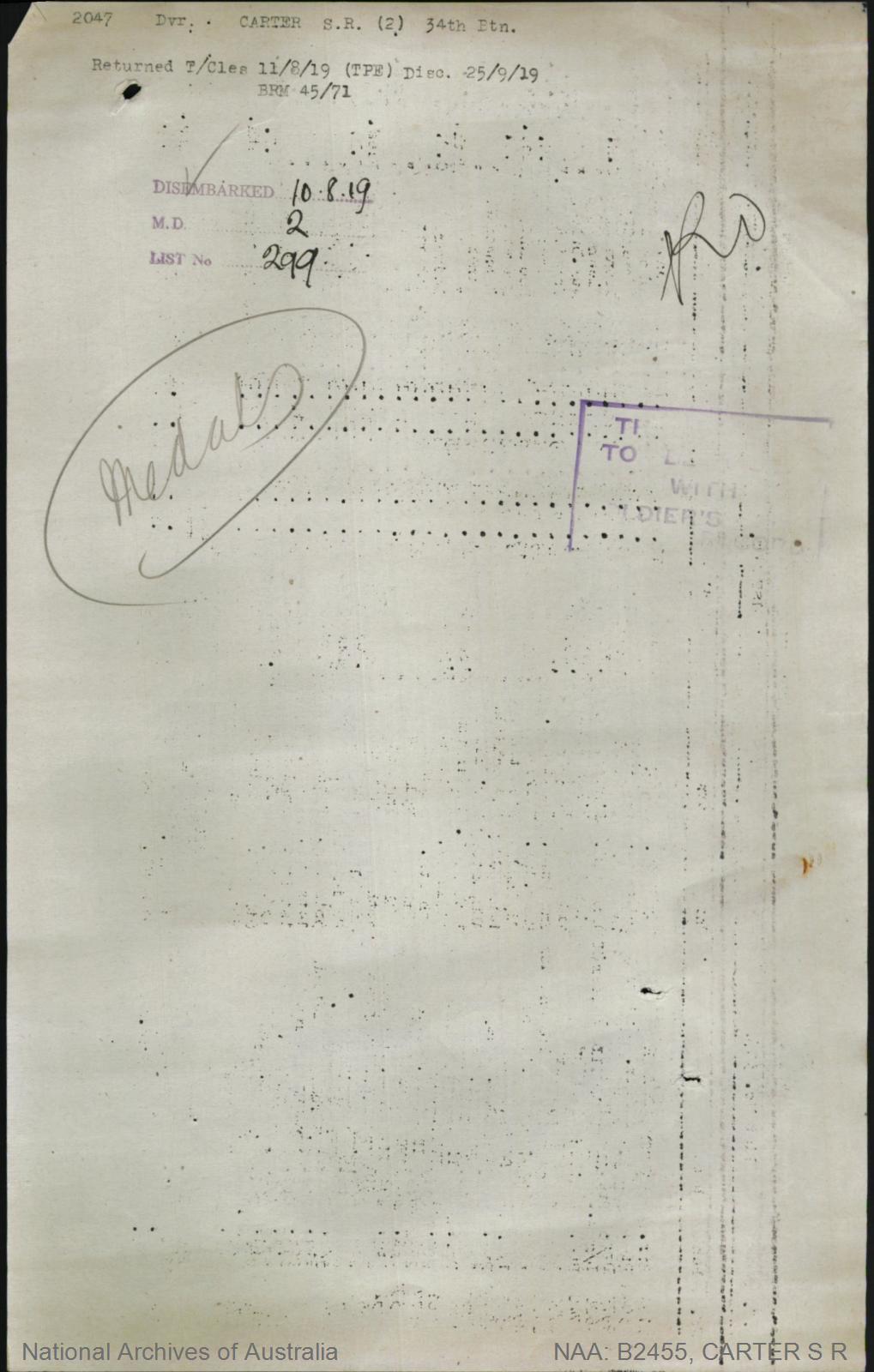

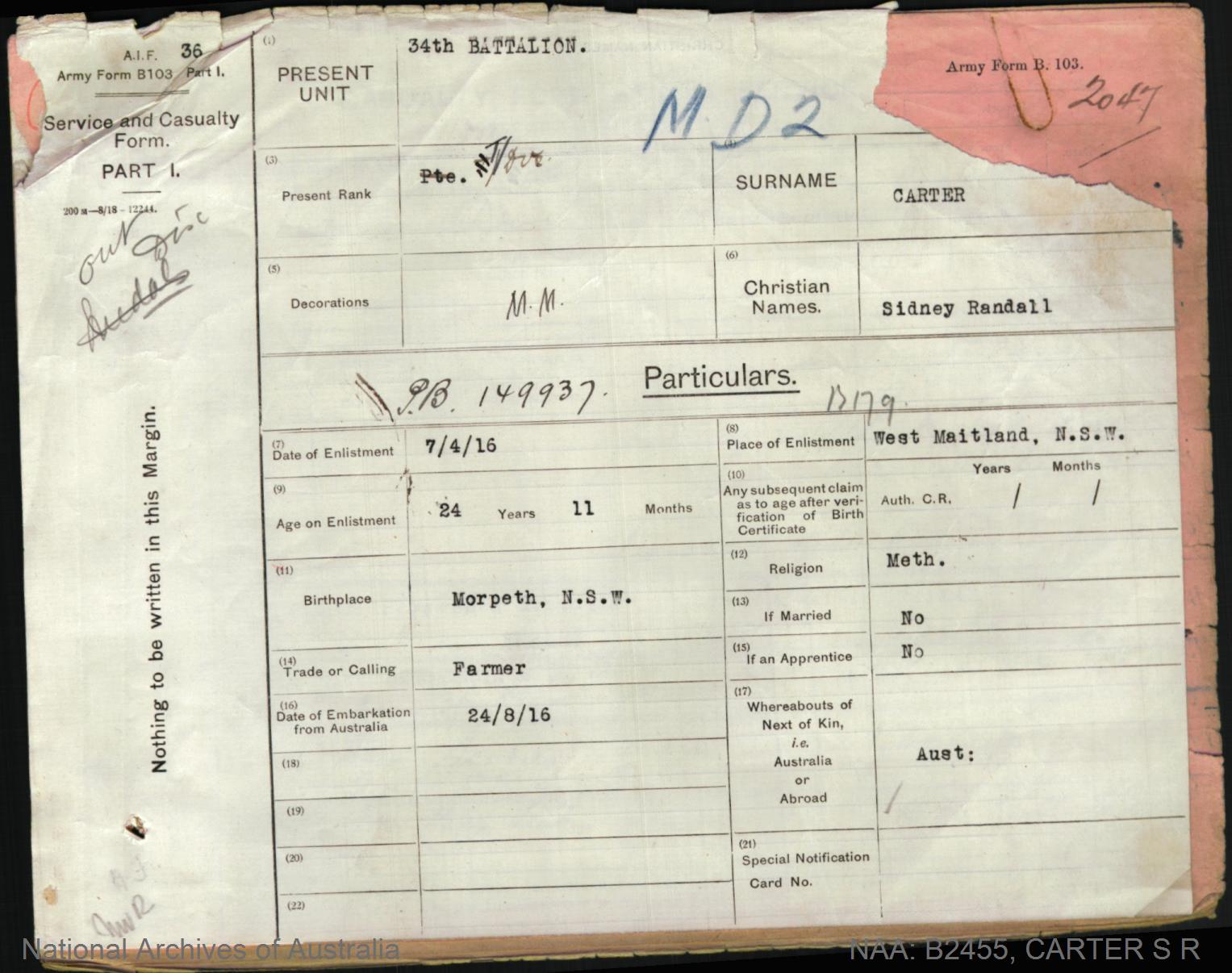
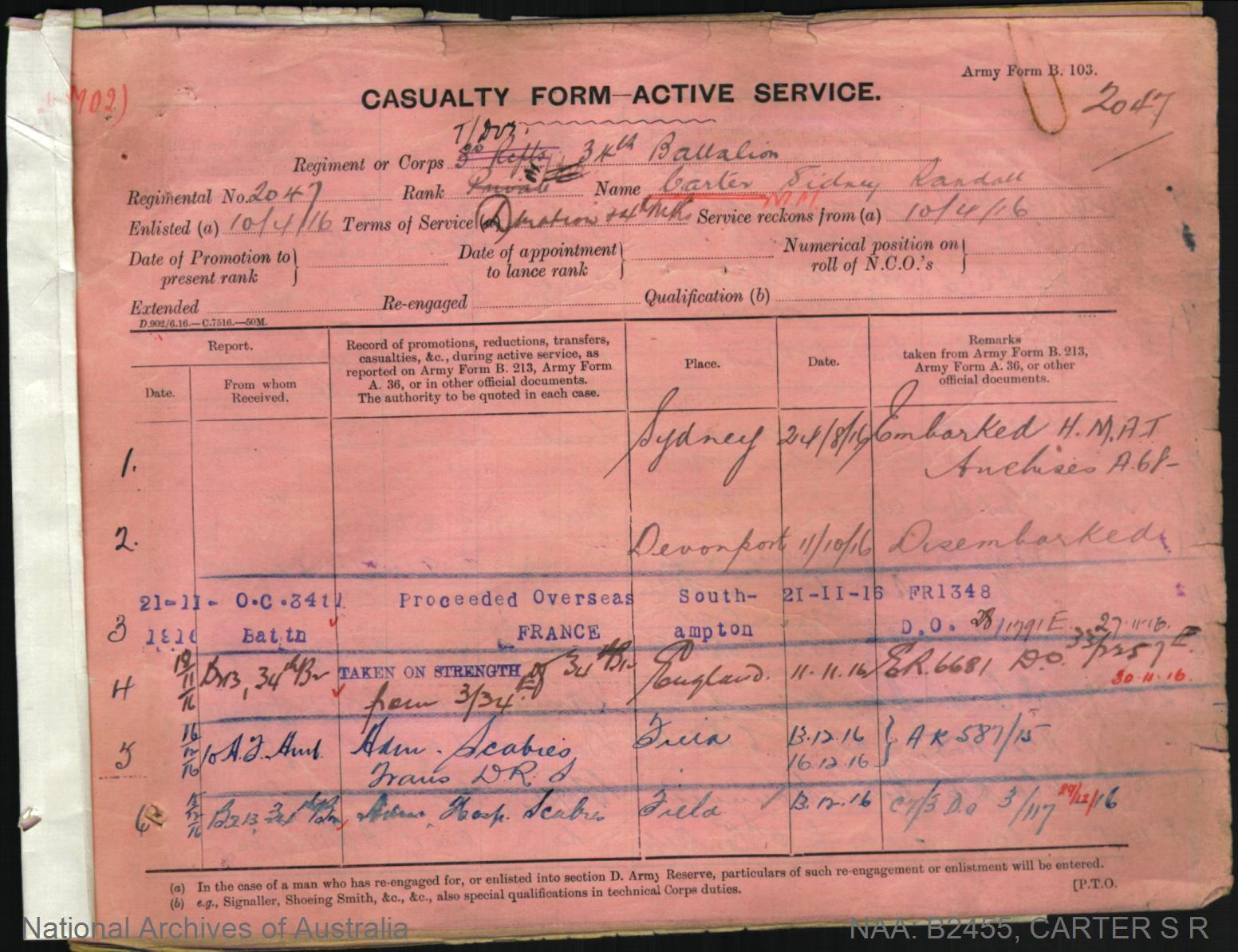
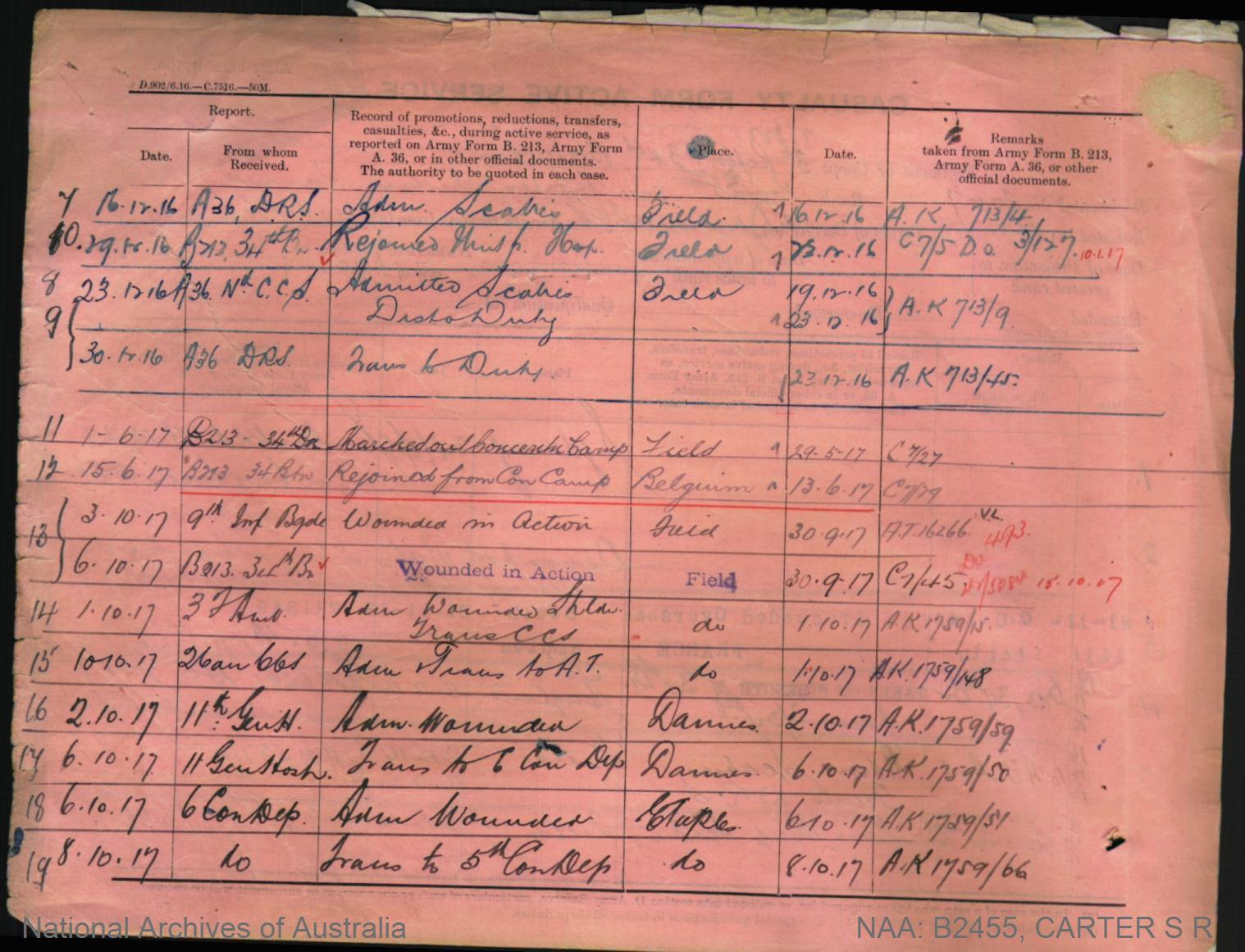
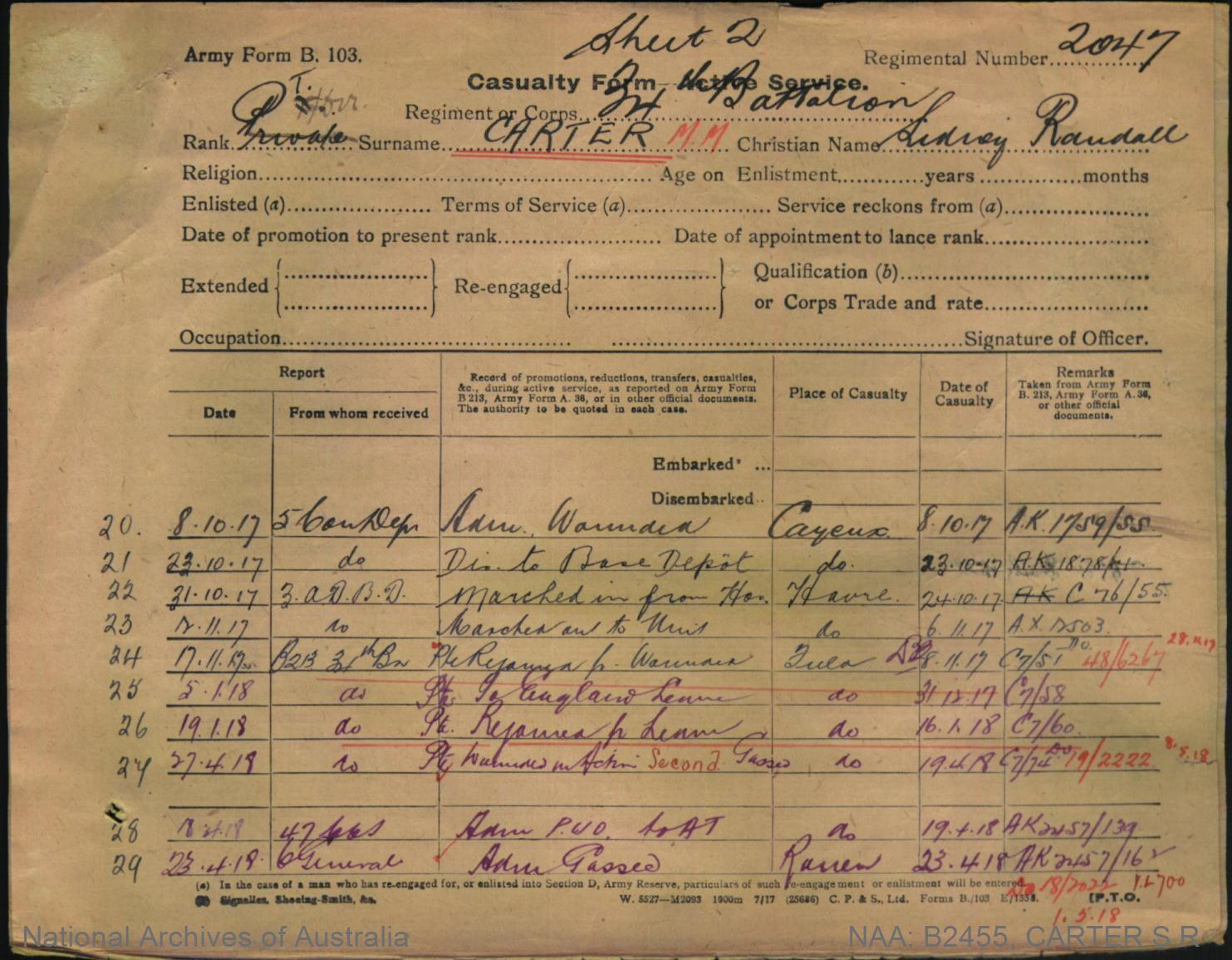
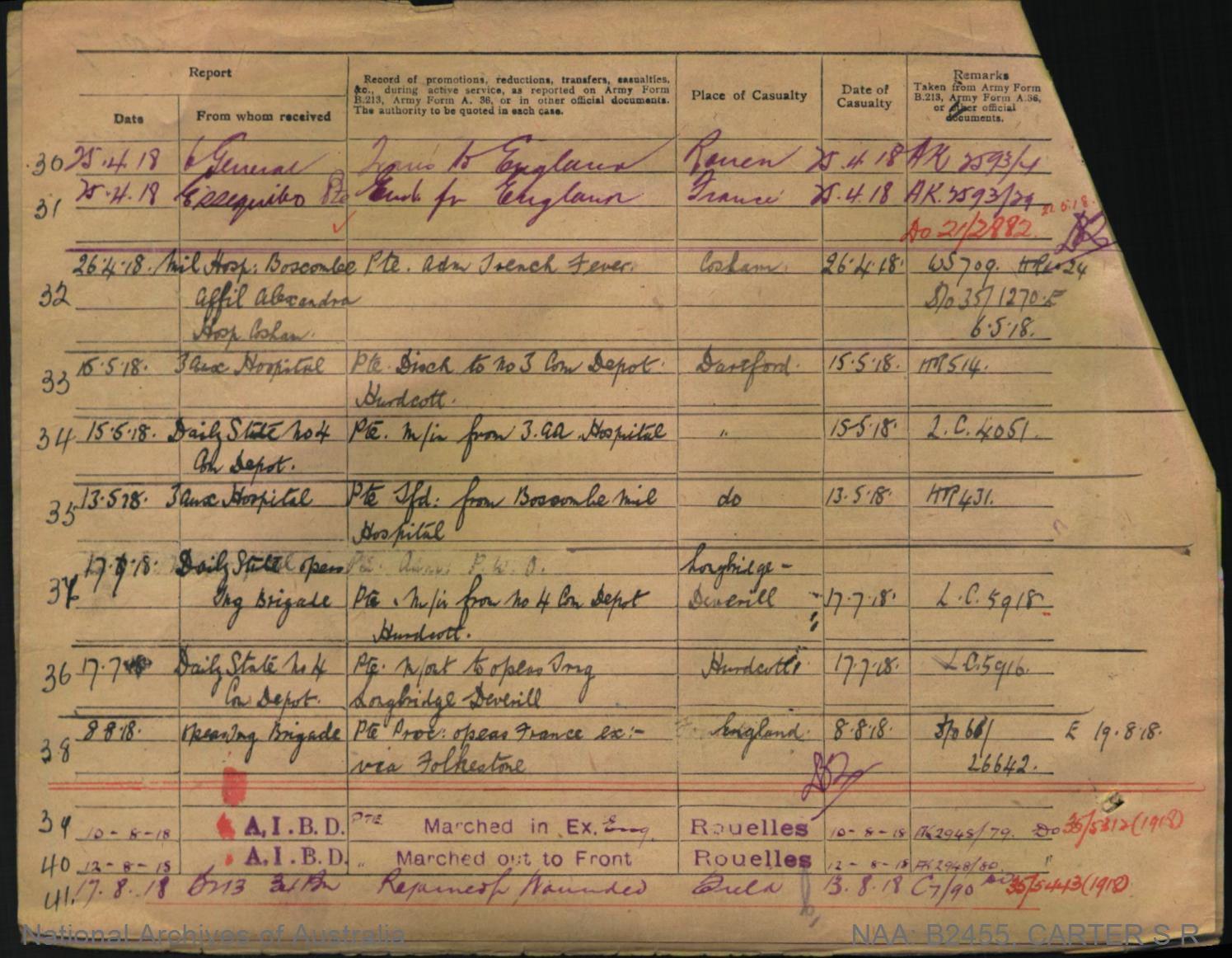
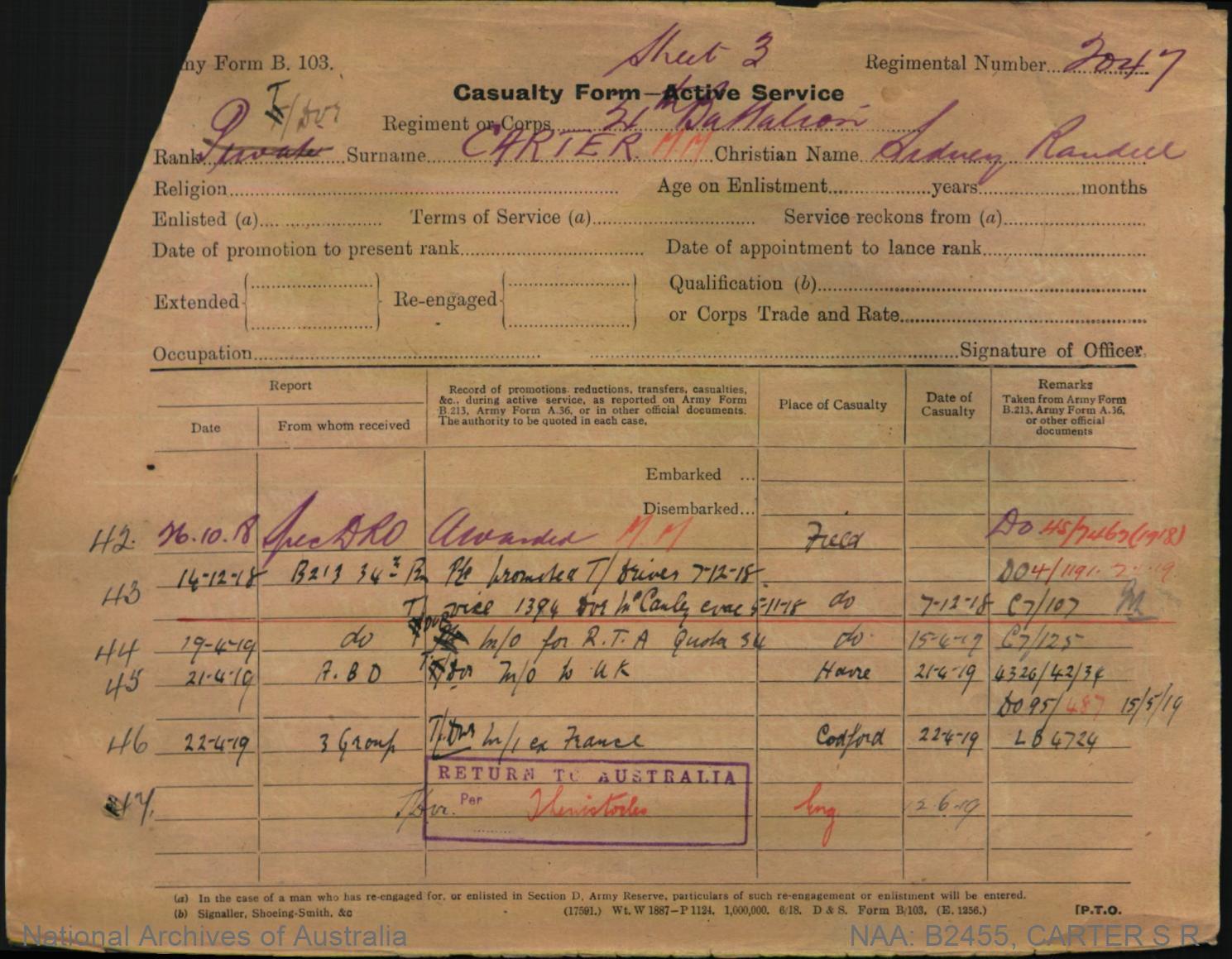

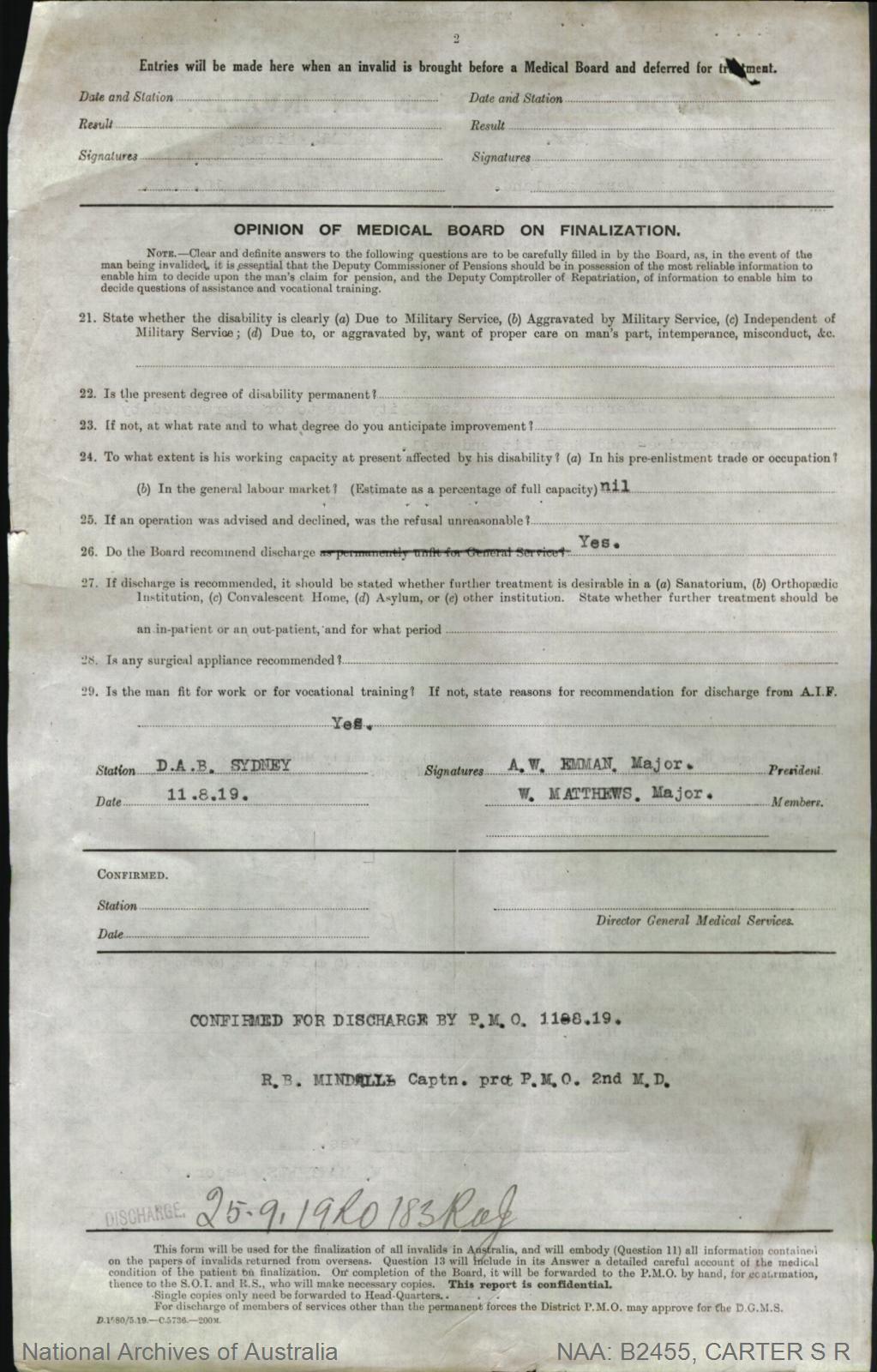
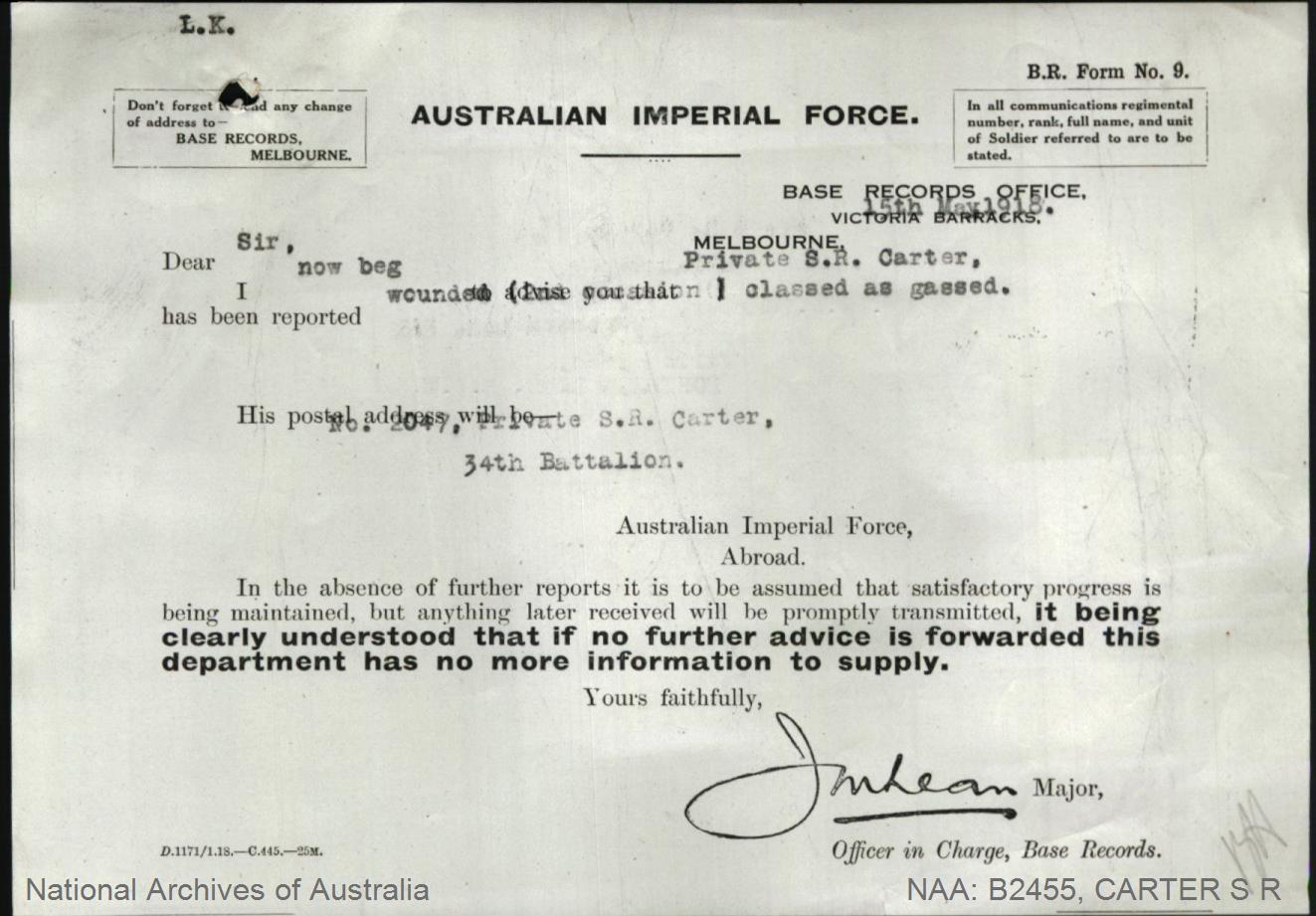
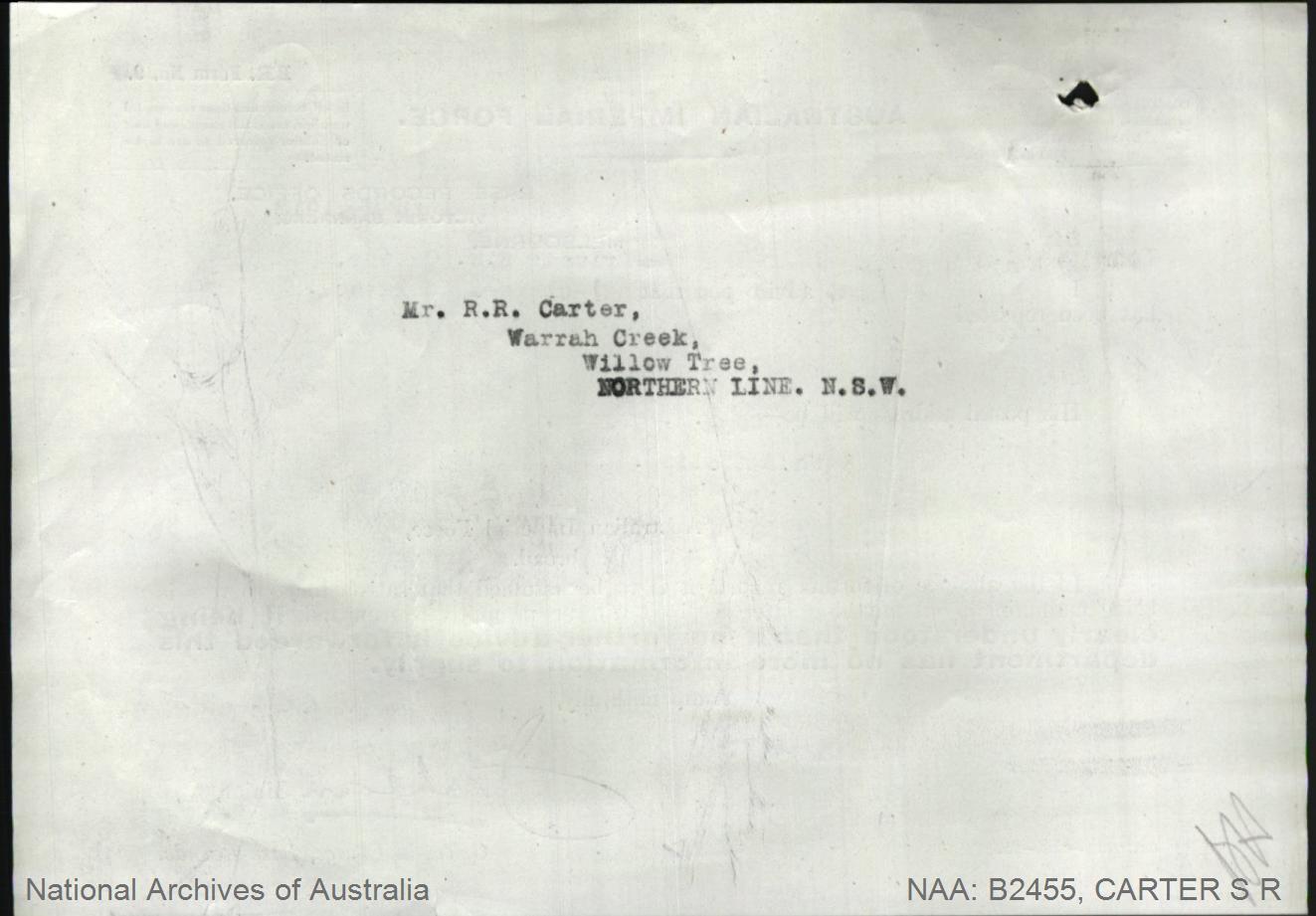

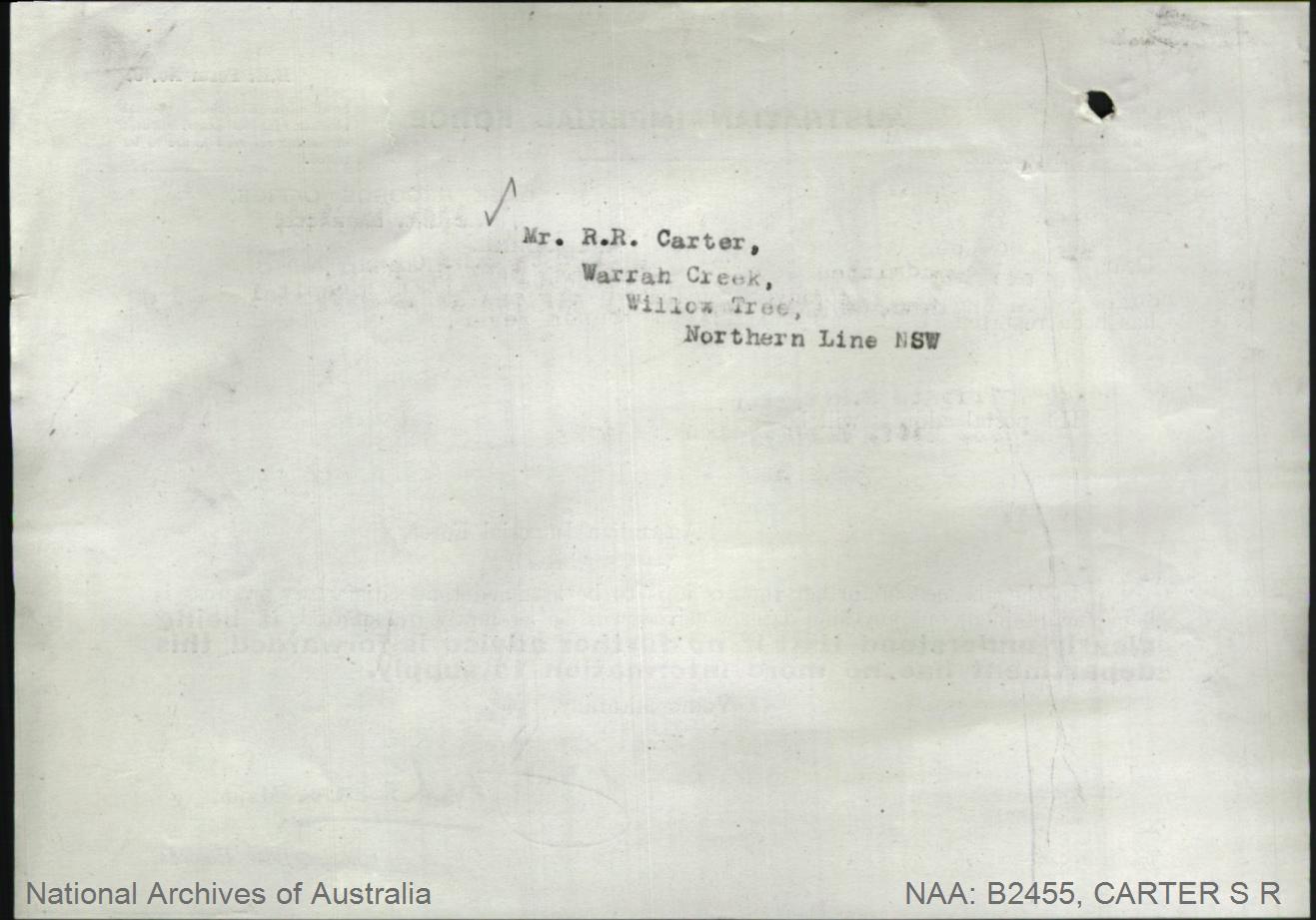
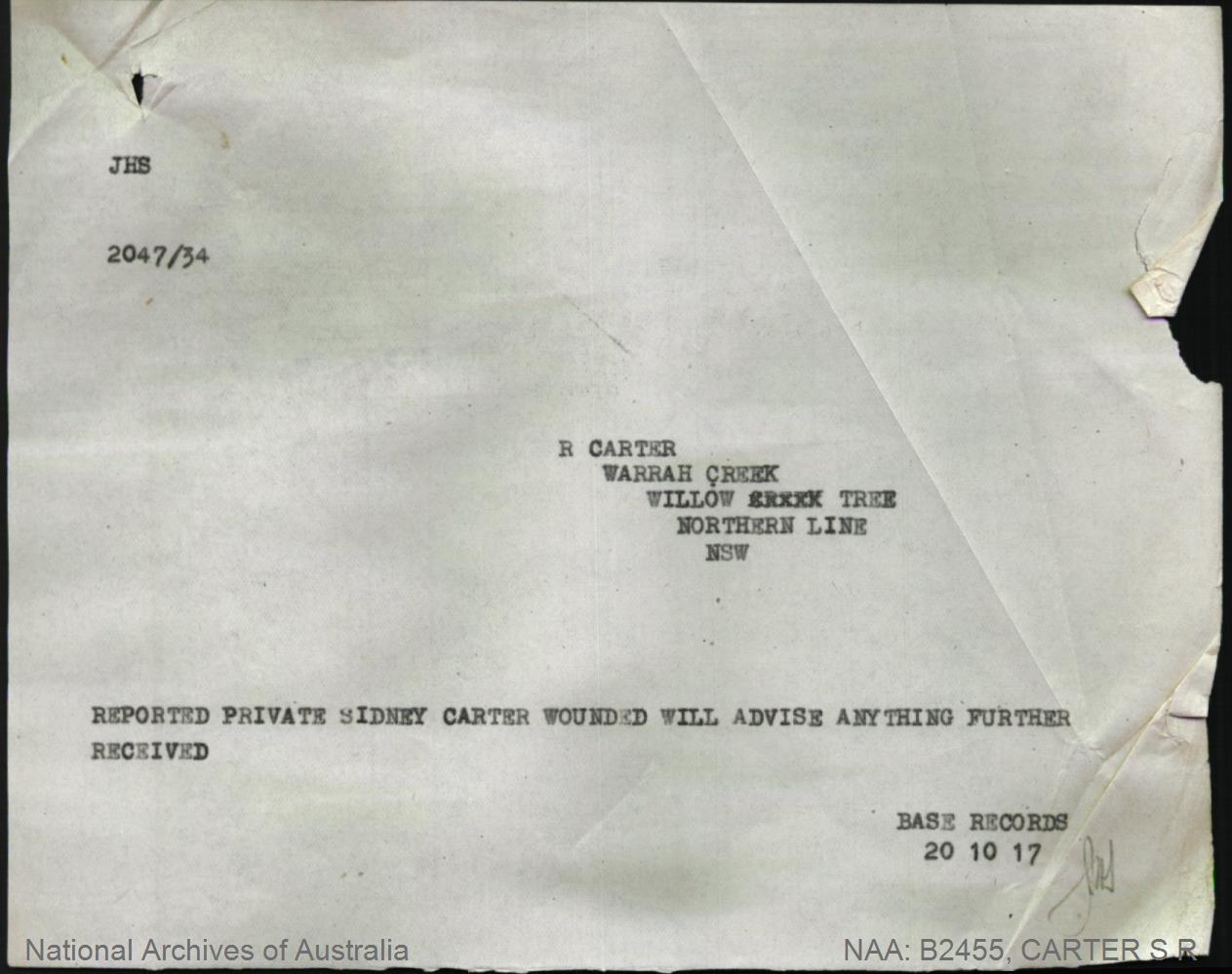
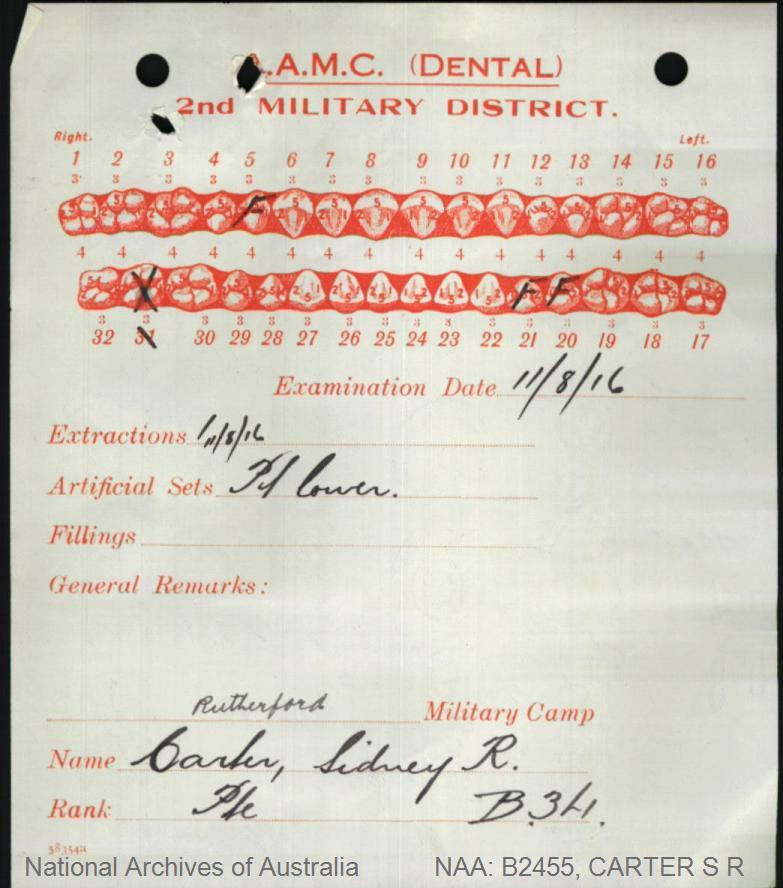

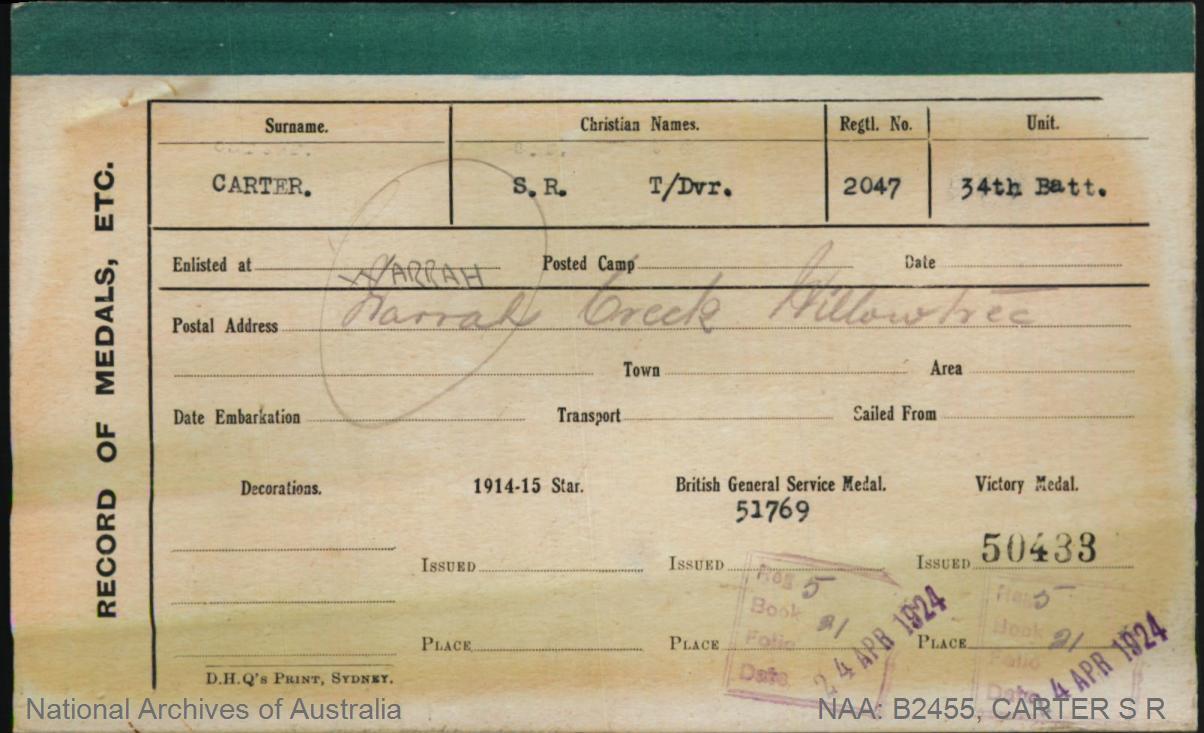

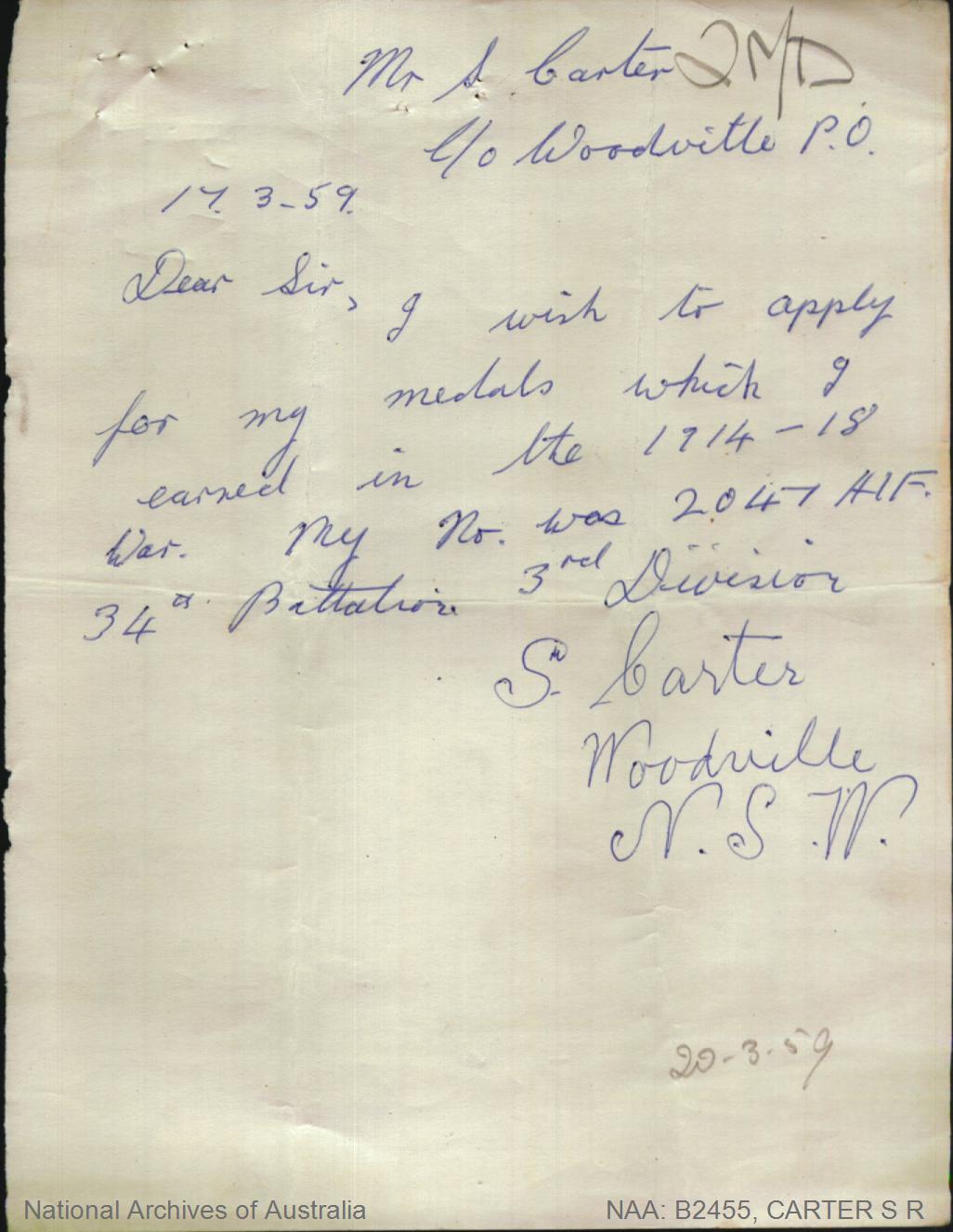
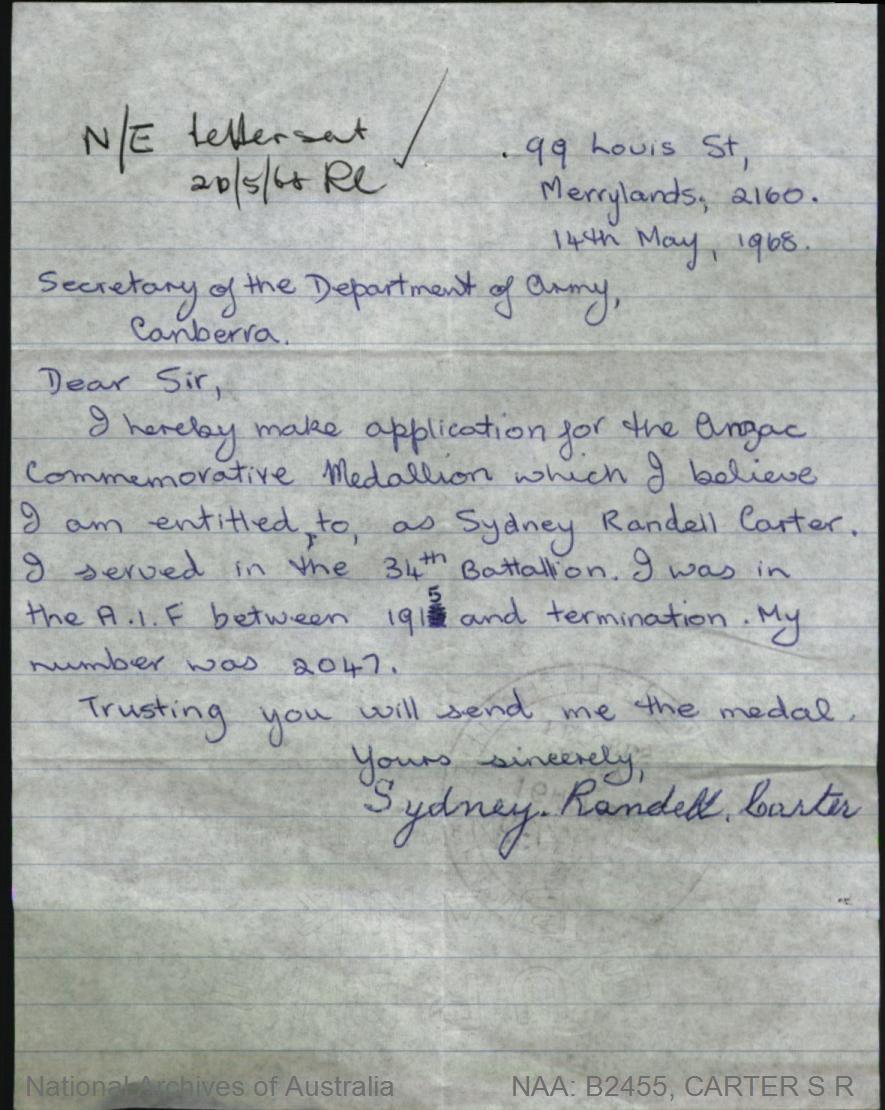
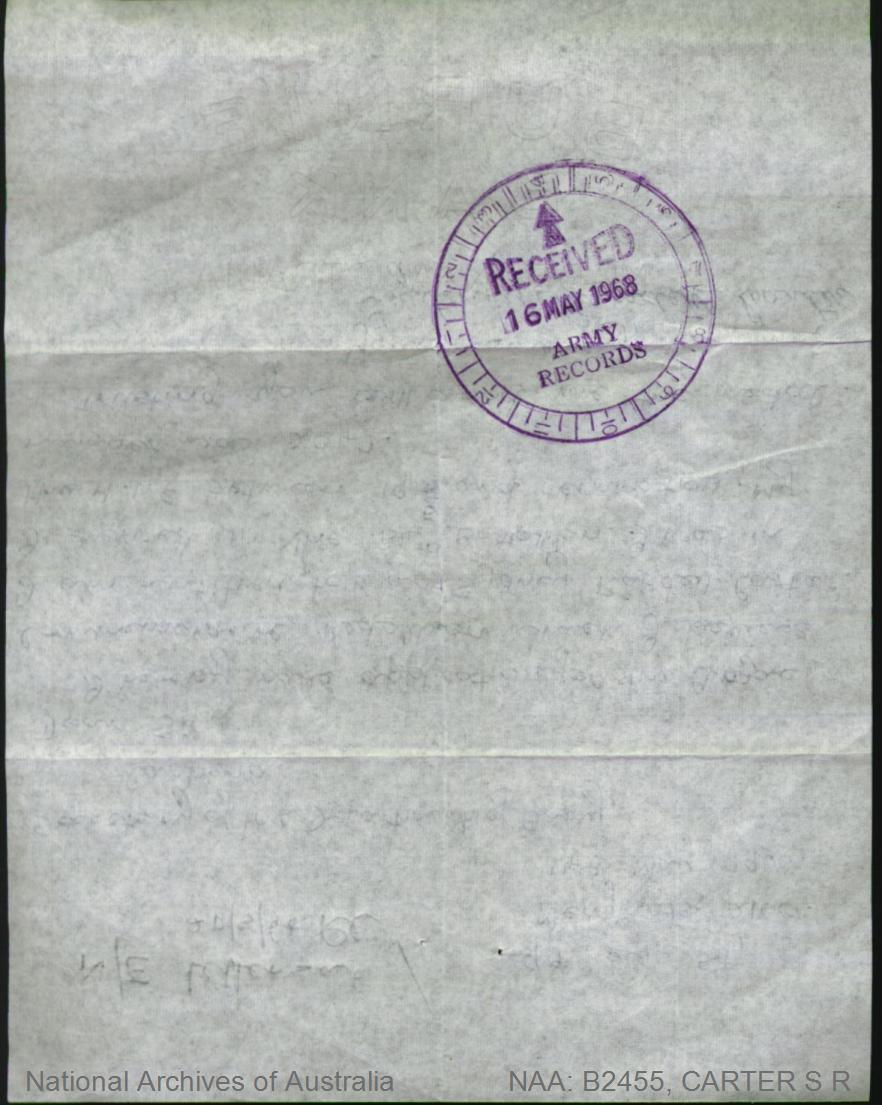
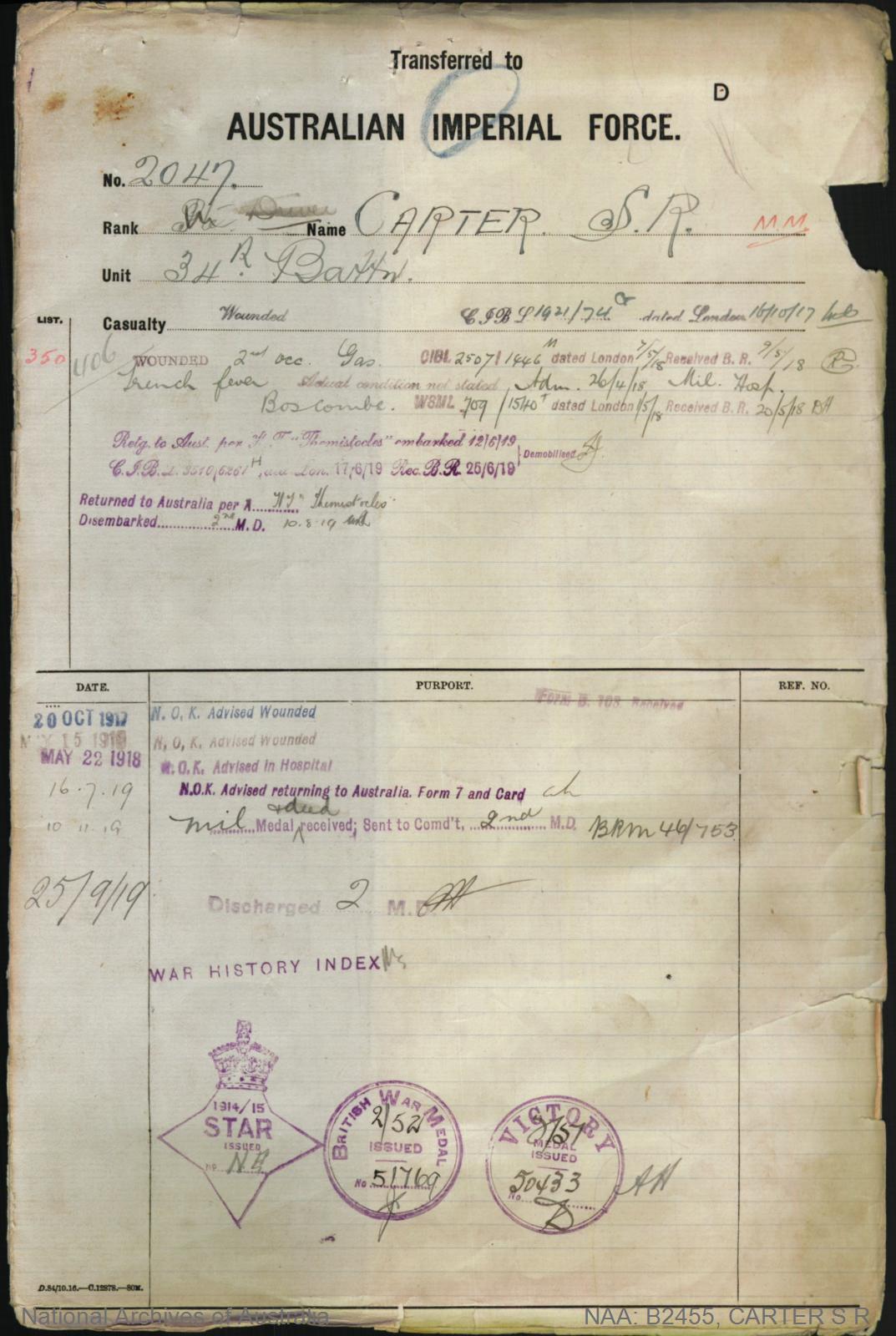
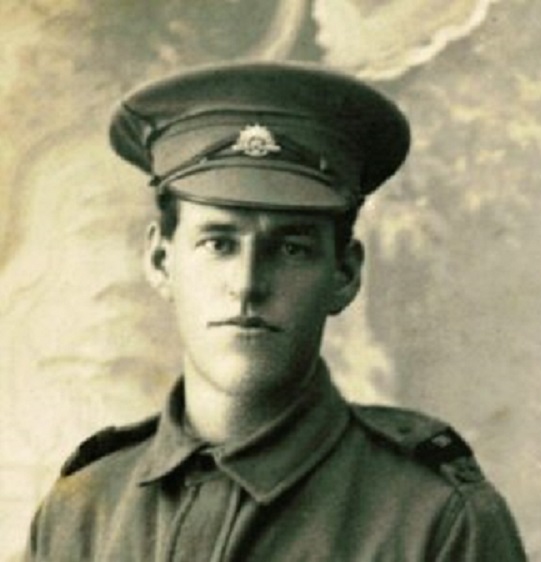
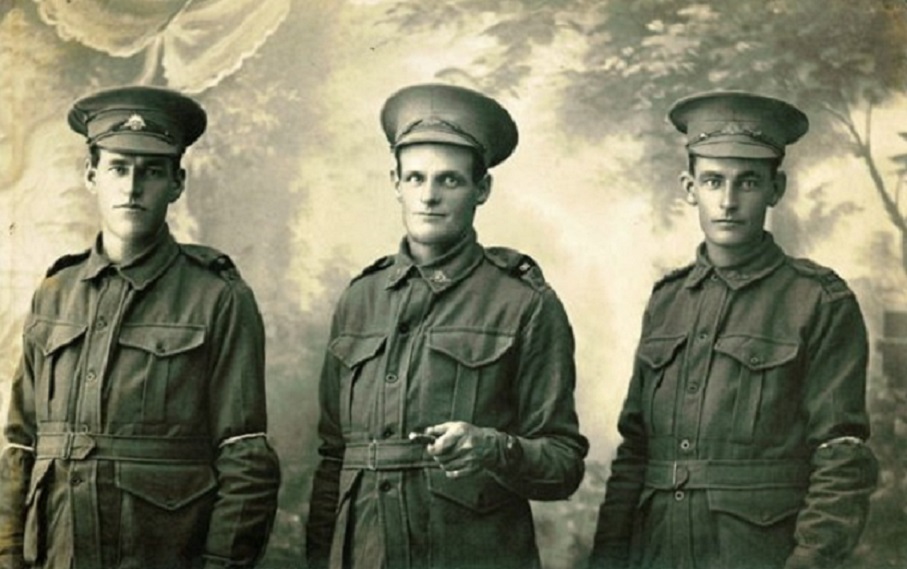
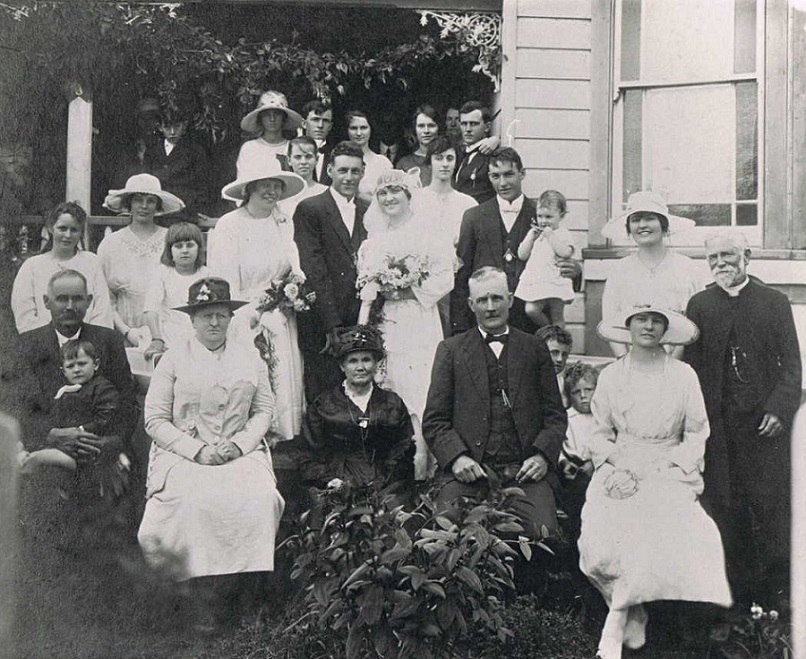
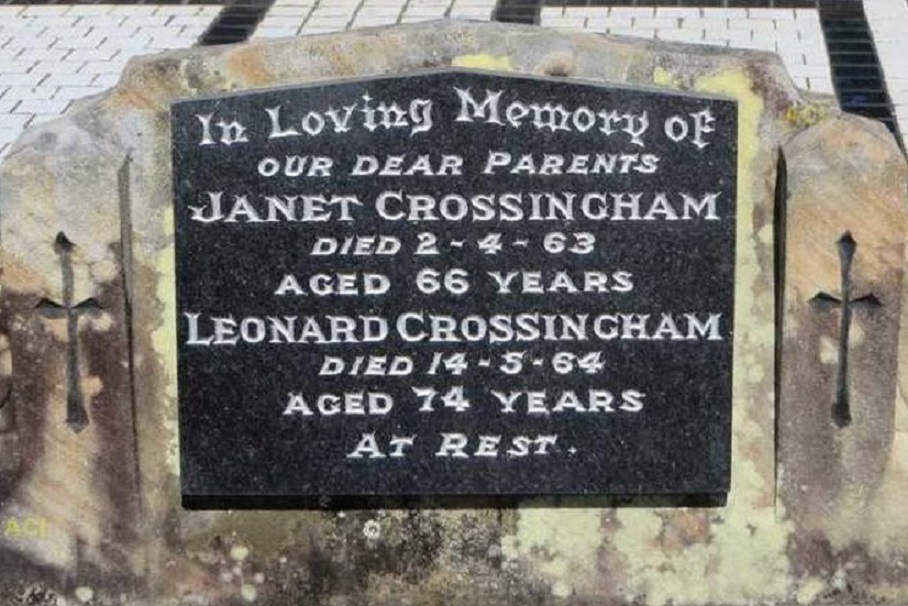
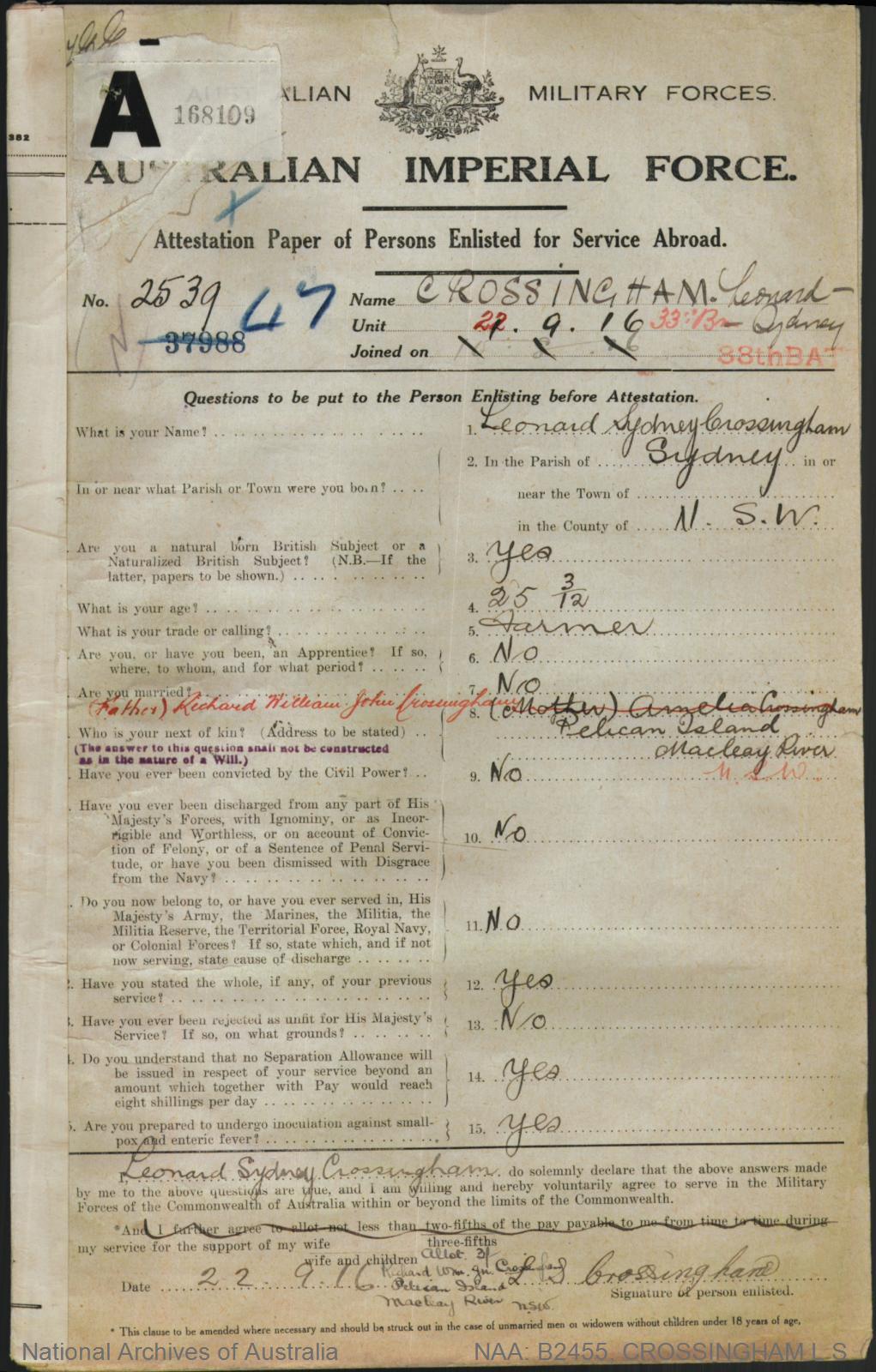
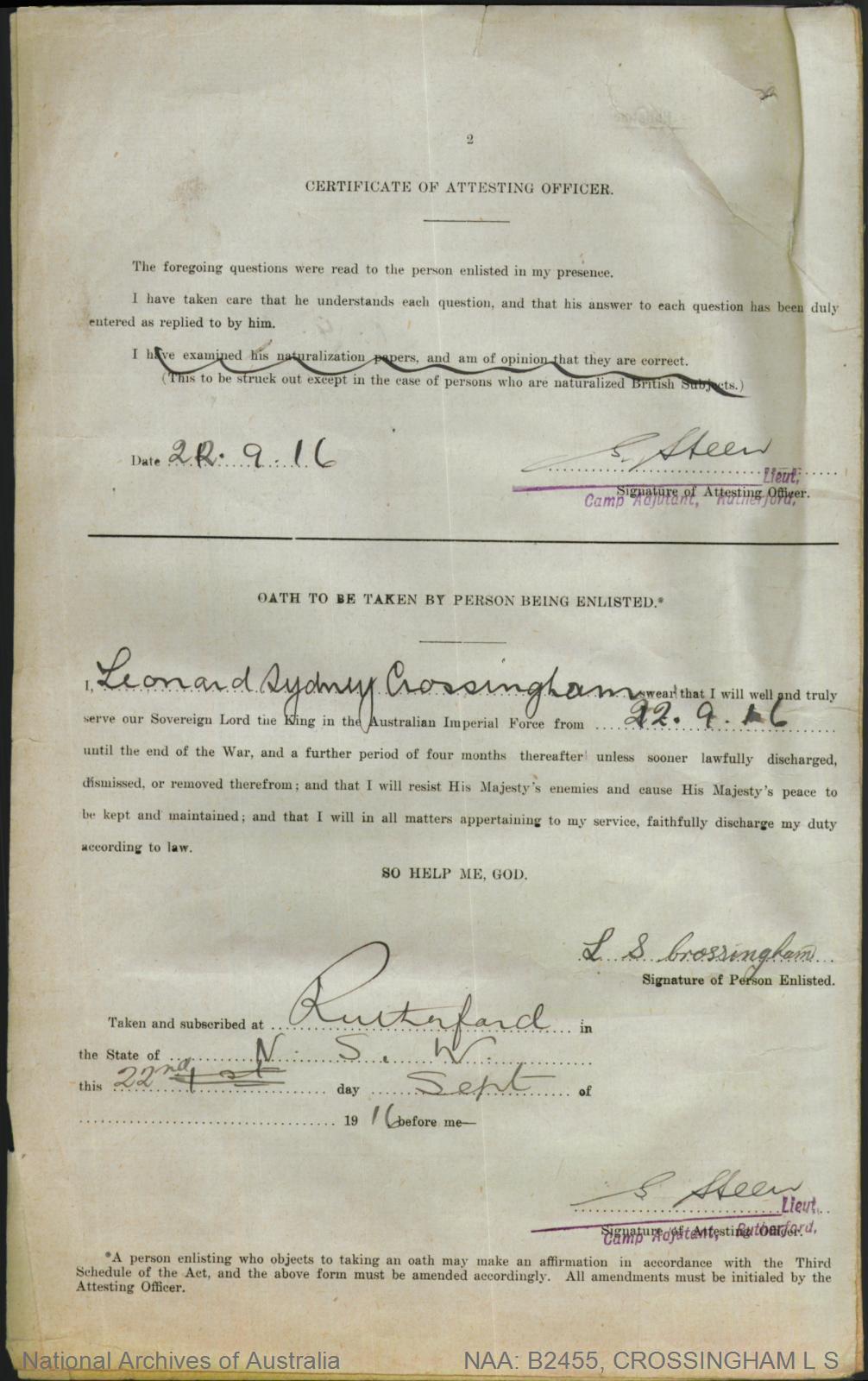
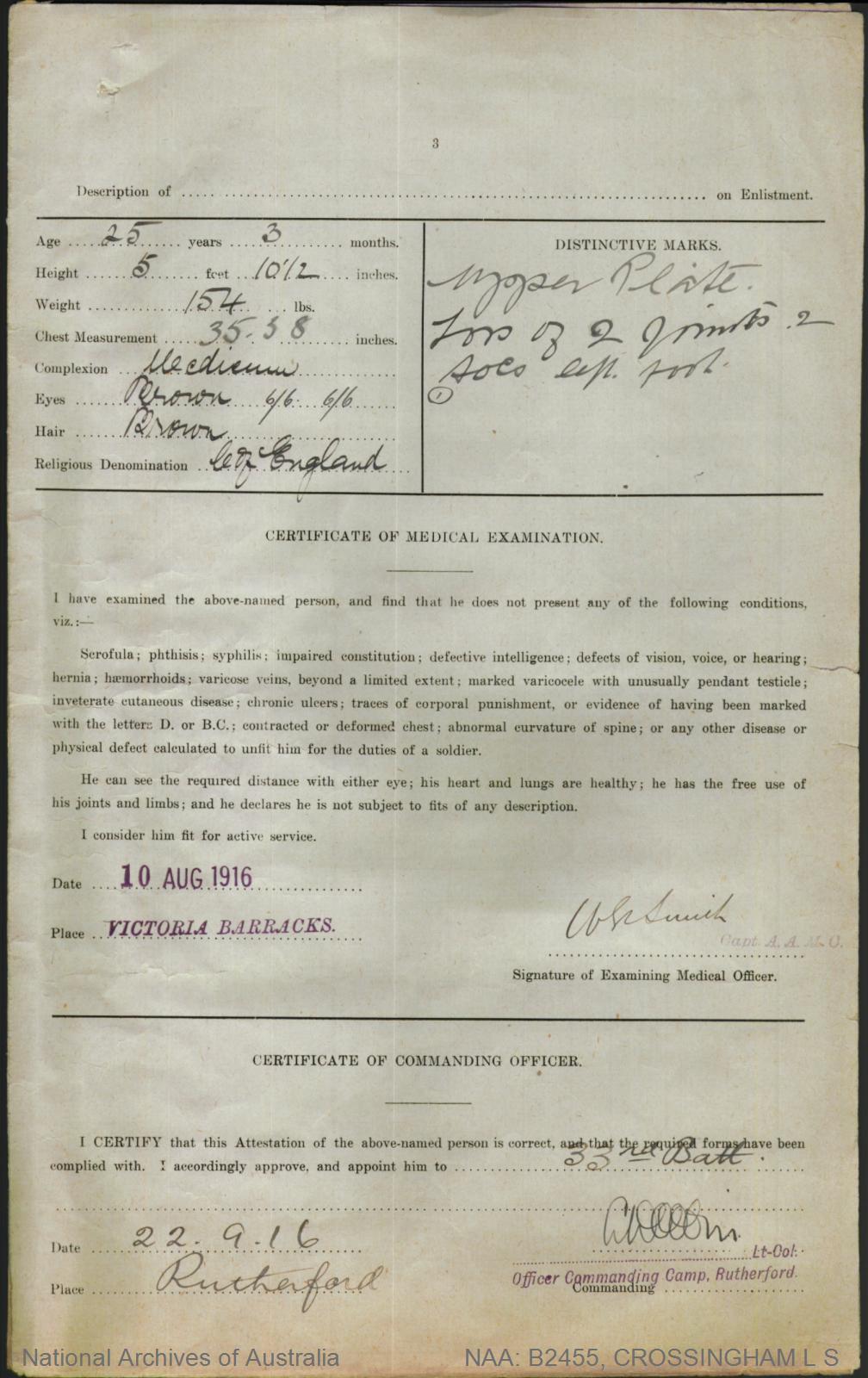
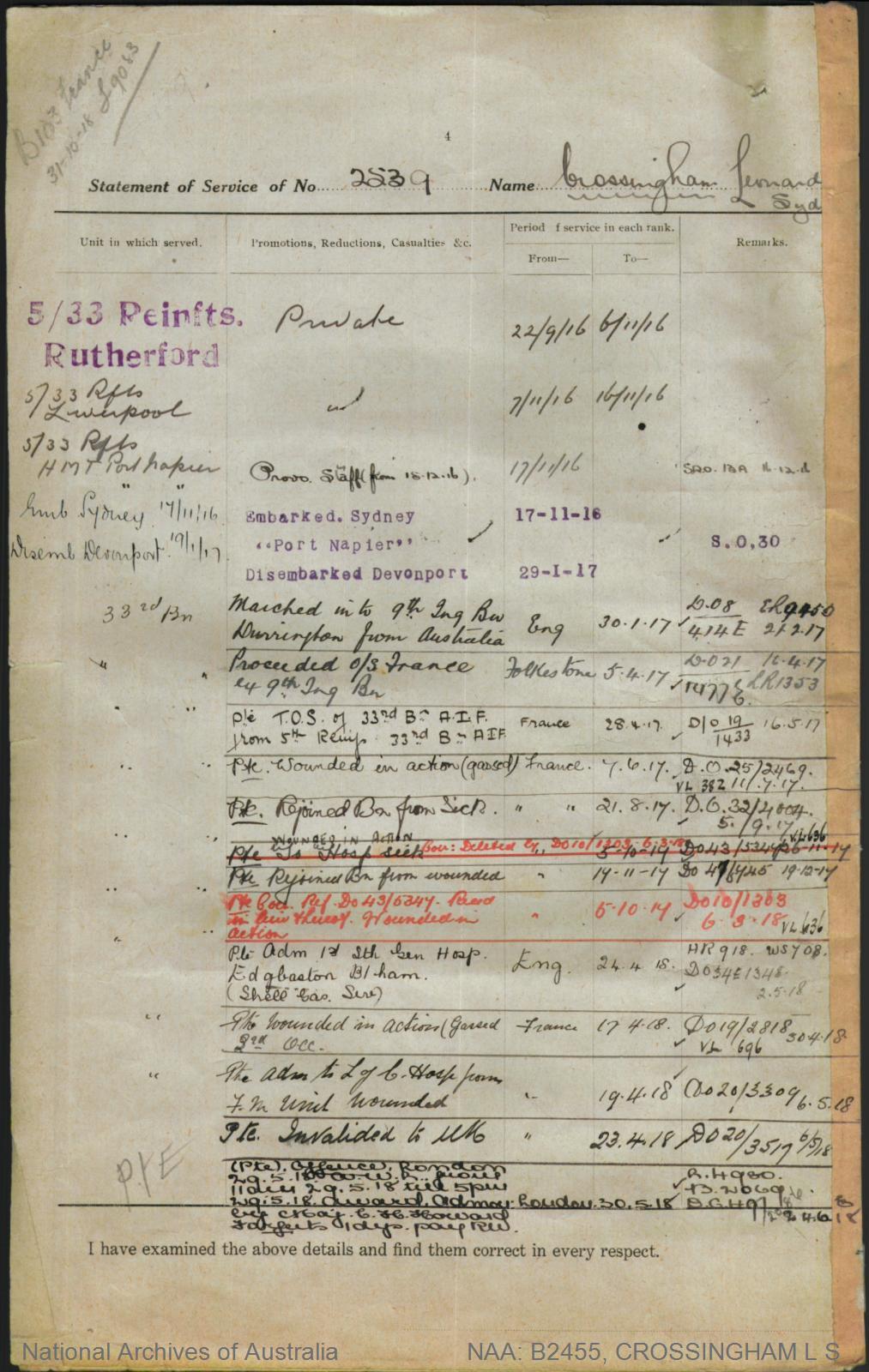

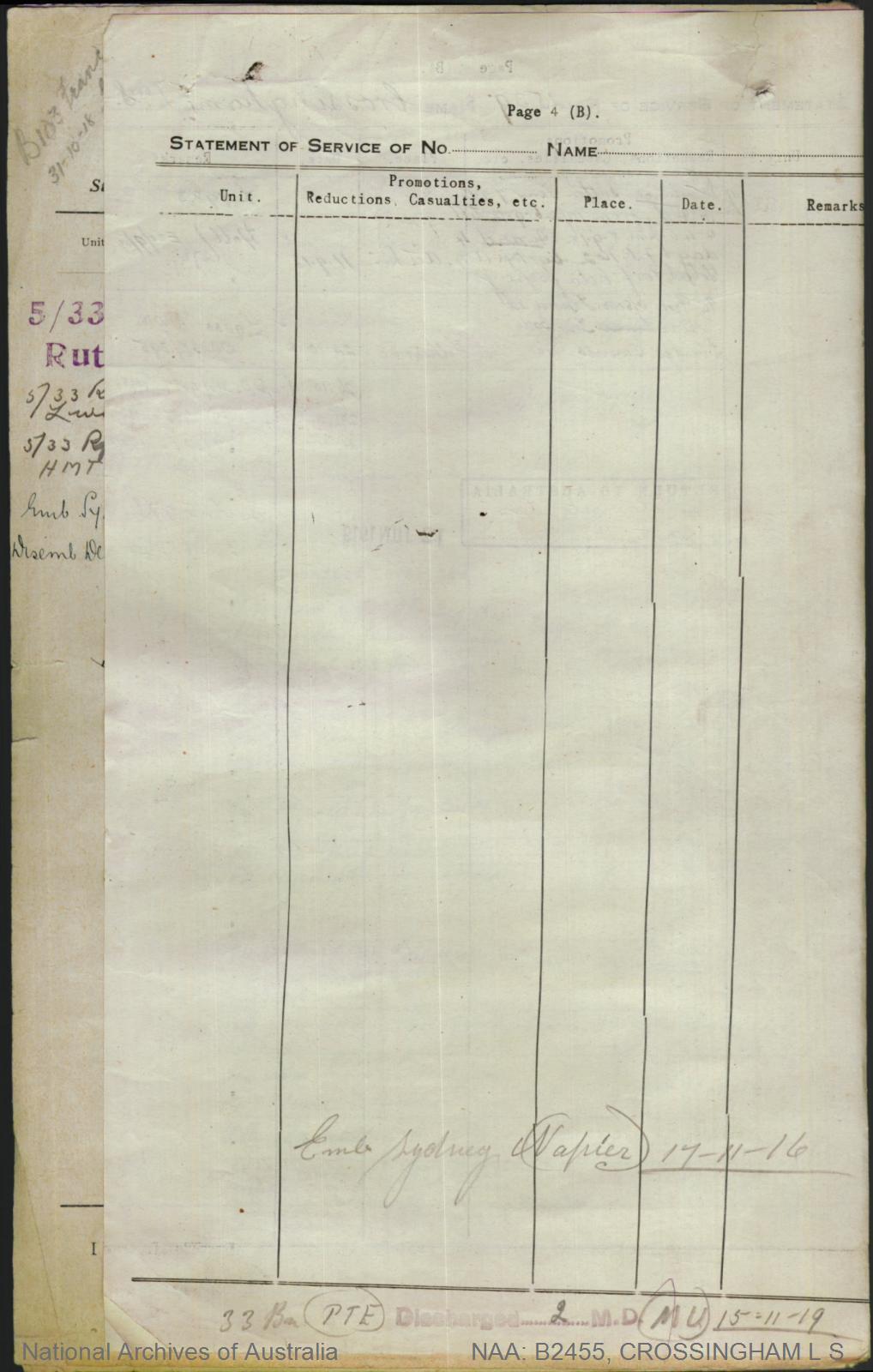
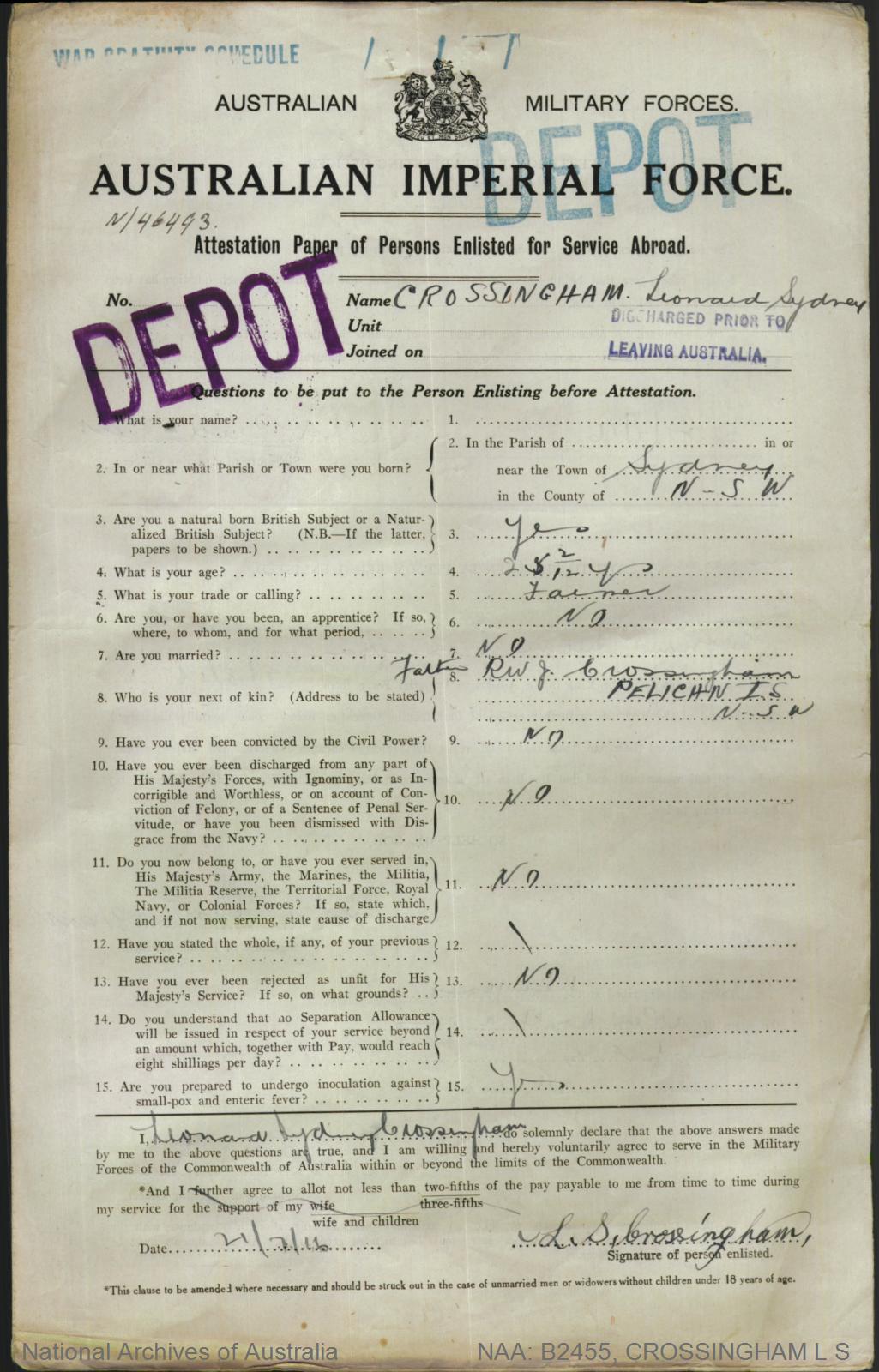
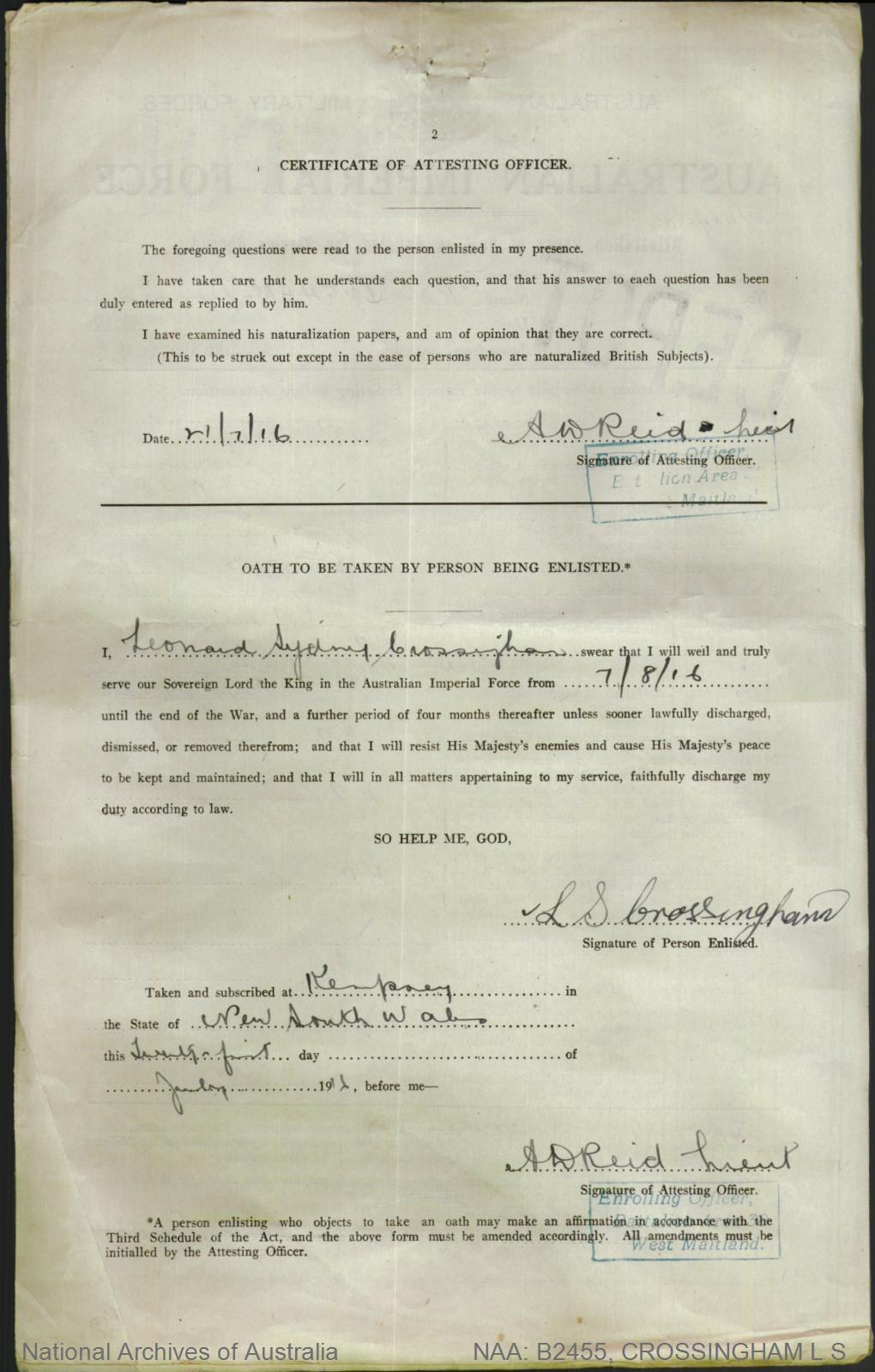
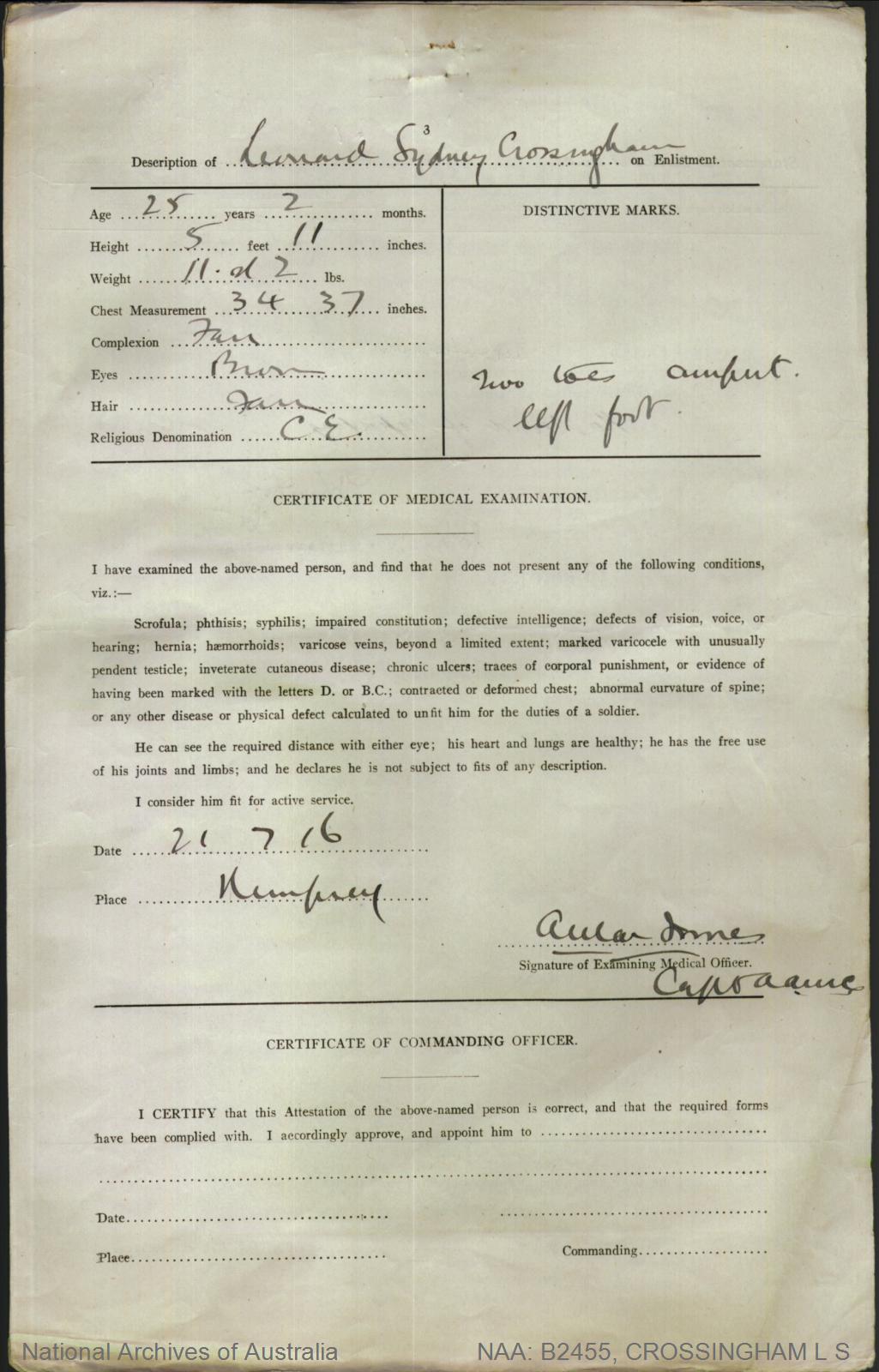
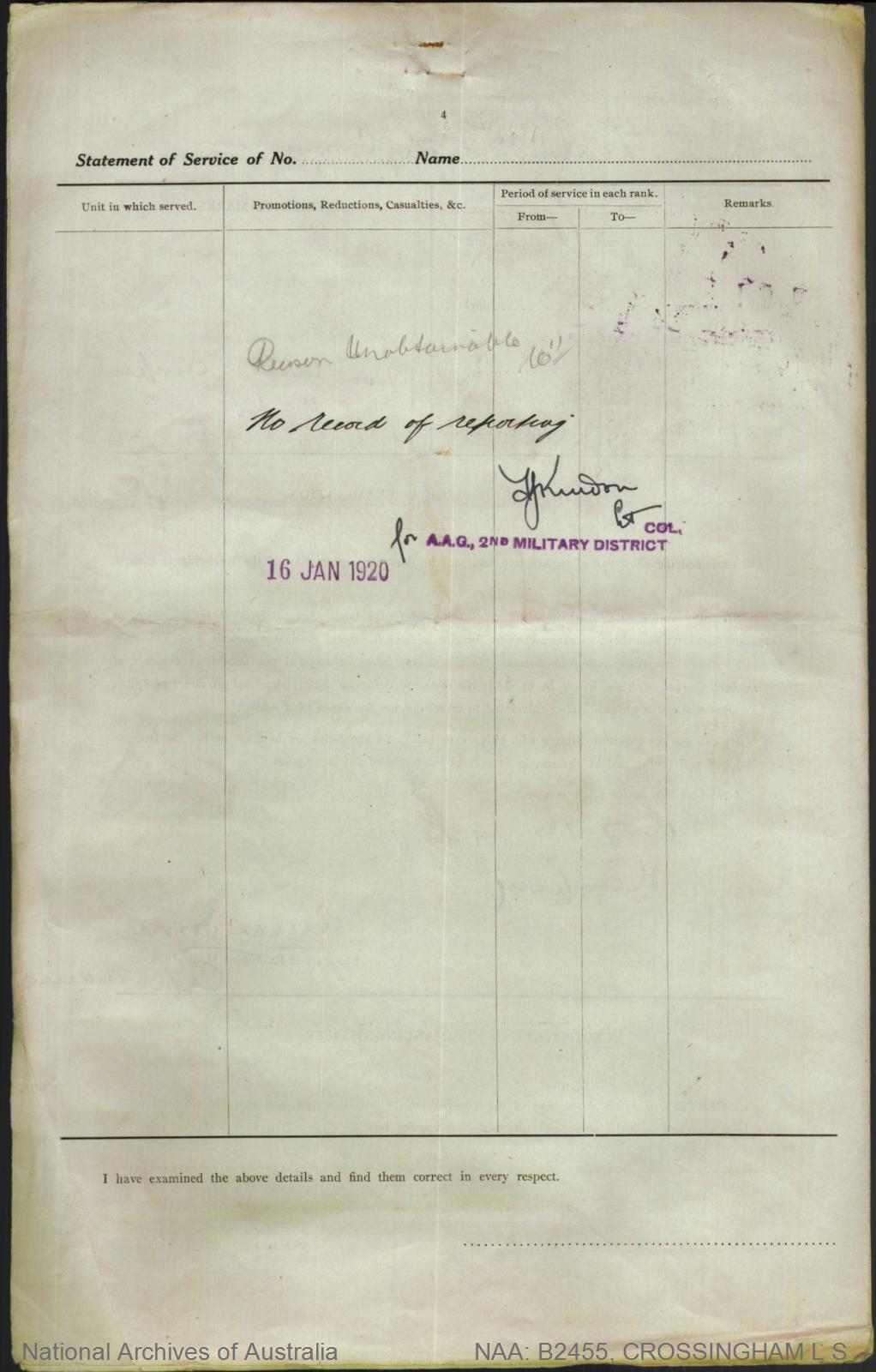
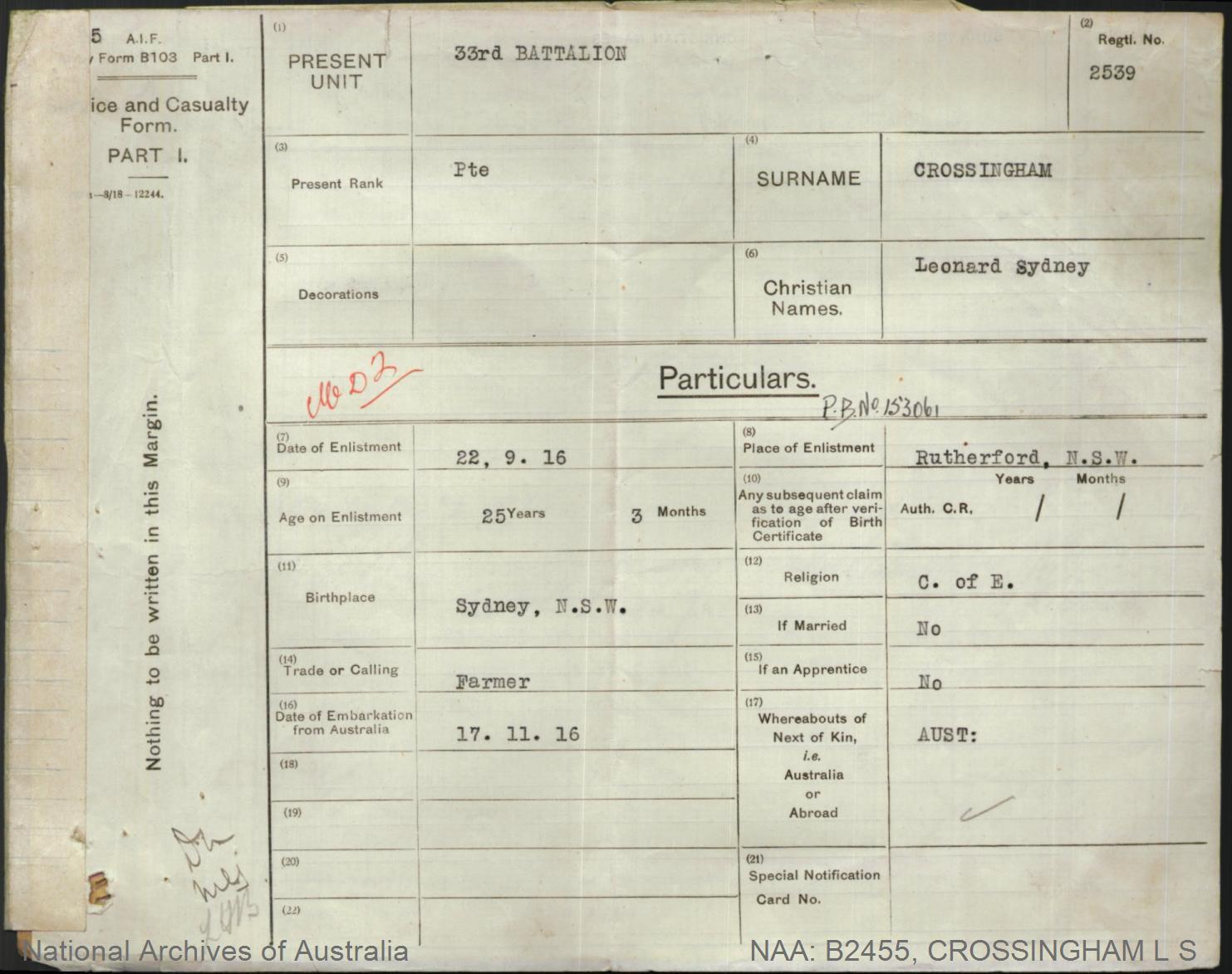
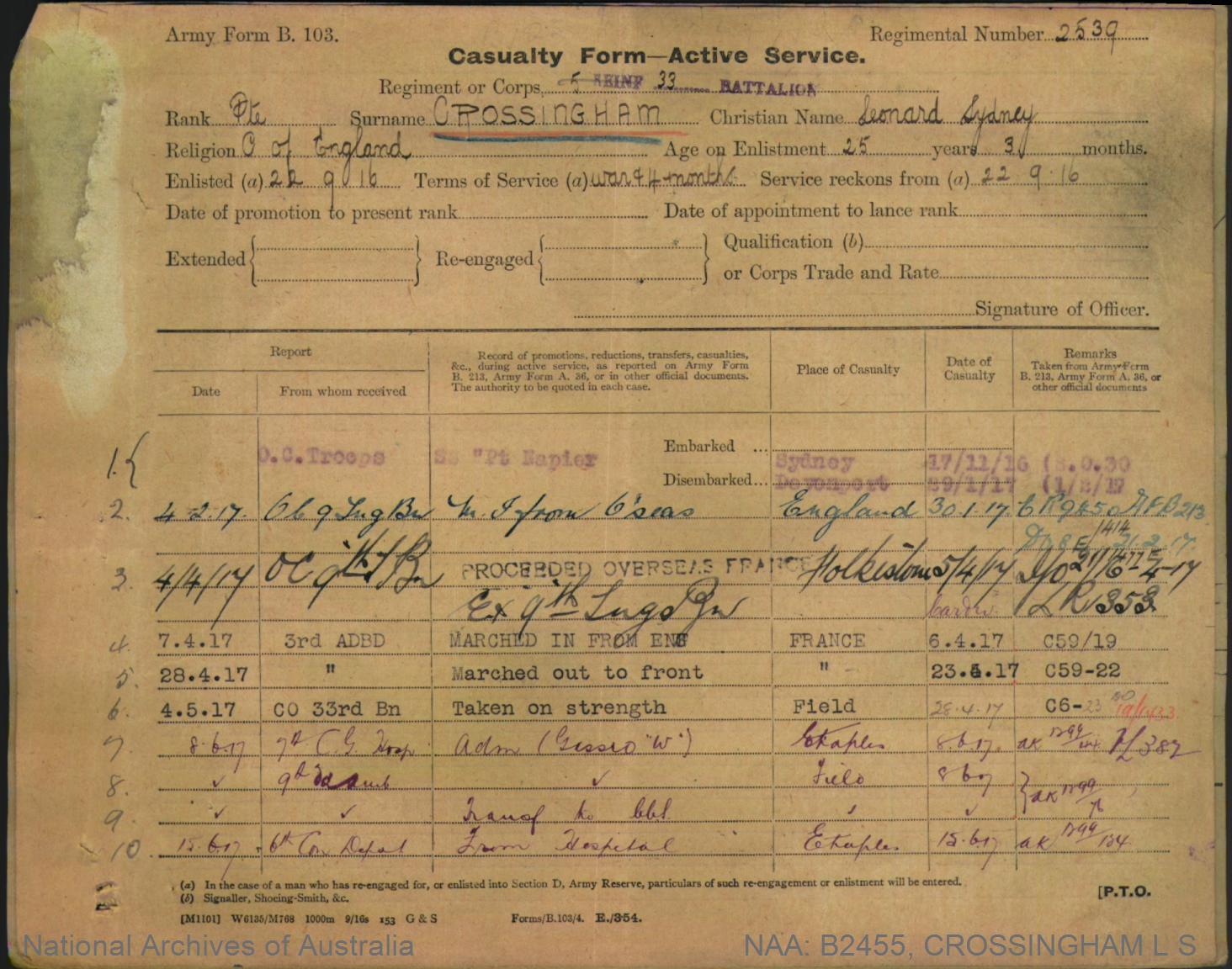
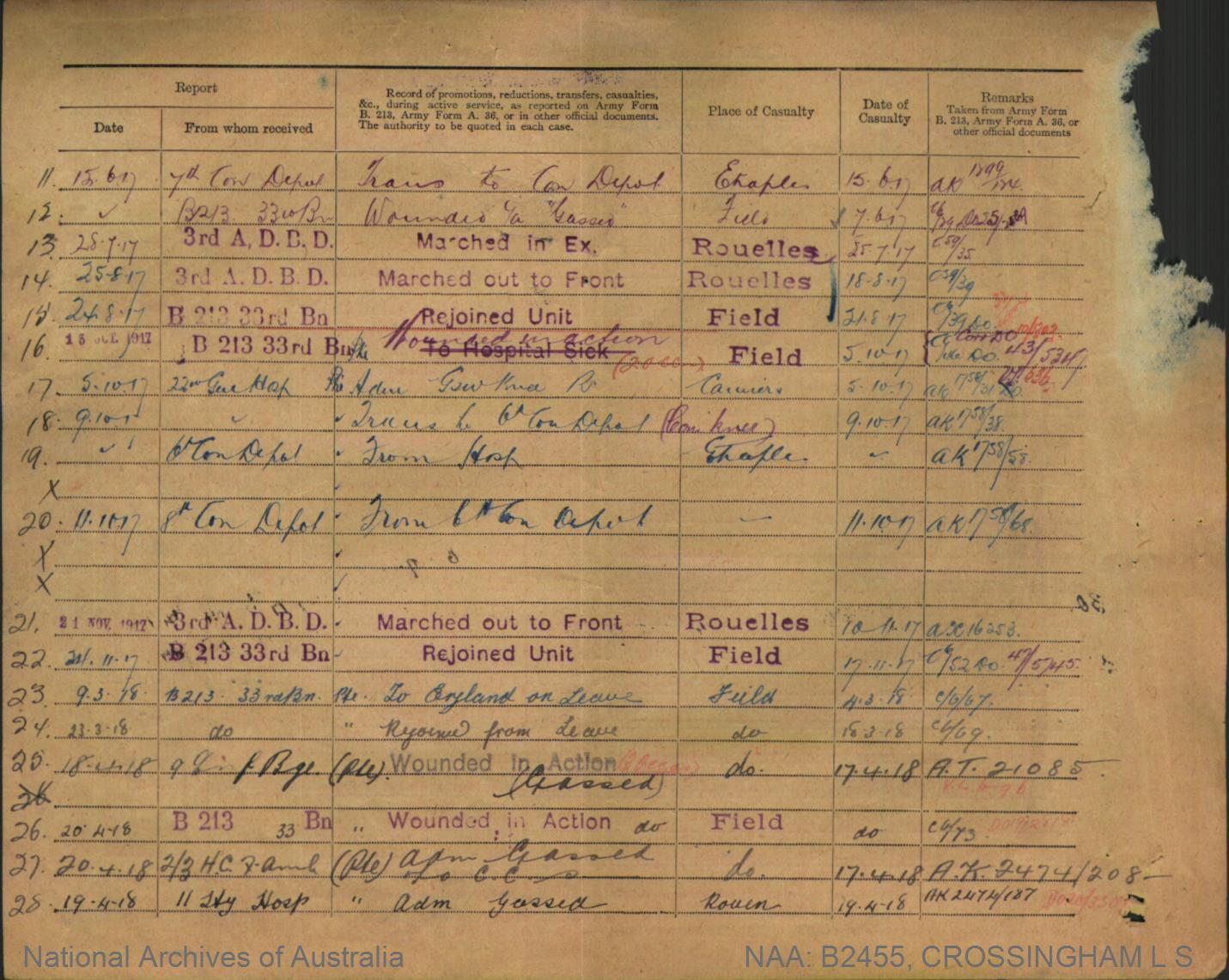
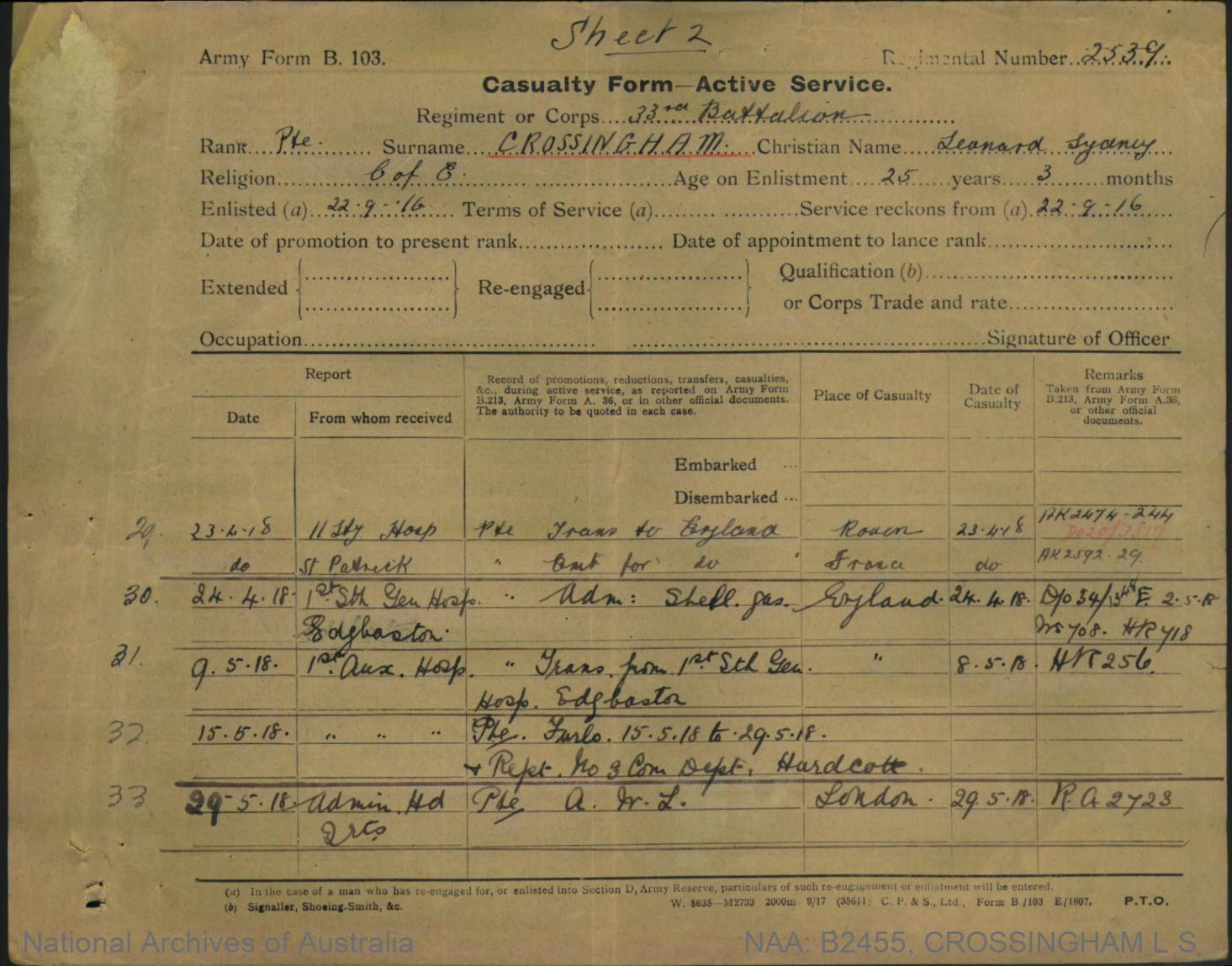
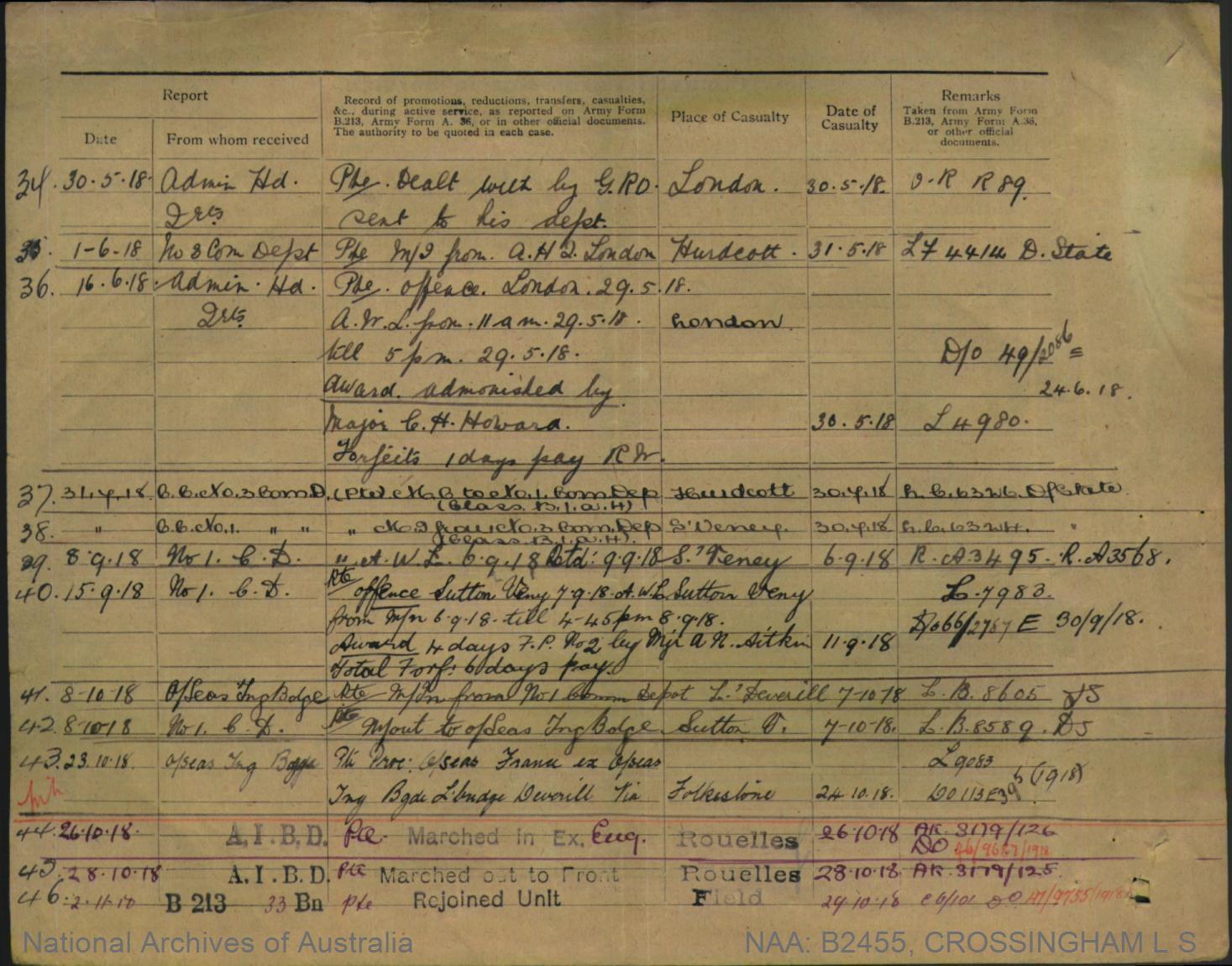
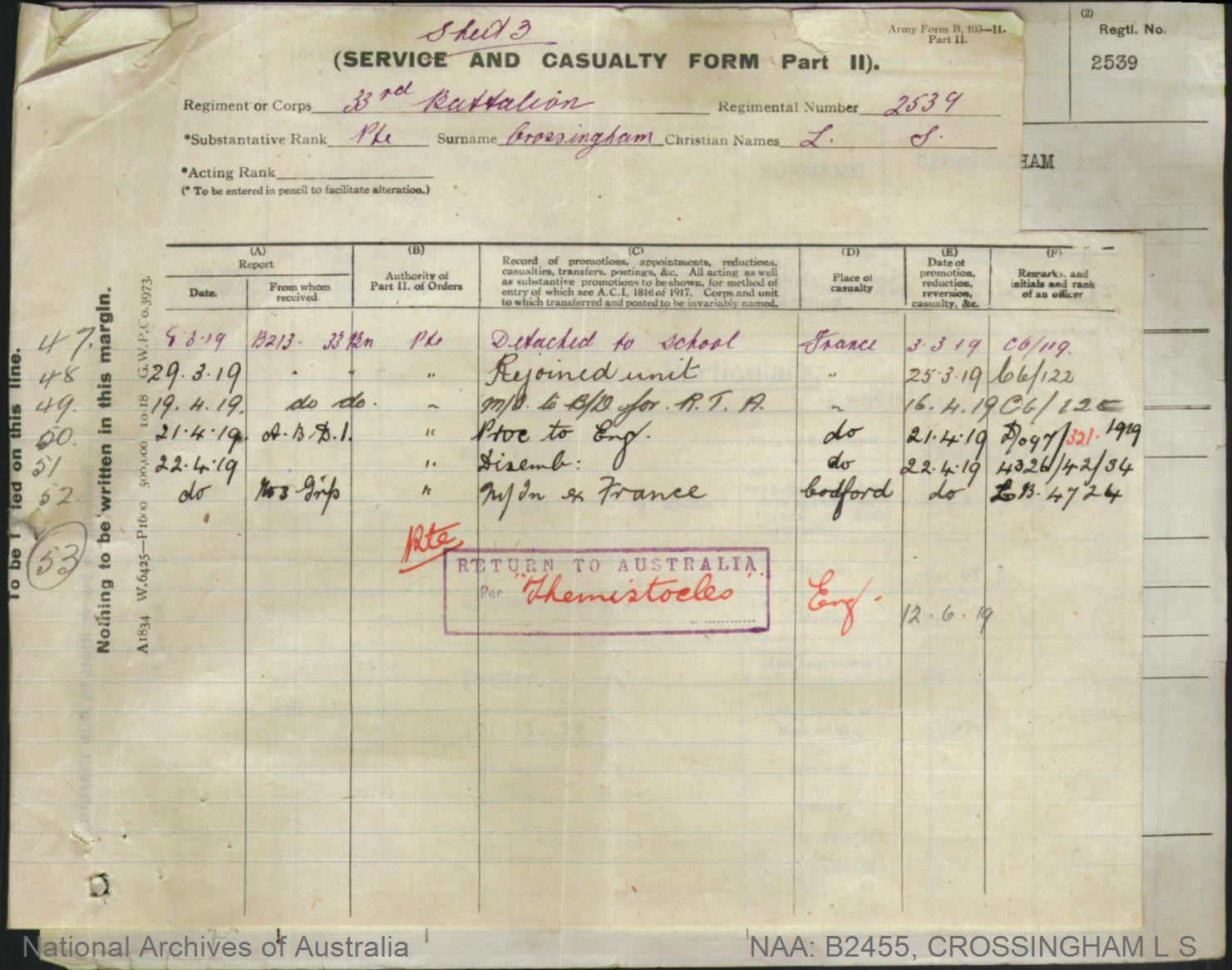

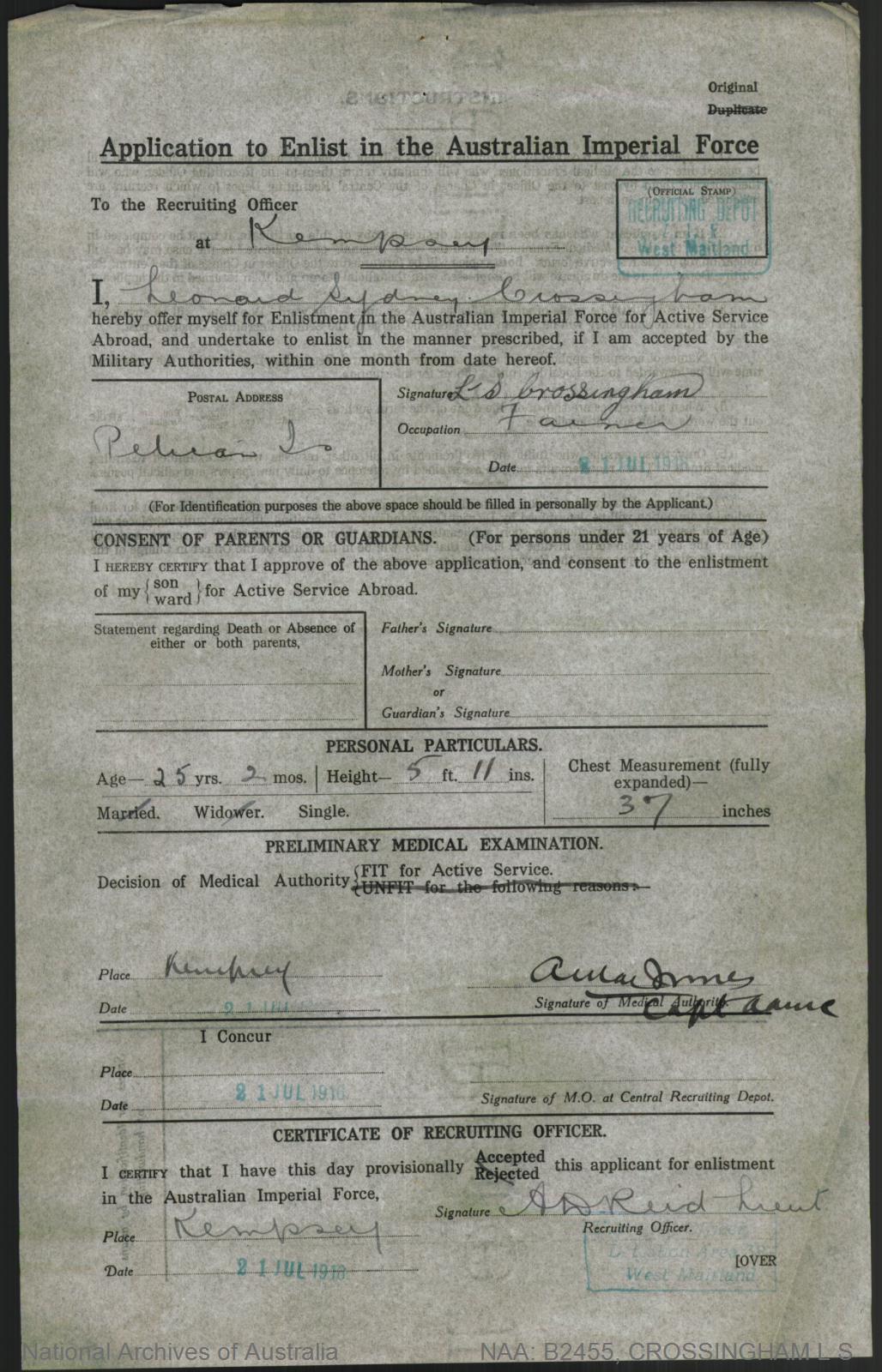
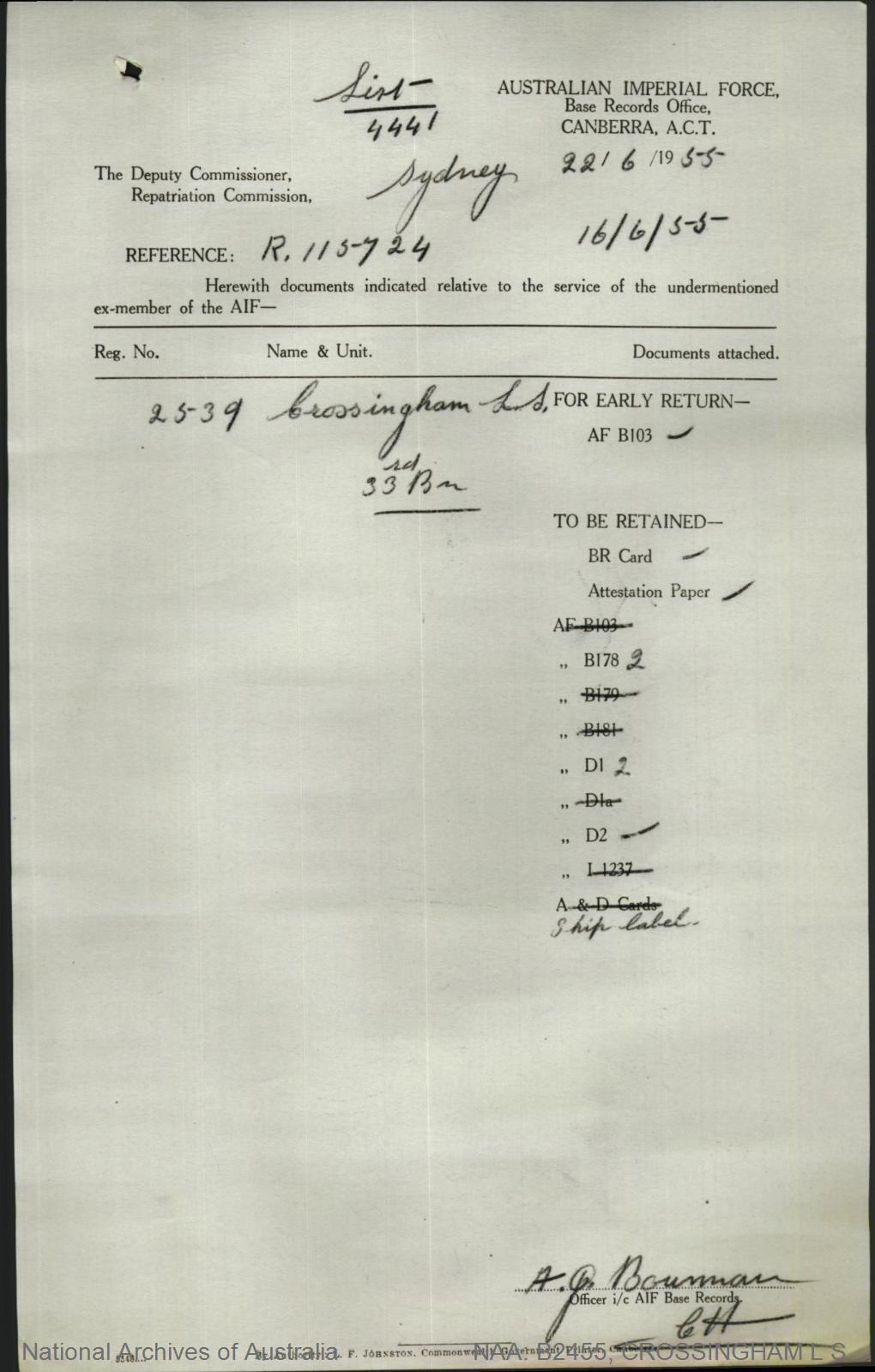
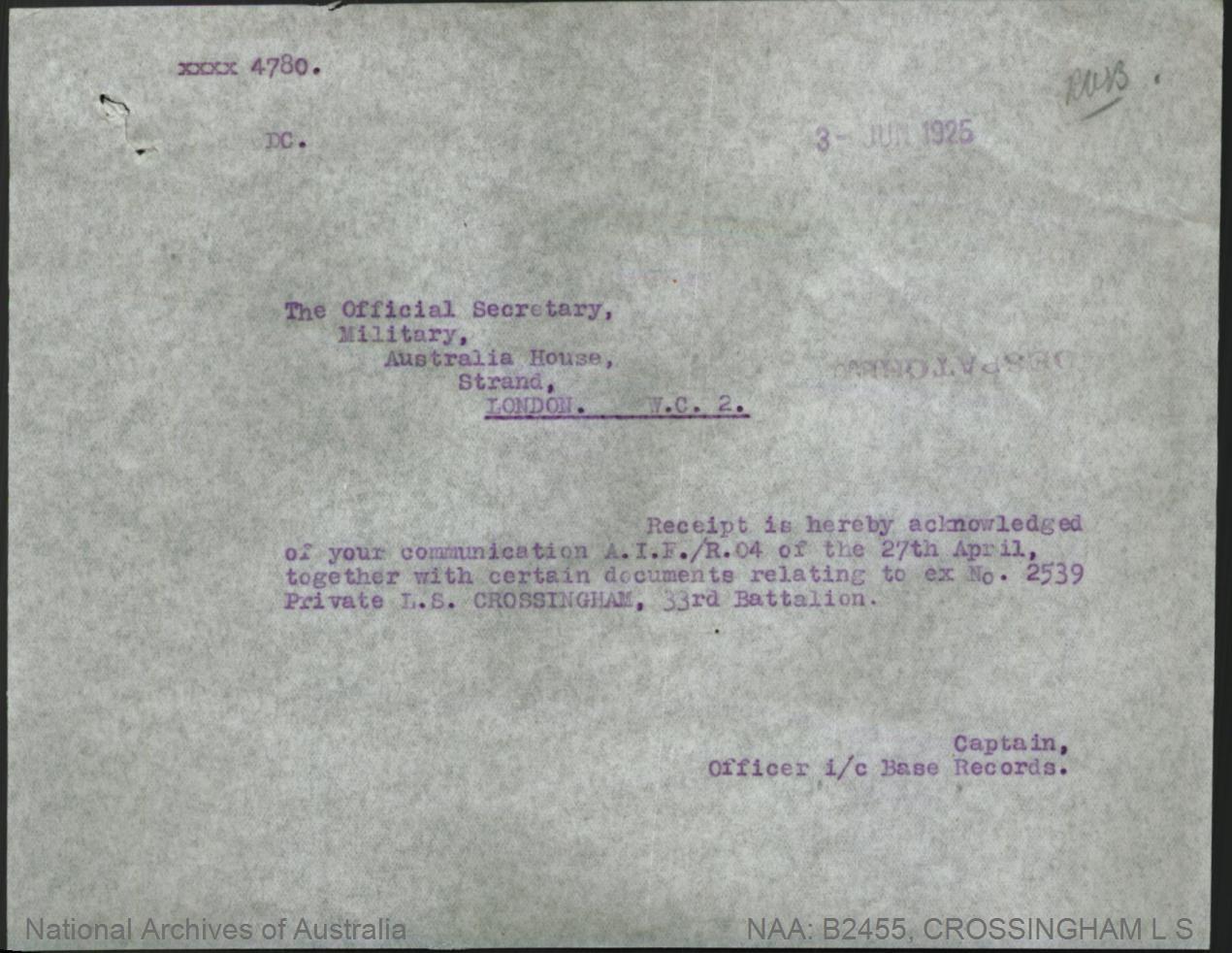
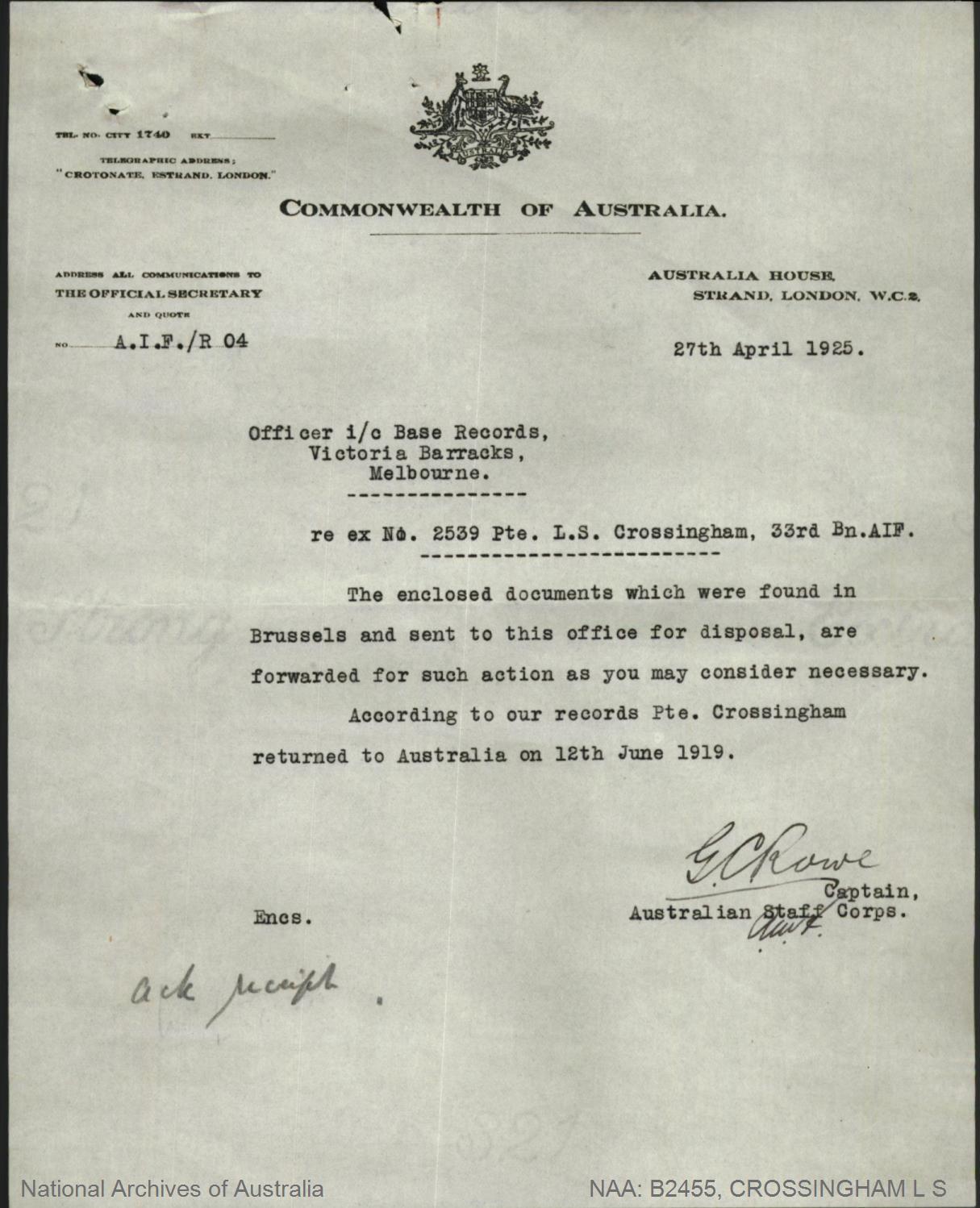
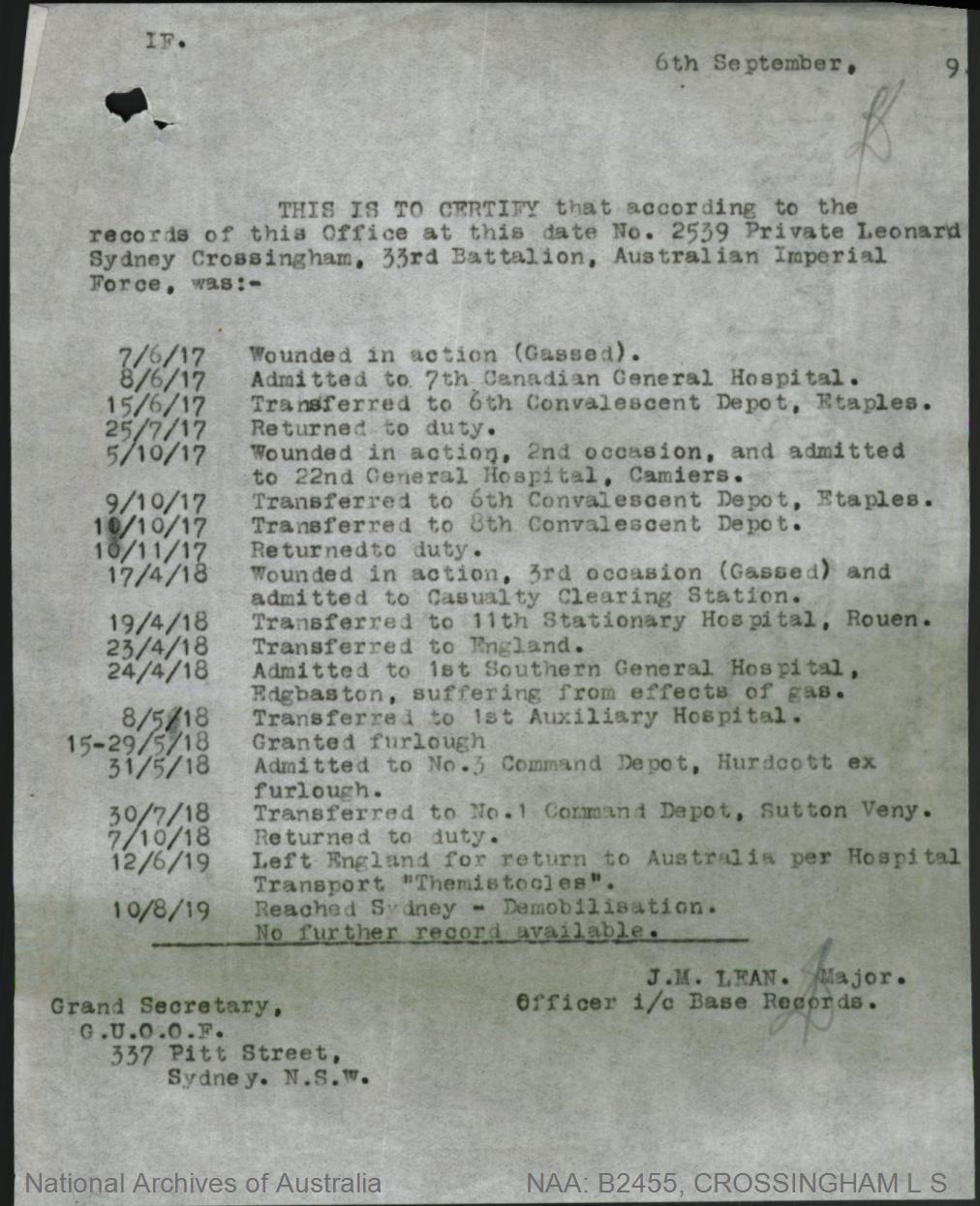
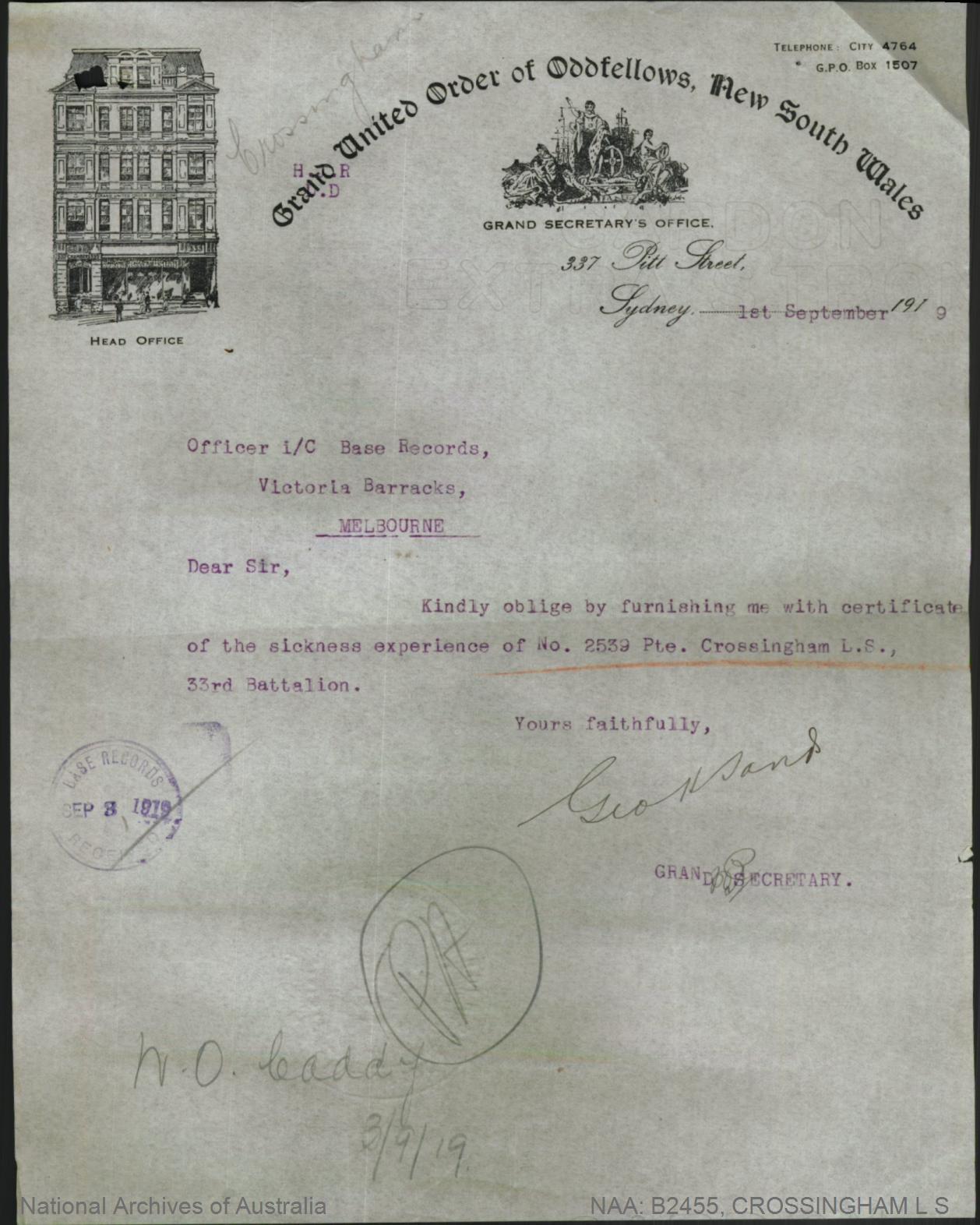
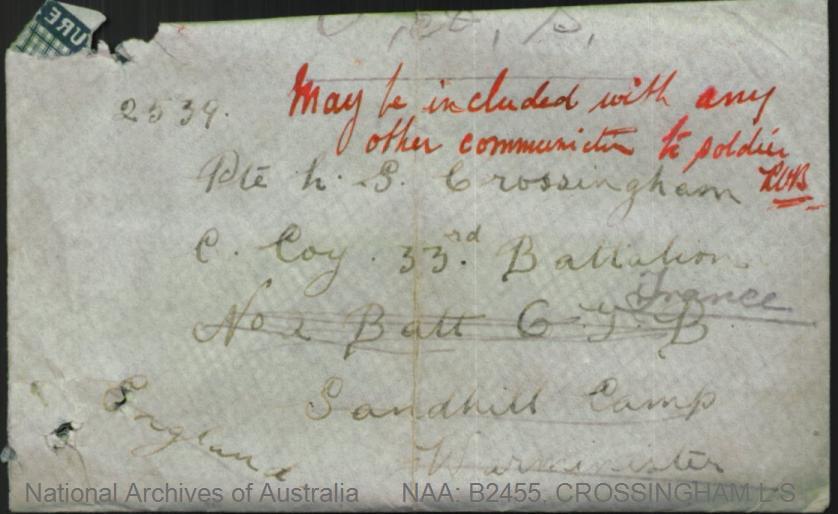
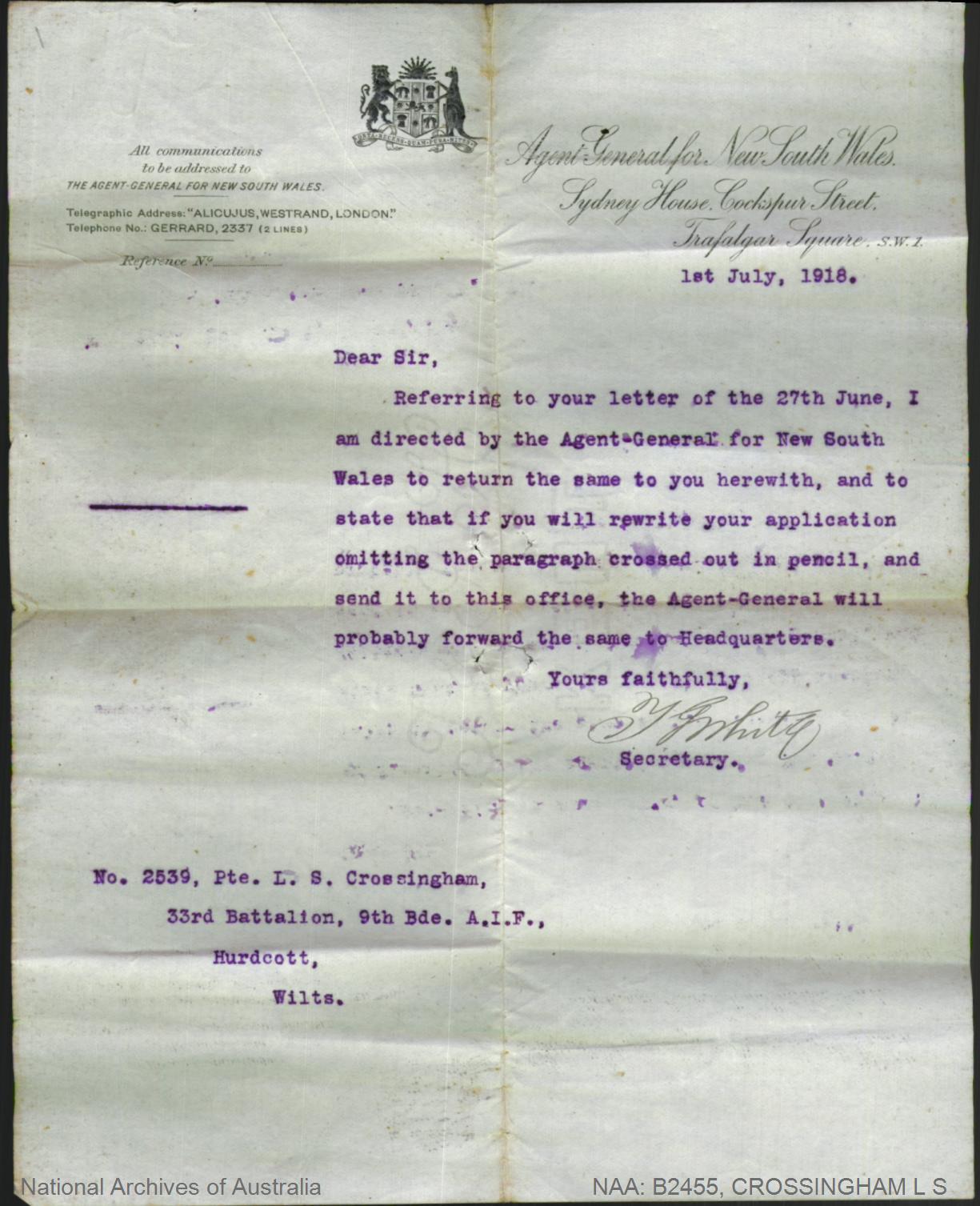
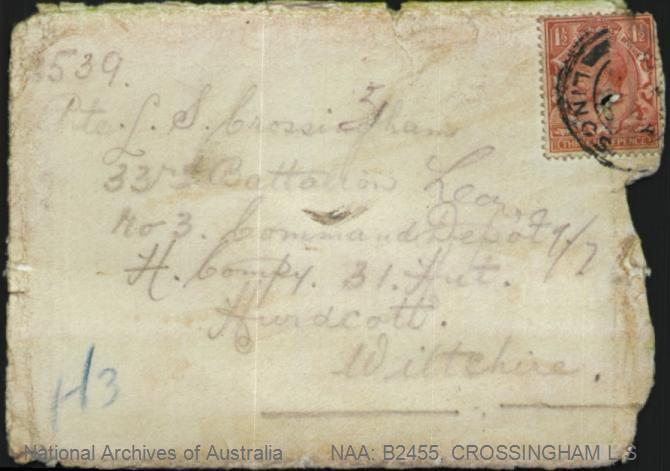
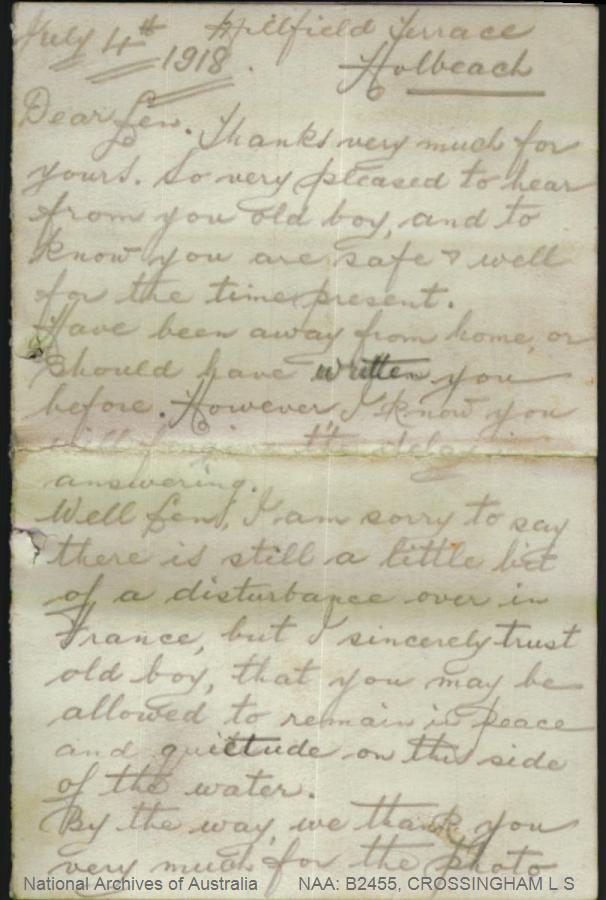
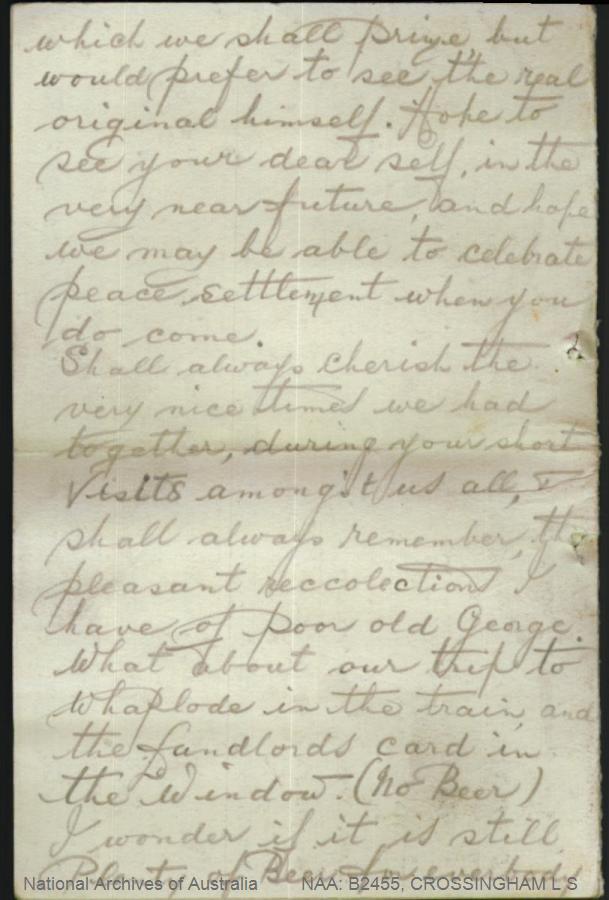
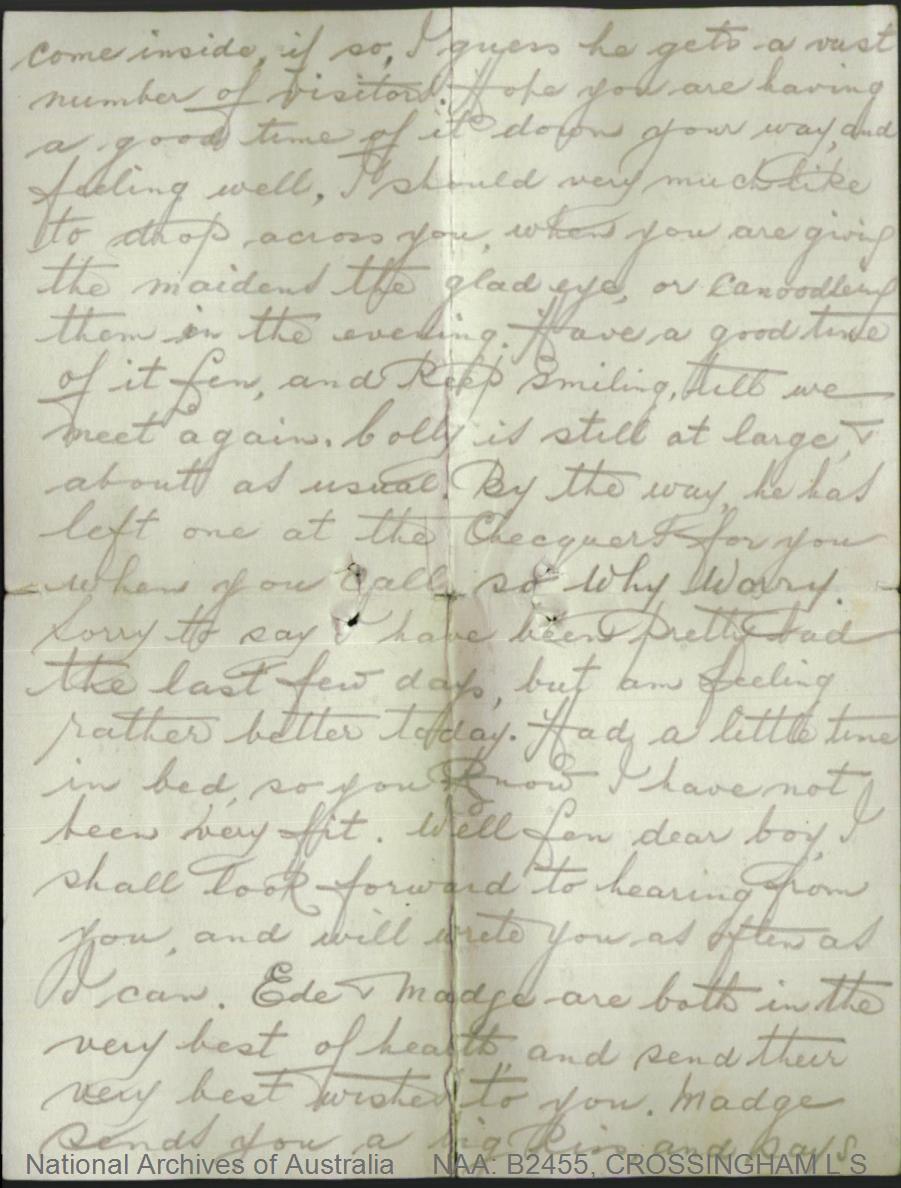
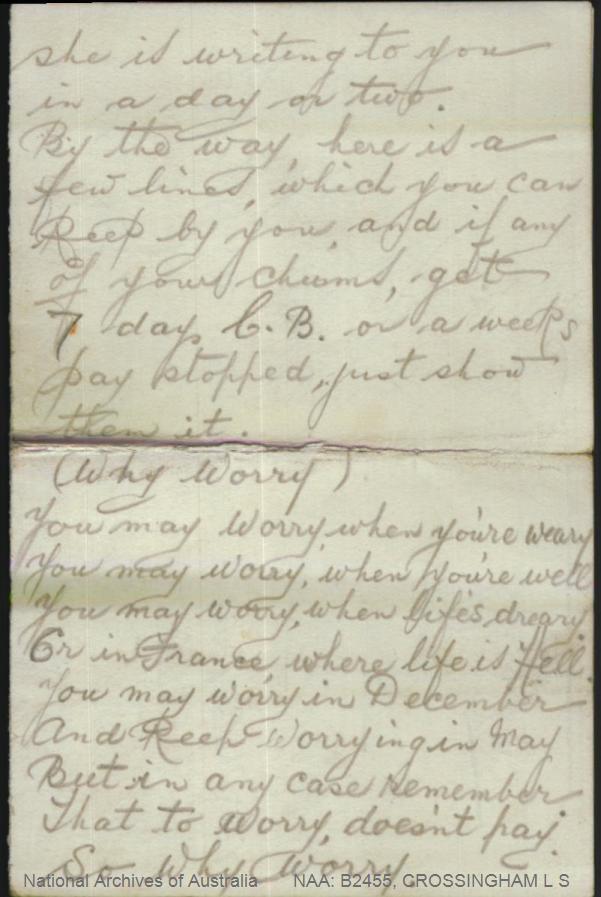
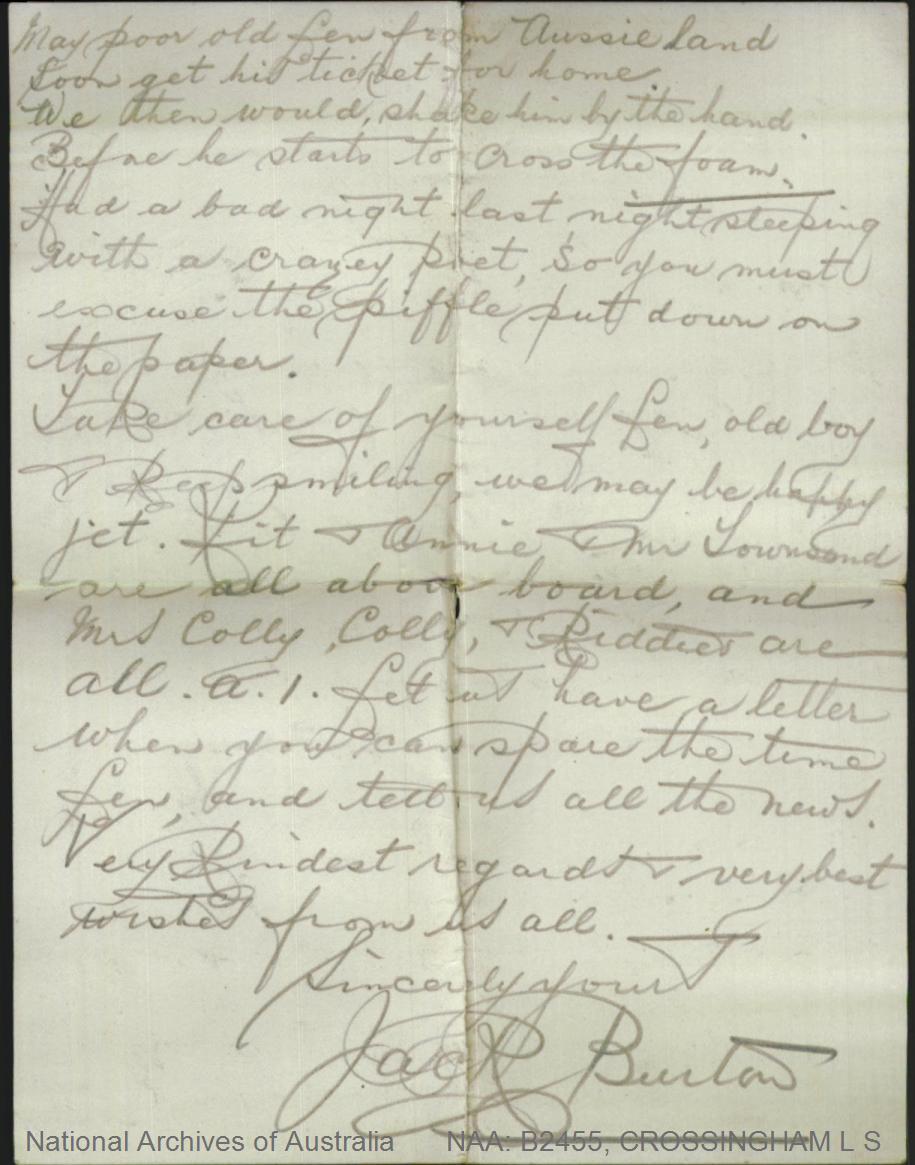

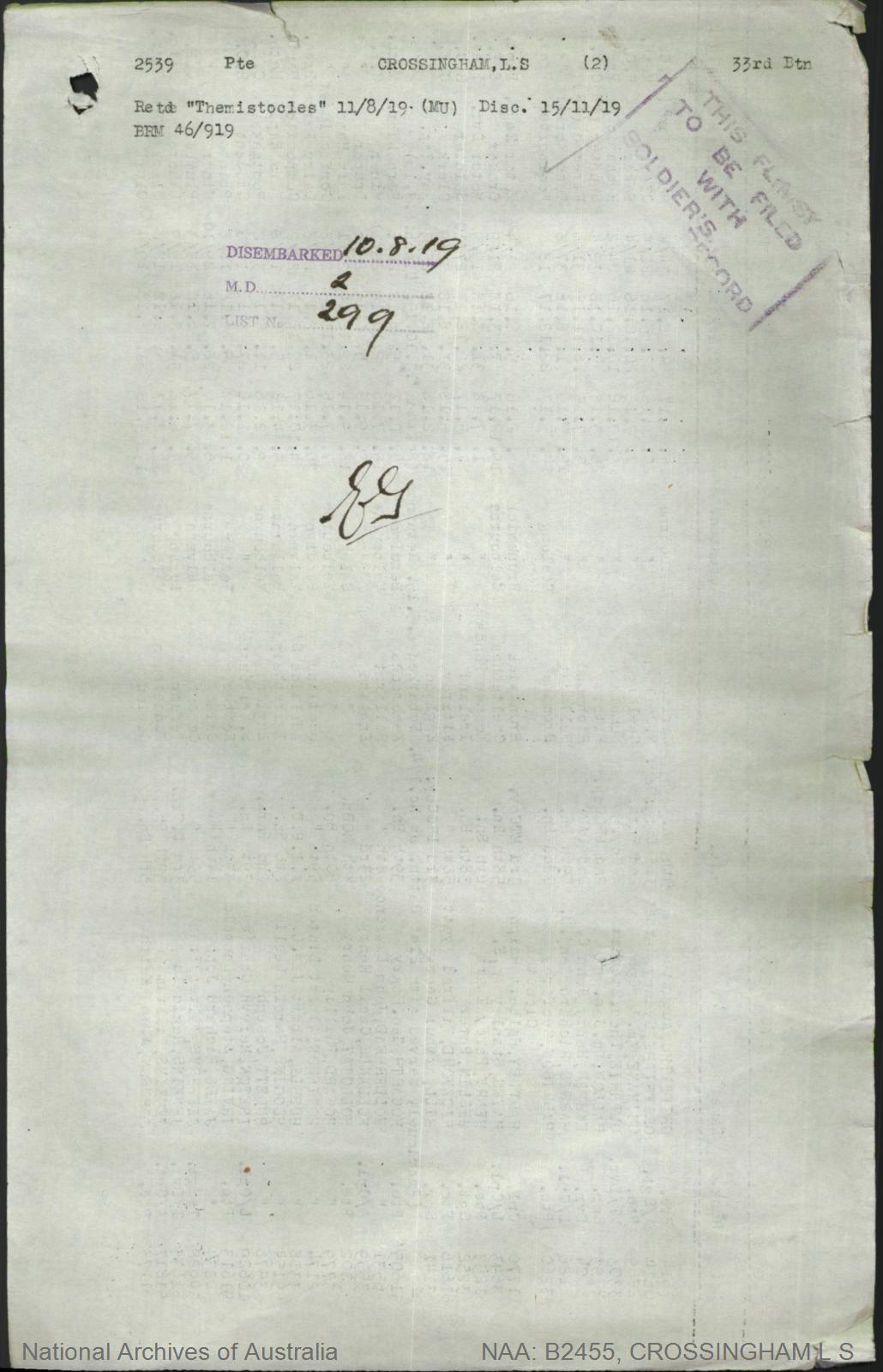
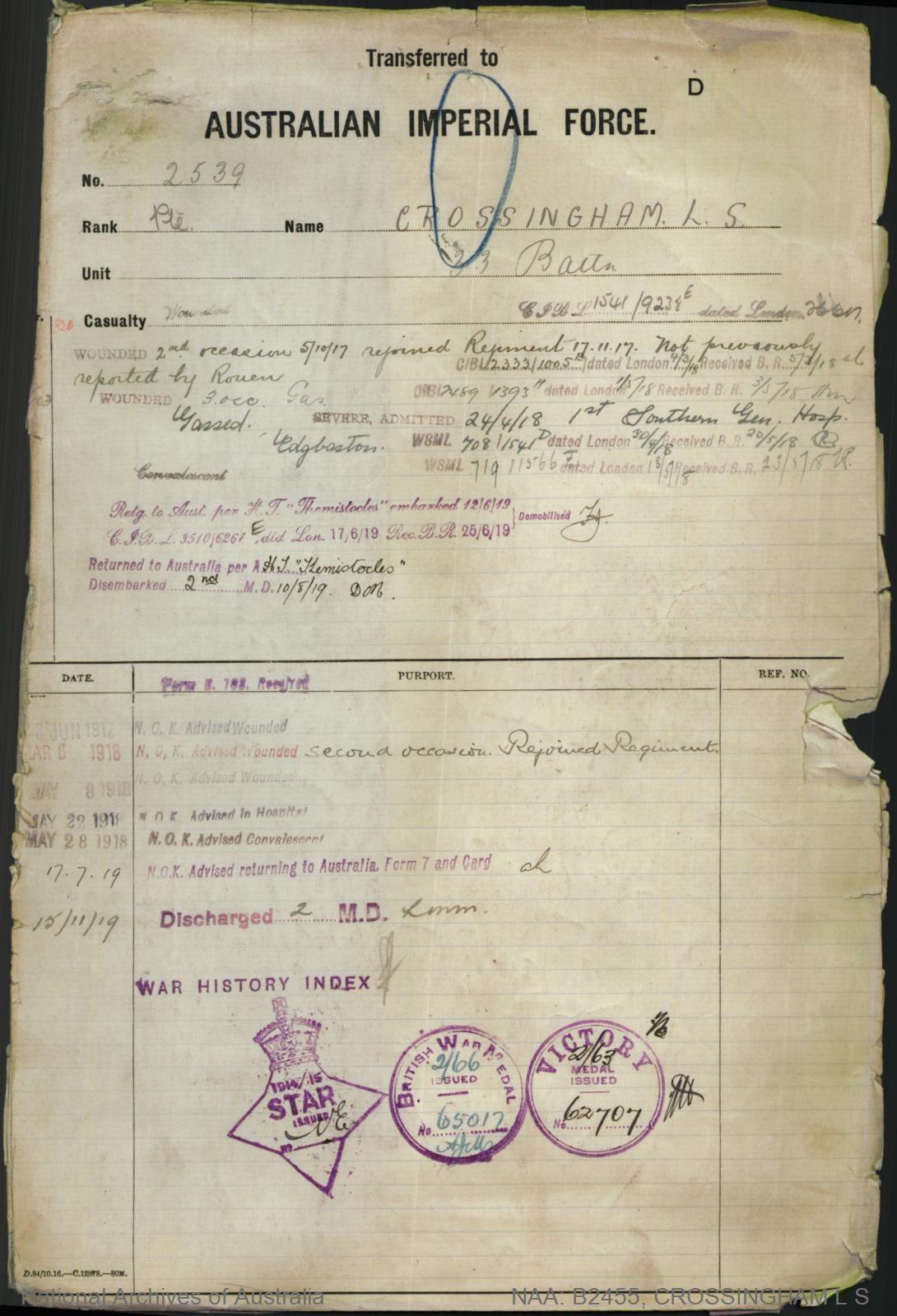


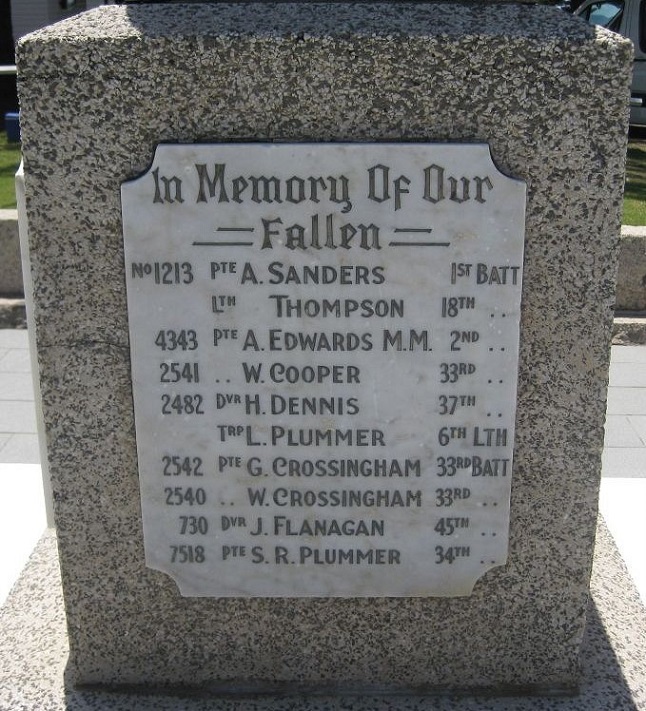


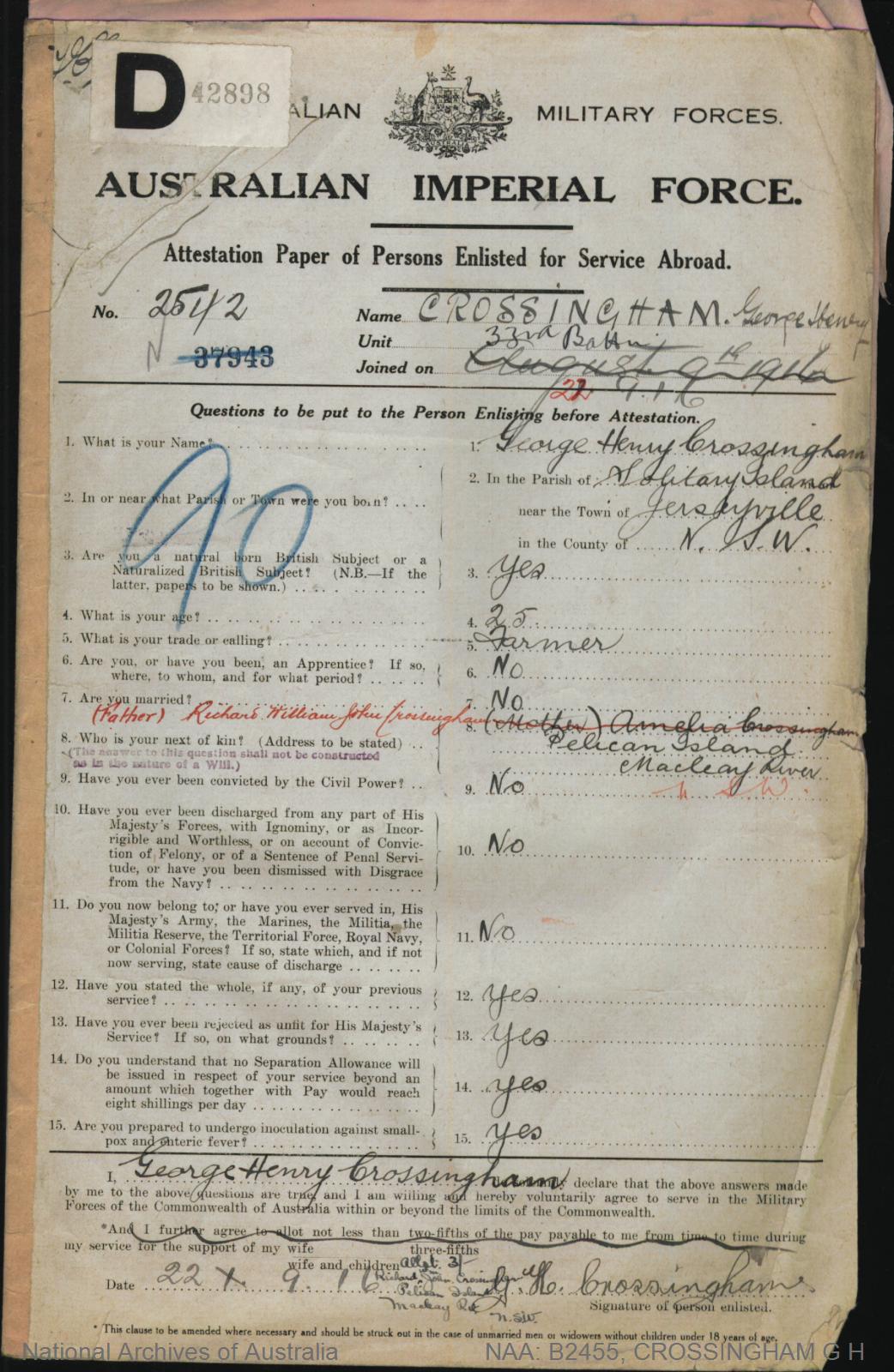
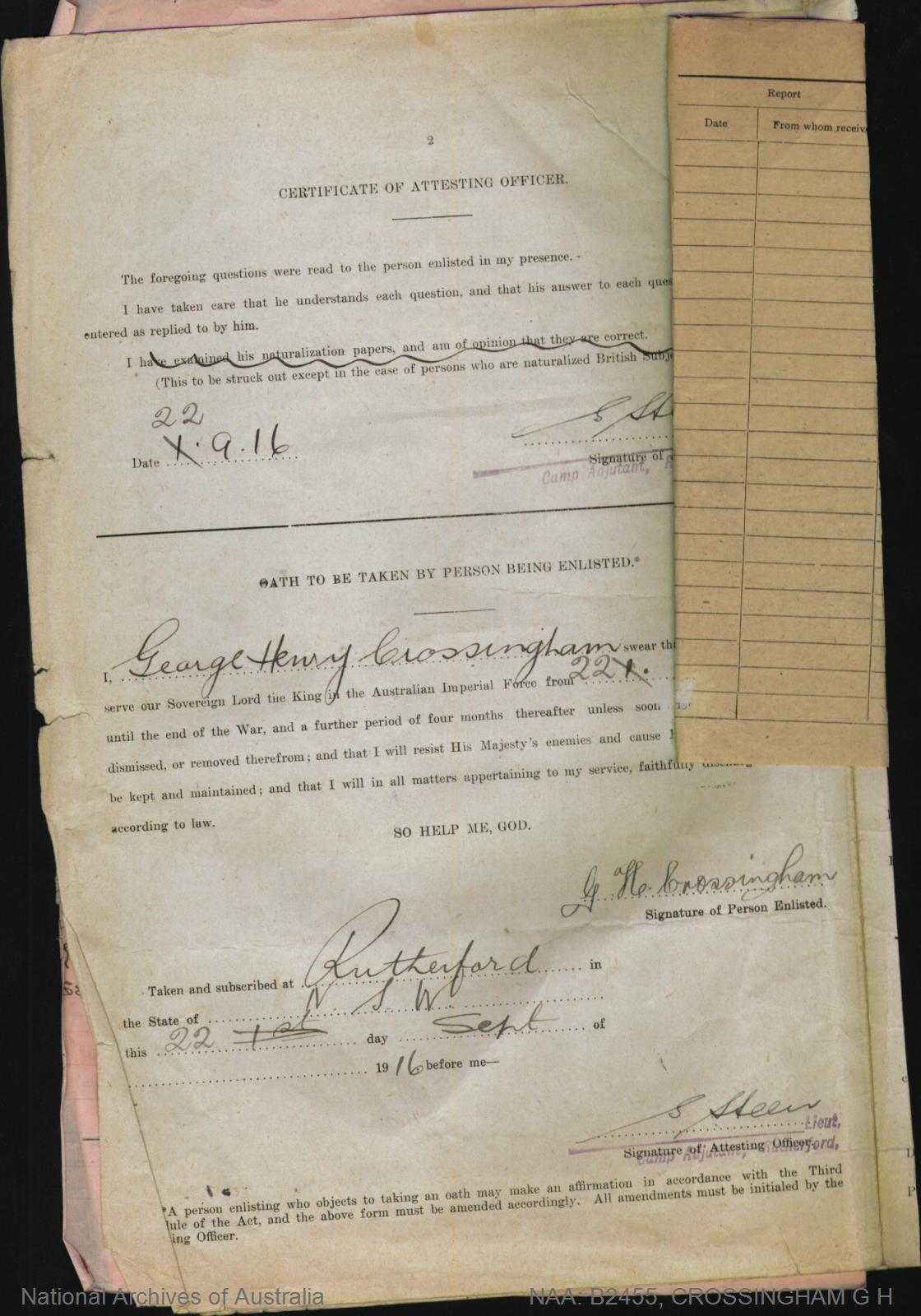
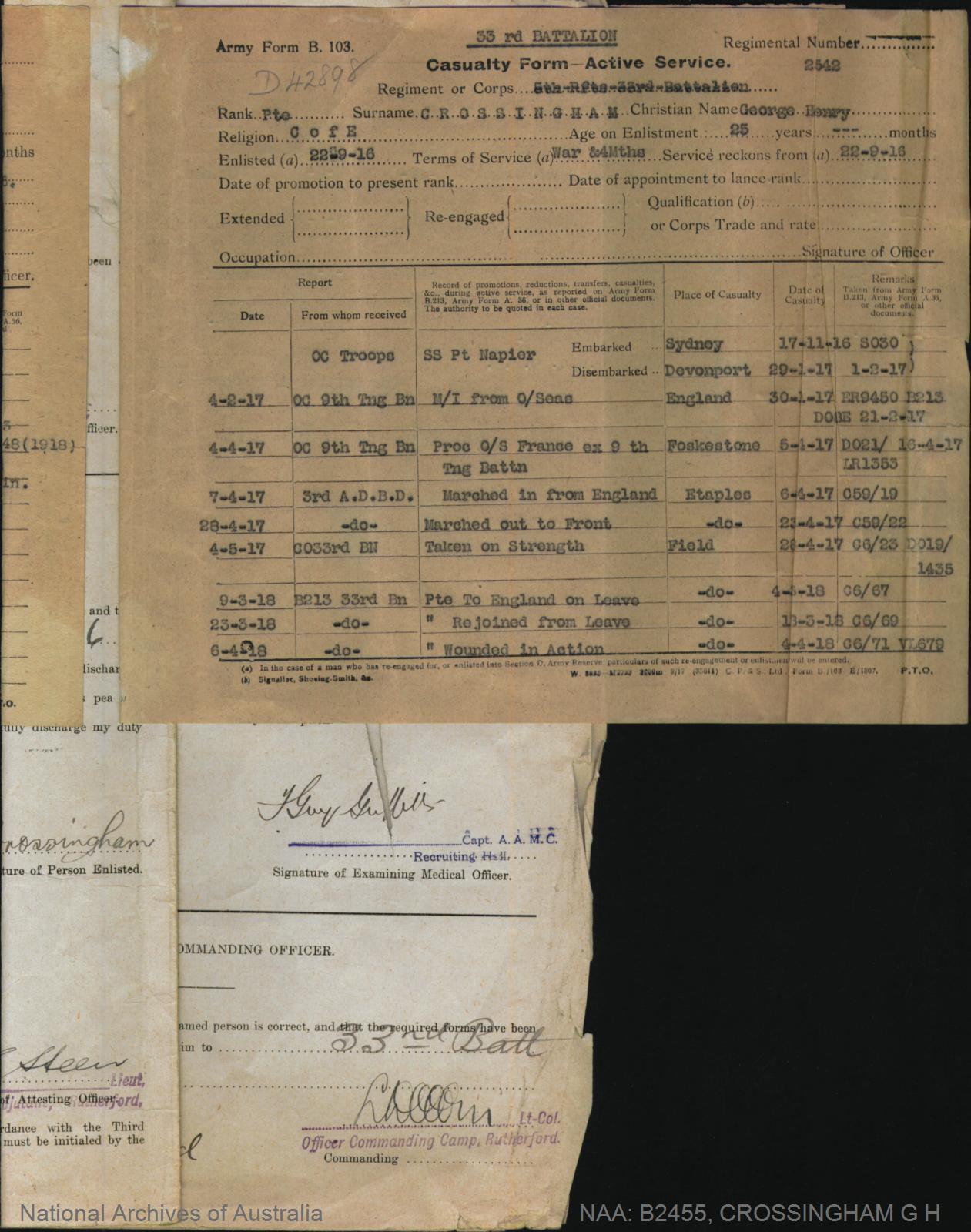

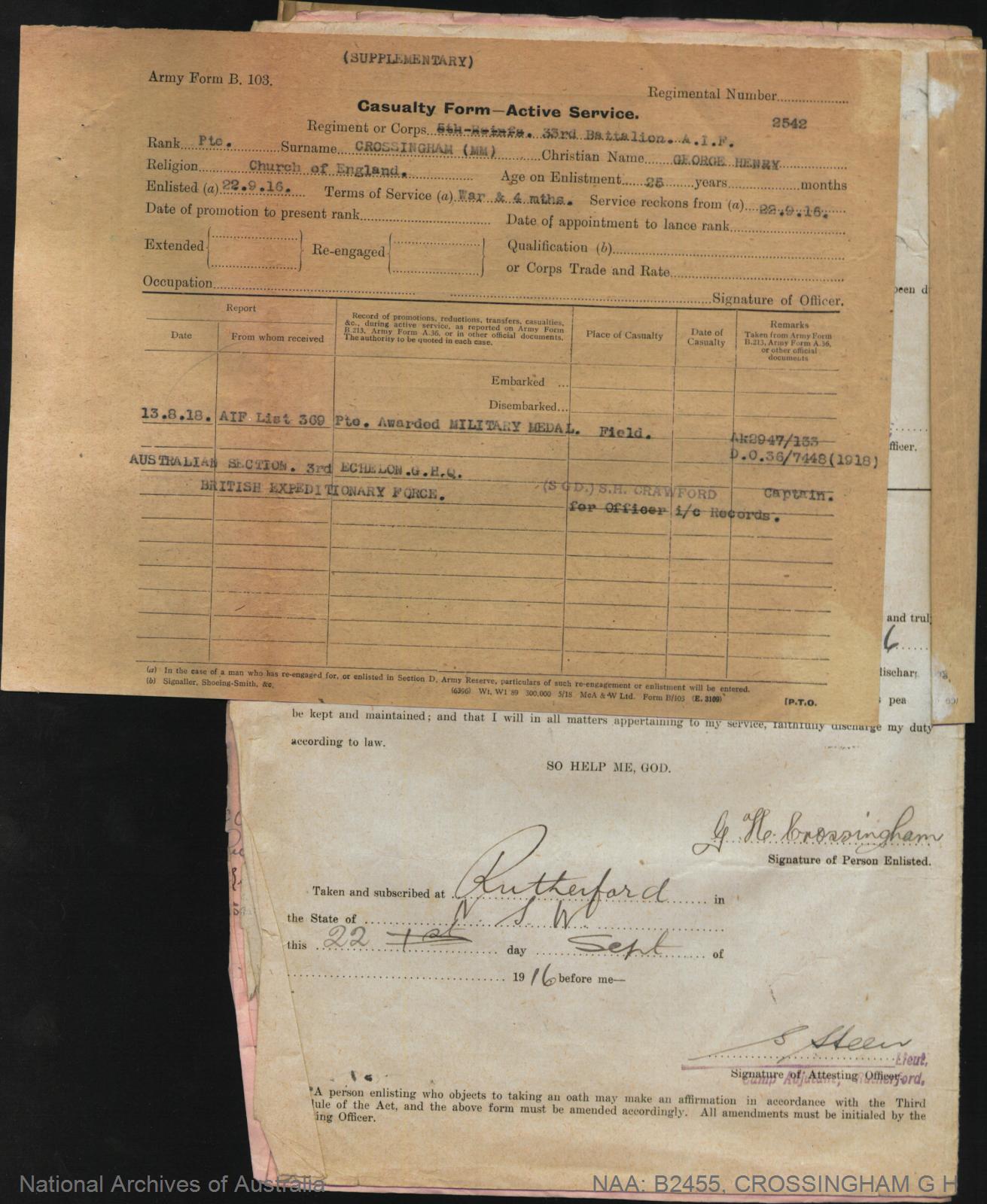
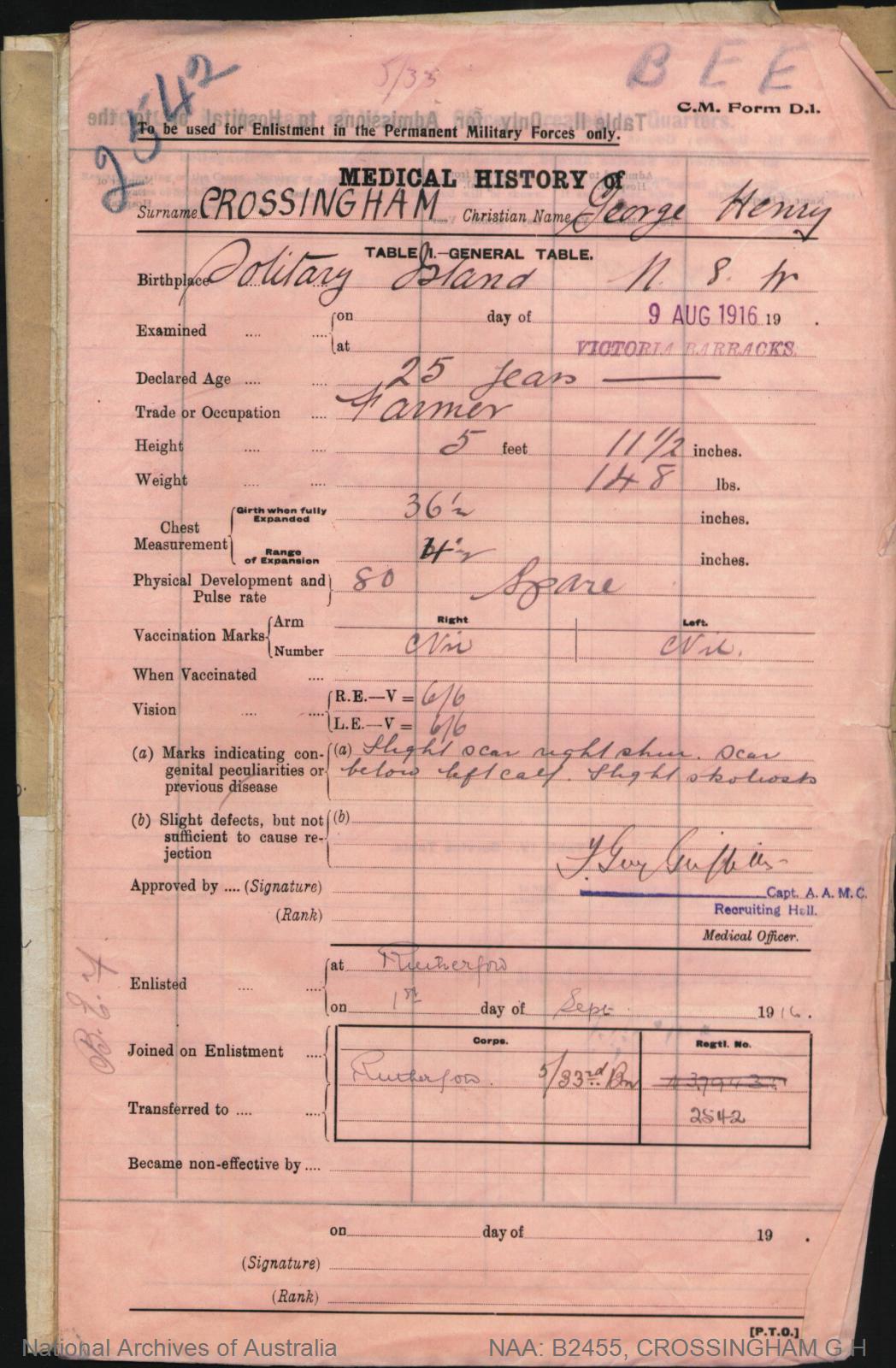



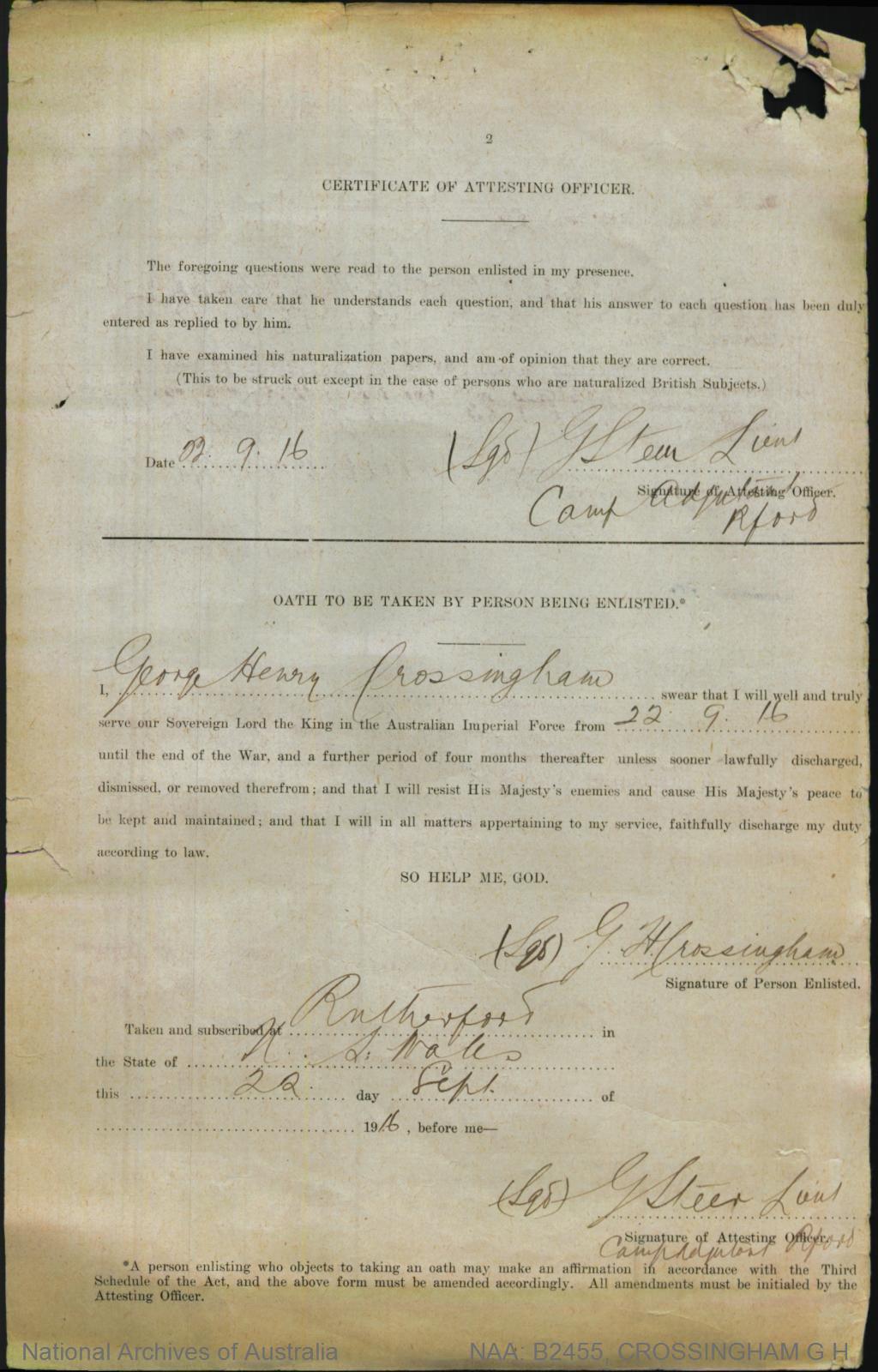
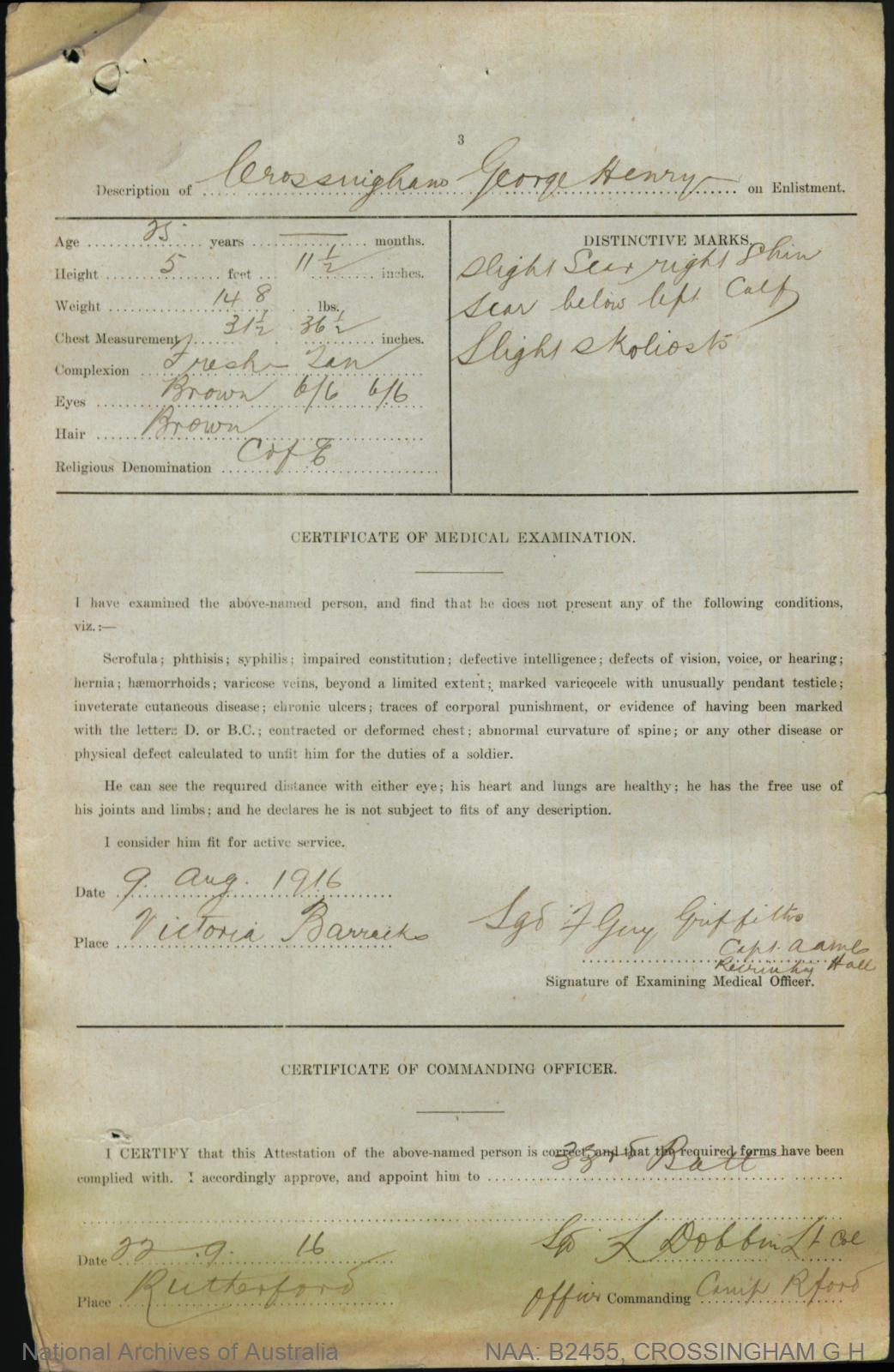
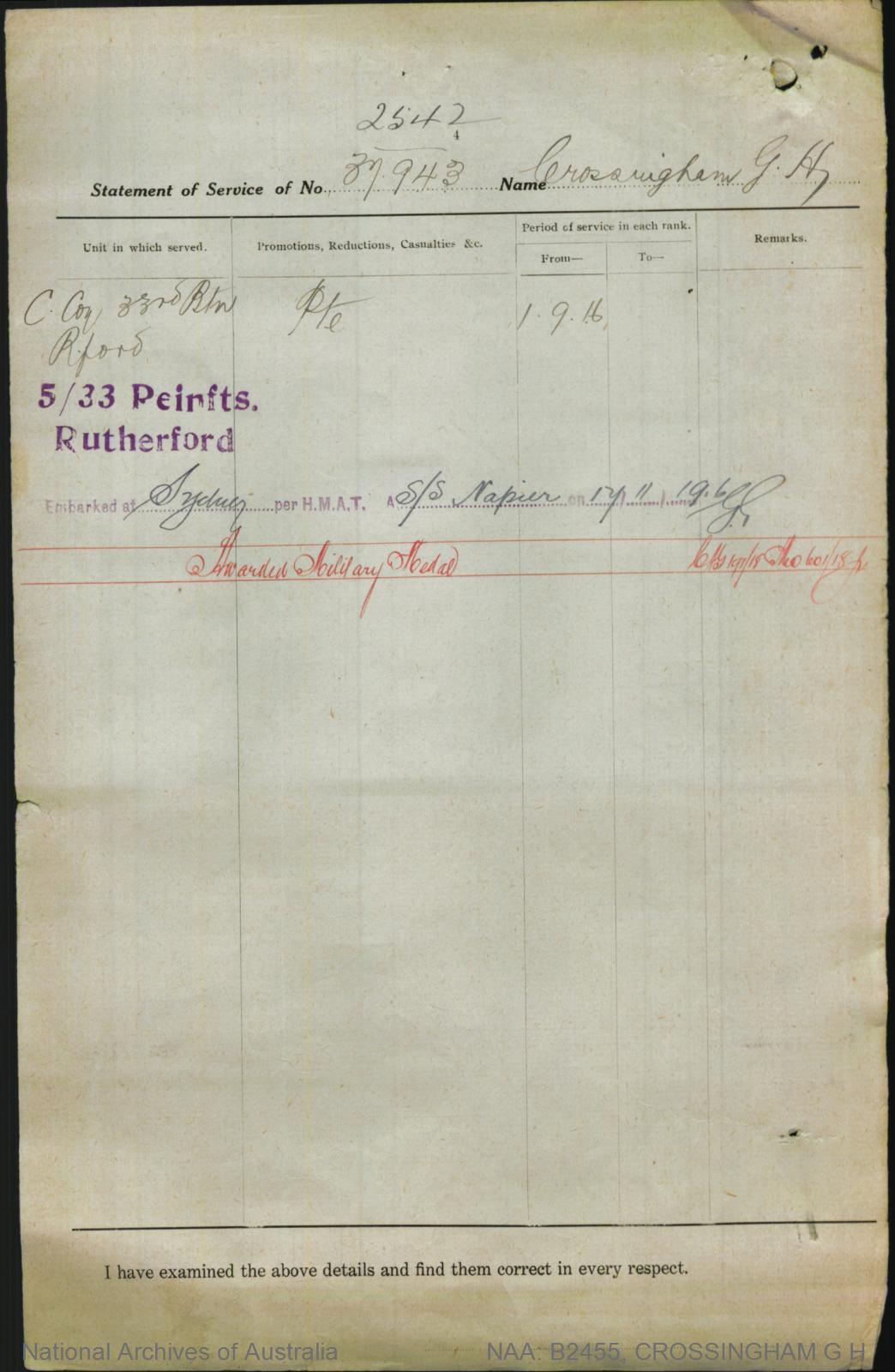
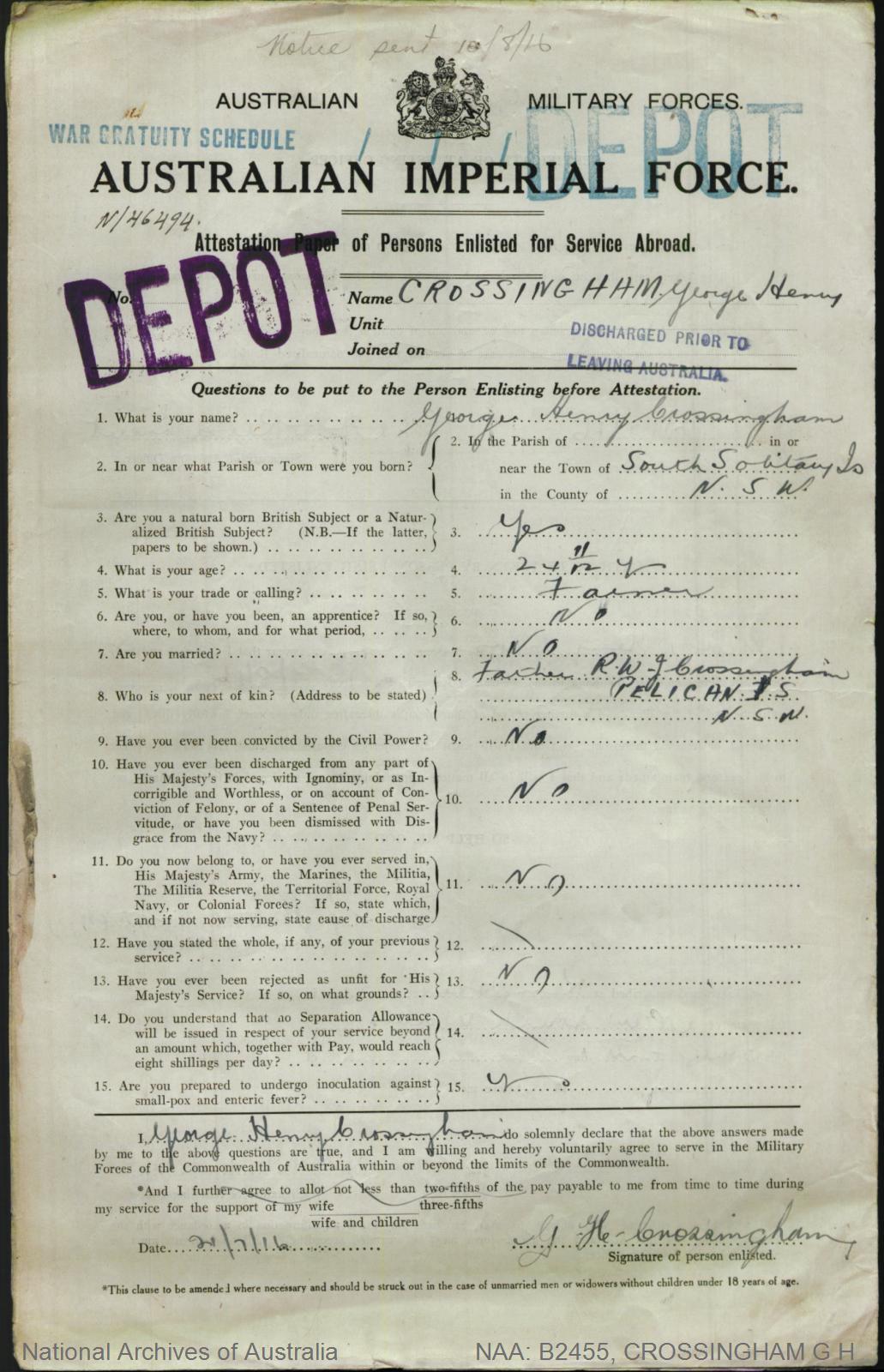
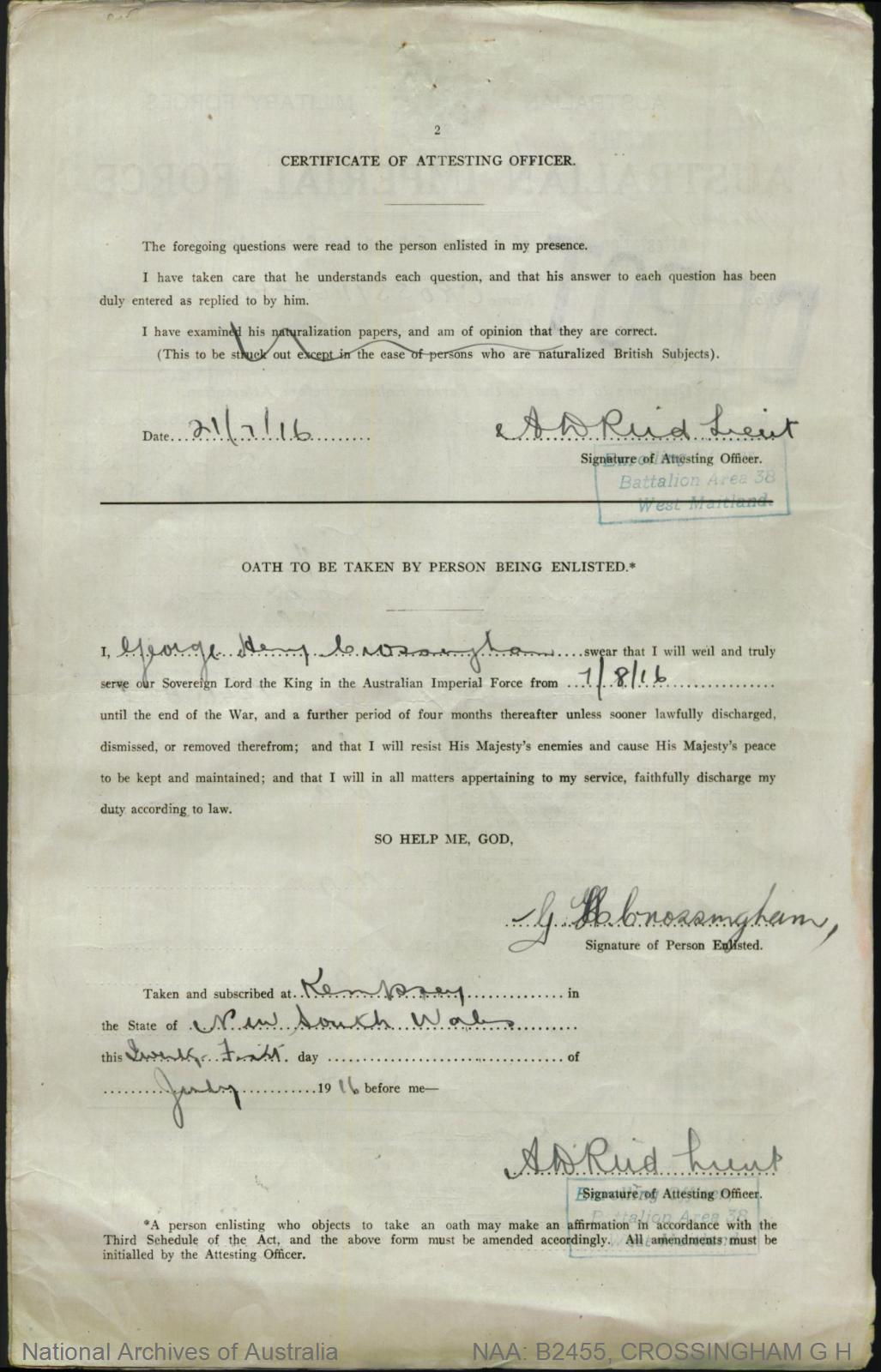
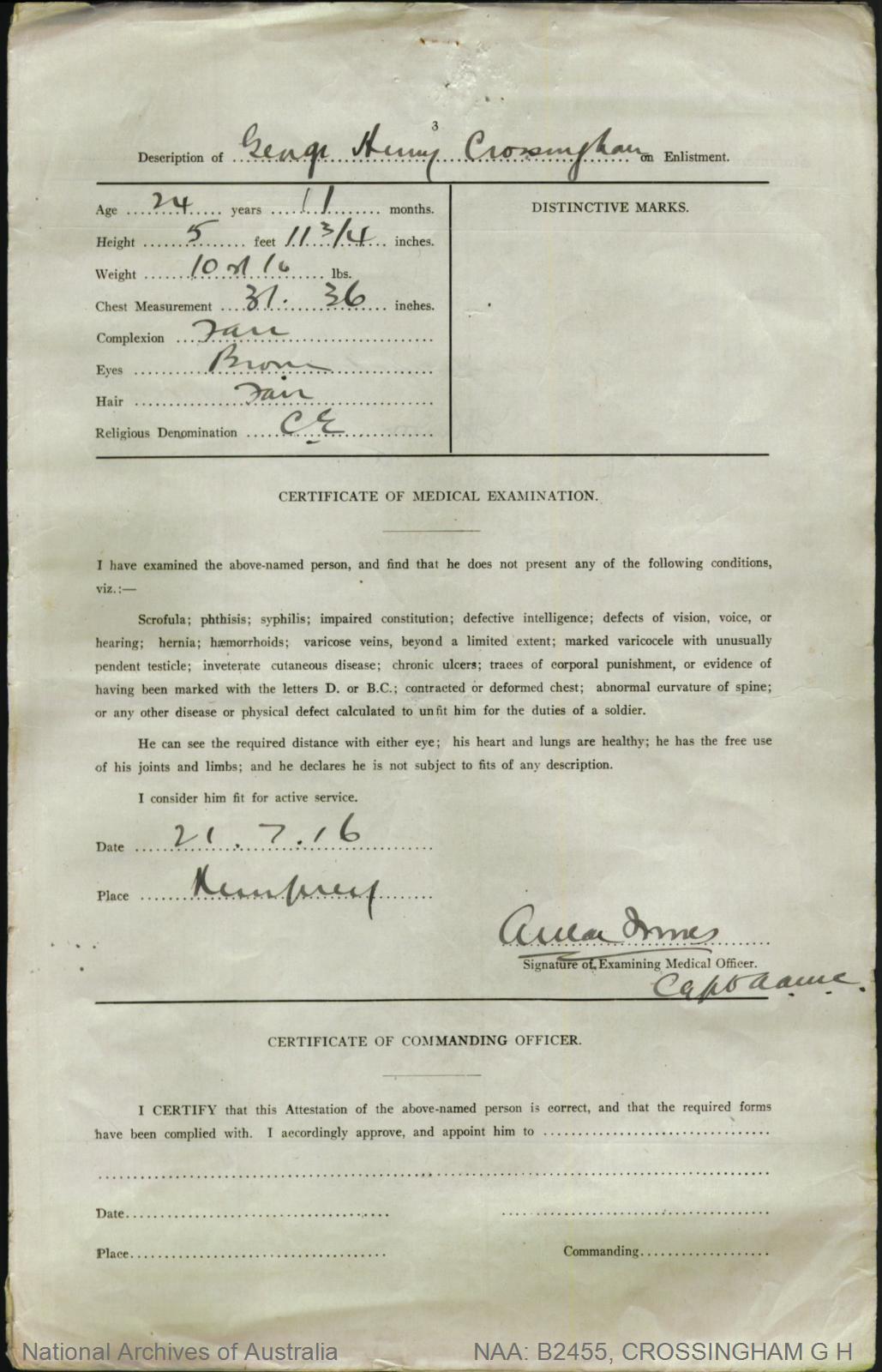

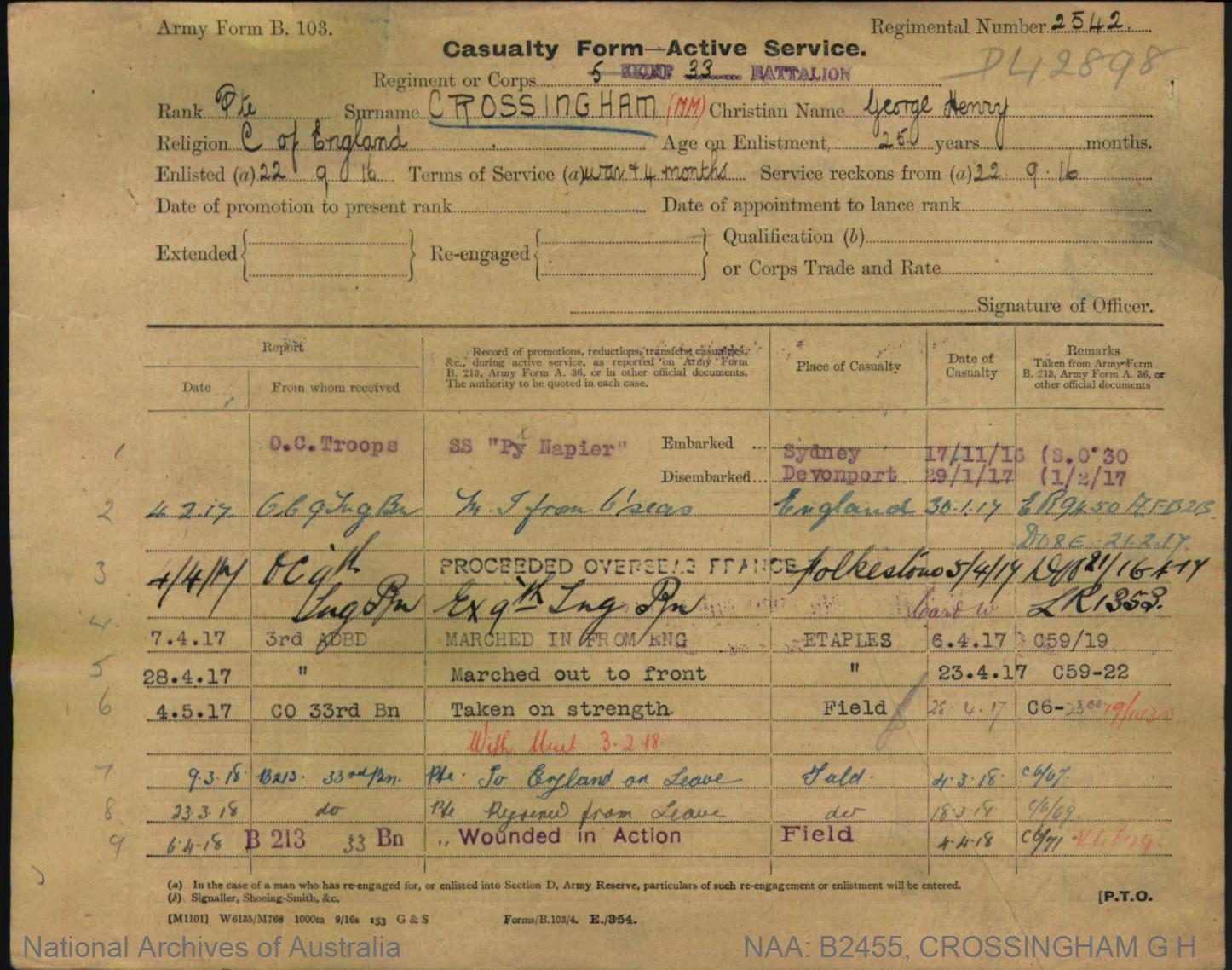
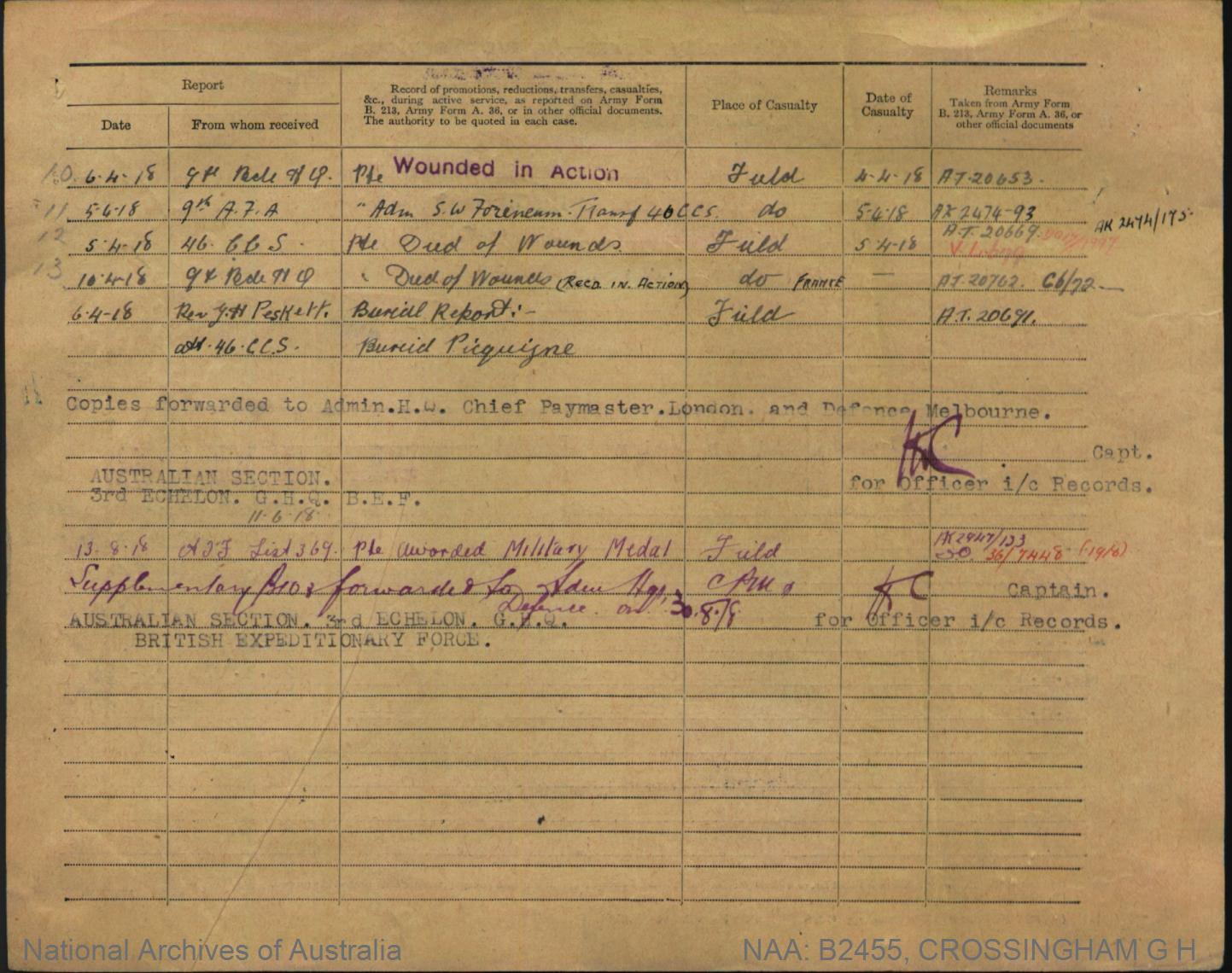
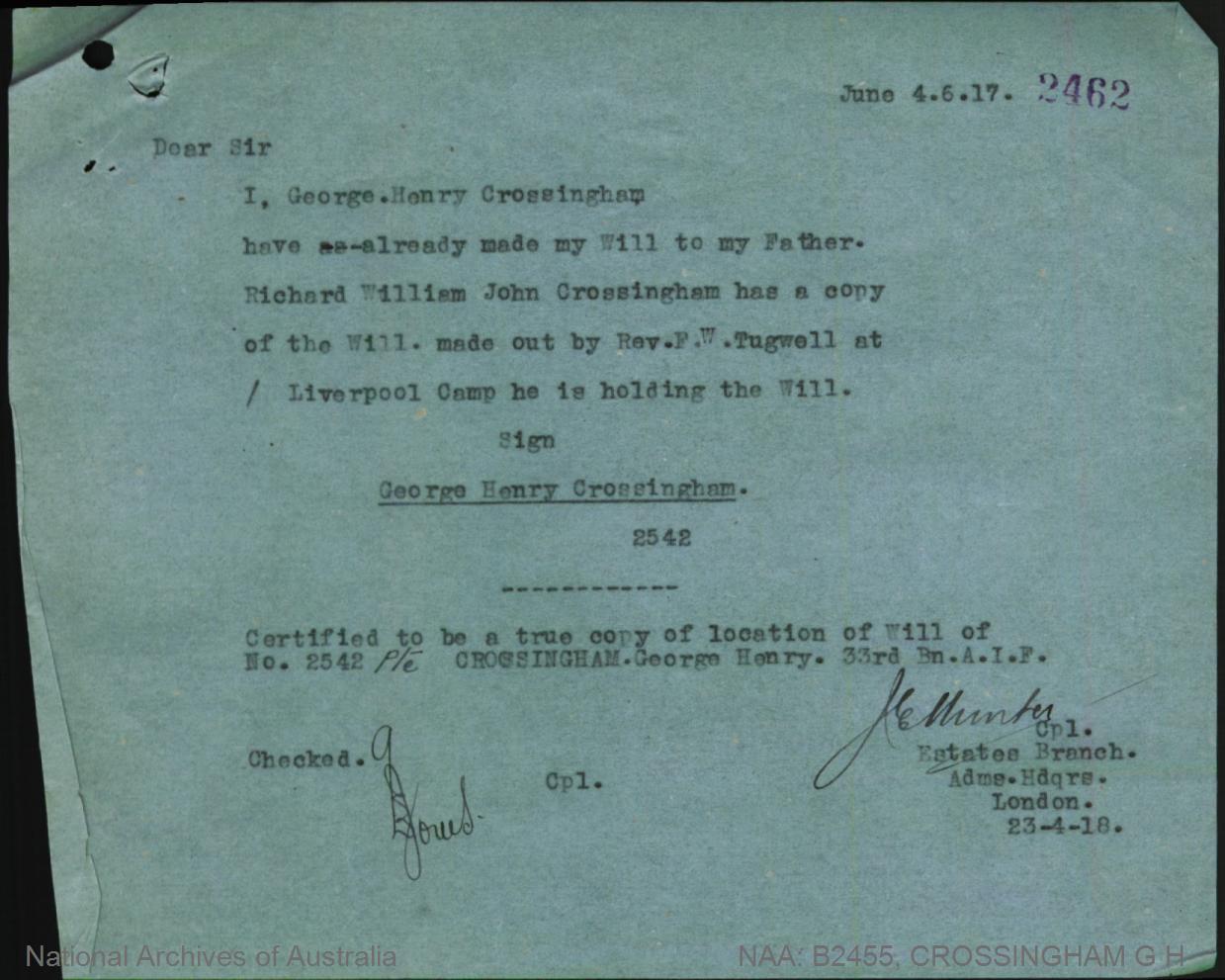
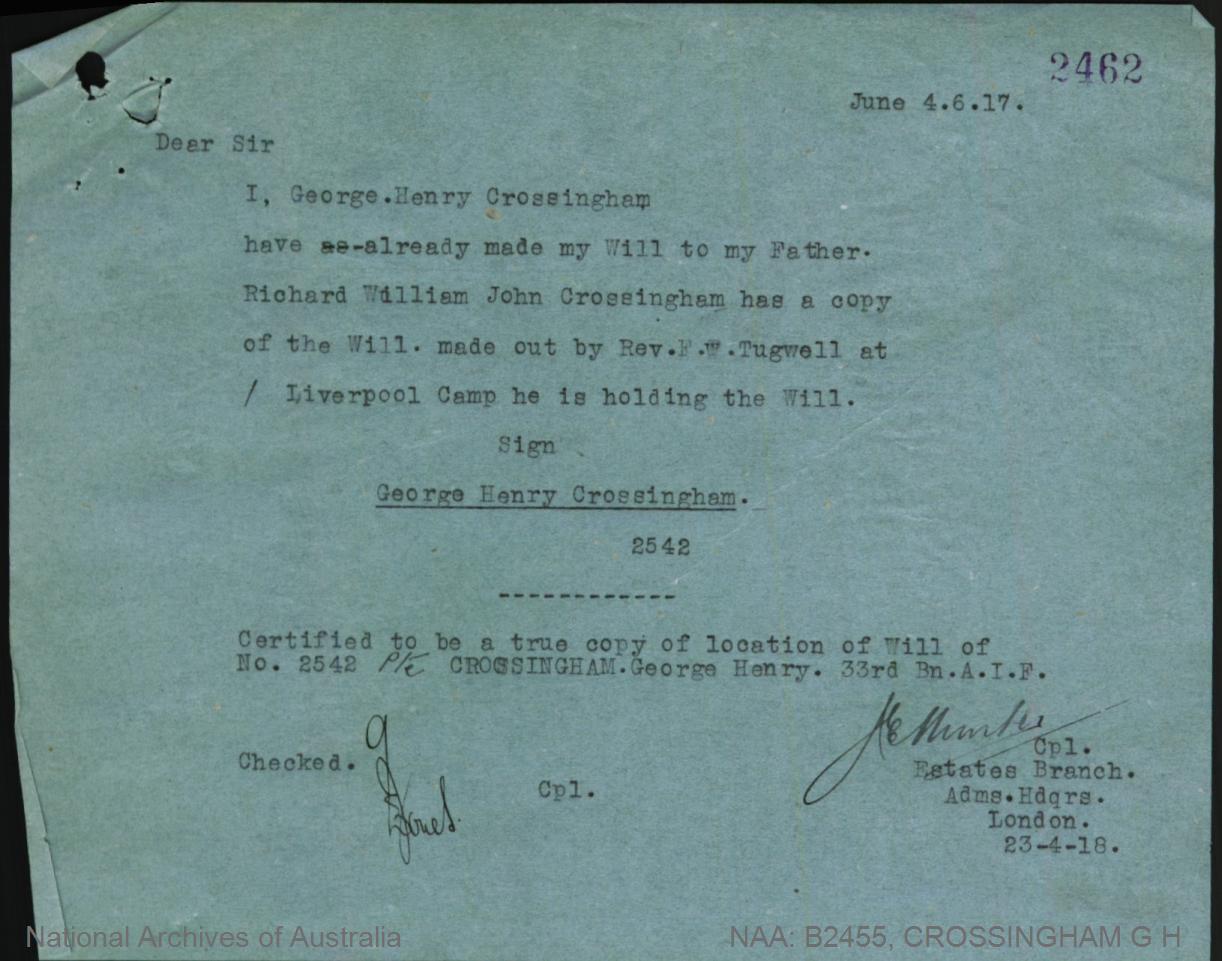

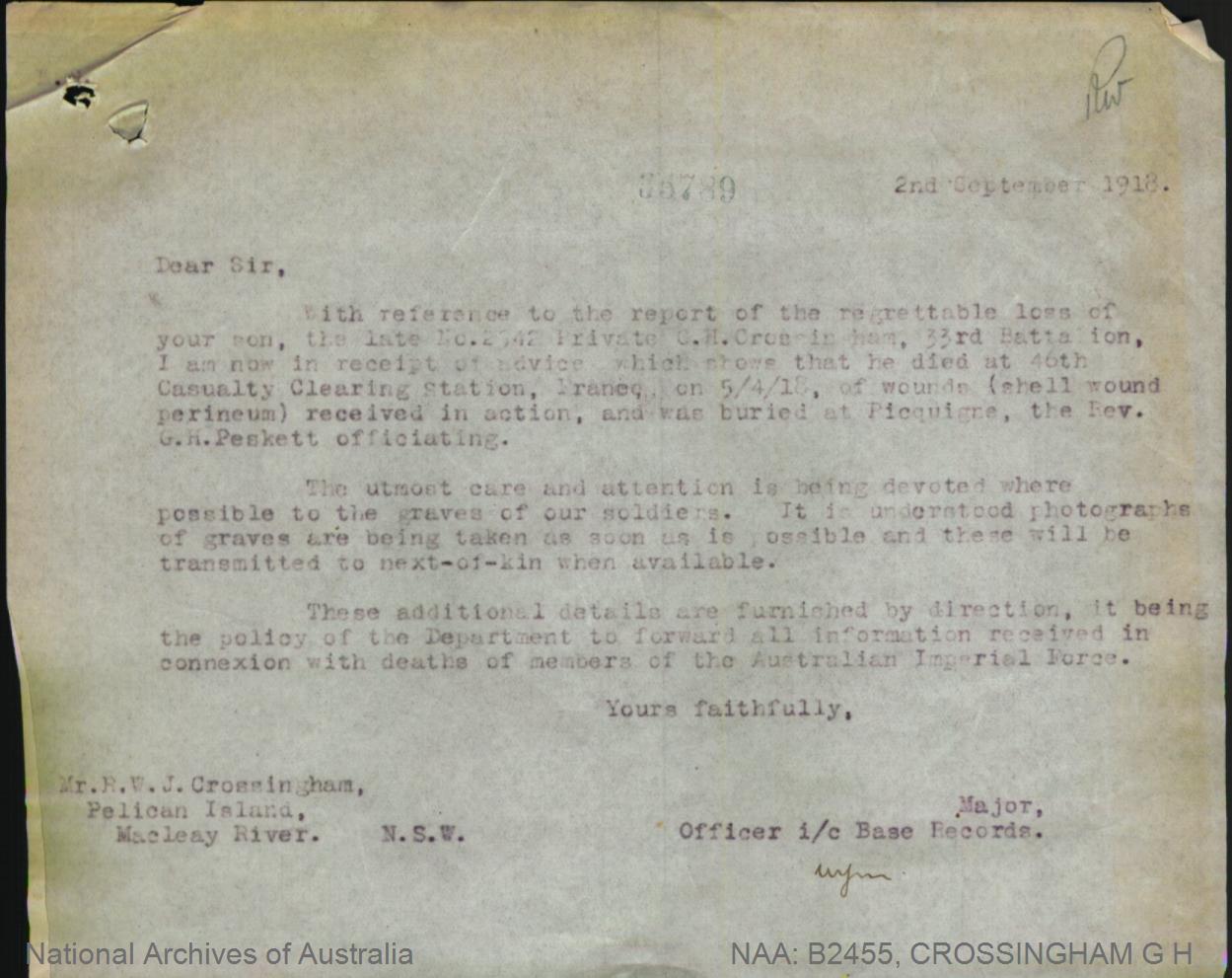
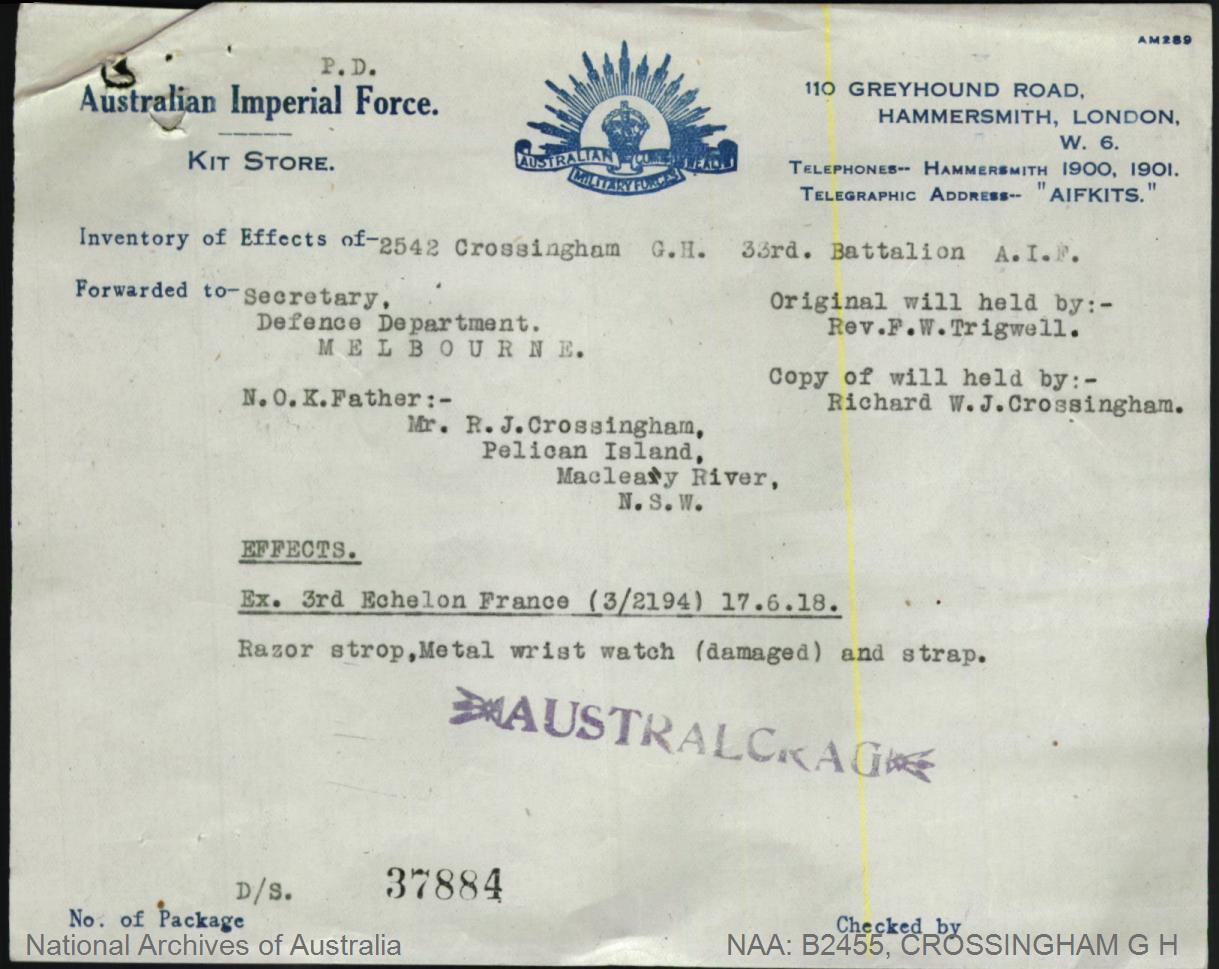
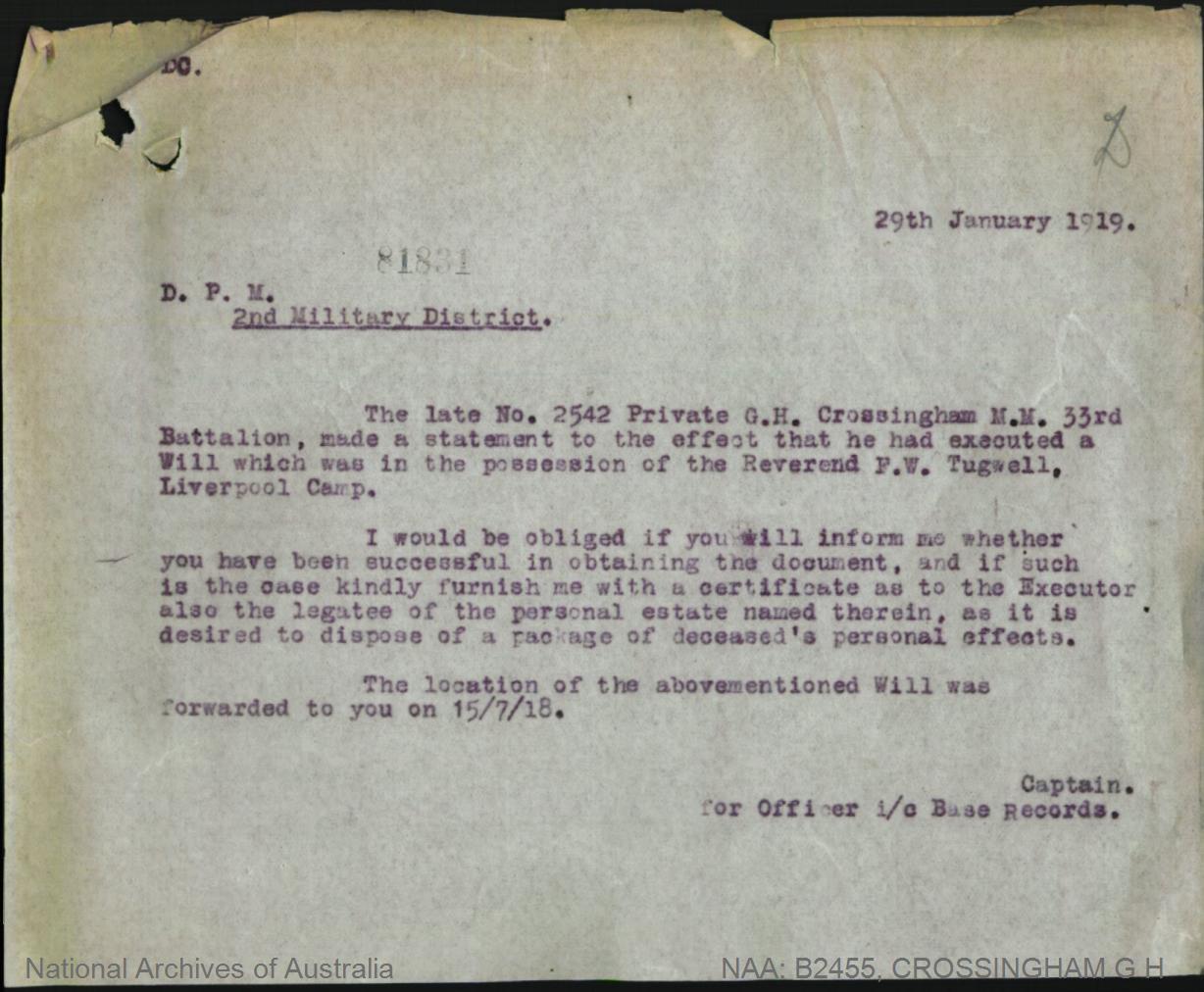

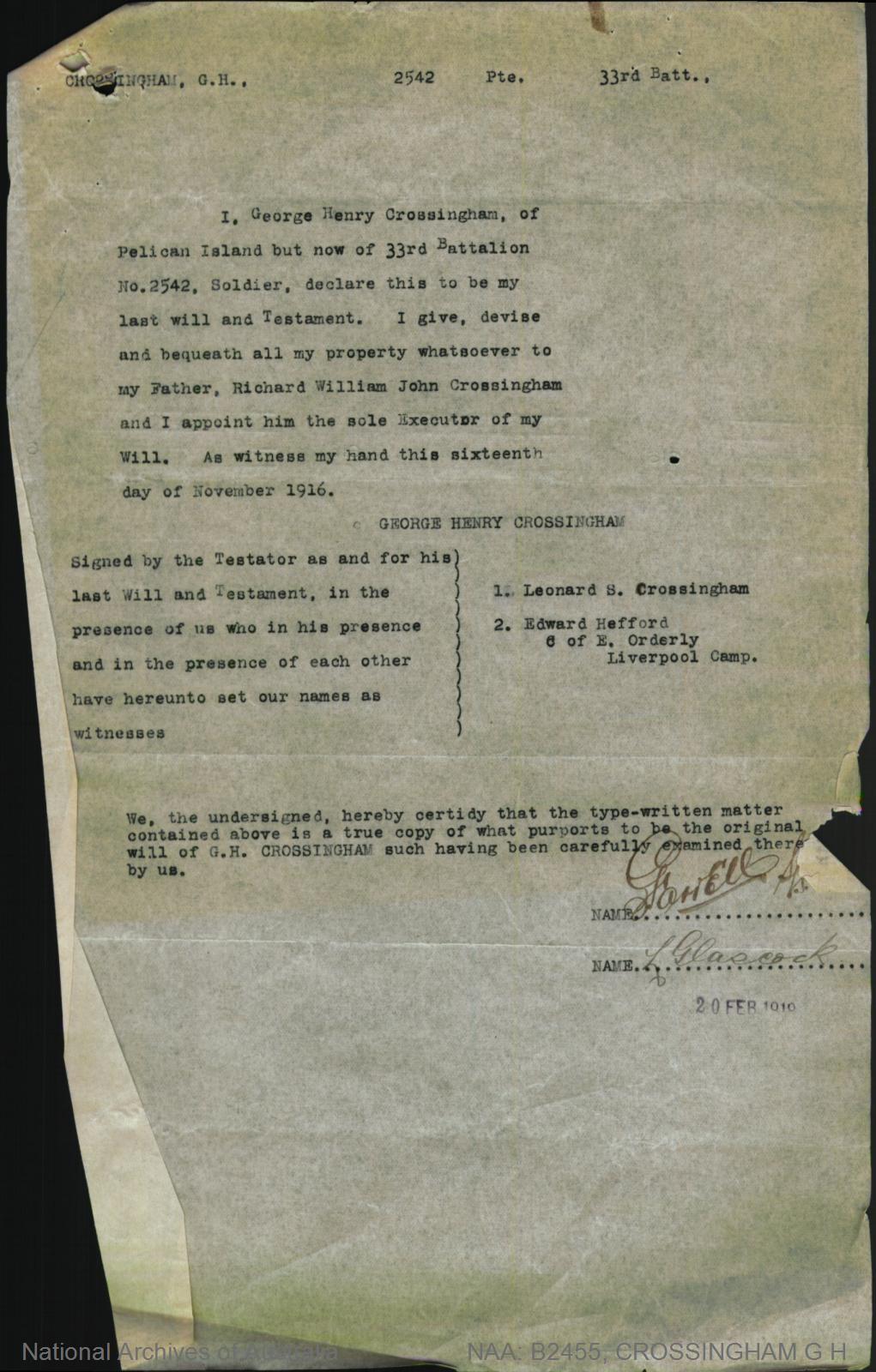
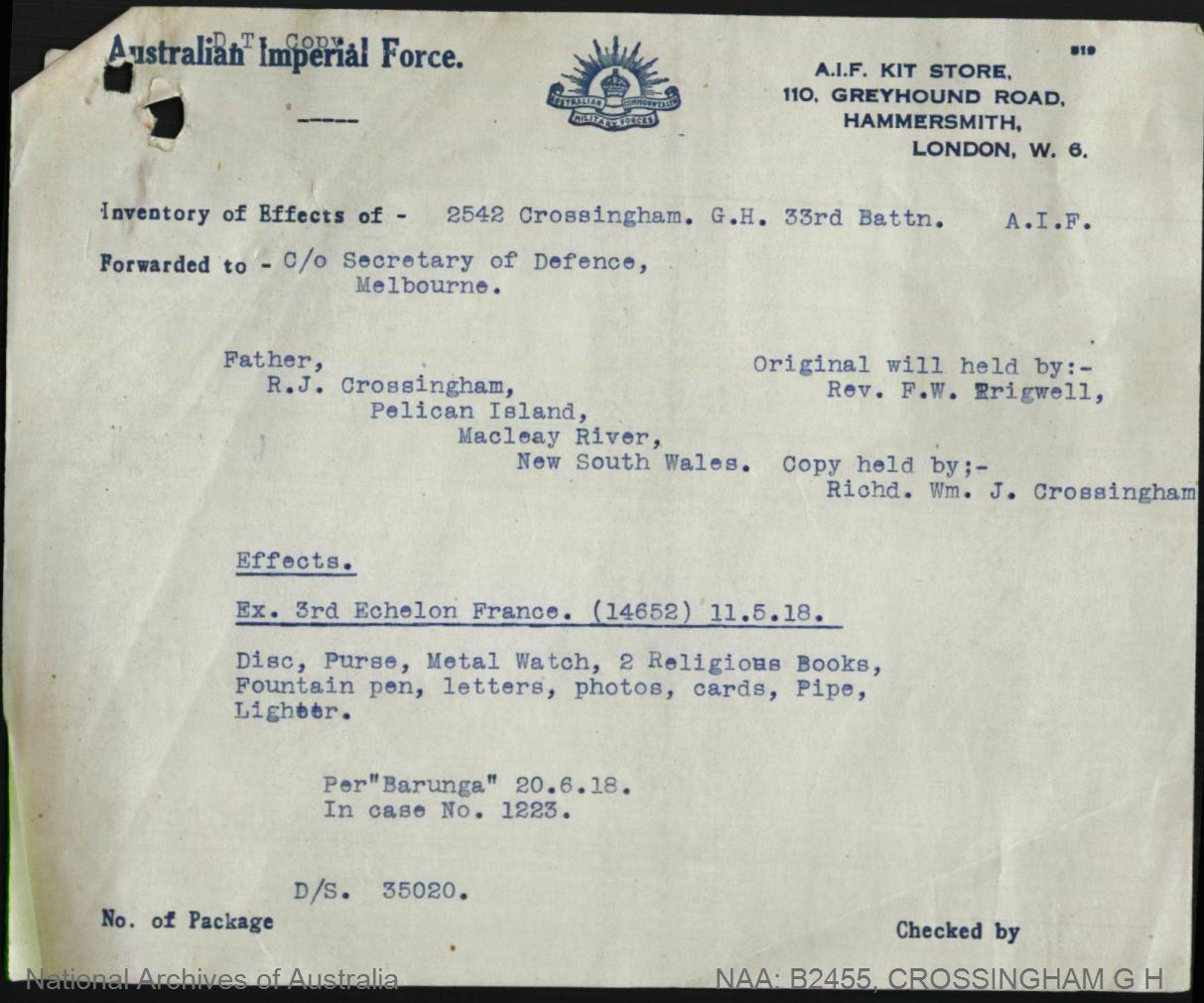
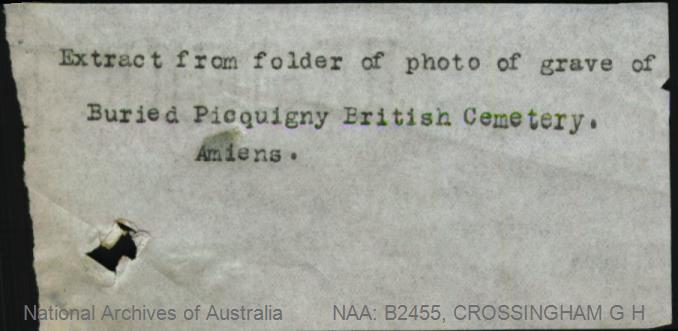
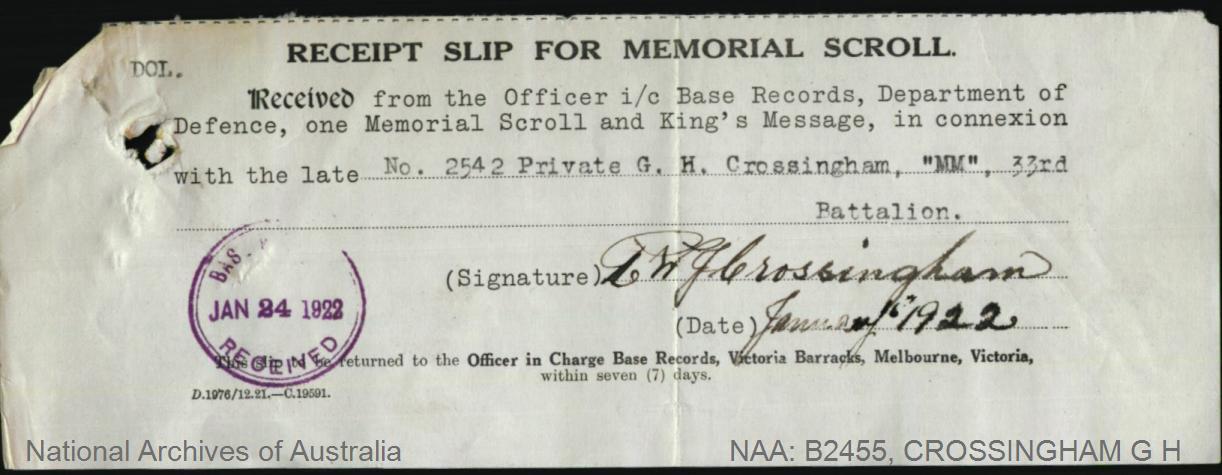

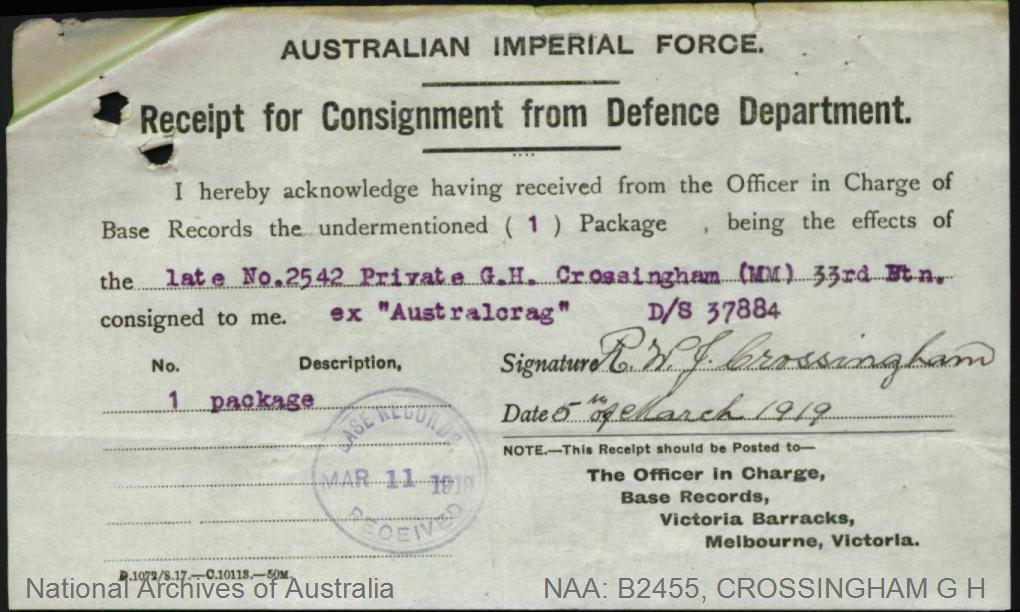
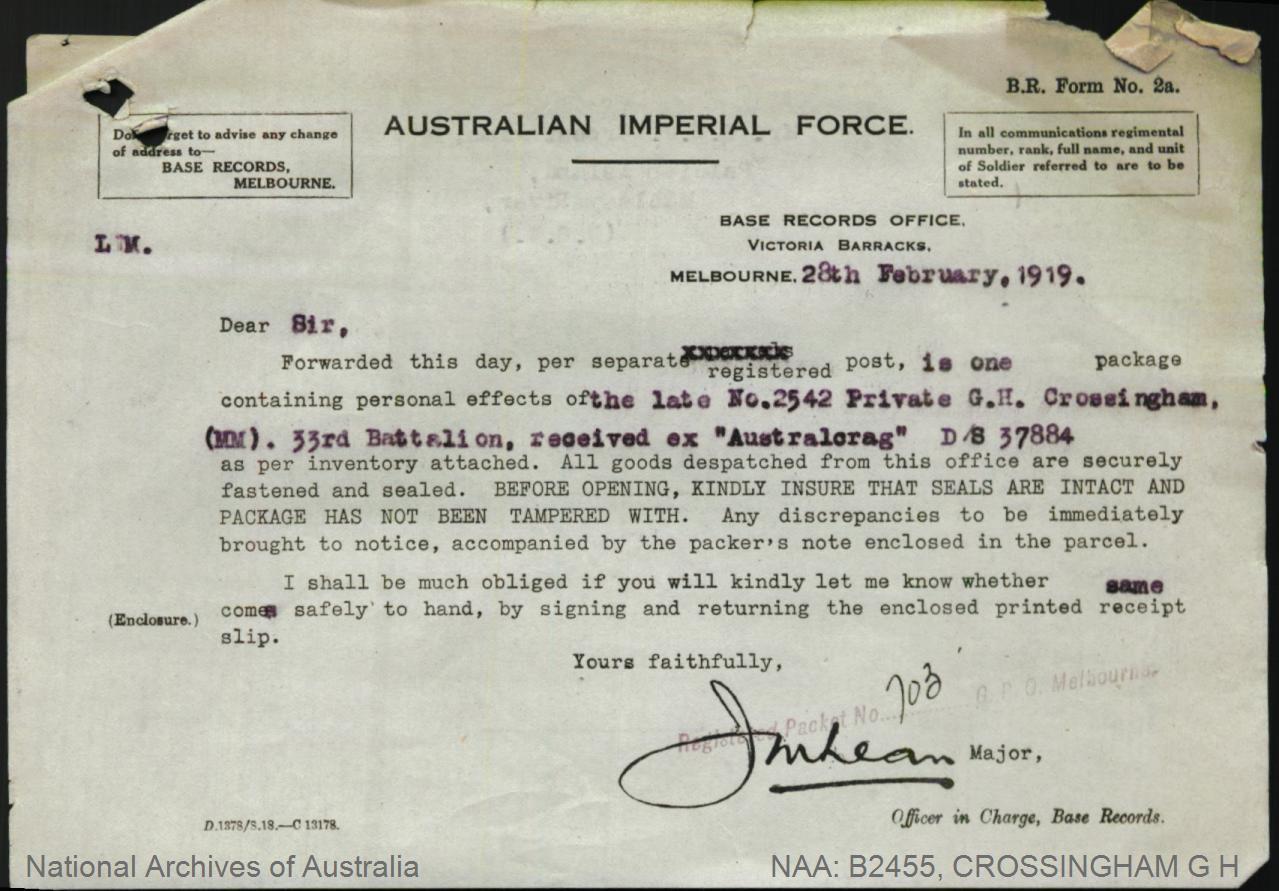
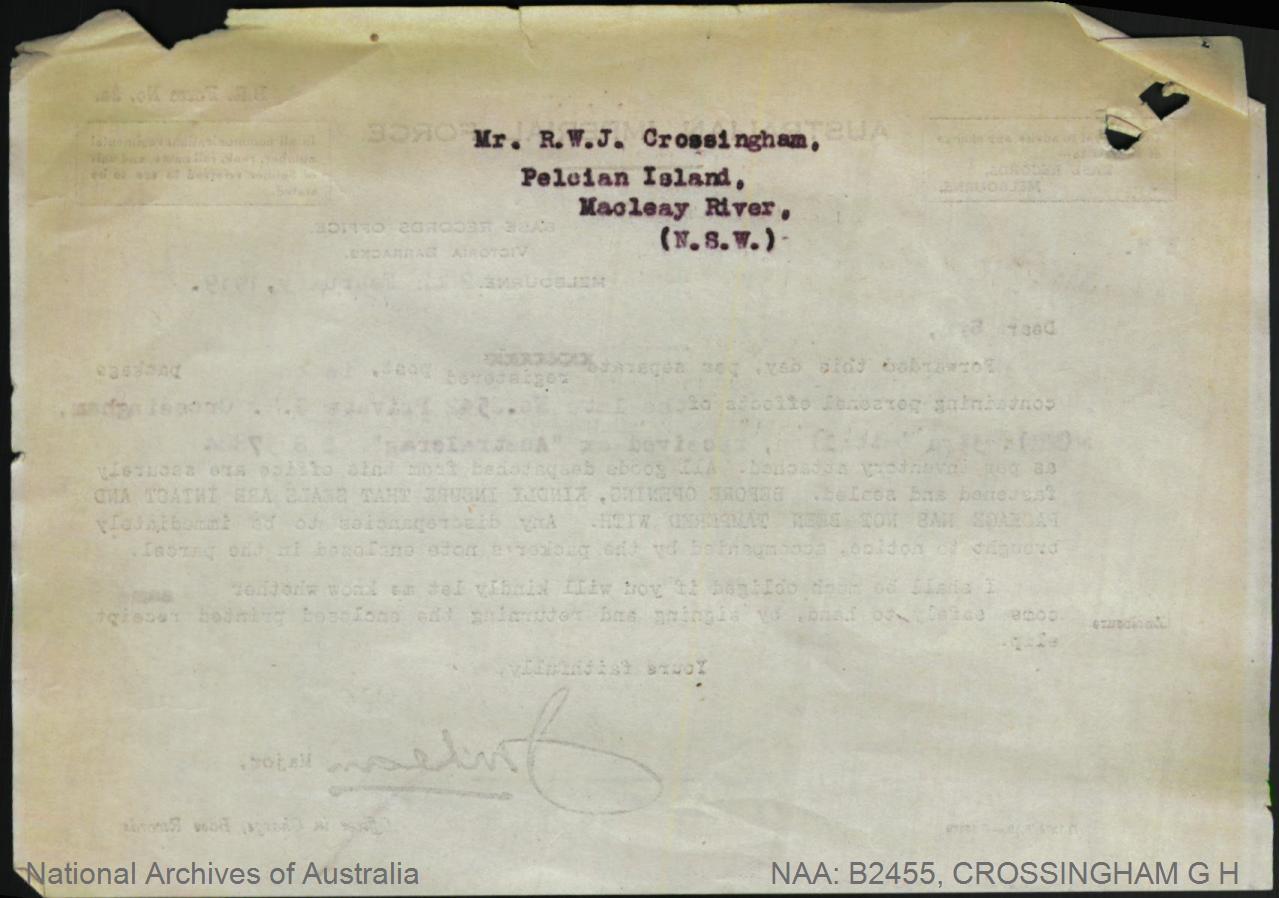
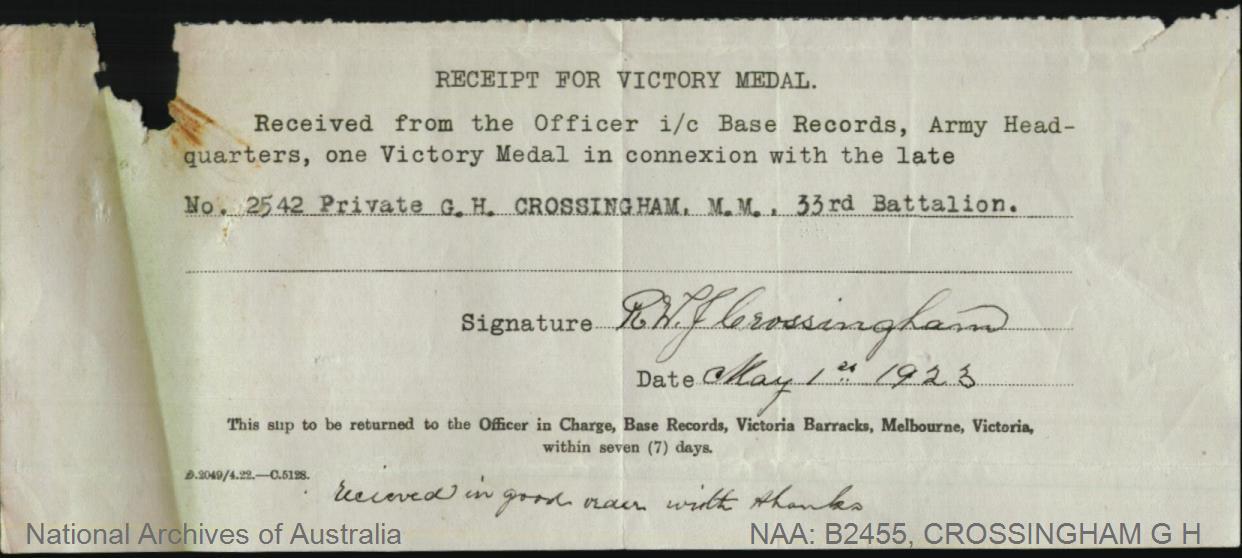
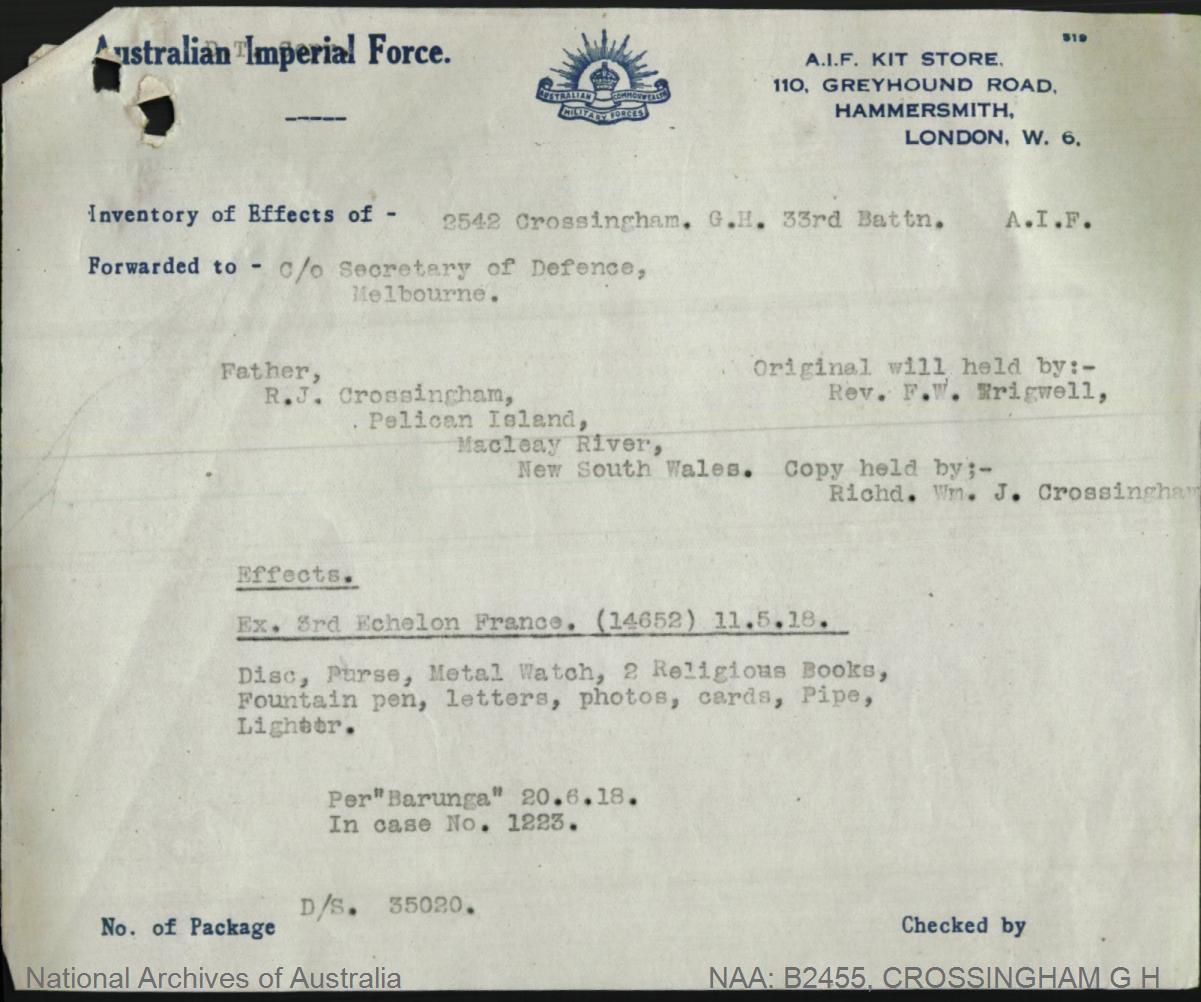
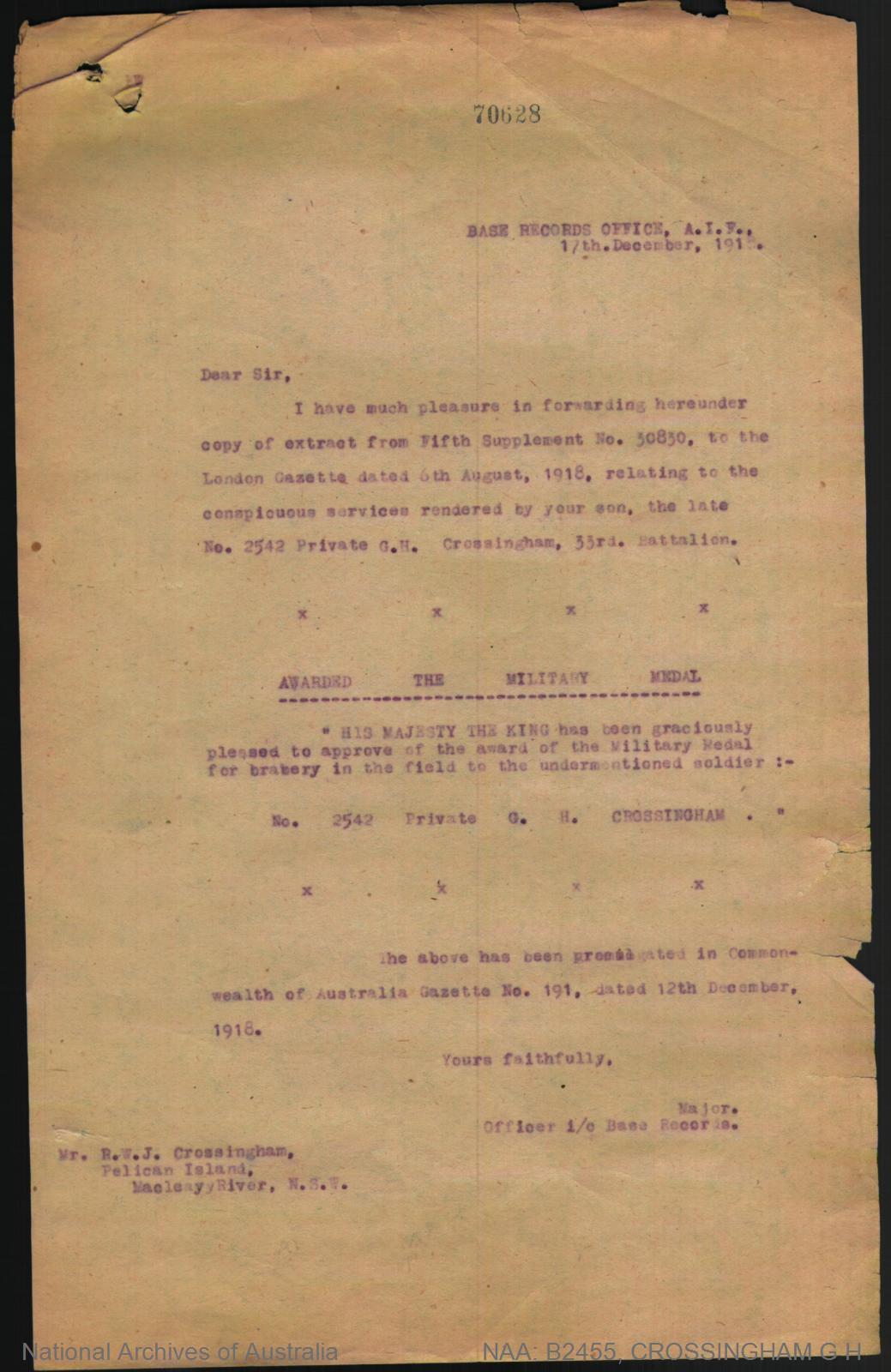

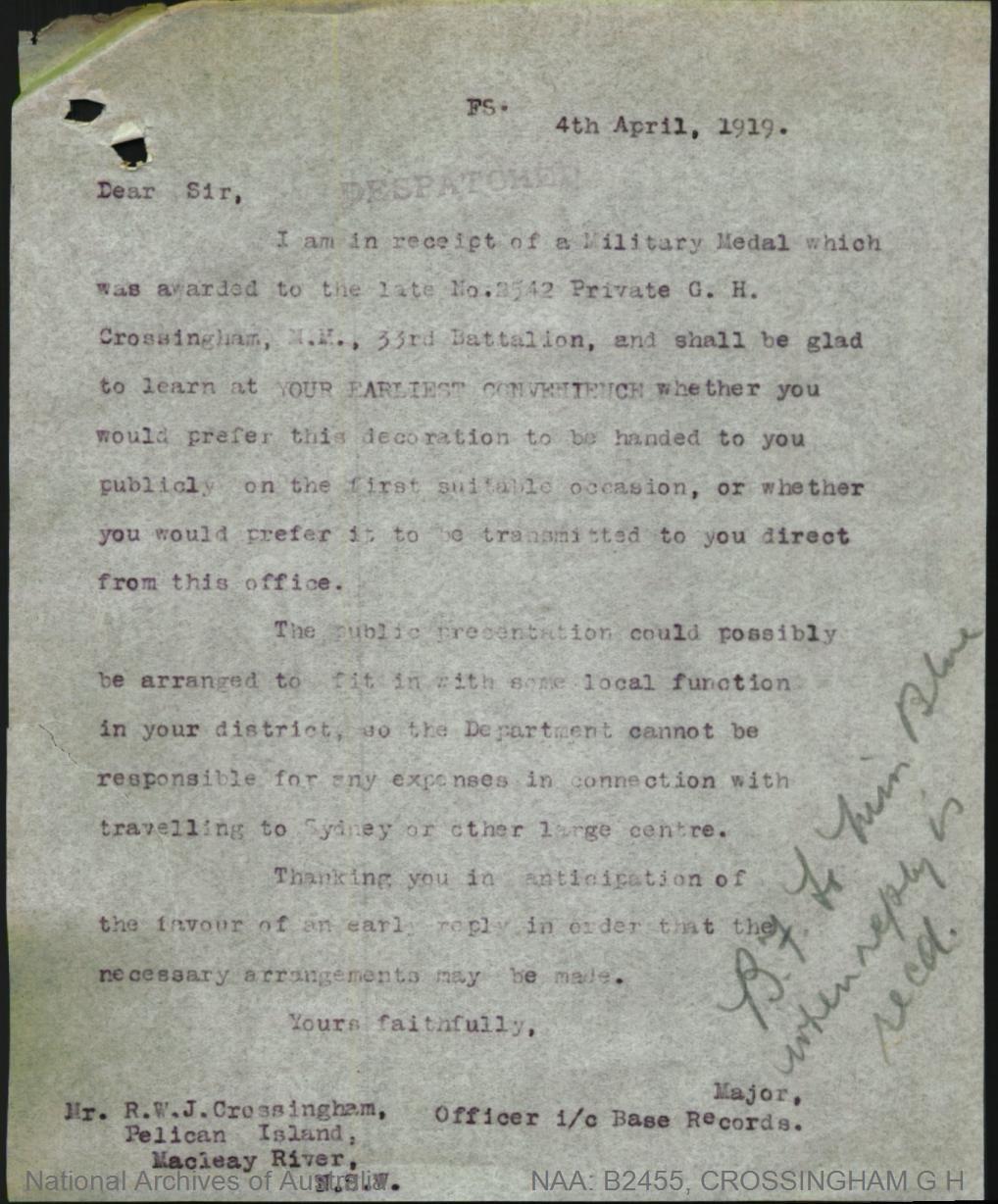
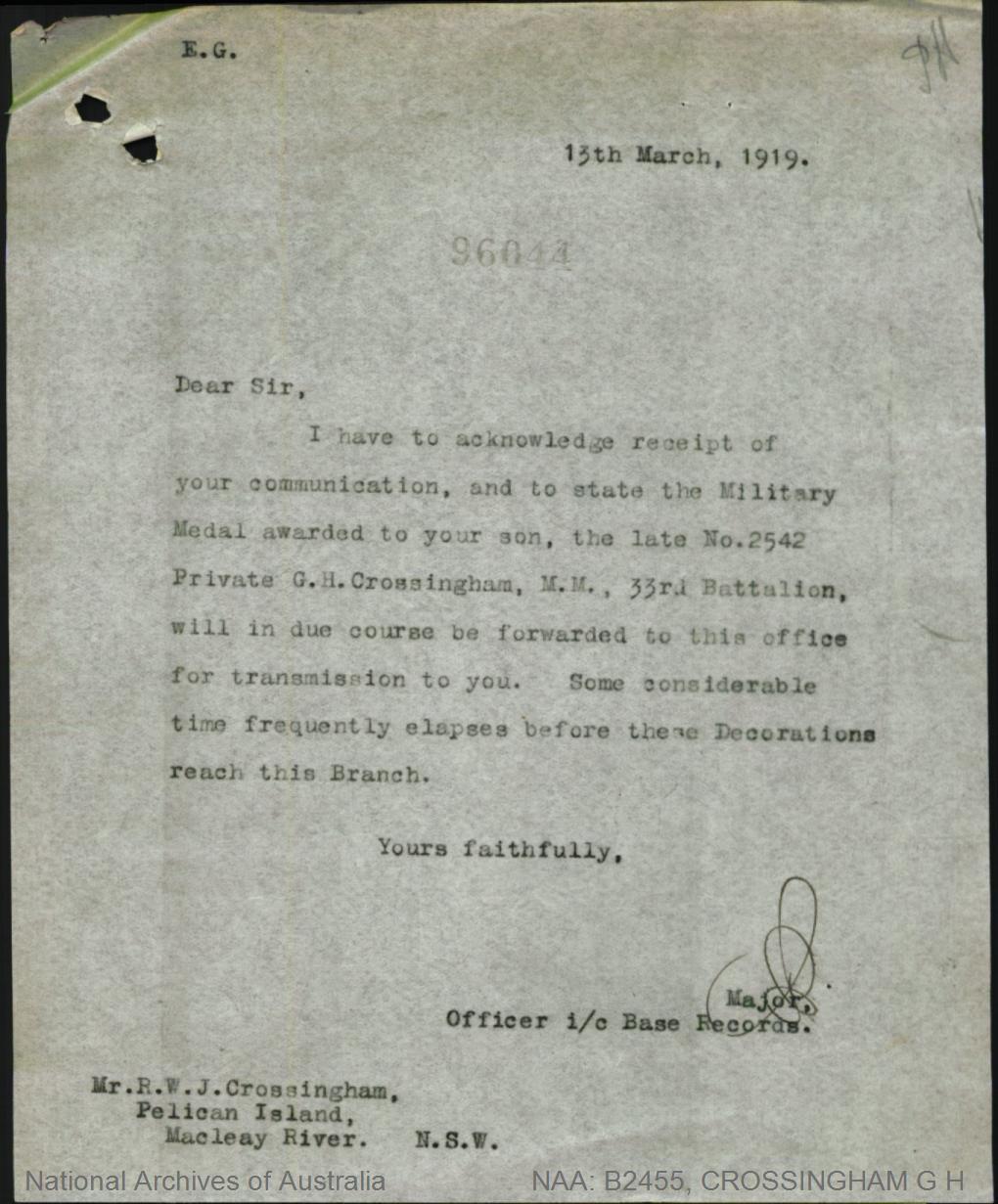
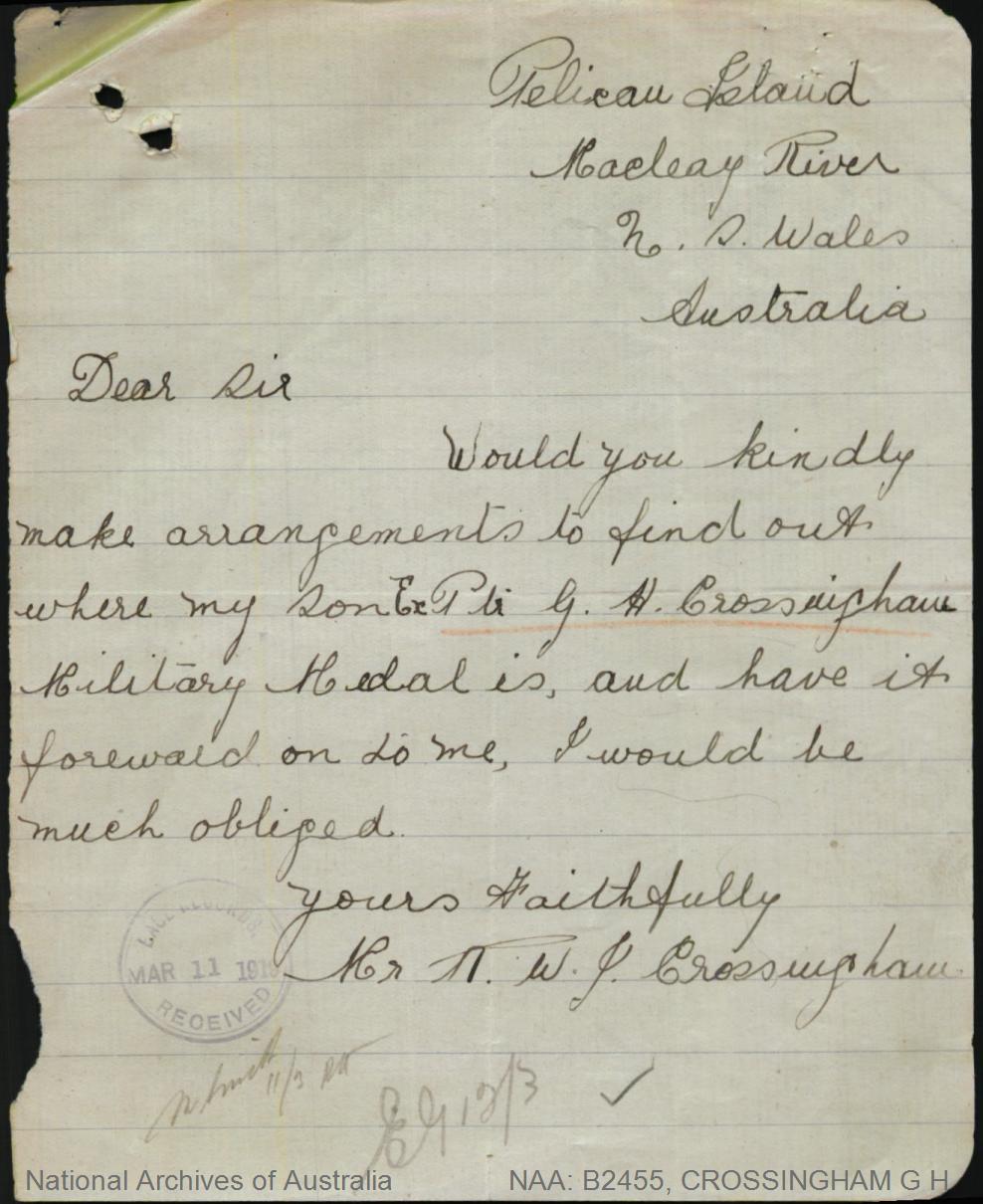
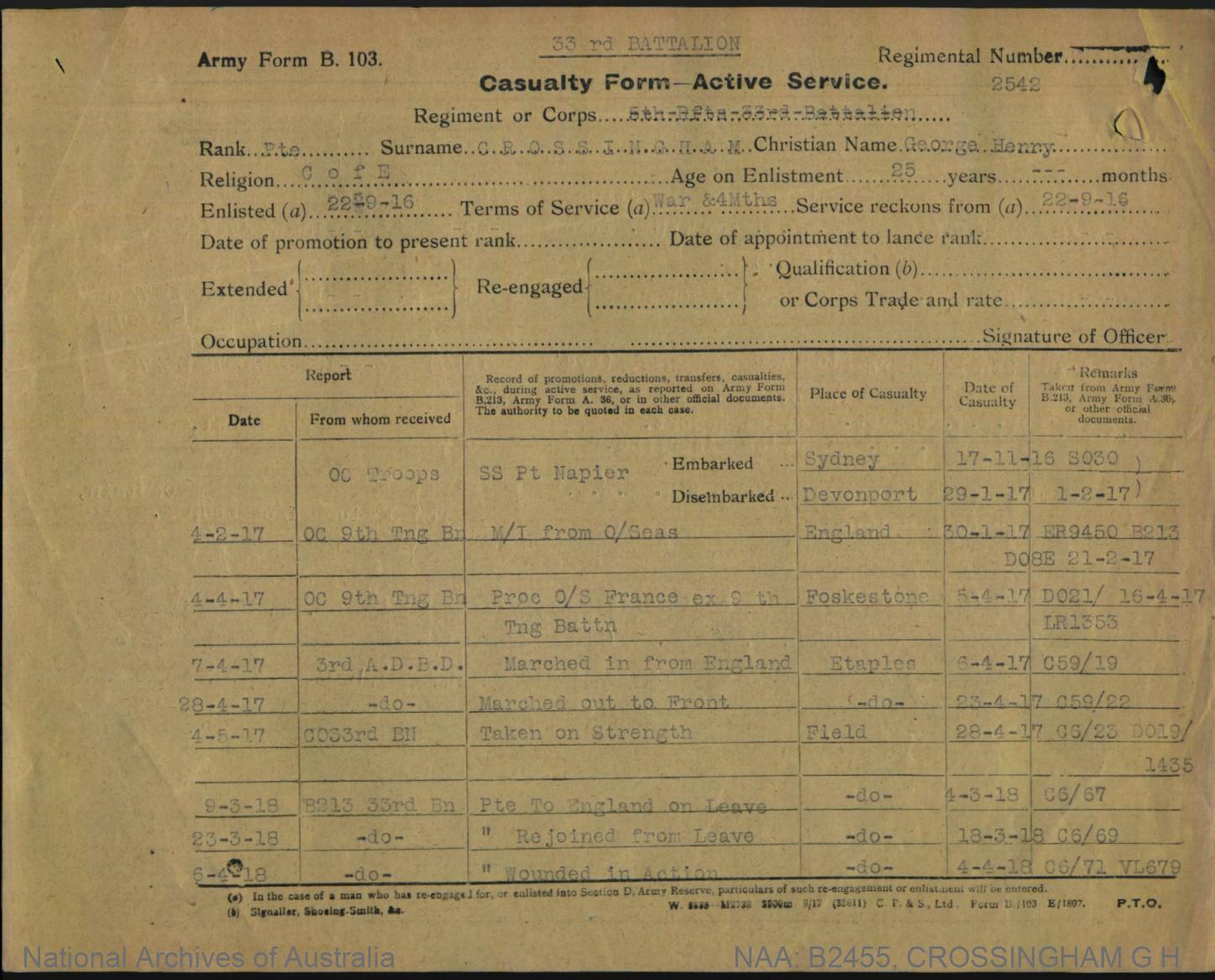
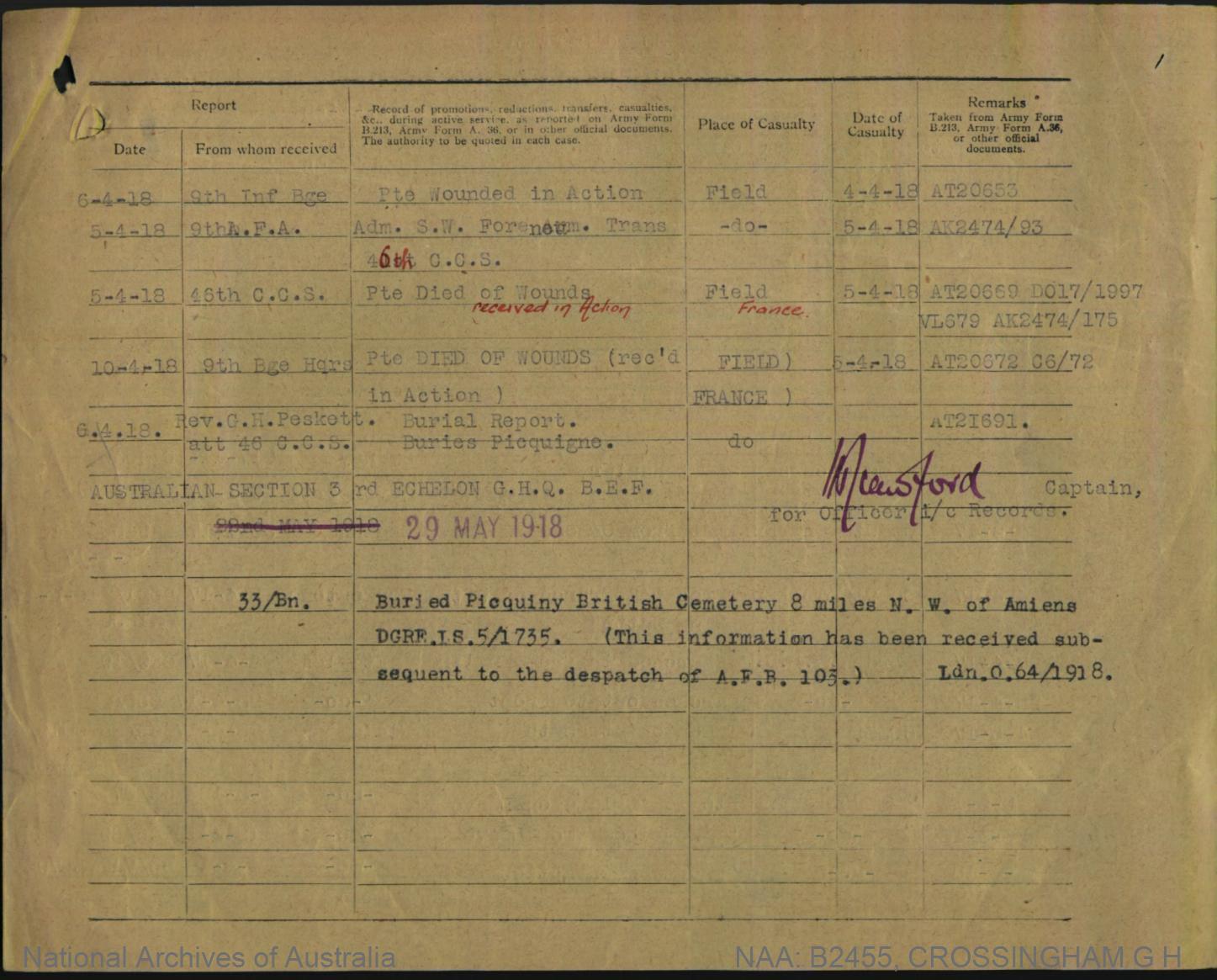
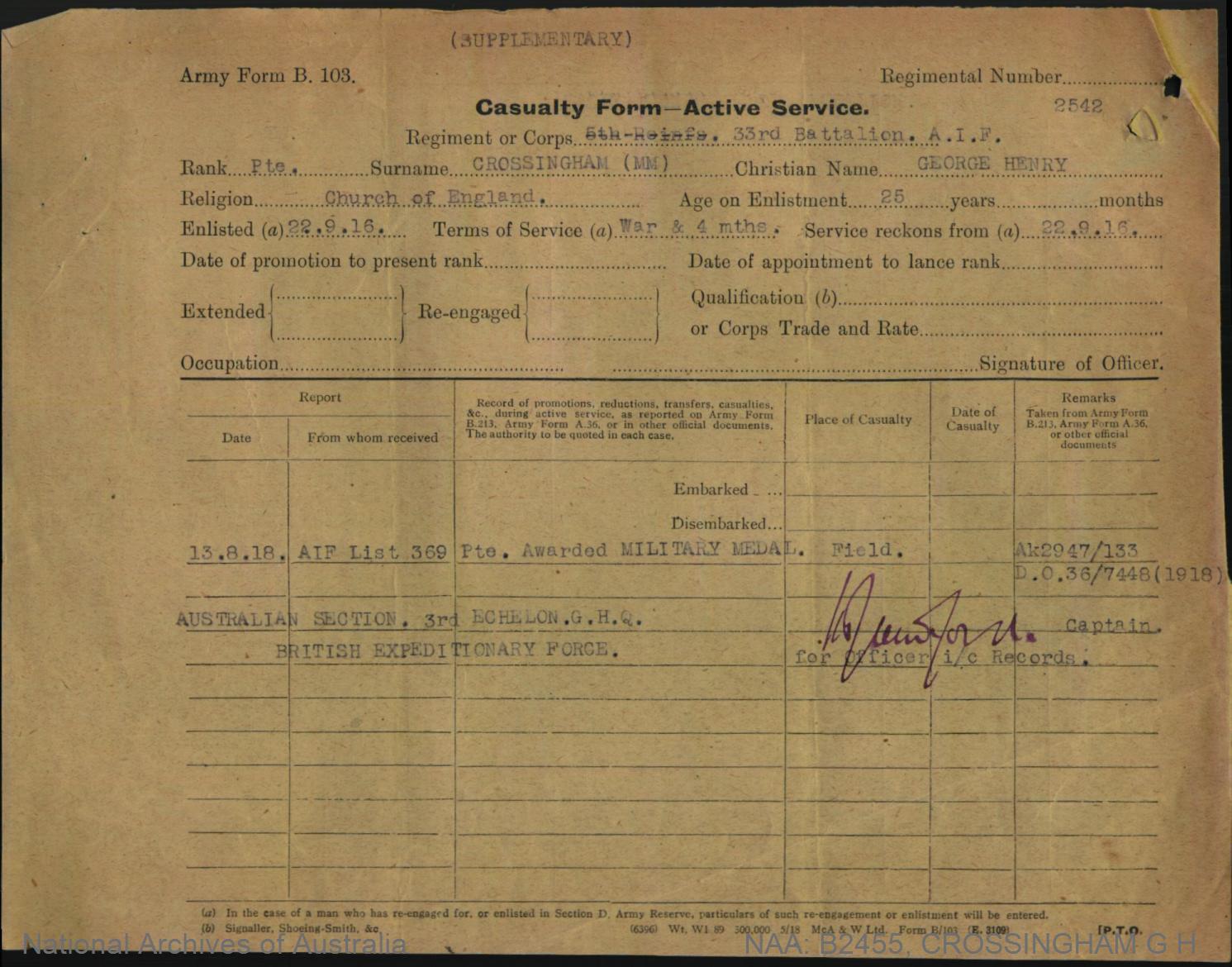

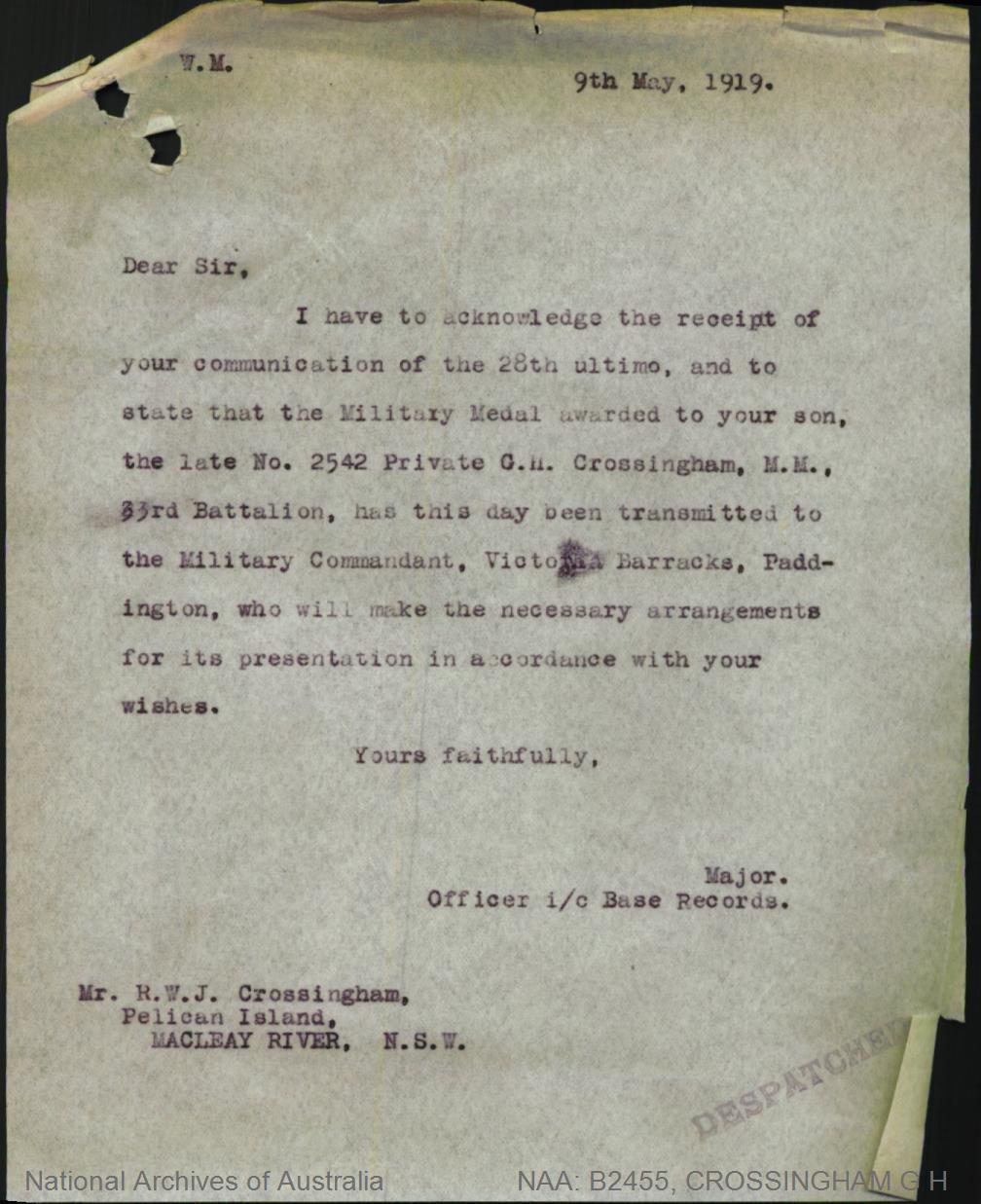
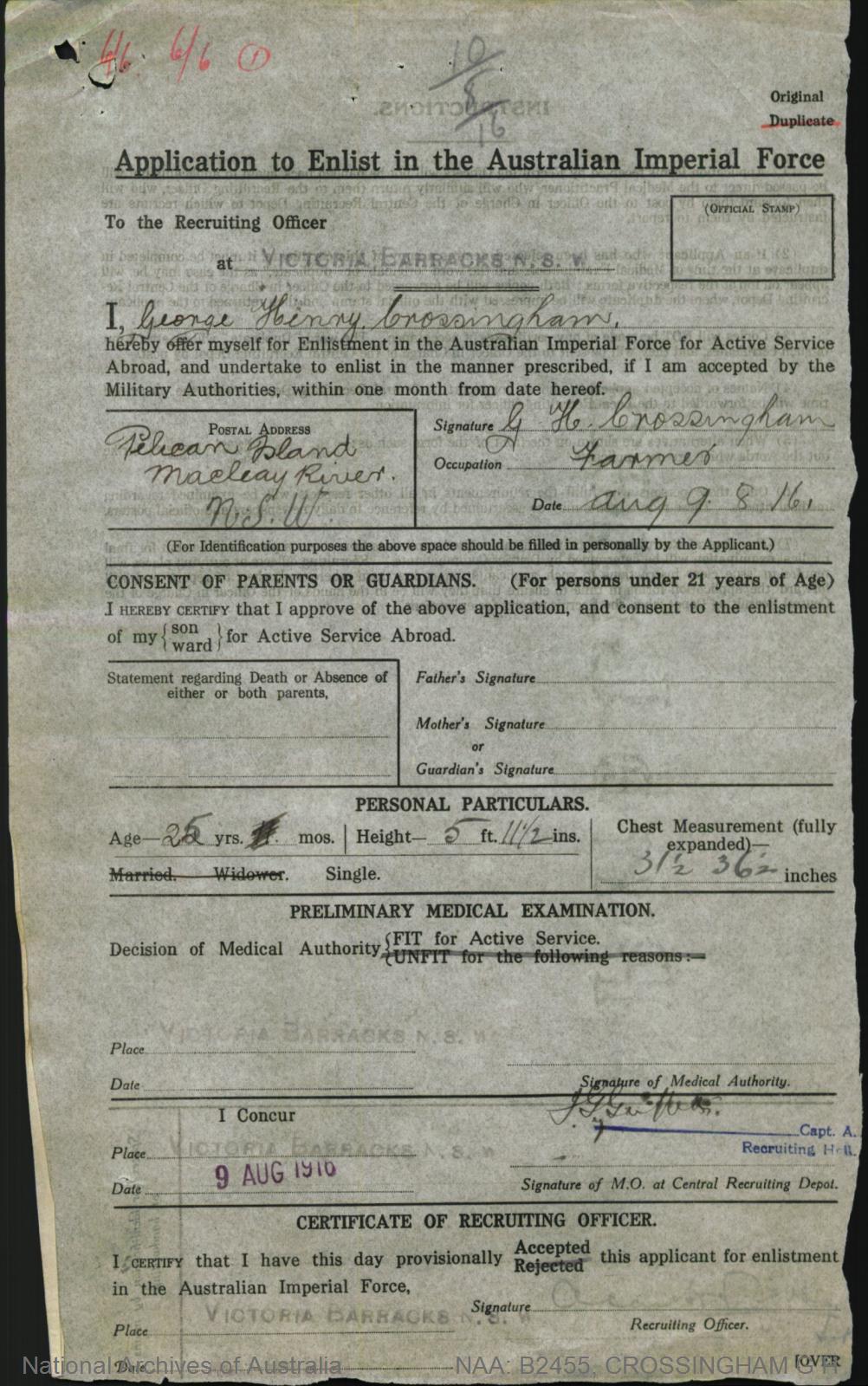
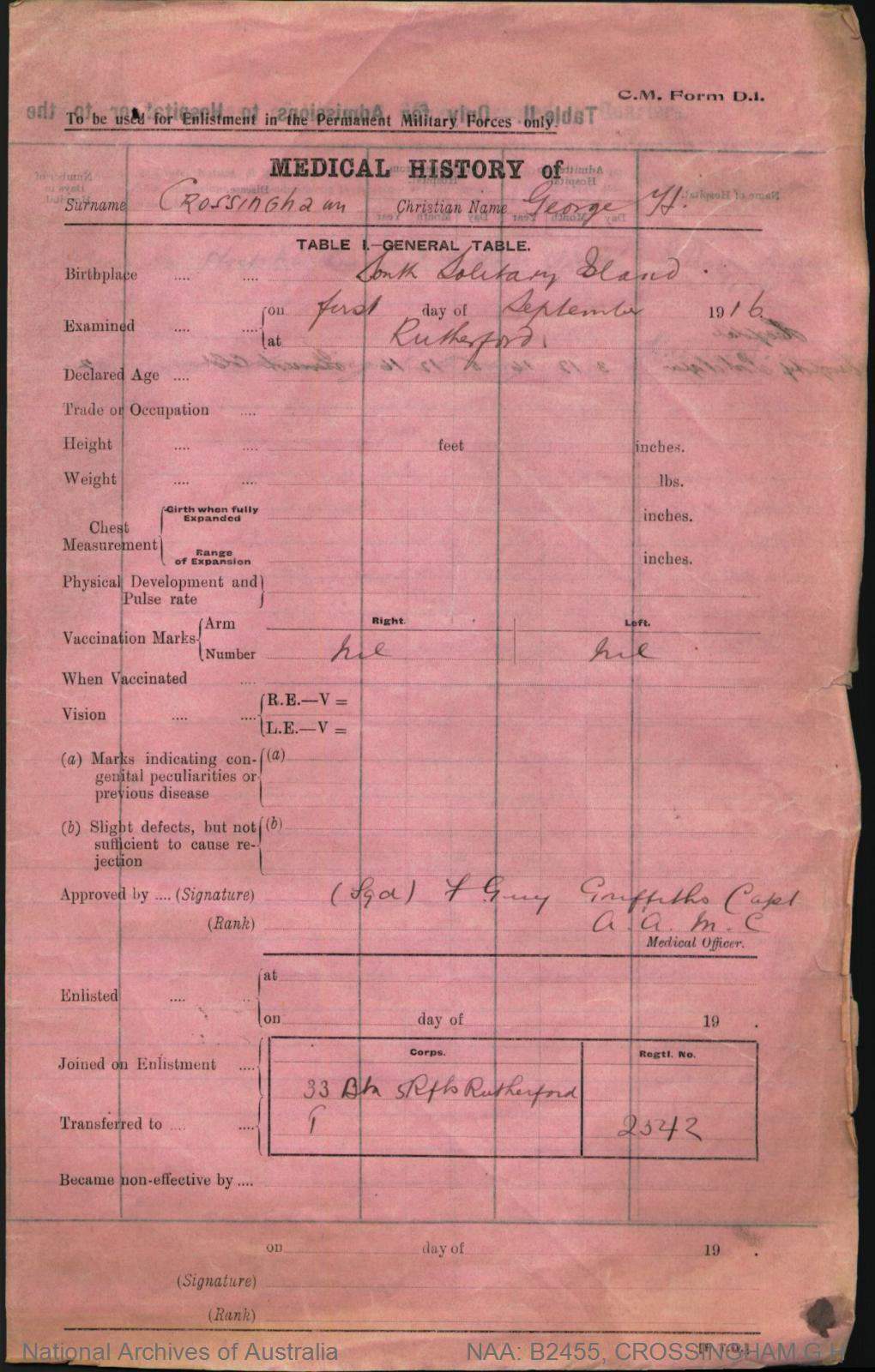

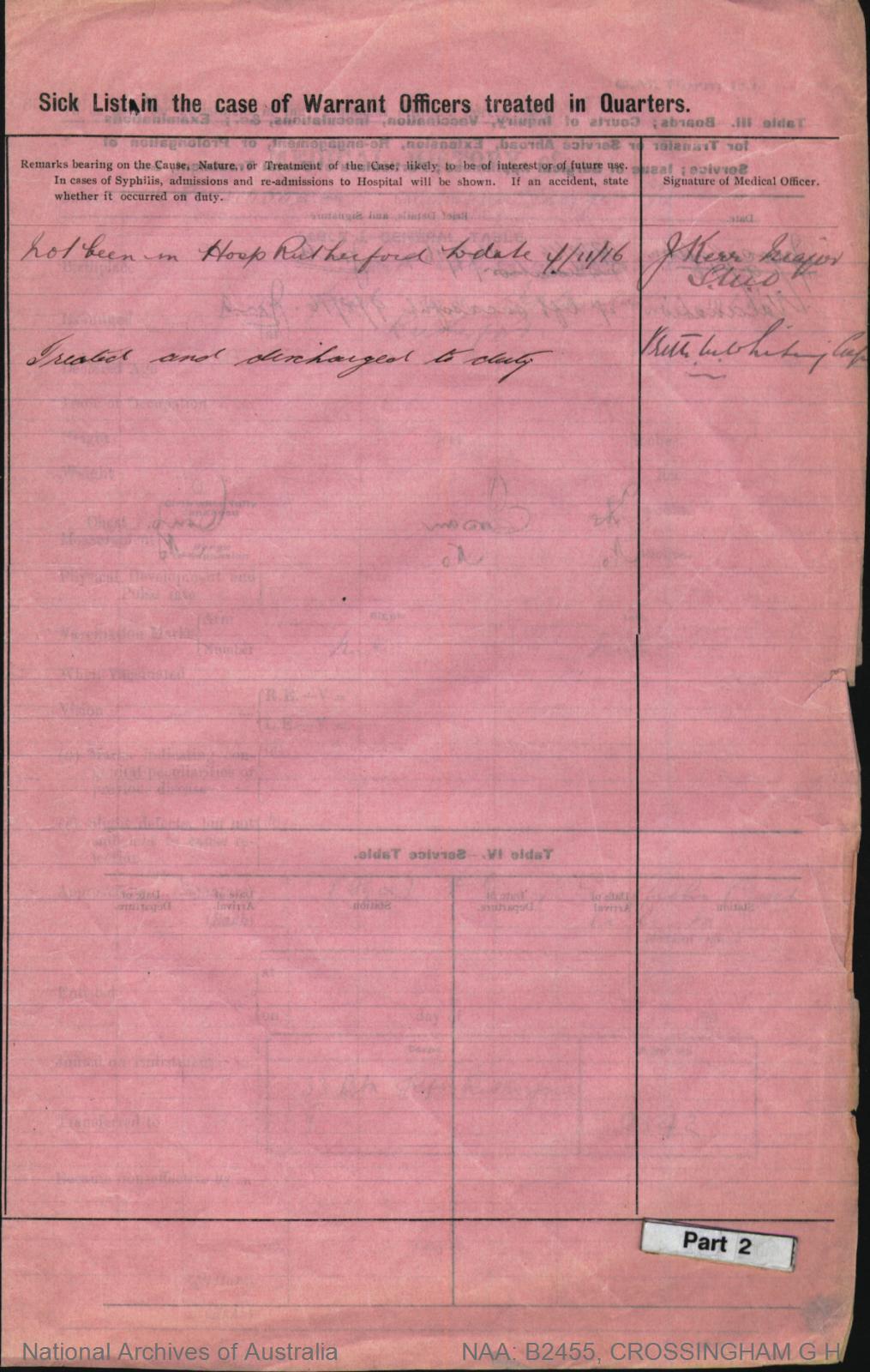
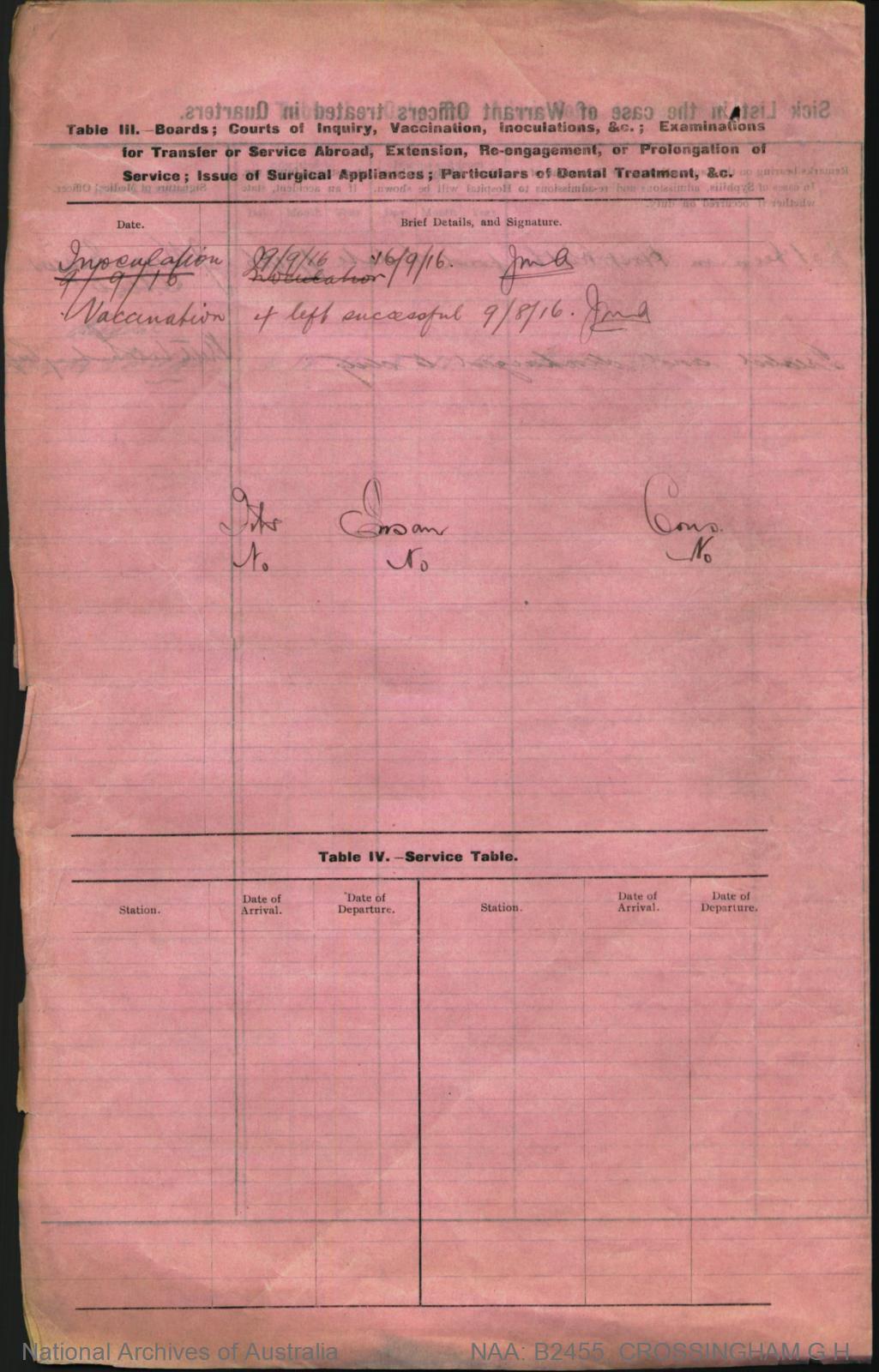
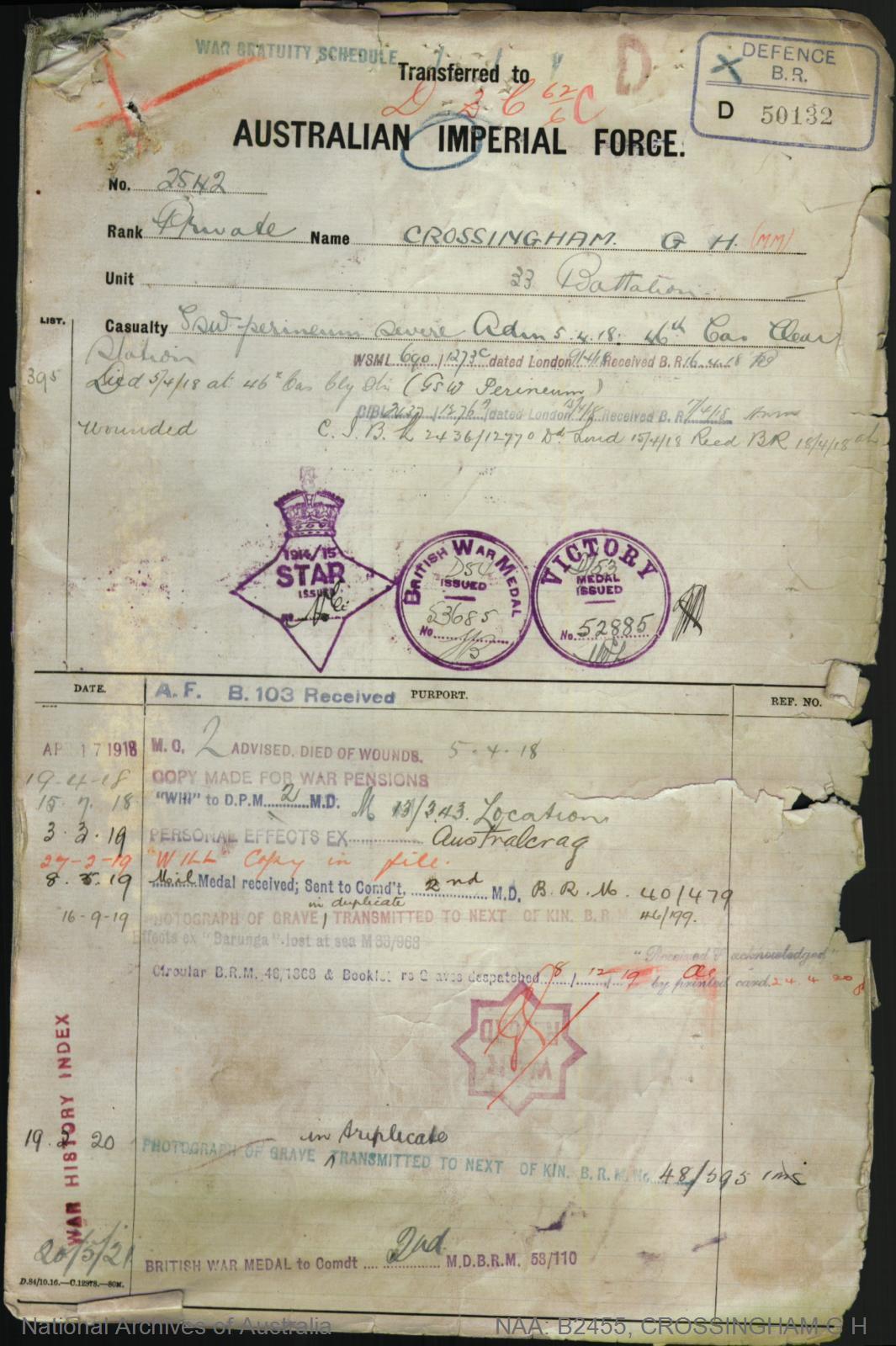
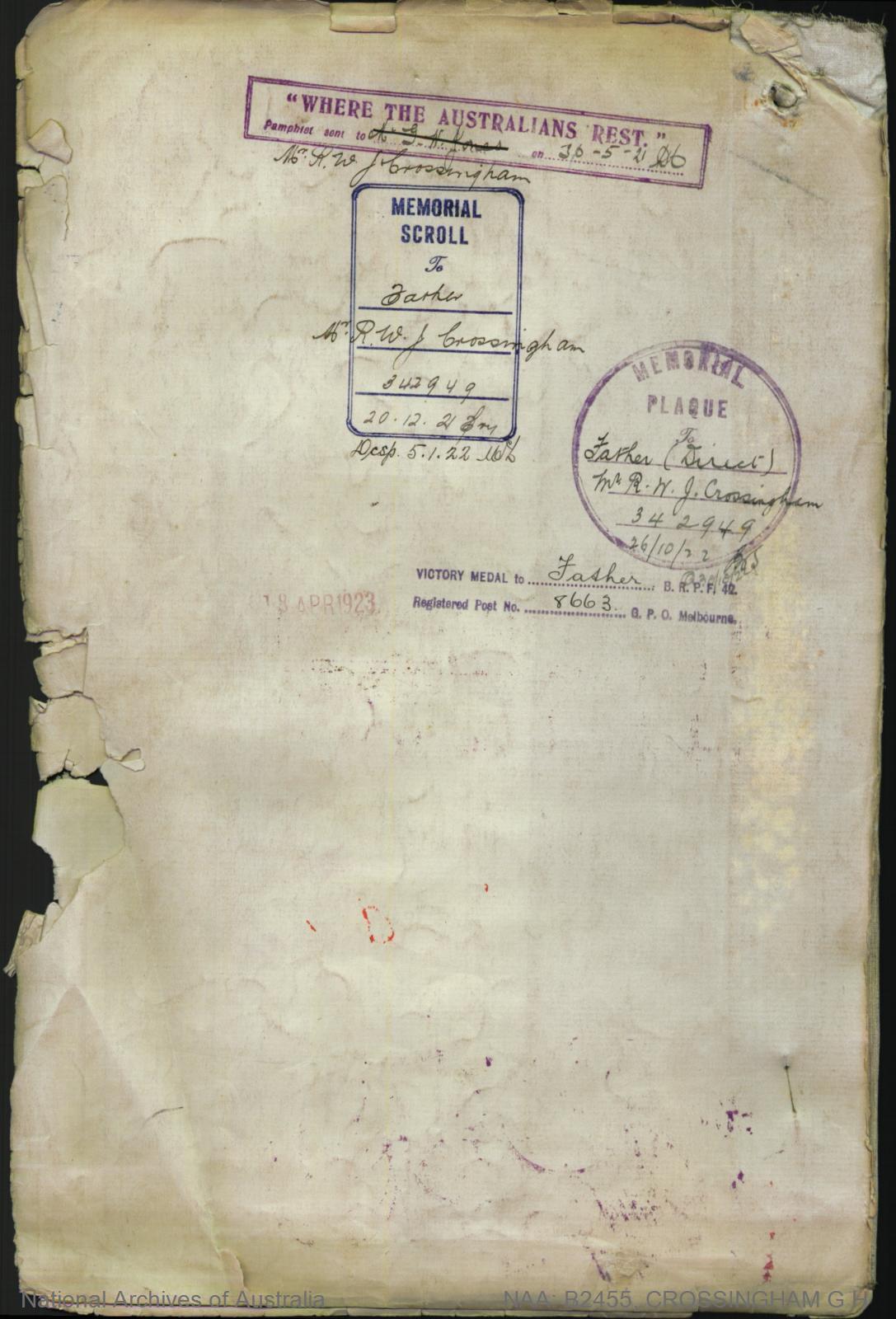


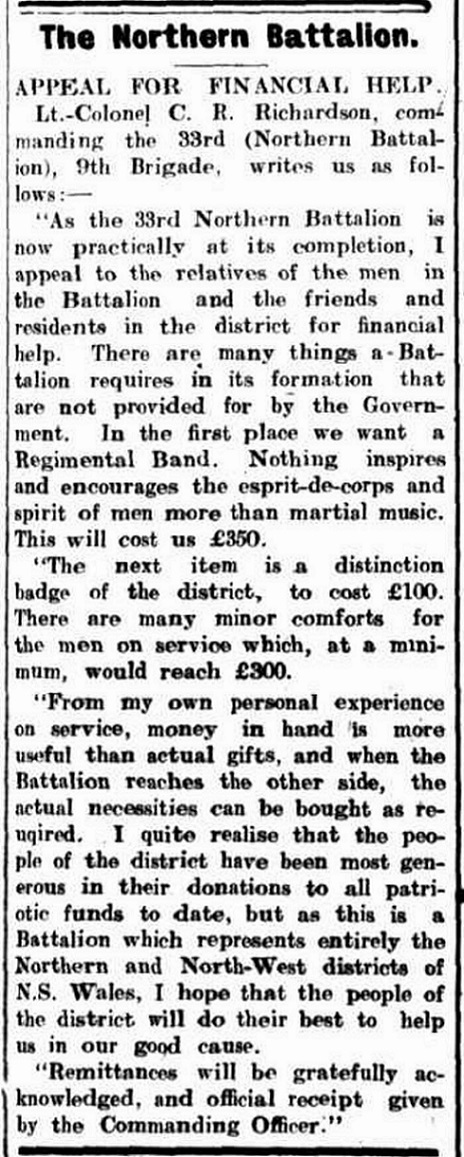


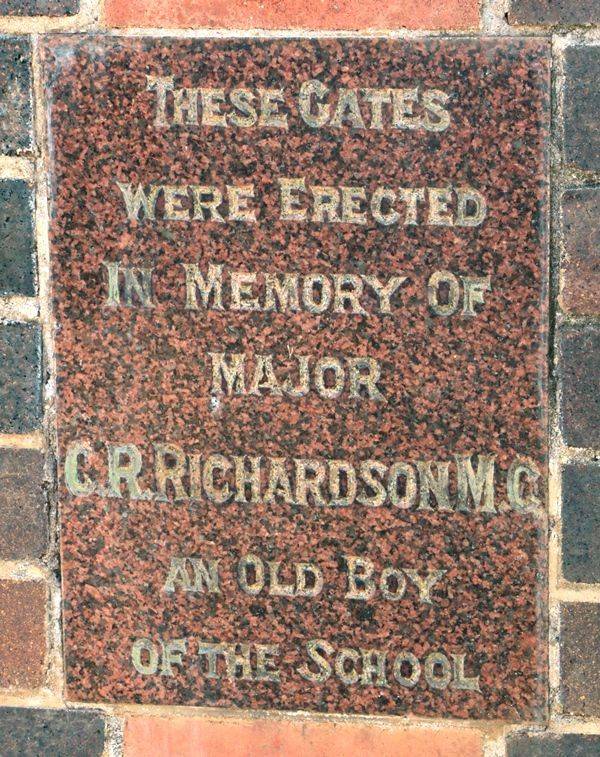
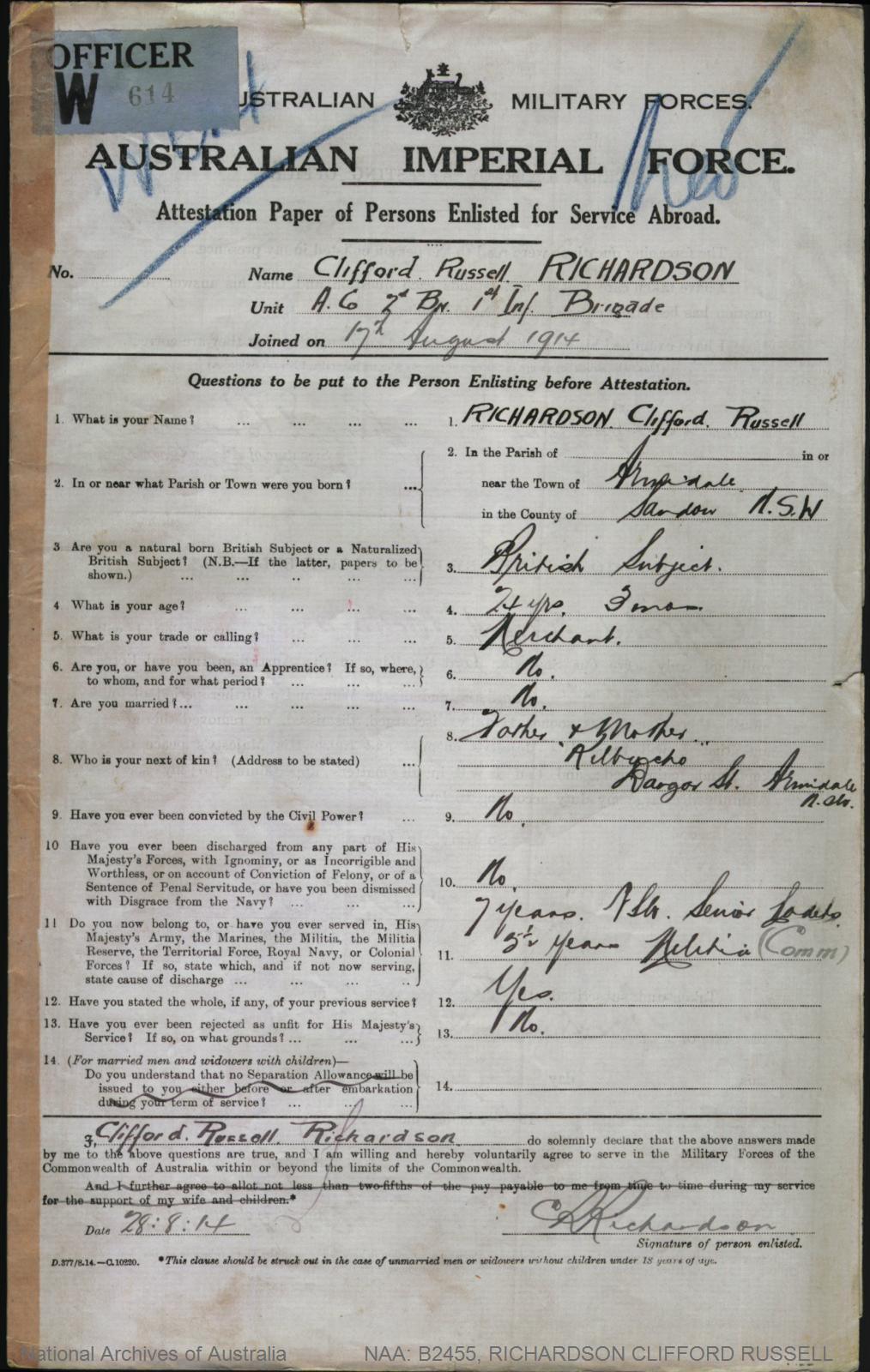


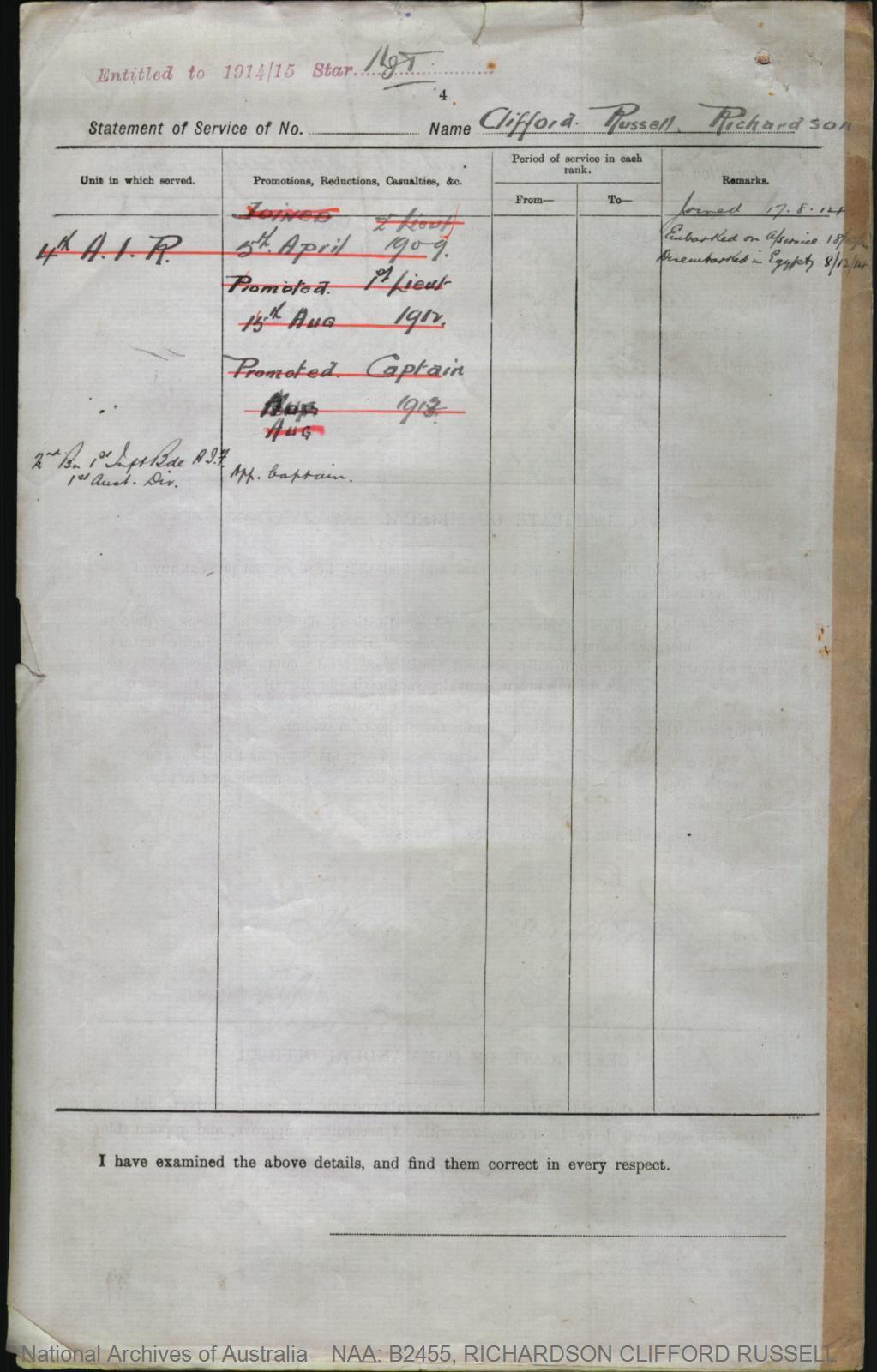


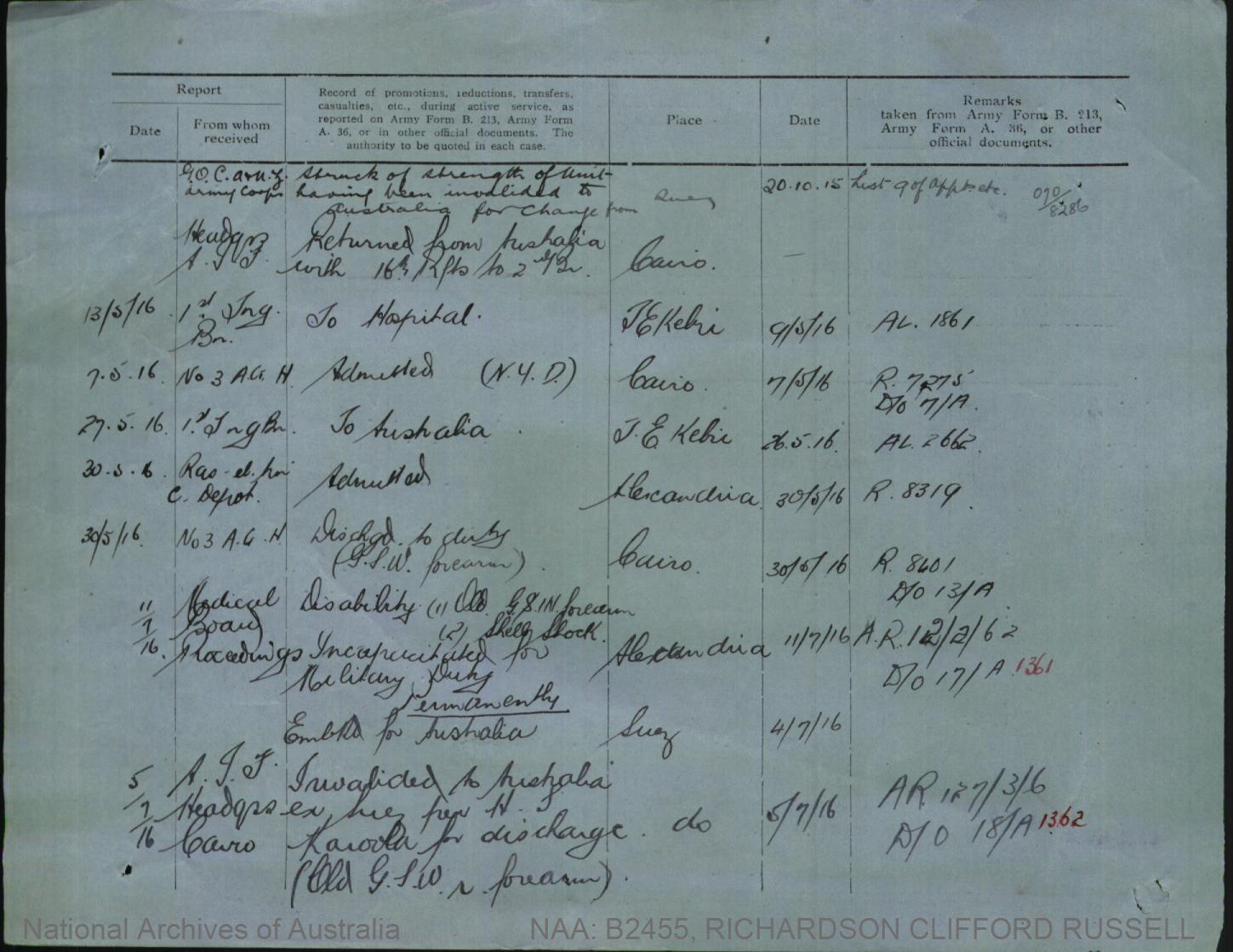

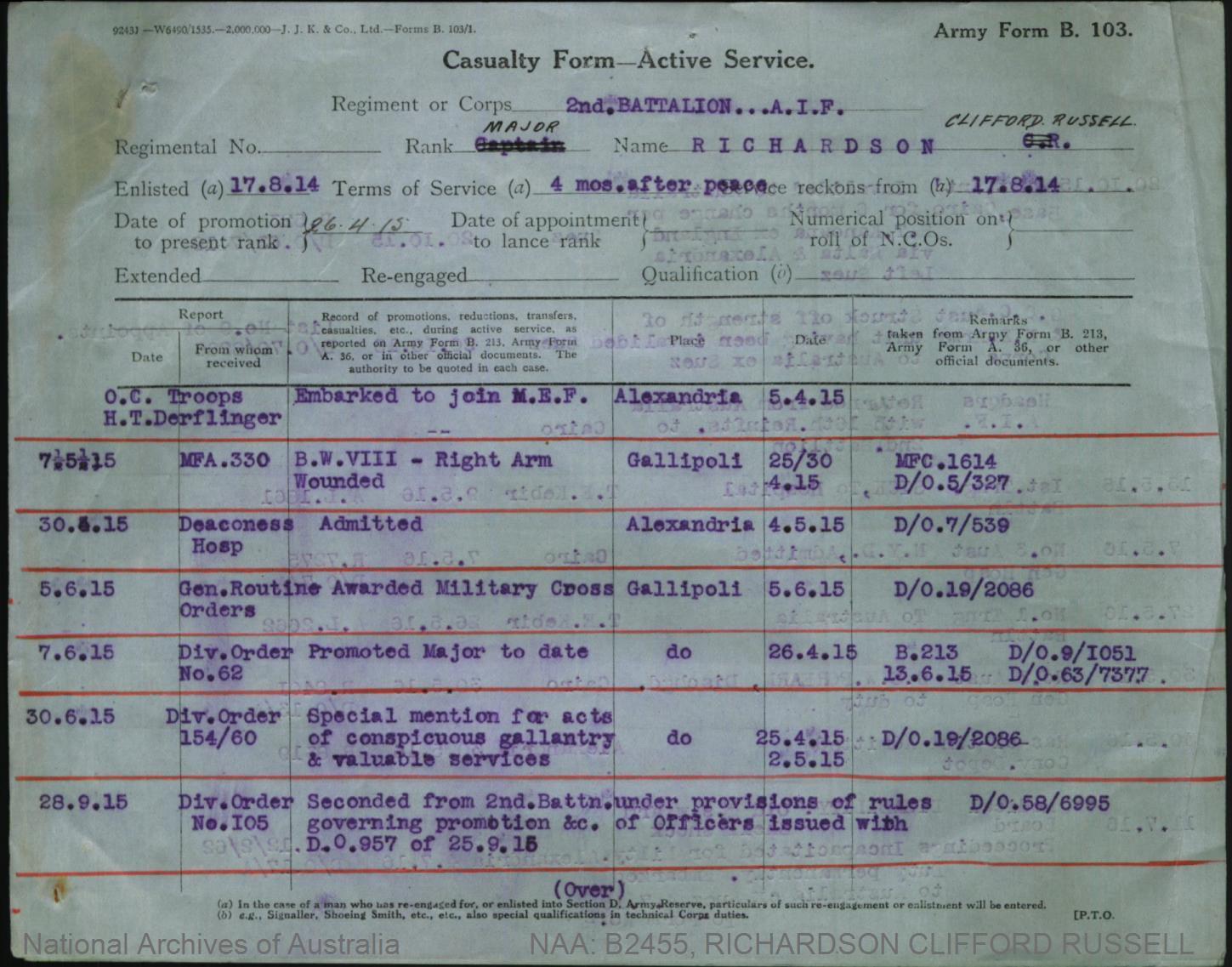

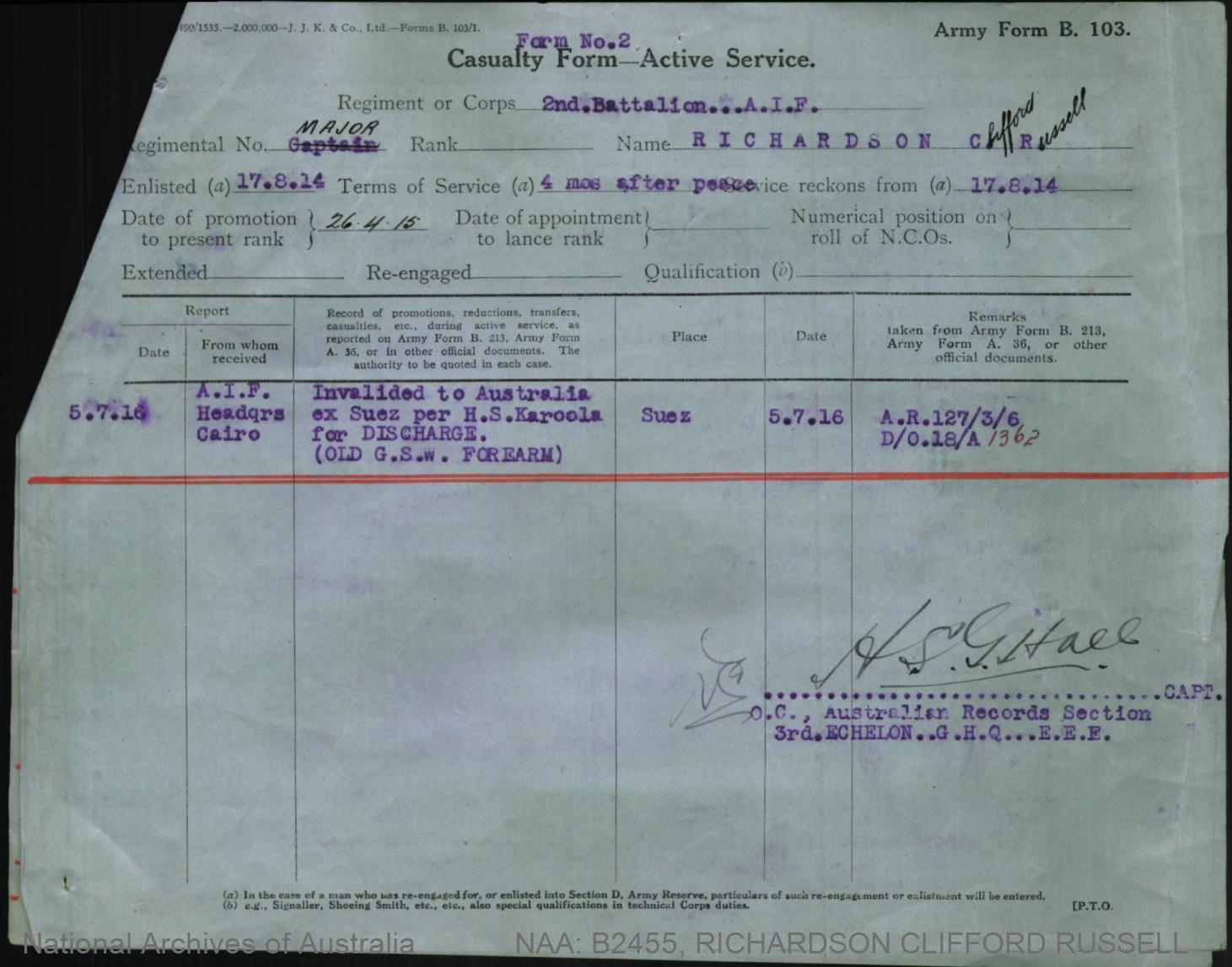
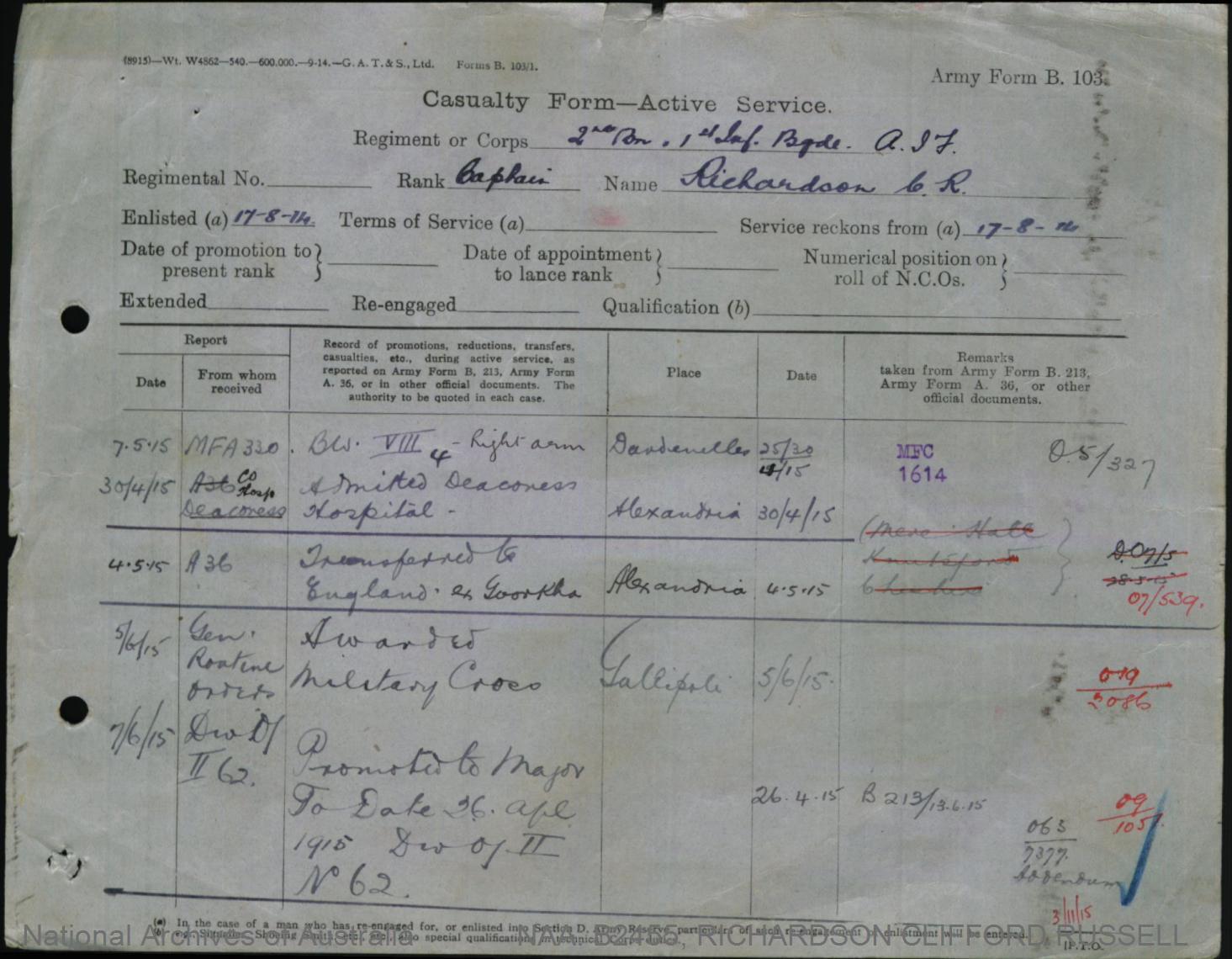
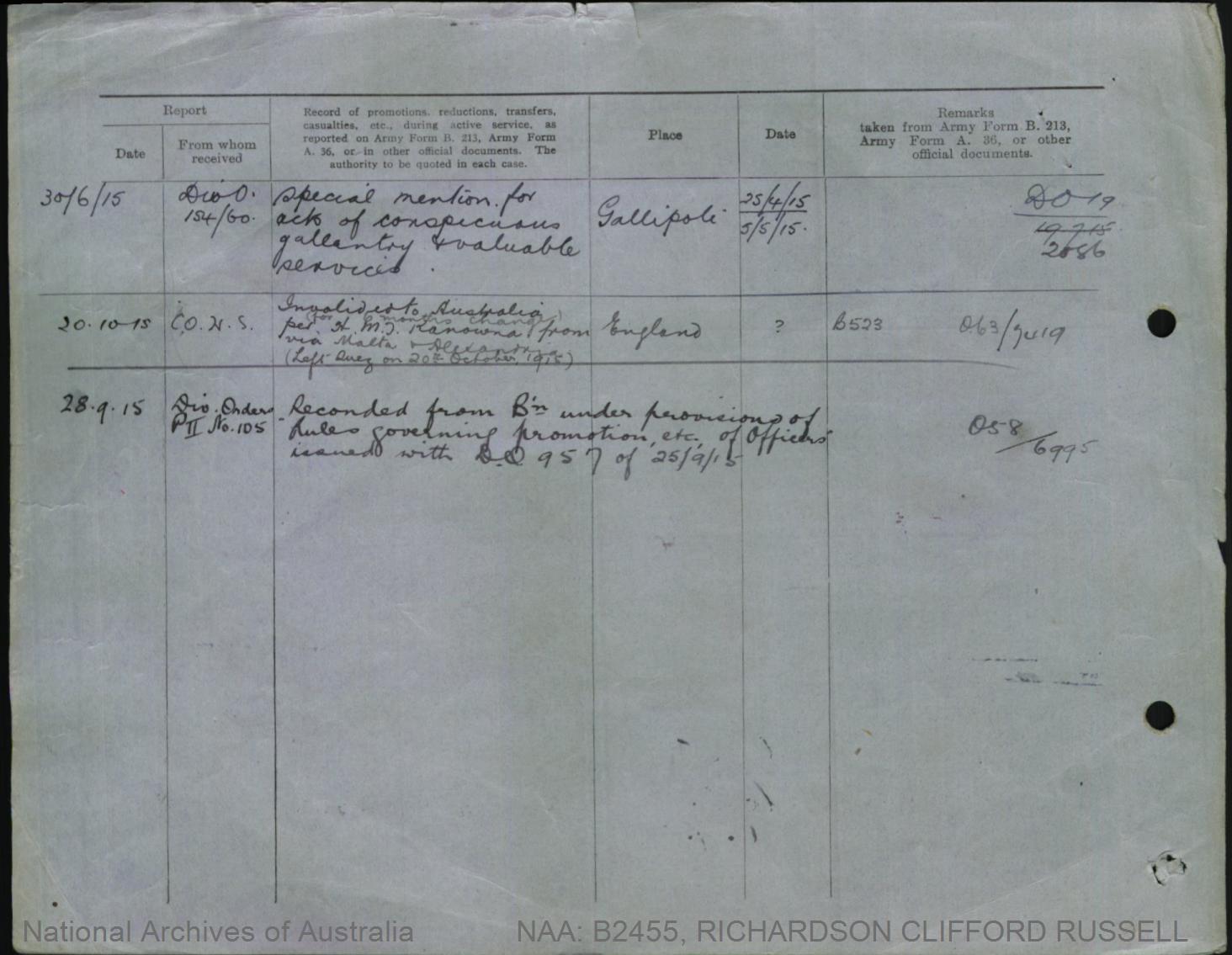
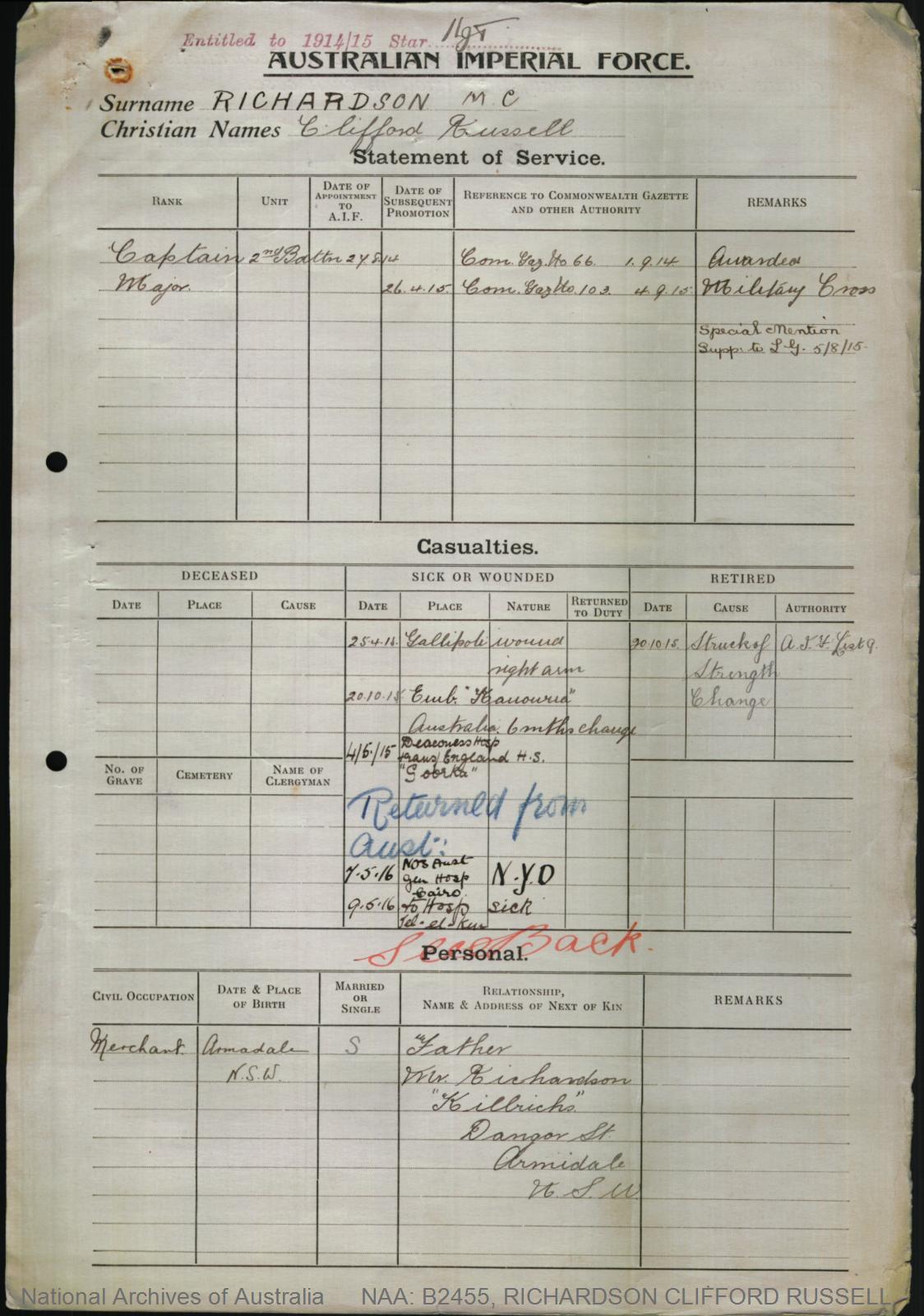

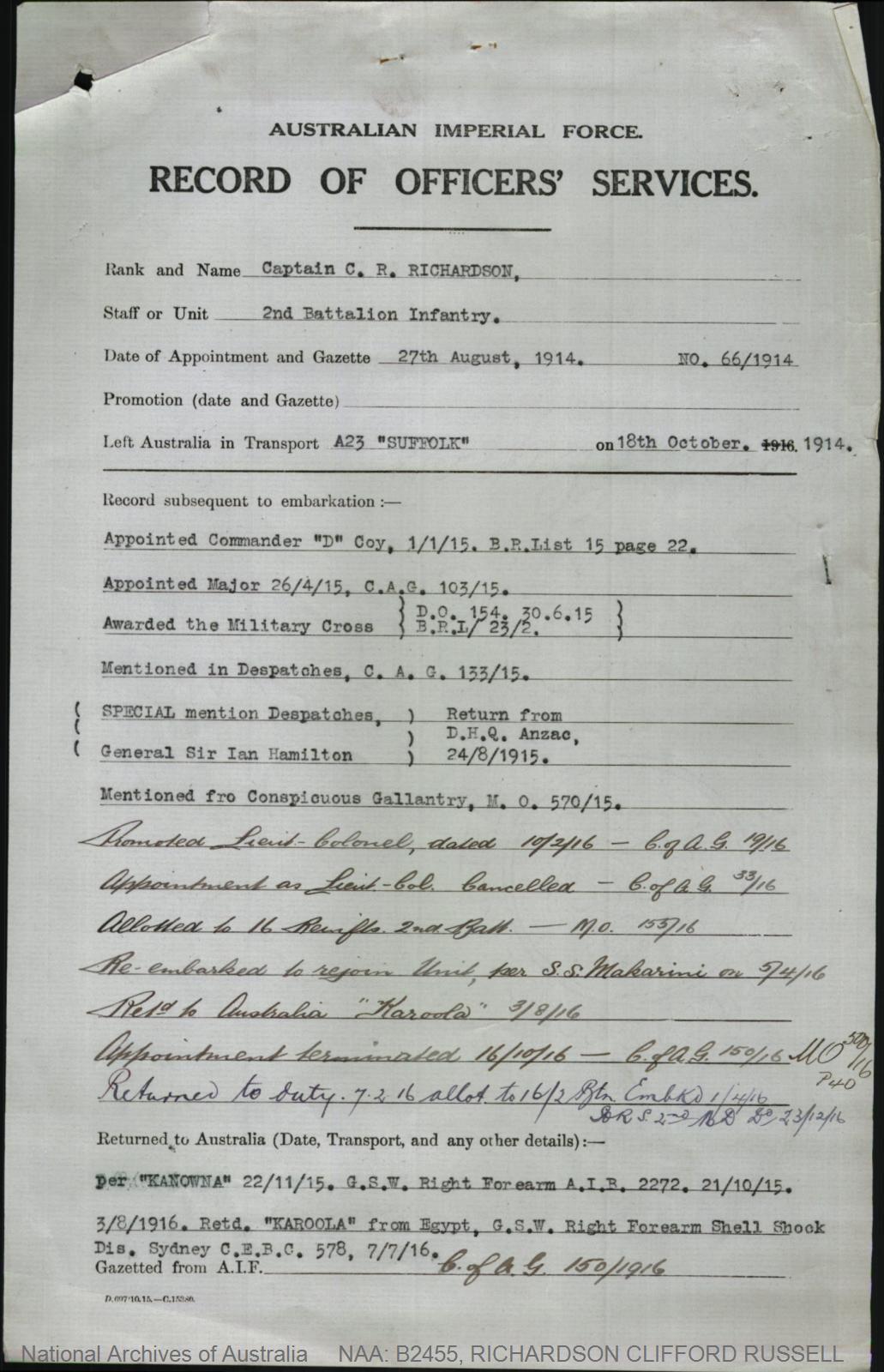
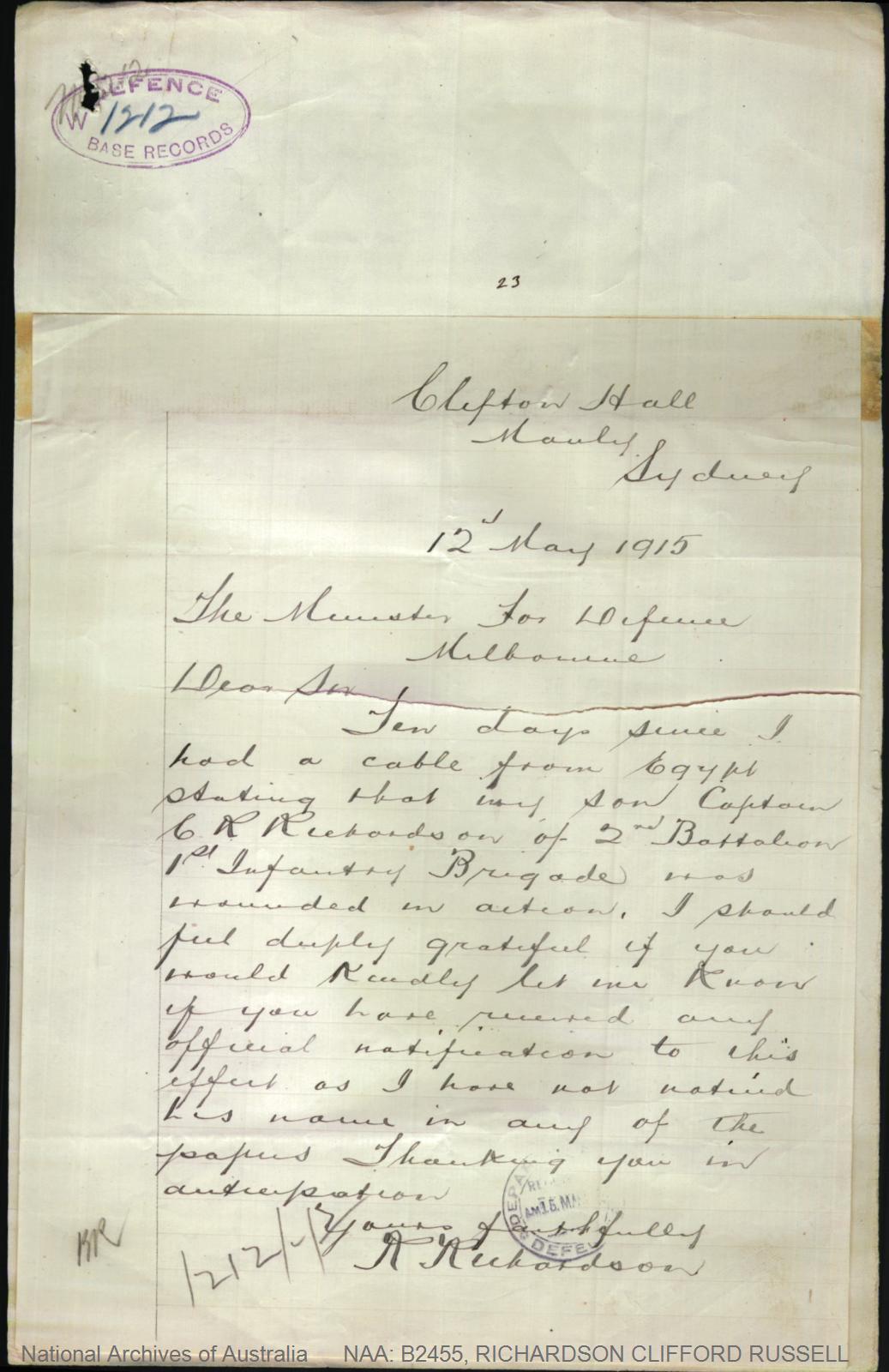
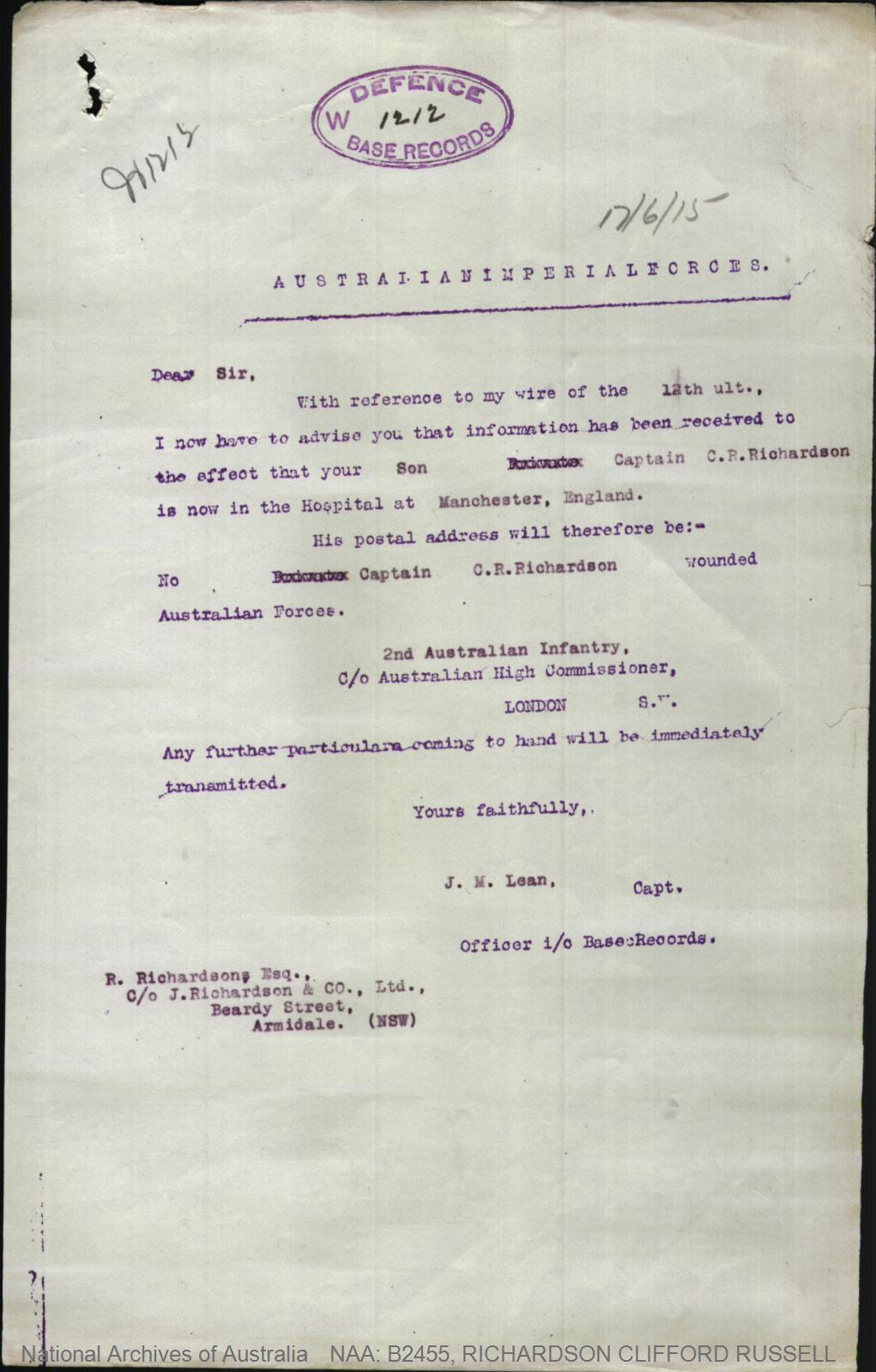

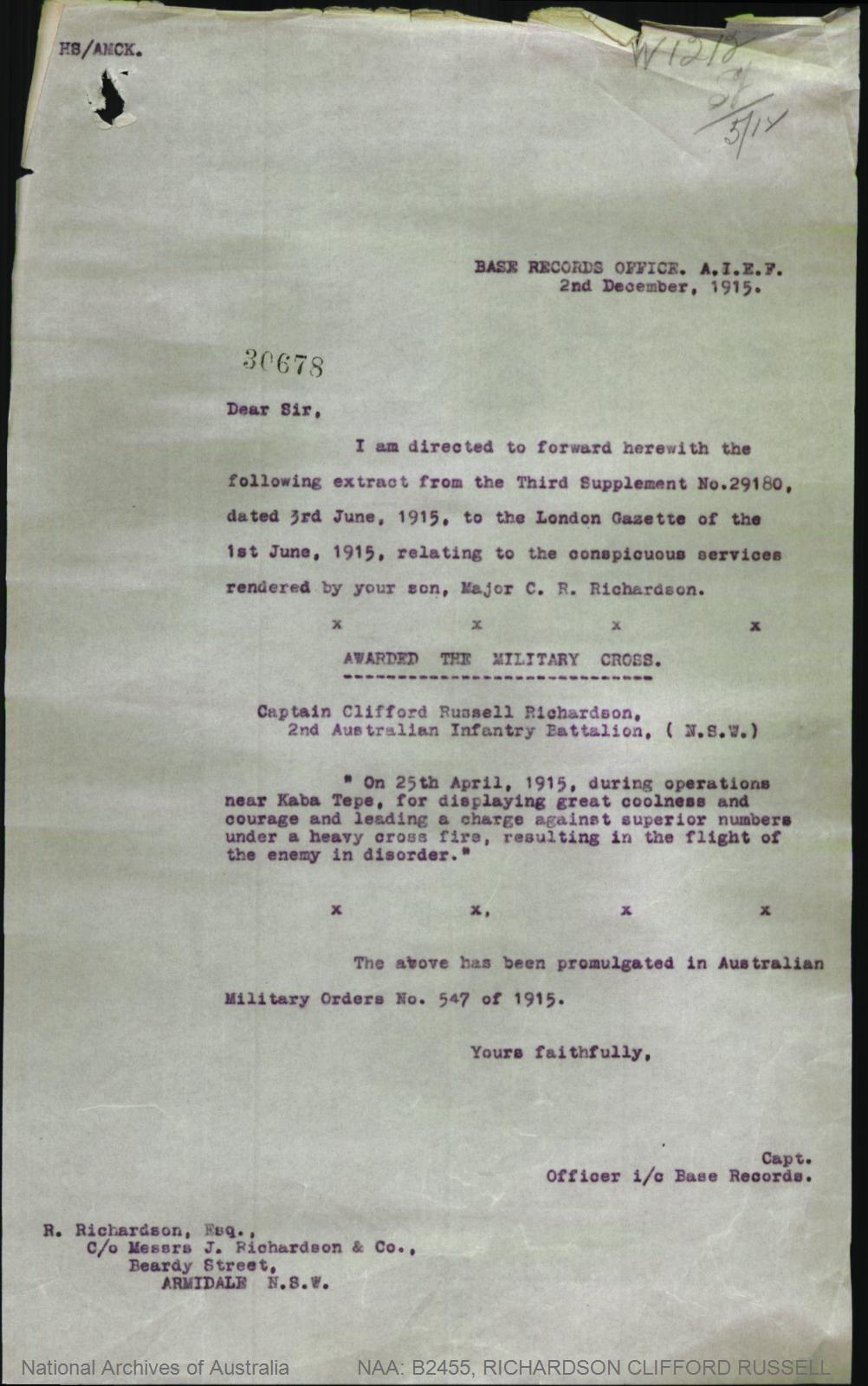
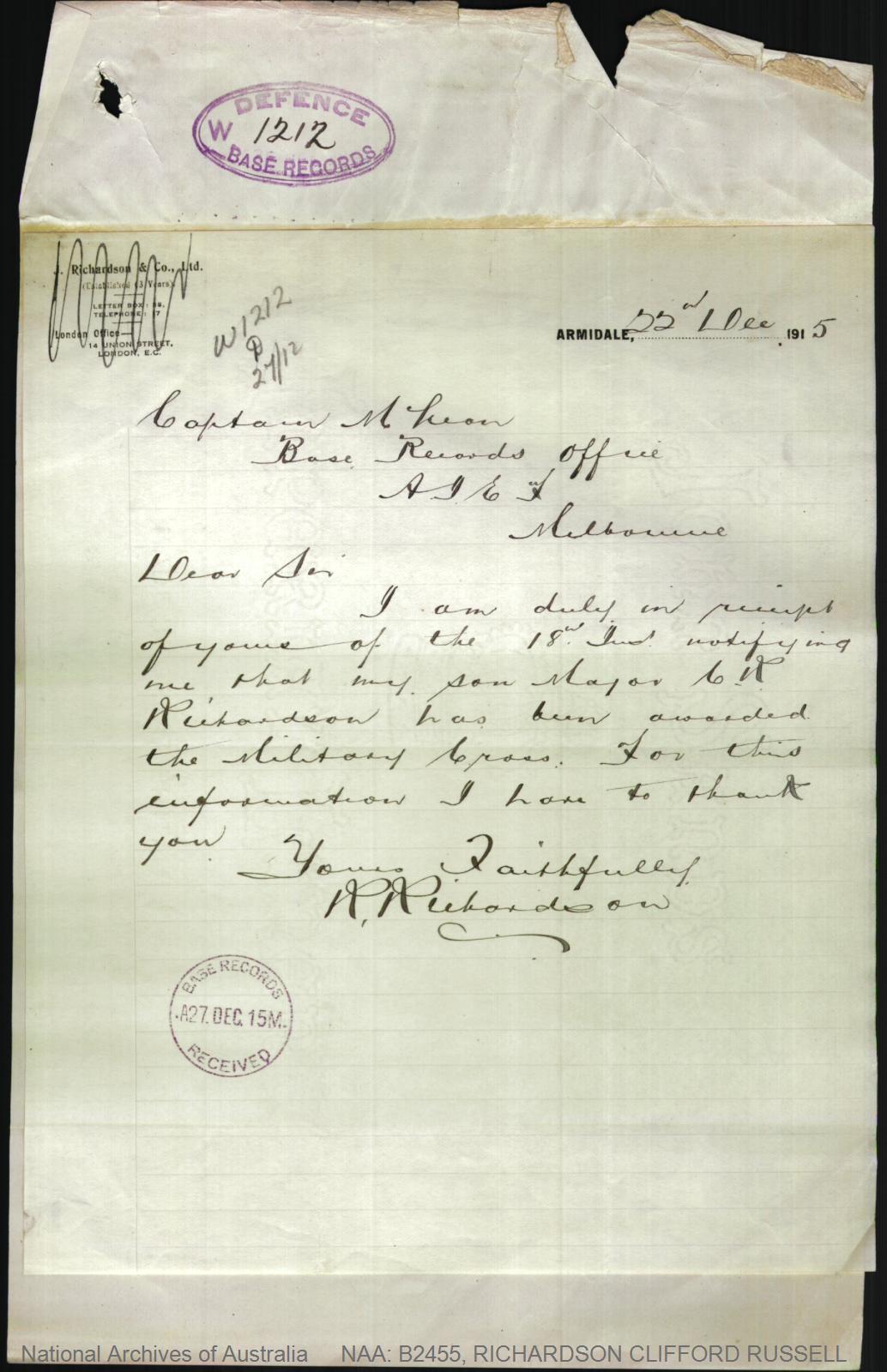


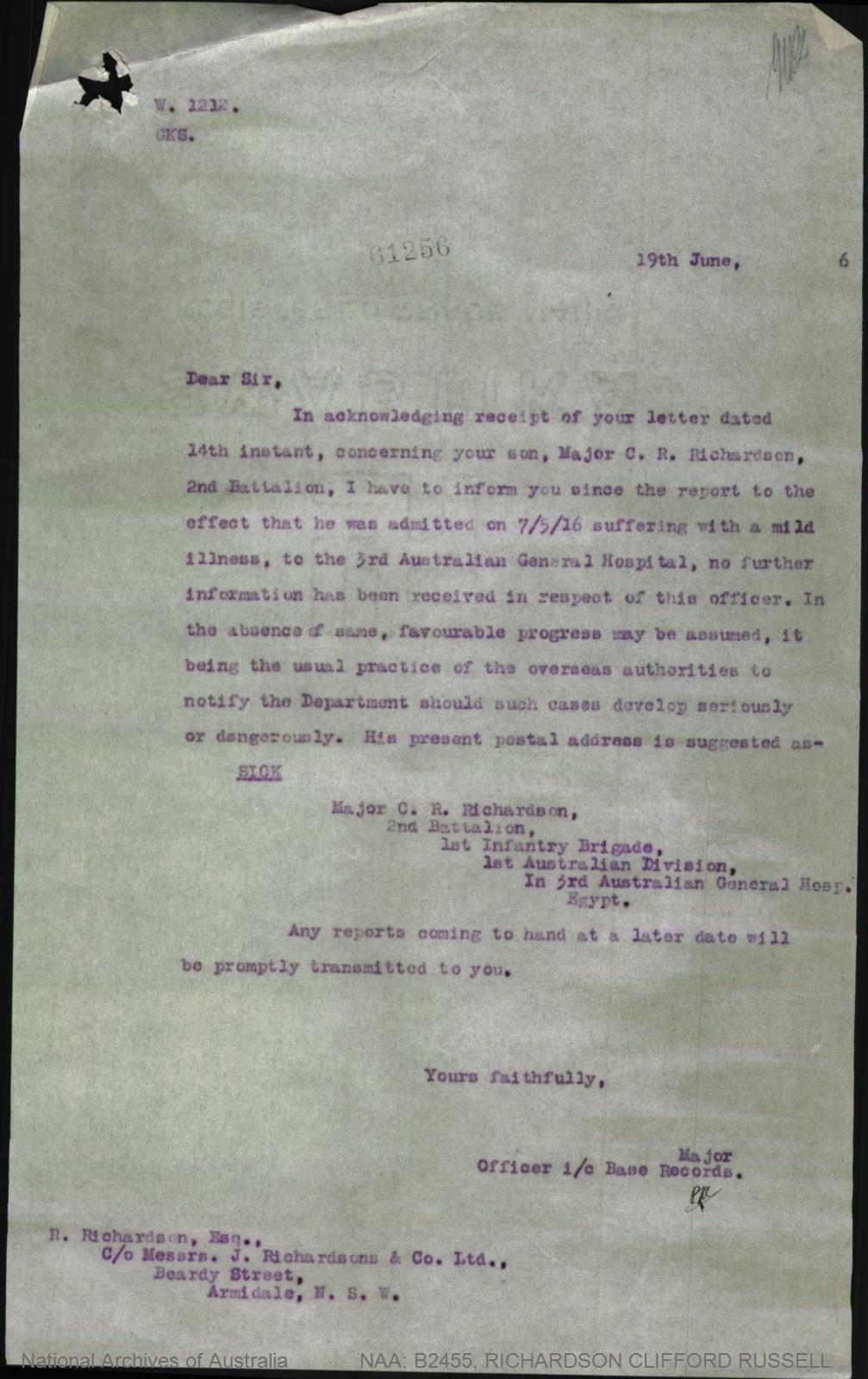
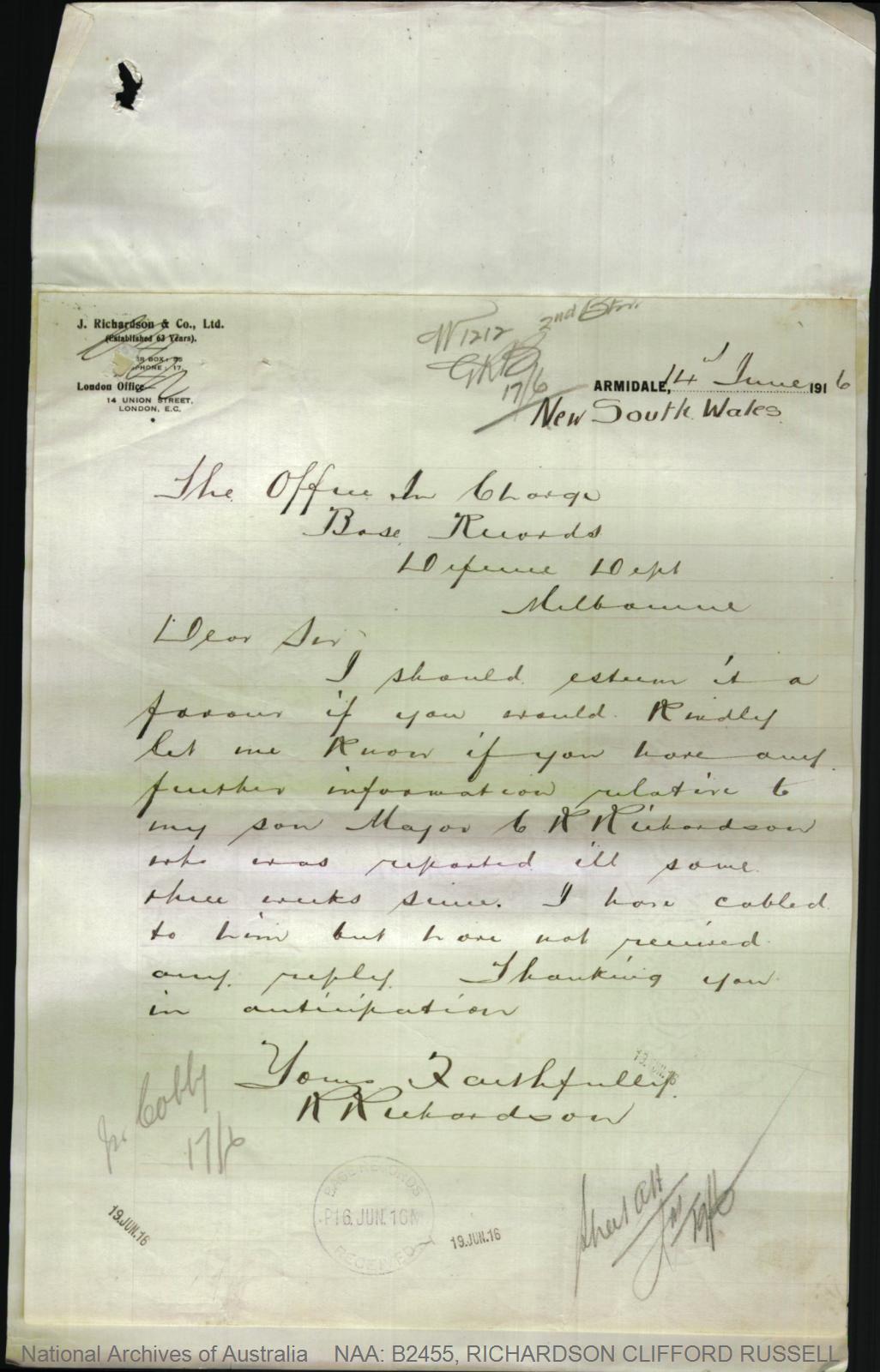
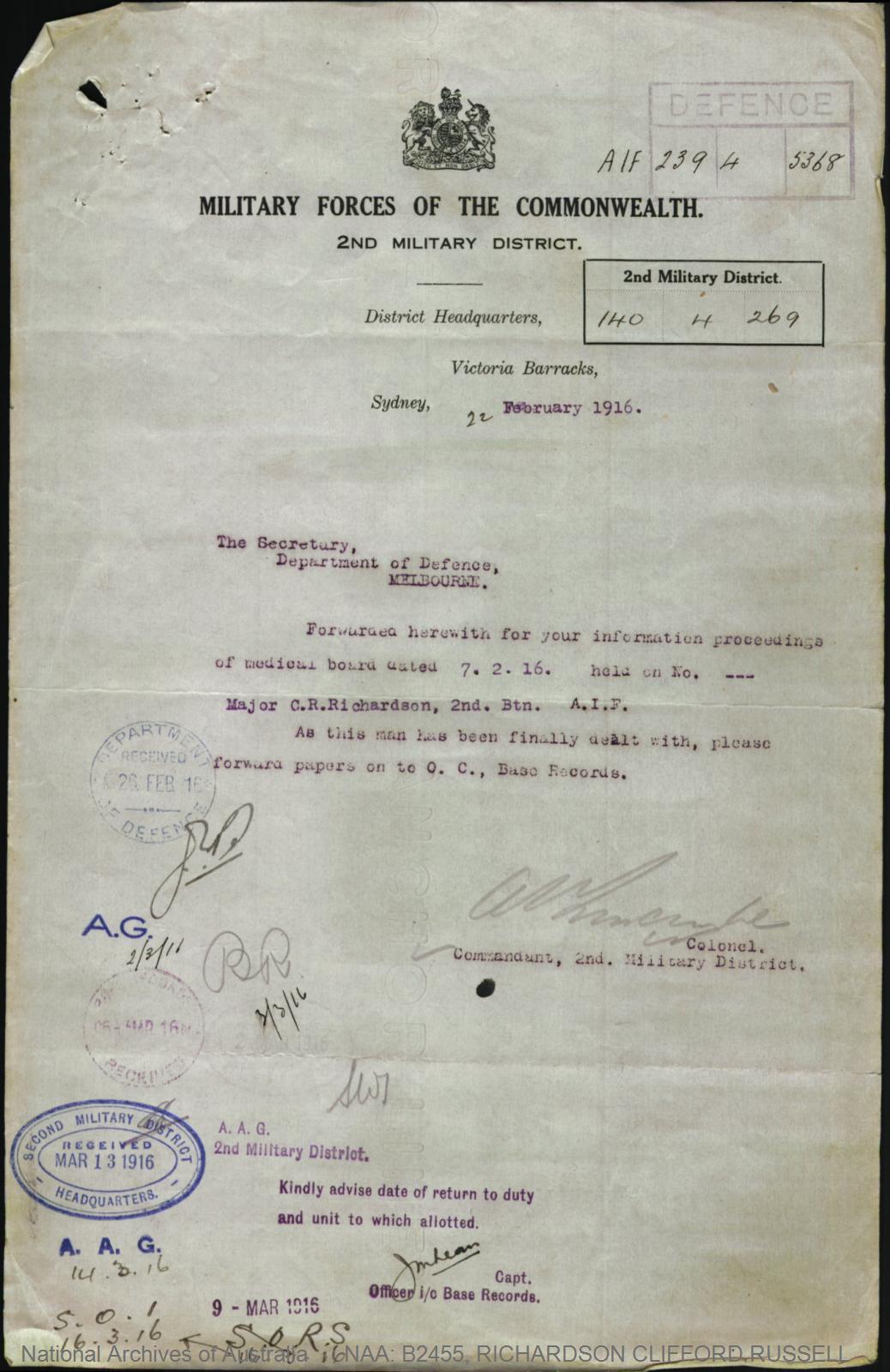
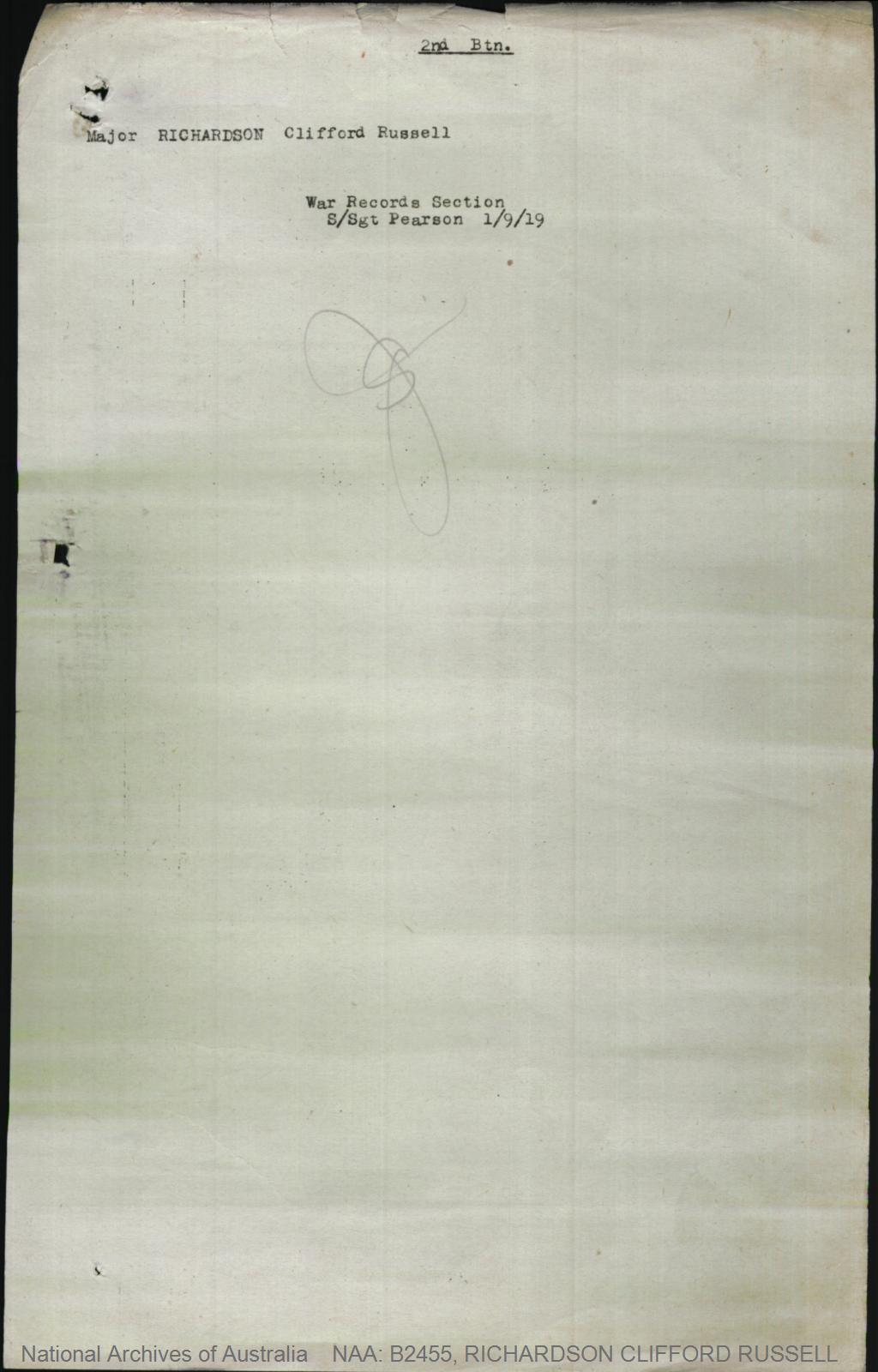
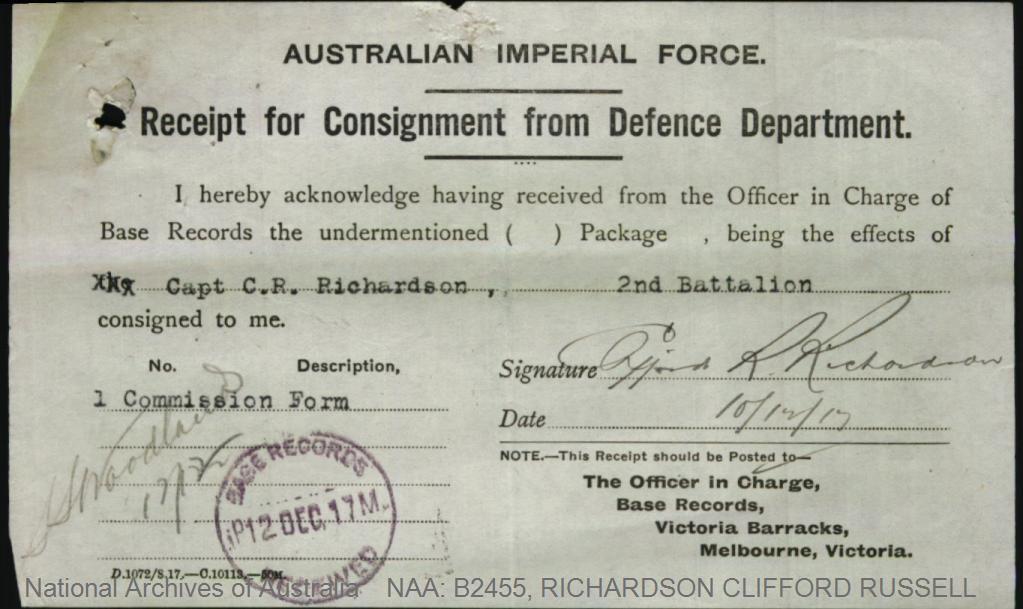

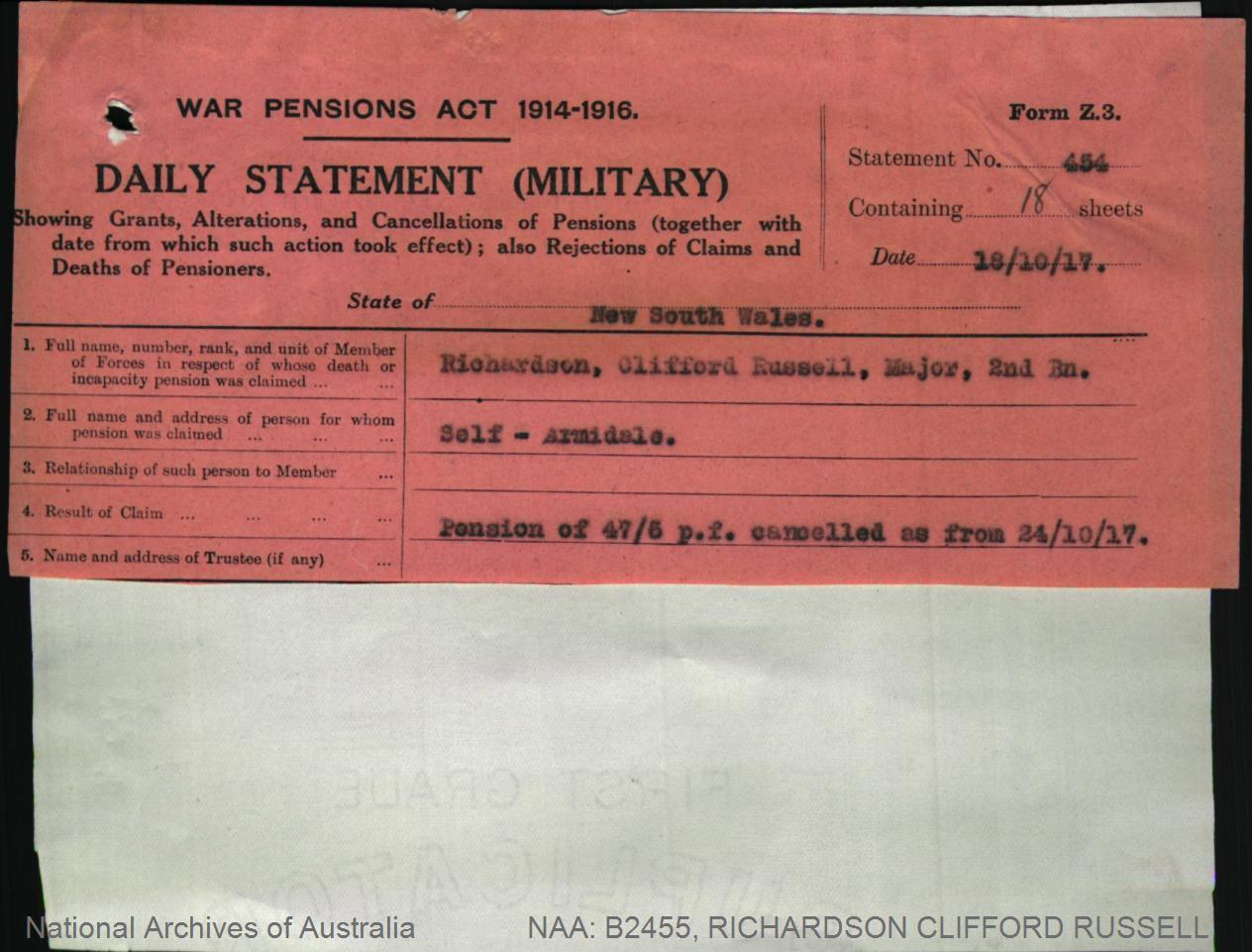
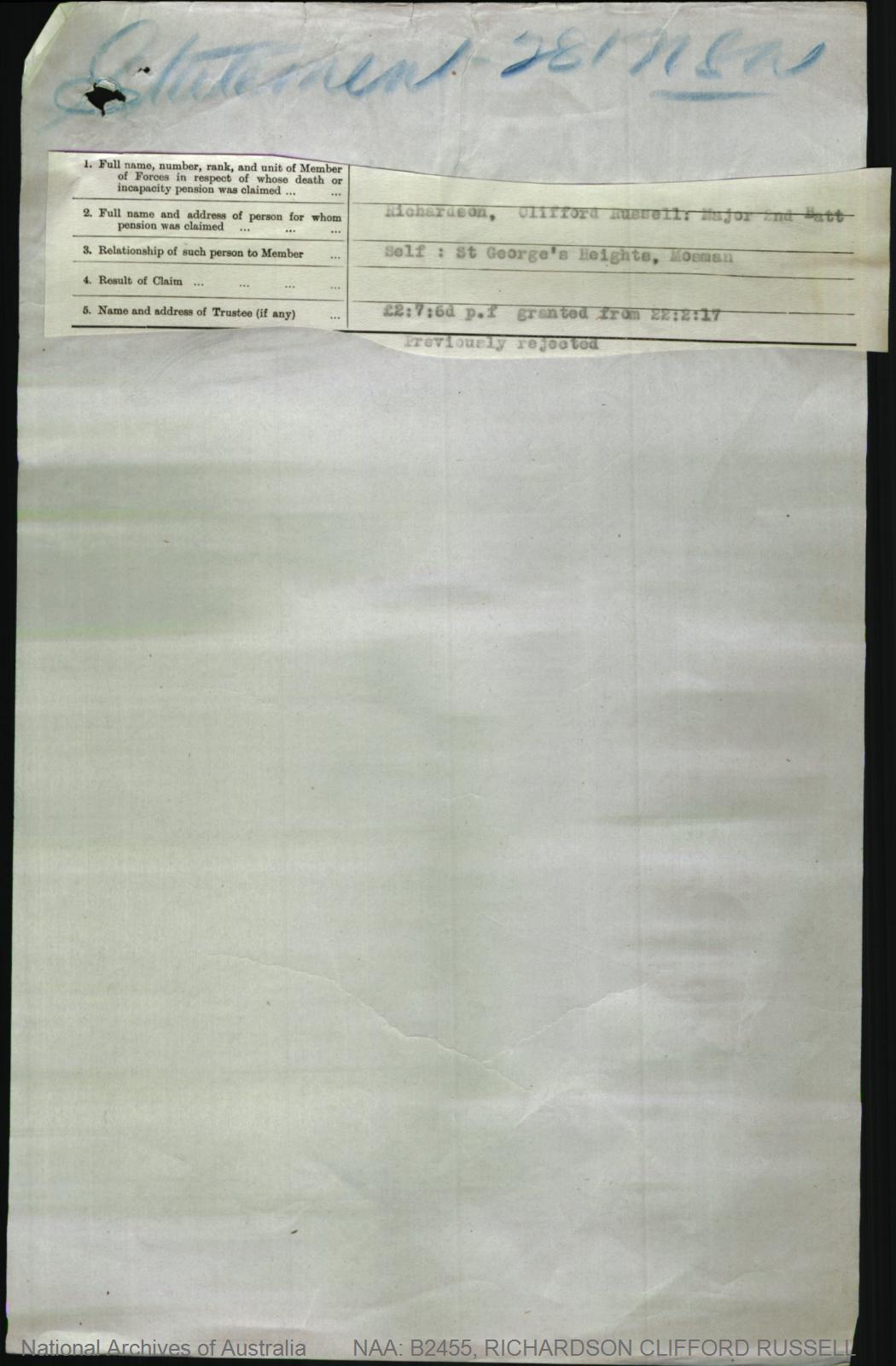
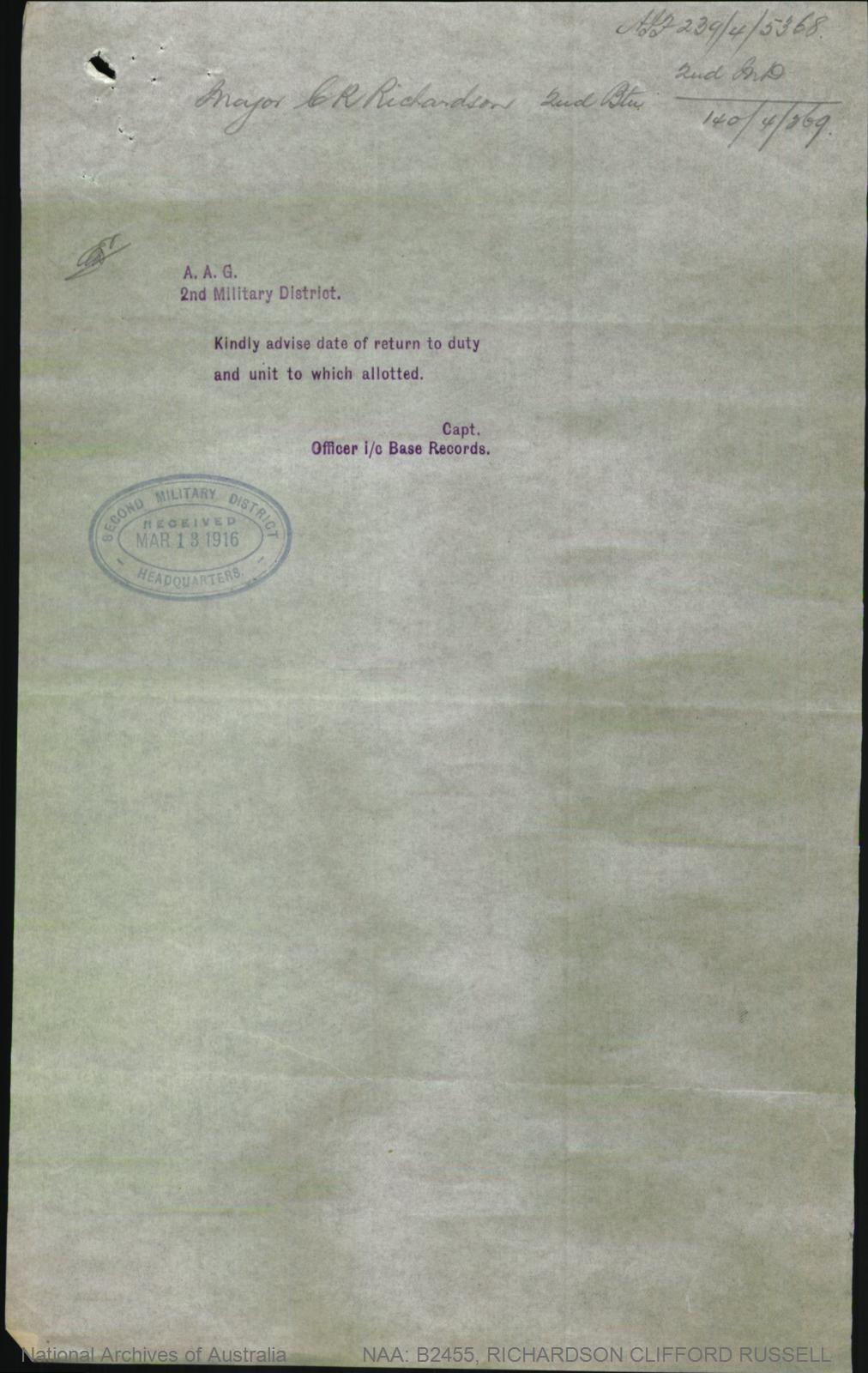
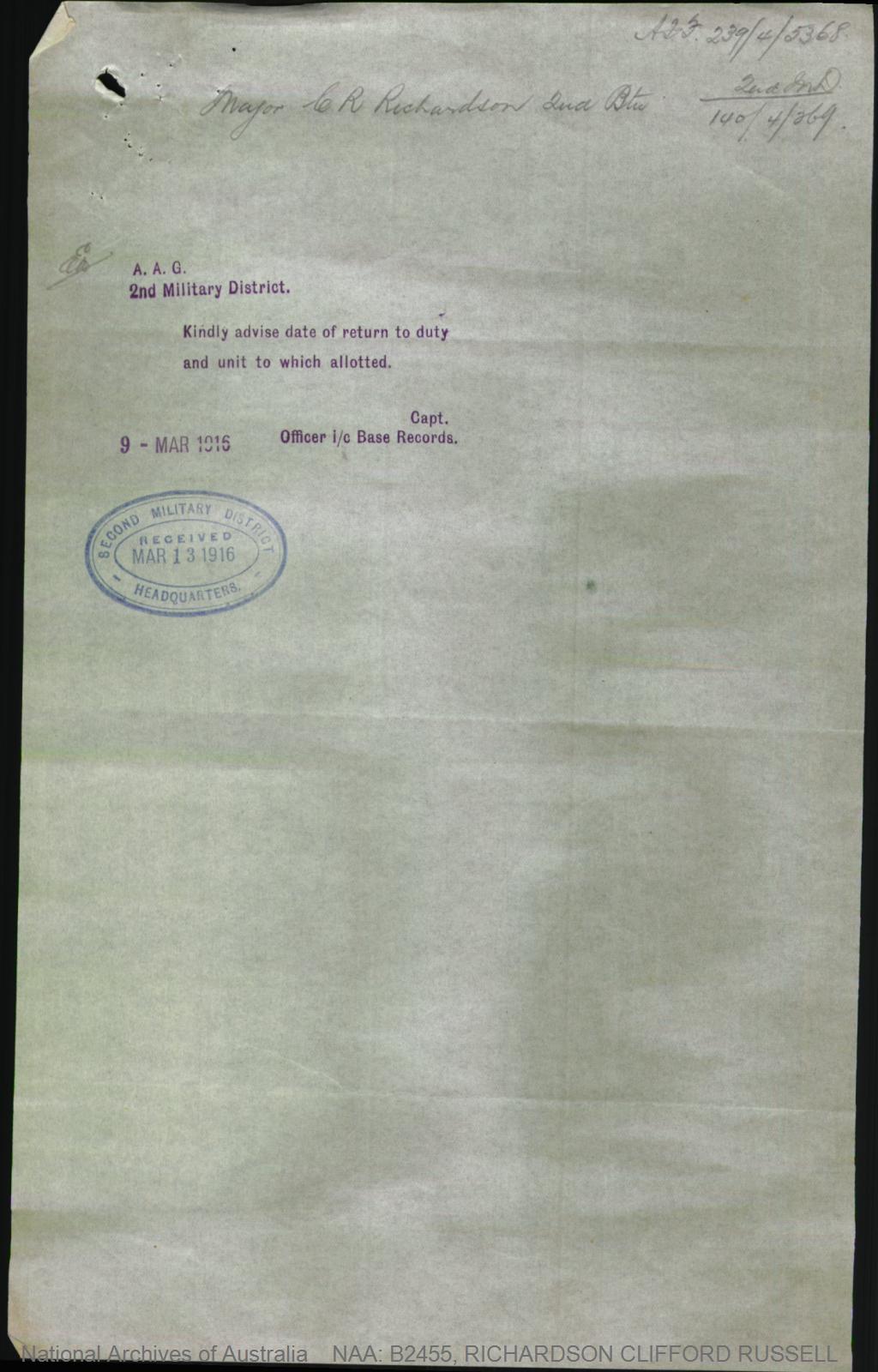
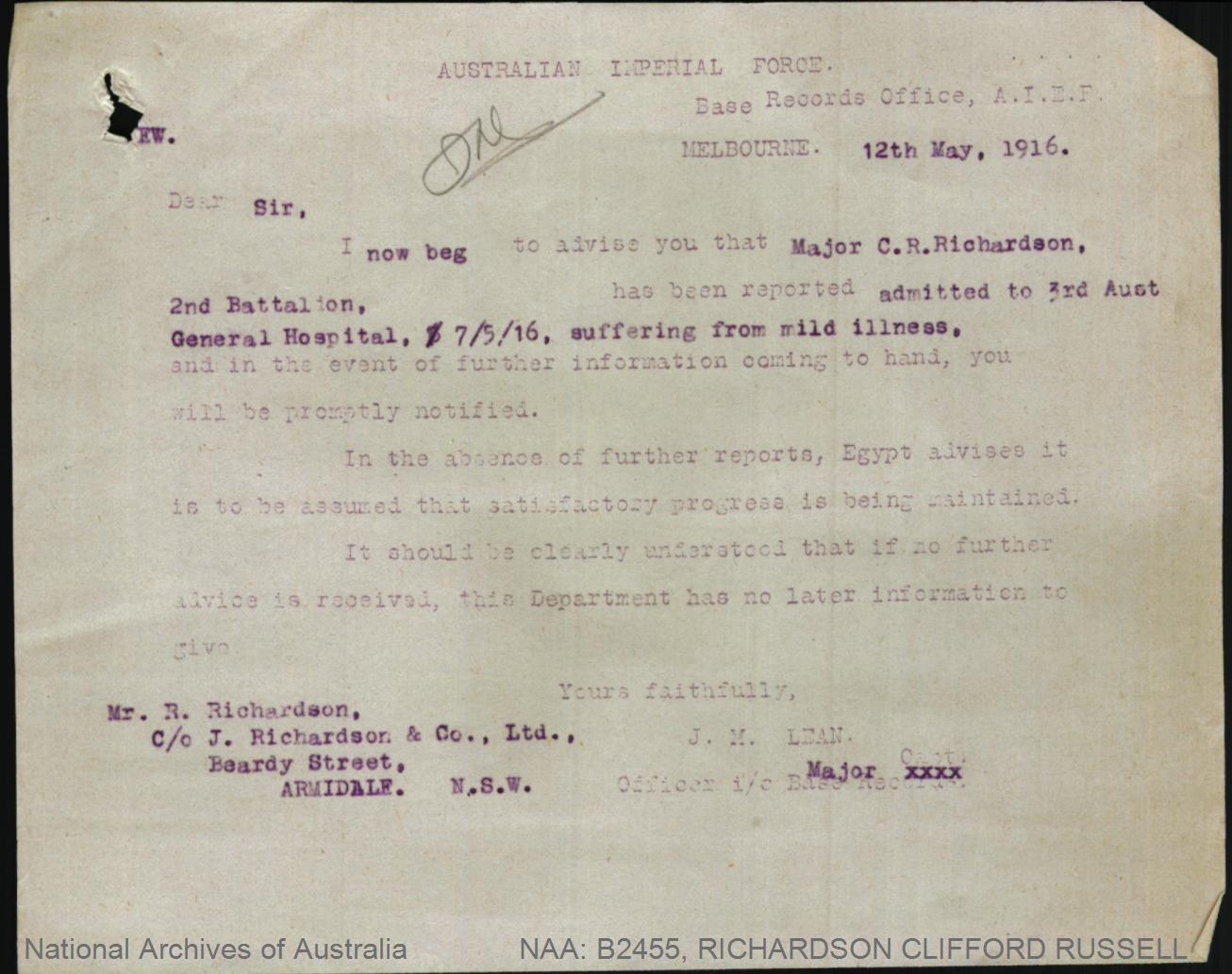
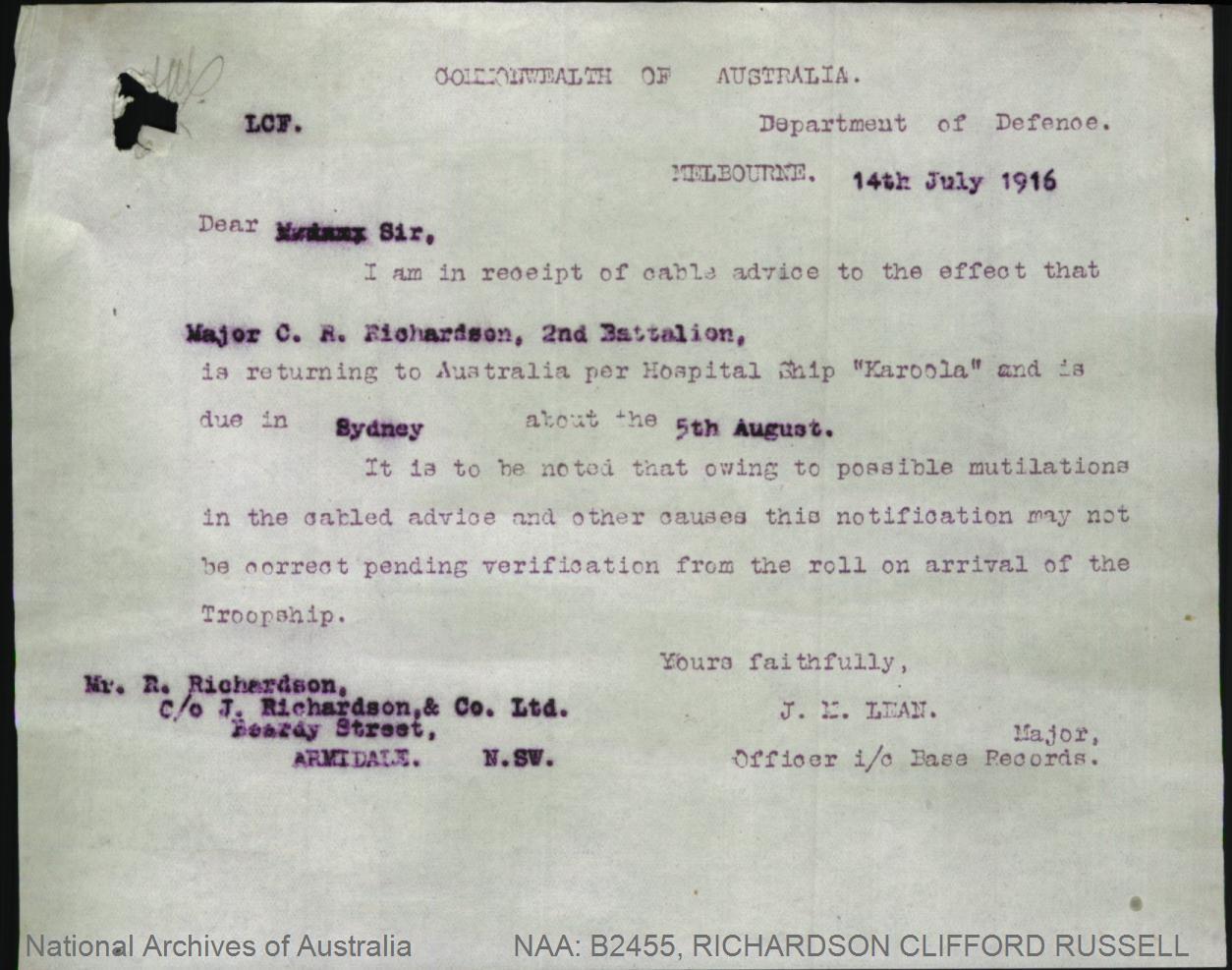
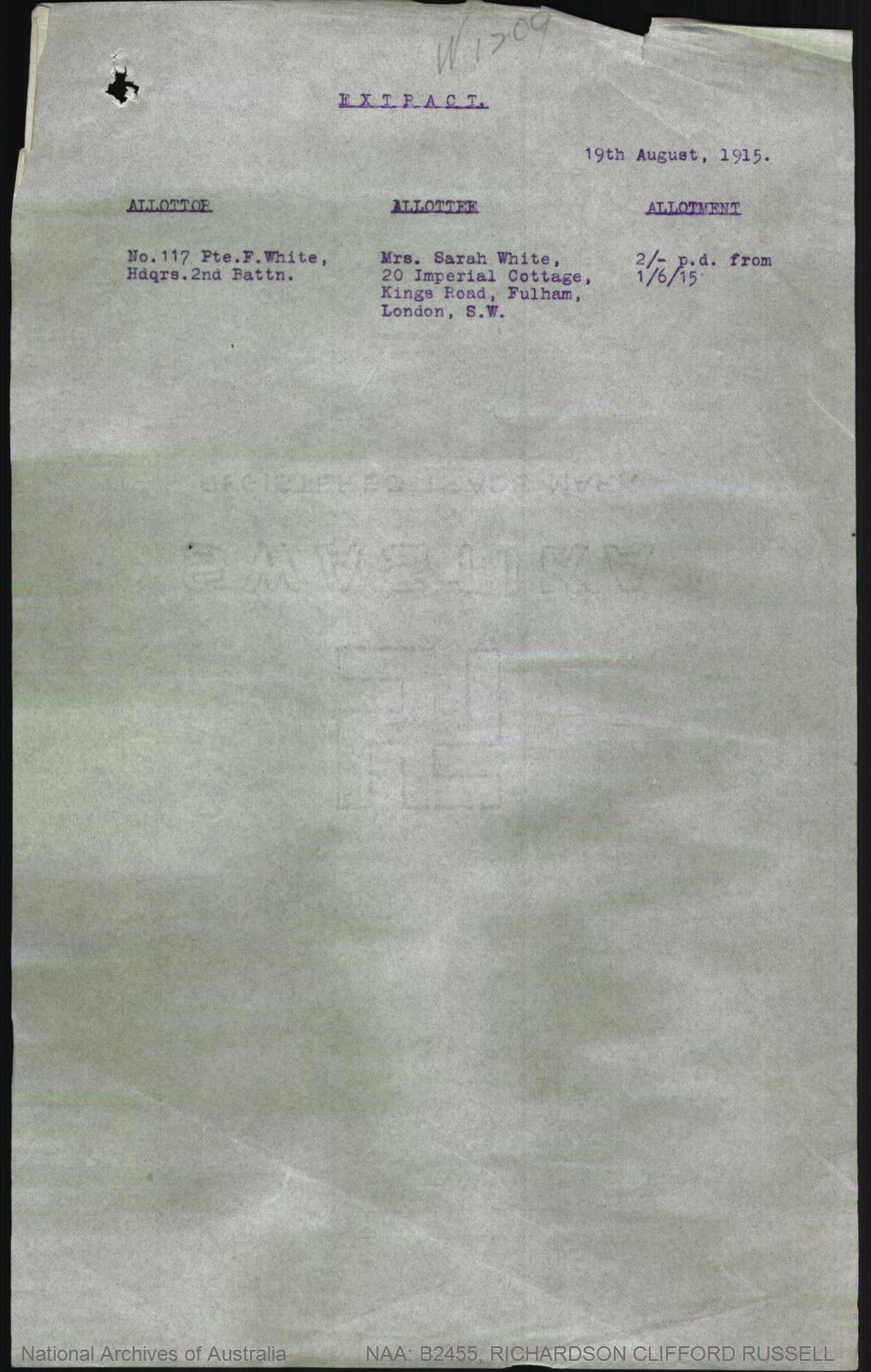


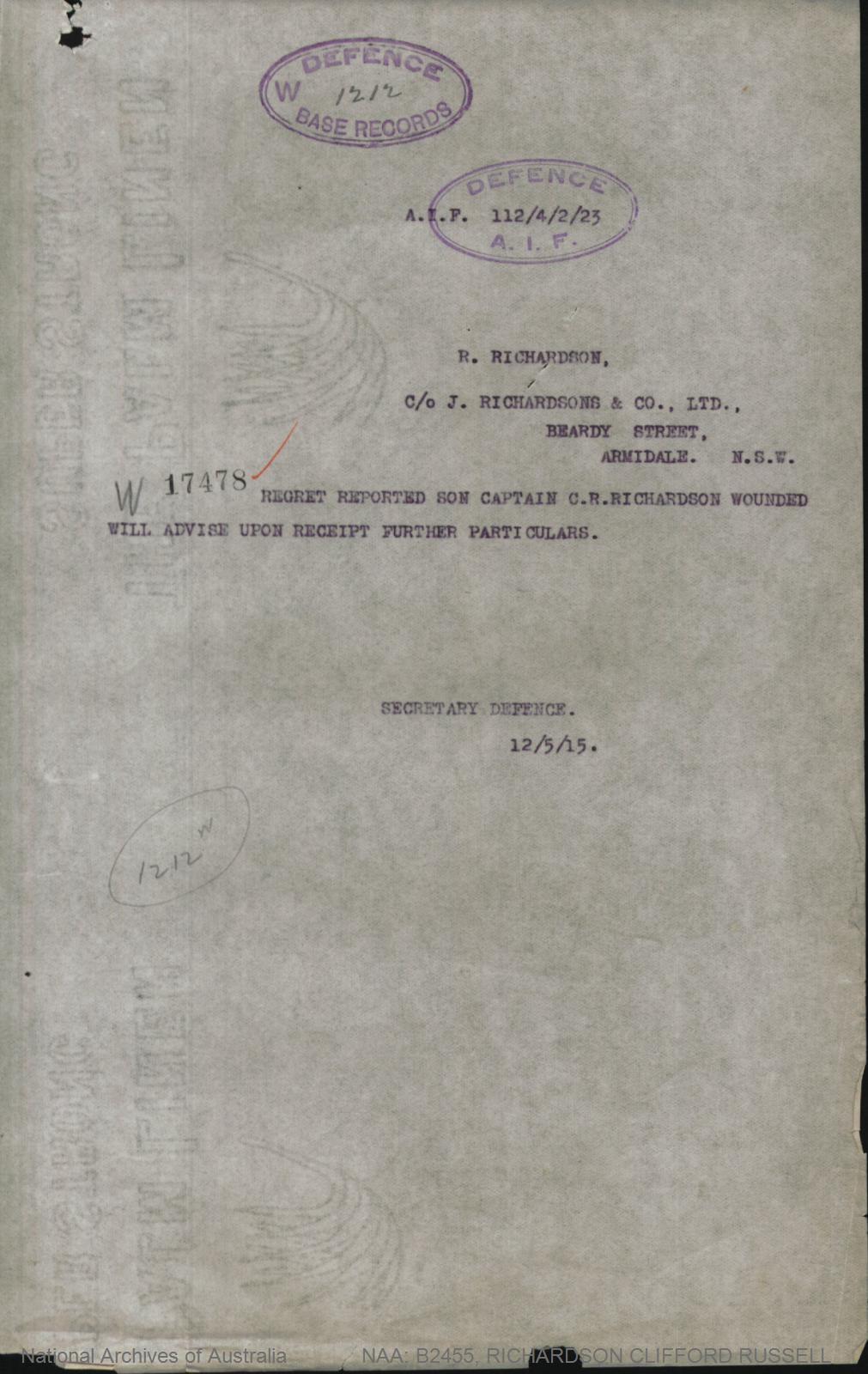
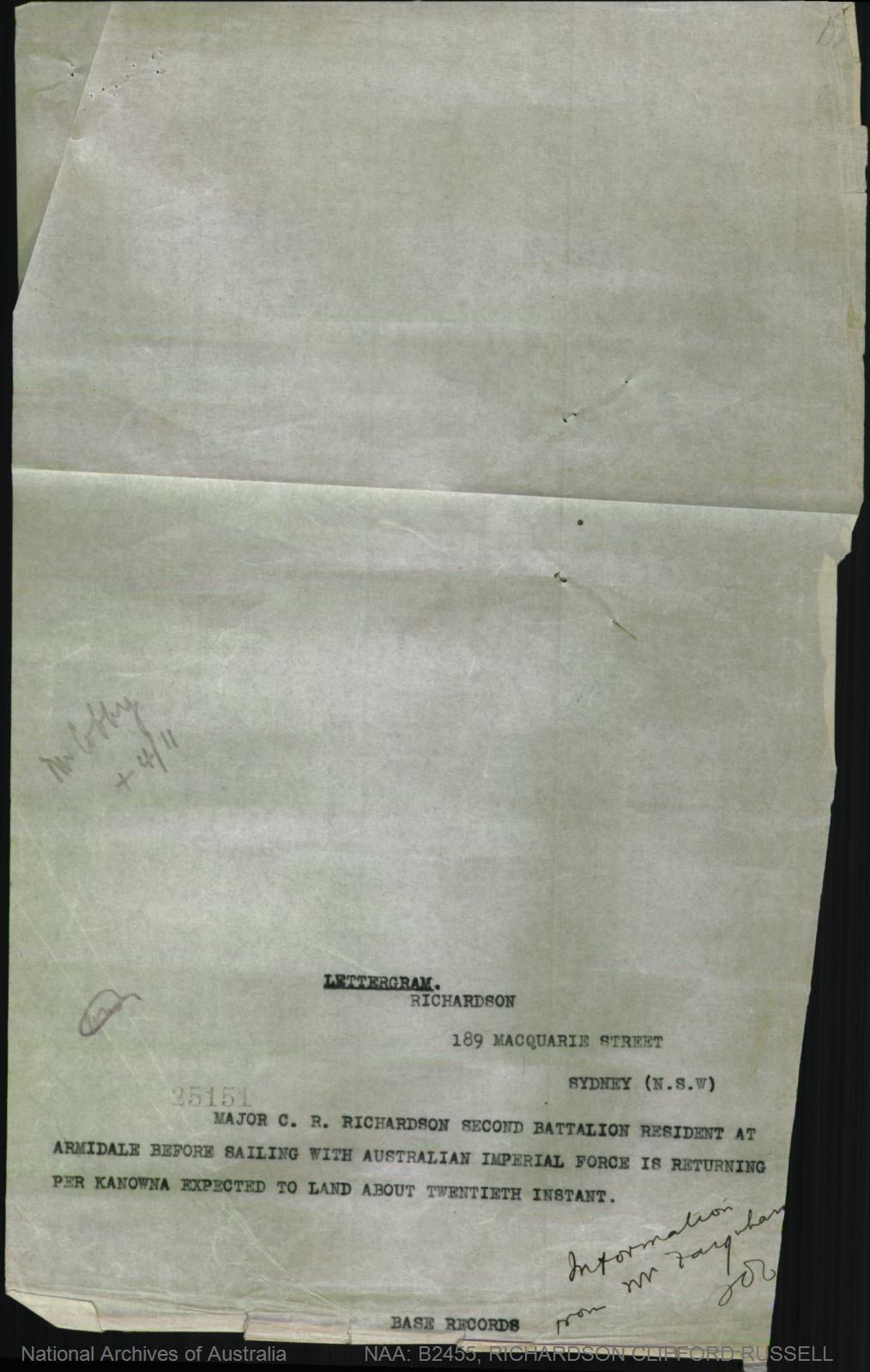

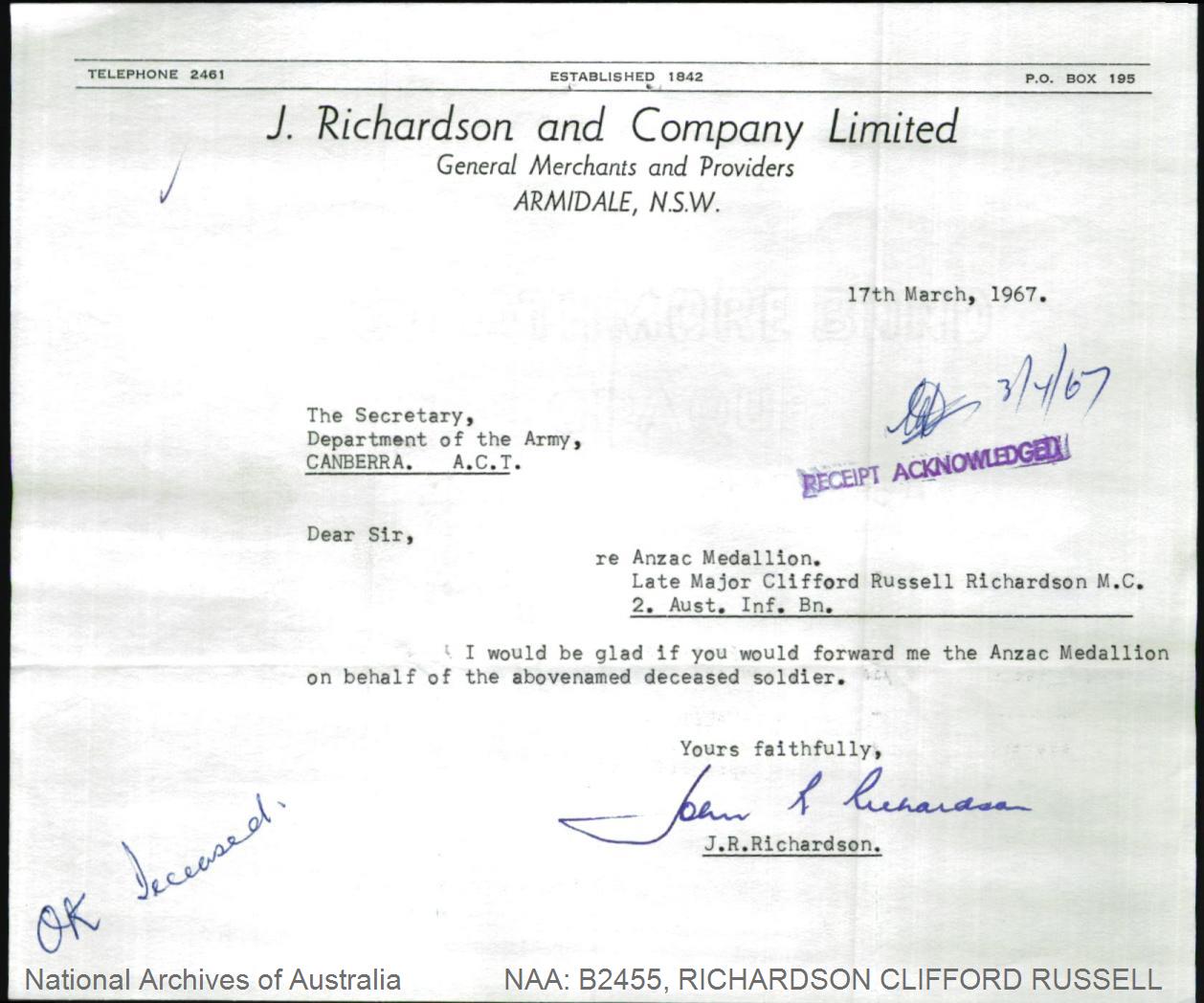
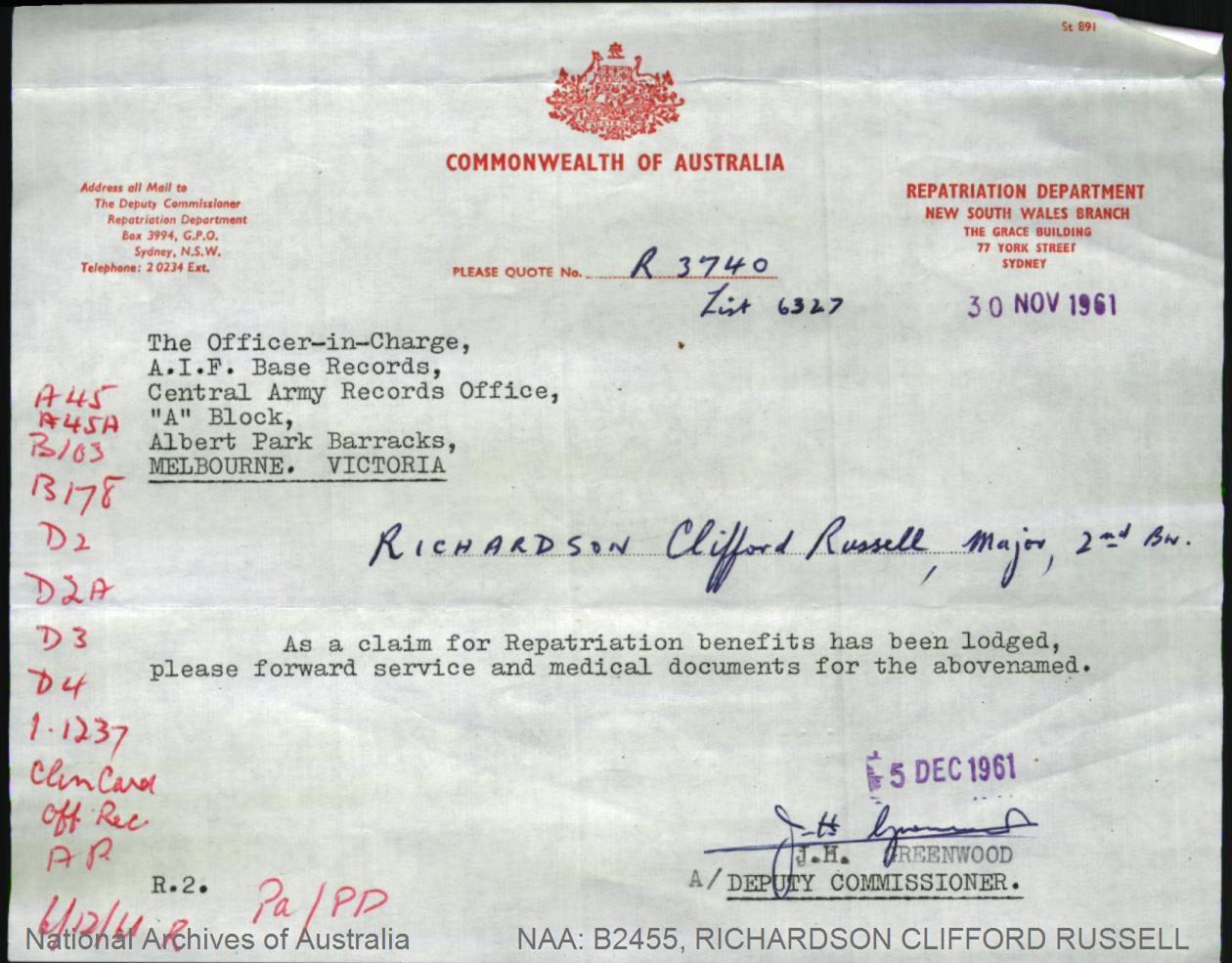
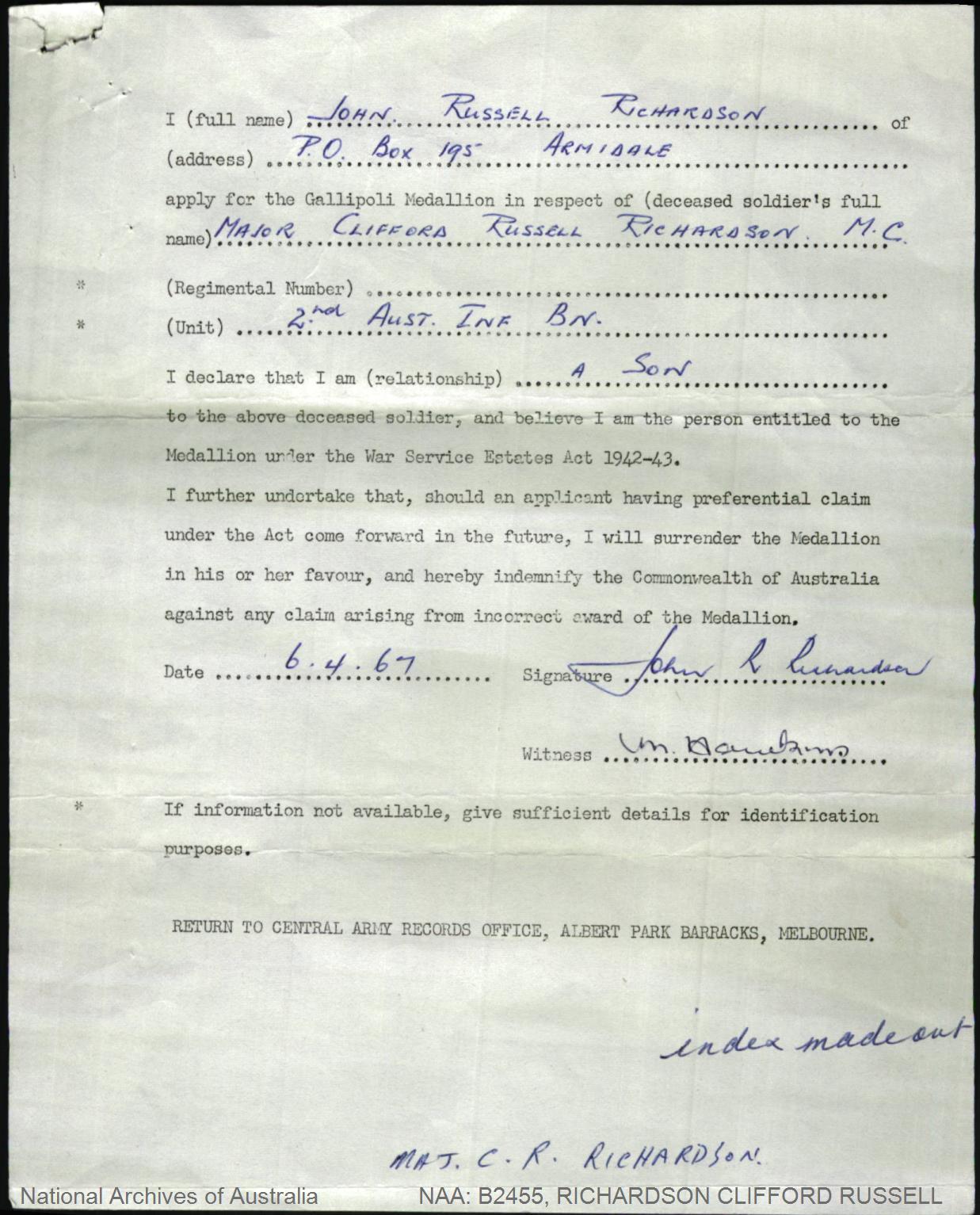
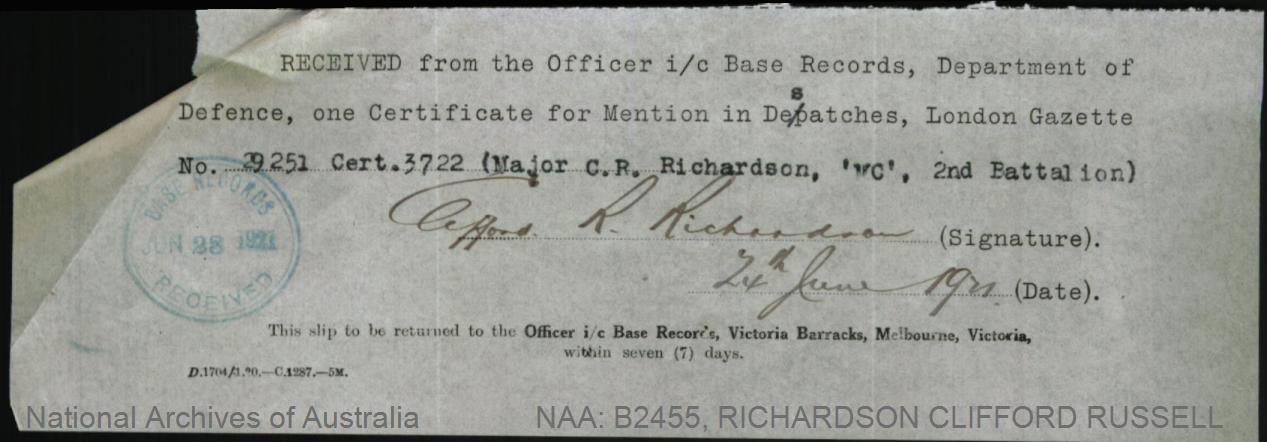
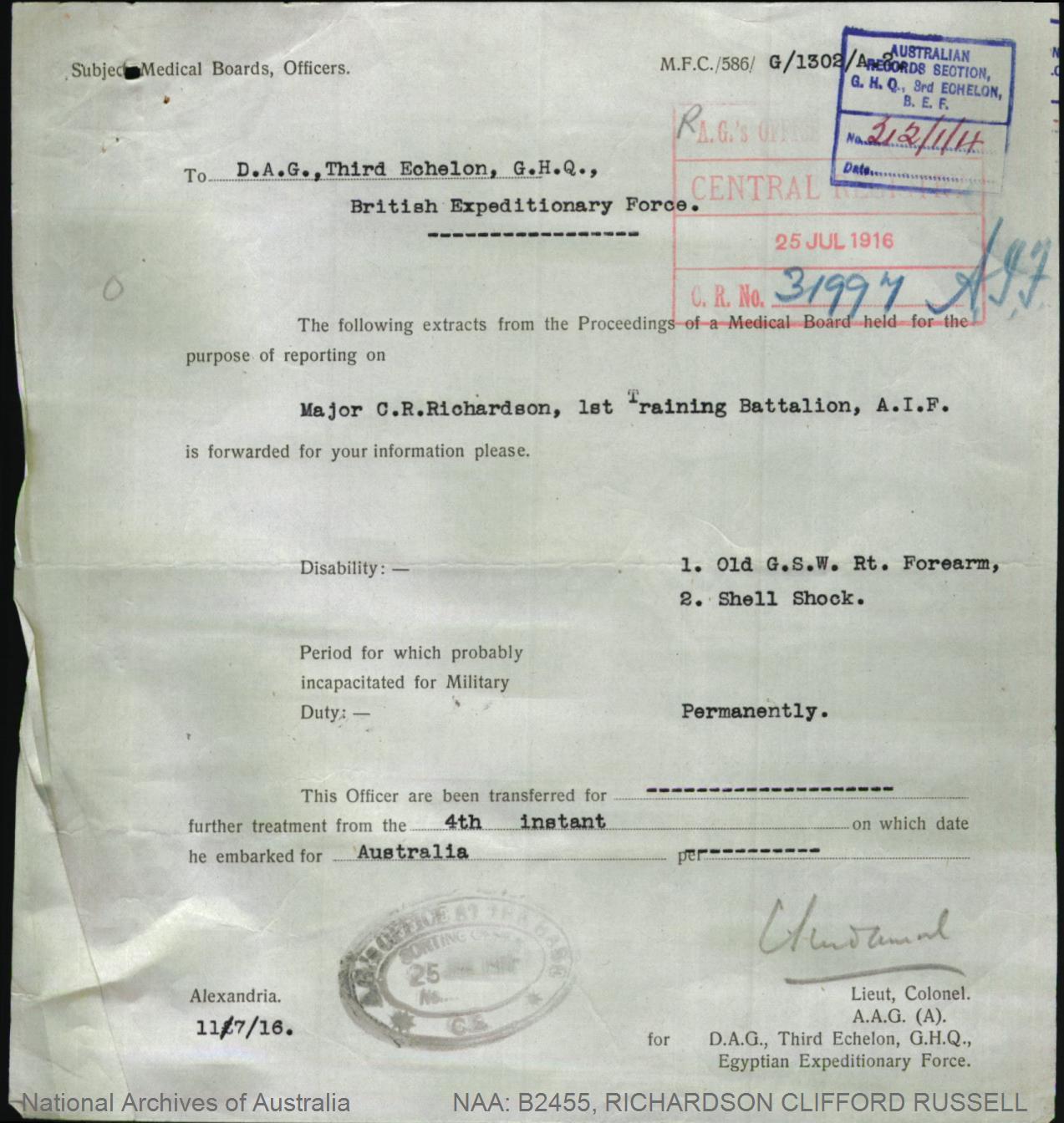
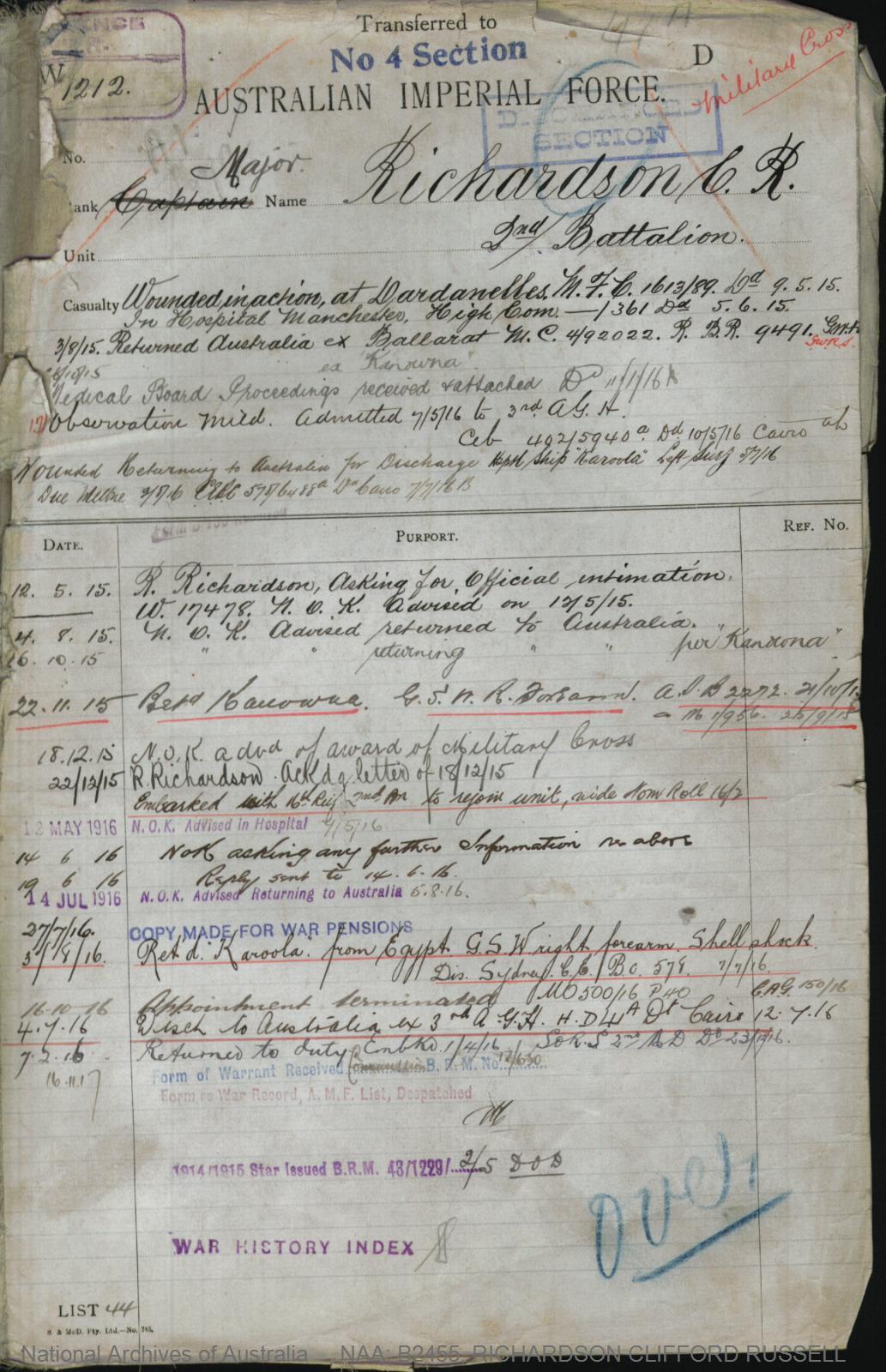
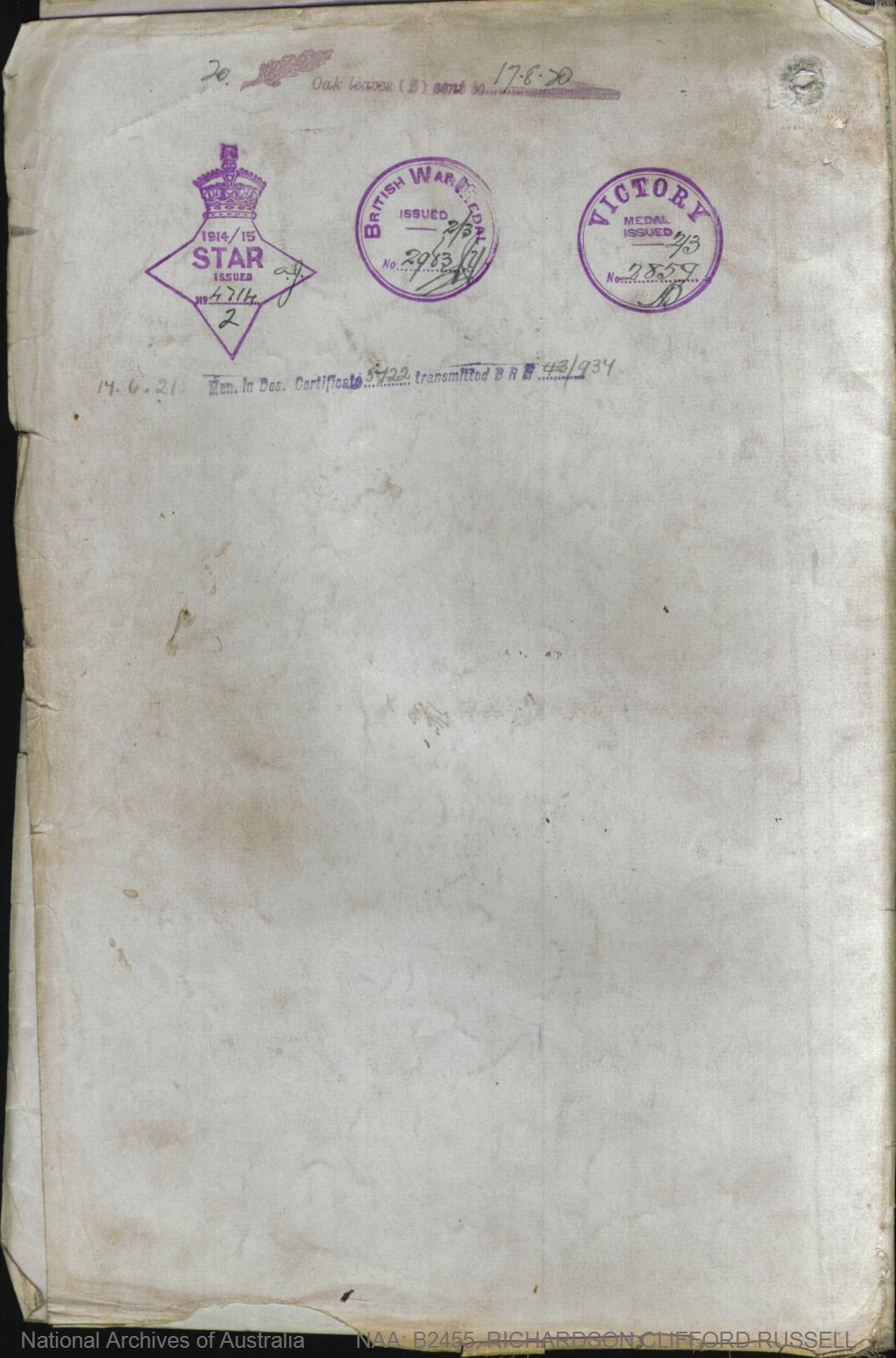


























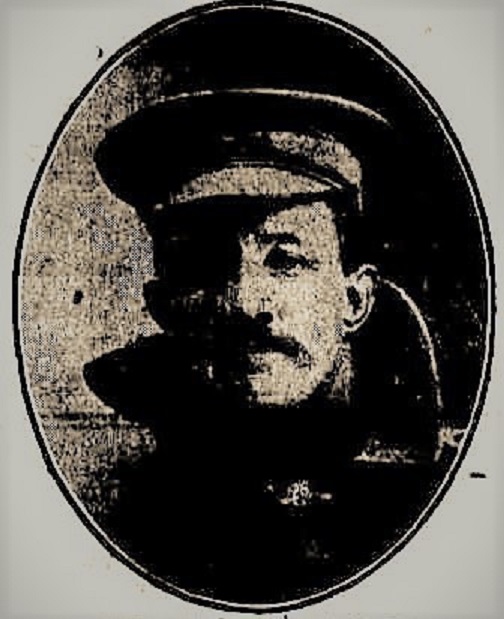


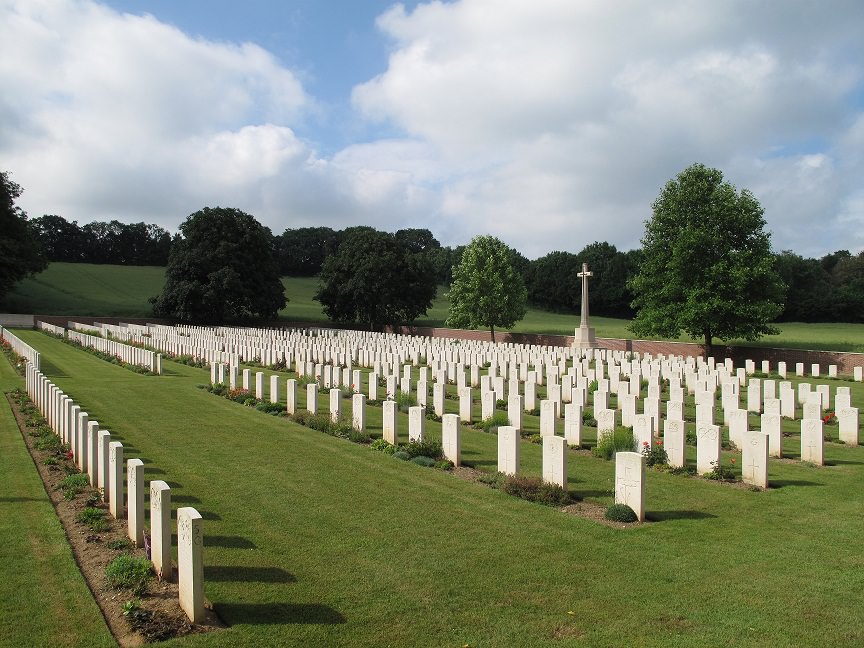
 S.S. BARUNGA
S.S. BARUNGA 